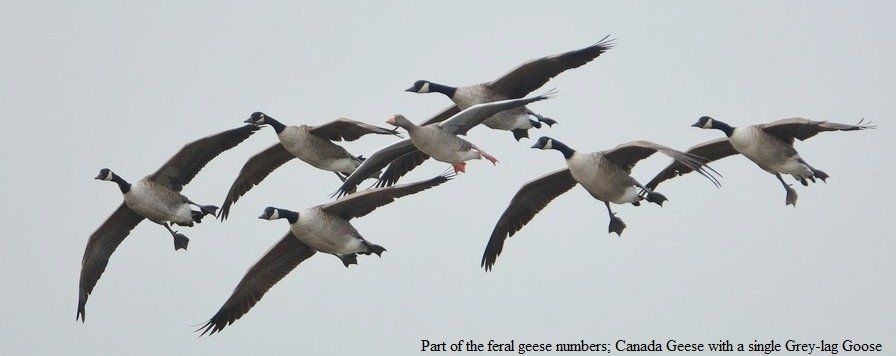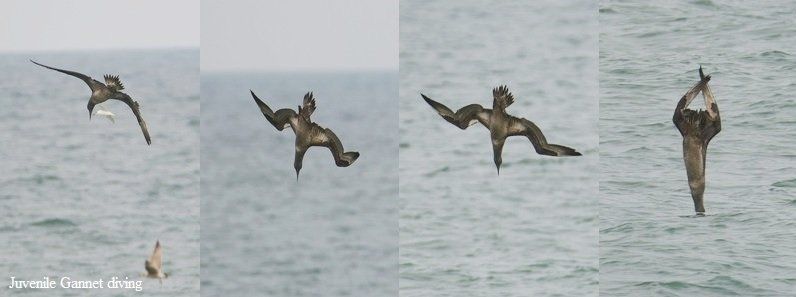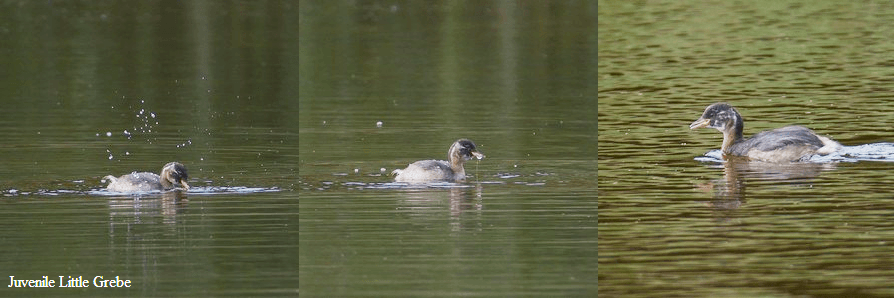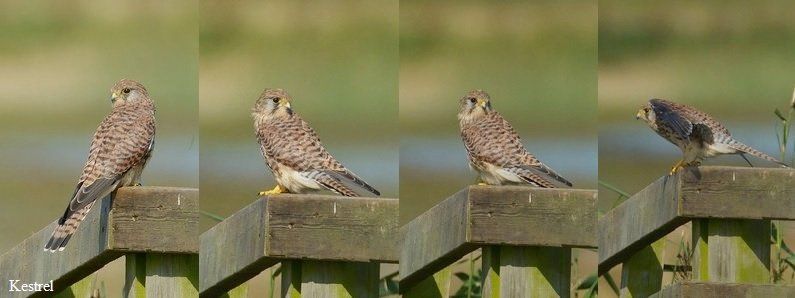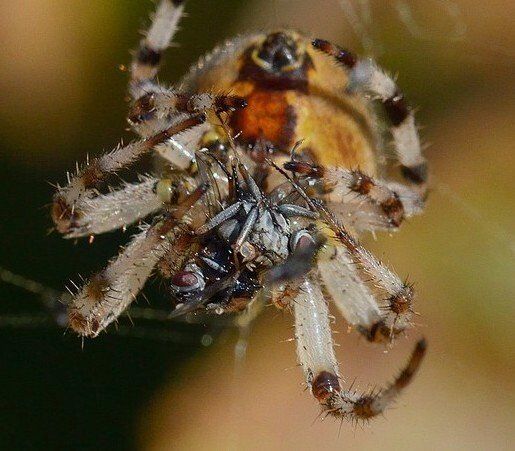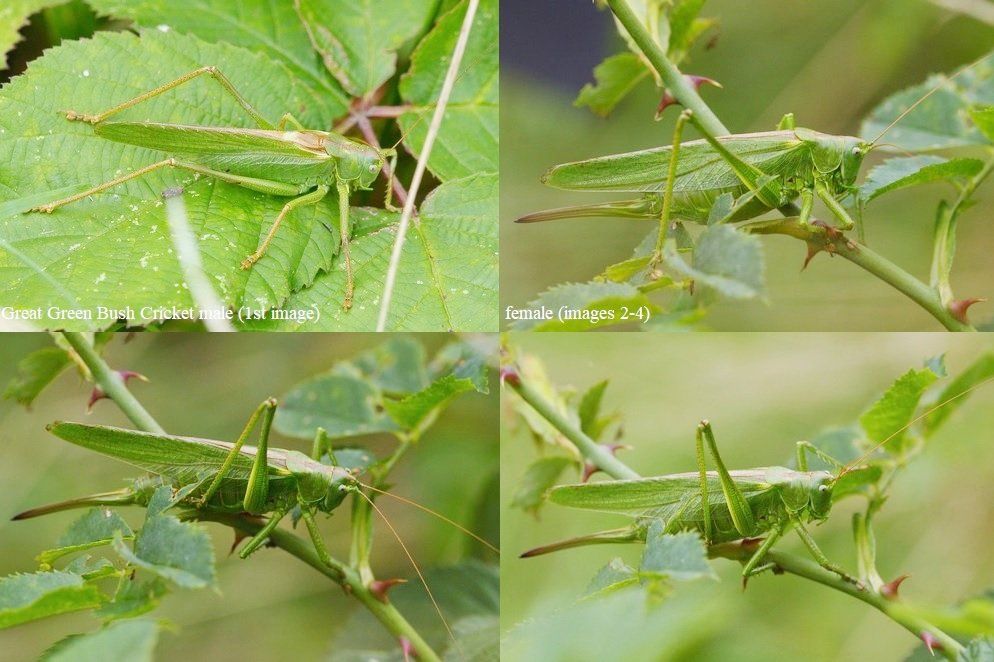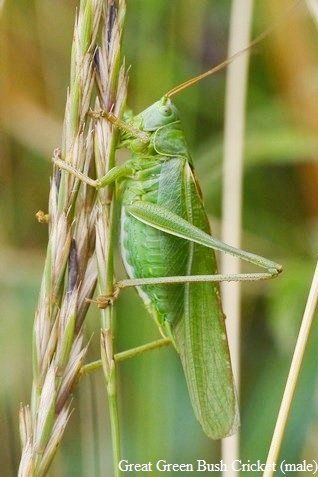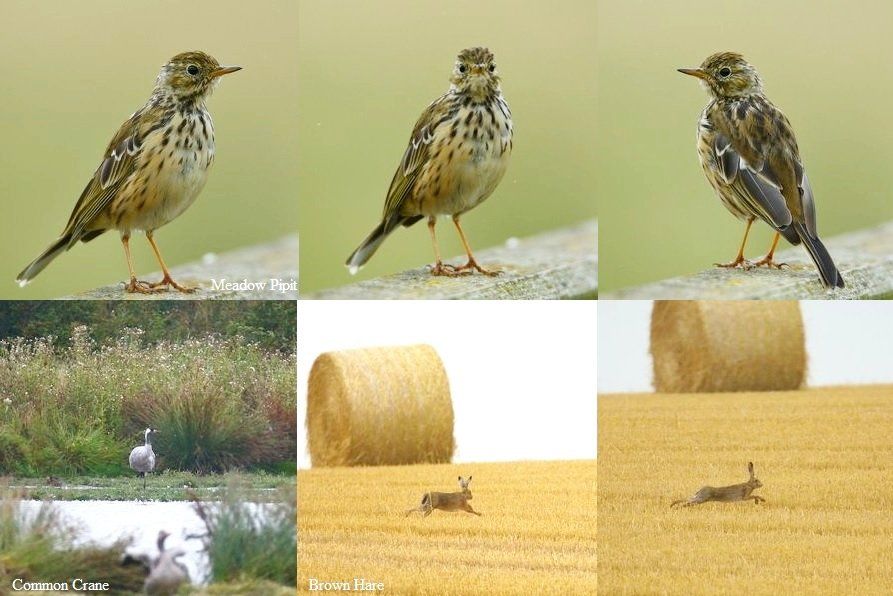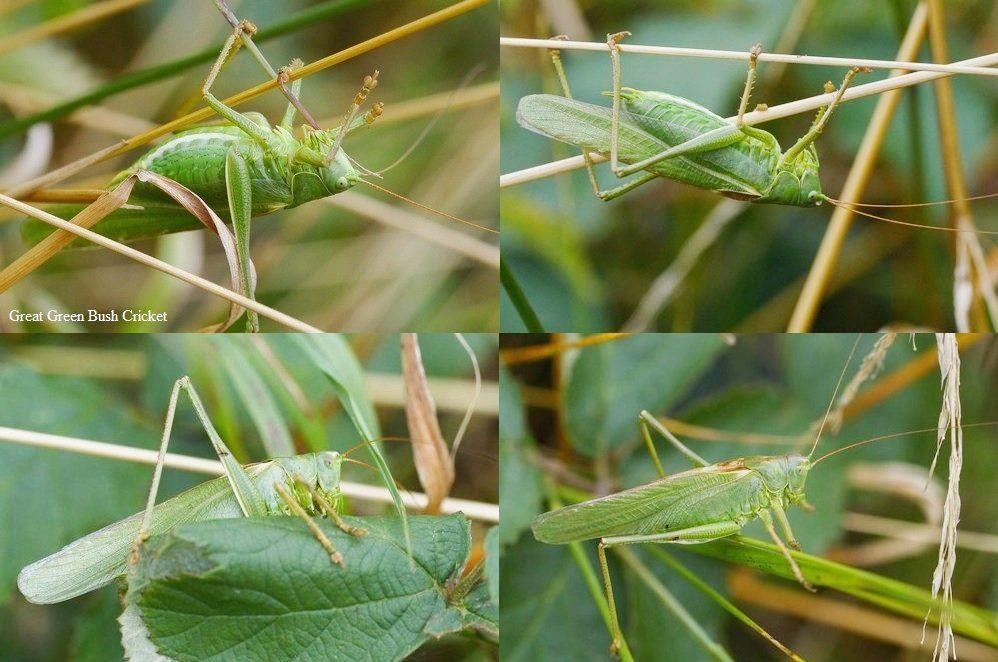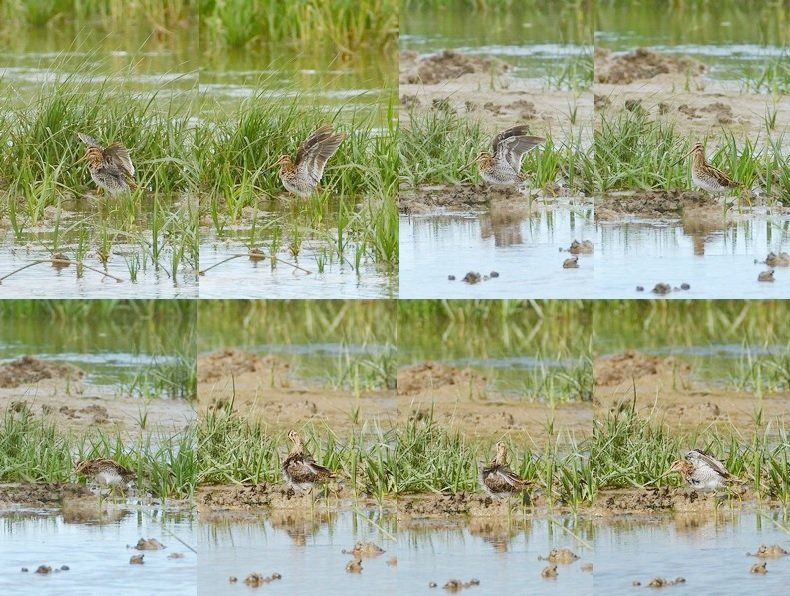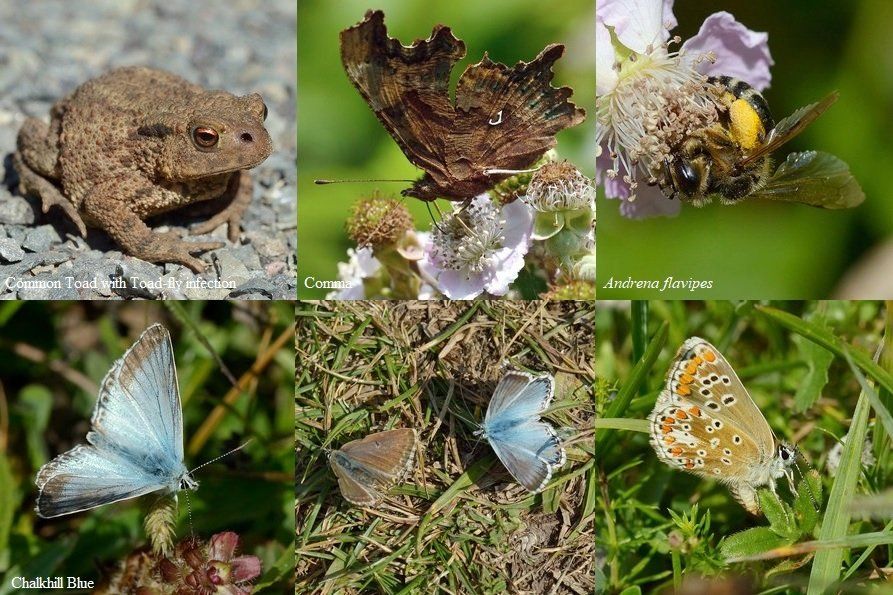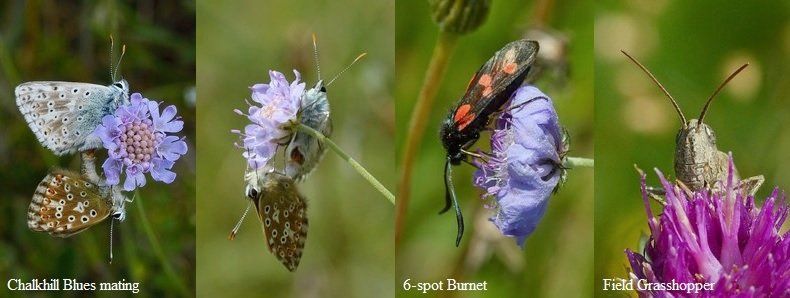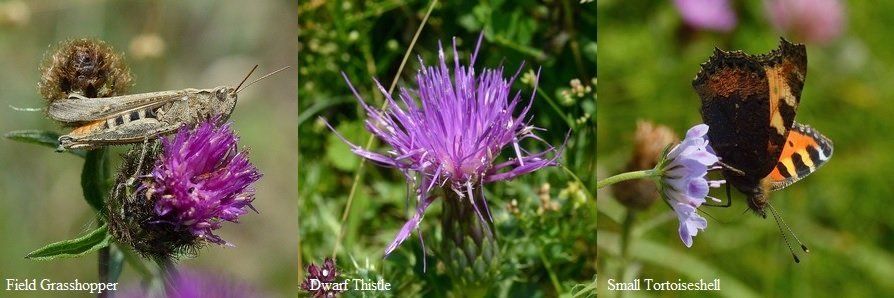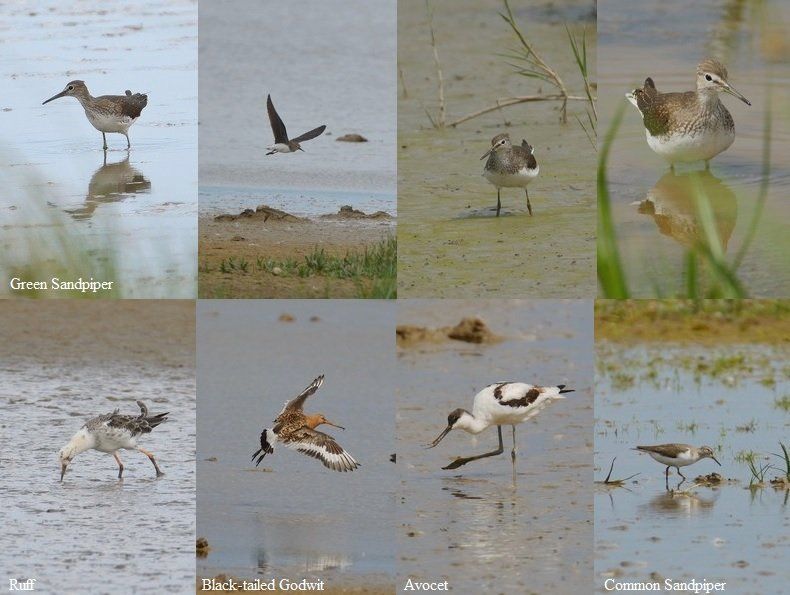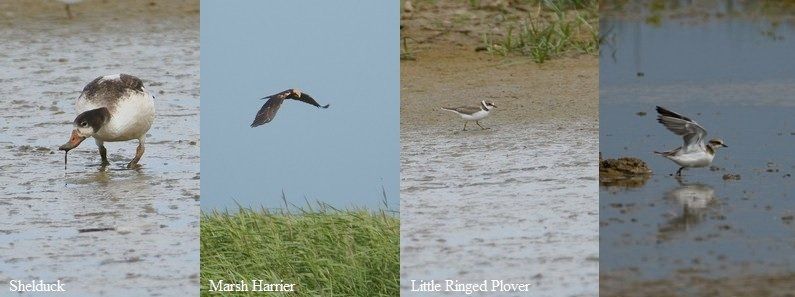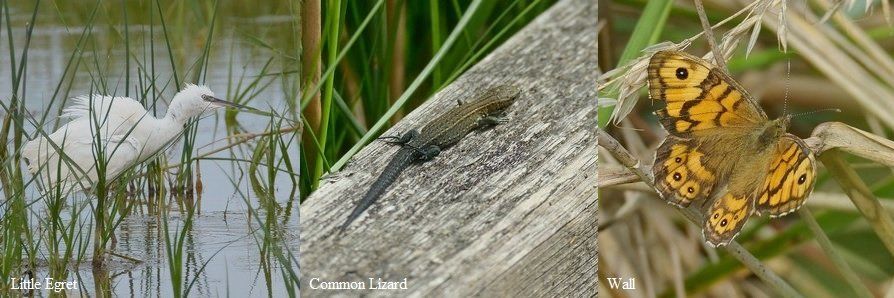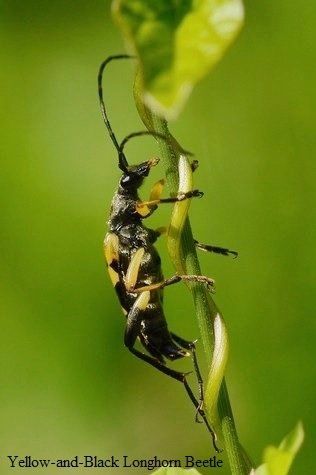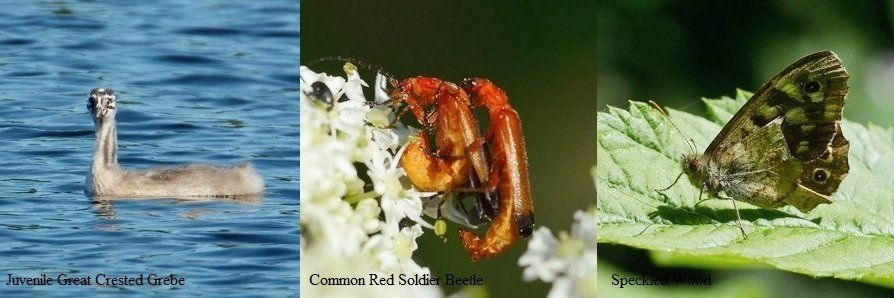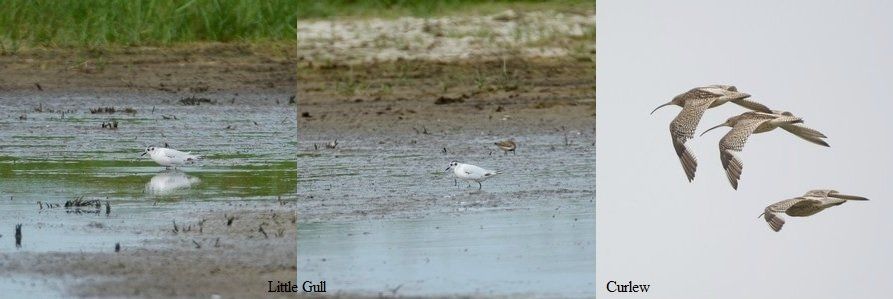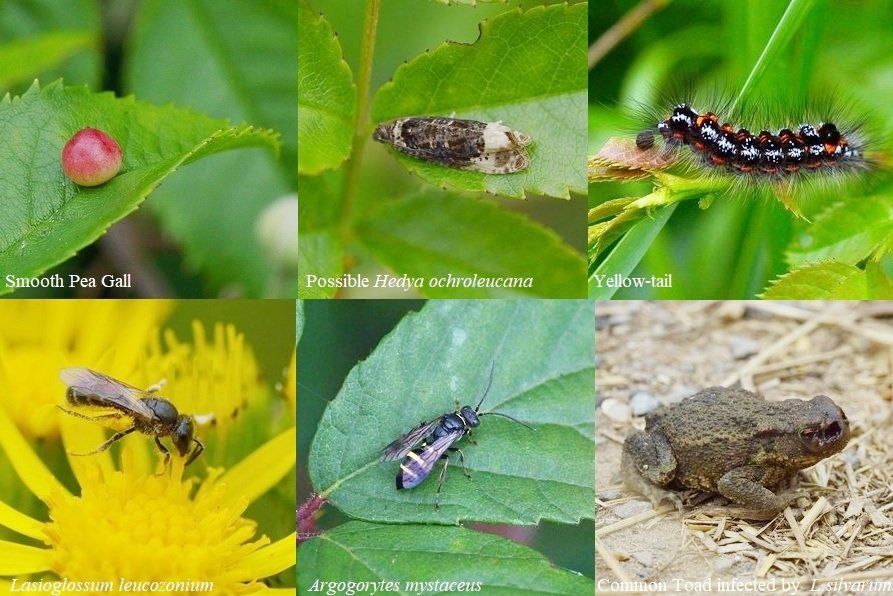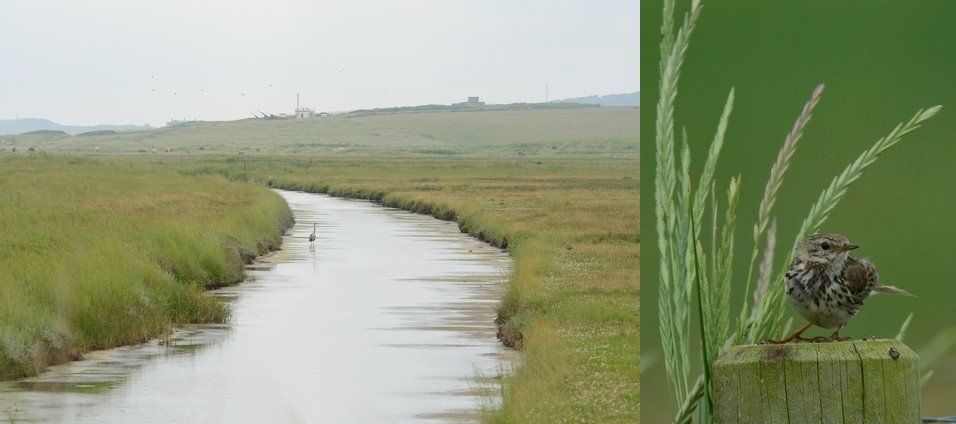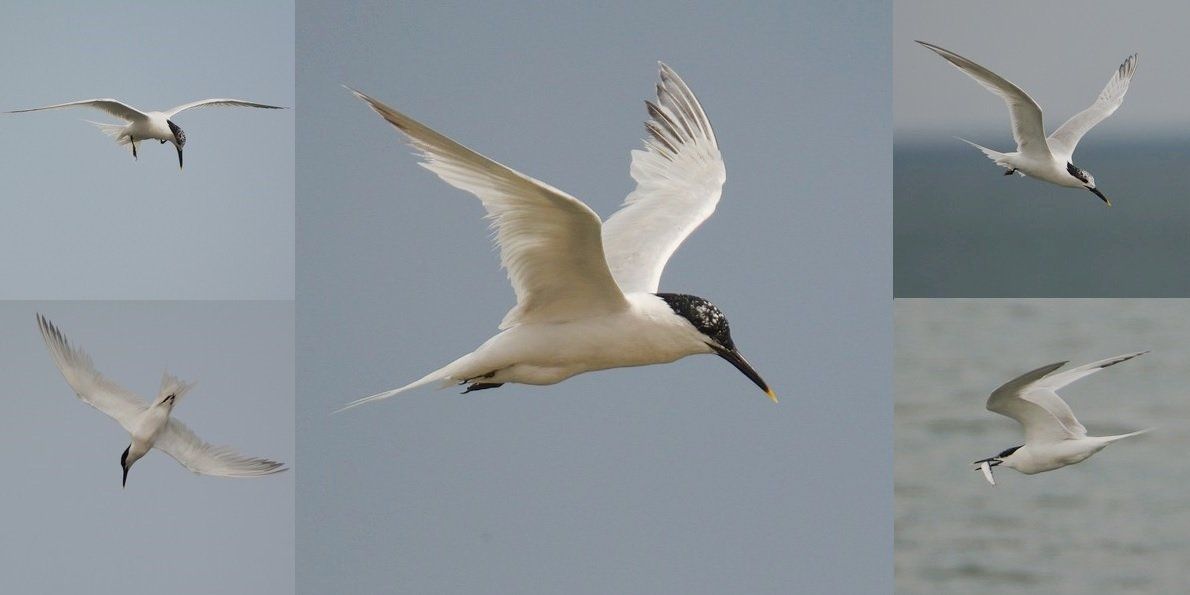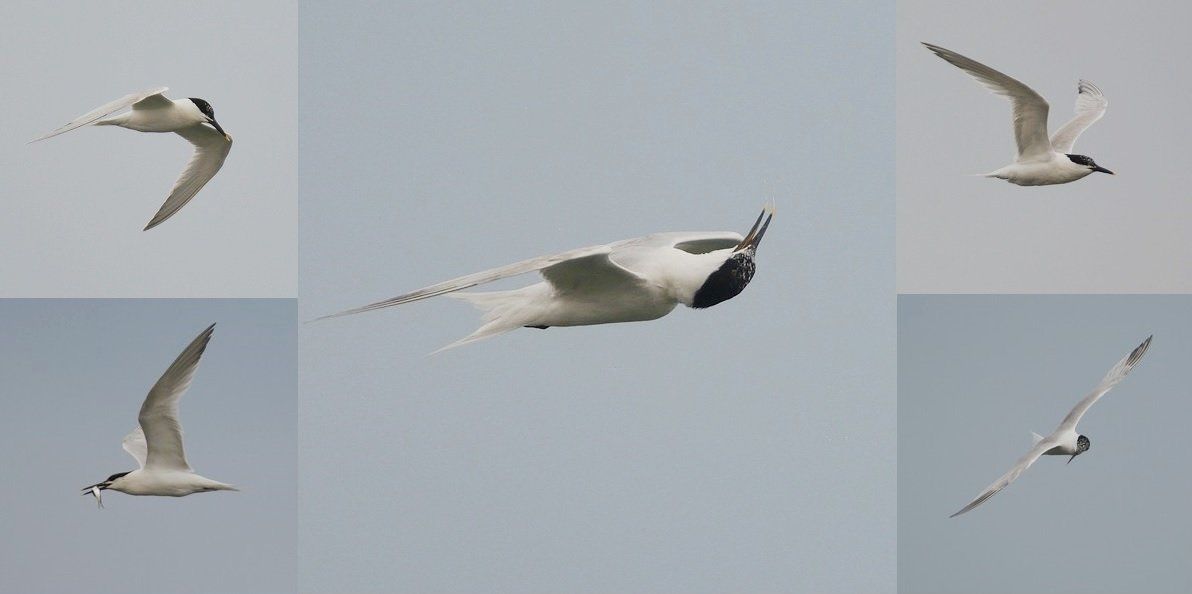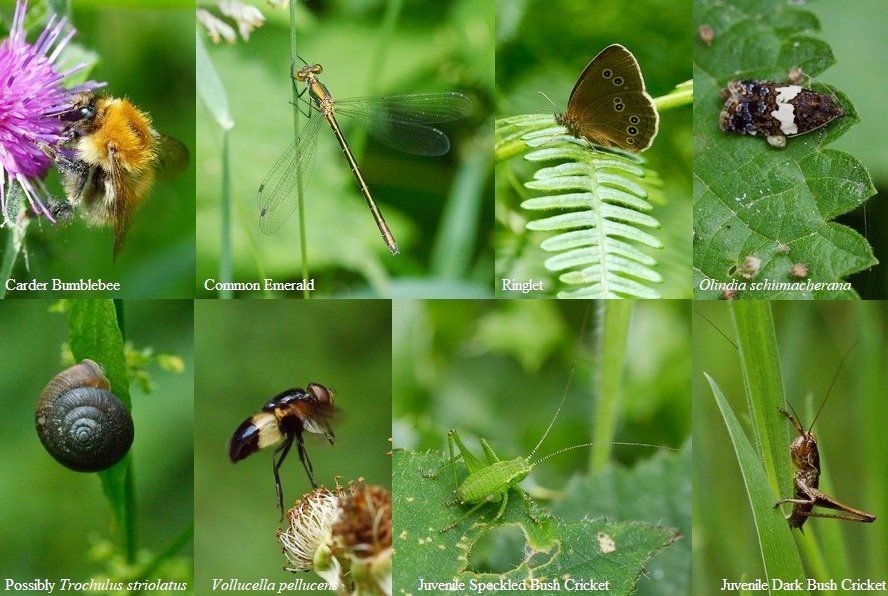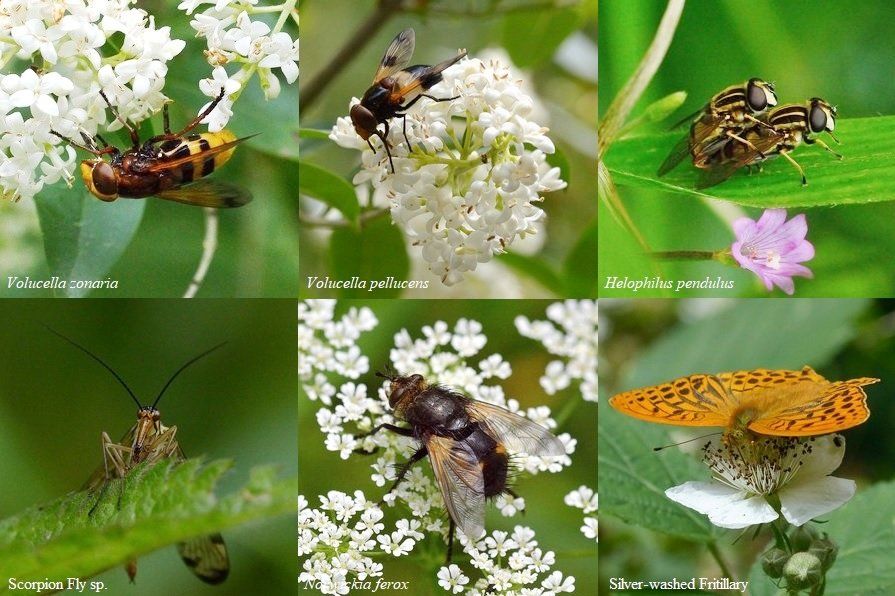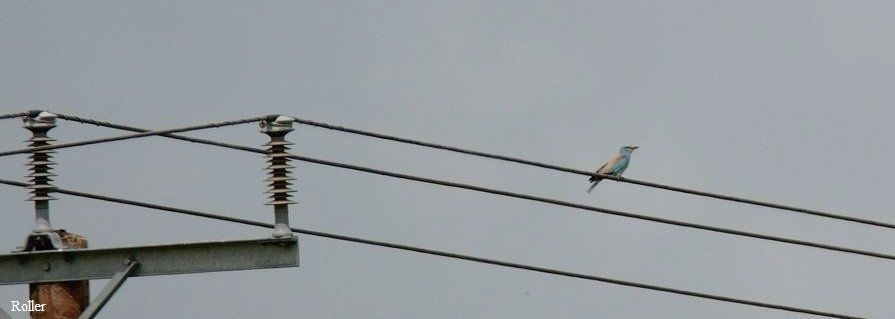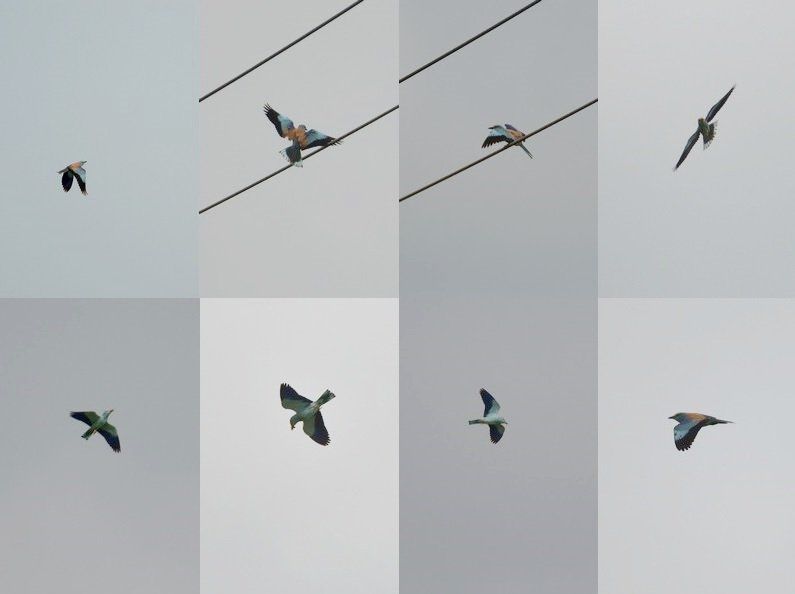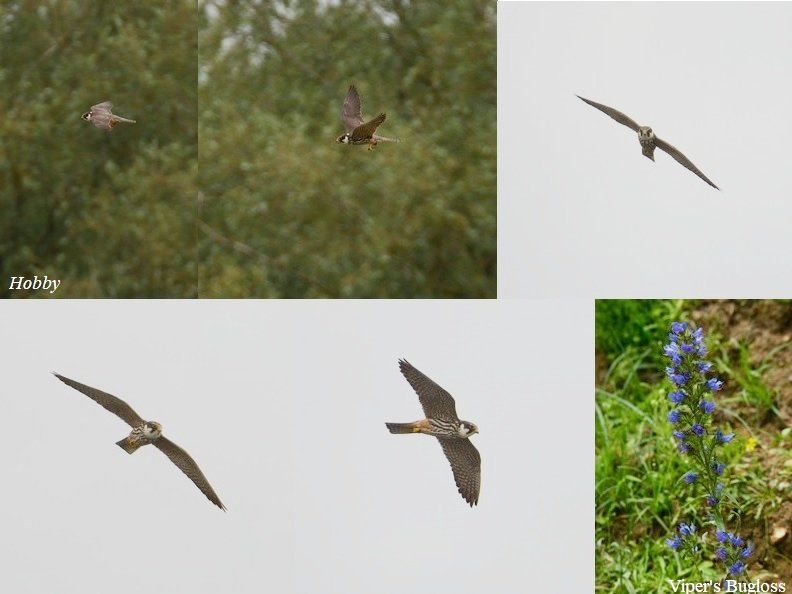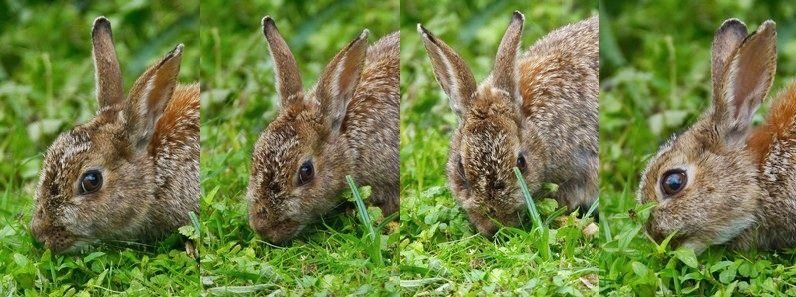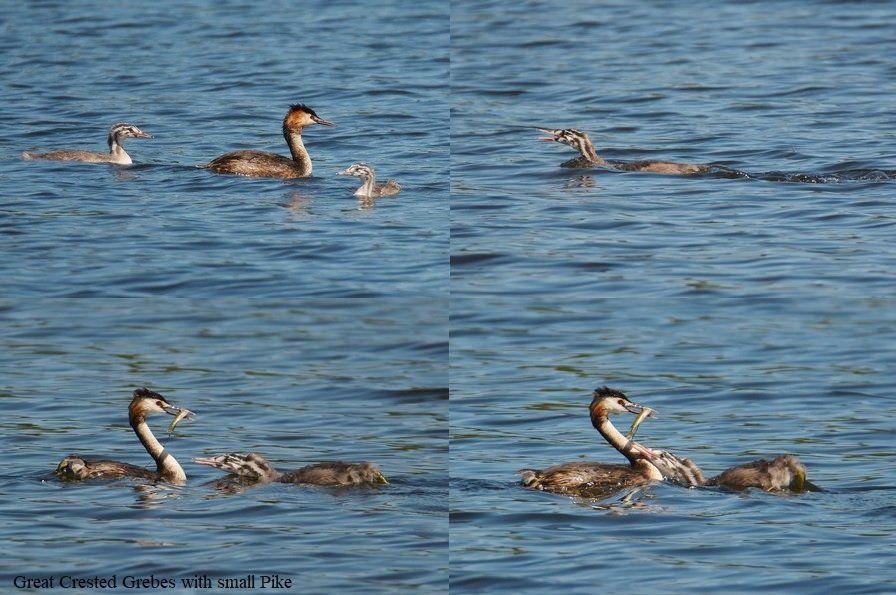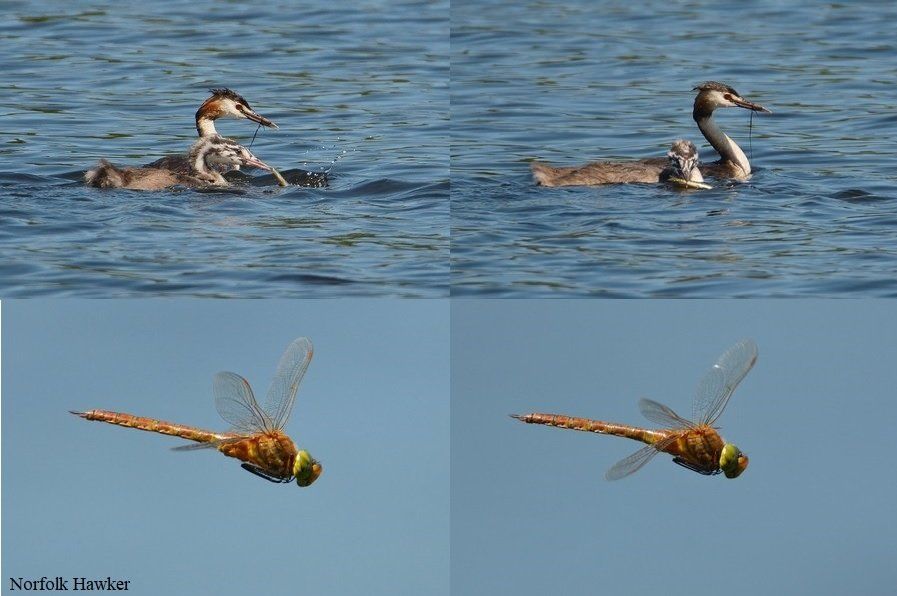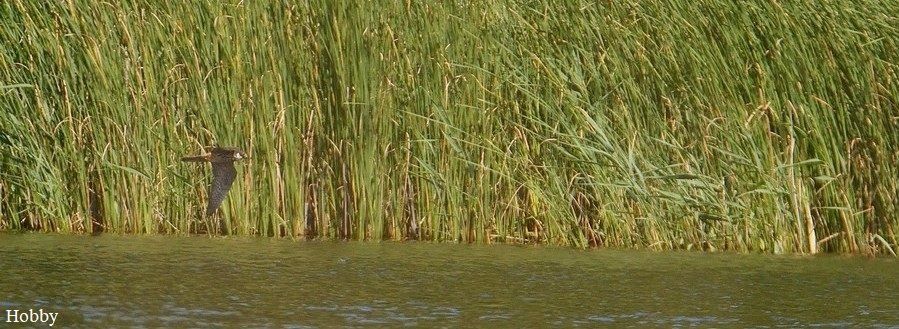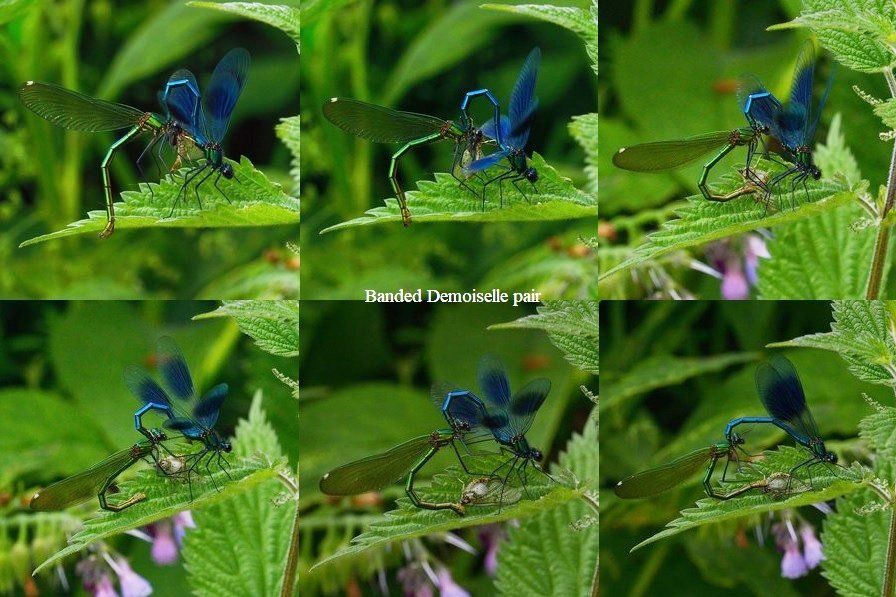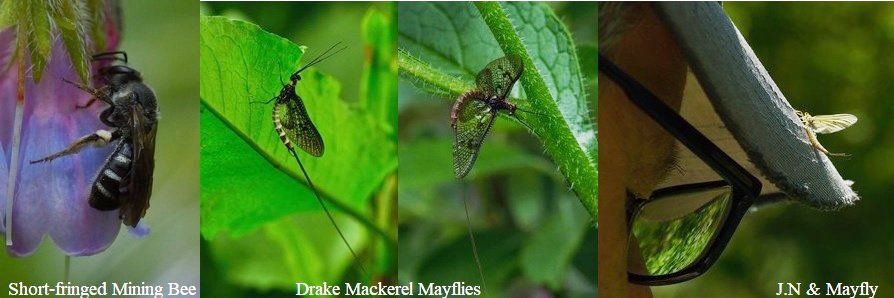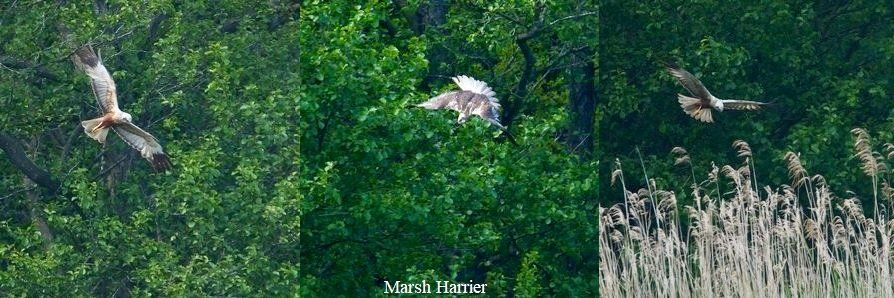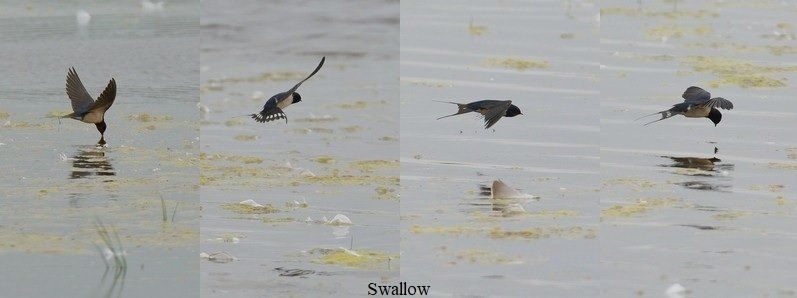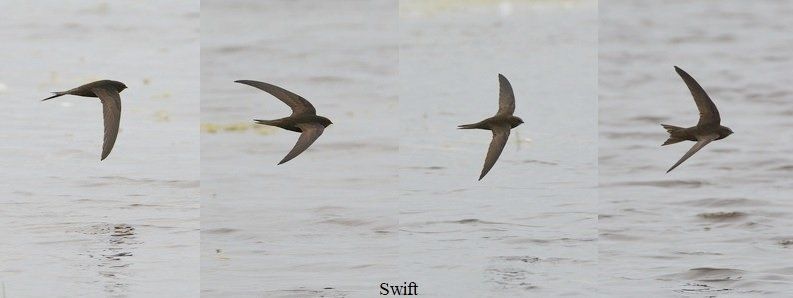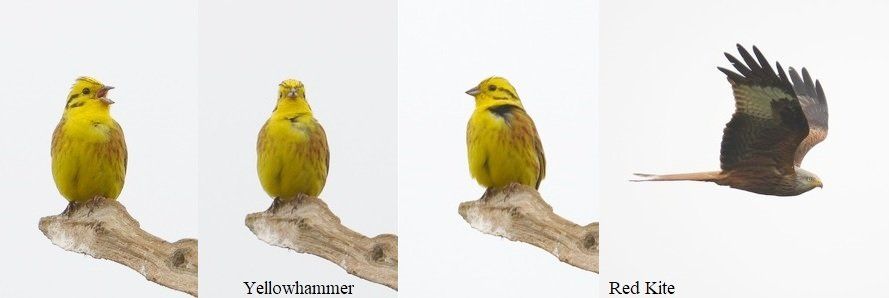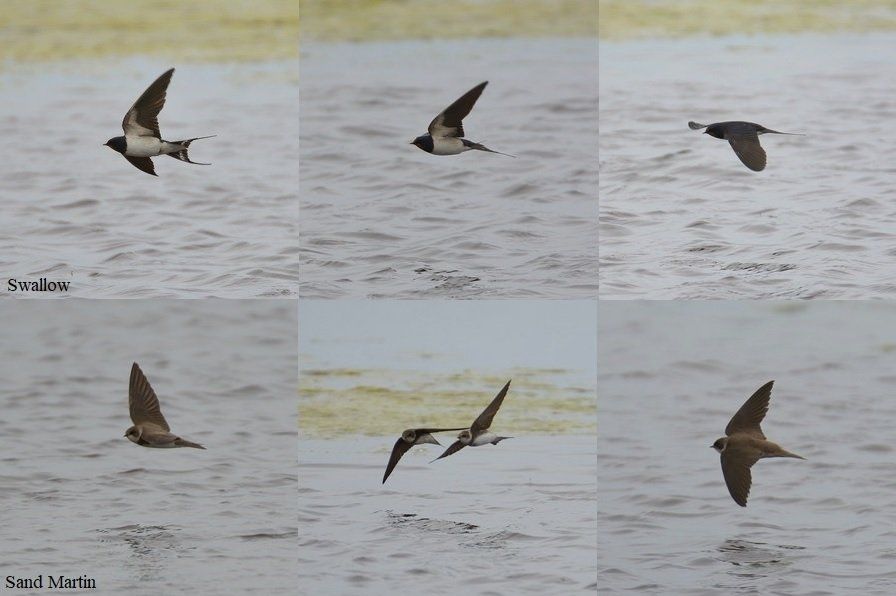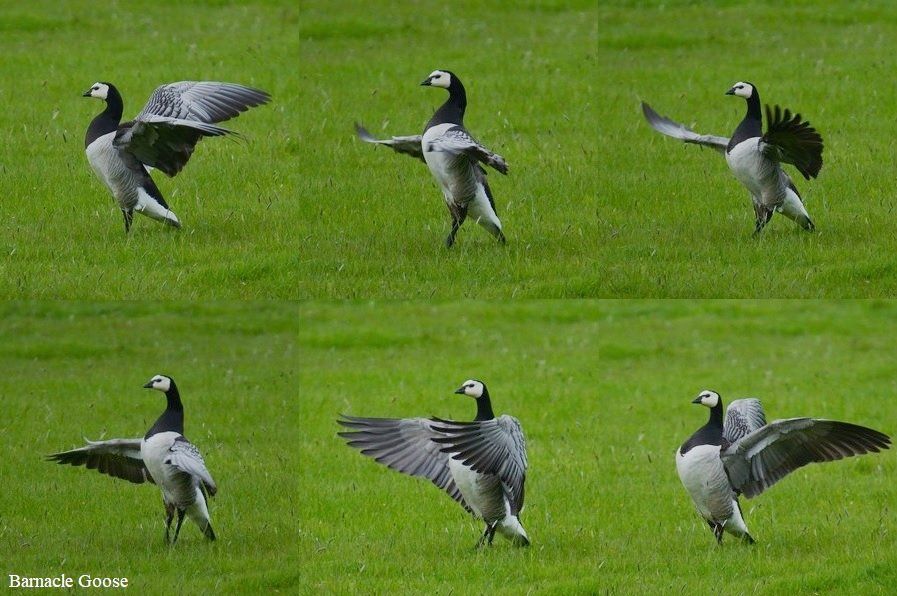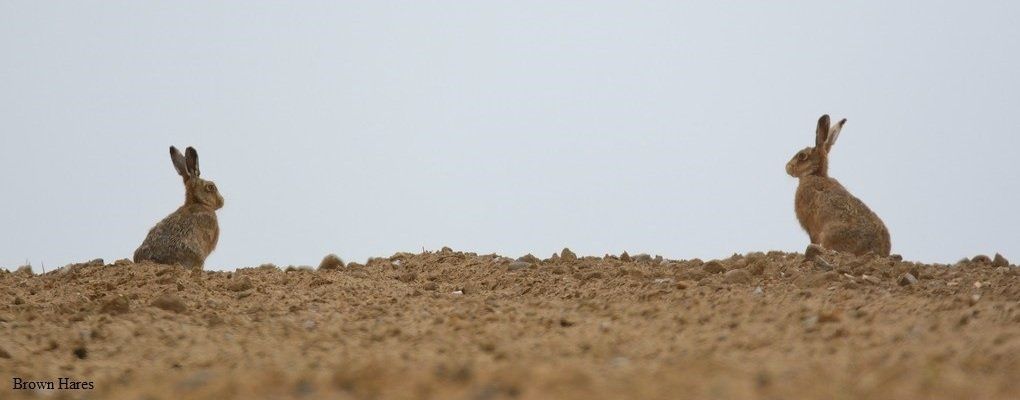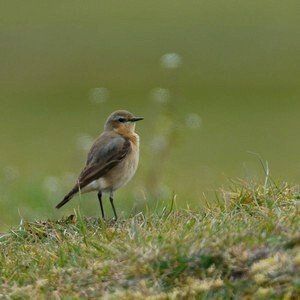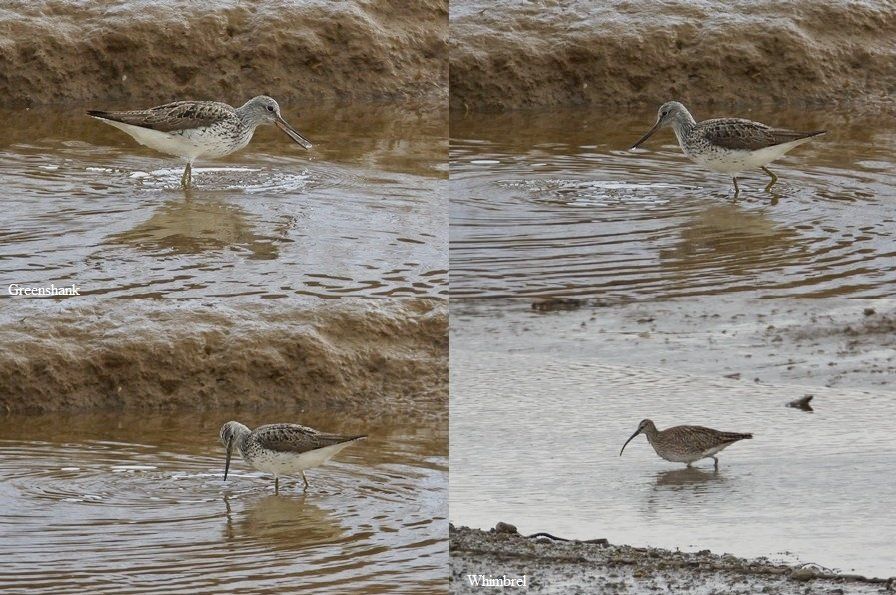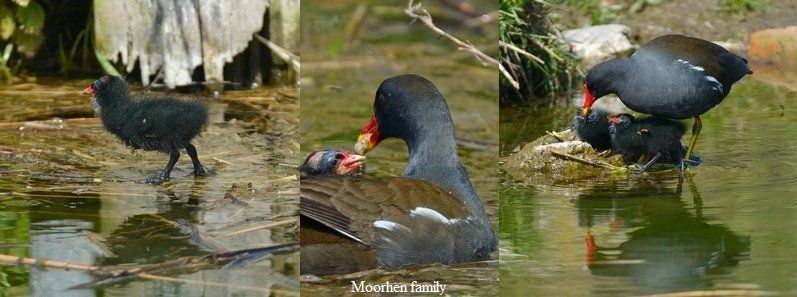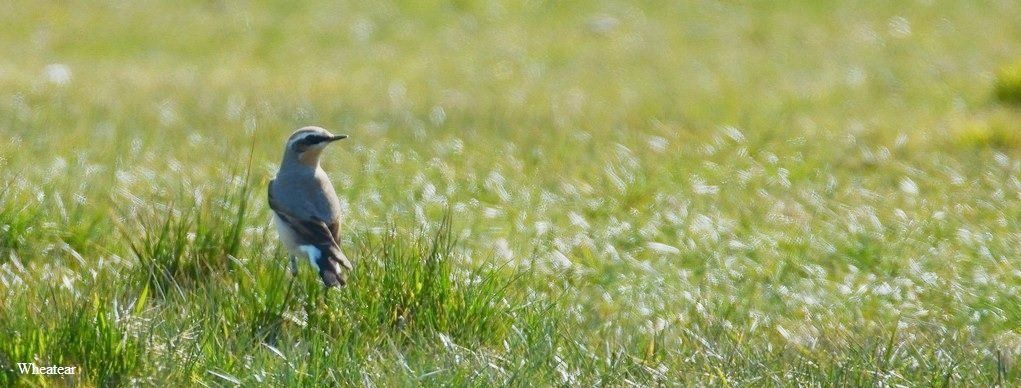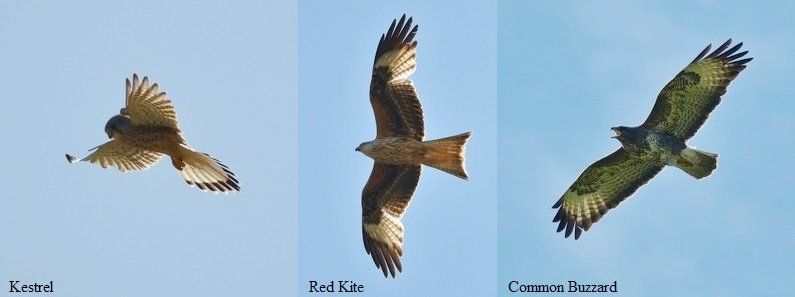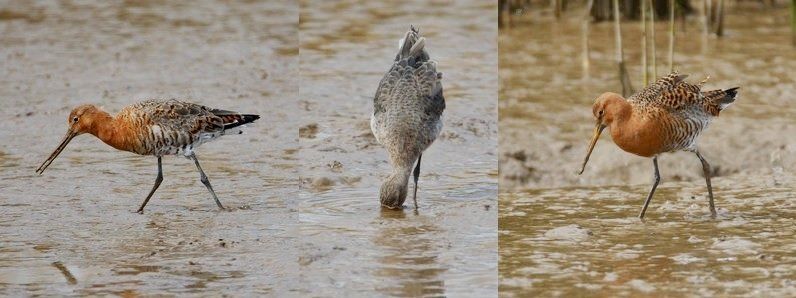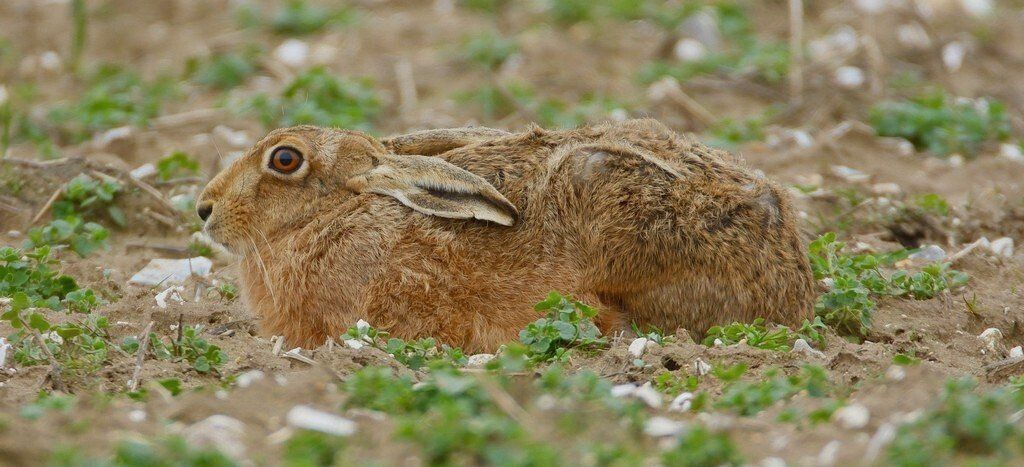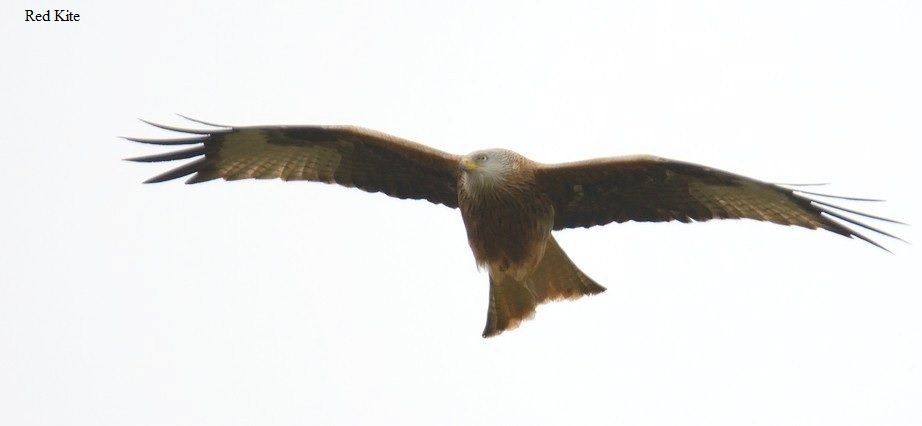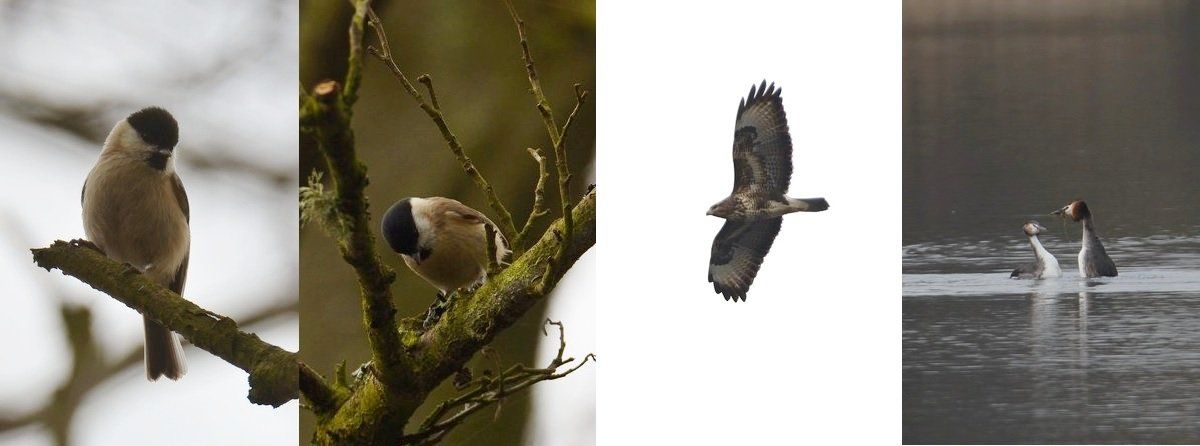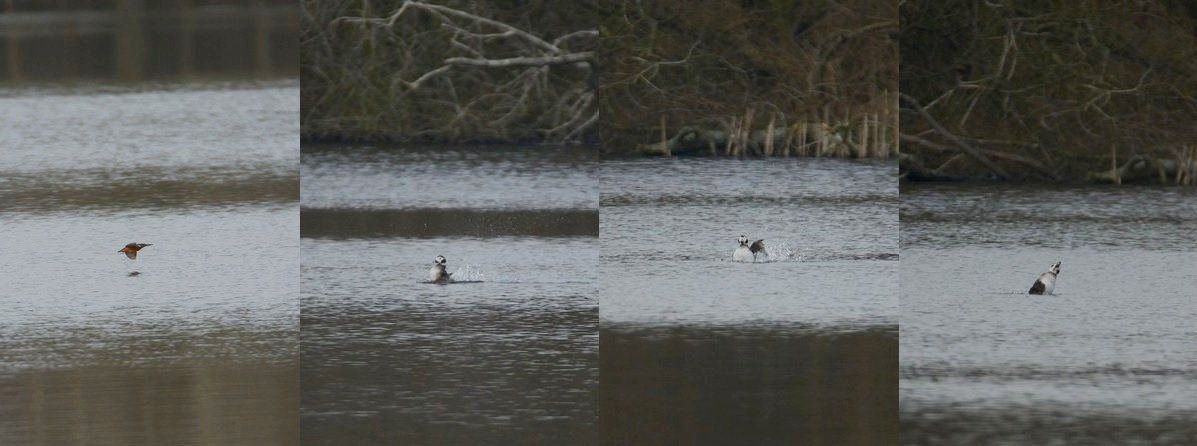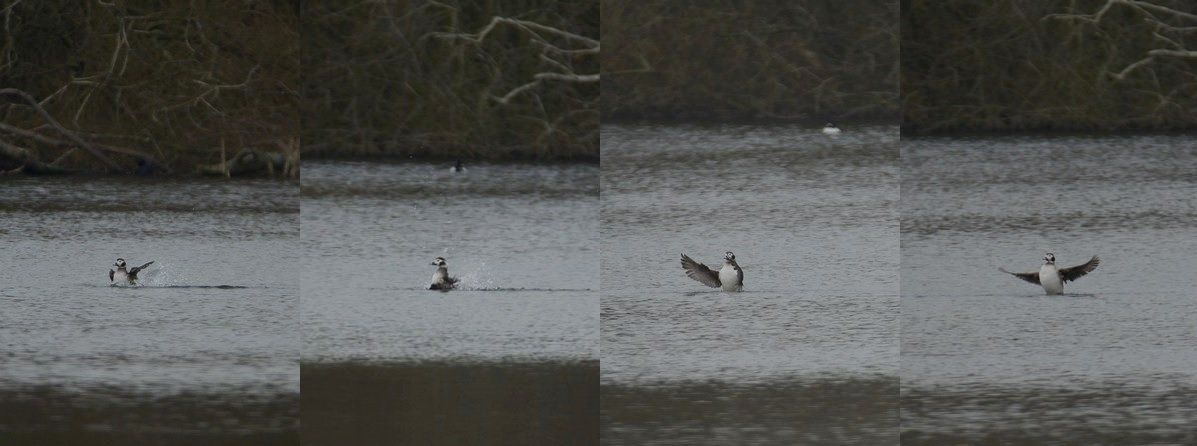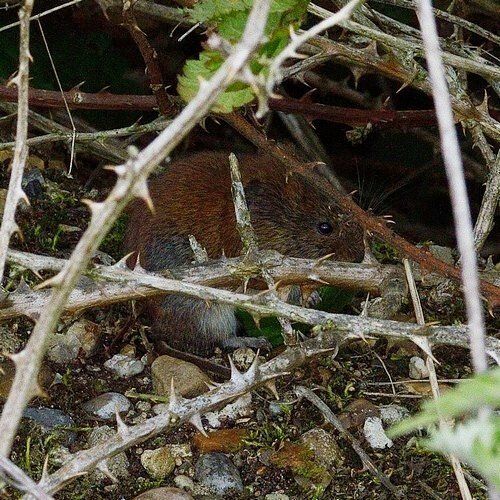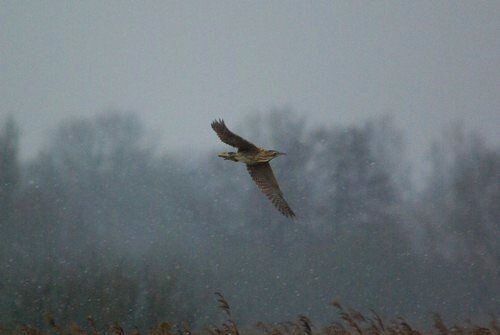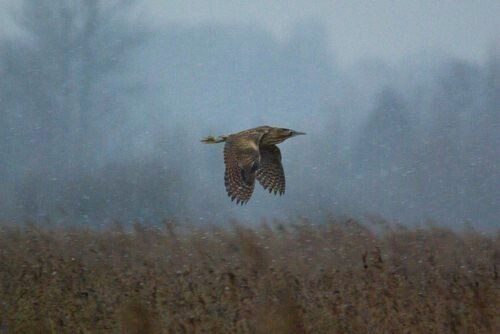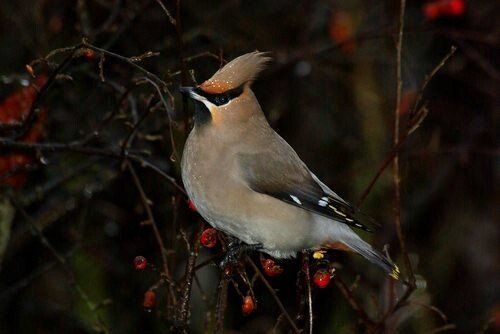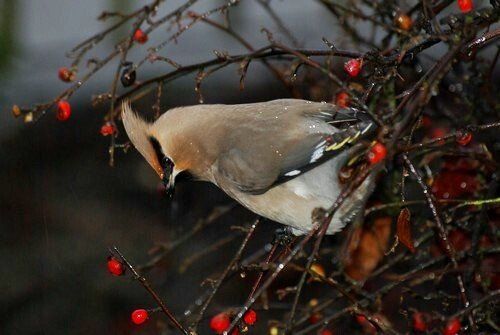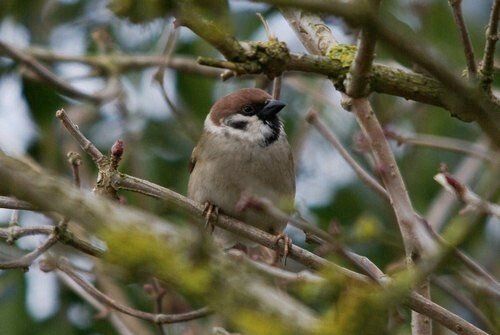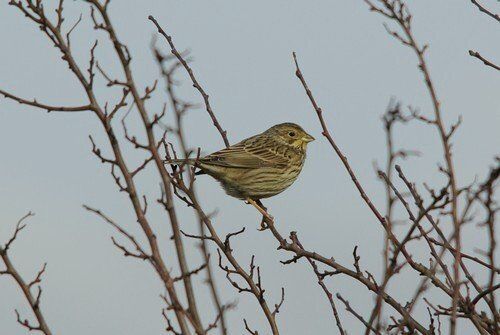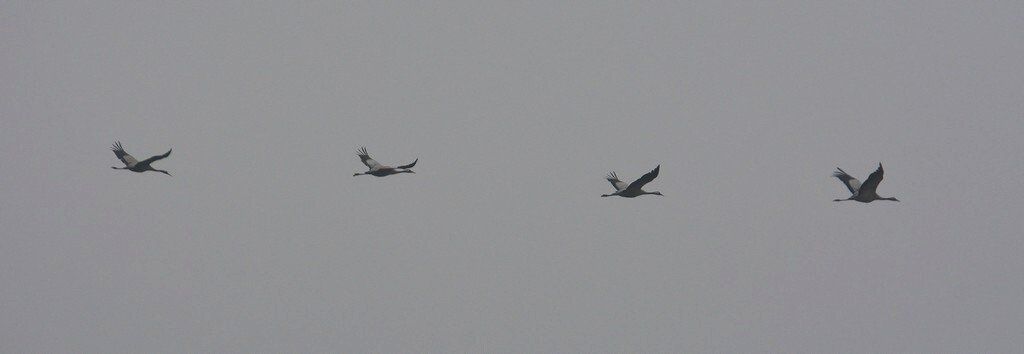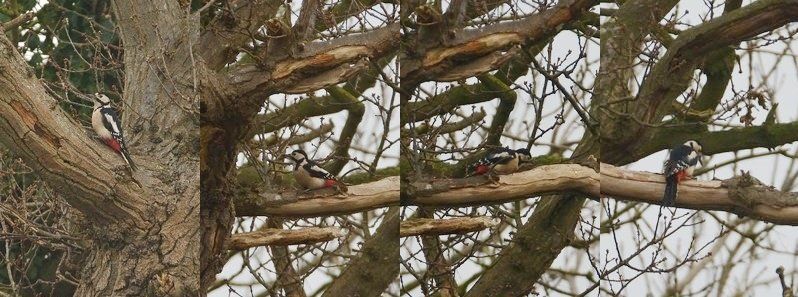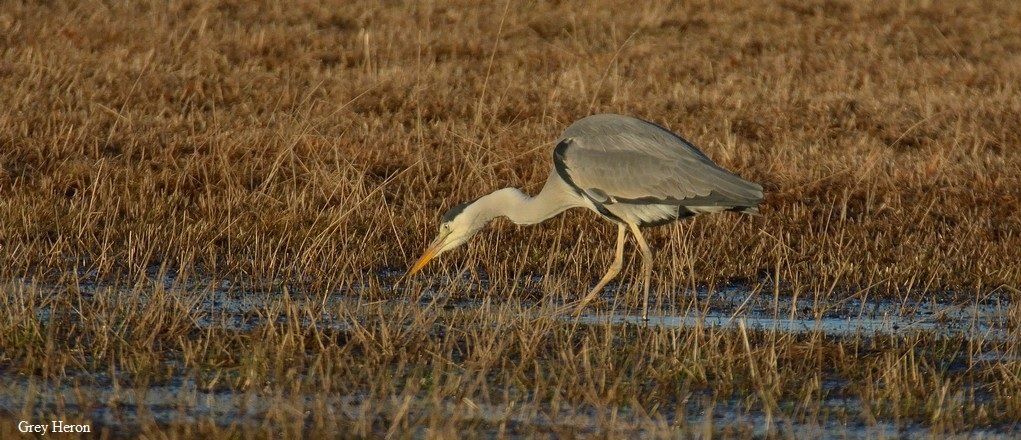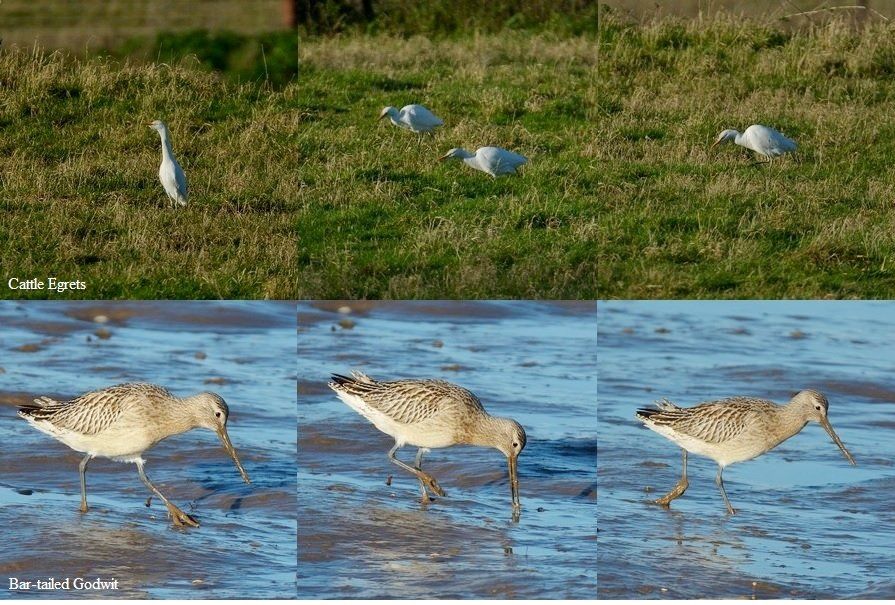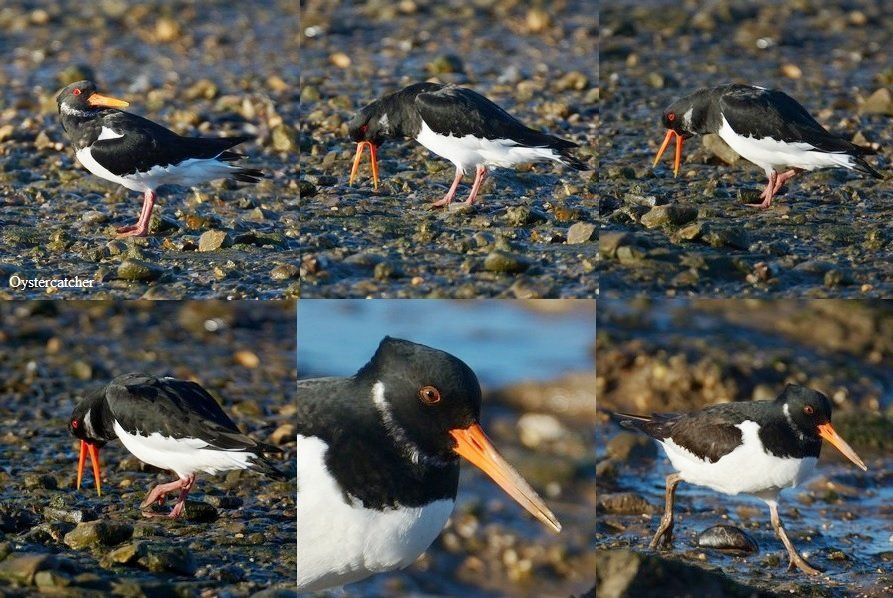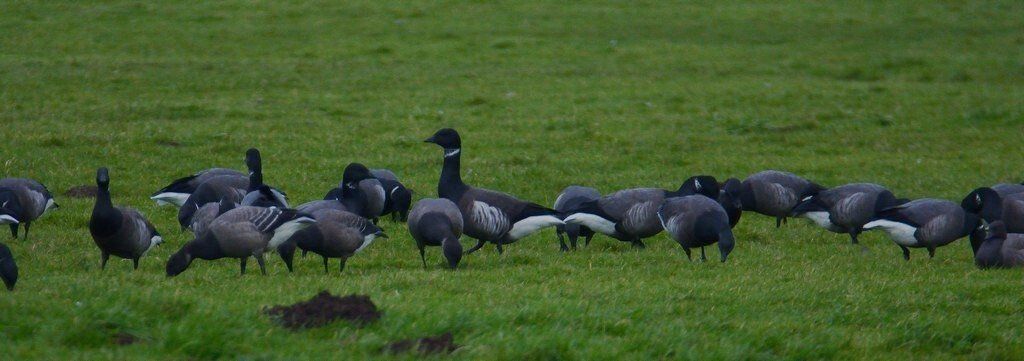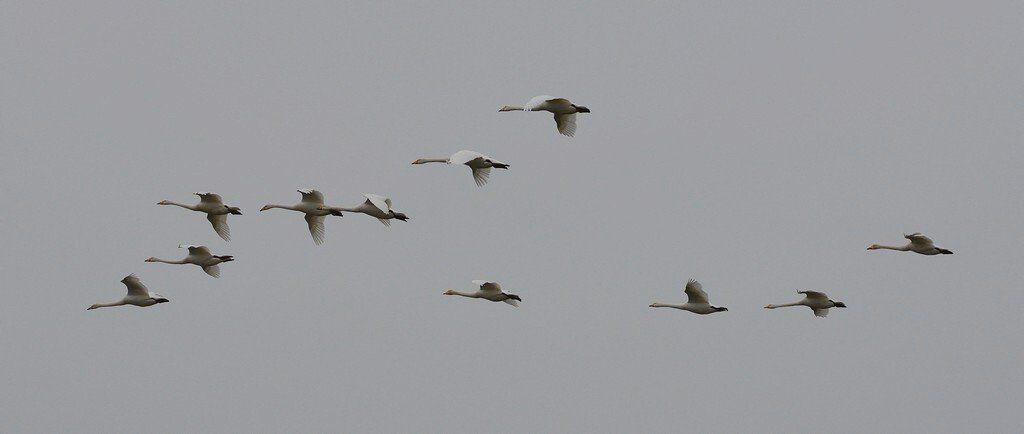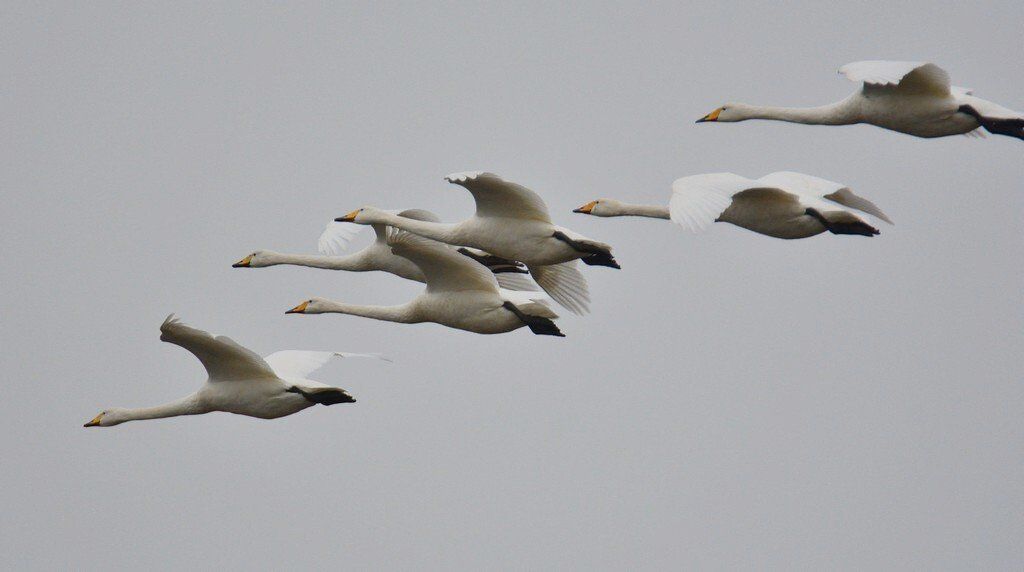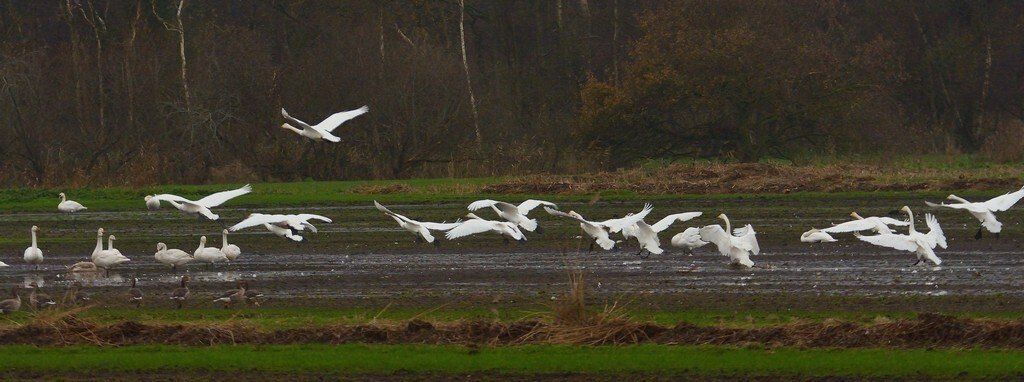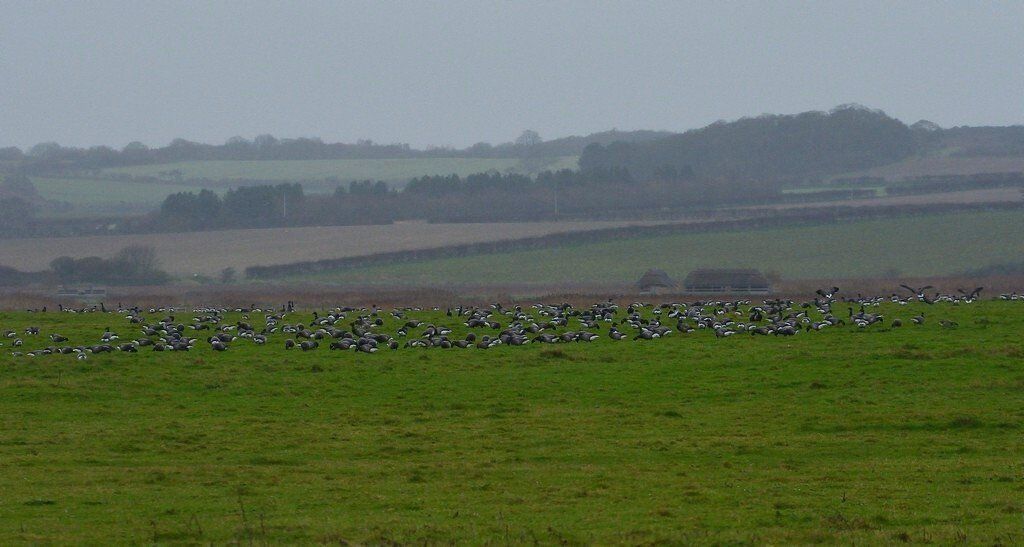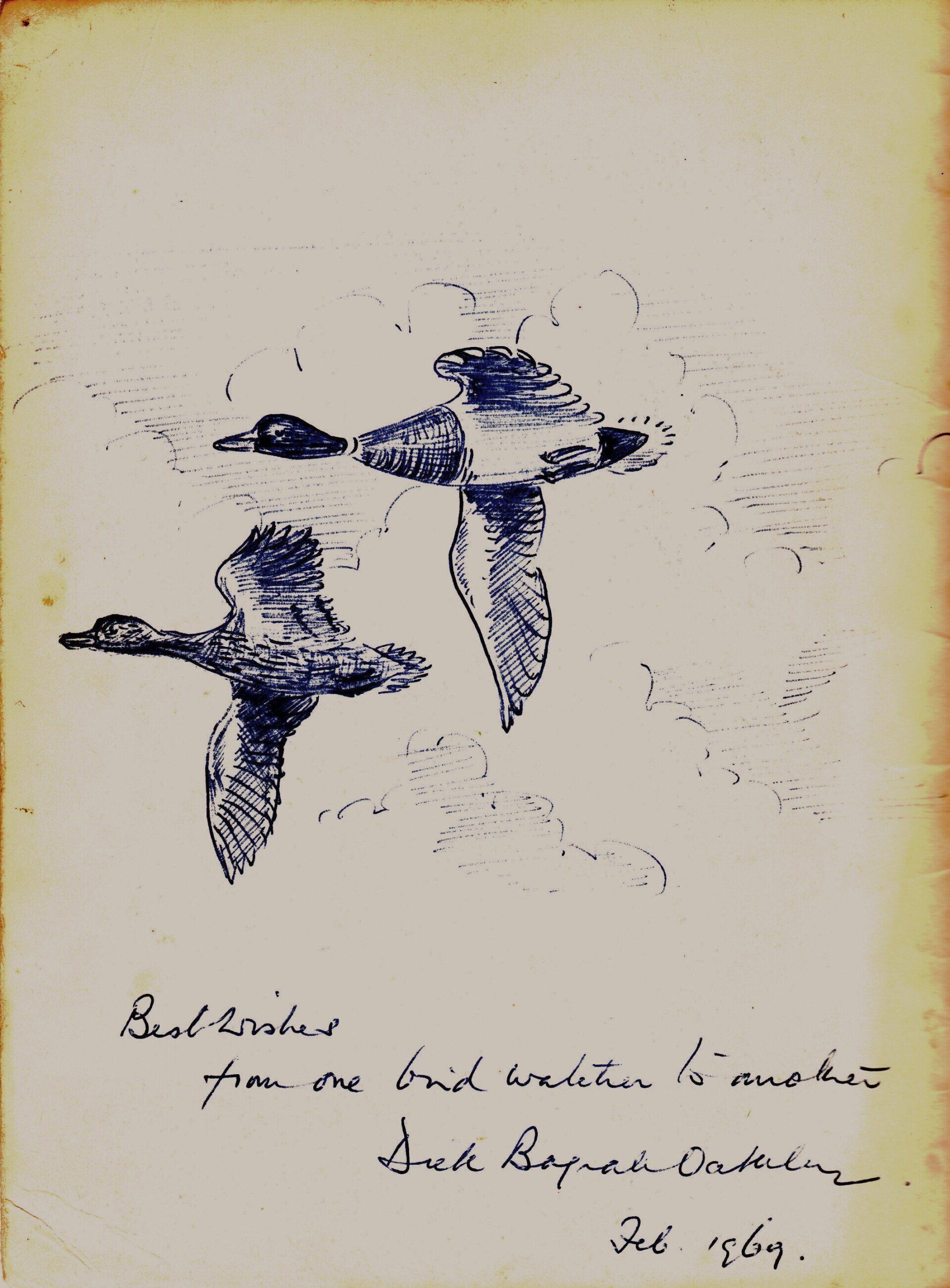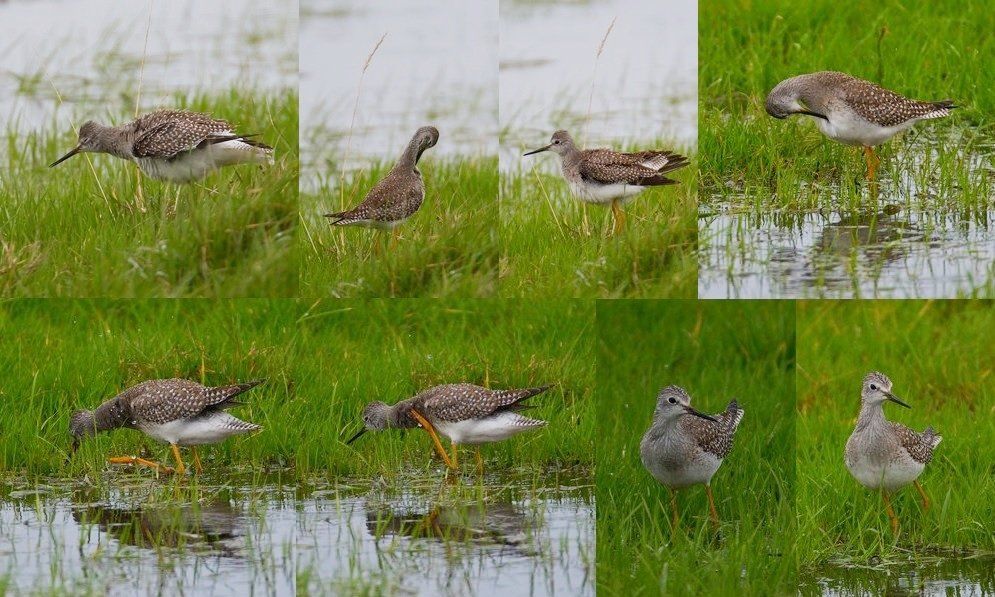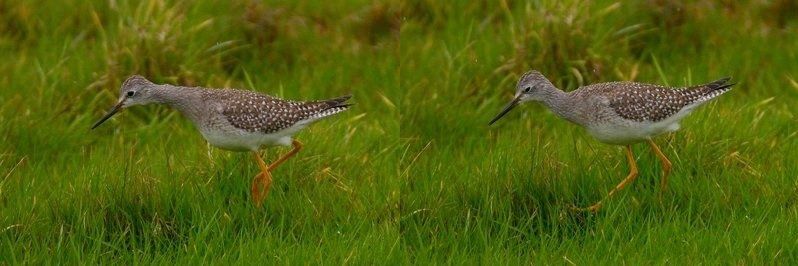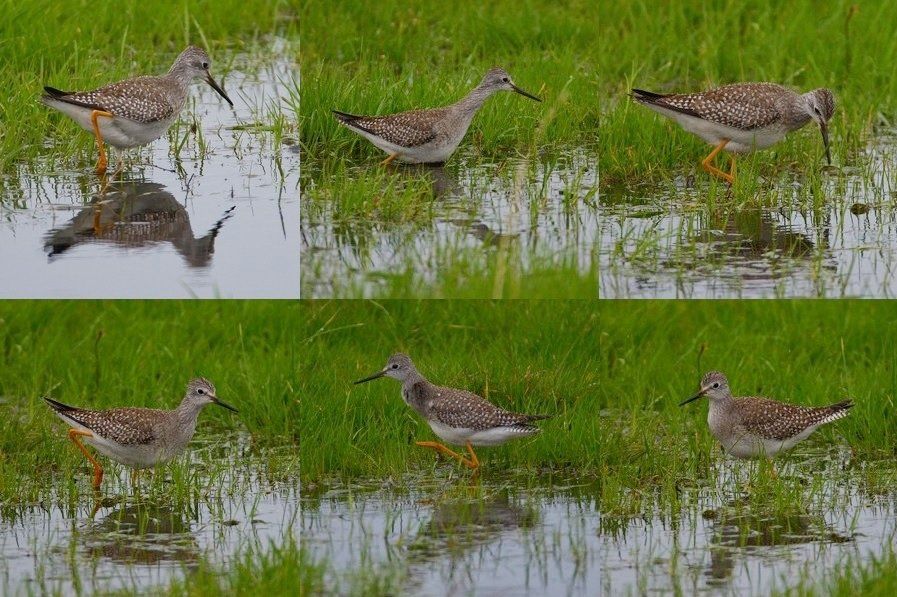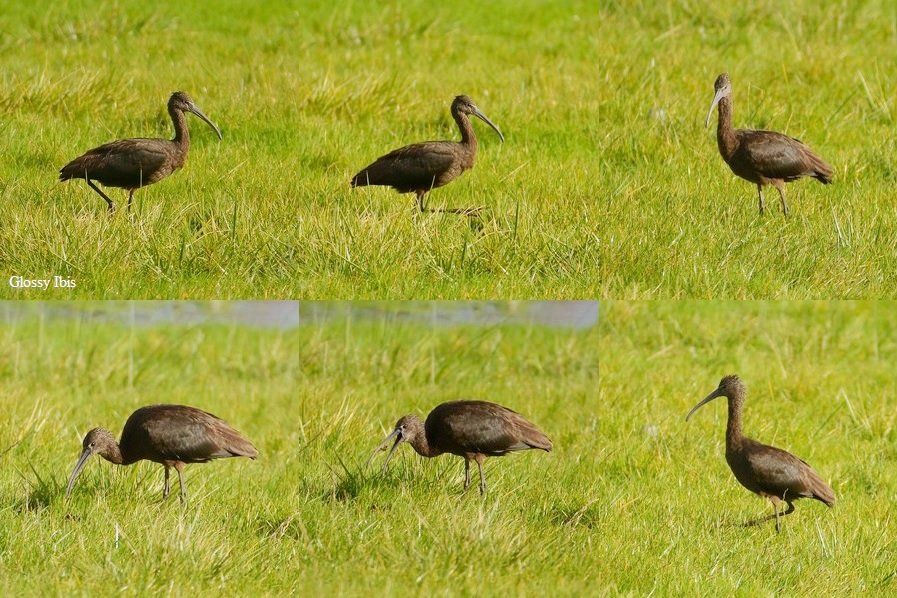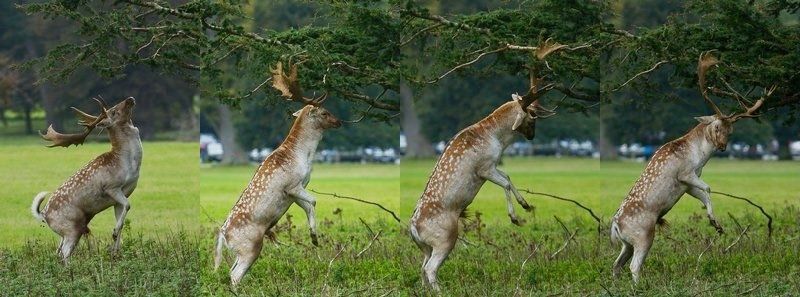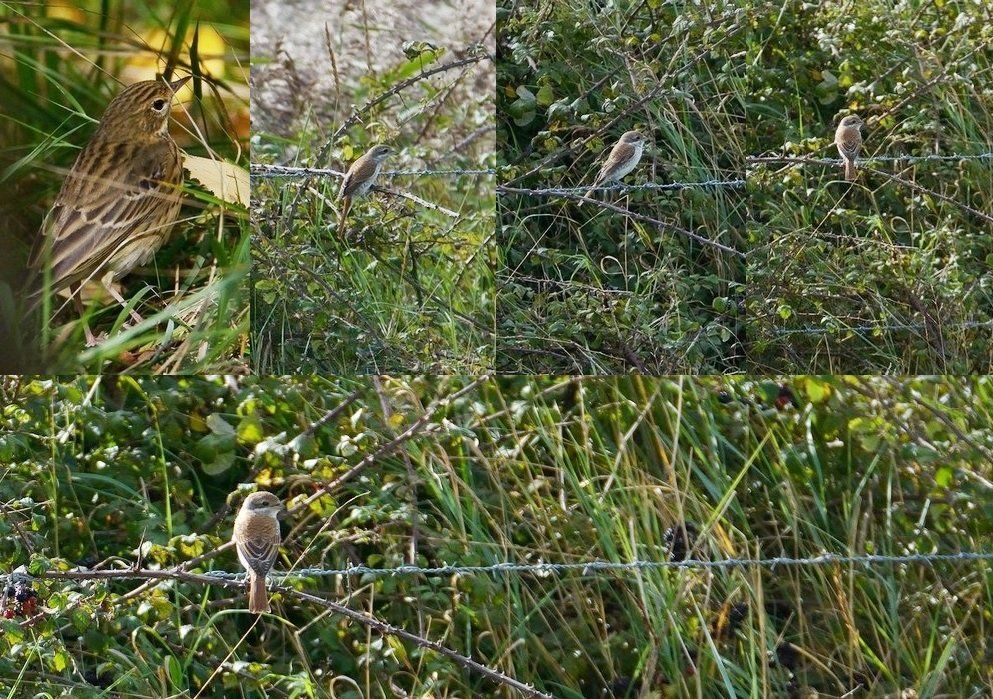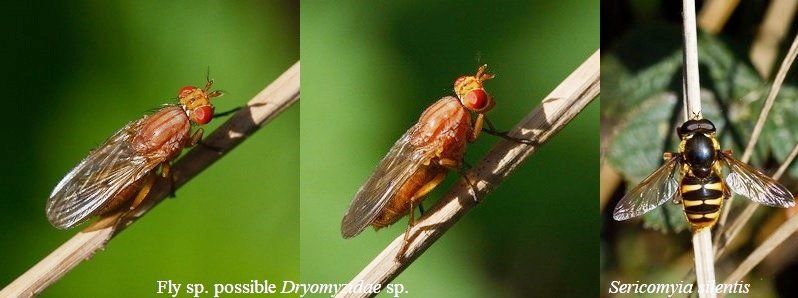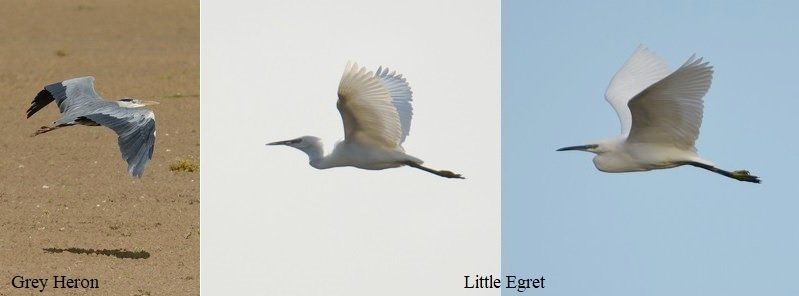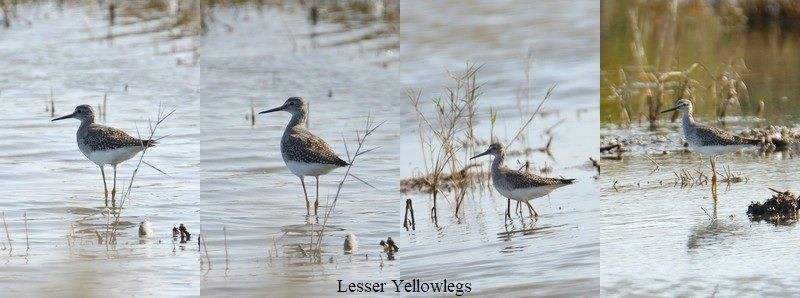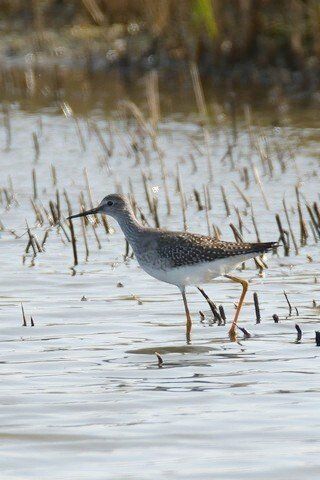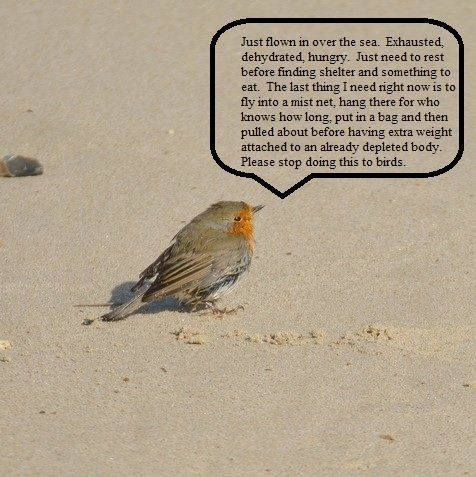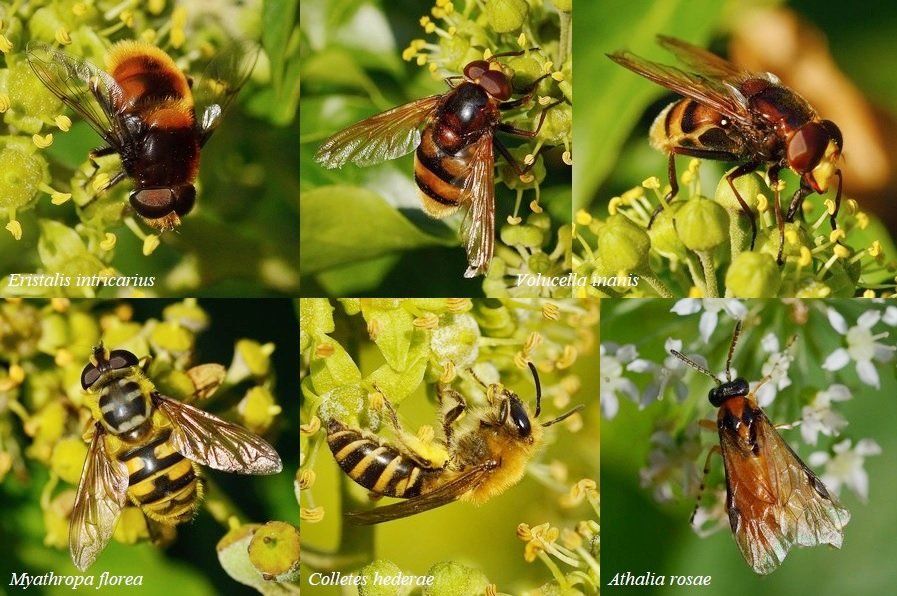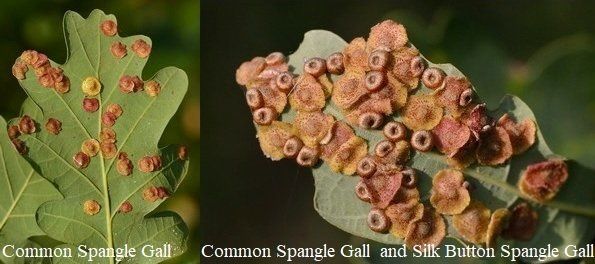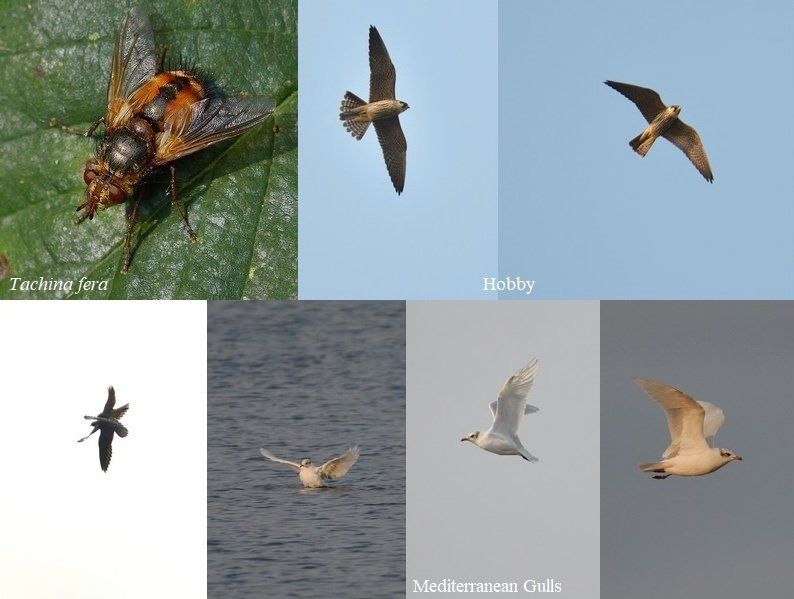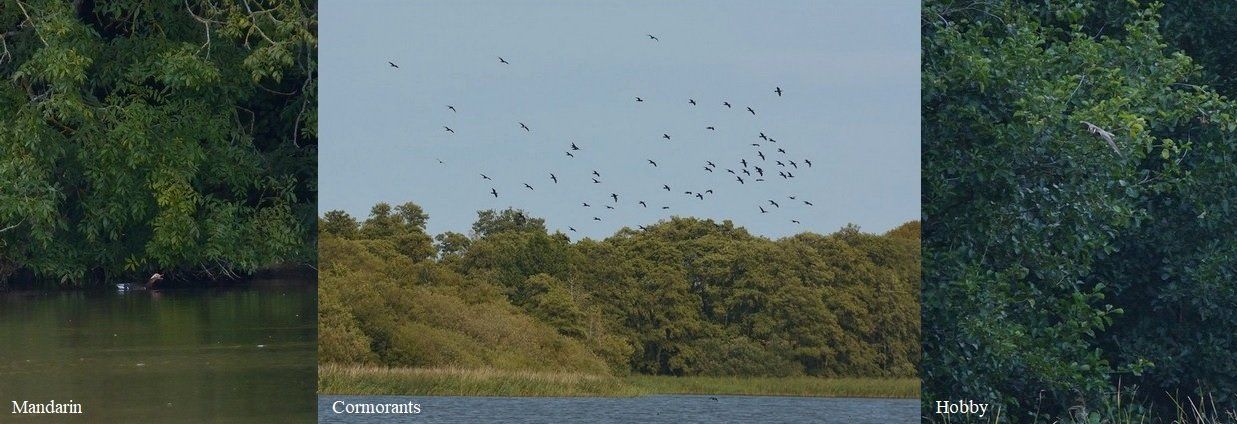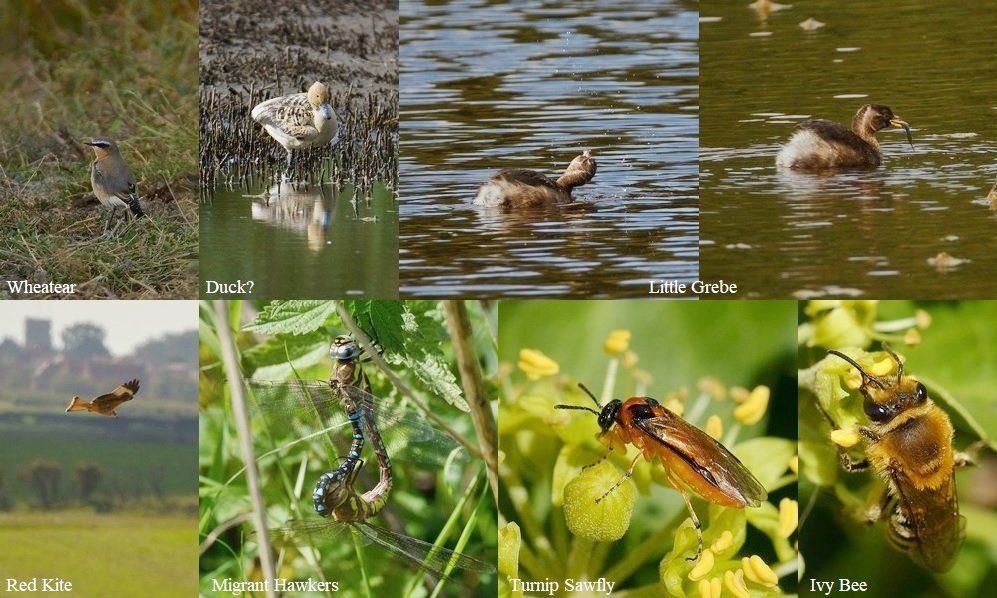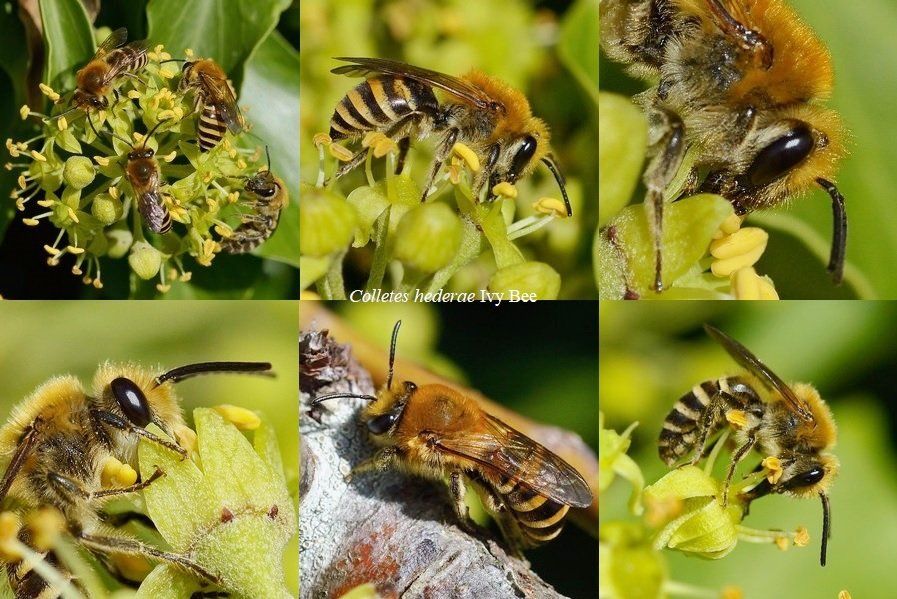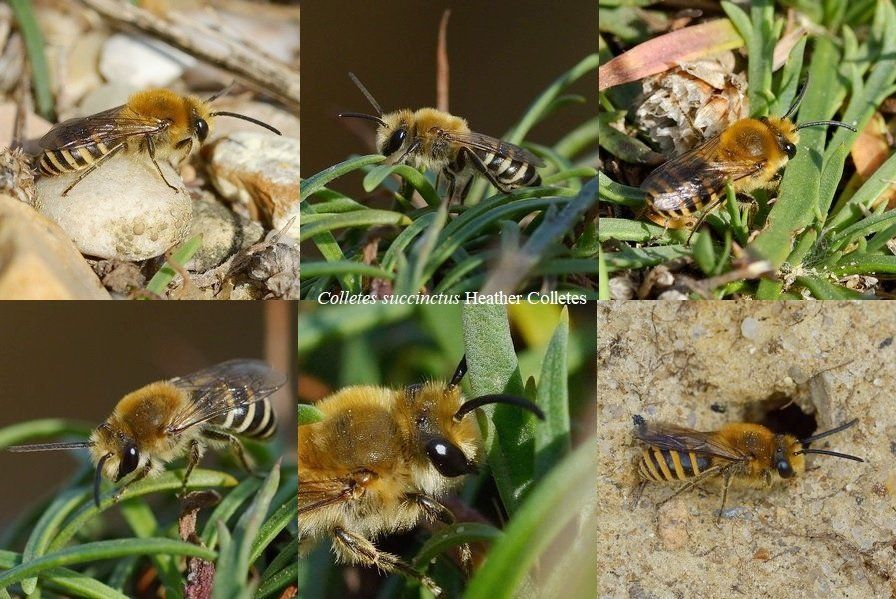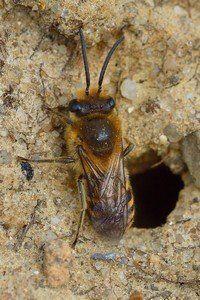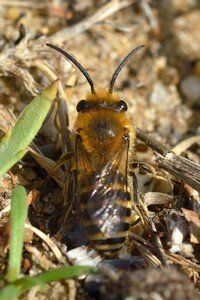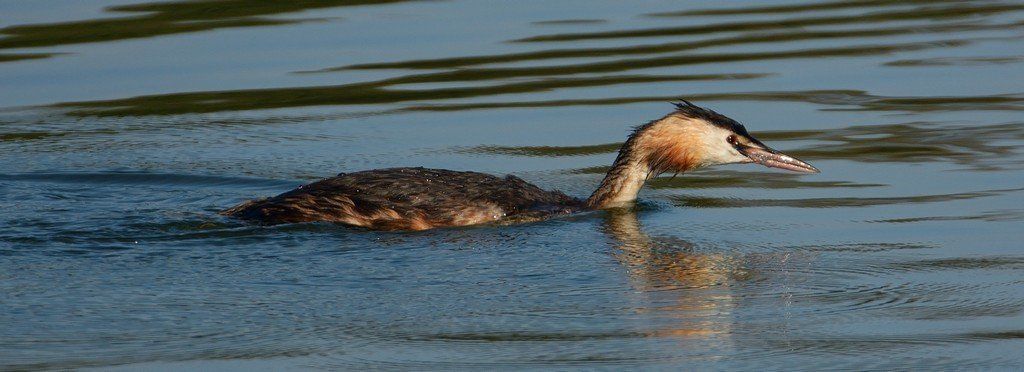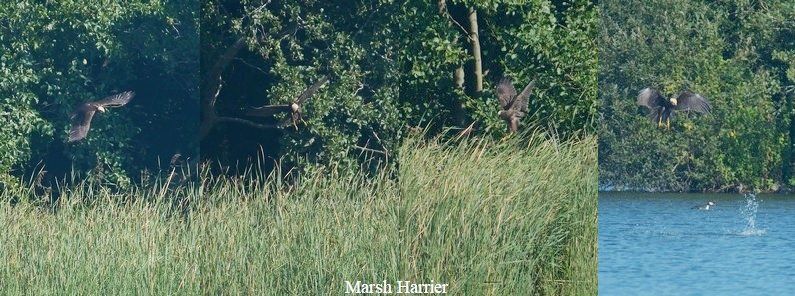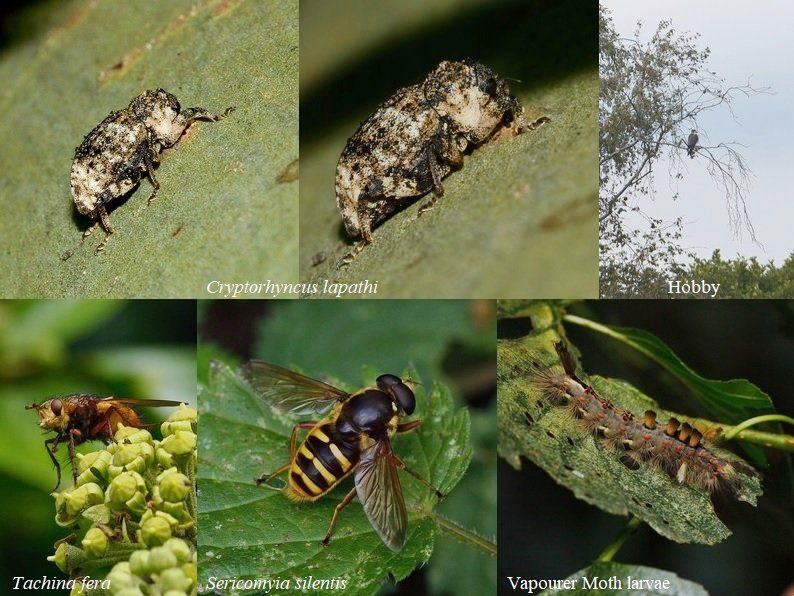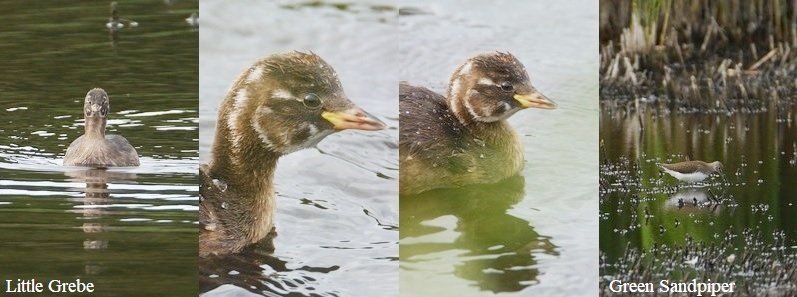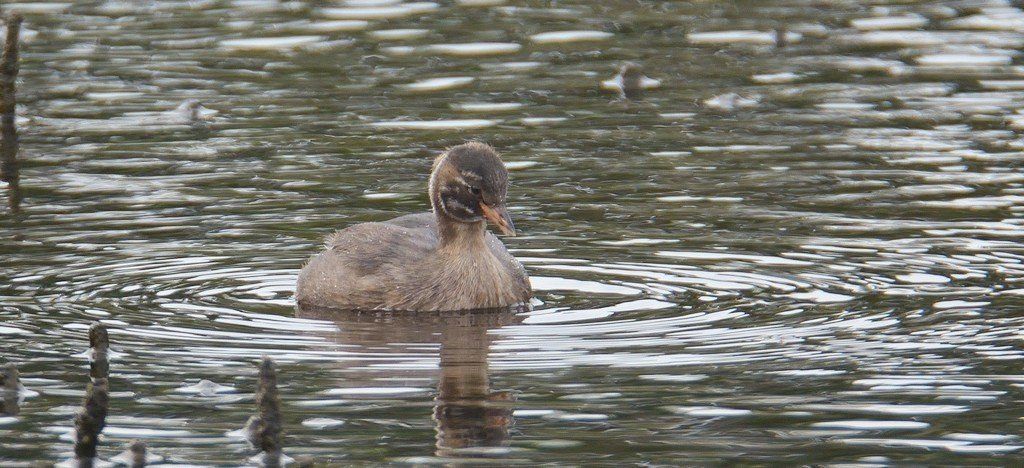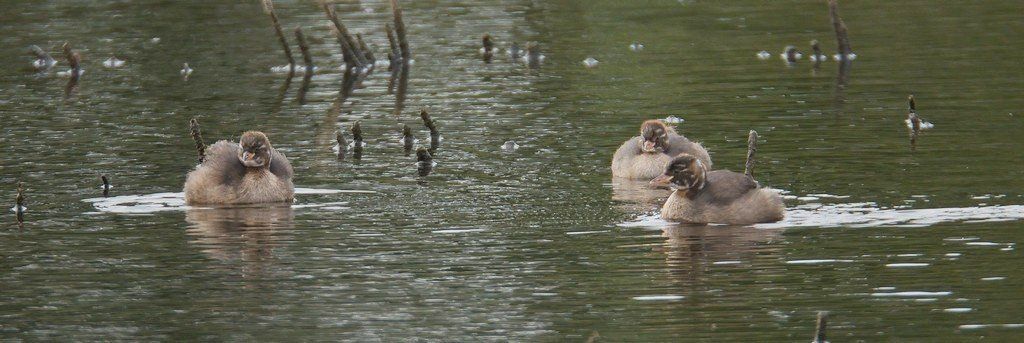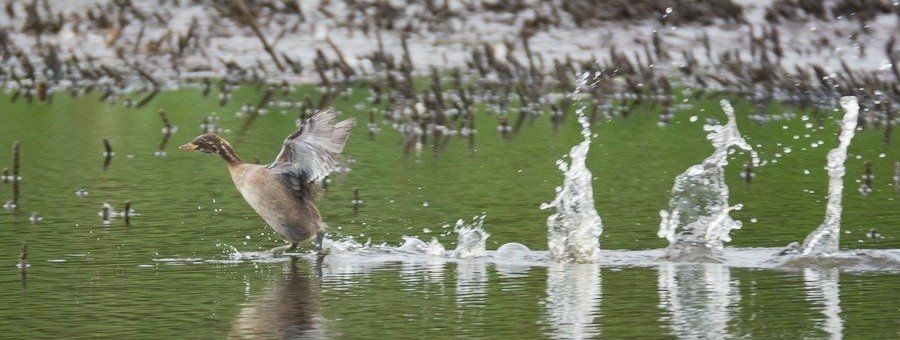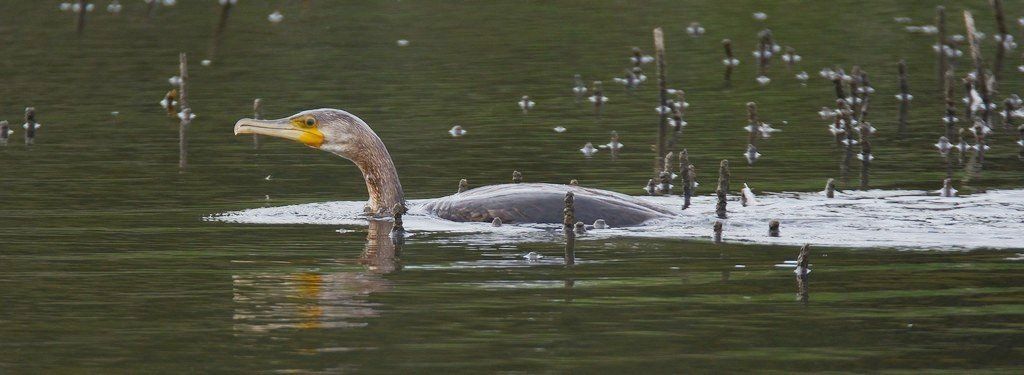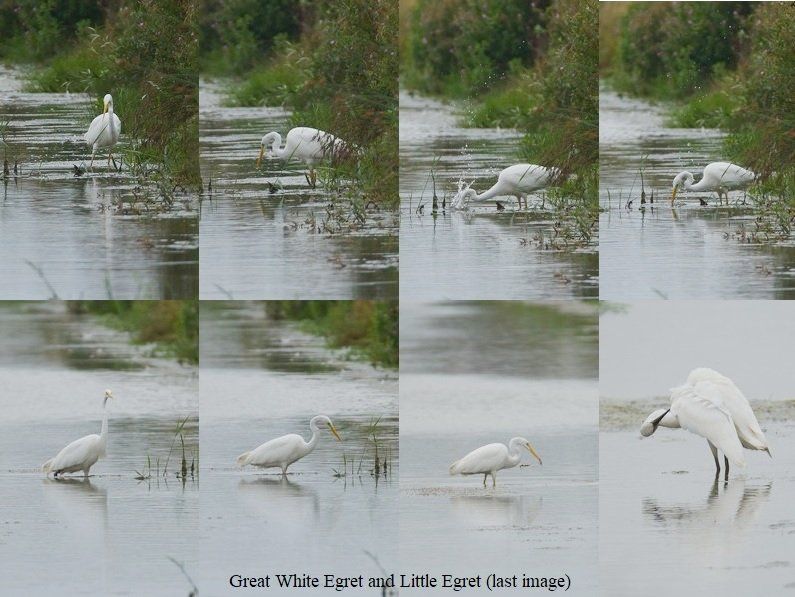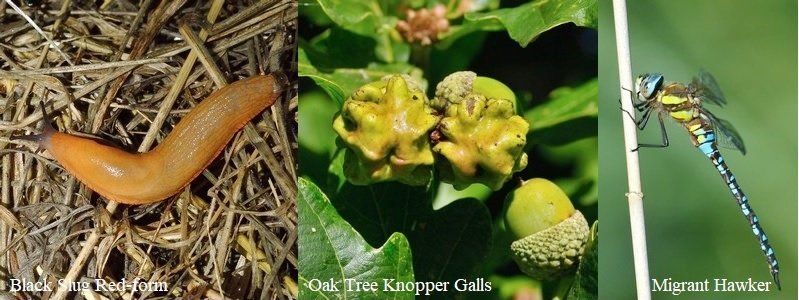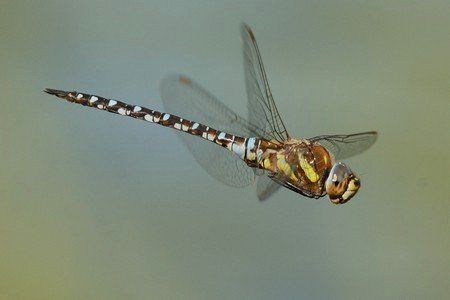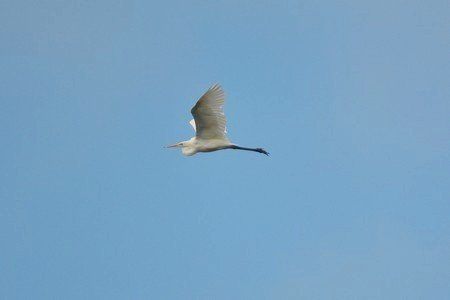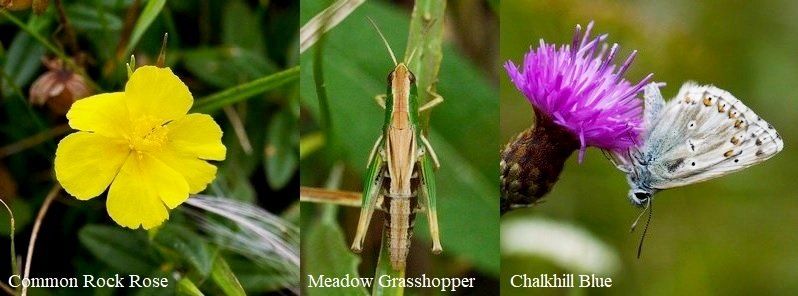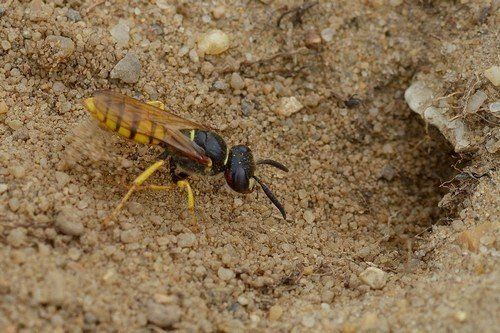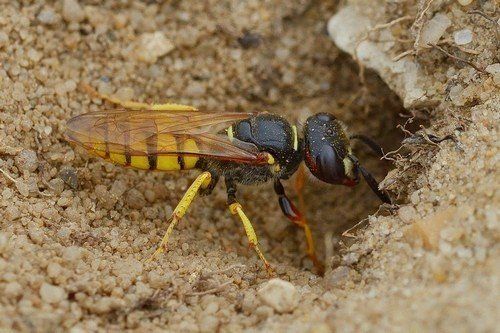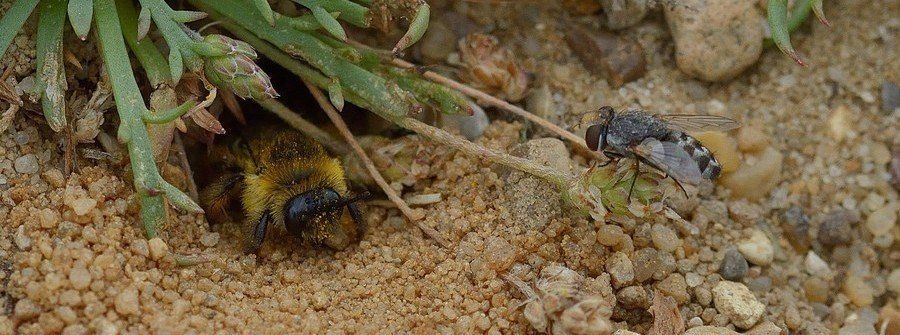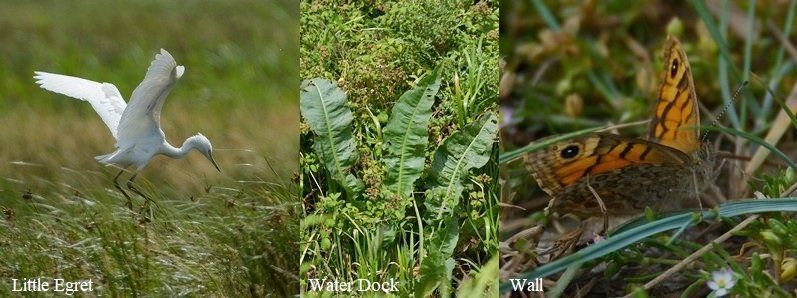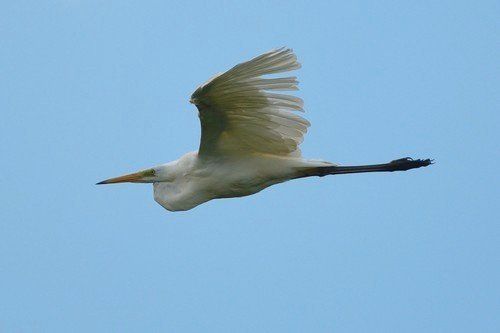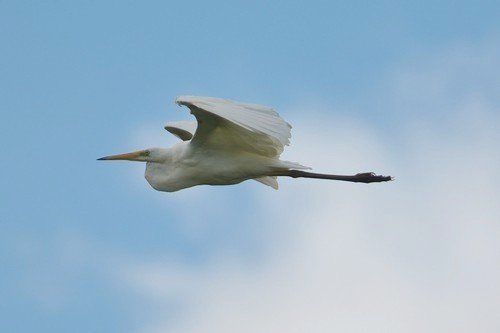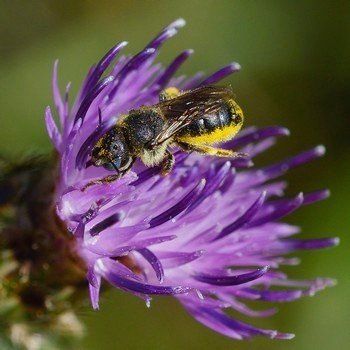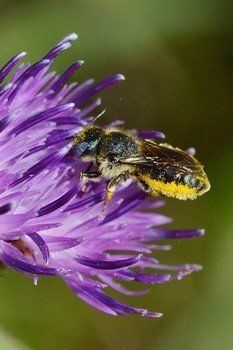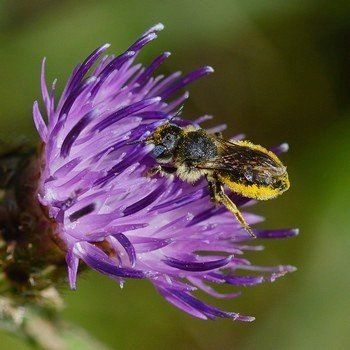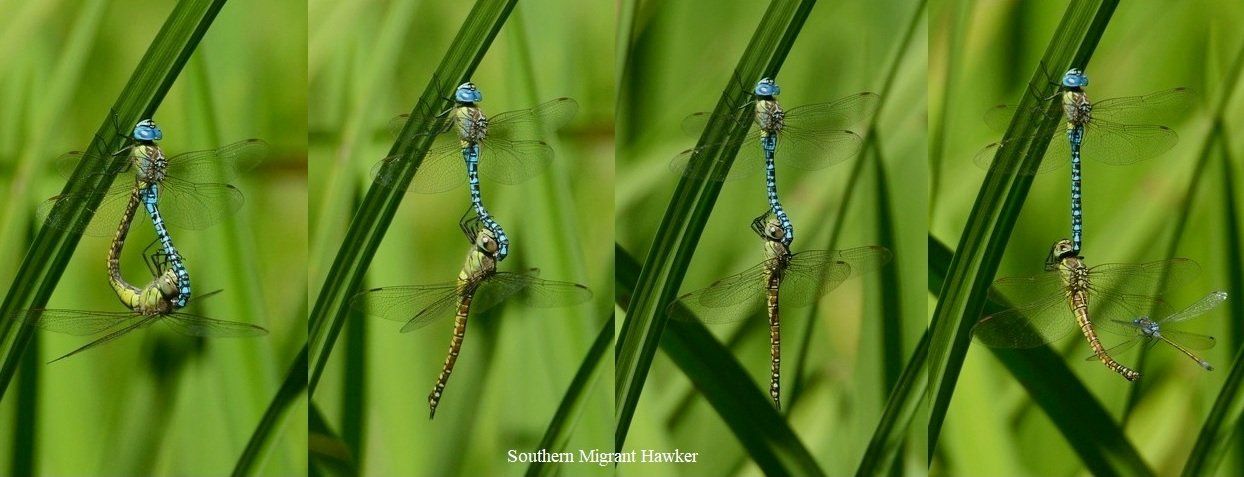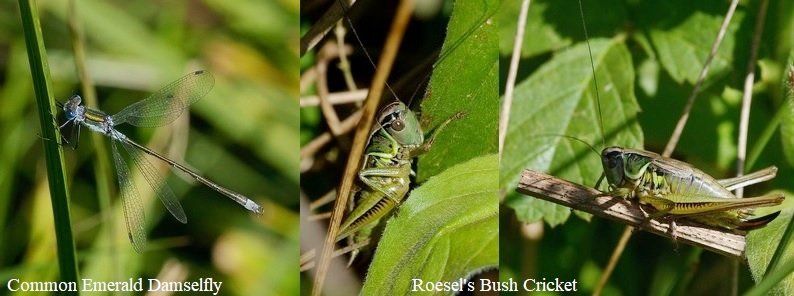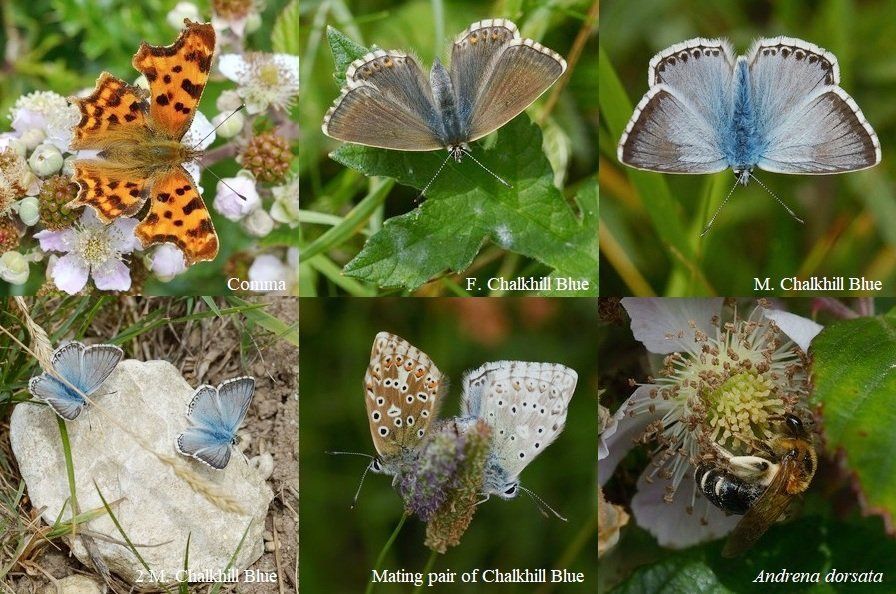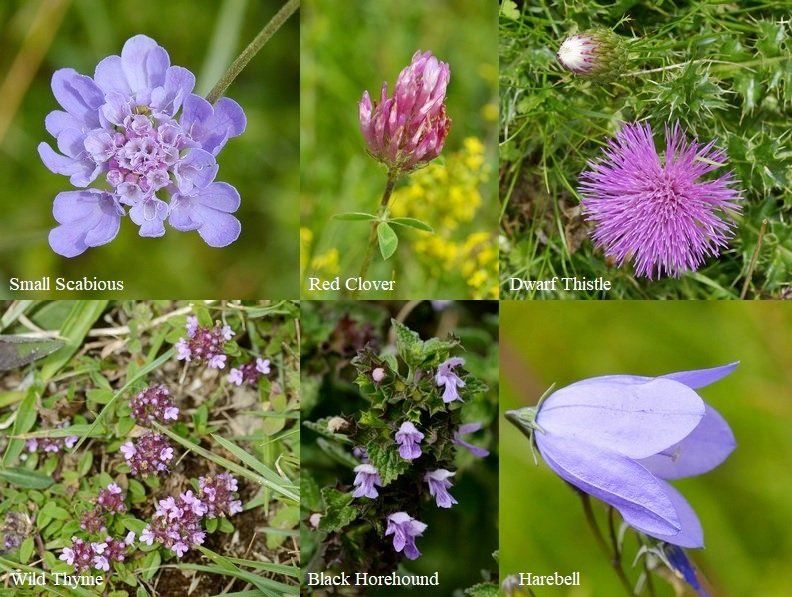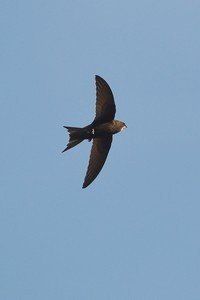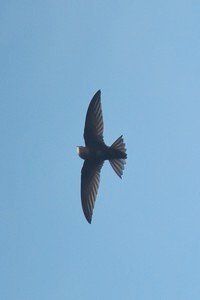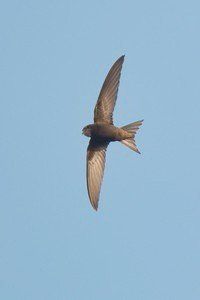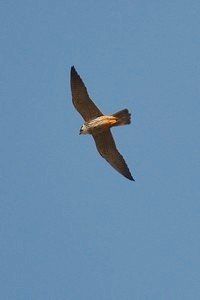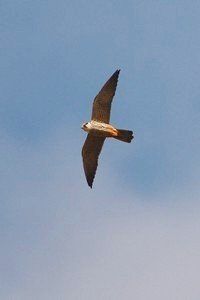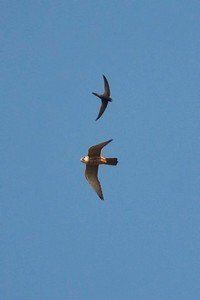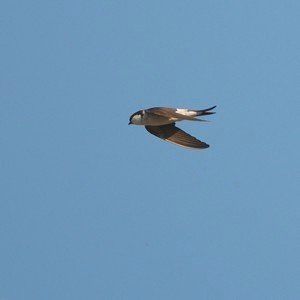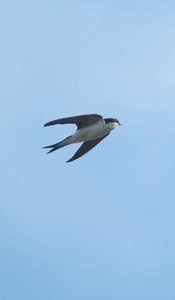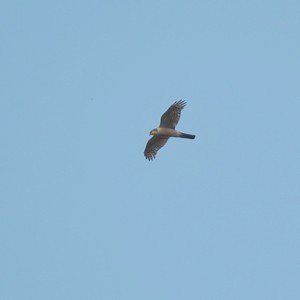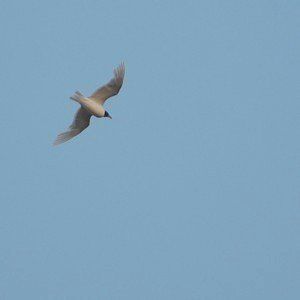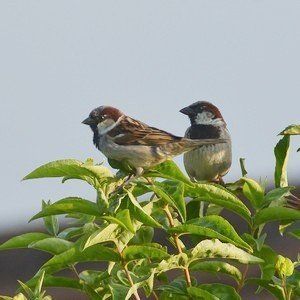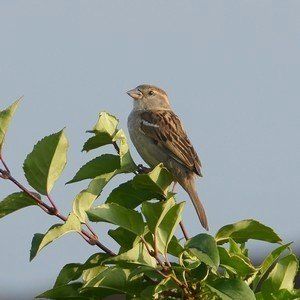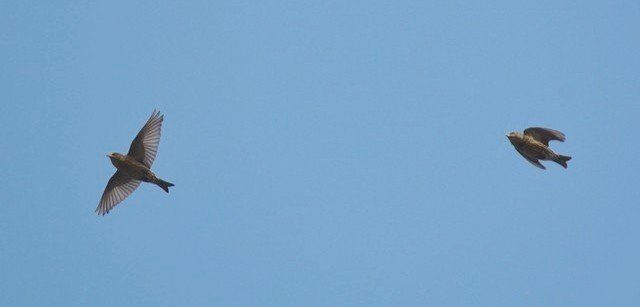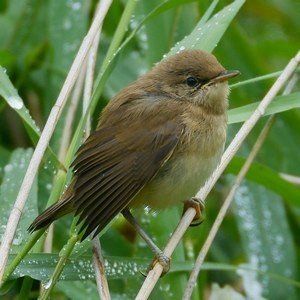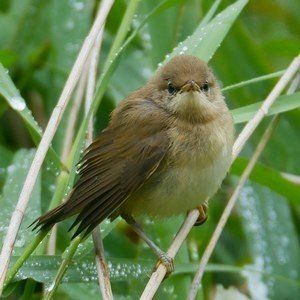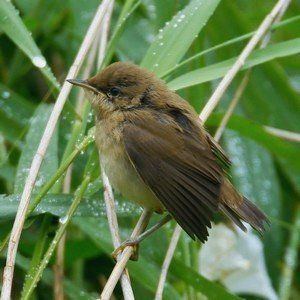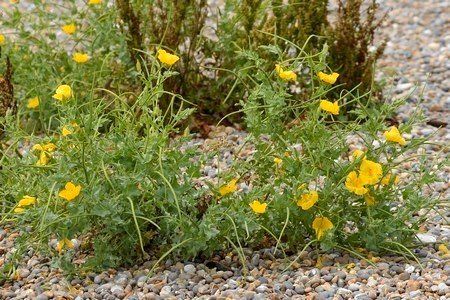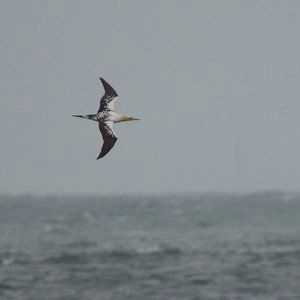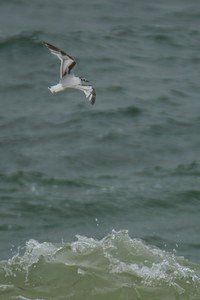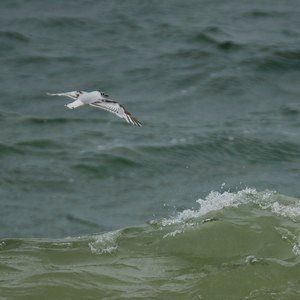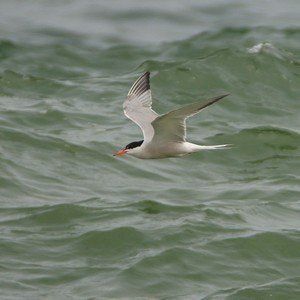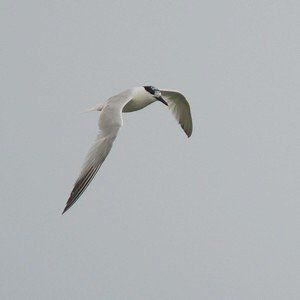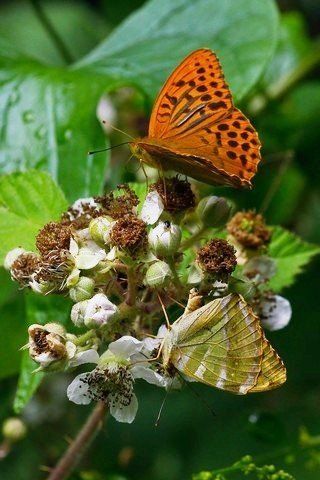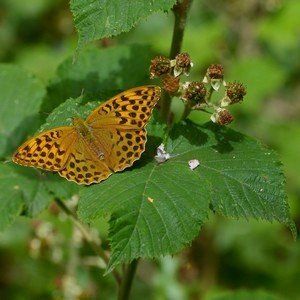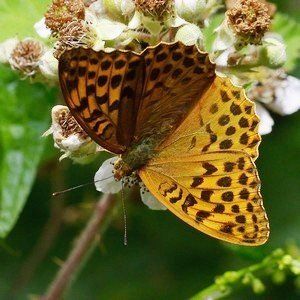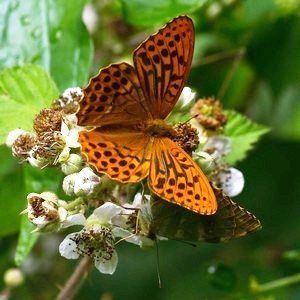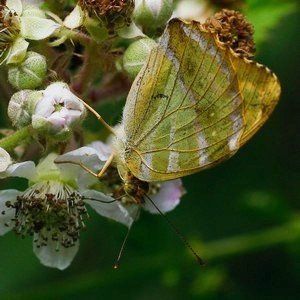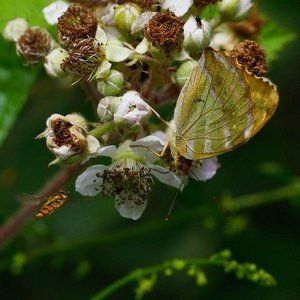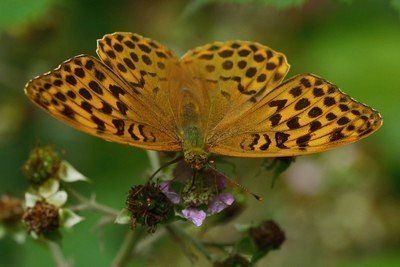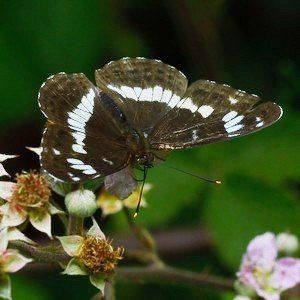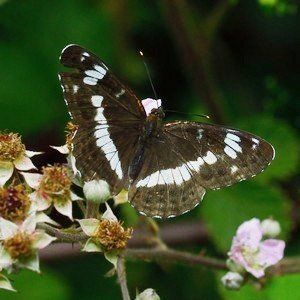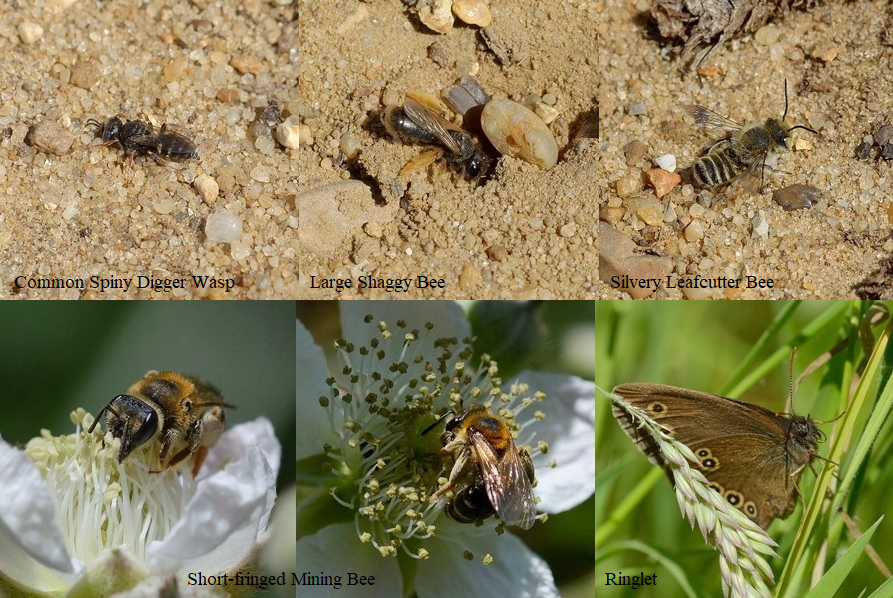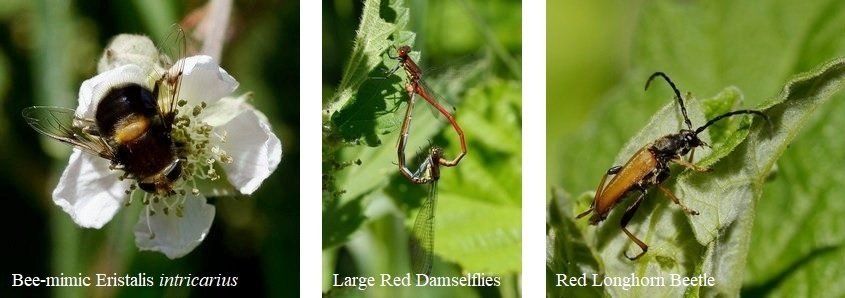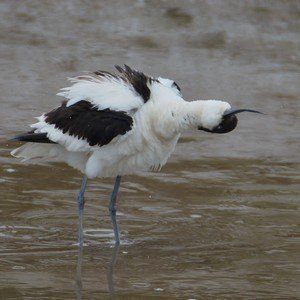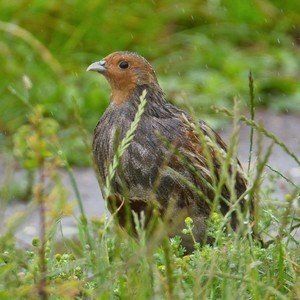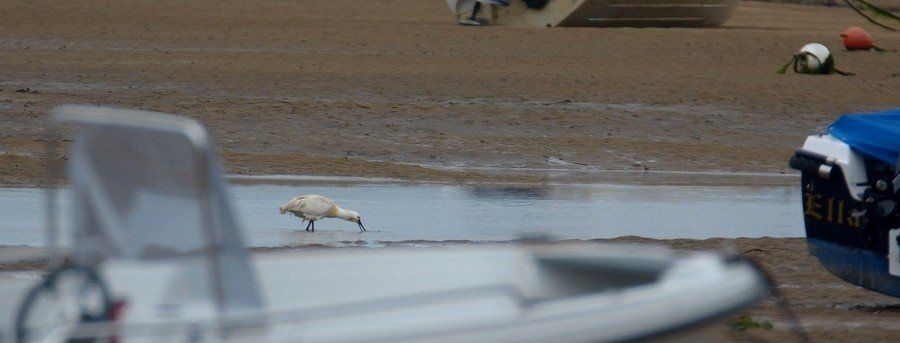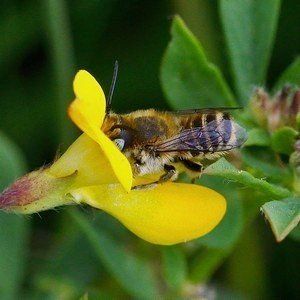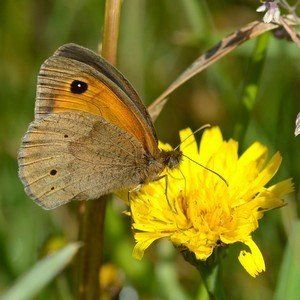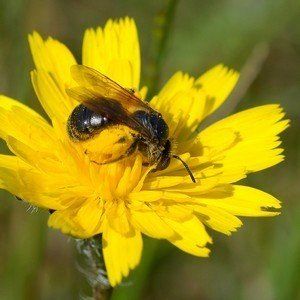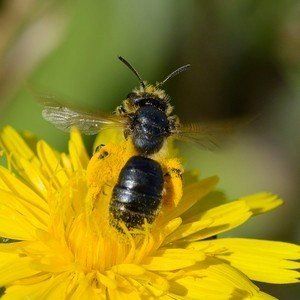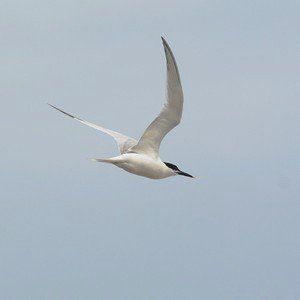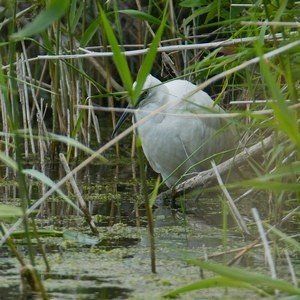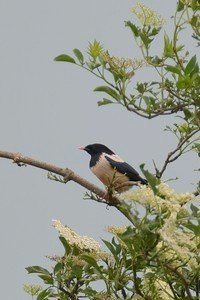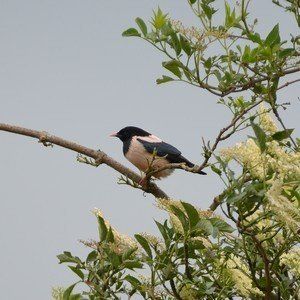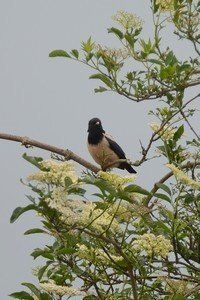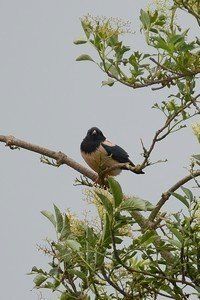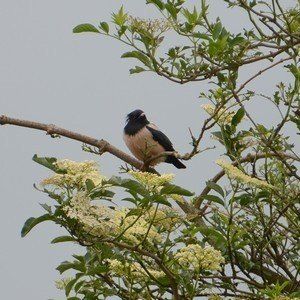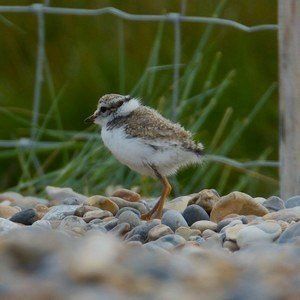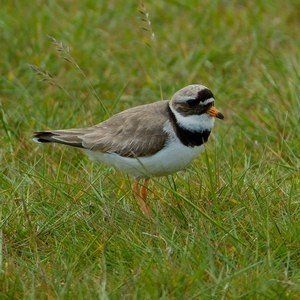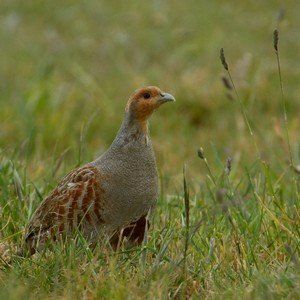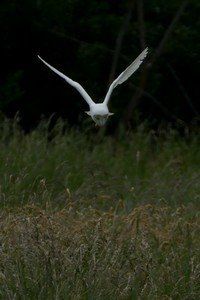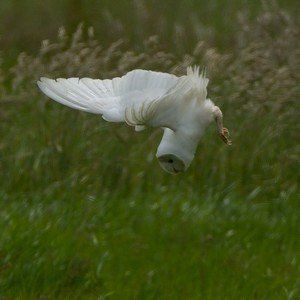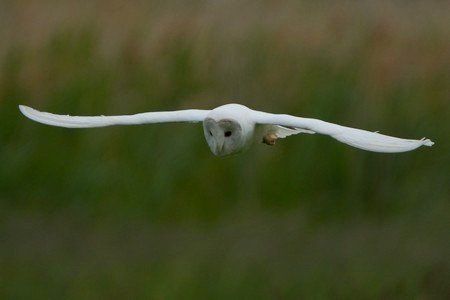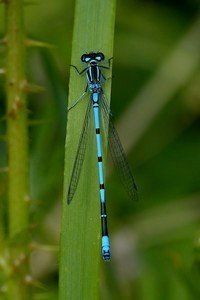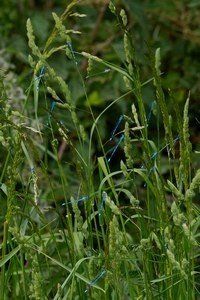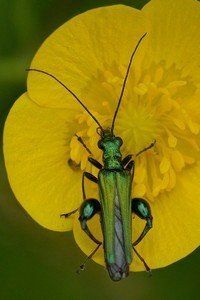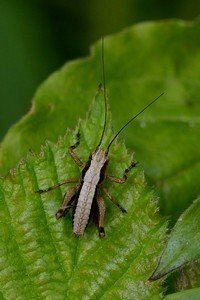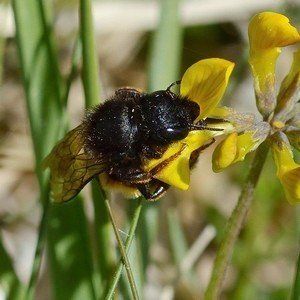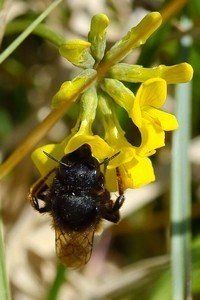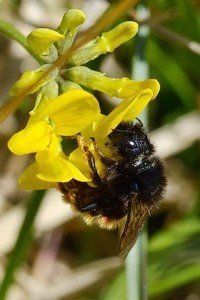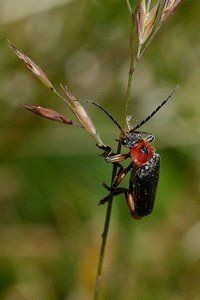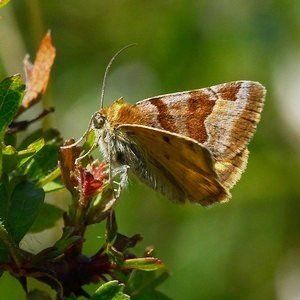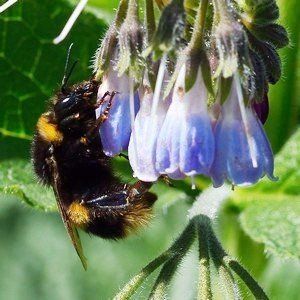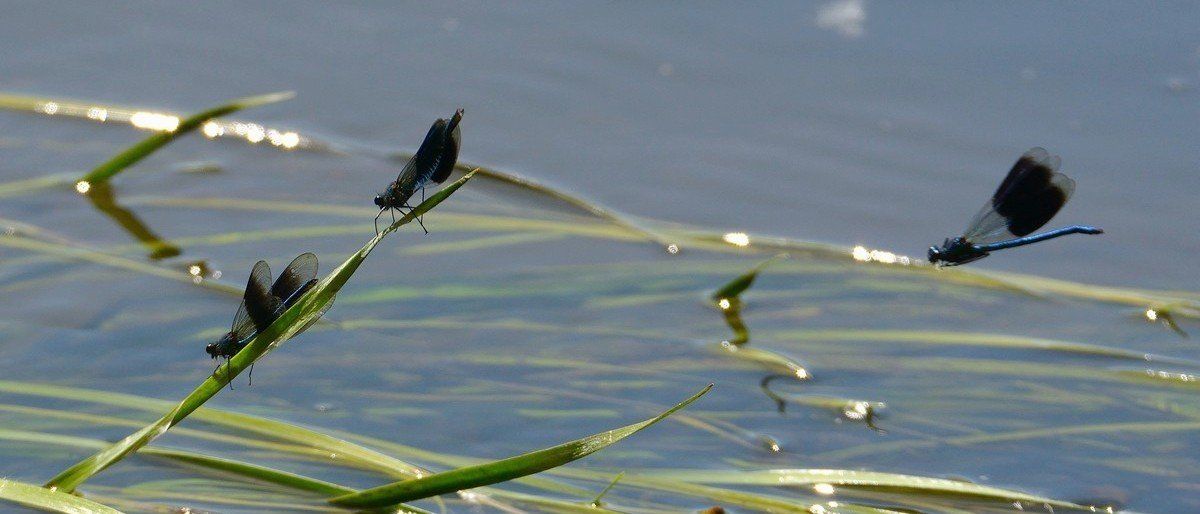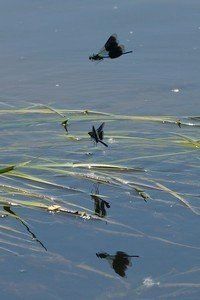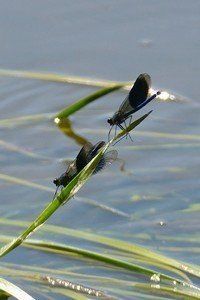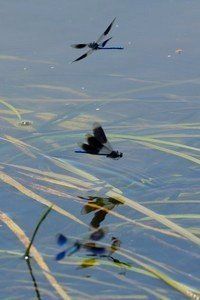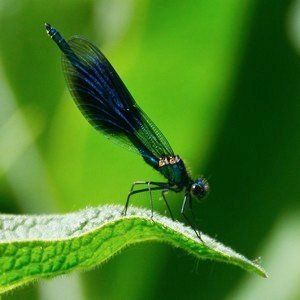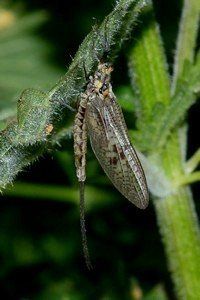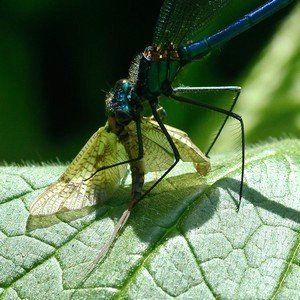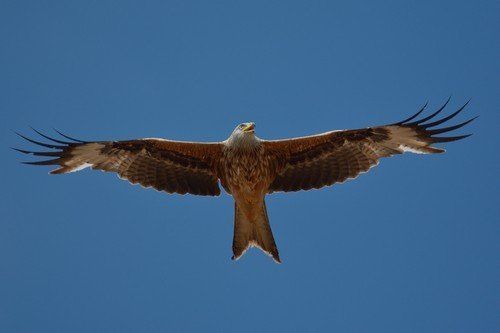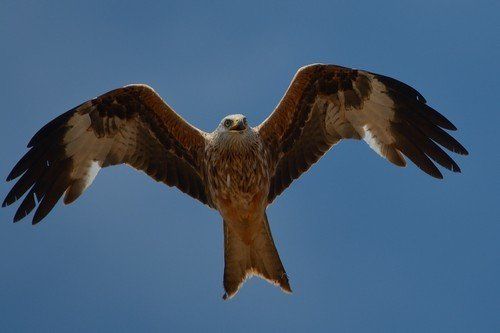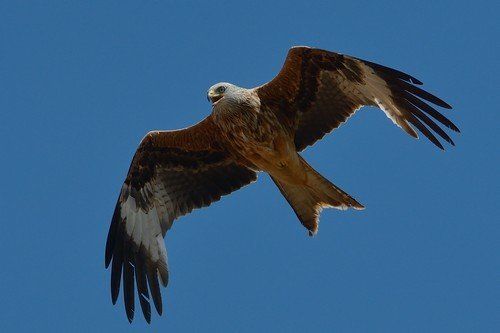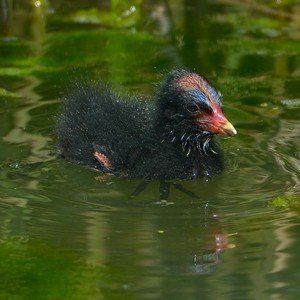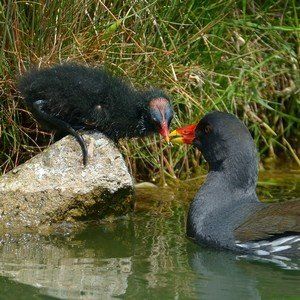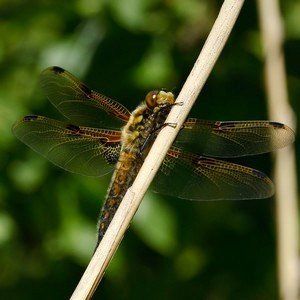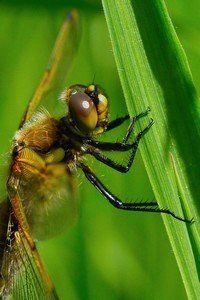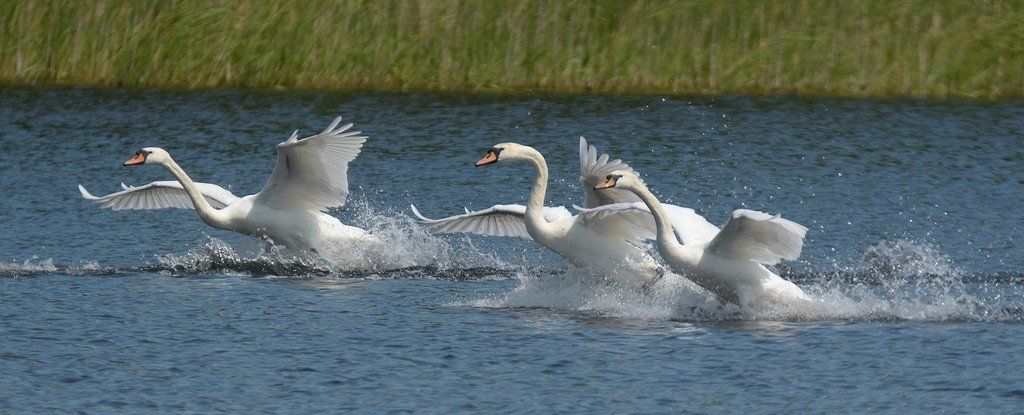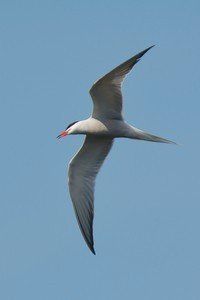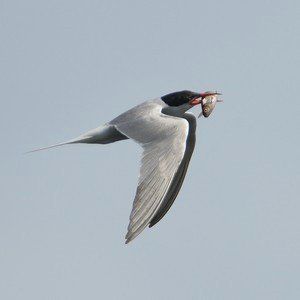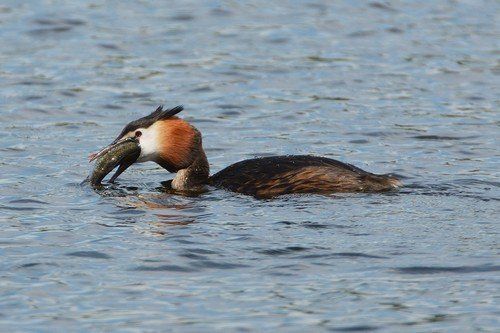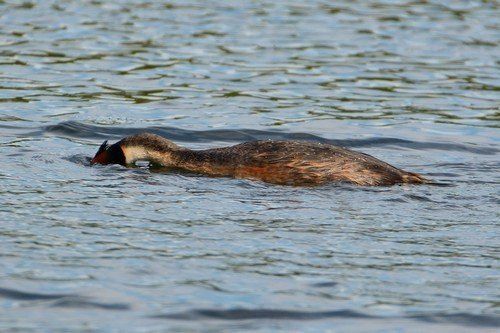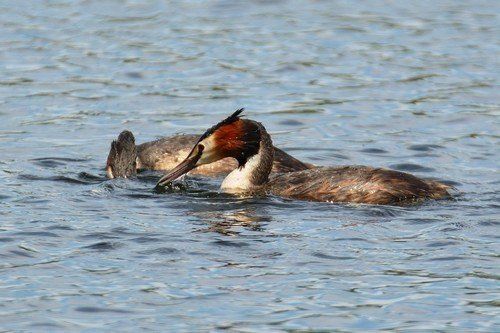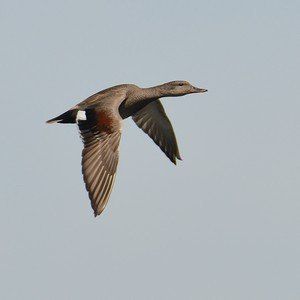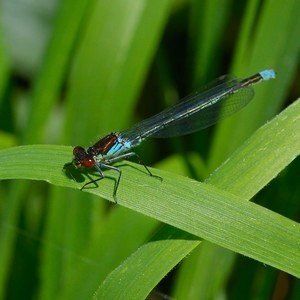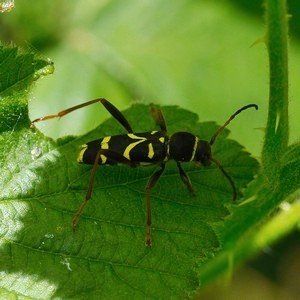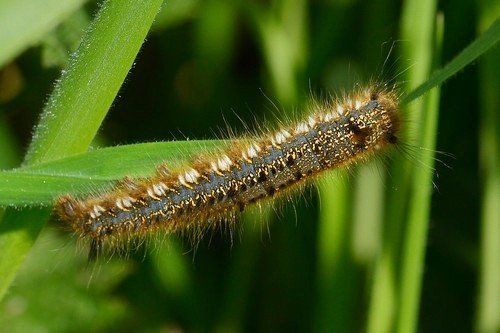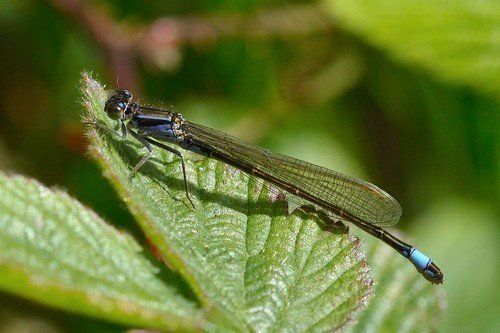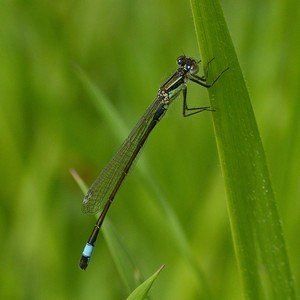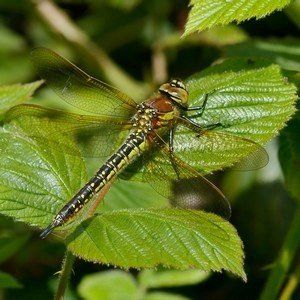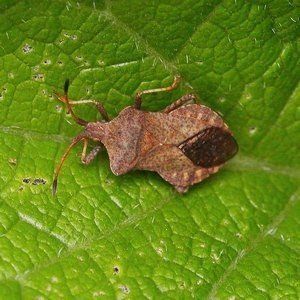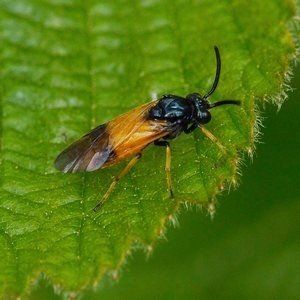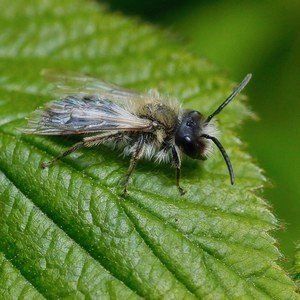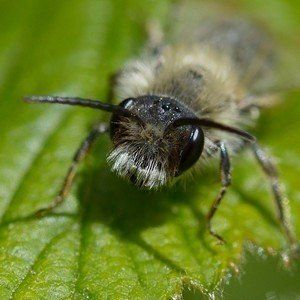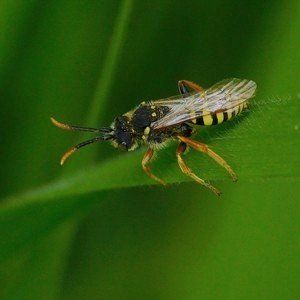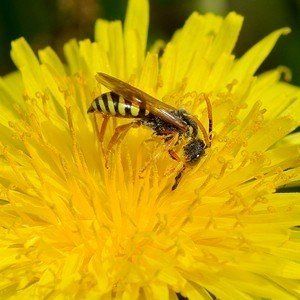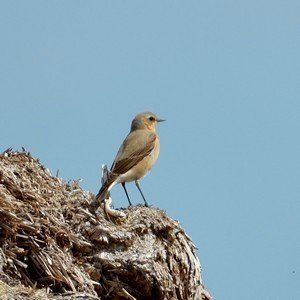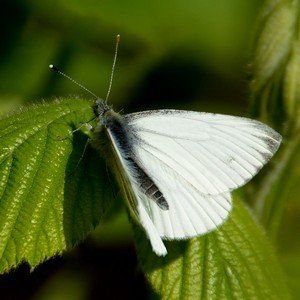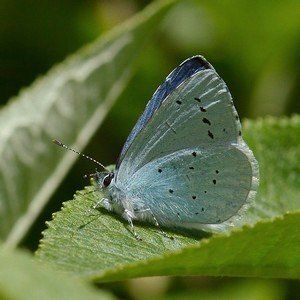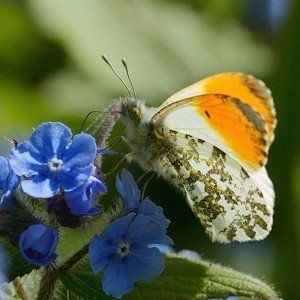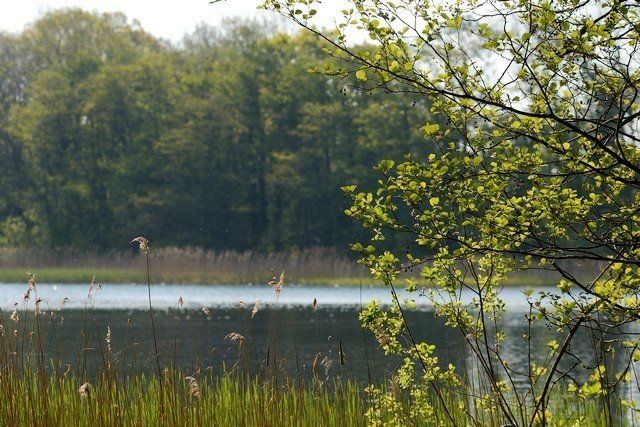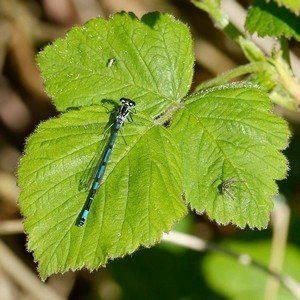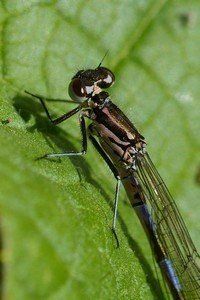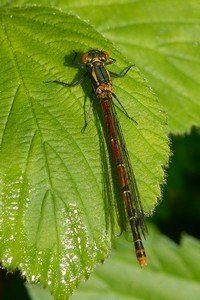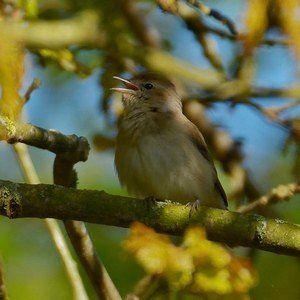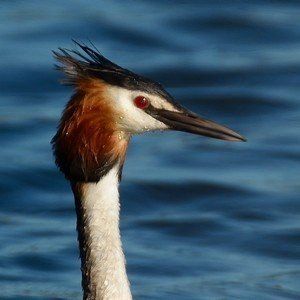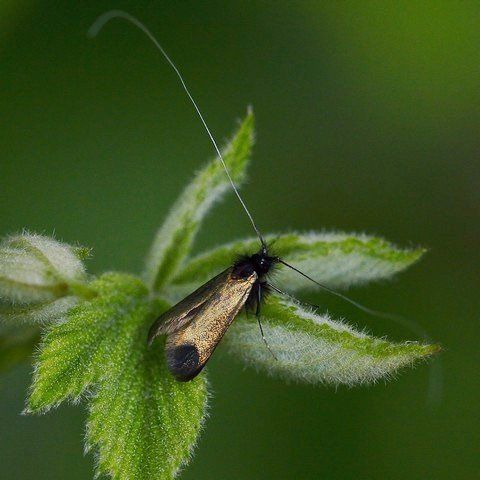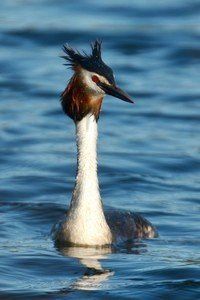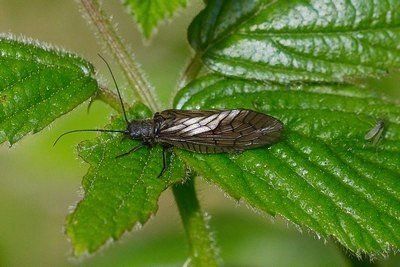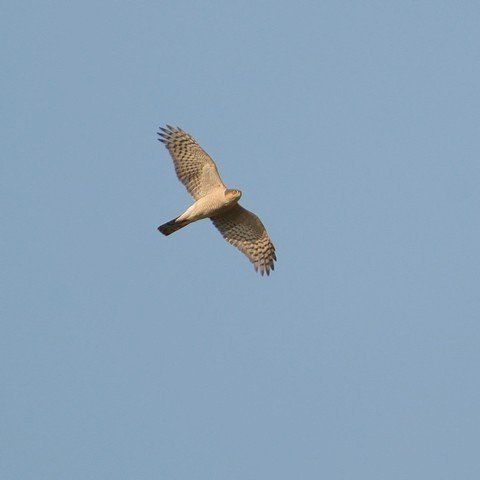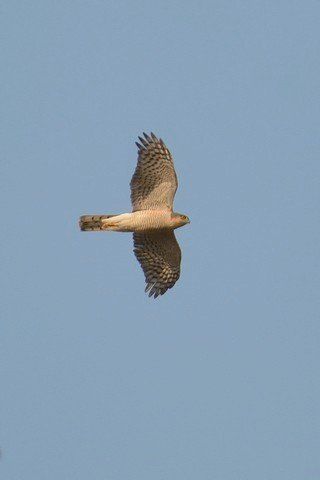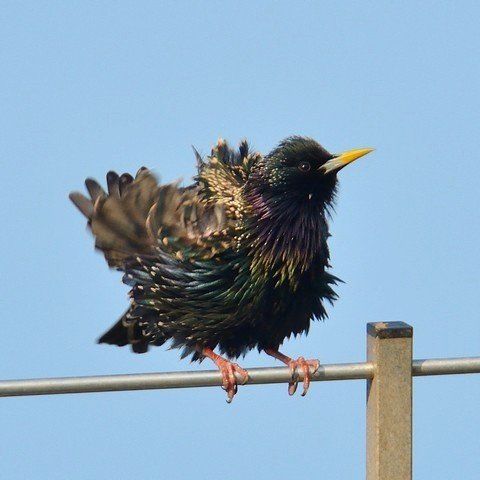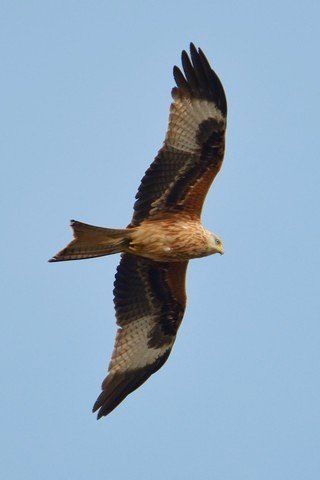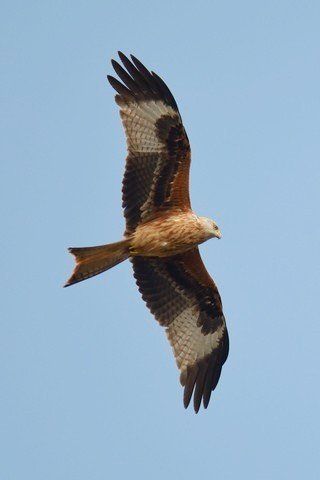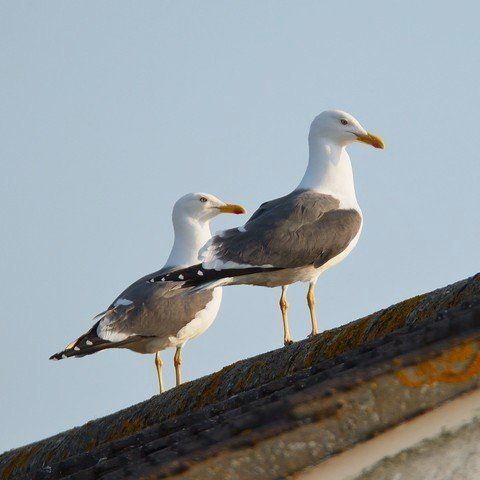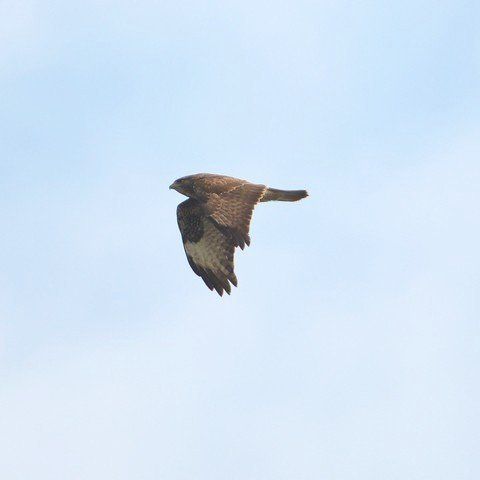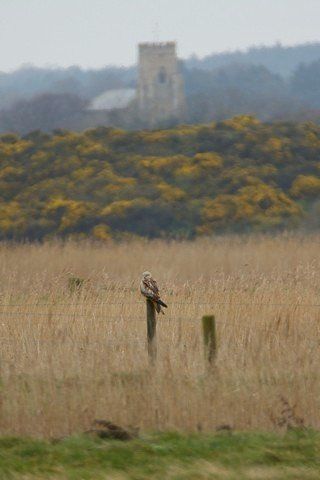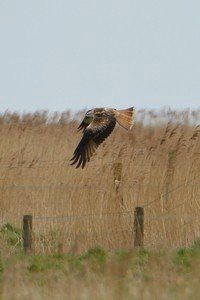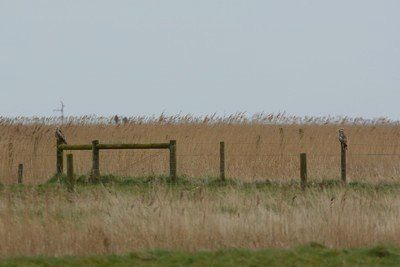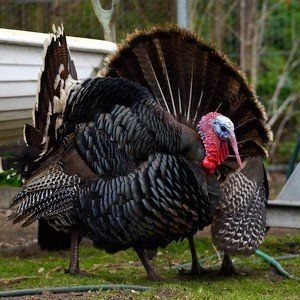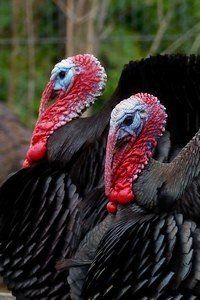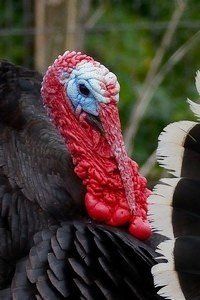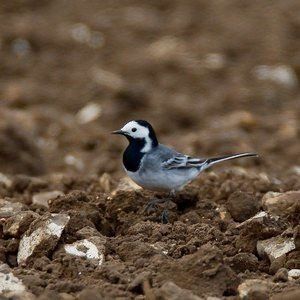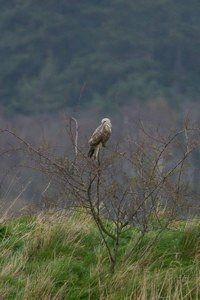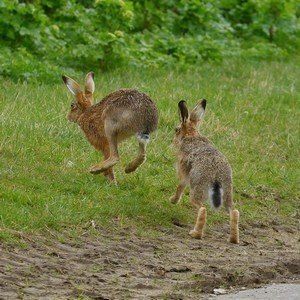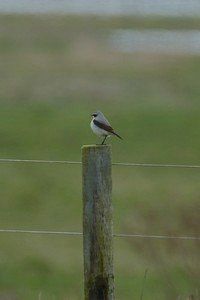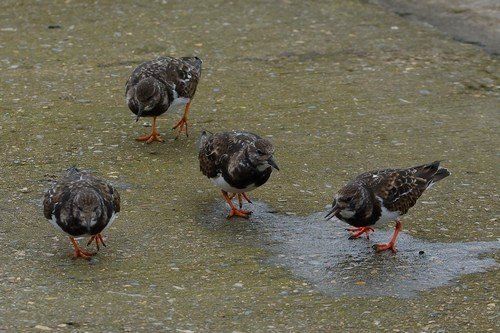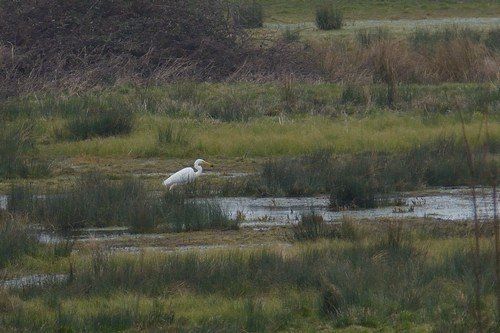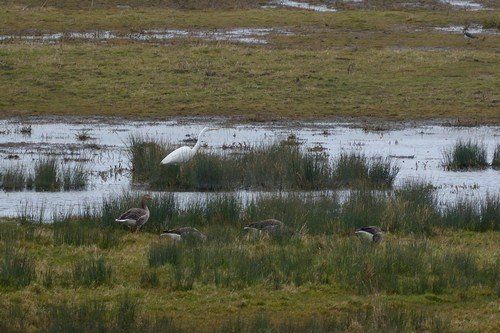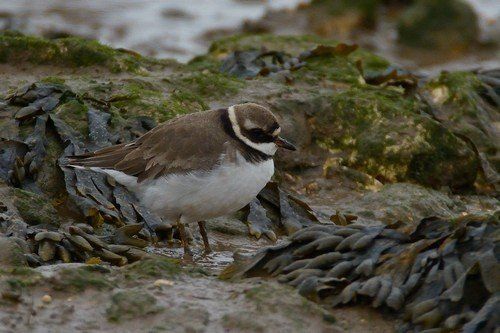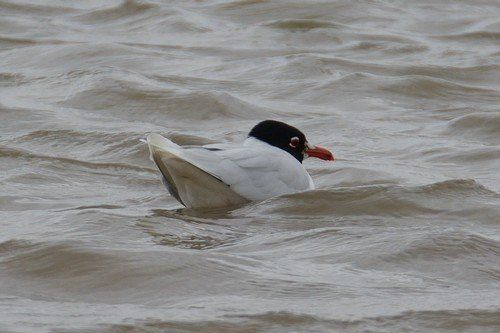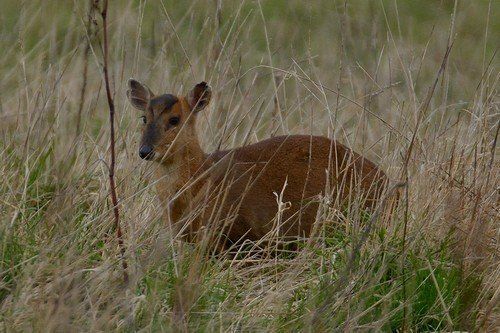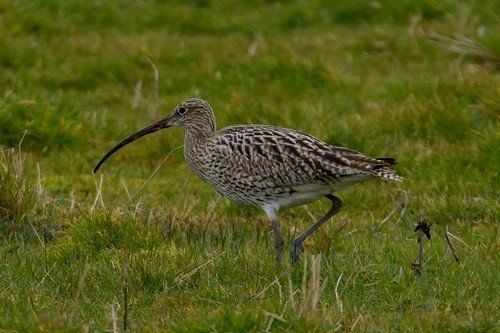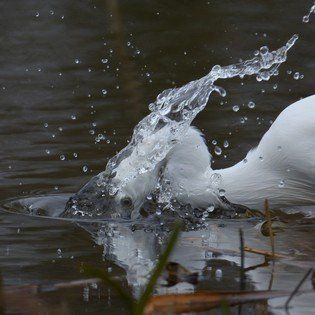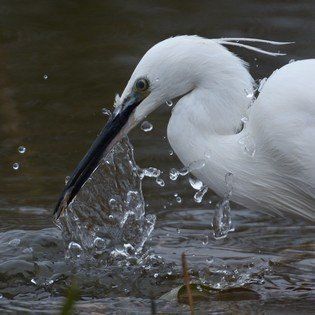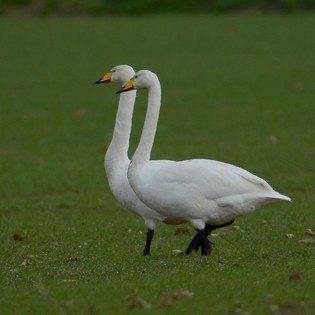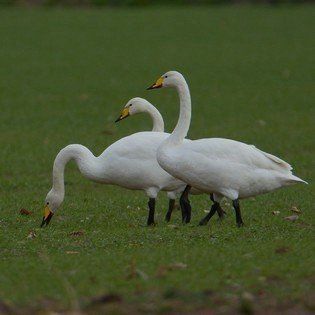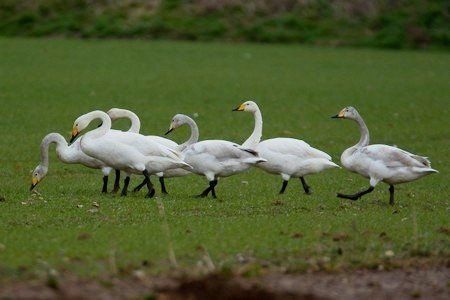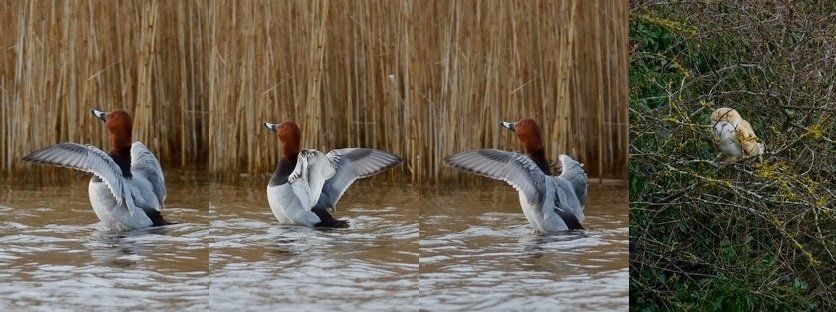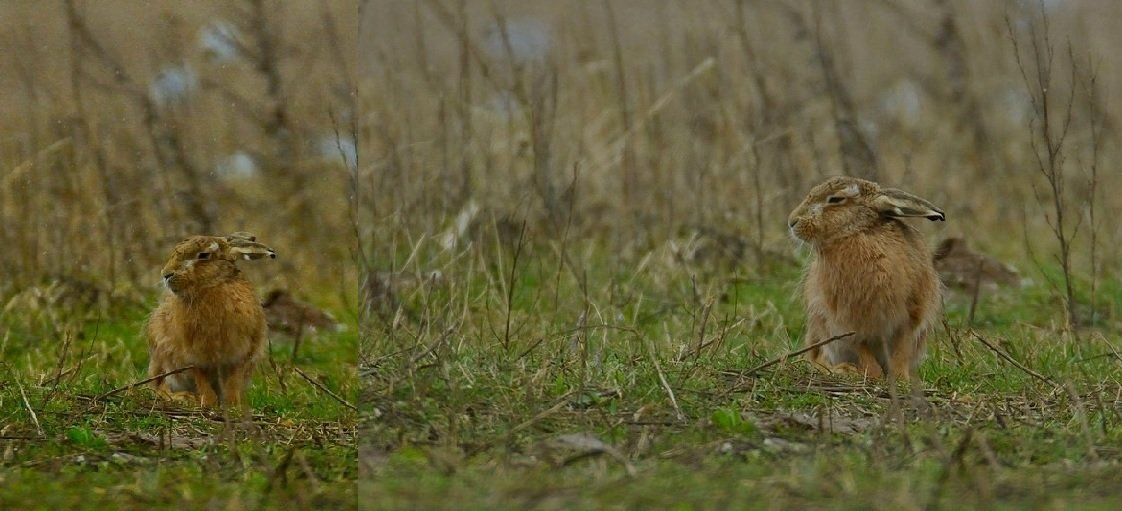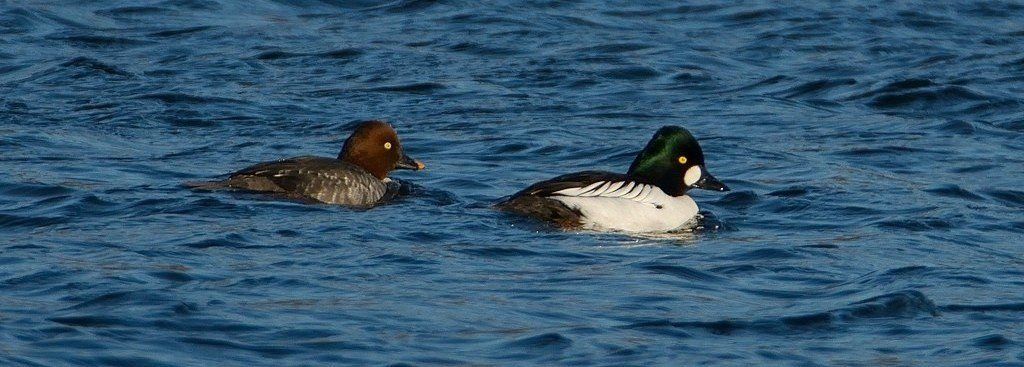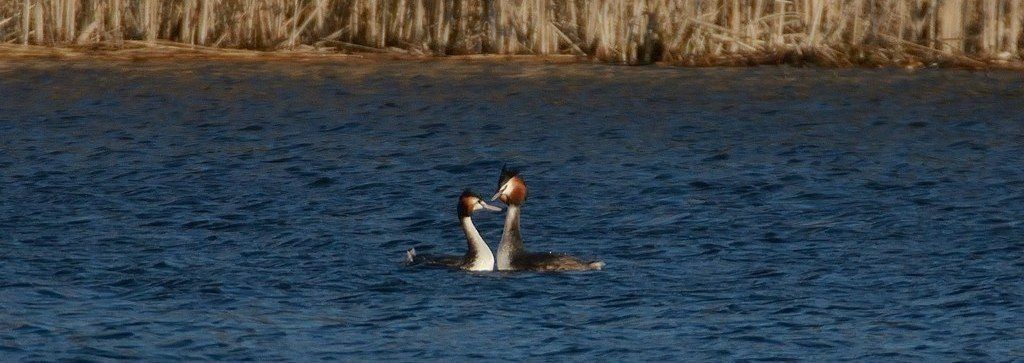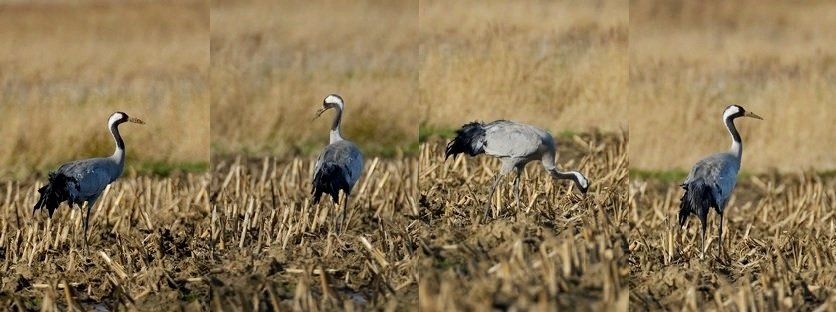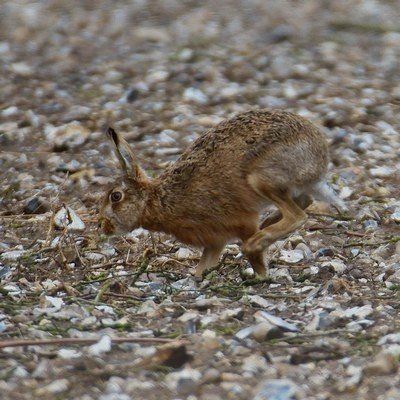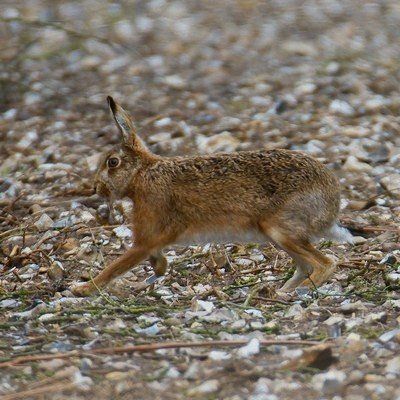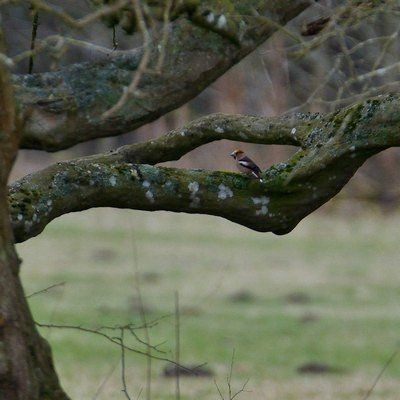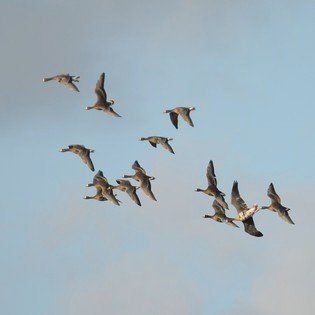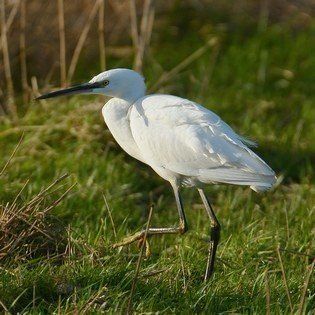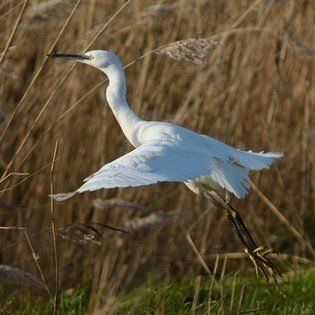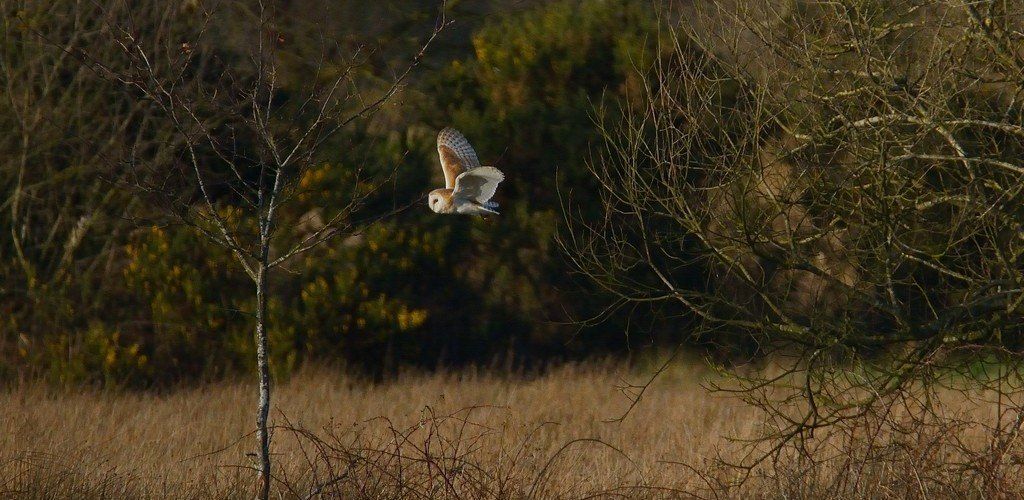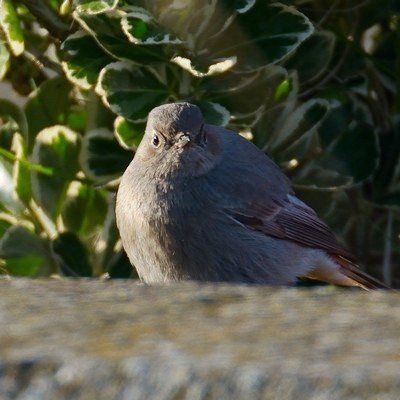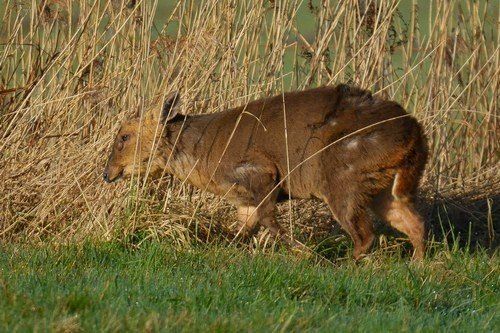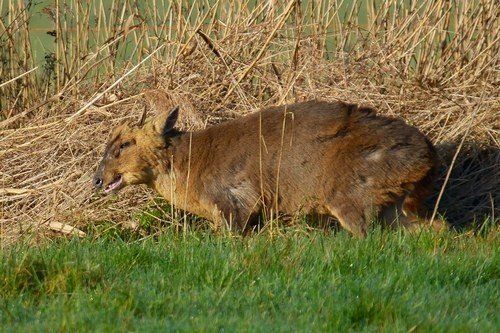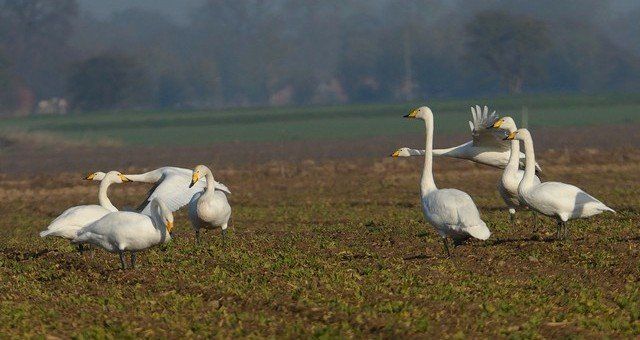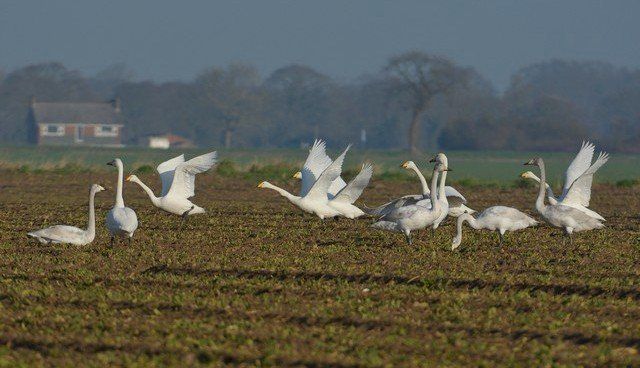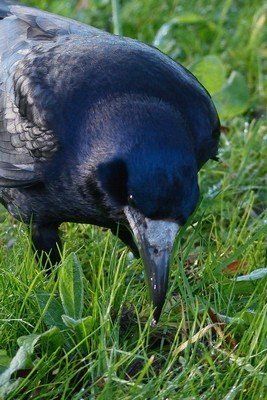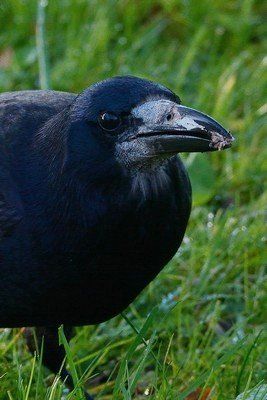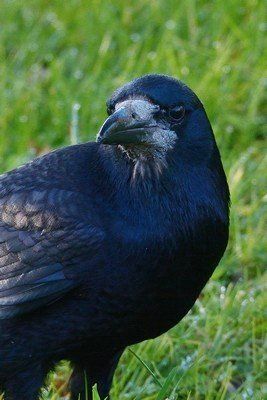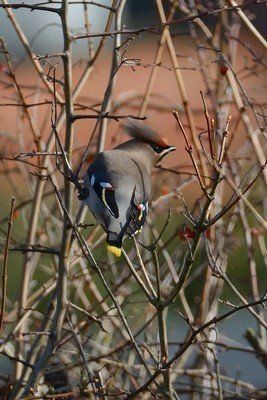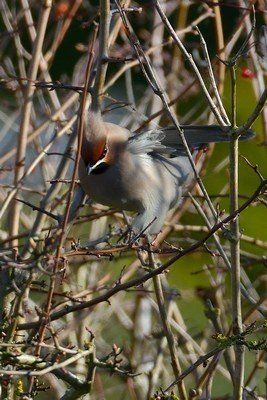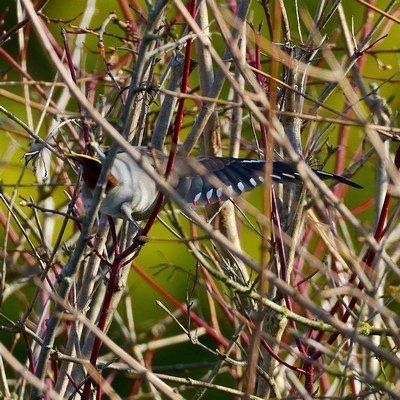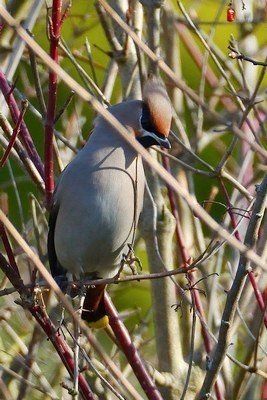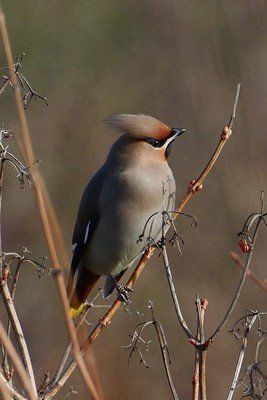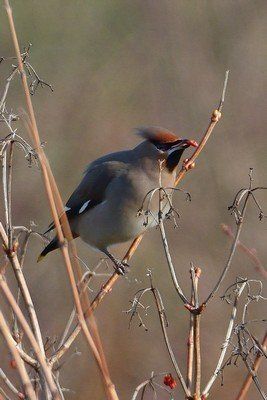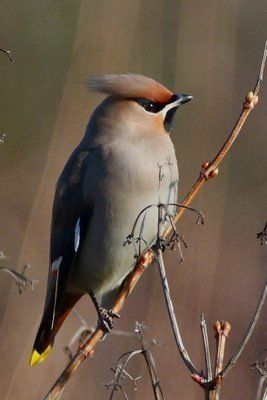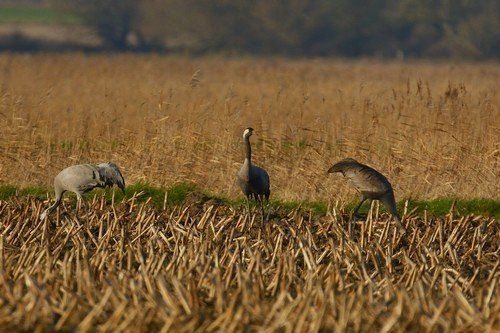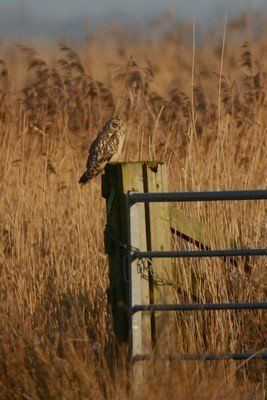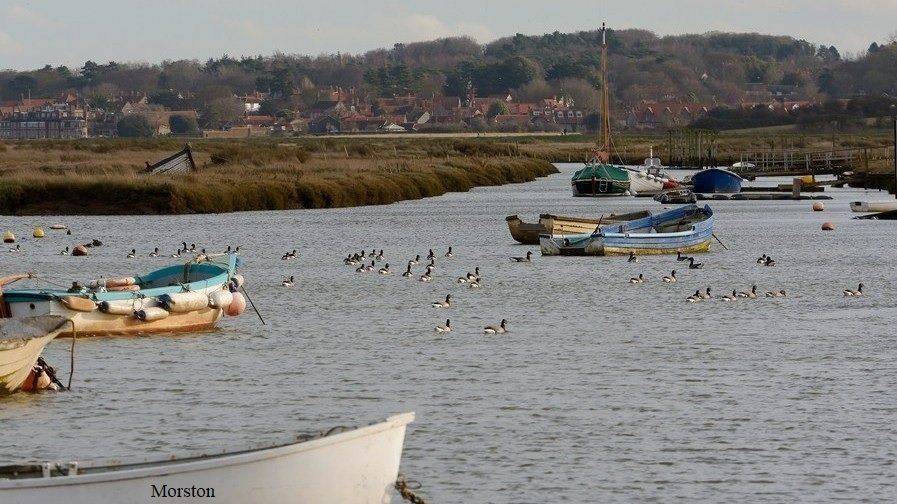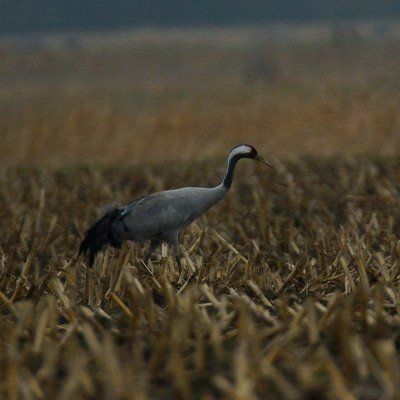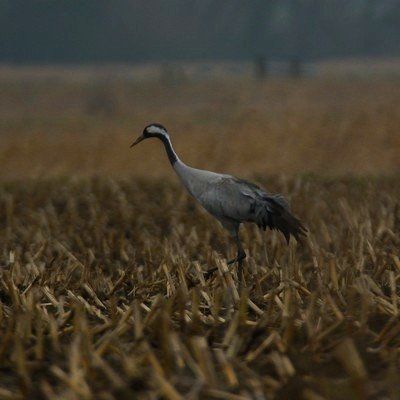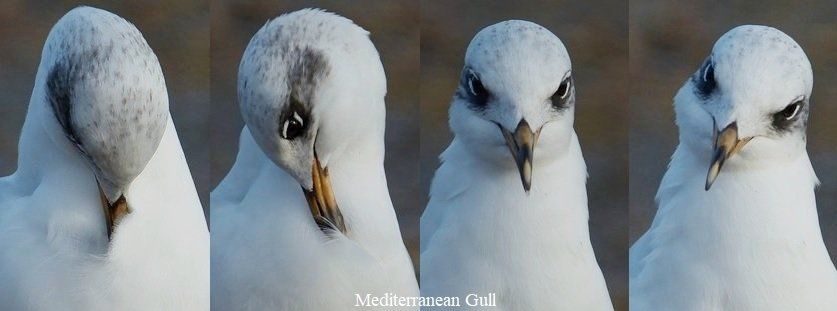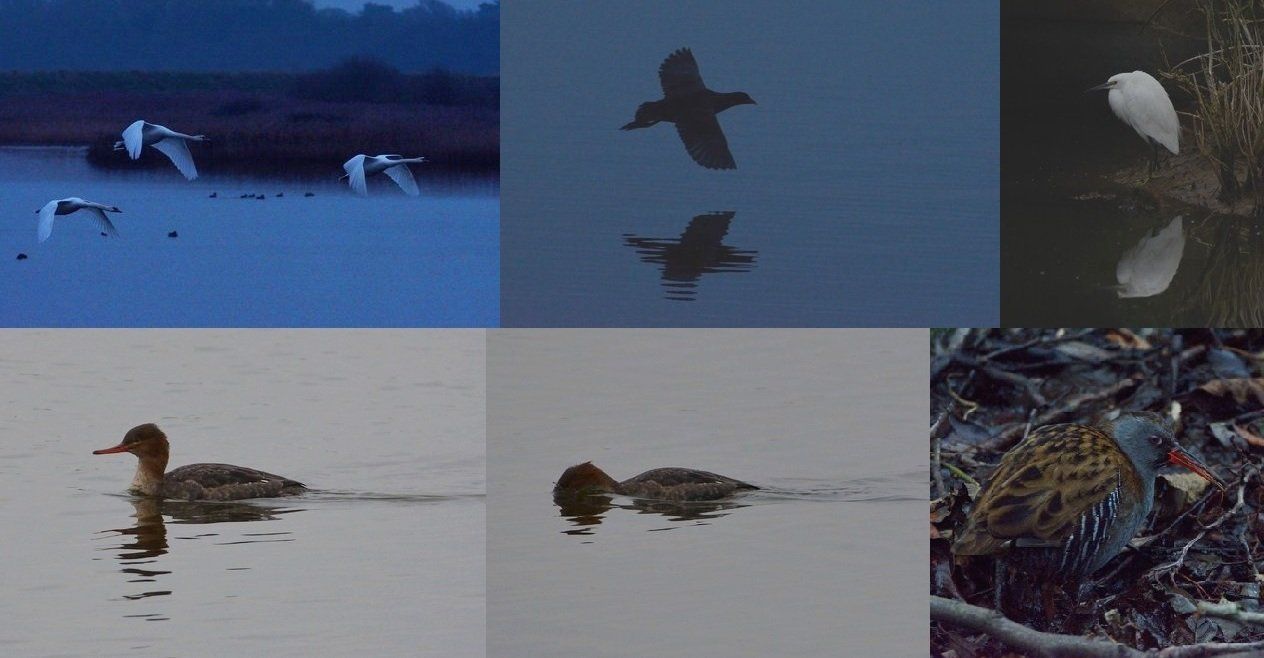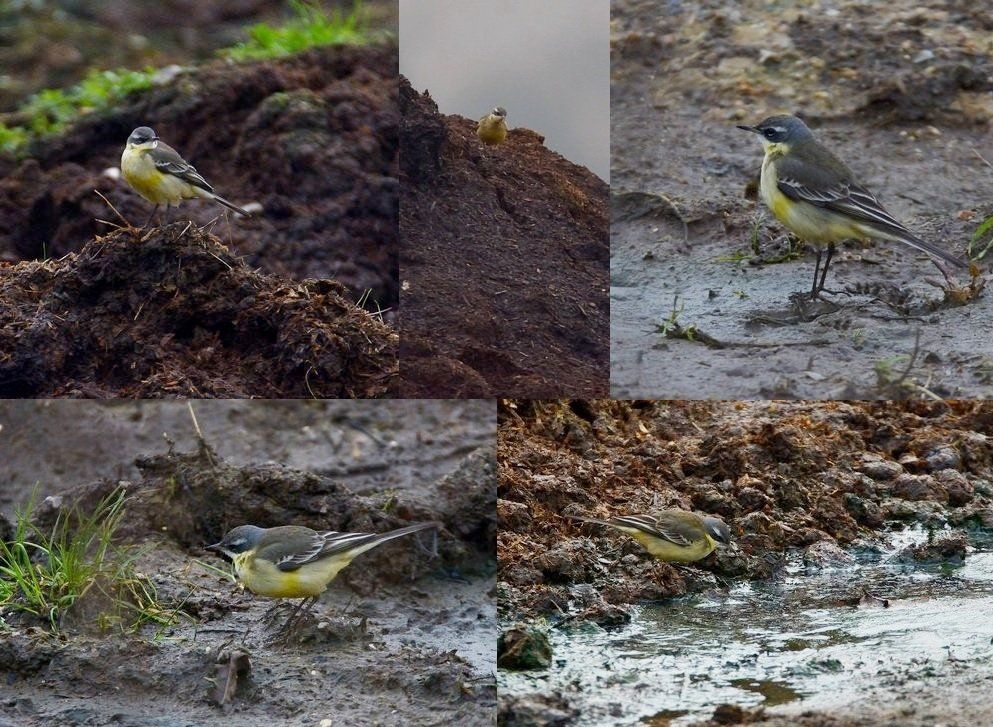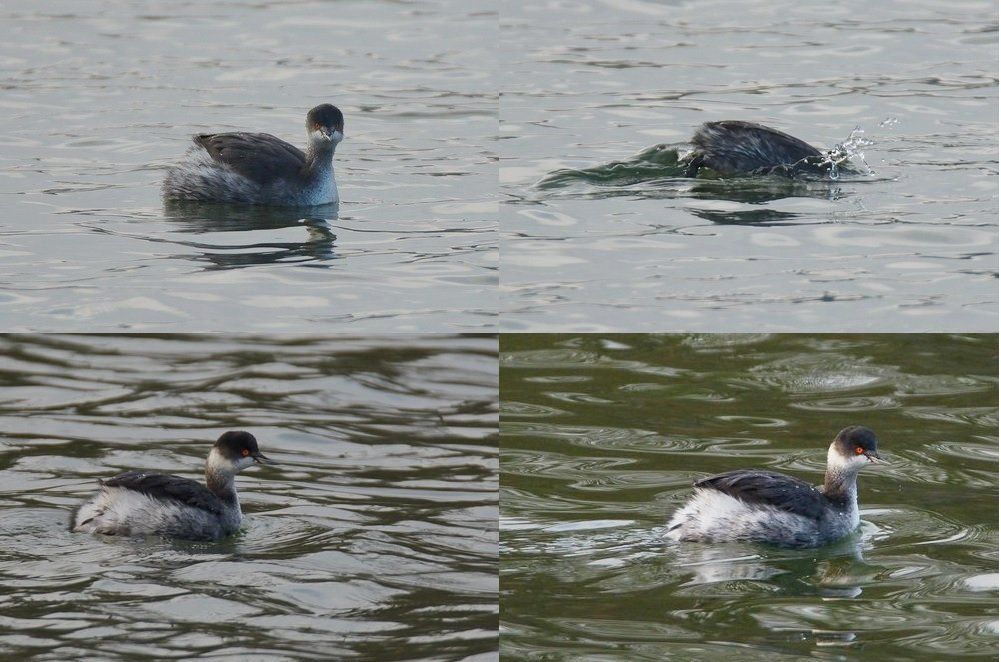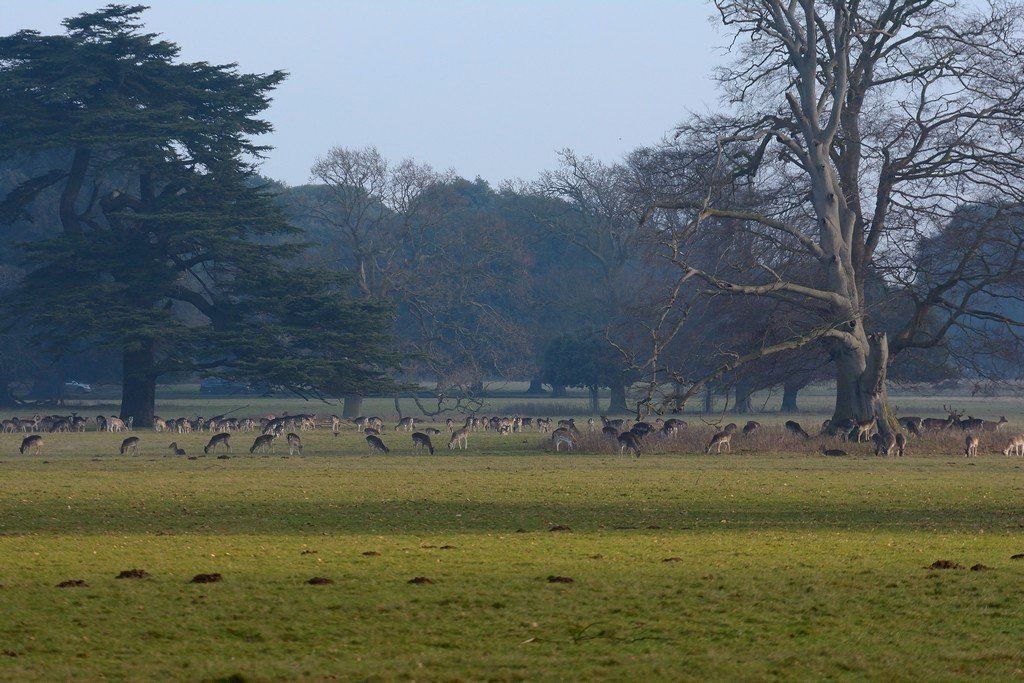
Wildlife Photo Diary 2024
April 2024
A new site, Wheatears, Spoonbills, Herring Gull fight and Med' Gulls......
Today (23rd) we decided to go and visit a new site in interior Norfolk called Alderford Common, brought to my notice by Ken Saul who had heard a Turtle Dove there. Now this site would not have been mentioned if it was not for the fact that this is a well known (not to me!) site for Turtle Doves (further highlighted by two different people we met there who both asked were we here for the Turtle Doves!) as Turtle Doves are a very threatened species now and indeed for some considerable time!
Anyway, the long and short of it was; we ventured out on this SSSI, which we hope to return to (and not just for the Doves), but due to the amount of water seeking gravity from the clouds we were not there long as it was pointless. We didn’t hear a Turtle Dove but on the walk back we did hear our first Willow Warbler and also heard Chiffchaff and Blackcap singing.
Heading towards the Norfolk coast from an unfamiliar route we came across 2 Red Kite just south of Wiveton and passing through Salthouse Heath heard our first Lesser Whitethroat and 2 Willow Warbler and Chiffchaff singing.
In a visit to Beach Road, Salthouse we found 2 male Wheatear, 4 Sand Martin and 4 Avocet.

Along Beach Road, Cley tolerating the cold northerly wind through the open window returned results with a Sedge Warbler singing; at least I think it was worth it!
A Greenshank was once again at Morston but a more disturbing sight was of further construction work along the channel, presumably for Seal tours! The colonies of Seals along the Norfolk coast, both here and at Horsey have seen far too much development and taking back of natural resources for increased tourism and indeed wealth. A Little Egret, Brent Geese and several Redshanks were also here and 2 Swallows were seen as we left the village heading west.

2 Red Kites were seen from the A149 just before Wells Pools, where 3 Avocet, 2 Black-tailed Godwit, 2 Mediterranean Gull, Brown Hare, 3 Marsh Harrier and a fly-over Spoonbill were also recorded.
Another Spoonbill fly-past was encountered as we stopped for lunch at Brancaster Staithe. A Grey Plover was also seen and some fighting amongst two of the Herring Gulls, was quite a confrontation, resulting in what appeared to be the loser walking off with presumably the female! But how much do we really know about what is a so-called common bird’s intraspecific behaviour?
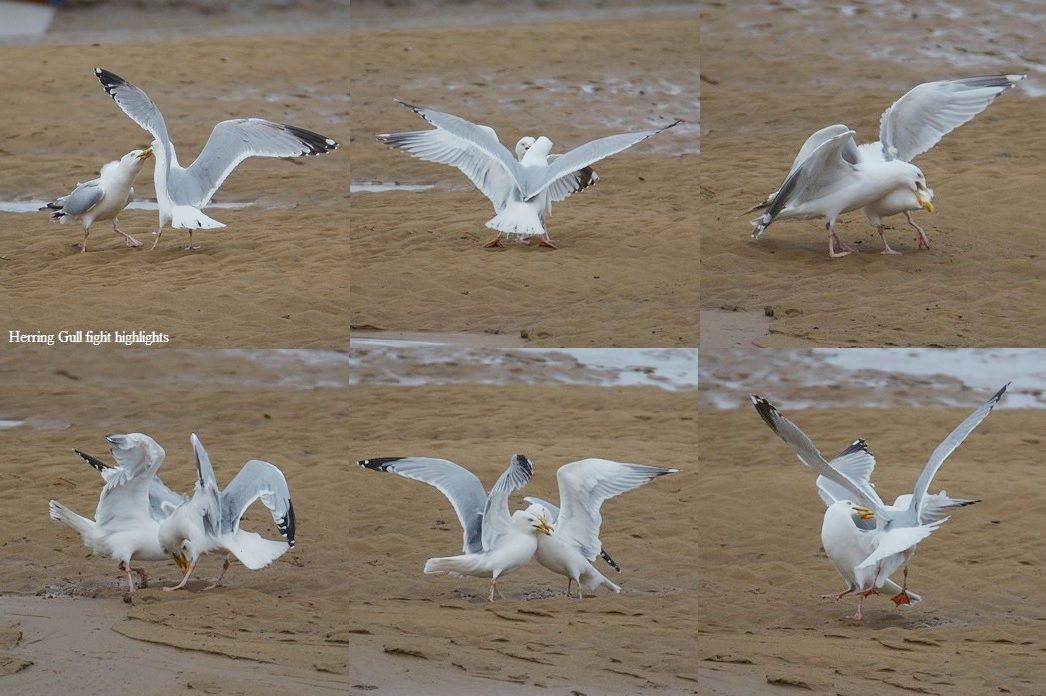

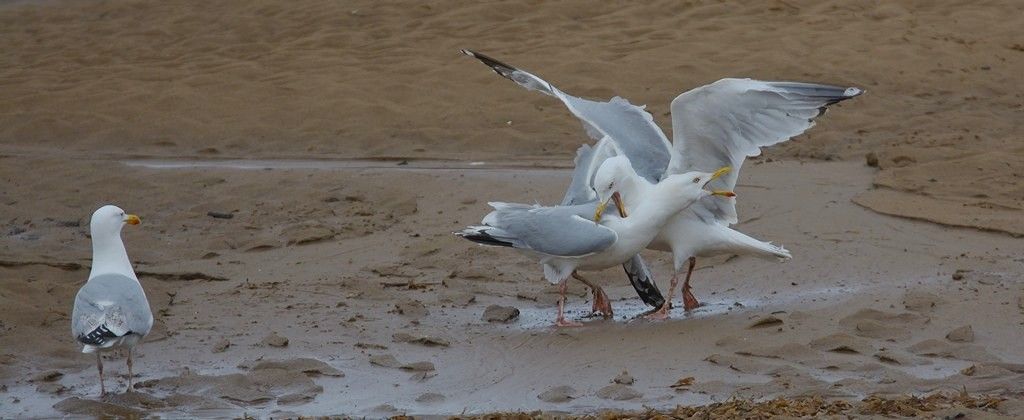

A drive around ‘the block’ at Choosley found at least 18 Mediterranean Gulls; all adults except for 2 immatures. 5 Brown Hare, 2 Common Buzzard and 3 Yellowhammer were also noteworthy here.
We stopped off at Burnham Overy Staithe, hoping for another encounter with the Red-breasted Goose but there were only a few Brent Geese here. The Red-breasted had not been reported but we like to have a look anyway. Sometimes it pays dividends and today was no exception with another fly-past Spoonbill; as Jase said at the time always a great bird to photograph in flight! 2 Avocet were also here as were 2 Little Egret.
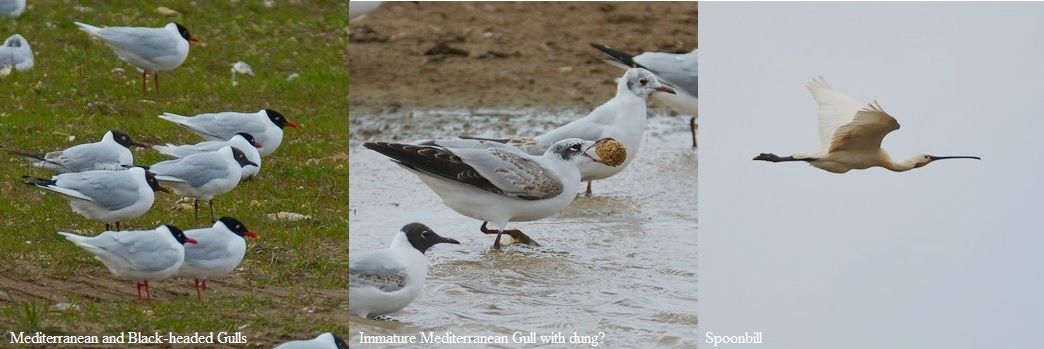
At Holkham Freshmarsh Cattle Egrets were seen again with 5 with one herd of cattle and another one with some more cattle further to the east. 2-3 Spoonbills were also seen, along with 2 Common Buzzard and 3 Muntjac.
A little further along the Freshmarsh 3 more Cattle Egrets flew past and 2 Barnacle Geese remained.
A look along Lady Ann’s Drive saw 2 more Spoonbill flyovers and several House Martins and Swallows were hunting insects over the field’s pools.
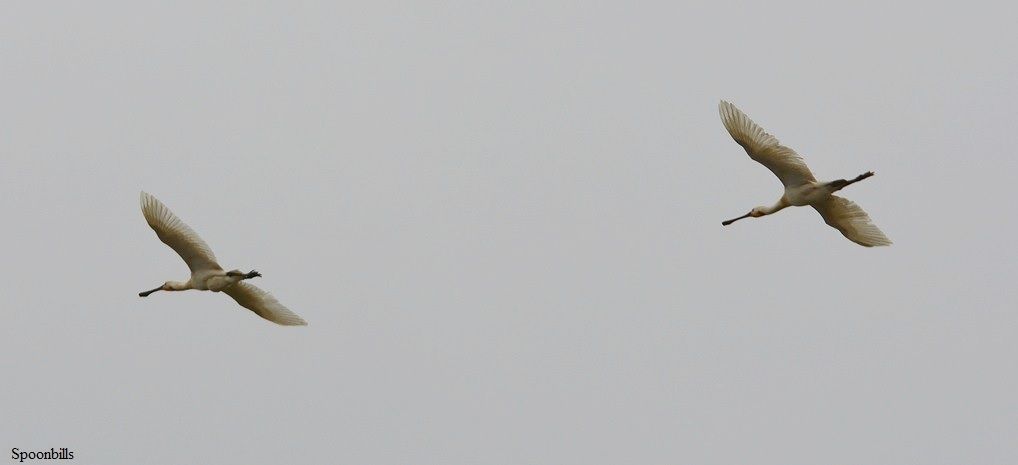
Red-breasted Goose, Ring Ouzel find and a picturesque Little Egret......
3 Sand Martins and a Swallow flying over at Beach Road, Salthouse (18th), began Jason Nichols and my day along the North Norfolk coast.
At Morston Harbour we found a Spoonbill asleep out in the saltmarsh and a Little Egret in front of that and then a Greenshank in the channel in front of the egret! Brent Geese were once again present here.
En-route we passed a Swallow on a wire near Warham, after a traffic diversion; again!
The Red-breasted Goose had been reported with Brent Geese at Burnham Overy Staithe and we had distant view of it amongst the Brents in the channel. However, the Brents began to take flight, but despite scrutinising every departing goose we could not find the Red-breasted in their midst. Even when they headed back again there was no sign of the R-BG, so any chance of capturing an image of this goose in flight was thwarted. Also here was a Great White Egret flying past, Little Egret, Mediterranean Gull and Red Kite.
Brancaster Staithe was next but the only real highlight here was 4 Avocet.

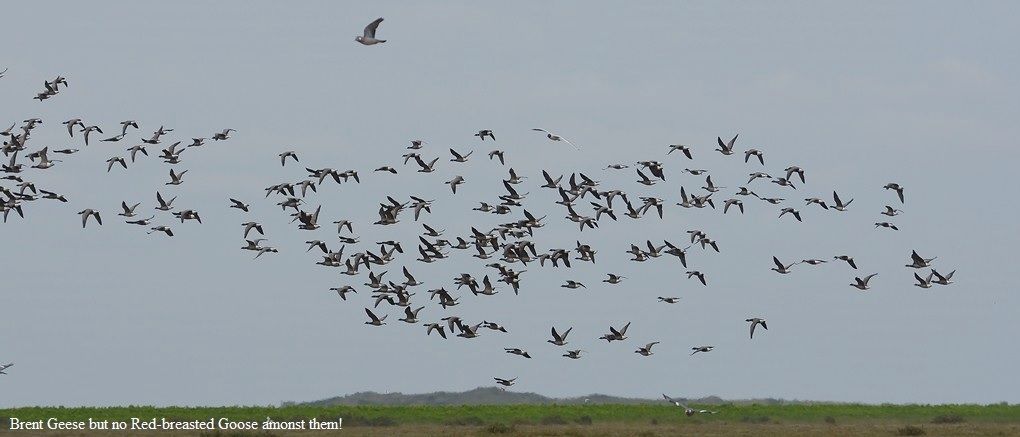
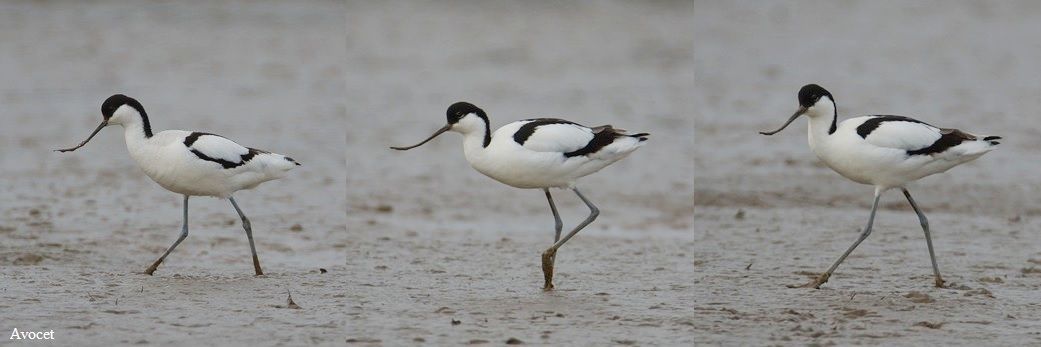
However, at Choosley, Jason spotted a male Ring Ouzel and Mediterranean Gulls, Muntjac 5 Chinese Water Deer, 12 Yellowhammer, 2 Oystercatcher, 2 Shelduck, Red Kite, Common Buzzard, several Stock Doves and 4 Brown Hare followed.

Travelling back through Burnham Overy, just before the bridge at the mill stood a Little Egret on a tree stump. Somewhat predictably we stopped to photograph this very scenic image.
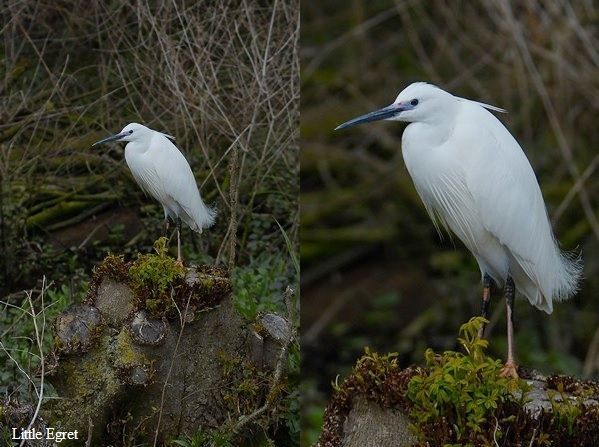
Travelling back through Morston I saw my first House Martin of the year and a Swallow. Unfortunately, Jase did not see the martin as he was ‘concentrating’ on the road!
A Glossy Ibis had been reported at Cley from Beach Road, but despite standing on a very cold and windy flood bank we could not find it so 3 Golden Plover had to suffice!

Wheatears, Garganey, Bee on the leg and a large flock of Cattle Egrets......
5 Wheatear were a welcome start to Jason’s and my day out in Norfolk (11th) on the Eye Field at Cley. Also here were Meadow Pipits and Skylarks, which gave the opportunity for some relatively close up photography.
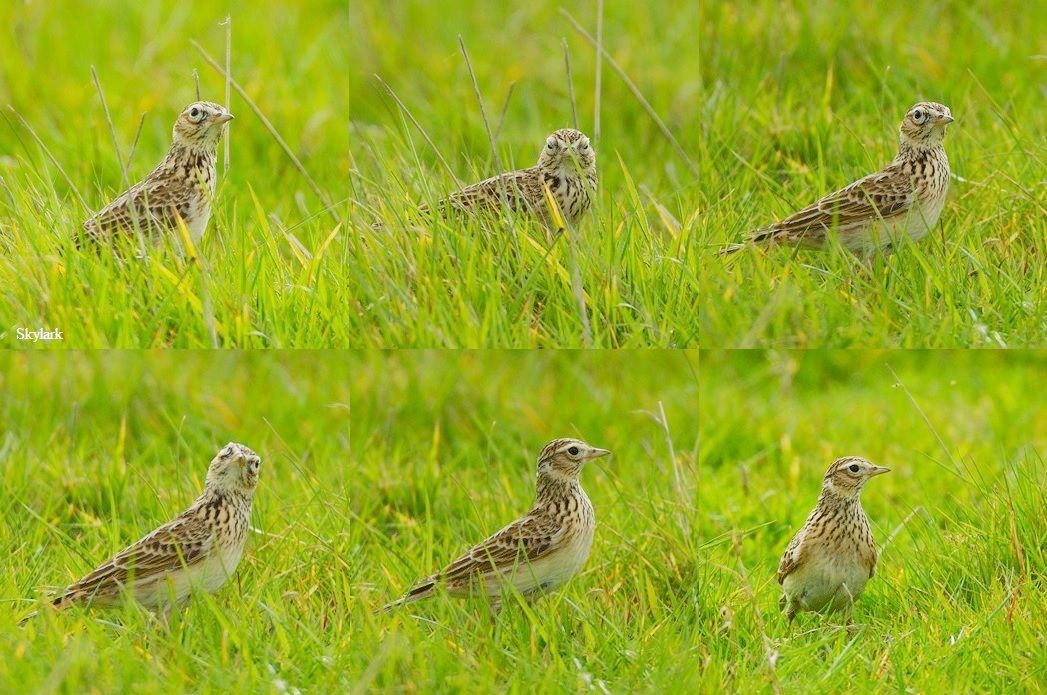
We decided to head straight to Thornham, as 2 Spoonbill and 2 Garganey had been reported (always great birds to see) and call in at our usual stops on the way back down the coast. No Spoonbills here but after working out where the pools were, where the Garganey were reported, from the flood bank we found a nice pair of Garganey, just below us. Also here were Gadwall and Teal and the drake Garganey constantly chased off any drake Teal near him.


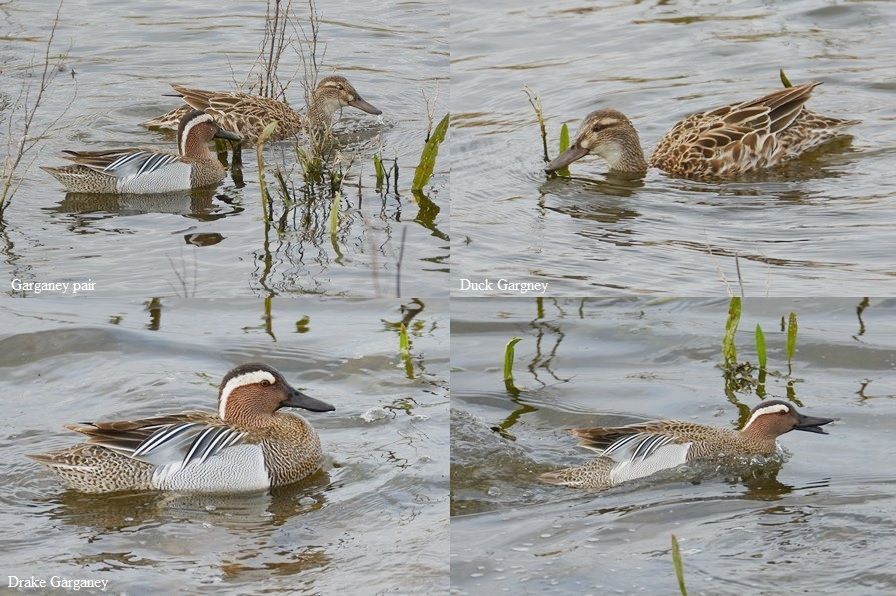

A drive around Choosley Barns followed and here we found a collection of spring Butterflies, including our first Orange-tips and also Holly Blue, Peacock and Small Tortoiseshell.
2 Chinese Water Deer were present plus one Brown Hare and bird wise we found 3 Red Kite, 2 Common Buzzard, approximately 12 Yellowhammer, a Corn Bunting and a pair of Grey Partridge near to the road on the grassy verge.
Whilst here, Jason noticed I had a Bee on my trouser leg and so I did! It was a female Andrena nitida Grey-patched Mining Bee. After a photo session with the said bee I encouraged her out of the car again.

At Brancaster Staithe 9 Black-tailed Godwit and 150+ Brent Geese were the highlights before stopping off at the pull-in at Burnham Overy to view the marshes. Here we found Red Kite, Common Buzzard, Marsh Harrier and in the distance towards the West 3-4 white birds in amongst the cattle, indicating Cattle Egrets.
Further along we stopped at ‘the gate’ at Holkham Freshmarsh and to our surprise found many more ‘white dots’ amongst, what was probably the same herd of cattle seen from the pull-in at Burnham Overy. Further scrutiny found these to be Cattle Egrets and when they flew up Jase estimated there were at least 25! Certainly, from the photos later at least 18 were visible in one image but I have no doubt there was more than that and certainly the biggest flock we have seen in the UK.
Also here we saw 3 Spoonbill, 2 Marsh Harrier, 2 Chinese Water Deer, a Blackcap heard singing and another male Orange-tip. Further along from the other pull-in we found 10 Barnacle Geese.

At Morston a Swallow was on the telegraph wires and Brent Geese were the highlight from the harbour.
We looked for a reported Ring Ouzel near Bodham on the return journey home but didn’t succeed in finding it.
Raptor photography, Egyptian family and finally, a Night Heron......
With a Night Heron a possibility, Jase and I set off along the North Norfolk coast (4th) seeing a very pale phase Common Buzzard perched on a tree guard at Felbrigg Park en-route.
With very little along Beach Road, Salthouse we headed for Cley and parked up at the pond at Walsey Hills as the car park (where we really wanted to be) was full at the start of the East Bank. However a pair of Pochard was on the pond and Little Grebes could be heard calling, or should that be singing!

The reason (on this occasion) for the East Bank car park being full was just west of the car park was where the wood was being viewed from, where a Night Heron (now named-Black-crowned Night Heron) had been seen.
The first thing than caught our attention was the sounds coming from the Heronry, which were somewhat indescribable and presumed to be emanating from the Little Egrets nesting there,; gurgling and gargling etc at best described!
Whilst stood there we heard our first Sedge Warbler of the year and also the tones of Chiffchaff and Cetti’s Warbler, but it was becoming clear that spotting this heron was no easy task, as there were very few gaps through the wood and its interior being quite dark and where there were visible ‘gaps’ these were thwarted by branches. In fact it was some time before we actually saw a Little Egret in there and when these sat down in their barely visible nests they too couldn’t be seen.
There had been one report of the Night Heron earlier in the morning but none since and the small group assembled there could not see it, as couldn’t Jase and me, so with us and equipment getting very wet we decided to leave and come back later.
With only a pair of Oystercatchers along Beach Road, Cley we headed to Blakeney and from the harbour looked for the recently reported Red-breasted Goose, but despite there being a good number of Brent Geese here there was no sign of the red-breasted and a few shots of a close in Little Egret had to suffice the visit.

Further along the road we stopped and looked over Blakeney Freshmarsh but apart from a few species of Duck there was very little else so we pressed on.
At the Horse Paddock at Morston (privately named ‘Thrush Corner’) a Common Buzzard was perched on a post and turning around and driving slowly past and parking up near the paddocks I managed to get some fairly nice portraits; unfortunately it flew onto the stable before Jase could point his camera at it! A Magpie was also photographed on another post and there was a facially ‘scarred’ Rabbit in the bottom of the hedge, keeping an eye on the buzzard!
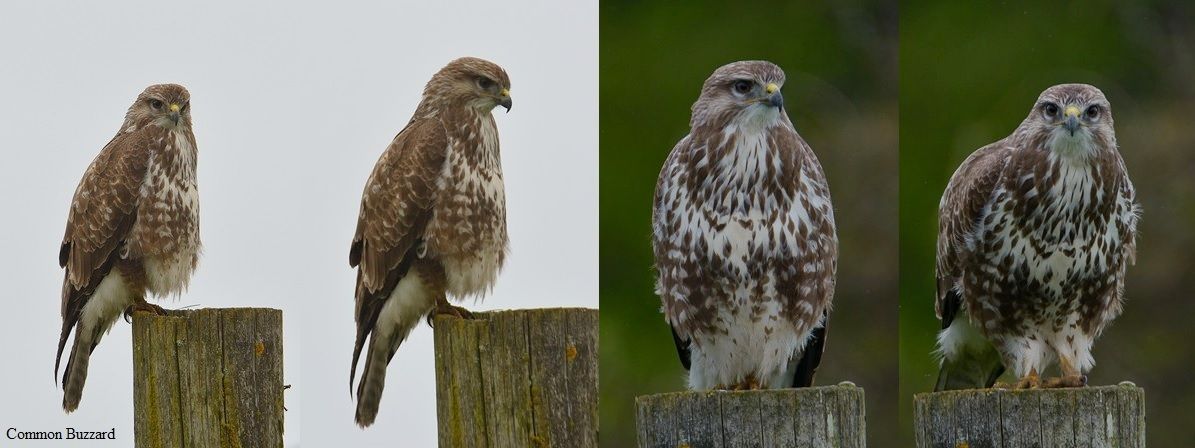

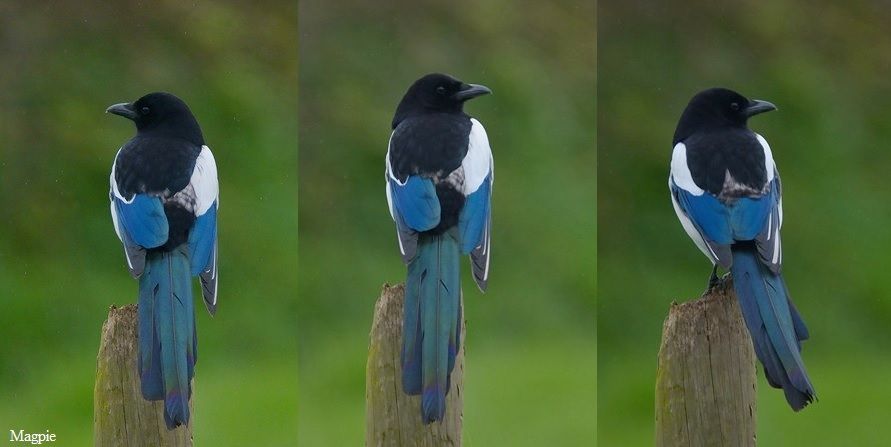
Calling in at Morston Harbour was rather uneventful but at least 10 Redshank, Curlew and 4 Oystercatcher were of note.
On to Wells Pools where more bird of prey photography was had when a Red Kite (one of two ultimately) hanging around over the adjacent field and also perching on a fence post, before using the combination of its wings and tail to keep it position, whilst scouring the field below it. A Common Buzzard was also here as was a potential pair of Marsh Harriers; at one point one of the harriers came to close to a Brown Hare and the hare chased it off and also reared up towards the potential threat. I have seen this kind of behaviour before between the same two species. A fully grown Hare would most likely be too much for a Marsh Harrier but the Leverets certainly wouldn’t be!
At least 7 Brown Hares were seen in total as was a Chinese Water Deer. 50+ Black-tailed Godwits were seen as well as several Avocets.
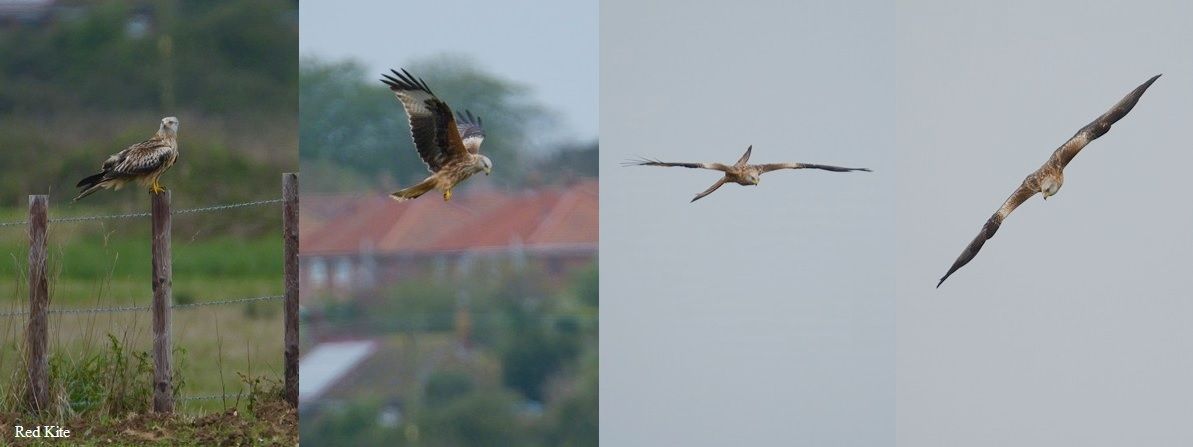


Instead of venturing further west I suggested it might be better to head back to Cley, visit the ‘middle’ hides and also be in the area in case the Night Heron was reported again. So, back towards Cley it was.
With the Long-billed Dowitcher being reported again we first looked for it from the eastern-most hide, but despite a few Black-tailed Godwits, which it often frequents with there was no sign. Plenty of Avocets though and a single Ruff, but two Little Ringed Plovers were our first for 2024. Also here was a family of Egyptian Geese with 5 goslings, which proved irresistible to the camera!
Entering the adjacent hide, we ‘bumped’ into Guy and Tim Oxborough who told us where the Dowitcher was and so after a brief conversation we view the American visitor briefly before it disappeared again before coming out again briefly later. Another Ruff was here along with more Black-tailed Godwits and Avocets and a Bittern was heard booming.
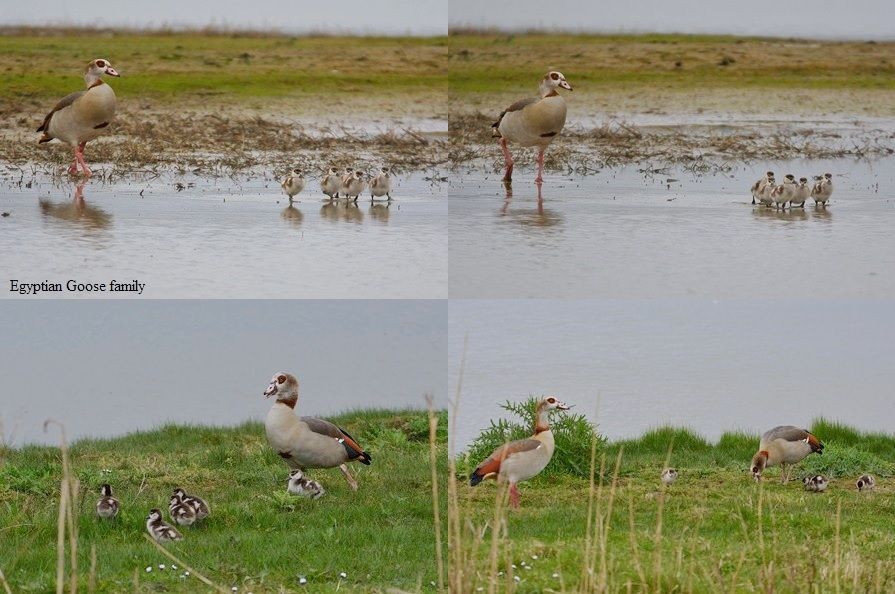

There had been no reports of the Black-crowned Night Heron since the solitary morning report, but we returned there nonetheless.
The small Heron had still not been seen according to the 3 people stood there and they eventually left and we continued to look for the heron, seeing several Little Egrets come and go and once again those sounds emanating from the wood!
We were then joined by another individual who we later found out to be Gary, who ironically had seen and reported the bird in the single morning report. He stood to the left of us and somewhat surprisingly after a few moments said he could see it preening! Gary was good enough to let us have a look through his scope and then we set about trying to find it for ourselves in the near impenetrable, dark ‘wildwood’ with its peculiar audio!
This was my first Night Heron in the UK (not that that really matters nowadays) but I was very pleased to finally see it and then set about the nigh impossible task of at least capturing a worthwhile distant and dull image.
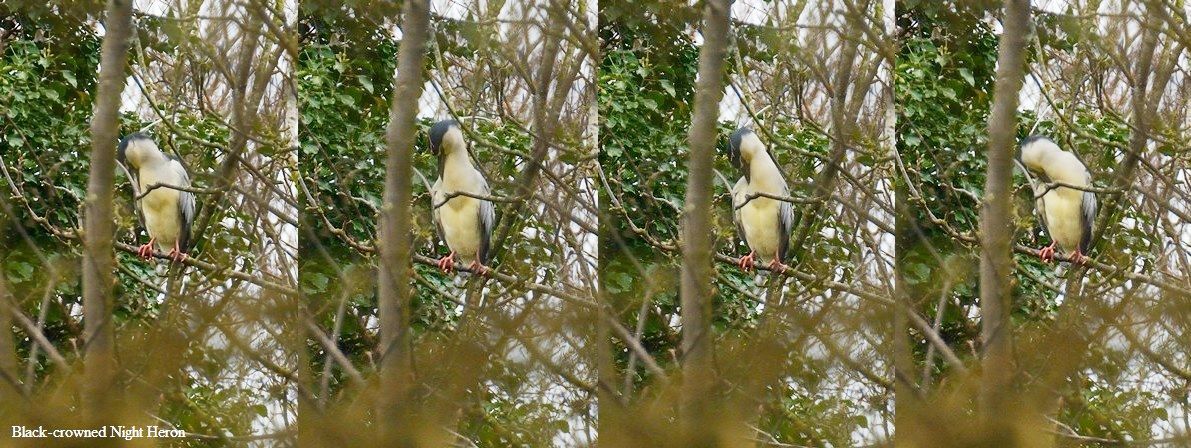
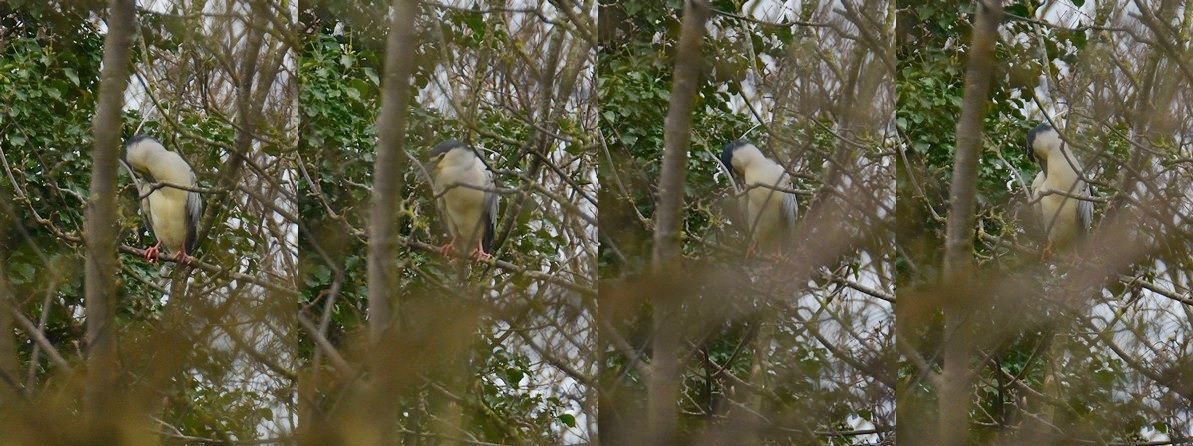
Whilst I was going about this I noticed that Gary had got a sketchbook out and was drawing and indeed painting in watercolours. Now you do not see this way of recording animals only rarely nowadays and I was impressed and asked him about his artwork and if he would send an image from his sketchbook to use on the website.
Meanwhile, photographing the Night Heron was proving rather tricky and was one time I could have done with a tripod as using auto-focus was a no no, with all the branches, big and small in front of the preening heron! However, I persevered manually focussing whilst trying to hold what is a rather heavy lens still and in focus, at least what I could see to be in focus in the gloom and only using 800 ISO, f.8 1000 shutter speed.
Eventually Jase saw the heron fly to the left somewhere out of sight (of which there was multiple opportunities!), but before we left I spotted 2 Swallows flying west over the reedbed; the first of the year.
A really good day despite the rain, dull skies with the odd bit of sunshine and I can report that Gary Wright did send me a small image of his sketchbook (right-copyright Gary Wright), with work that almost emulates stuff you would see by Tunnicliffe!
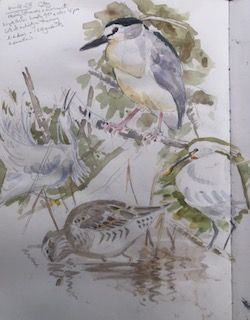
March 2024
Shags, Scoters and Cattle Egrets start the day......
Today (28th), with Jason began at Winterton where we looked for recently reported Velvet Scoters. However, the first ‘dark birds’ on the sea turned out to be 3 Shags not Scoter but then 2 Scoter flew past and landed and both had white wing panels so we had eventually found Velvet Scoters, along with a fly-past Red-throated Diver and several Grey Seals.
A drive along the coast road found very little but turning off towards Hickling at Sea Palling produced 2 Cattle Egrets in a field with cattle and nearby a Chiffchaff was singing.

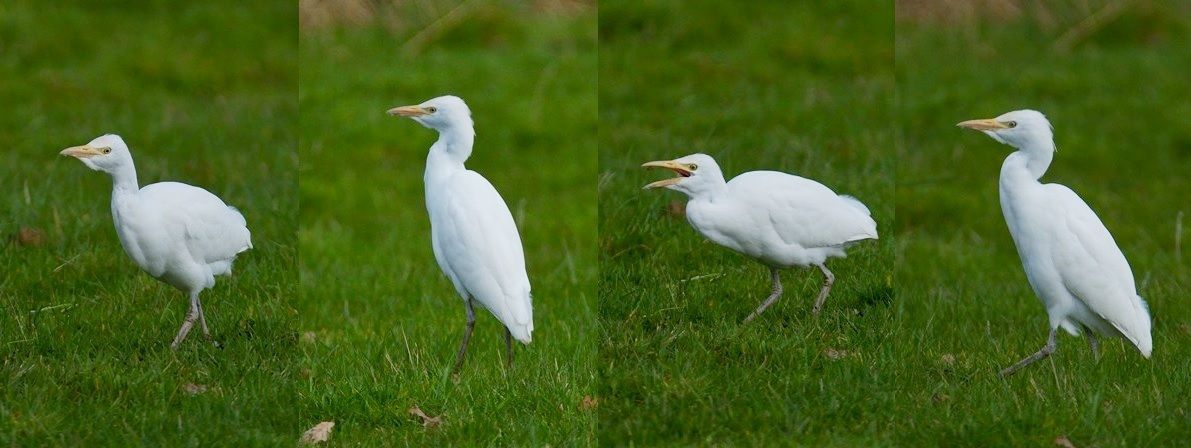
Heading along the Stalham By-pass, Jase said he had just seen a black and grey Crow, so with a little encouragement from me we turned around for what turned out to be three passes to try and see what this Crow was. On the second pass I saw the crow from above as it was just in from the road on a field and saw that the grey and black upperparts were very ‘clean’ and suggested a Hooded Crow and not a Carrion/Hooded hybrid. However, on the third pass to try and get photos the crow had disappeared!
Moving further along the coast a Red Kite was seen at Weybourne and then another at Beach Road, Salthouse where there was also a Little Egret and 10 Curlew.
A walk along the ‘Iron Road’ at Salthouse in search of a charm of Twite seen at the end of the road was unsuccessful. Nevertheless, birds seen from along the track were: 5 Ringed Plover, 3 Ruff, 6 Avocet, Common Snipe, 2 Canada Geese, Marsh Harrier and yet another Red Kite.
At Morston 6 Redshank, 2 Curlew, 4 Oystercatcher, Marsh Harrier and at least 10 Brent Geese were recorded, before moving on to Wells Pools where the 4th Red Kite of the day was seen along with 13+ Avocet and 30+ Black-tailed Godwit.
Despite stops at Holkham we found very little else and decided to head back with a one last unsuccessful attempt to find the ‘Crow’ again!
First Sand Martins and Wheatears!
The day (21st) began along the North Norfolk coast at Beach Road, Salthouse with Jason Nichols and it was here we saw our first two Sand Martins of the year.
We decided to head for Titchwell in search of Waxwings, seeing 4 Brown Hares and 2 Red Kites, whilst passing Holkham. However, there was no sign of any Waxwings along the approach road at Titchwell only a singing Chiffchaff was worthy of note.
A bit of information revealed that the 5 Waxwings had just been seen in a dead tree at Choosley, but again no Waxwings here either, so we continued with our ‘round the block’ drive at Choosley where we found at least 6 summer plumaged Mediterranean Gulls, Red Kite and 4 Common Buzzard together, 6 Brown Hare and 2 Chinese Water Deer.
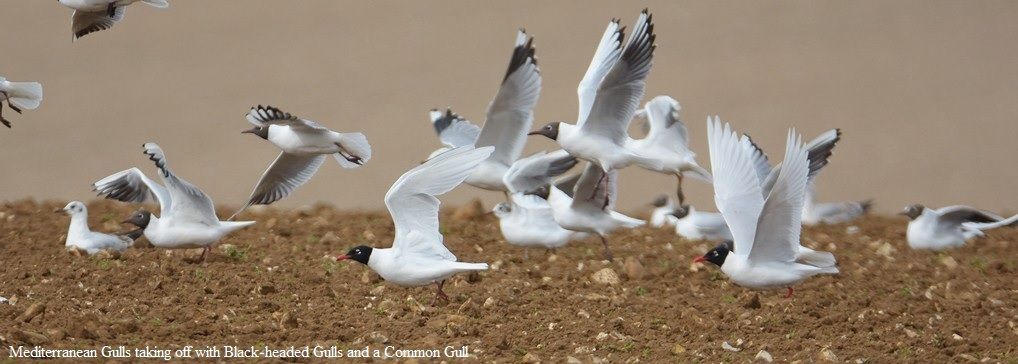

At Brancaster Staithe we found another Red Kite and a few waders, represented by Curlew, Redshank, Oystercatcher and Turnstone.
A view from ‘the gate’ at Holkham found at least 7 Spoonbill (hopefully there for a successful breeding season), 3 Marsh Harrier, Red Kite and further along in the next pull-in; 3 Barnacle Geese, Brown Hare and a Chinese Water Deer.
The highlight at Wells Pools were 21 Avocet, but just before Morston a doe Roe Deer was seen and then whilst watching the deer 2 Mistle Thrushes were also seen.
A return to Cley Beach Road was very worthwhile were we (Jason!) spotted a female Wheatear followed by a male. Our first Wheatears of 2024 and opposite on Blakeney Freshmarsh there was a male Stonechat.


Another stop along Beach Road, Salthouse 2 Ringed Plover was seen and a pair of Linnets perched on the wires provided a spot of photography to finish the day with.
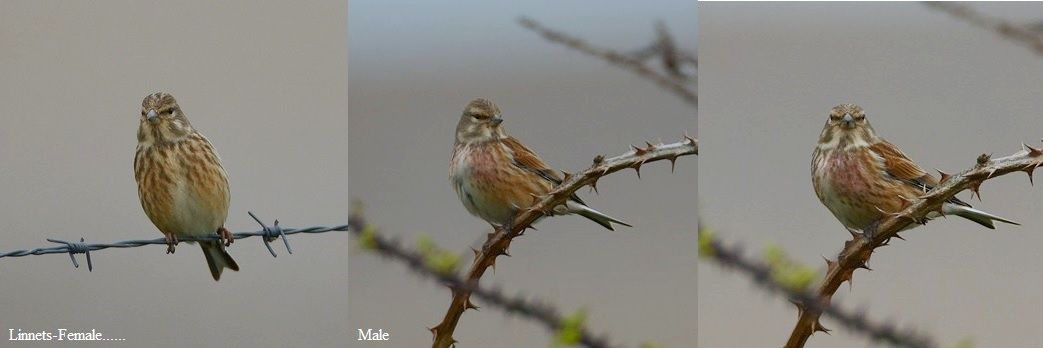
A wet day in the Brecks, but Hawfinch saves the day......
With Jason now back from his successful trip to Florida to see Manatees it was back to the usual (12th) and the first combined fieldtrip of March.
Heading to Norfolk’s interior (The Brecks) it became very clear as we travelled we were going to get wet! And so it was to be as we began walking towards the site for the reported Great Grey Shrike near Weeting. However, a short way down the track Jason checked the details of where the shrike was meant to be and with the conditions what they were and the distance involved, we decided to try somewhere else.
The rain and gloomy conditions continued and according to the BBC weather forecast would continue to do so all over Norfolk, but we drove to Lynford Arboretum in search of anything we could find!
We walked down to the ‘gate’ and looked down the tunnel of trees where food had been provided as well as a depression for water (not that, that was needed today!) and found several birds coming down for seed. These were mainly Chaffinches and Blue Tits but it was a start.
Nuthatch, Bramblings, Dunnock and Yellowhammer added to the variety and then I saw a Hawfinch on the ground. The male Hawfinch was feeding amongst Chaffinch and Brambling and the size comparison was there for all to see! Later Jase saw a female Hawfinch as well and despite the terrible photographic conditions we managed to get some images with some far from normal camera settings!
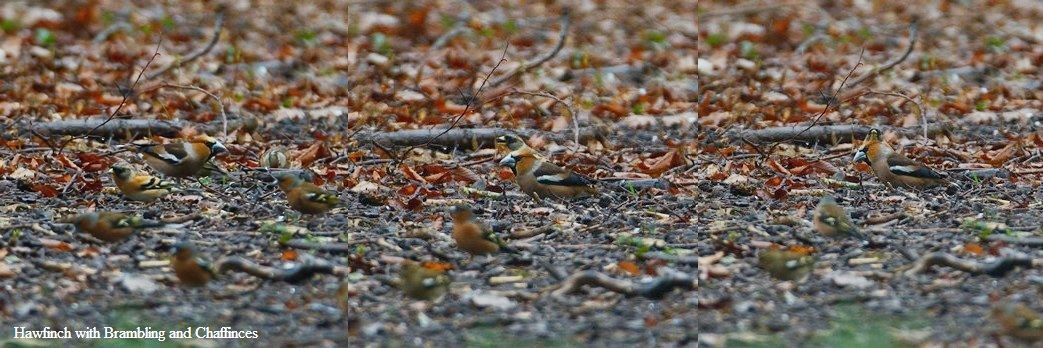
Deciding the camera equipment had enough of the conditions (let alone us!) we headed back to the car and then drove to Cockley Clay for lunch and in search of Goshawks that wouldn’t be there; and they weren’t!
So, we decided to head back closer to home and thus adding to the animal RTA’s seen already along the A11 with 2 Badger, 2 Fox and 3 Muntjac; approximate totals both ways.
First port of call was the area around Clippesby where we found 10 Cranes including two juveniles. A bit of displaying ensued, always nice to see the Crane dance and 2 Common Buzzards and a Sparrowhawk were also of note here along with several Stock Doves.
The road from Hickling to Sea Palling came up trumps (not to be confused with that idiot yank!) with a total of 4 Cattle Egrets feeing amidst the ‘large white cattle’ at Sea Palling. A Brown Hare was also seen in a field and a Common Buzzard perched on a nearby fence post avoided my photography albeit in still very dull un-photogenic light, so never mind!
A damp but still enjoyable day with my partner in crime back and we still came up with the goods!
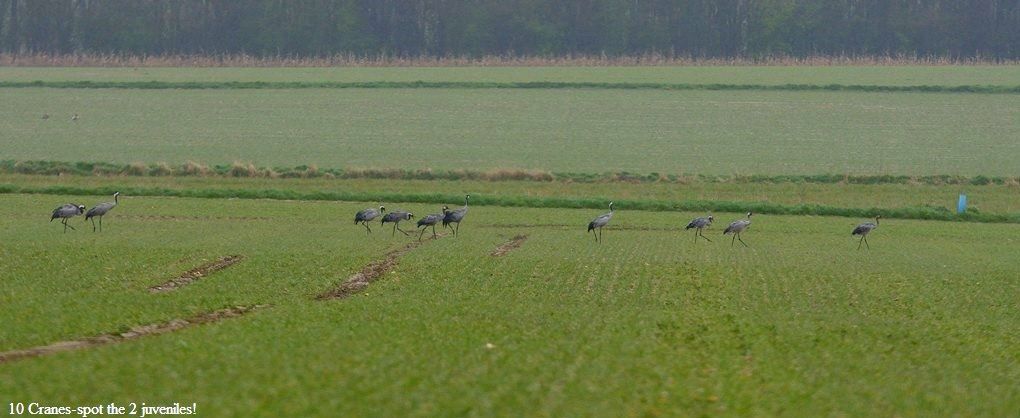

February 2024
First Bumble, Spoonbill and Grey Partridge of the year......
The day out (15th) with Jason got started at Beach Road, Salthouse with a male Stonechat perched on the fence wires and a Little Egret was also of note.
With very little along Beach Road, Cley we stopped at Morston on the corner opposite the church where we found 4 Redshank, approximately 80 Curlew and our first Buff-tailed Bumblebee of the year. At the quay 30 + Brent Geese were the only birds of note due mainly to the high tide.
En-route to Wells we came across a Red Kite at Stiffkey and at Wells Pools our first Grey Partridge calling as it walked across the path. Another one was heard and Red Kite, 3 Marsh Harrier (males calling), Common Buzzard were the birds of prey present along with the Wigeon and Teal they made to feel very uneasy!
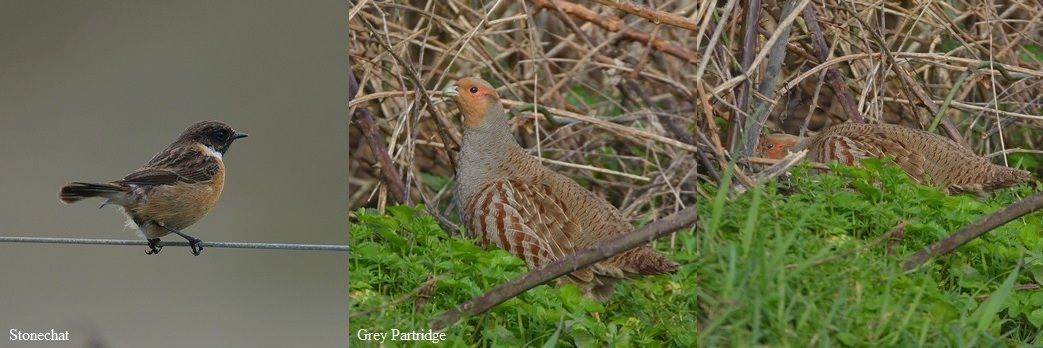
Various Duck species were found along Lady Ann’s Drive at Holkham but the area did not yield the biodiversity as it did last Thursday.
A stop for lunch at Brancaster Staithe found a few waders, which included Curlew, Turnstone and Oystercatcher and ducks but not too much of note due to the high water level.
We had already passed a few Brown Hares along the drive, which seemed to be quite active and here at Choosley we saw at least 10, along with 2 Chinese Water Deer. Birds here were: Red Kite, Marsh Harrier, Common Buzzard, 4 Yellowhammer, 12 Stock Dove and a mixed charm of finches containing Chaffinch, Goldfinch, Linnet and a few Bramblings.
The pull-in along the A149 at Burnham Overy found our first Spoonbills of the year with 2 present on the distant pools and a Great White Egret was also seen here.
With work going on at Holkham from ‘the gate’ there wasn’t much to see so we travelled a short distance to the second pull-in where we found 3 Barnacle Geese of uncertain origin with Grey-lag Geese, 3 Common Buzzard and a flock of Spoonbills in flight numbering about 12, which set down out of sight somewhere on the distant Freshmarsh.
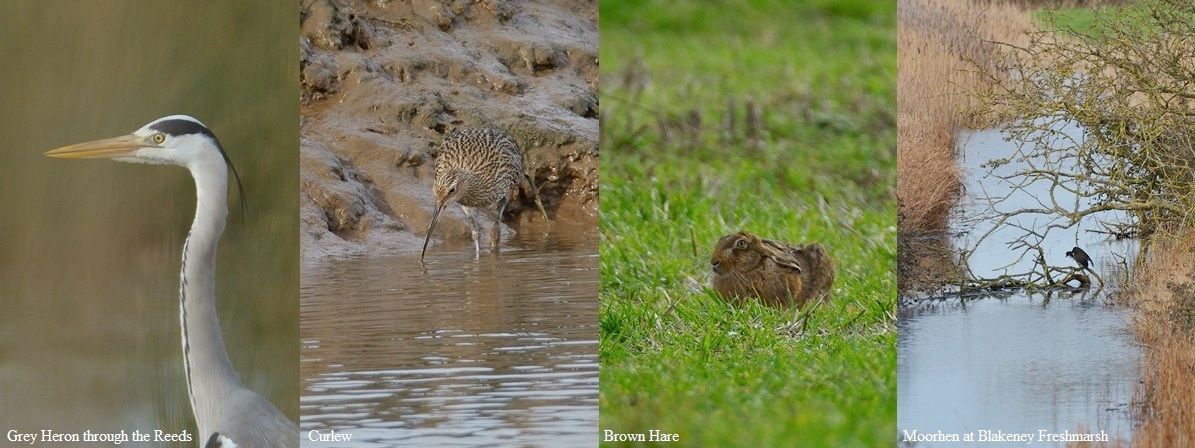
On the way home we visited the flooded potato field at Sutton where we found 30+ swans still present. This time there were mainly Whooper Swans with several Mute and 1 Bewick’s Swan. With reports of Bewick’s seen flying east in the past week or so, no doubt heading back to their breeding grounds it was very worthwhile to stop and get some more images of ‘wild swans’ as an opportunity like this at such close quarters doesn’t come around often, if at all!


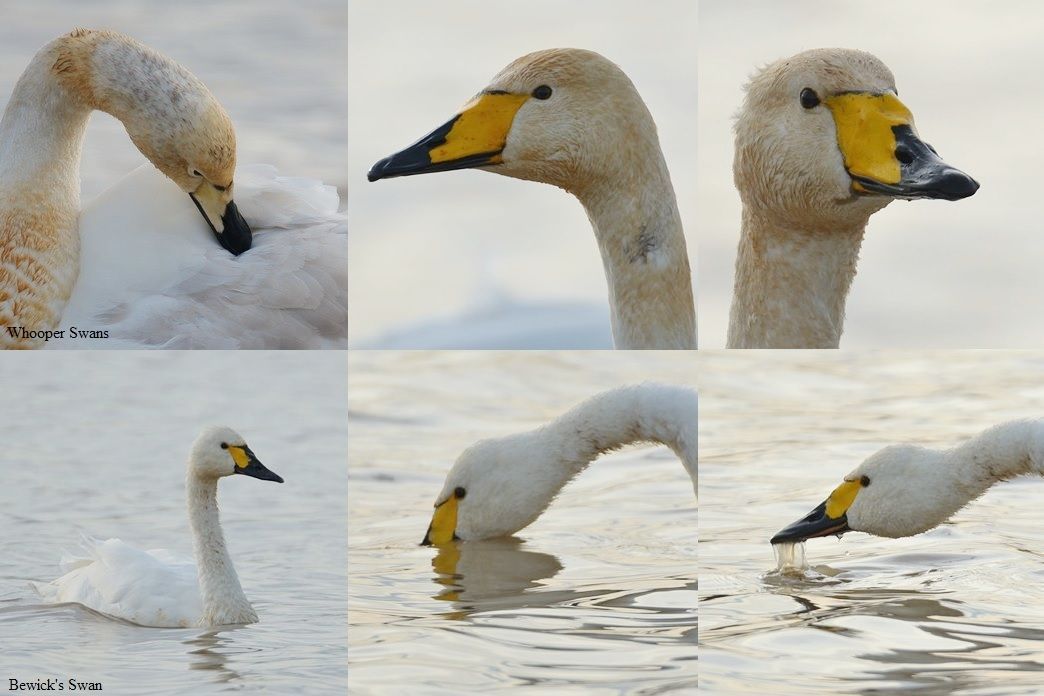
Birds utilising wet and flooded grassland on a murky, cold and precipitating day......
Another overcast, precipitating, murky Thursday (8th) with Jason Nichols began at Beach Road, Salthouse, where a male Stonechat was the only bird of any significance, or any degree of significance!
A flock of approximately 300 Brent Geese were on the field adjacent to the Cley visitor centre (but no Red-breasted Goose amongst them) and the Eye Field from Beach Road, Cley provided us with a few waders in the gloom, notably; Golden Plover, Lapwing, Oystercatcher and Turnstone. A Great White Egret was on the field where it had been seen on two previous occasions just outside Cley village.
Another Great White Egret flew in at Blakeney Freshmarsh, where there was also a Marsh Harrier making the Wigeon and other birds present very nervous!
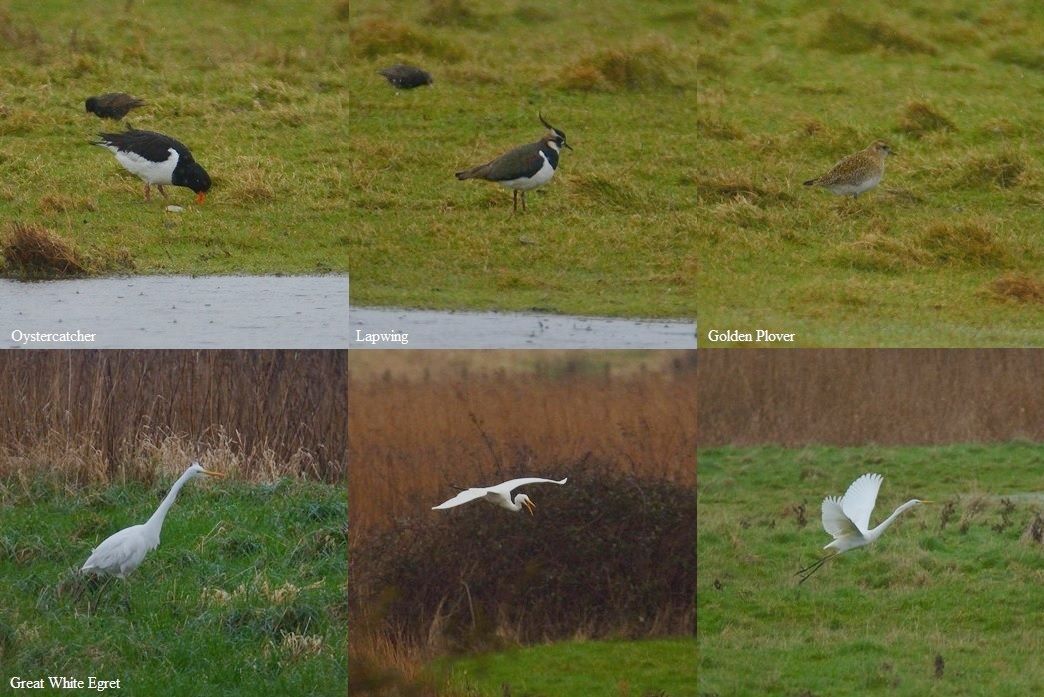
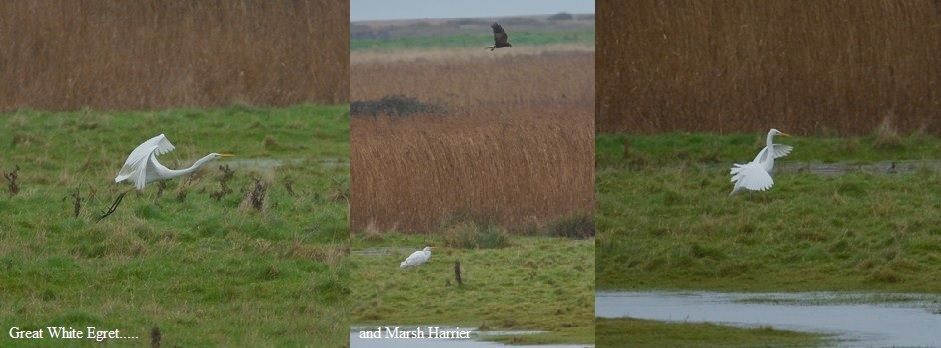
The Horse paddock opposite Morston church (which we named ‘Thrush Corner’ some time ago) lived up to its name with a 30+ flock of thrushes containing both Fieldfares and Redwings, but also very notable here were a count of 52 Curlew also. A Little Egret was on an adjacent field and it did seem that the recent and today’s weather was providing food on wet and flooded grassland for birds.


At Morston Quay we eventually found a Greenshank again and also here were 14 Dunlin, 6+ Redshank, 2 Grey Plover and a Little Egret.
Driving past the flooded area just before Stiffkey Village we saw some duck there, in passing and decided to turn around and go back for another look. Stopping along the bendy road here is very difficult but a very brief stop allowed a few images of what was a pair of Pintail and Egyptian Geese.
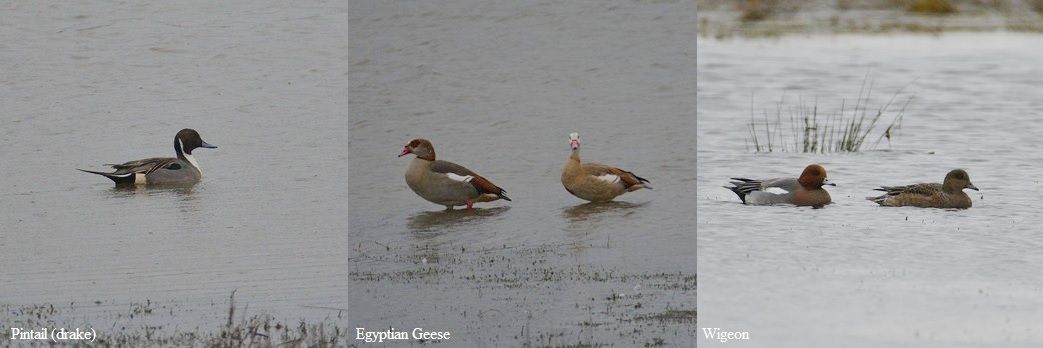
With no sign of the recently reported Glossy Ibis on the flooded fields at the end of Stiffkey village we continued to Wells Pools where there were good numbers of Wigeon but very little else, but gunfire heard may have been the reason!
More wet meadow watching continued along Lady Ann’s Drive at Holkham and we were rewarded with our first Ruff (3) of the year, alongside 5 Common Snipe, 8+ Black-tailed Godwit, Lapwings, Teal, Wigeon, Shoveler and Mallard. 2 Common Buzzard were seen to the east of the drive, one being a pale individual perched on a fence post in the distance. But the dark-morph Buzzard was on the ground alongside 2 Marsh Harriers and a Red Kite repeatedly flying over the same area. It was obvious there was carrion to be had and a Marsh Harrier flying off with something and later via images confirmed this; the object of the birds of prey attention was a dead bird, possibly a duck species.
There was no sign of any Cattle Egrets this time at Burnham Norton, but there were at least 1000 Pink-footed Geese in fields opposite the turn-off for Burnham Norton and 9 Muntjac in one field along the lane.
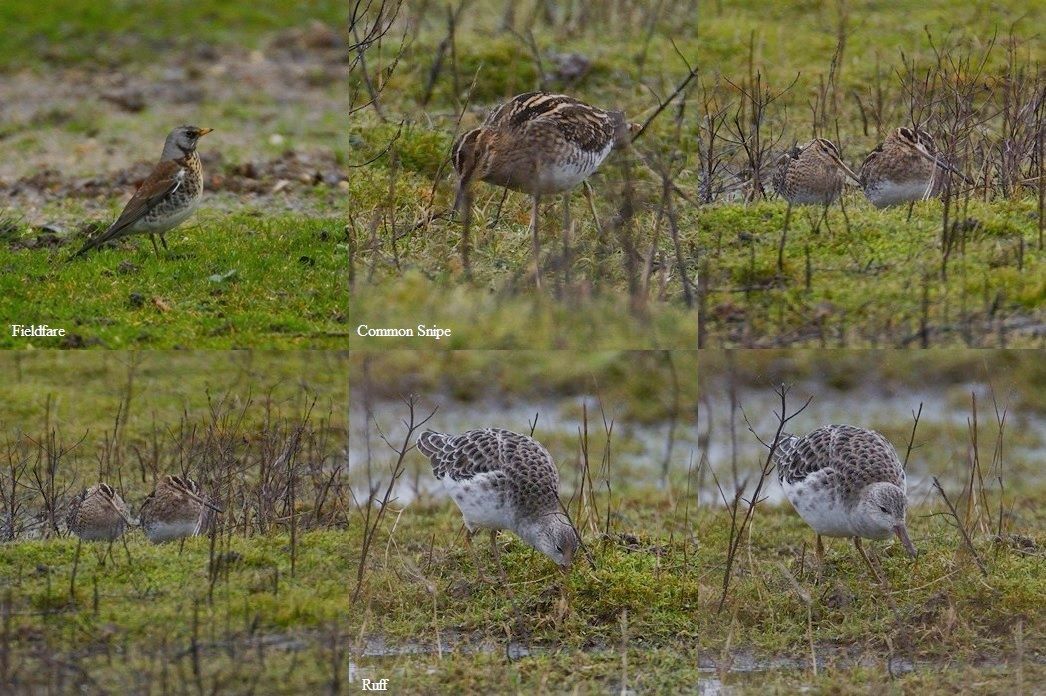
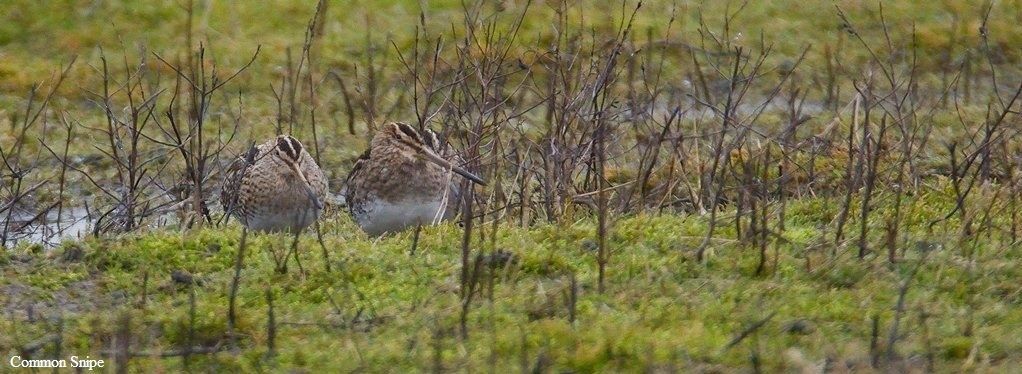
Just a misty landscape was found from ‘the gate’ overlooking Holkham Freshmarsh and Jason mentioned that the temperature had dropped to 2 degrees according to the car and this was also underlined by the rain now turning into sleet!
A stop at the second pull-in found at least 100 White-fronted Geese, before hearing that a charm of Twite had been found at Cley, so we continued back along the coast to Cley.


Parking-up near the sluice along Beach Road, Cley we foolishly decided to get out of the car and go up onto the flood bank, overlooking Blakeney Freshmarsh. The weather was atrocious; saturating rain with a bitter icy wind and overcast skies! We saw a few Goldfinches and then led by Jason, decided enough was enough and headed back to the steps, but I then saw a Pipit along the channel and although it did not stay still (at least not in view- on the mud behind a fence panel) I saw enough to confirm it as a Water Pipit. However, with the skies darkening further and both of us very damp and ‘chilled to the bone’ we headed home after a productive day despite the weather!
January 2024
'Swan Lake' and three Egret species......
The day (25th) with Jason started out at Sutton where we hoped that the ‘wild swans’ would still be present. Yes they were with roughly 60 swans present containing both Whooper and Bewick’s on this flooded potato field where presumably they were feeding on potatoes
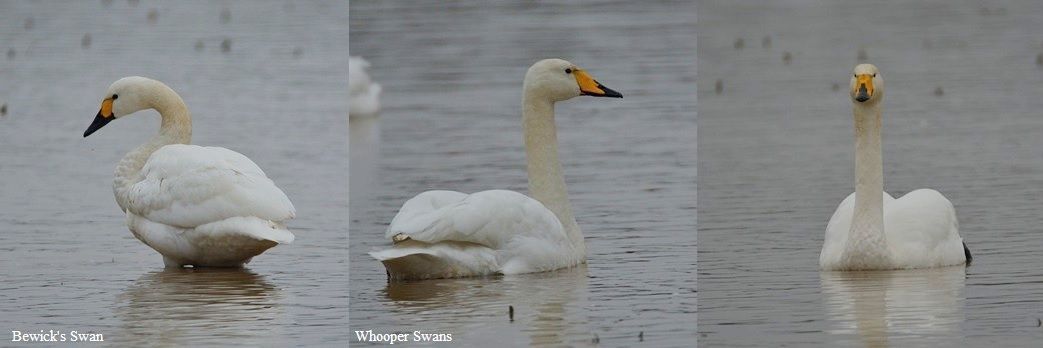

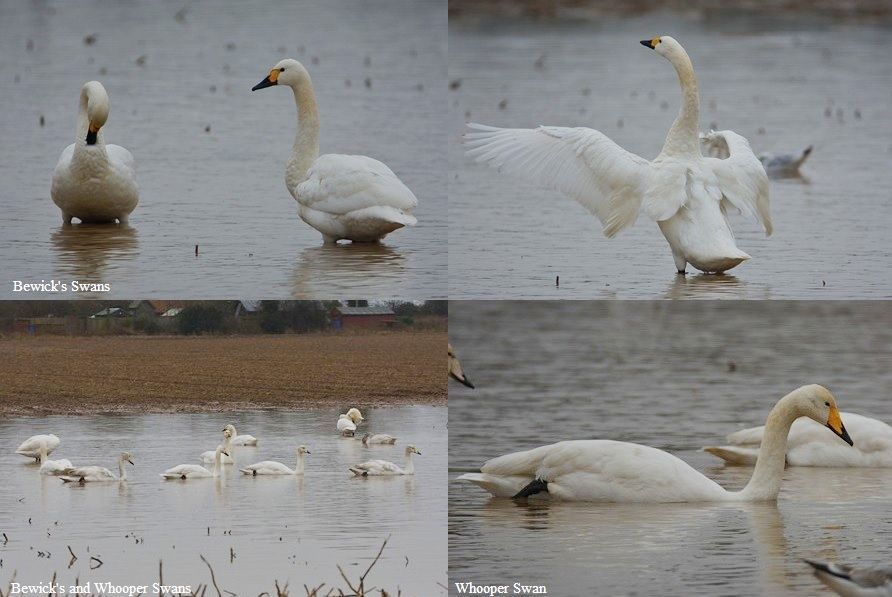
The first stop along the North Norfolk coast was at Beach Road, Salthouse where we found a male Stonechat on the fence wires.
At Beach Road, Cley we found both Brent and Pink-footed Geese but nothing else in their midst. Just leaving Cley Village a Cattle Egret was seen on a field and behind it in the distance was a Great White Egret.
At Morston Quay 2 Greenshanks were found along with, Grey Plover, 2 Curlew, 6 Redshank and 2 Little Egret.

En-route to Holkham we saw 2 of both Red Kite and Common Buzzard, before a drive down Lady Ann’s Drive to have a look to see if we could find the Green-winged Teal, which had been present in recent days but not reported today. No sign of the American Teal but a nice collection of ducks; Wigeon, Teal and Shoveler were on the flooded fields and a Common Buzzard was seen some distance away.
Just before the village sign of Burnham Norton we found 4 Cattle Egrets in a field with 4 white blazed Horses and a little further along the road we found 4 more!
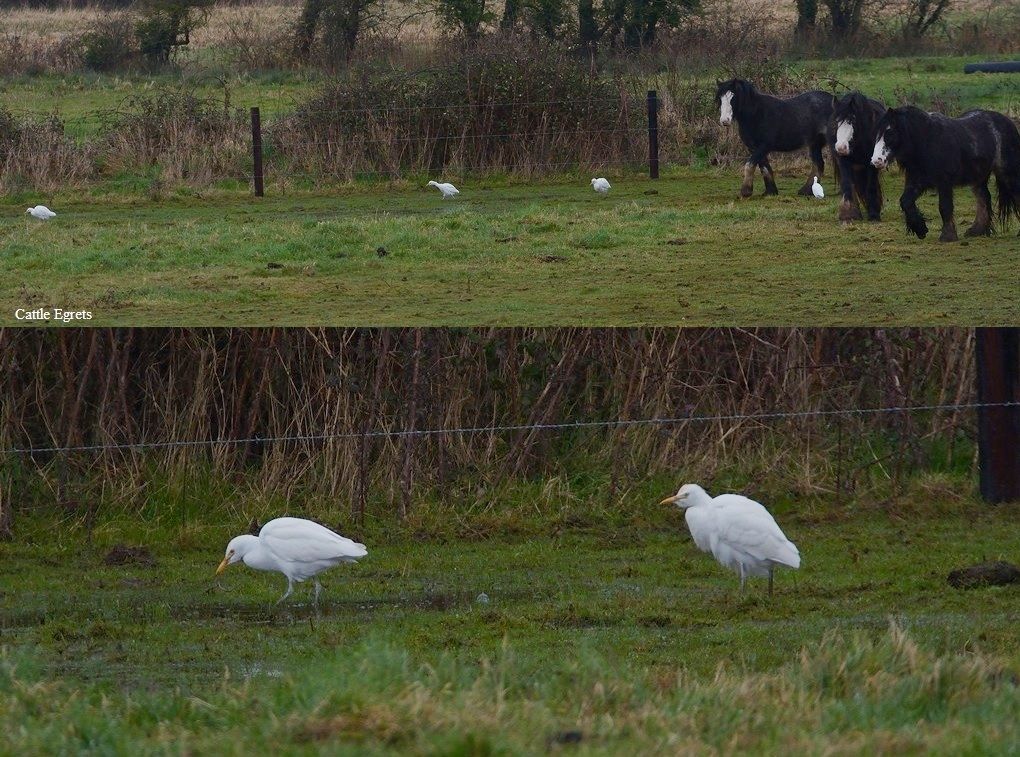
A stop for lunch at Brancaster Staithe found our first Avocet and other waders present included 6 Black-tailed Godwit, 10+ Ringed Plover, 12+ Dunlin, Redshank, Oystercatcher, Bar-tailed Godwit, 2 Curlew and 3 Little Egret.
Travelling back through Holkham we spotted a pale Common Buzzard and not far away a dark-phase individual. At Stiffkey there were 5 Red Kites in close proximity to each other.
A look for 2 Waxwings reported earlier at Cley drew a blank and with still no sign of any of the recent rarer geese (Red-breasted and Ruddy Shelduck), from Beach Road we headed home.
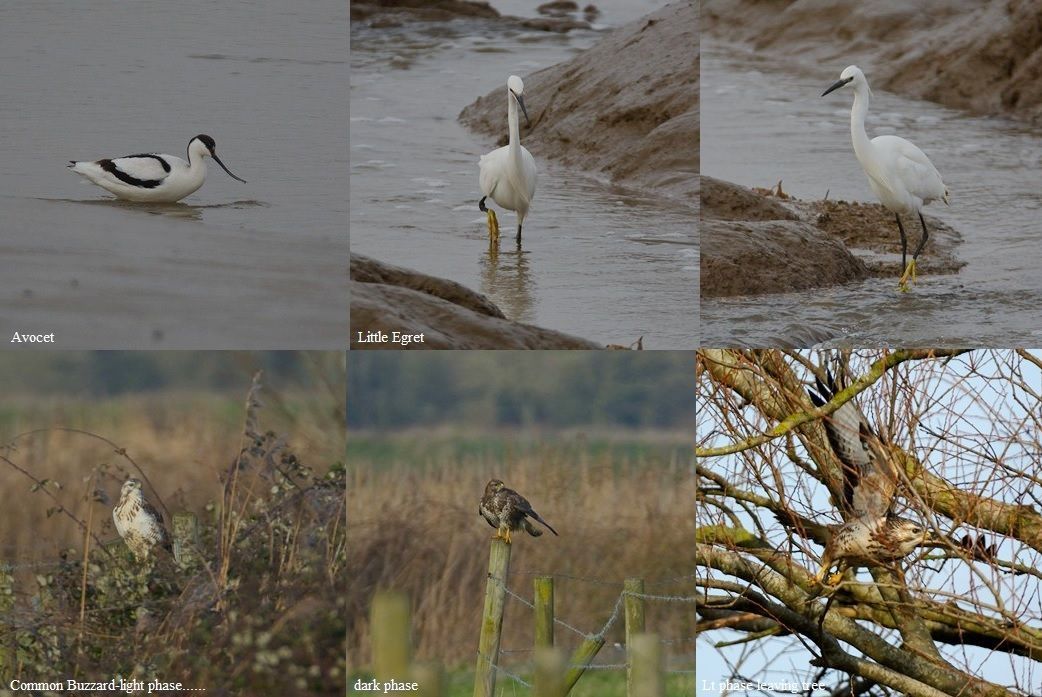
Cold weather brings birds closer......
Out along the Norfolk coast again with Jason Nichols (18th) began with the intentions of going to Holkham to look for Surf and Velvet Scoter and Shore Larks. However, as we approached Holkham a significant snowfall occurred and along with the icy wind it was decided to change our plans, so we decided to go to Brancaster Staithe first!
On our journey from Martham to Brancaster we saw 4 Common Buzzard, 2 Red Kite and a Fieldfare flying across the road, whilst Blackbirds along the hedgerows were notable.
So arriving to a deserted Brancaster Staithe (for once!) in the snow we saw Black-tailed and Bar-tailed Godwits, Oystercatchers, Turnstones, Curlew, Redshank, 2 Ringed Plover and Dunlin. Teal, Wigeon and Shelduck were also present along with several Brent Geese and 2 Little Egrets. I suddenly noticed on the far side diving ducks and eventually (when they surfaced!) we had our first Red Breasted Mergansers of the year; 2 drakes and 2 ducks.
Further on at Thornham Point a Rock Pipit perched on a boat was a bonus, before we decided to drive ‘around the block’ at Choosley.
Red Kites were immediately noticeable with one over the road and another over the fields. A very obliging Kestrel was perched in the hedge and remained there as we photographed it before carrying on, leaving the Kestrel in the same place. Snowy icy days can make birds come closer as they try to find a hunting opportunity or an unfrozen food source and this was panning out to be very much the case.
2 Common Buzzards were seen and a mixed flock of Finches numbering 500 or more contained Linnet, Chaffinch, Goldfinch and I picked out at least 2 Brambling when the birds settled on a hedgerow.
On the Mammal front; 2 Brown Hares hunkered down in a field and 3 Chinese Water Deer were seen.
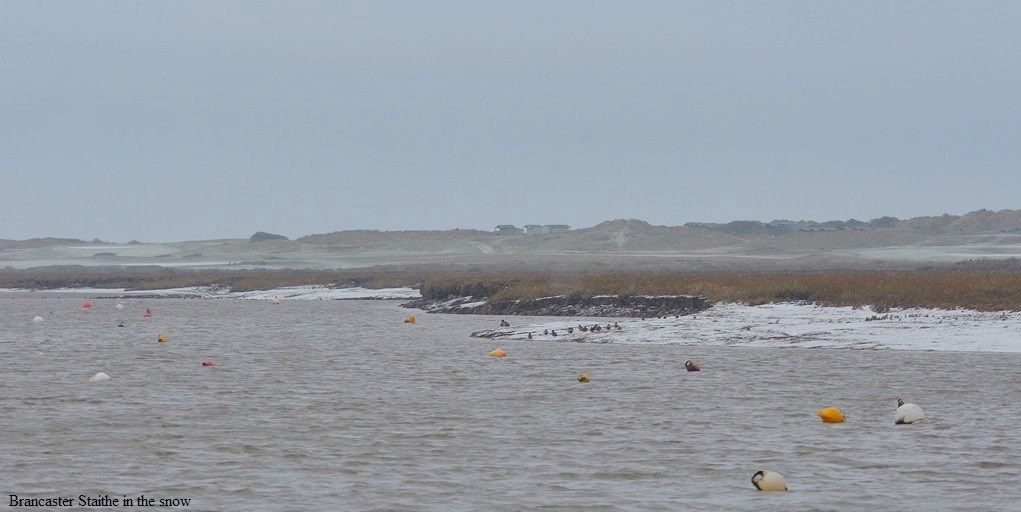

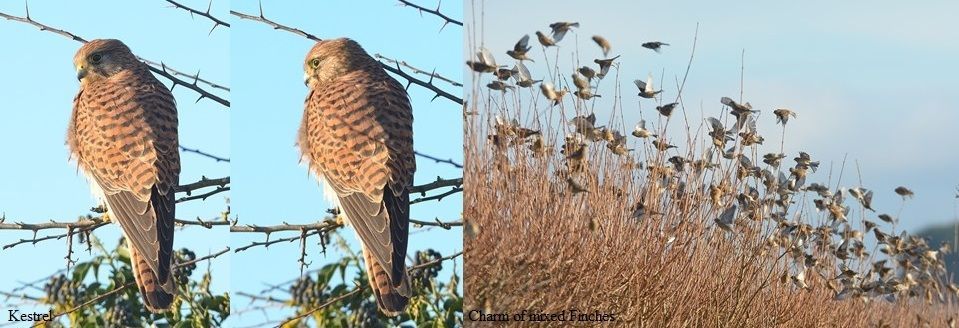
A look over Holkham Freshmarsh from ‘the gate’ found very little, not surprisingly in the frozen conditions and also heightened by the hides in a field containing shooters! No admittance to birdwatchers on this ‘nature reserve’ (and rightly too!) but not to paying gentry for the ‘thrill’ of killing something!
The second ‘lay-by’ was far more productive with 50+ White-fronted Geese, and Greylag and Egyptian Geese present, with Pink-feet flying over. Whilst photographing the white-fronts a Common Snipe walked passed a goose and scanning further it became apparent that there were far more seeking food in the freezing conditions, now lessened by a spot of sunshine and at least 30 snipe were counted, maybe more than that! Dunlin was also here and a veritable ‘flock’ of Moorhens were near the hedgerow and a very pale Common Buzzard was spotted before it flew off low over the marsh. Possibly the same one we photographed on a post last year.
I saw a Mistle Thrush fly into the nearby trees and disappear but then Jason said he could see it in the tree, but better was to come when it and another flew down amidst the Mole hills in the sunlight as they both searched for food; fantastic!
2 Muntjac were seen en-route as we headed for Wells, where we had lunch, but that was about it as very little of note here with the lagoons iced up.

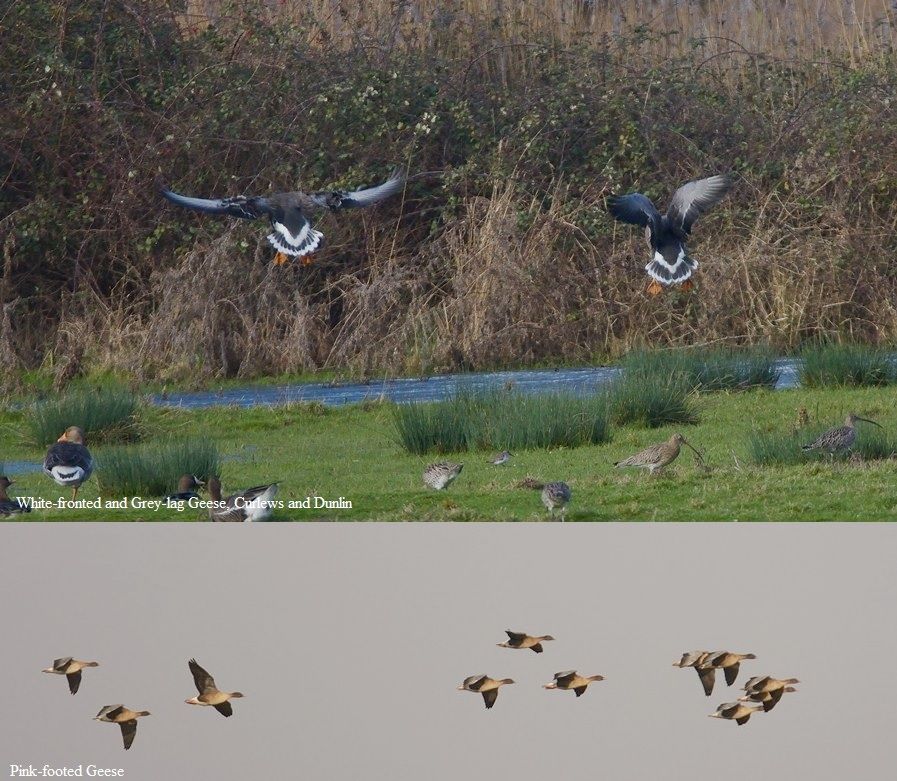
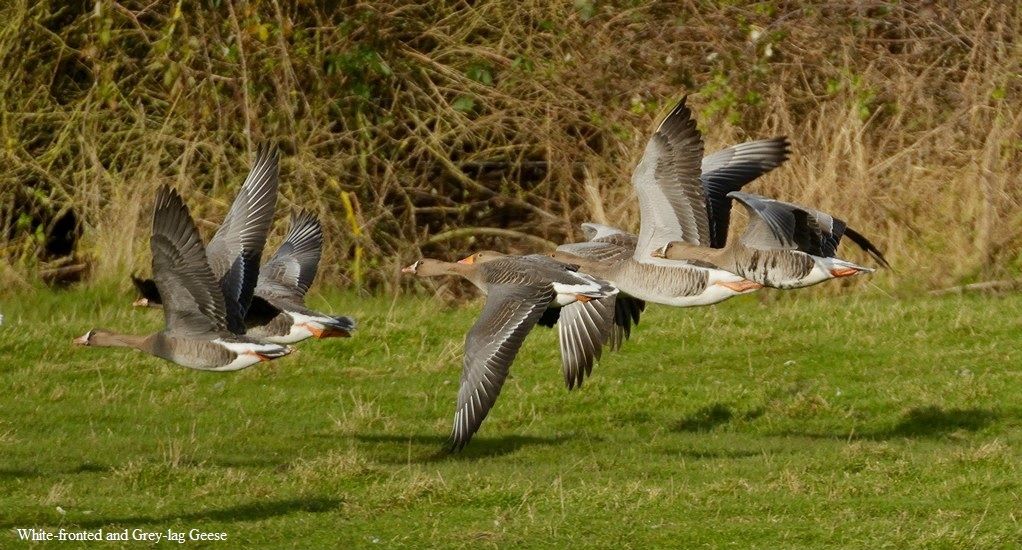
At Morston Quay there were approximately 200 Brent Geese were on the field, just before the entrance to the car park. High tide limited any waders present but we saw a Redshank swim to the bank (one of 4 seen) and at the top of the car park 16 Teal were on the water. Then a Short-eared Owl flew passed followed by another, then yet another! With a Greenshank at the edge of the pool to the south, a very worthwhile stop although the Brent Geese seen earlier had gone!
There had been a Glaucous Gull reported at Blakeney Quay, but we later found out that it was more near Blakeney Point! With nothing except 3 Herring Gulls along the channel we ventured a short distance to look over Blakeney Freshmarsh and here we found approximately 300 Brent Geese and the first Canada Geese of the year (19 in fact)! After looking through the Brents for something different we then moved on to Wiveton where we eventually found both the reported Cattle Egrets along with 2 Little Egrets.

At Cley’s Beach Road we found more Geese, with approximately 1000 Pink-feet and 200+ Brents. Whilst here a message came through to say that the recently seen Red-breasted Goose was on Blakeney Freshmarsh so we returned, but despite duel scrutiny we couldn’t find it. The same dead end was just before Cley village looking from the bank overlooking Blakeney Freshmarsh, where according to some that was where it had been seen from?
Back to Cley, Beach Road where the Brents were relocating but the Pink-feet were leaving the area. With nothing of note at Coastguards we left on another ‘wild goose chase’ at Weybourne!
A Ruddy Shelduck had been reported with the Pink-feet, just before the railway bridge. We found some Pink-feet but no Ruddy Shelduck. A Common Buzzard was seen here and on the opposite side of the road approximately 100 Brent Geese, but by the time we got anywhere near to look through them (thanks to some very selfish parking by a camouflaged ‘birder’) they had gone.
We made our way towards home but looked for the Bewick’s Swans reported earlier on a flooded field at Sutton, but from the Stalham By-pass there was no sign of a flooded field, let alone swans! So, we stopped and Jase checked the details on his phone to find that they were not by the A149. We followed the sat-nav to a field between Sutton and Hickling and found what could only be called ‘swan lake’! A pool in the field was full of Swans and not far from the road, once again highlighting how birds will trade off safety in order to get essential life-saving resources. Here I roughly counted (may have missed some) 71 Swans with the vast majority being Whoopers but there were at least 4 Bewick’s. Bewick’s are the only ‘wild swans’ to get reported nowadays and I don’t understand why. Are Whooper Swans really that ‘common’ (interpret the word as you wish, everyone else does)?!
With the sun setting behind one of the Mills in Hickling and the swans in the foreground I tried to capture the scene but by the time I had got in position most of the sunset had gone. Still, an awesome sight to end what was a very productive day.
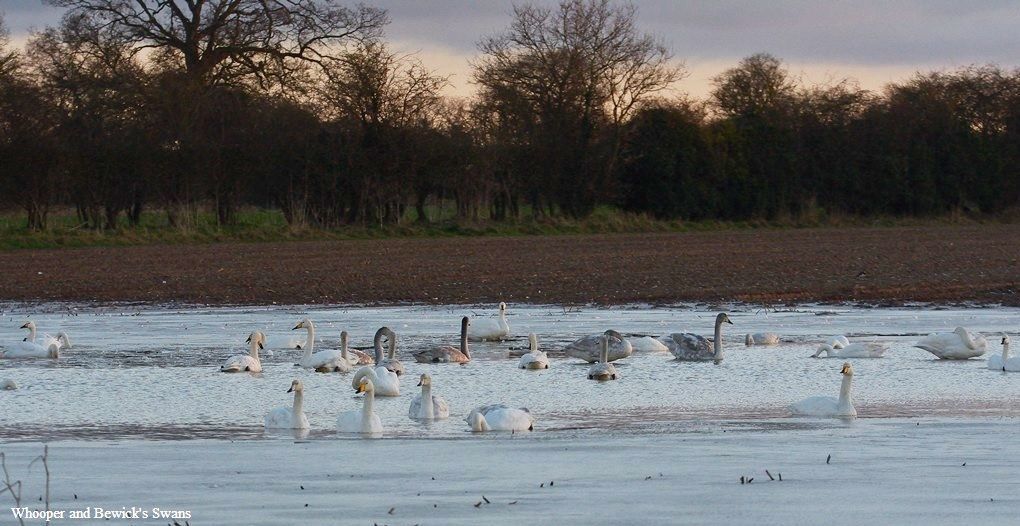
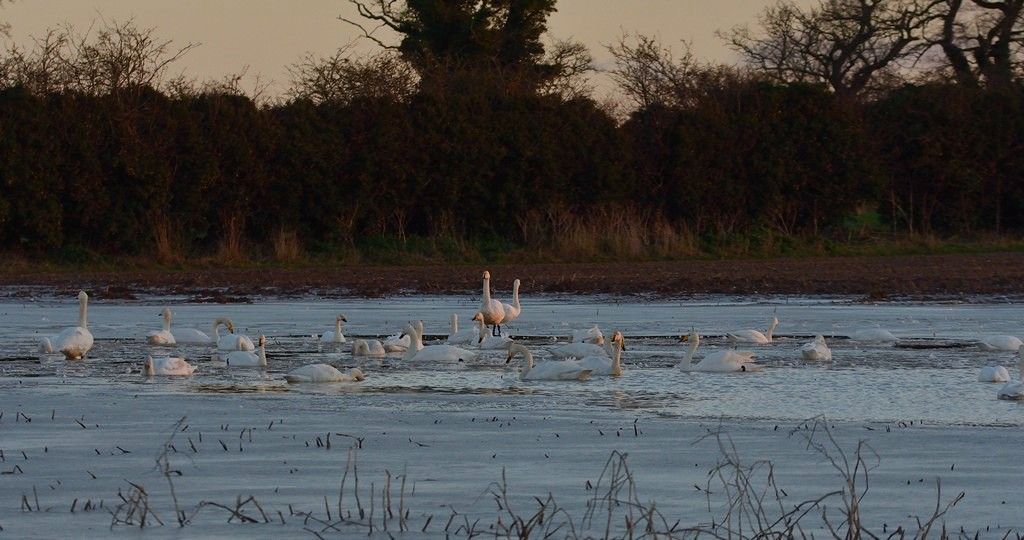
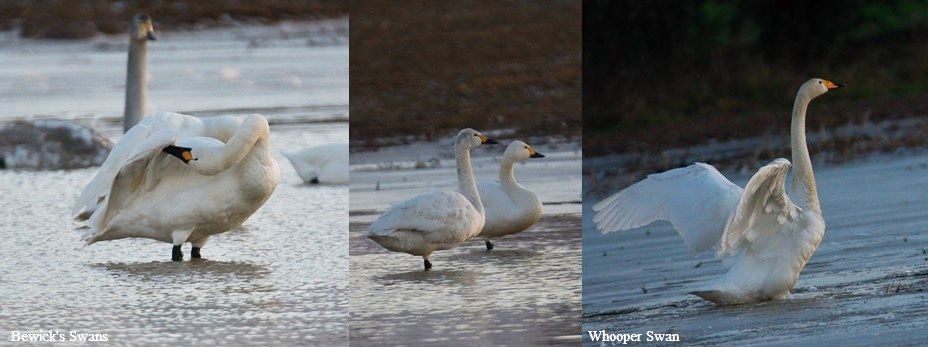
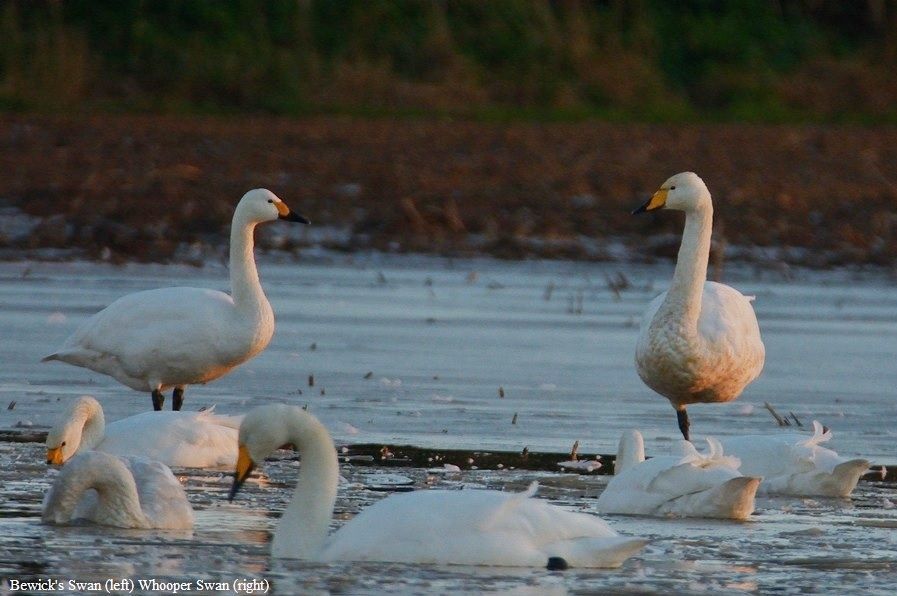
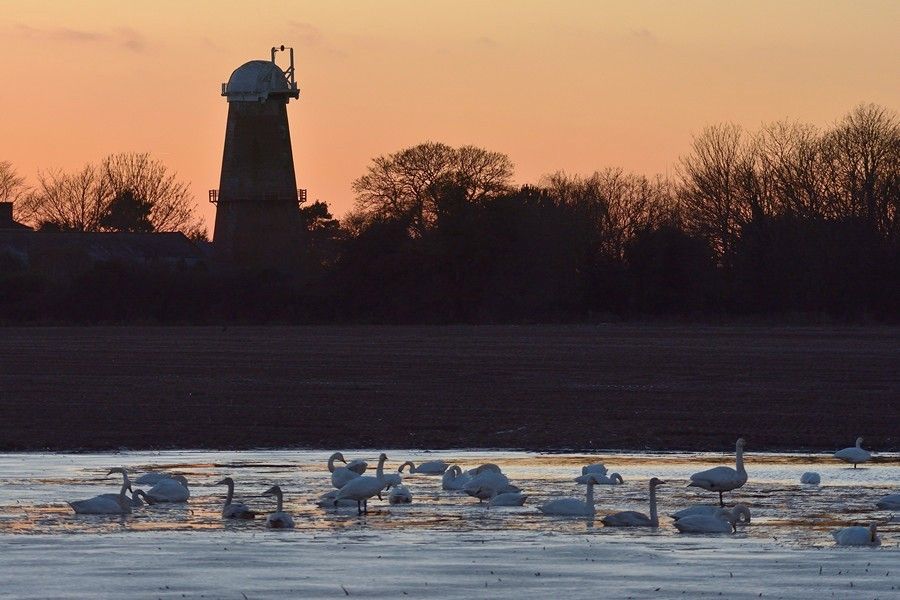
Round the block Birds......
A drive around ‘the block’ (14th) found a few nice sightings, as well as putting some charge into the depleted car battery!
The area around Clippesby eventually yielded some Cranes. It was a good thing I looked in a wide area from where they usually favour because in doing so I found approximately 10 largely concealed by a dip in the field. Two more Cranes flew in so I am guessing there were now at least 12 birds, but couldn’t be sure. Both a Marsh Harrier and a Common Buzzard were also of note here as were a flock of approximately 150 Lapwings.

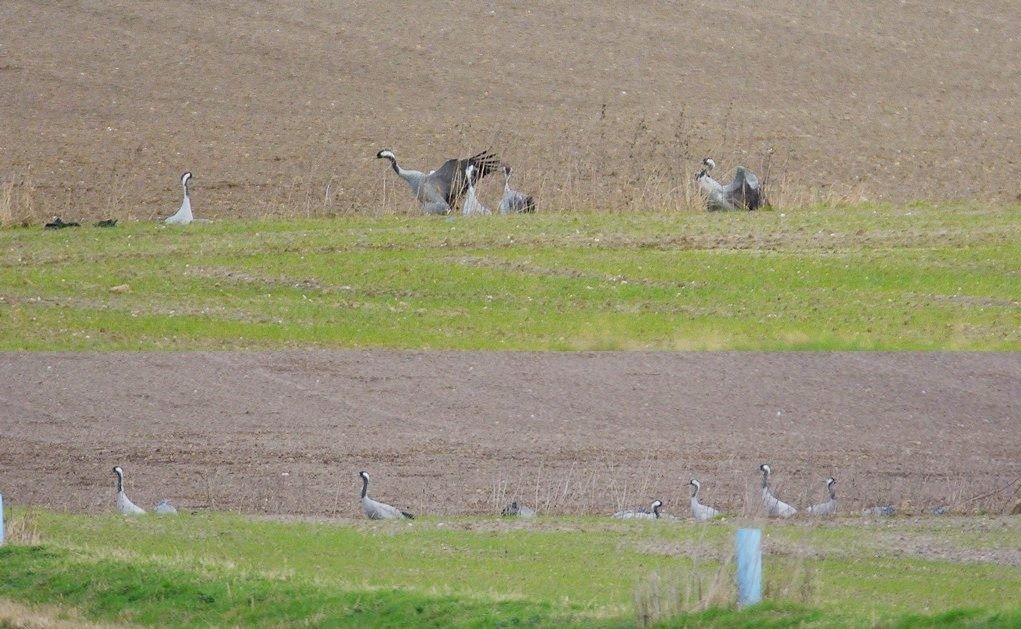
Not too much else was seen as I neared the end of ‘the block’ and driving past Ludham Airfield did not find any ‘white birds’ indicating Swans.
Turning towards Hickling the drive up until the end of the village when a Song Thrush flew across the road was fairly uneventful, but driving along the narrow winding road towards Sea Palling I stopped to look at a ‘white bird’ next to a cow. As suspected it was a Cattle Egret and this was then joined by another one flying in.

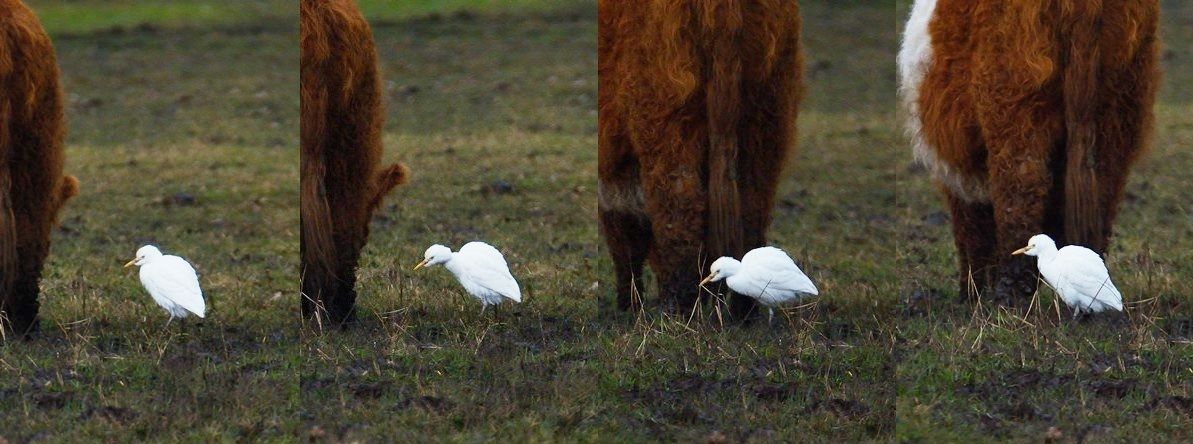
A Common Buzzard was seen just before Waxham on a field but refused to have its photo took as they often do when you stop!
I stopped in the ‘lay-by’ at Horsey and scanned around, initially just seeing a few Lapwings and hearing a Redshank call. But scanning along the flood bank I came across 2 Red Kites perched in the bushes. A few Pink-footed Geese flew over before heading home again.

'The only way is Essex'? Maybe not!
It is not very often that Jason and I travel a considerable distance for a species of bird, but today (11th) with the potential of seeing a North American visitor, neither of us had seen before was an exception to the rule.
For about a week now a Northern Waterthrush had been found in someone’s garden at Heybridge near Maldon and had been present on and off for just over a week at Heybridge Creek. I saw it reported on BBC Breakfast 10th and later that day Jason emailed me to ask if I was interested in going to see it, despite having recently having an abscess on a tooth and his car going in the garage! So at 05.30 we left for Essex!
Eventually we reached the car park just after 08.00, designated as the place to park to avoid upsetting the residents and set off on the path alongside the River Blackwater.
The river was iced up and Moorhens were walking across it, which gave rise to a brief spot of photography. Also here were Cetti’s Warblers with two flying across the river and landing in the short reed fringe close to us, but typical of this warbler it never revealed itself, except when it flew off. There was also a very strong smell of Fox but one was not seen.

After a long walk alongside the river we crossed a bridge and then walked through a housing estate until we reached the area where the Waterthrush had been seen, along a dyke near an industrial estate. At least 25-30 people were already there and it became very clear they had not parked in the car park where we had parked and had parked somewhat closer, which in hindsight we also could have done!
So we stood on the bank at the end of the line of other attendees and waited. The bird had been reported earlier at approximately 07.30 so presumably at the least it was still here.
There were several Song Thrushes around and House Sparrows were coming down to the water’s edge to drink. A Muntjac crossed the far end of the dyke and 10 Brent Geese, and 2 Mute Swans flew over, but there was no sign of the Northern Waterthrush, but as is typical on such occasions not very many of the audience were actually looking for it, instead waiting for someone else to find it, but that is the way of ‘twitches’ nowadays!
Time went by and there was no sign as we stood there in the cold, questioning what the hell we were doing! So, just before 11.00 we decided to start the long way back to the car.
A stop at a nearby fast food takeaway on the drive back is where Jase found out that the Waterthrush had reappeared around midday! Later, we found out it had again reappeared twice in the afternoon but nothing we could do about it; all a bit of a lottery, for which we didn’t have the winning ticket!
On the drive back we saw several RTA’s. These consisted of 2 Badger, 3 Muntjac, 3 Chinese Water Deer, Hare, Rabbit and several Pheasants. The last Badger RTA was between Thwaite and Stoke Ash in Suffolk.
We decided to go and spend an hour or so with the Short-eared Owls at Ludham Marshes before calling it a day. We saw one plus 2 Chinese Water Deer (alive this time!) from the road leading to St. Benet’s Abbey but no more than that.
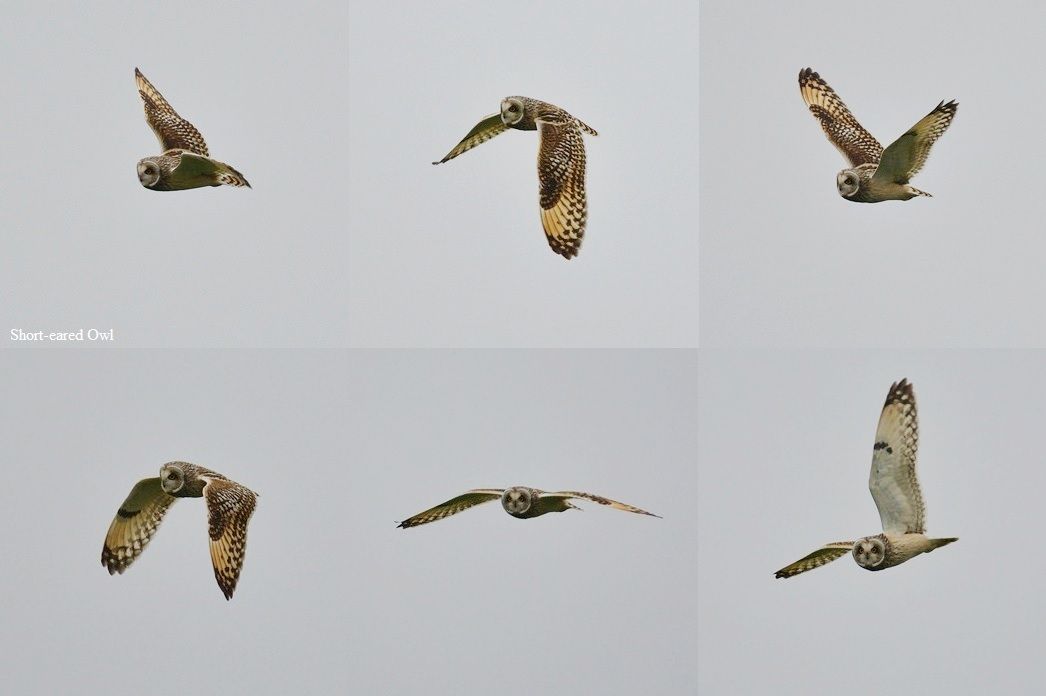
We then ventured down the other road leading to the river bank and Jase had a look from the top of the bank and saw 2 distant Cranes, 2 Short-eared Owls and a Marsh Harrier back towards St. Benet’s.
As Arkwright would have said: ‘ It’s been a funny ol’ day’!
Happy New Year! The Bird and Mammal count......
At 05.30 Jason arrived to pick me up to make our usual New Year’s Day bird count and for that matter anything else we might see.
The morning began with dead animals, unfortunately with a Red Deer RTA between Martham and Repps followed by a Barn Owl on the road near Dilham. It wasn’t until we approached a roundabout at Fakenham that we saw our first live animal. Firstly a shadow was seen made by the street lights of an Owl, which on seeing what had made the shadow, not surprisingly turned out to be a Barn Owl.
On the way to Holkham Park a Rabbit crossed the road my first mammal (rather fittingly!) although Jase had had seen a ‘Mouse’ earlier. We parked in the car park at Holkham Park in the hope we might hear a Tawny Owl calling, but not too be. However, a couple of Fallow Deer were seen and Pink-footed Geese were heard.
Just outside Holkham we had a Little Owl fly low across the road. It had obviously been on the ground looking for prey before flying, which was a total surprise as we had never seen a Little Owl at this location and for that matter nowhere near the spot!
Red-legged Partridge is notoriously difficult to find on New Year’s Day probably because they have been shot at, so we were grateful for two flying over some houses at Brancaster.
We arrived at Titchwell and in the half light saw Blackbird, Mistle Thrush and Robin along the approach road before taking up residence in the car park for coffee and to watch and listen for anything we could record before embarking on the walk to the beach.
Wood Pigeon, Black-headed Gull, Blue Tit and Starling were added to the day’s count before walking along the path towards the hides and beach, where we saw yet another notoriously difficult bird to see on this day, a Pheasant! At least 4 Marsh Harrier came out of their roost to begin hunting and a Bearded Reedling flying high above the reedbed was fortuitous.
From the path we scanned the pools and surrounding area picking up Curlew, Little Egret, Teal, Mallard, Grey-lag Goose, Brent Goose, Cetti’s Warbler, Shoveler, Lapwing, Linnet, Redshank, Golden Plover, Shelduck, Pintail, Black-tailed Godwit, Common Gull and Wigeon before arriving at the beach.
Scouring the shoreline and sea we found Herring Gull, Oystercatcher, Goldeneye, Common Scoter, Dunlin and a flock of Bar-tailed Godwits, exceeding 200 birds. Turnstone followed, as did Grey Plover, Ringed Plover (again sometimes difficult to find), Lesser Black-backed Gull and Sanderling.

At Thornham; Jackdaw, Greenfinch and Kestrel were added and at the harbour area a Greenshank (50th bird) was a nice surprise roosting on the bank with Redshank and a Little Egret. Also here were Great Black-backed Gull, Skylark and Meadow Pipit, but sadly no Rock Pipit seen in previous visits and nothing in the channel as the tide was high.

A drive around Choosley Barns followed and here we saw Chaffinch, Pied Wagtail, Red Kite, Common Buzzard, Brambling (at least 3 with Chaffinch and Goldfinch), Collared Dove, Carrion Crow, and a welcome Sparrowhawk.
Brancaster Harbour found our first Cormorant (flying over) but not much else due to the high tide.
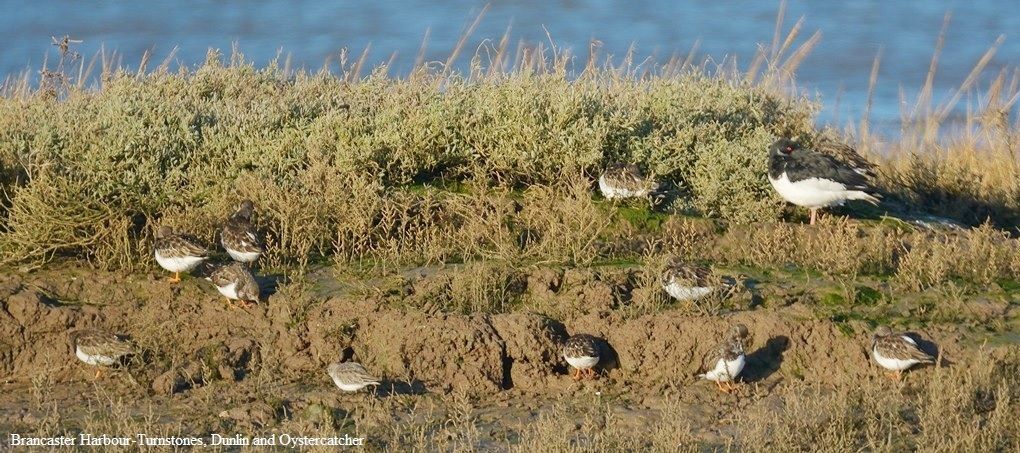
En-route a Stock Dove was seen followed by Mute Swan from the A149 lay-by at Burnham Overy and Feral Pigeon.
Egyptian Goose was found at Holkham and parking at ‘the gate’ a surprise was in store when Jase saw a Raven (his first in Norfolk) and I heard the classic ‘cronk’ call from the open window of the car. At least 3 Chinese Water Deer were here and a Great White Egret was also present.
A little further along the road we parked in the pull-in and found a family of White-fronted Geese on the field before returning to the car park at Holkham Park.

Walking into Holkham Park a Jay was heard and later seen, along with Great Tit, Nuthatch and Long-tailed Tit before arriving at the lake.
Here, Tufted Duck, Coot (finally!), Great Crested Grebe (not expected here), Pochard, Grey Heron, Little Grebe and what looked like a Scaup, although we couldn’t be sure and more Fallow Deer were on the other side of the lake.
A couple of Grey Squirrels joined the mammal list, before from the end of the path near the gates a garden bird table provided a Coal Tit, before we set off again back along the coast.
The Glossy Ibis had obligingly remained on the flooded field at Stiffkey and here too we saw our first Rooks!
We looked for a reported Cattle Egret at Morston but couldn’t find it. However, the paddocks (we once named ‘Thrush Corner’) provided 2 Redwing in amongst the Blackbirds.
Beach Road, Cley found no Canada Geese (where do they all go on New Year’s Day?) but the Red-breasted Goose was found amongst the Brent Geese; a bonus for the 1st of the year!

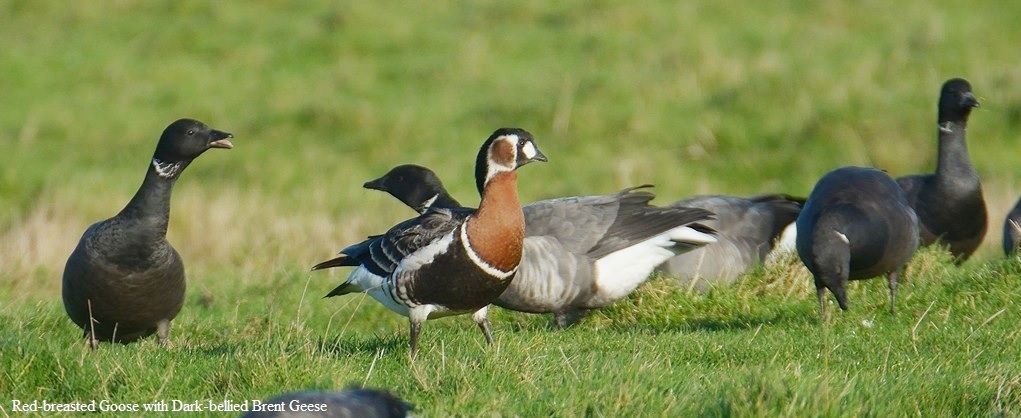
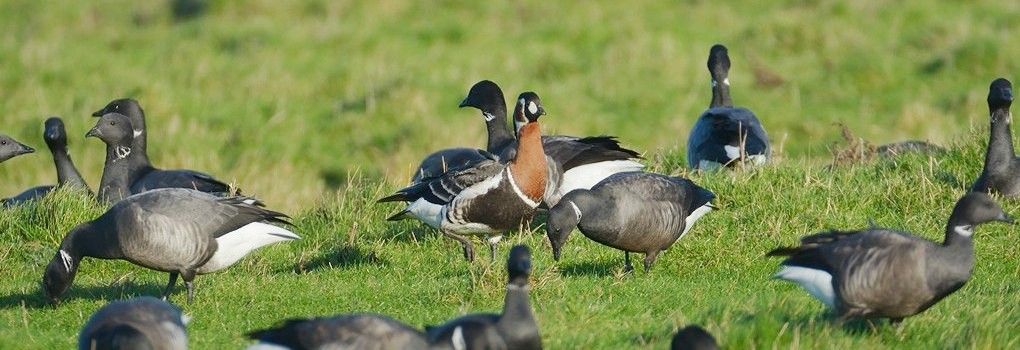
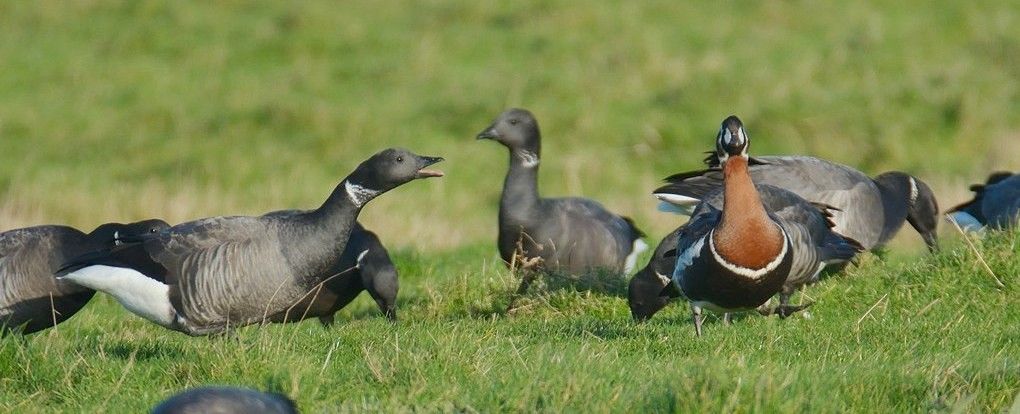
House Sparrows (finally!) at Cley village were our 85th bird before seeing our first Moorhen on Salthouse duck pond-where else!’
A stop at Weybourne found a Red-throated Diver and a Guillemot (also Common Scoter) on the sea from the wind-blown shingle ridge and a Water Rail was heard calling from the reedbed just before getting back in the car.
It was now a matter of deciding where else we could go to get a few more birds before the light went, so we decided to go to Ludham marshes near St. Benet’s Abbey.
The first new bird for the day we saw here was a Short-eared Owl, one of at least 5 seen, although there may have been more.
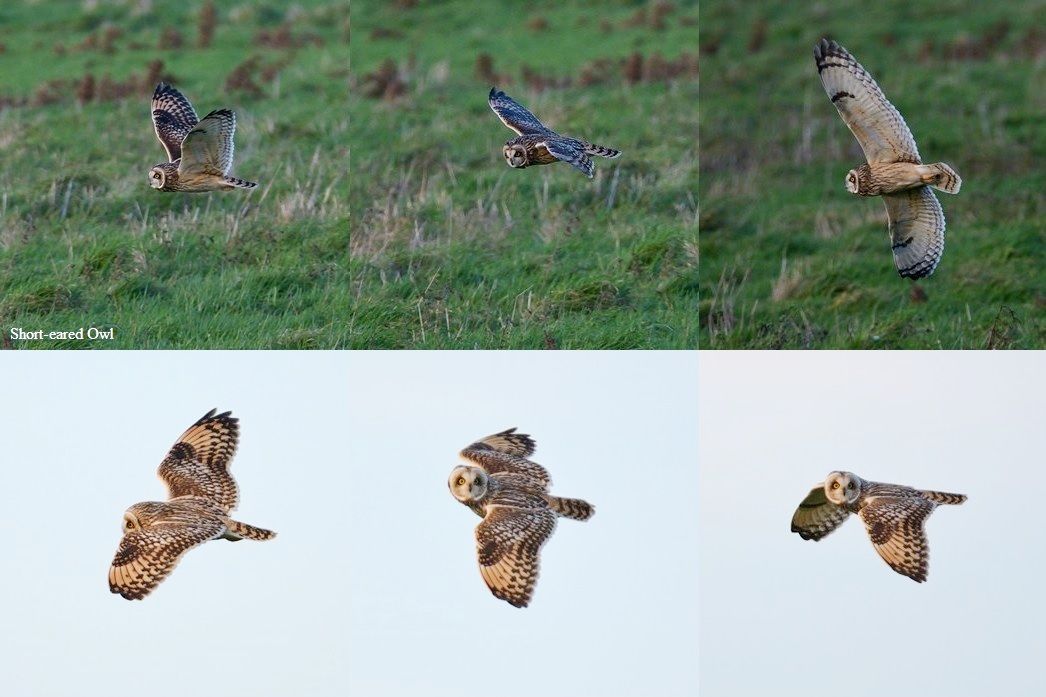
Whilst photographing a Short-eared a Chinese Water Deer shot out onto the road a few feet in front of me. It skidded on the road, falling on its side before quickly ‘picking itself up’ and ran off across the opposite field. Just a few seconds after a Short eared Owl flew over the road in the same direction. Whether it was the owl that spooked the deer is unclear and certainly not a prey species for a shorty!!
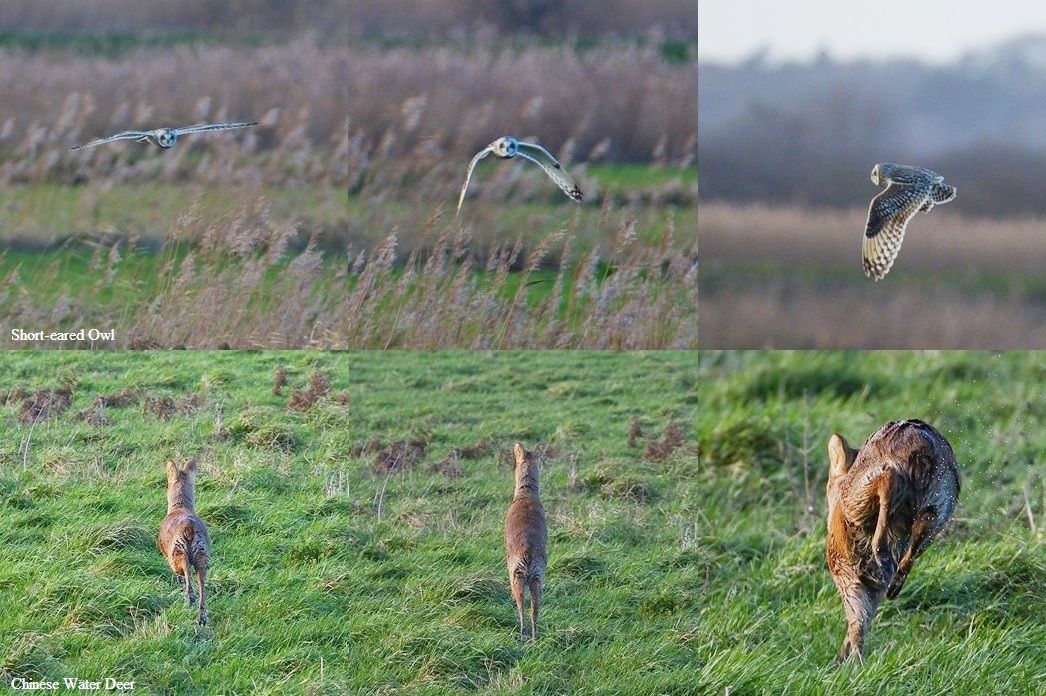
3 Cranes were seen and a Barn Owl appeared. Finally we saw a Dunnock, Jason identified some distant Whooper Swans and then another bird missing from our list appeared in front of us; a Wren!
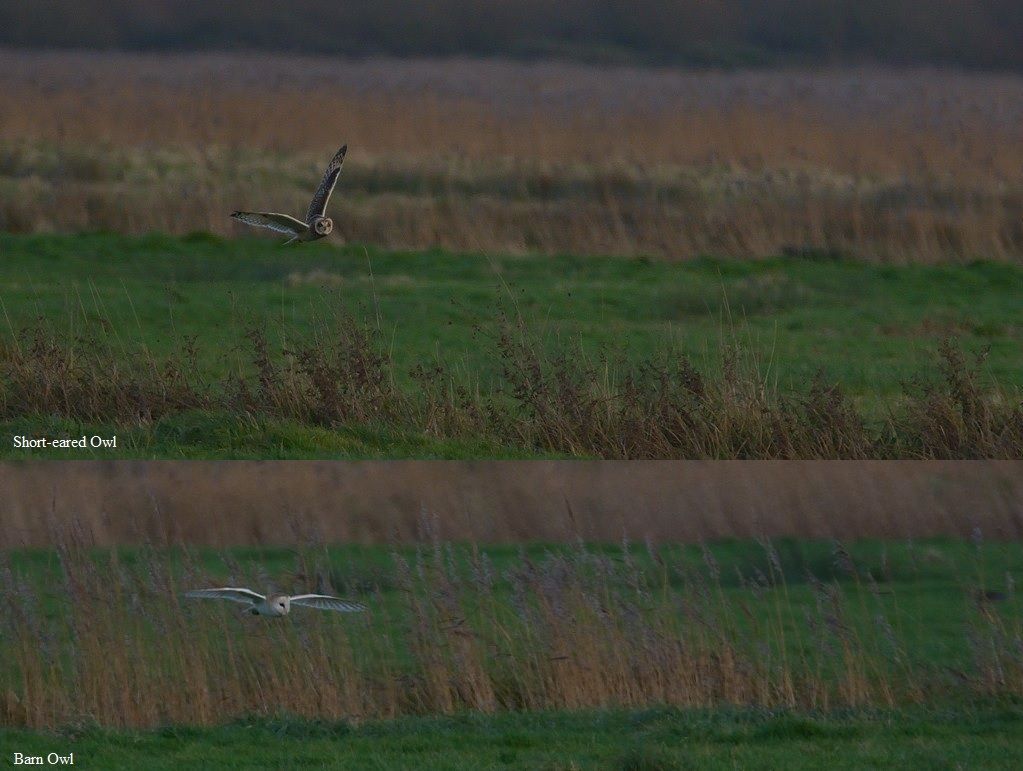
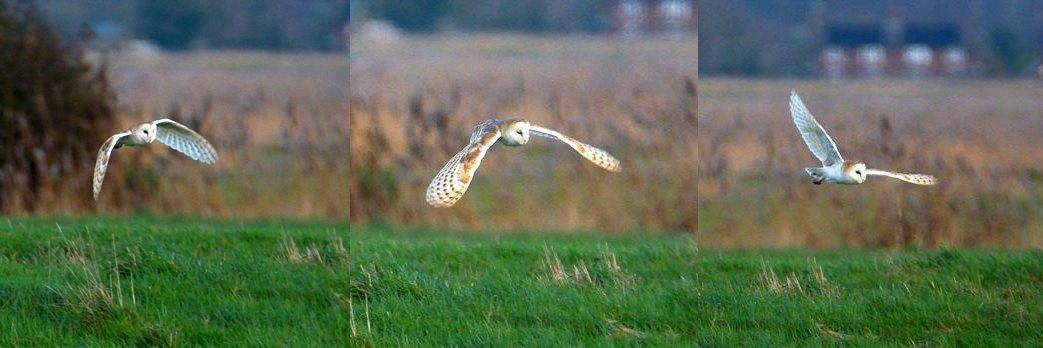
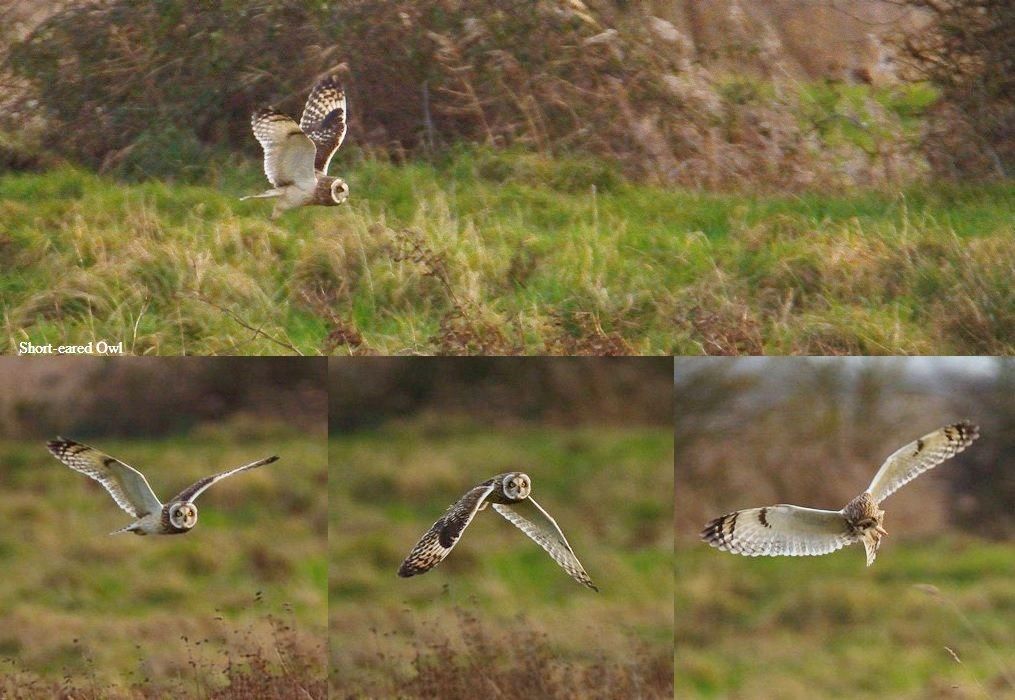
Finally, at the end of the road before turning towards Ludham village we saw a flock of Fieldfares; our final sighting of the day and after a very long day (05.30-approx 16.00) we headed home.
We managed to see 95 species of birds and 4 species of Mammals. Thanks are due to Jase for doing the driving and his contributions to a very enjoyable day.
Wildlife Photo Diary 2023
December 2023
Dull and windy day but some good sightings......
On a very windy day (21st), consisting of overcast skies, occasionally brightened by the sun, Jason and I journeyed along the east coast, which began at Horsey, where a Little Egret and a Marsh Harrier were of note.
With no sign of any geese we continued to Sea Palling where once again we found Whooper and Mute Swans and a Common Buzzard flew over during a shower.

A seawatch form the car at Walcott found very little moving with just a few Gulls (mainly Black-headed) on the beach. However, perseverance did produce a Grey Seal, 2 Pied Wagtail, Sanderling and 4 Turnstone.
We were limited for time today but had just enough time to head up the coast a bit further before Jase had to get back to go shopping!
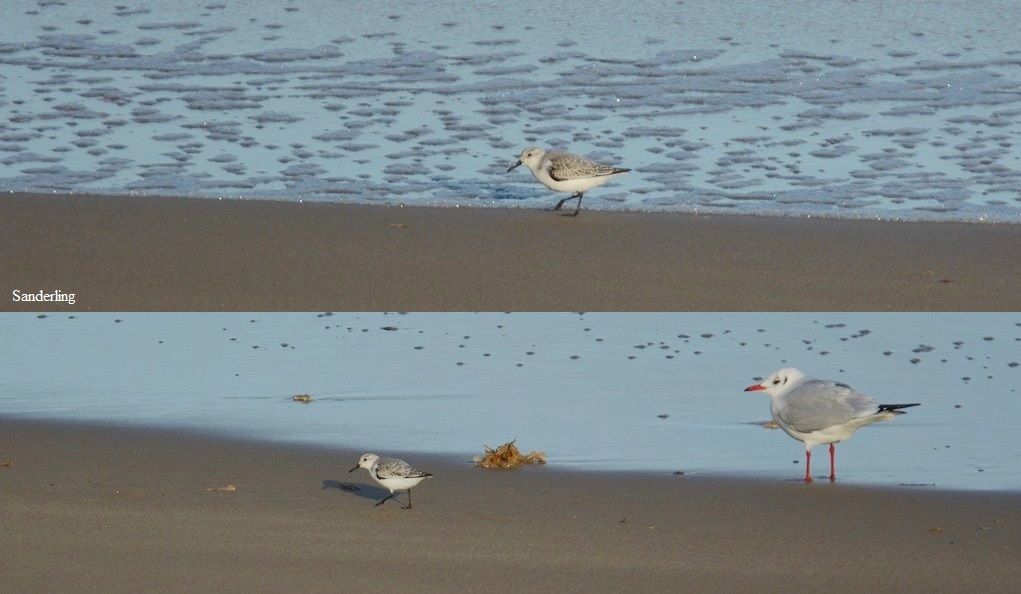
From Beach Road, Salthouse a few Teal were on the pools on the flooded fields and along Beach Road, Cley we saw several skeins of Brent Geese flying west, but despite scrutinising them there was no sign of the occasionally reported Red-breasted Goose.
A last stop at Morston Harbour found the channel very full; echoing the predicted tidal surge forecasted, so invariably no Waders there. However, a Greenshank and 2 Redshank were together next to a small pool in the saltmarsh. On the drive in there had been 2 Brent Geese on the field adjacent to the approach road but now their number had massively increased! Approximately 250-300 Brents were now present, but again no other geese in their midst. A Curlew was searching for food on the field, before we had to leave and head home.


Diver in a ditch, Glossy Ibis and a Shag......
2 Red Kites began the day out with Jason at Beach Road, Salthouse (14th).
Approximately 700 Pink-footed Geese were seen from Beach Road, Cley and 2 adult Gannets and a Red-throated Diver were seen off Coastguards. Another Red-throated Dive was found much closer in the dyke along Beach Road.
At Morston 9 Redshank, 2 Curlew, 35+ Brent Geese and 3 Little Egrets were present and from the road in Stiffkey village a Glossy Ibis was seen on a flooded field, which had been present for over a week.
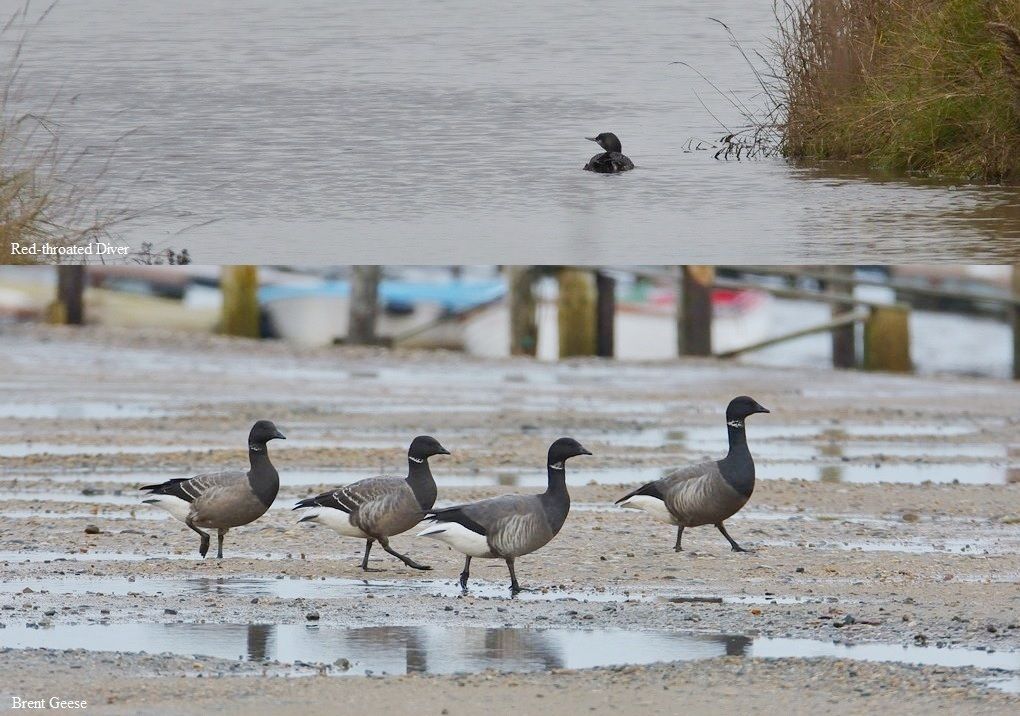
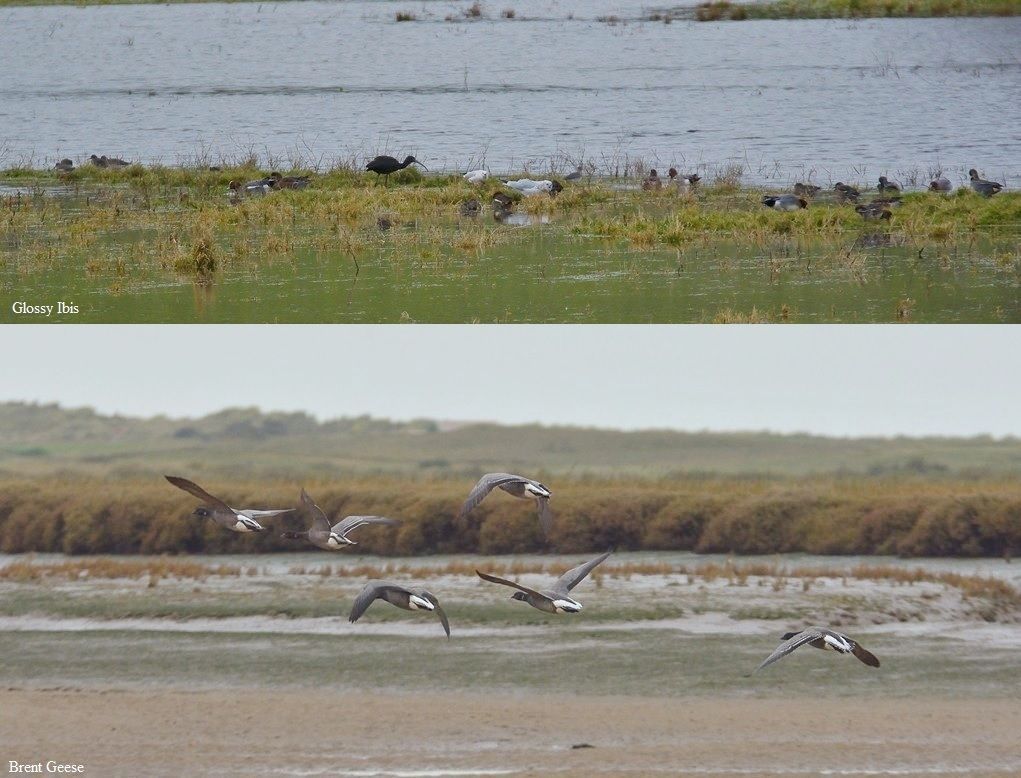
The track to Wells North Pools produced approximately 10 Song Thrushes flying out from the Ivy and an exaltation of about 30 Skylarks were also seen.
The usual lunch spot at Brancaster Staithe found a Shag perched on the mud beside the channel, which later somehow got past us unnoticed and was then seen at the far western end of the channel. Also here was a Cormorant ’snorkelling’ in the shallow water, Brent Geese around the channel, Grey Plover, 2 Dunlin, Bar-tailed Godwit, several Turnstones and 3 Little Egrets.
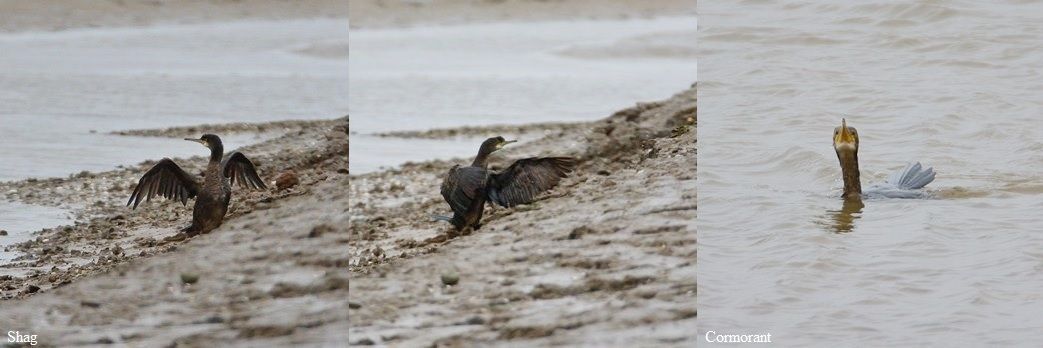
At Thornham point 2 Marsh Harriers were seen over the beach and a Rock Pipit was also seen.
A drive around Choosley Barns found 2 Red Kite and 2 Chinese Water Deer initially before coming across 3 Brambling in a Finch charm, also consisting of Goldfinches and Chaffinches, approximately 40 Fieldfare, Marsh Harrier and a Brown Hare.
On the way back, Jason spotted a Great White Egret in a field just before Cley village. Although it was now really dull the egret was fairly close so a few photos were taken.
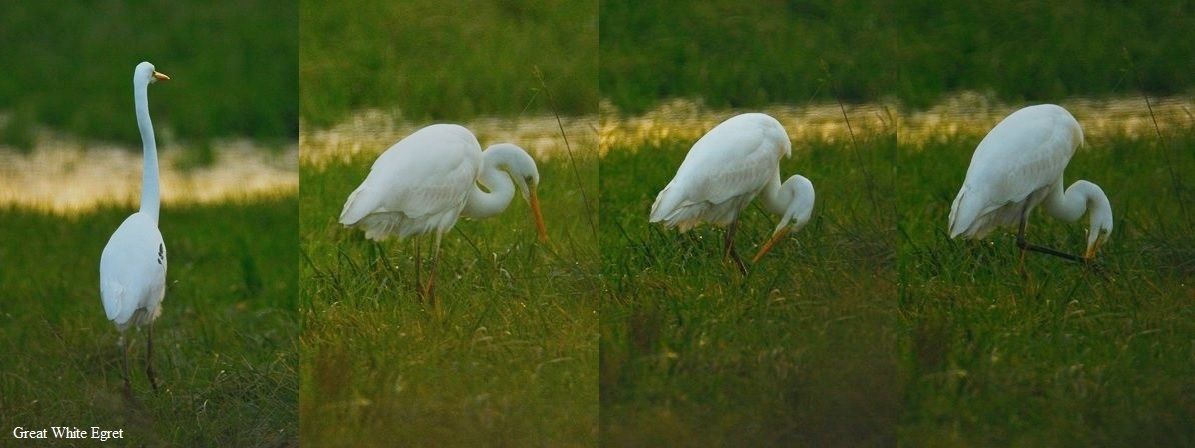
Buzzards, Kites and 5000 Pink-feet......
A Common Buzzard and a Red Kite were seen en-route to Salthouse with Jason Nichols, on yet another cloudy grey Thursday!
Along Beach Road, Salthouse a Little Egret and a Little Grebe were of note along with a dead baby Grey Seal pup on the shingle ridge.
Approximately 100 Brent Geese were on fields with Canada Geese along Beach Road, Cley, but not much happening off Coastguards.
So on to Morston, where 8 Redshank, Grey Plover, 2 Curlew and 6 Teal were present.
Two more Common Buzzards were seen at Stiffkey and 2 more at Wells Pools along with a Sparrowhawk.
Another Common Buzzard and 3 Red Kites were seen at Burnham Norton and a stop for lunch at Brancaster Staithe found Bar-tailed Godwit, 5 Black-tailed Godwit, Grey Plover, a nice count of 19 Dunlin, Oystercatchers, Turnstones, Ringed Plover (with the Dunlin) Redshank and a Marsh Harrier.
Approximately 30 Fieldfares were seen in flight before heading to Thornham Point, where a Rock Pipit, 2 Marsh Harrier and a Little Egret were of note.

A Common Buzzard was at Choosley as were at least 5000 Pink-footed Geese with a lone Grey-lag Goose in their midst. Candidate for a genuine Grey-lag, based on carrier species-as geese are often adjudicated on? Although I have seen them many times before I never tire of the spectacle of so many geese either on the ground and in the air; it is unbelievable that this species is not protected by law from being shot!
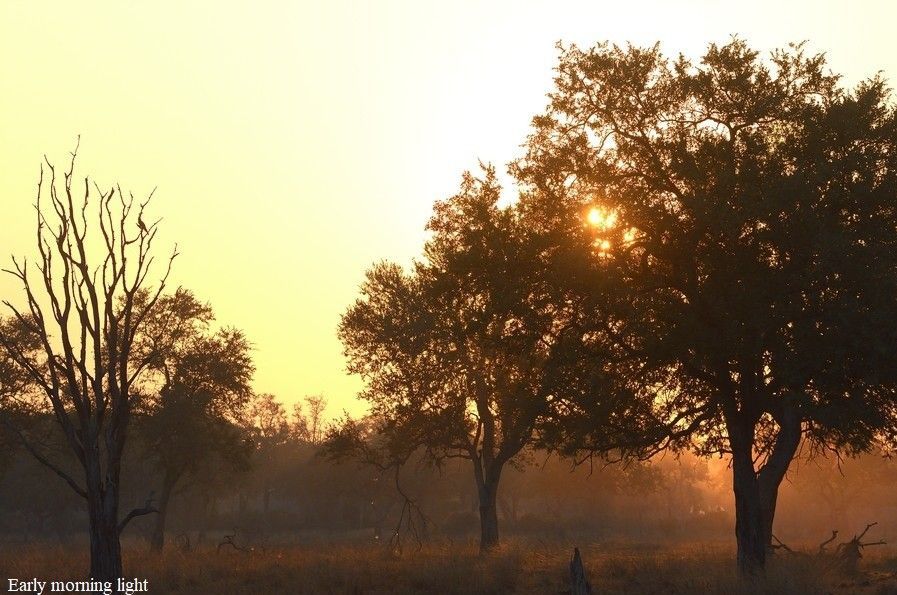
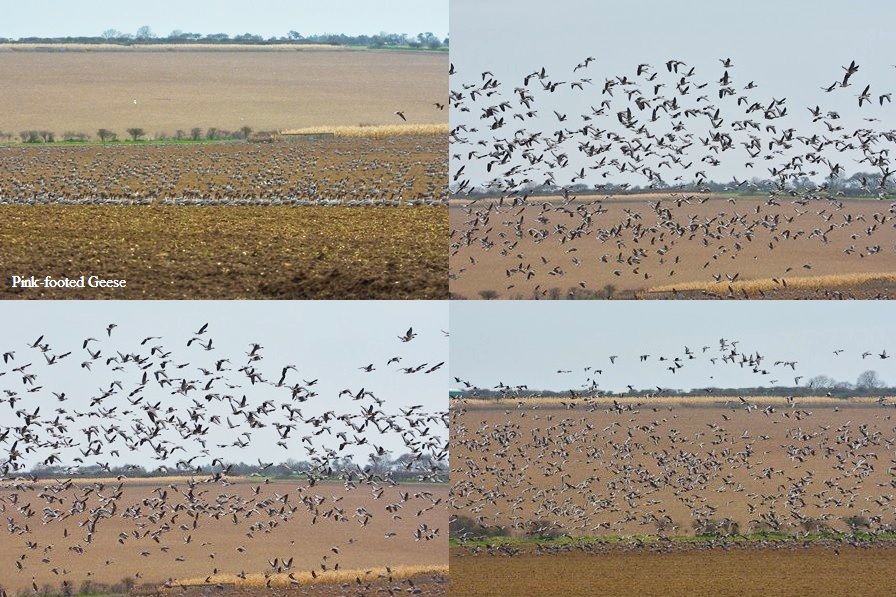

Heading back along the coast Red Kites were once again seen at Burnham Norton and this time there were 6 birds flying around the same area where there was a Muntjac road casualty; a little further on another Muntjac was seen, but this time alive!

At Burnham Overy approximately 1000 Brent Geese were on a field and at the Staithe 2 Grey Plover and 3 Little Egrets were of note. From the lay-by along the A149 at Burnham Overy another Common Buzzard was seen along with Marsh Harrier and some Pink-footed Geese on the fields.
At Holkham Freshmarsh 2 more Common Buzzards were present and on the ensuing journey home another 4 Common Buzzards (10 for the day) and another Red Kite (8 for the day).
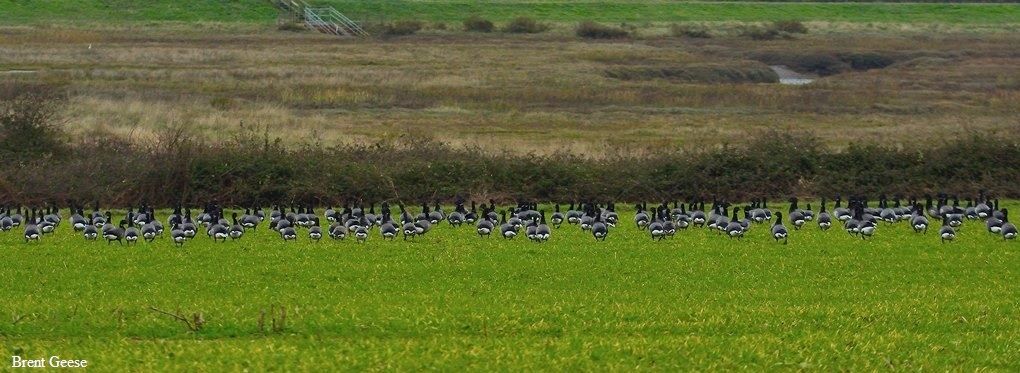
November 2023
Waxwing Déjà Vu and Smew......
The day (30th) with Jason began at Costessey, where 88 Waxwings had been reported (28th) for several days now.
Once there, I began to realise I had been here before and indeed had photographed Waxwings, along Jerningham Road 28-11-2016 and as it turned out eventually the Waxwings flew to a tree laden with red berries (probably a hybrid Rowan or Cotoneaster) next to a another tree with orange berries (where I remember them back in 2016 being reluctant to feed on), which was the same tree where I had photographed them before.
The Waxwings only visited the berries very briefly before flying back up to the taller trees and seemed very nervous probably due to the amount of assembled ‘wildlife photographers’ and the passing human traffic on the pavement and sports field behind the trees where they were feeding. However, a ‘few’ images were obtained of these very attractive winter visitors, before we moved on.
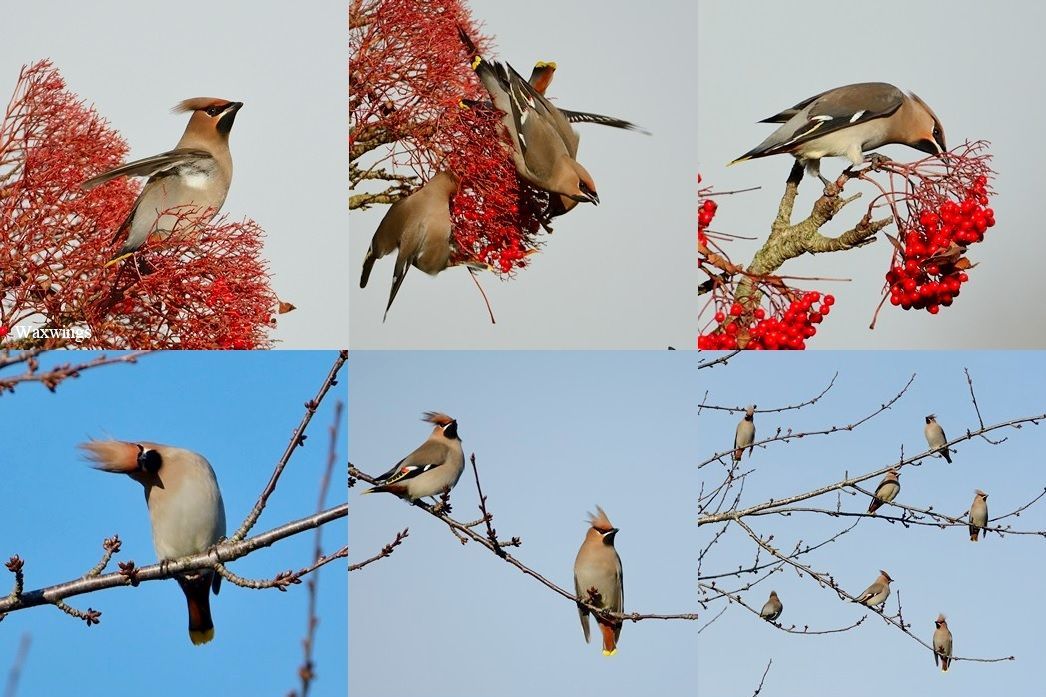
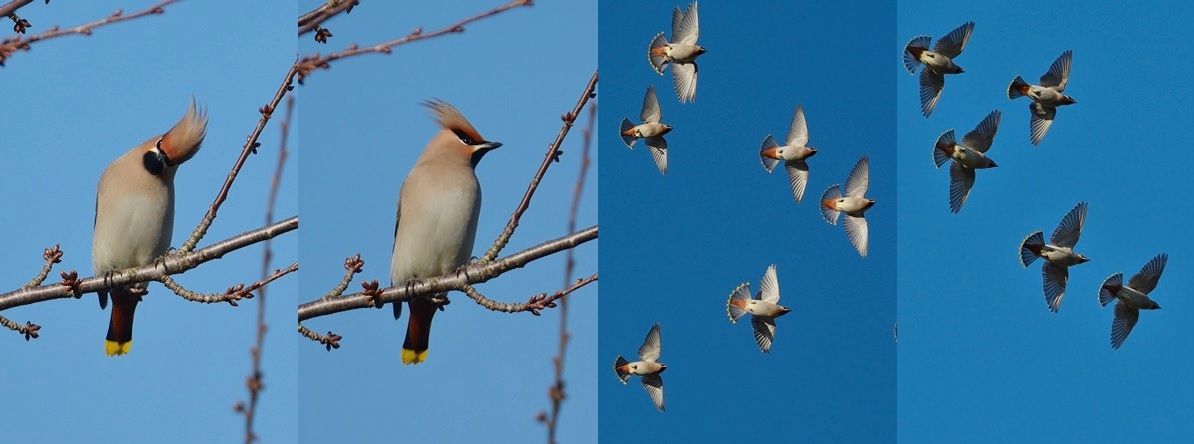

A bit of an expansive drive today as we headed to Cley, where the highlight was a Marsh Harrier along Beach Road, so we decided to head back along the coast to more local ‘pastures’!
There had been 3 Smew reported from Filby Broad and another from the hide at Waterside, Rollesby so we decided to go there, having successfully visited that spot for Smew before. Although it was backlit, I immediately found the Smew preening and bathing etc not far from the hide and as time went on it drifted closer still. Several Tufted Duck were also here and Jase saw a Kingfisher.

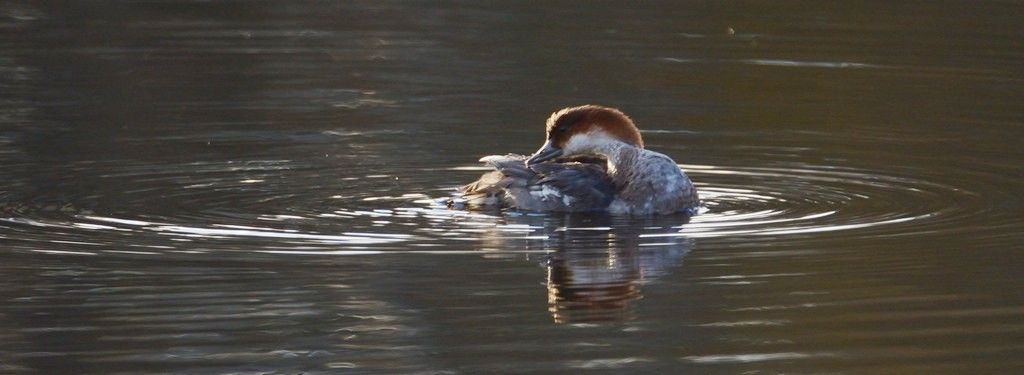

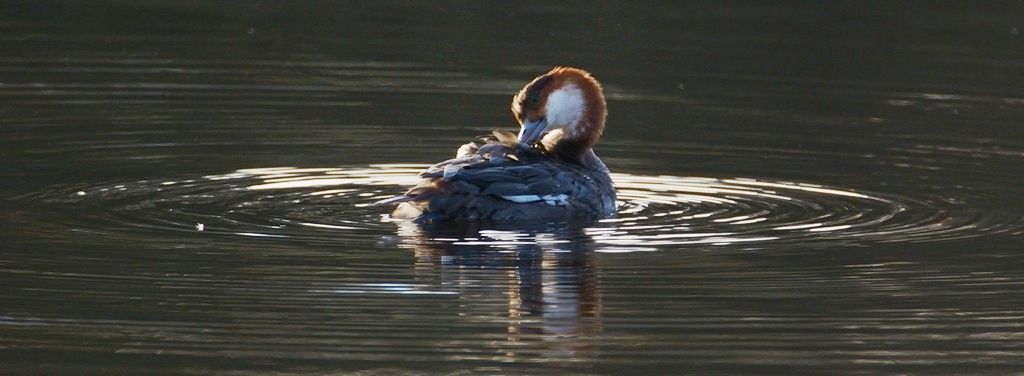
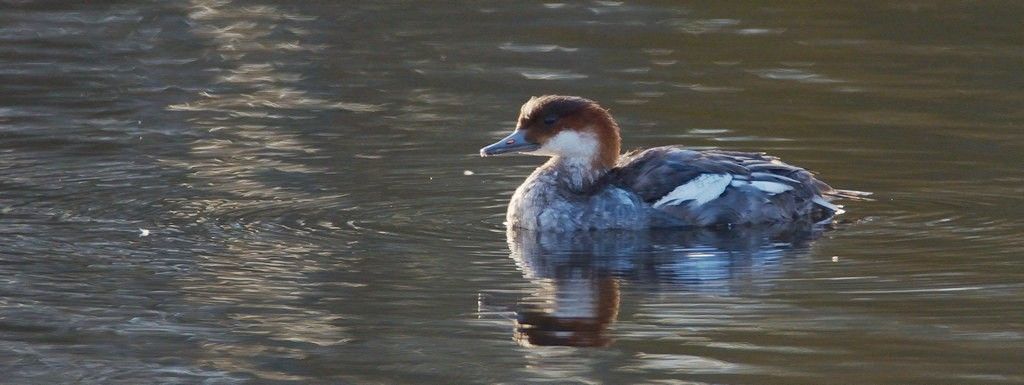
Next stop was at Sea Palling where a few days ago Bewick’s Swans had been reported, but not recently, so the visit was purely speculative. However, we found 5 Bewick’s and 4 Whooper Swans here amongst a few Mute Swans, so all three swans in one view is nothing to be ‘sneezed at’! Also here were 2 calling Common Buzzards.
At Waxham we found approximately 1000 Pink-footed Geese on a field and Simarly at Horsey opposite the ‘lay-by’ where after scanning the flock we also found a lone Barnacle Goose in their midst. Then Jase saw a Great White Egret fly across the road and land, but then it flew up and close views were had in orangey evening light.


Gloomy Thursday weather, but some good birds......
I remember talking to a photographer along the Weaver’s Way at Hickling some time ago who said he preferred to photograph wildlife subject matter with grey skies and dull light; well he would have loved the conditions today (16th)!
A visit to Winterton failed to see the Pallid Swift, which had been around the village for several days now, so we decided to move on and return later.
Along Beach Road, Salthouse we found 2 Stonechat before seeing a ‘large’ Diver flying west, gradually heading inland, which appeared to be a Great Northern Diver.
Another Stonechat was seen from Beach Road, Cley, where there was also some pipit action with 3 birds one of which was bathing in a puddle, which looked like a Meadow Pipit, but a darker pipit photographed in the overflow car park looked like a Rock Pipit.
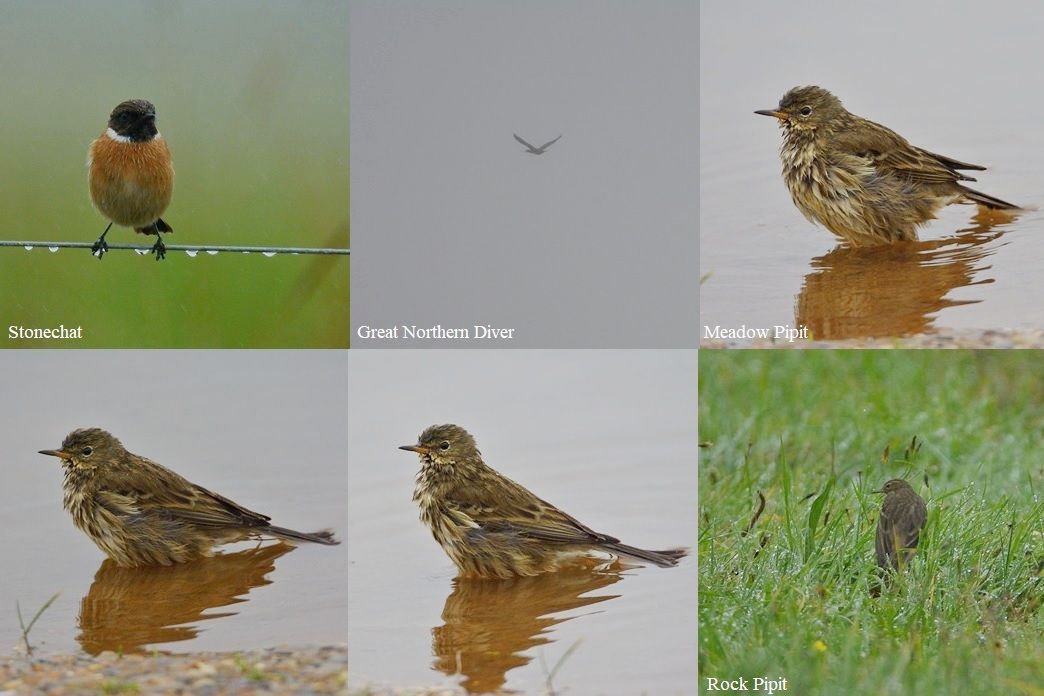
A look for Waxwings at Wiveton Green then ensued but there was no sign of the 14 birds reported there, so after giving it some time and seeing a Redwing we moved on.
At Morston a Kingfisher was seen flying up the channel and also here were; 2 Grey Plover, 4 Redshank, Curlew, Oystercatcher, 2 Little Egrets and 12+ Brent Geese but they were not hiding the reported Red-breasted Goose (reported over the past few days in the general area) and seen flying inland with a group of Brents earlier that morning.
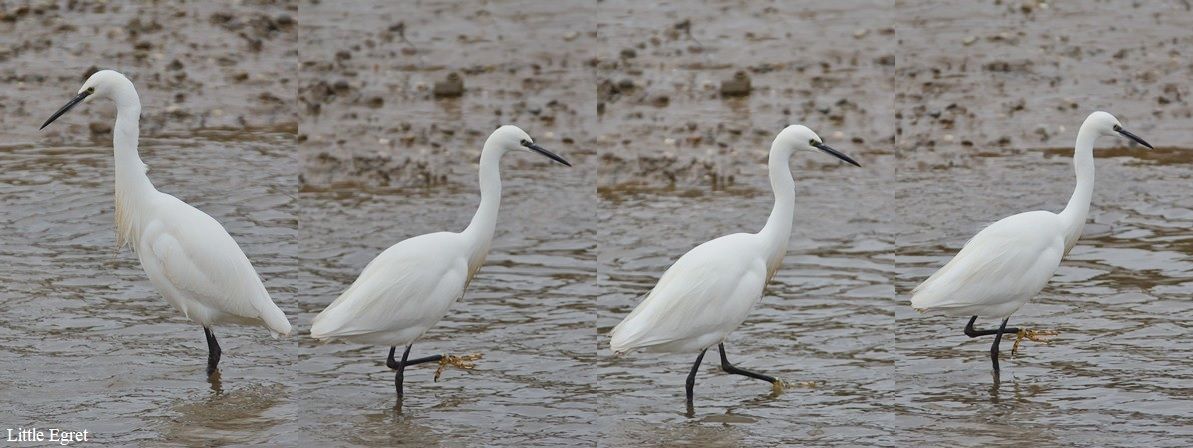
Approaching Stiffkey, a Great Spotted Woodpecker flew over the road and a little further-on at Wells Pools Red Kite, 2 Common Buzzard, 2 Marsh Harrier and a Chinese Water Deer were the highlights.
We decided to make our way back along the coast and called in again at Wiveton where this time we were successful in seeing 12 Waxwings, which were mainly fly-catching and a Red Kite following a Crow. Amazing what is flying insect-wise even in dull drizzly conditions!
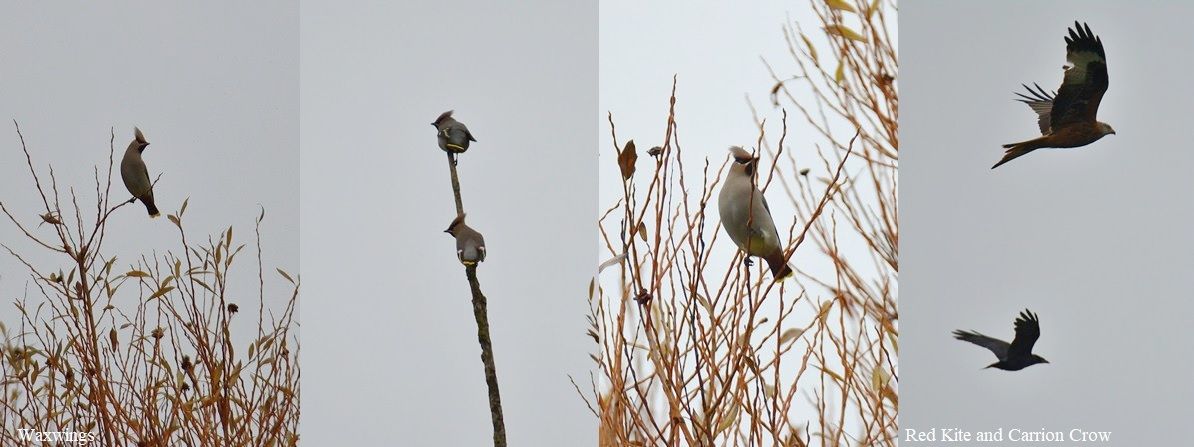
As planned we went back to Winterton and after a few minutes found the Pallid Swift over the village sign on the green. The swift flew low over the area and amongst the buildings; like the Waxwings, obviously finding insect prey in the now very gloomy and wet weather.
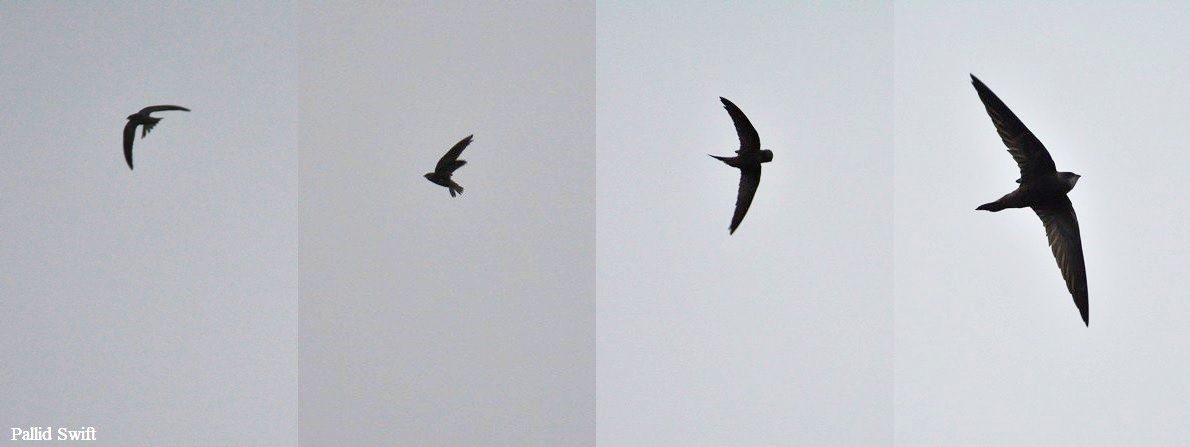
Interesting Moth at Morston toilet block, Black Redstart and Glossy Ibis on a dull, but productive day......
A Little Egret started off a very grey and damp day (2nd) out with Jason Nichols at Beach Road, Salthouse, but again there was no sign of the reported Long-tailed Duck. However, several Parasol Mushrooms were growing in the eastern field.
A Little Egret was seen from Beach Road, Cley and at the Coastguards there were at least 6 Meadow Pipits and a Pied Wagtail that might have well been new arrivals on the shingle bank.
At Morston Quay 2 Rock Pipits were a nice find and also here were Little Egret, 15+ Brent Geese, 20+ Pink-footed Geese flew east, 4 Redshank, 3 Curlew, Redwing, 6+ Blackbird and a Song Thrush.
A moth had attached itself onto Jason’s glasses when he visited the toilet block and photos were taken of it in the car before releasing it. As it turned out this was quite an interesting moth. As I couldn’t find its identity, despite being a well marked species, I sent it to Ken Saul who was very interested in the moth as it was a relative newcomer to the UK and told me it was a
Musotima nitidalis
Golden-brown Fern Moth and sent me a link to Norfolk Moths, which described it as an being ‘now resident in Norfolk Native to Australia and New Zealand, this adventive moth was first recorded in the UK in Dorset August 2009, thought imported with ferns as a result of the horticultural trade. It has since spread widely, with multiple sightings from other sites in southern England.’ New for Norfolk in May 2020 when an adult moth was netted at Horsford woods.
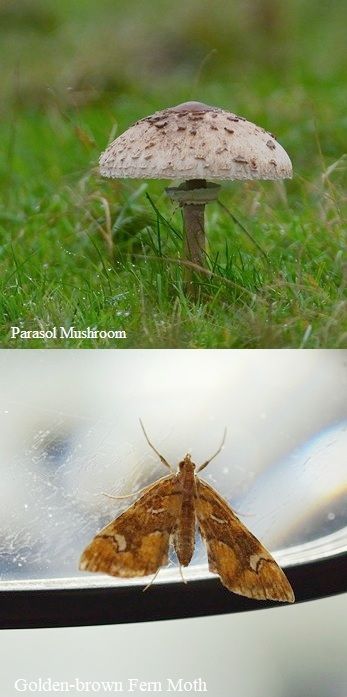
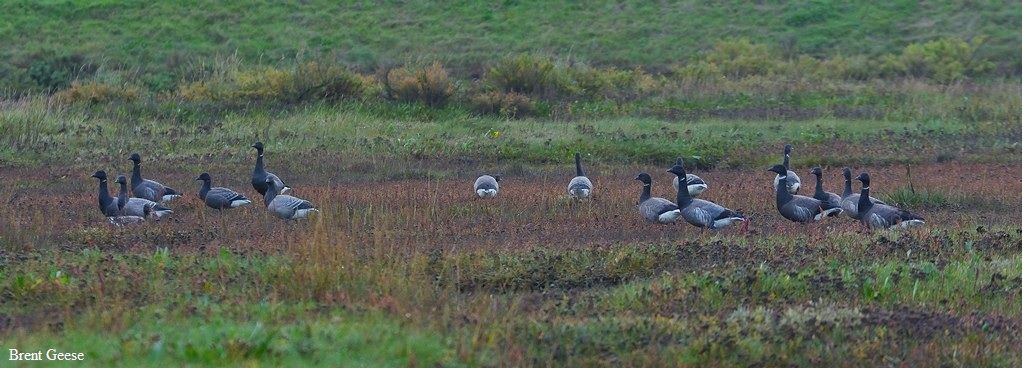

A Red Kite was of note on the way to Wells Pools, but we only found Gulls, Ducks and a few Geese here, so onto Brancaster.
We stopped to photograph some Black-tailed Godwits (11) on the western side of the Brancaster channel and it was here that Jase spotted a distant Red-throated Diver towards the end of the channel. We parked up for lunch and then noticed that the diver was making its way down the channel and allowed reasonably close photography, but was very wary of a woman who went down to the edge of the channel to photograph it and made its way east! Also here were 3 Grey Plover, 13 Ringed Plover, and several Turnstones.
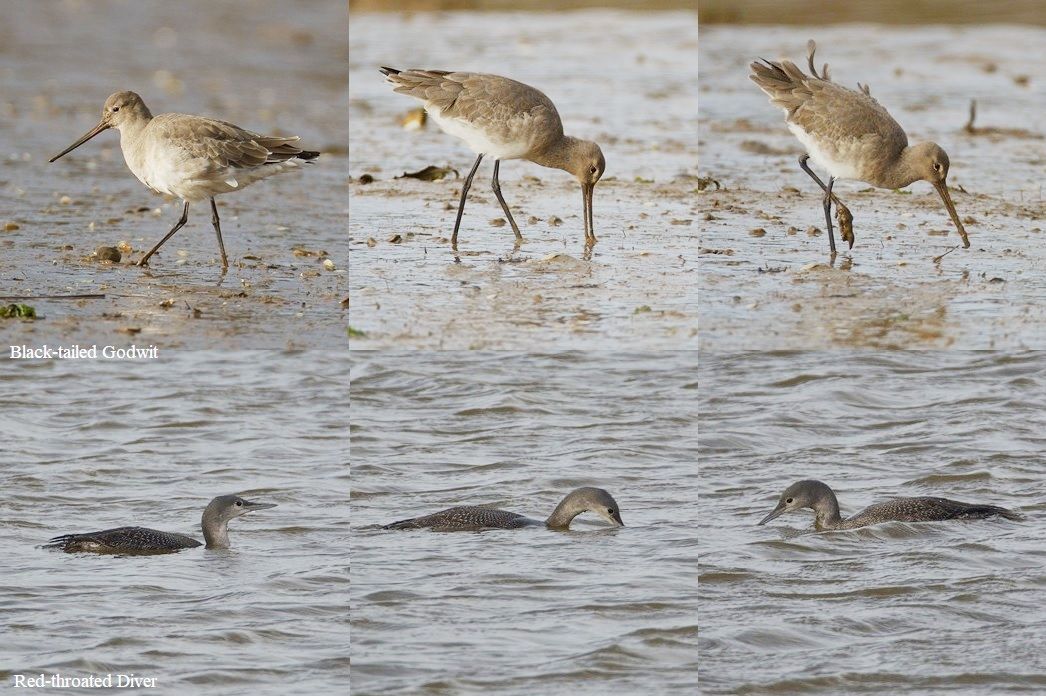
A stop at Holkham Freshmarsh found a Red Kite, 2 Common Buzzards and a Marsh Harrier before heading back to Wells.
We had called in earlier at Wells Lifeboat Station where a Black Redstart was reported, but couldn’t see it and avoiding the car park charge, continued our journey. However, there was now 2 Black Redstarts reported so we ‘bit the bullet’ and paid for the car park and eventually found one of the Black Redstarts at the back of the Lifeboat building. Whilst there a Red-throated Diver flew west relatively close and for the second time today a Red-throated Diver was photographed.

With a Glossy Ibis being reported from West Runton we headed there next and found the Ibis in the corner of a flooded field, at the bottom of Water Lane, feeding primarily on Earthworms, very successfully. Despite the dull light (not ideal to photograph a bird with iridescent plumage) images were taken and ended a very successful day, despite the weather!
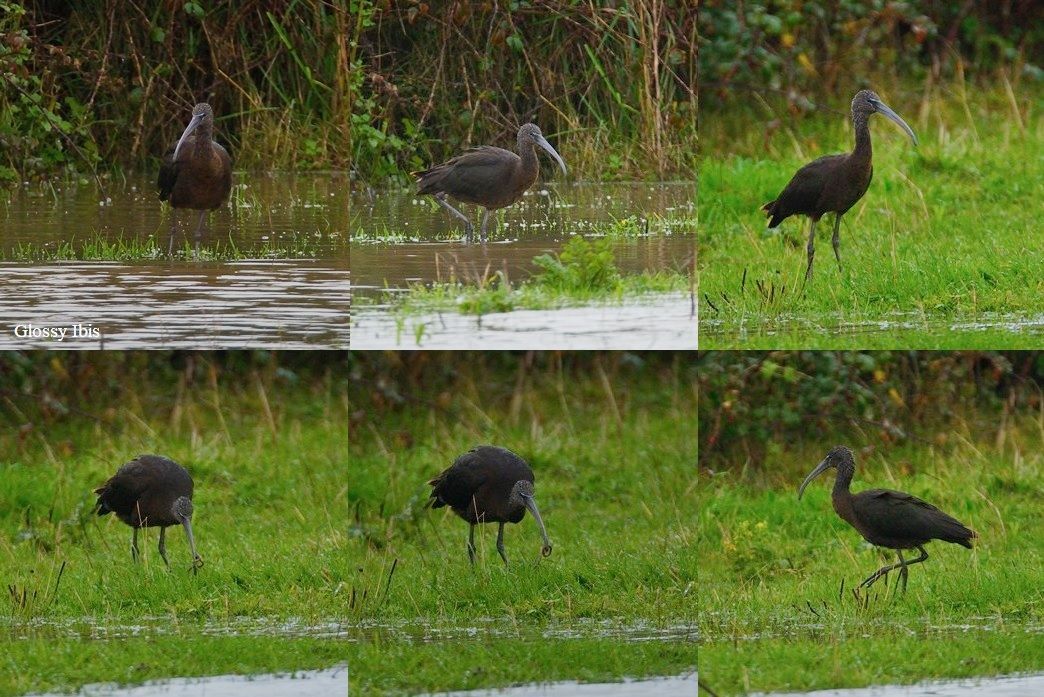
October 2023
Travel difficulties and a late Wheatear......
Road closures, diversions, broken down bus and car upside down on the road were just some of the highlights from Jason and my trip out along the North Norfolk coast (26th)!
It was a very grey, damp day but we encountered a RTA Red Deer just outside Potter Heigham along the Stalham bypass and skeins of Pink-footed Geese numbering approximately 1000 geese, just before we reached North Walsham.
With not much to report from Salthouse we went along Beach Road towards Cley Coastguards, where we found 11 Brent Geese on the Eye Field, but not much moving offshore. However, on the way back Beach Road a Wheatear flew up from the Eye Field and headed back north, but after a long reverse we found it again perched on a post by the overflow car park. I had already noticed this was a somewhat ‘bulky’ individual and had my suspicions, especially with the time of year in mind it might well be a subspecies of Wheatear; a Greenland Wheatear Oenanthe oenanthe leucorhoa.
A short article on Flickr by Tim Melling says that ‘Greenland Wheatears are larger and longer-winged than British breeding Wheatears, though they are not always easy to distinguish in the field. On the closed wing British Wheatears usually show five primary feather tips, whereas Greenland Wheatears show six or seven’, which he goes on to say ‘unequivocally identify this as a Greenland Wheatear’.
Some of the images taken suggest that there are at least 6 primary feather tips, possibly 7, but judge for yourself.
At Morston Quay we eventually found the semi resident Greenshank along with 3 Redshank, Oystercatcher, 2 Curlew and 7 Brent Geese.
At Wells Pools 3 Red Kites were seen along with a perched Common Buzzard and our first Fieldfares of the autumn numbering approximately 24.
The stop at Holkham Freshmarsh found more Thrushes, with Redwing, Song Thrush and a Mistle Thrush perched on top of a berry-laden Hawthorn. A Red Kite and a Common Buzzard were also recorded as was a Great White Egret, which quickly disappeared behind some cattle.
A look for a reported Long-tailed Duck at Beach Road, Salthouse drew a blank (apparently reported over an hour after it had been seen) and with the rain still coming down and grey skies still very much a feature we headed home.
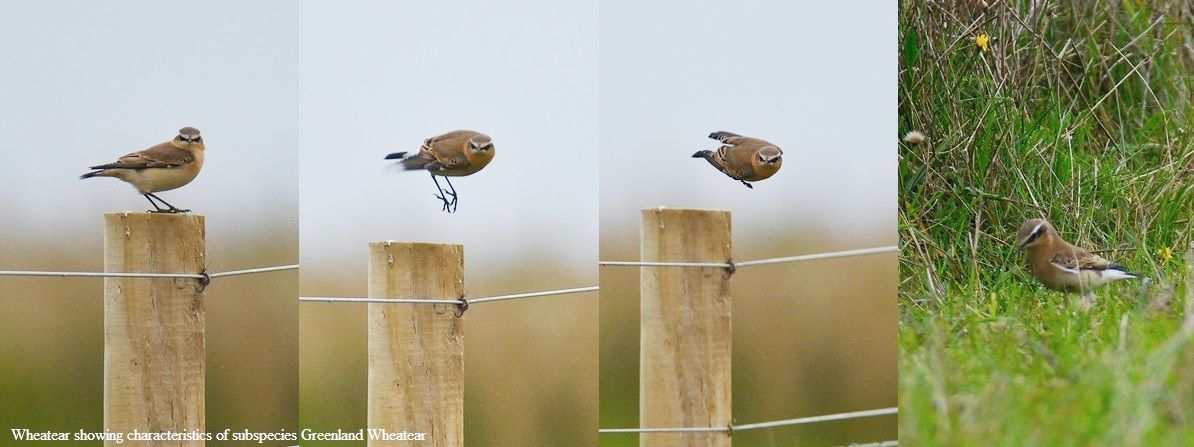
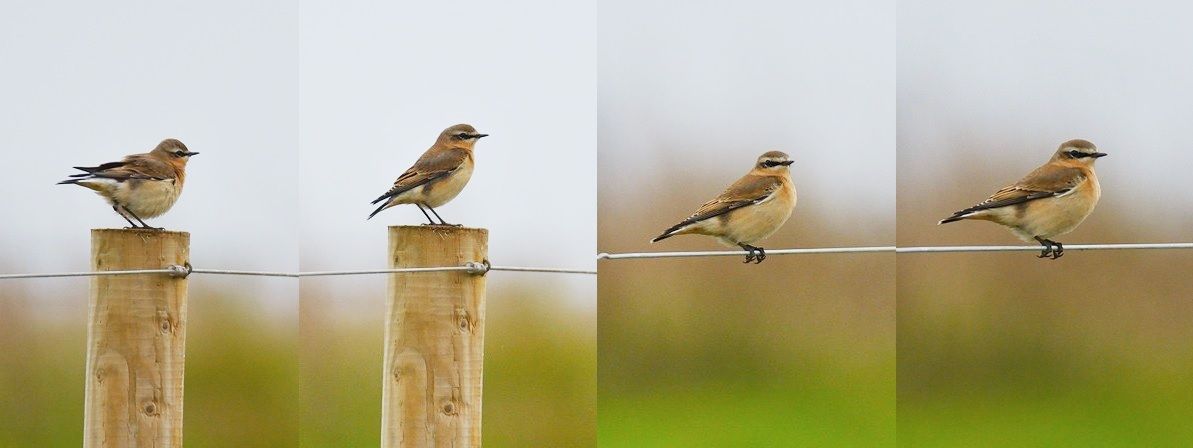
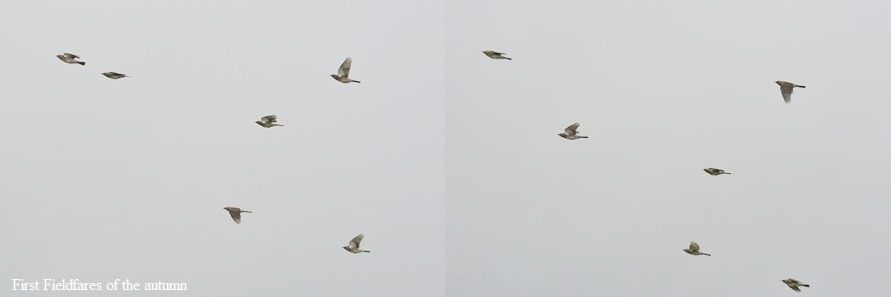
Egret Hat-trick, close-in oceanic birds and much more along the Norfolk coast......
Easterly winds were promising for a few migrants (19th) but myself and Jason Nichols found very few signs of incidental migration during the day; a sign of the times nowadays with bird populations in decline, like many other animals, particularly insects!
However, at Beach Road, Salthouse 5 Great White Egrets were seen in the grey skies heading towards us from the west. They then veered off to continue east over the sea. A little bit of activity in the reeds found 2 Blue Tit, Wren and a Stonechat looking for food and a Little Egret flew across the fields and promptly disappeared in a dyke.
Cley Coastguards provided a bit of interest with 3 Gannet going past, 6 Razorbill, 4 Red-throated Diver, Brent Geese, one Sandwich Tern-east and a few Ducks (Wigeon and Teal) and a Thrush came in off the sea and dropped down near some vegetation. This was later identified as a Song Thrush. A male Stonechat was perched on top of a Gorse bush on the way back along Beach Road.
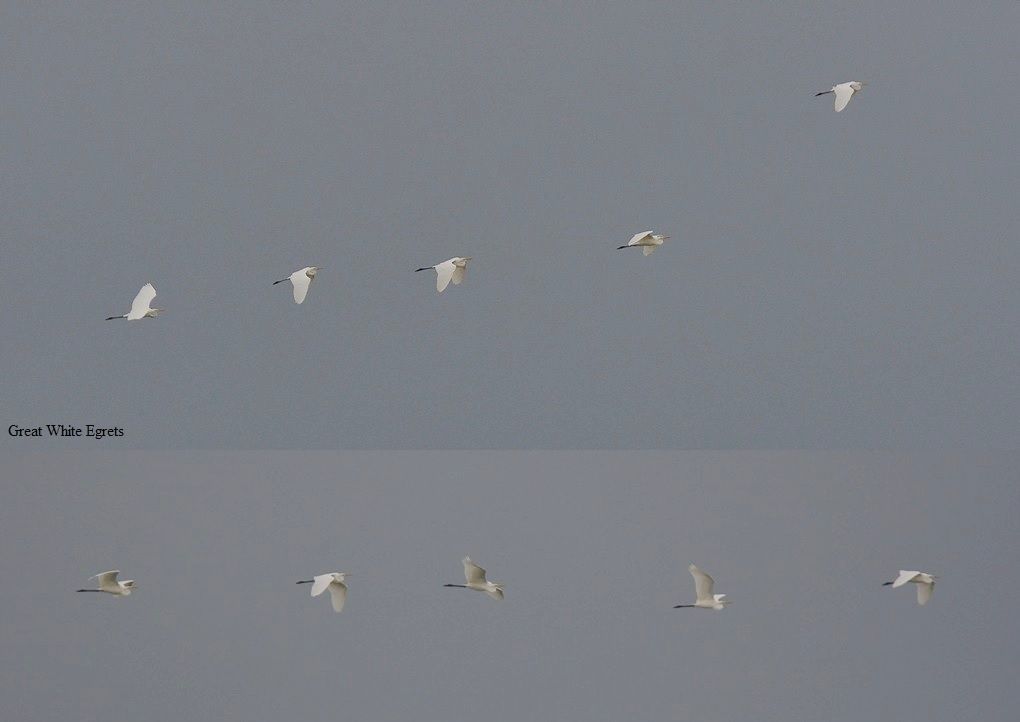
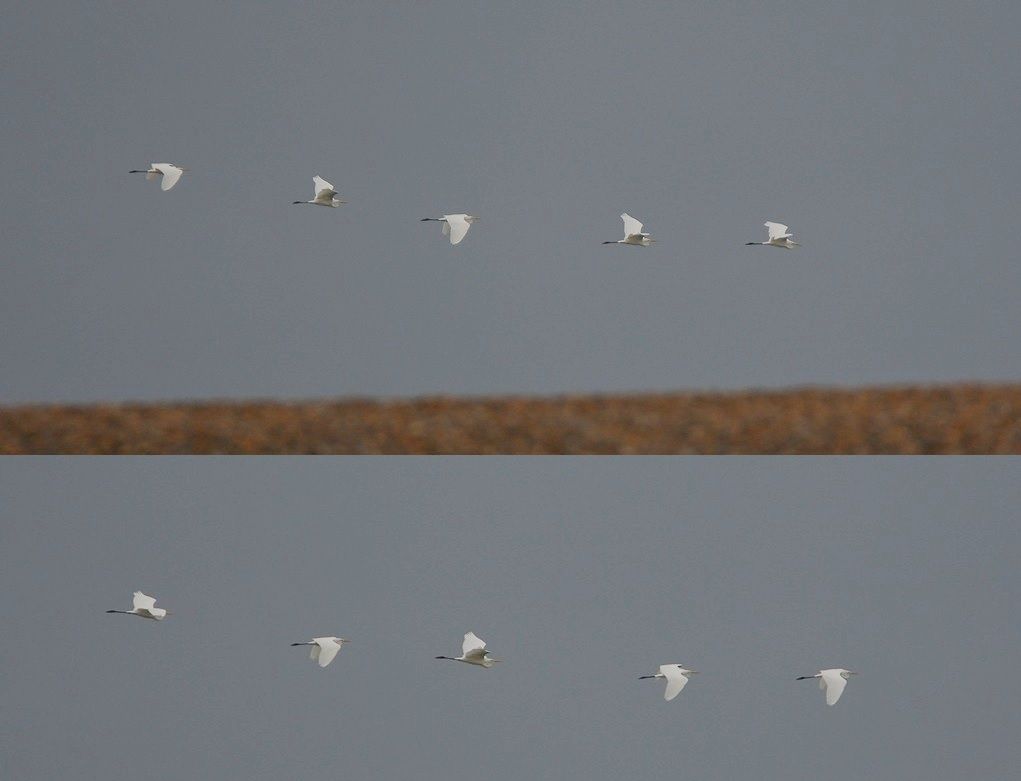
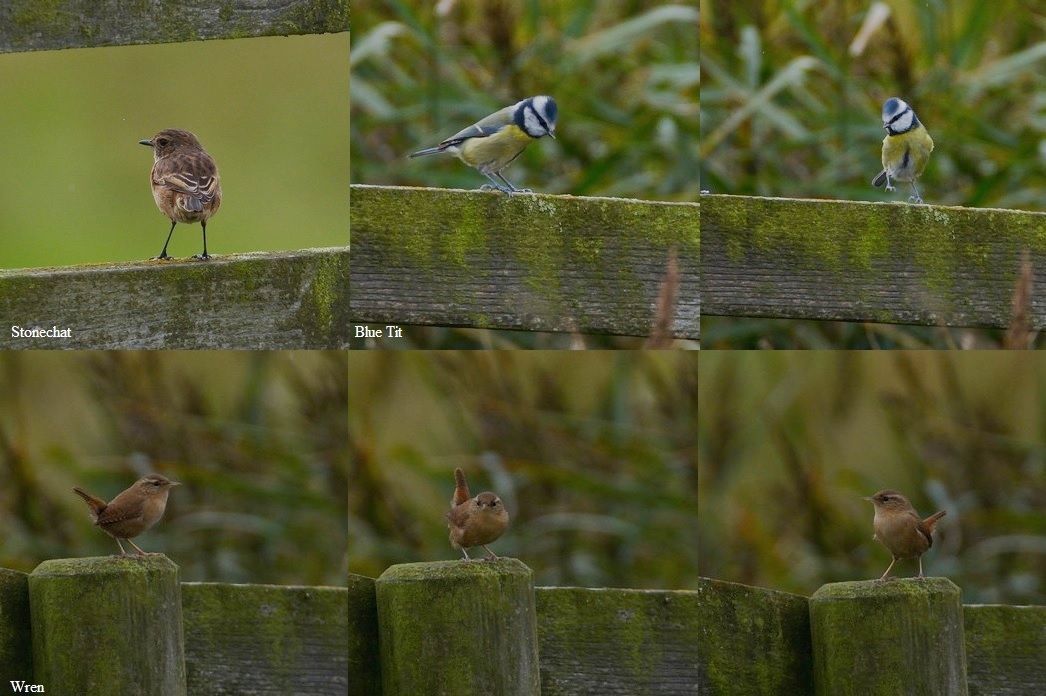
A look for some Cattle Egrets then ensued, with a walk along the flood bank to Blakeney just on the outskirts of Cley village. We were not disappointed as some ‘white birds’ were visible amongst a herd of black cattle, a little way along the path. There were 17 in total and apart from mingling with the cattle they were also perching in the trees; hovering in the wind before alighting. A Grey Heron was also here along with Pheasants, Jackdaws and Rooks and we now had a hat-trick of Egrets, all before 11 o’clock!
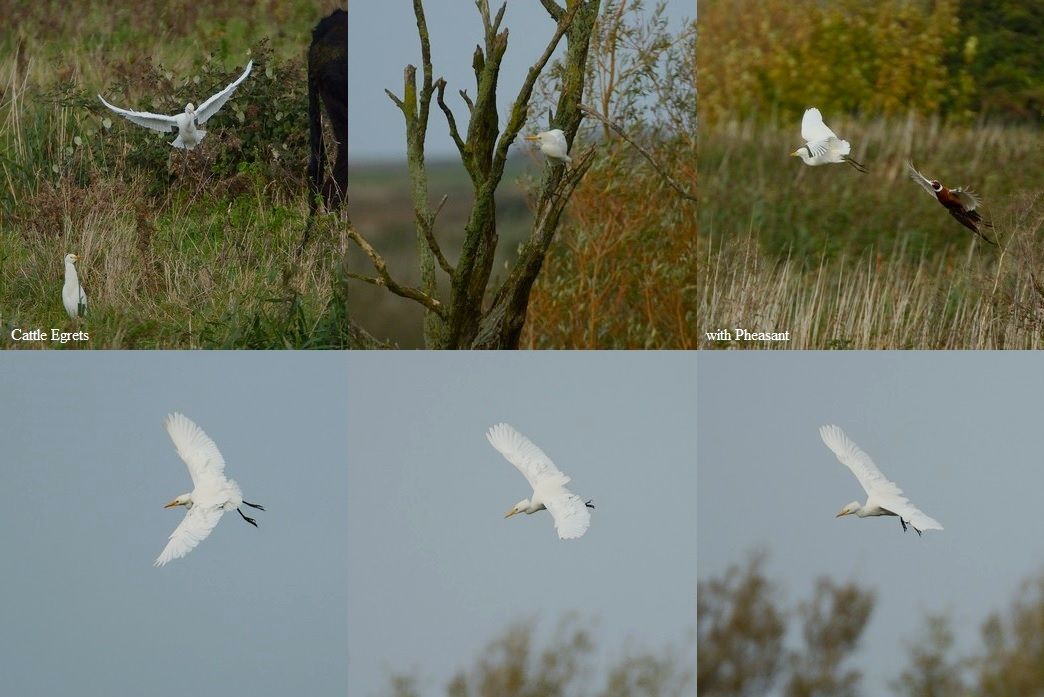
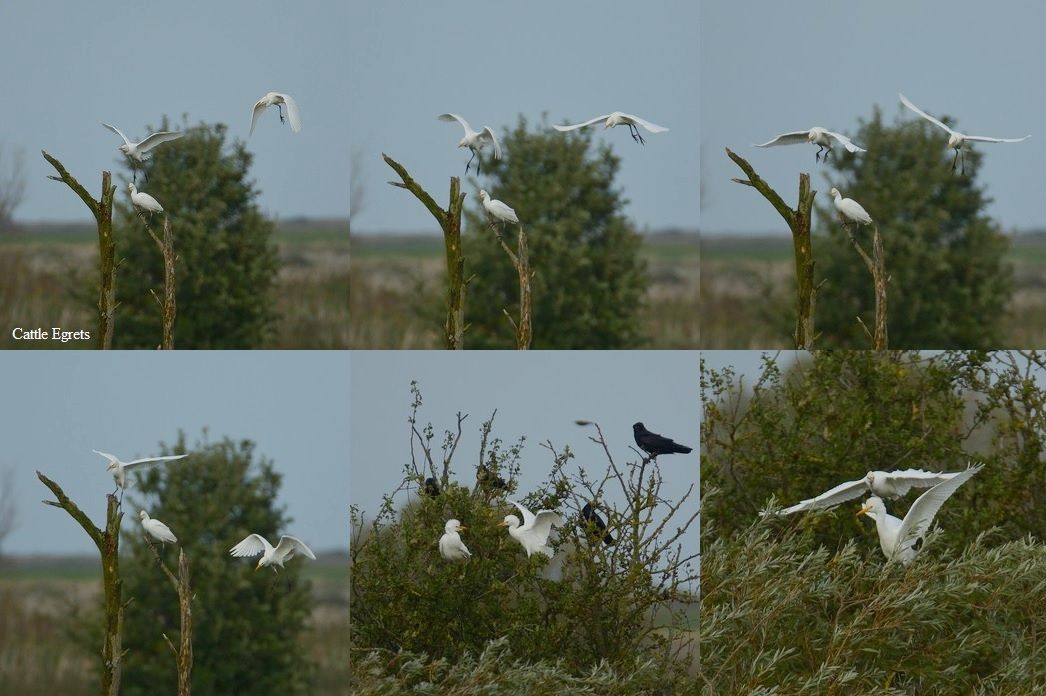
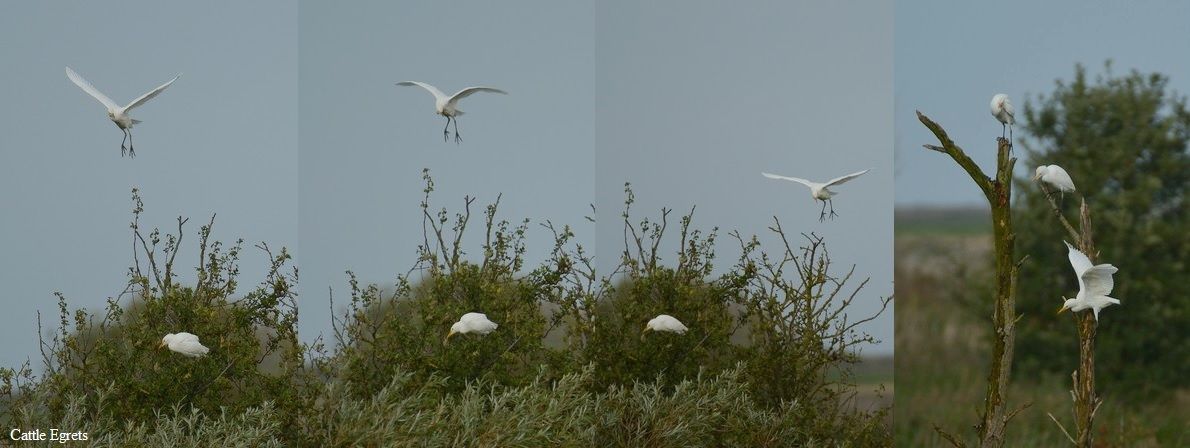
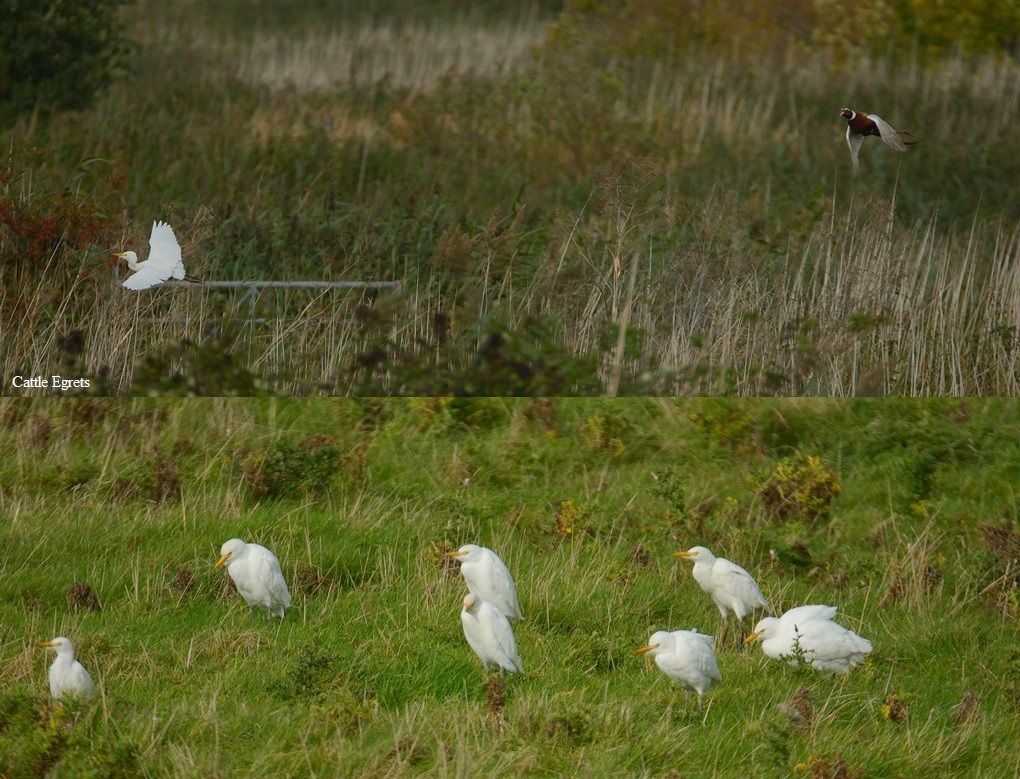

High tide and boat trips meant there was not too much to see at Morston Quay but a Little Egret was present, on what was turning out to be very much an Egret day!
Wells Pools had plenty of Gulls and ducks, including 2 Pintail. A Marsh Harrier flew over as did a Common Snipe, whilst 3 Black-tailed Godwit and a Chinese Water Deer were also seen here.
A Weasel dashing across the road at Burnham Overy was good to see, before stopping off at Brancaster Staithe for lunch.
Not too much here but there were 3 Black-tailed Godwit Ringed Plover, Curlew Turnstones, Oystercatcher and at least 15 Brent Geese.
50 plus Black-tailed Godwits were at Thornham, along with Redshank and Curlew in the channel and also here was a Little Egret.
A Drive around Choosley Barns was quite productive and very noticeable was at least 60 Red-legged Partridges seen, probably ready to be shot at! A Red Kite was seen over a field, were there approximately 1000 Golden Plover with Lapwings and 2 Ruff. 2 Common Buzzards, 20+ Pink-footed Geese, 4 Yellowhammer and a latish Common Darter and a Red Admiral made for an enjoyable circular drive.
A stop at Burnham Overy Staithe was also very productive, especially when Jason spotted a Red-throated Diver in the channel and I also saw a bird swim behind some rocks, so we decided to go for a walk along the flood bank to try and get closer to the diver and hopefully find out what the ‘disappearing swimmer’ was.
The Red-throated Diver was having a bit of a wash and a preen and was duly photographed. Then on the walk back we found the mystery bird; a Guillemot constantly diving for food, which might explain how we didn’t see it on walk along the bank! Also seen here were 2 Ringed Plover, Black-tailed Godwit, 2 Redshank, Grey Plover, a few Brent Geese and 120+ Pink-footed Geese on a nearby field.

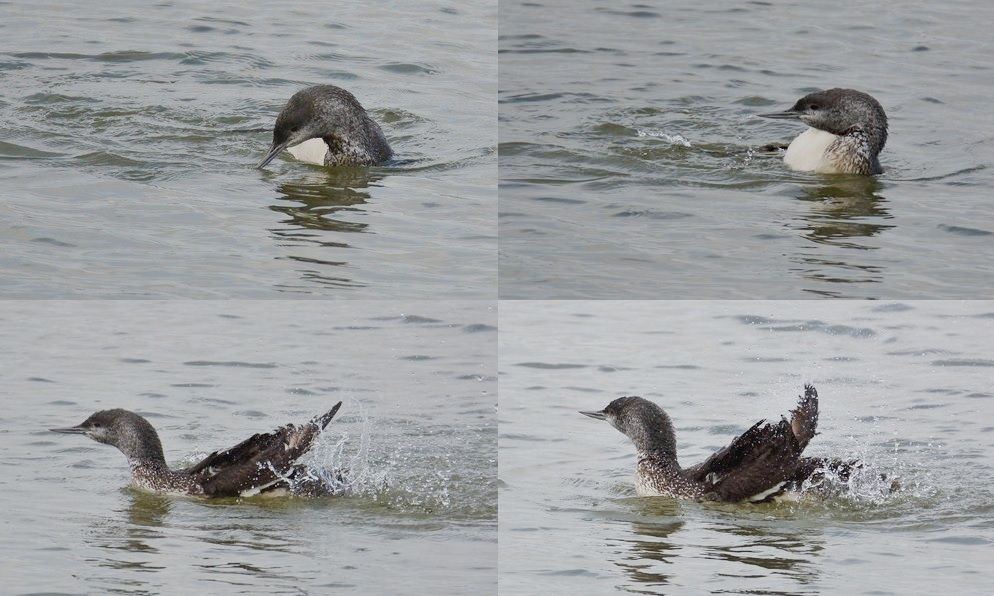

A stop at Holkham Freshmarsh found yet more Egrets, with 2 Great White Egrets flying over the marsh east. 4 Red Kite were in sky along with 2 Common Buzzard and a short distance further along the road we found one of the Great White Egrets amongst some cattle and then 2 Cattle Egrets flew in to join the Great White and the 2 Grey Herons also in attendance. A very productive day indeed!
GYBC is scored 12% the third lowest in the country for their ‘efforts’ to tackle Climate Change and Biodiversity loss and an absolutely shocking 0% in terms of biodiversity and 'collaboration & engagement'!
The State Of Nature Report released last week makes grim reading. ‘New research has found that UK wildlife has decreased on average by 19% since 1970, and one in six species are now at risk of becoming extinct in Great Britain. This is on top of centuries of nature loss driven by human activity with the UK now one of the most nature-depleted countries in the world.’
With this report in mind, I recently received an email from Extinction Rebellion East of England, which highlighted a report by Climate Emergency UK where they assessed all UK councils on the actions they've taken towards net zero. The Scorecard assessment consists of 91 questions or less, depending on council type, across 7 different sections, created in consultation with over 90 different organisations and individuals. Each council was marked against these criteria and given a right to reply before the scores underwent a final audit. This work was completed between January and August 2023. Unless otherwise stated, council climate action from 1st January 2019 up until 31st March 2023 was assessed.
Great Yarmouth Borough Council scored 12% the third lowest in the country for their ‘efforts’ to tackle Climate Change and Biodiversity loss and an absolutely shocking 0% in terms of biodiversity and 'collaboration & engagement'!
I like, I guess many people was asked to contact Councilor Paul Wells cllr.paul.wells @great-yarmouth.gov.uk who is responsible for Environment and Sustainability at GYBC to ask him about GYBC’s response to these unacceptable figures.
I emailed Paul Wells and not unsurprisingly (due to previous experience with GYBC over cutting regimes and climate issues) was met with a defensive reply with no recognizable accountability and accused me of using an ‘aggressive tone’! When asked about what GYBC were doing to address these issues and whether they had a resident Ecologist or not and raising other issues I drew (not unexpectedly) a blank.
As Mr. Wells pointed out mine is just one opinion, so do contact him (via email or telephone-01493846129) to put your views forward. If anyone requires any further information on this matter please Email me.
I recently bought a second-hand book; Chris and Tilde Stuart’s Field Guide to the Mammals of Southern Africa (1988) to further research the wildlife of Zambia and found a very fitting piece by Norman Myers, which represents the article.
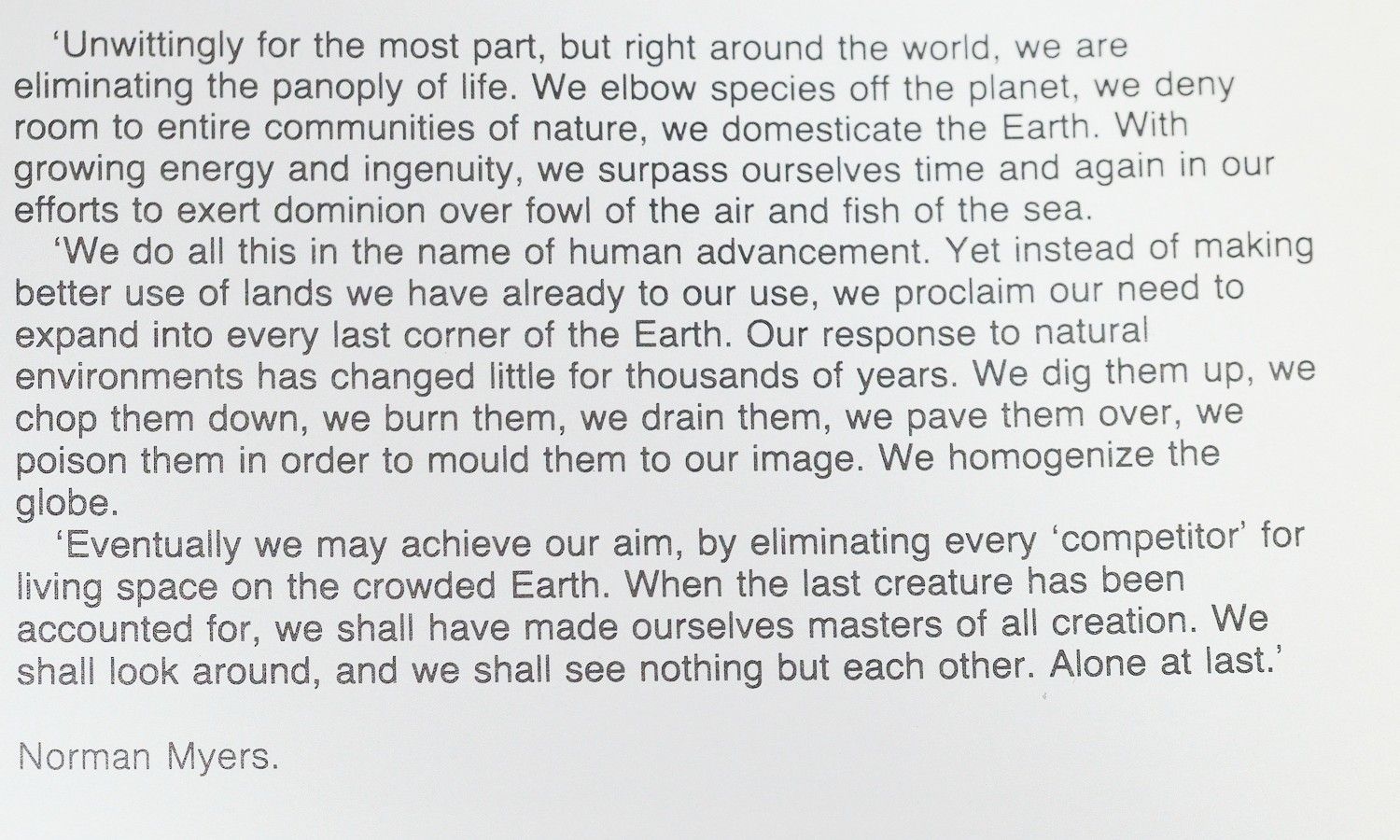
Knot a surprise at Thornham......
The day (12th) with Jason began at Beach Road, Salthouse where a Kingfisher flew low over the fields towards a dyke, brightening a rather overcast day.
Not too much to report from the pond at Walsey Hills but a Cetti’s Warbler was heard and 3 Moorhens were present.
Gannet, Red-throated Diver and Razorbill were of note off Cley Coastguards and along Beach Road, a perched Kestrel, Stonechat and Red Kite was seen.

At Morston Quay a Greenshank was seen again, along with 6 Redshank, Oystercatcher, Curlew and 4 Little Egrets.
At Wells Pools a Red Kite flew over and a Chinese Water Deer was grazing amongst the waterside vegetation. Approximately 20 Ruff were p-resent along with 25-30 Black-tailed Godwits.
Lunch at Brancaster Staithe found a few waders: Turnstone, Curlew, Redshank and a Little Egret.
Thornham Harbour was more productive for waders with a total of 5 Knot found here feeding along the channel, on ‘small worms’ and presumably small crustaceans. A Bar-tailed Godwit was also here as were Redshank, Curlew, Little Egret and a Marsh Harrier flew over.
Burnham Overy Staithe produced a Great Black-backed Gull and 4 Little Egrets, whilst a stop at Holkham Freshmarsh found the immature White-tailed Sea Eagle as it flew up and perched on a dead tree. A Common Buzzard and 2 Muntjac were also seen.
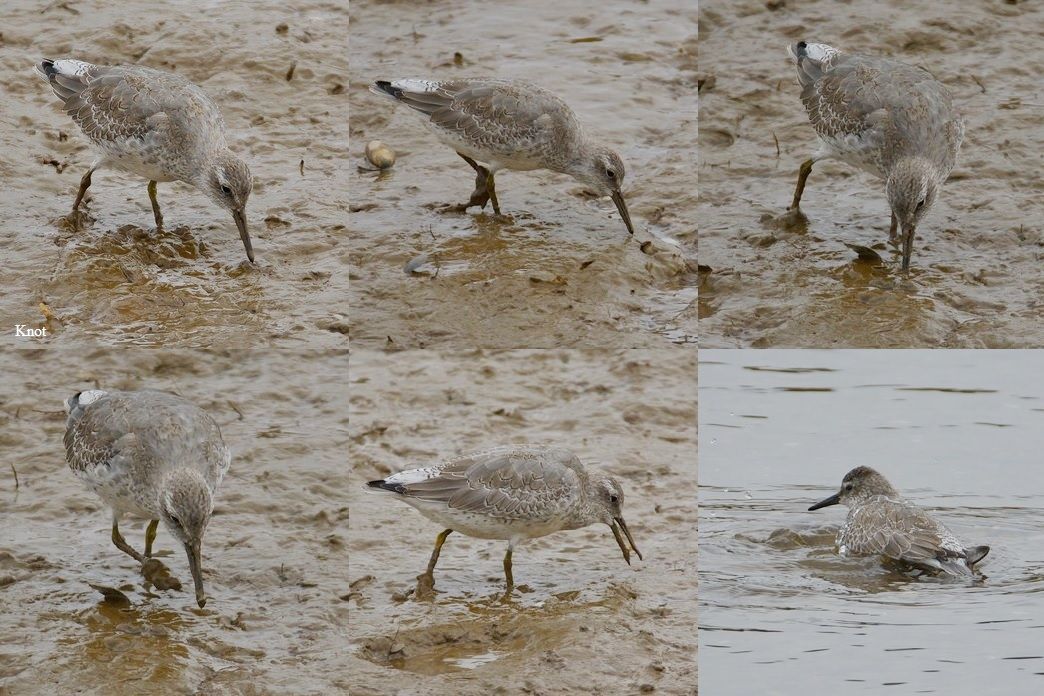
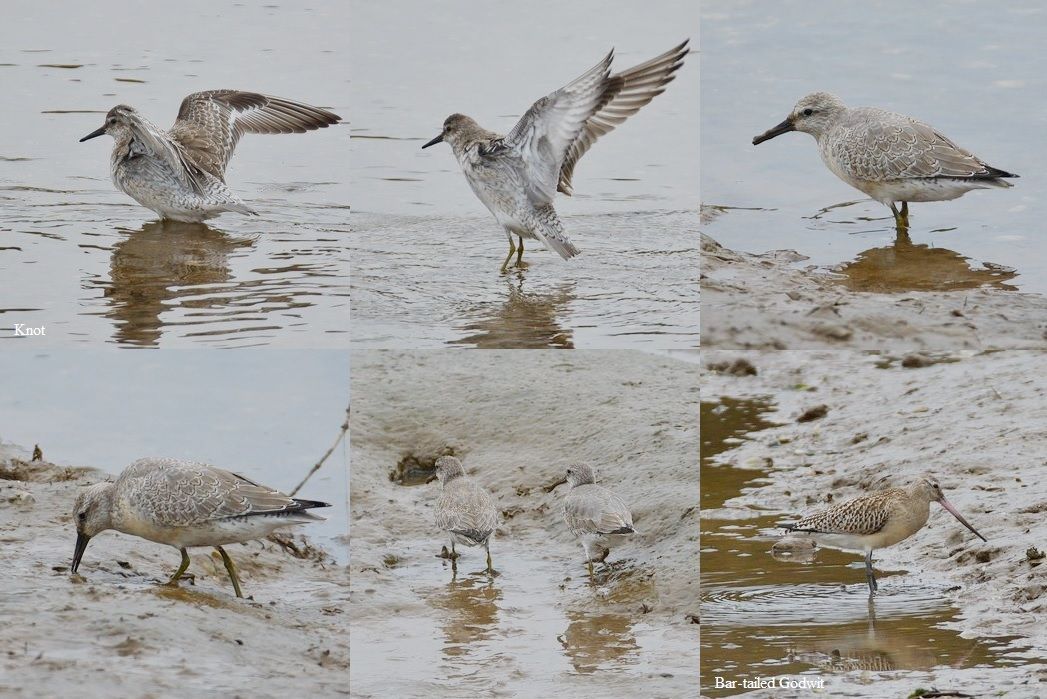

September 2023
Cattle Egrets and a Cley 'feeding frenzy'!
The day (28th) with Jason Nichols began at Salthouse where a walk along the path, just west of the duck pond found a total of 10 Cattle Egrets, a Grey Heron and photogenic Meadow Pipit and hovering Kestrel on the walk back to the car.
The pond at Walsey Hills had 5 Teal, 3 Moorhen and 2 Coot, but we couldn’t find anything else here.
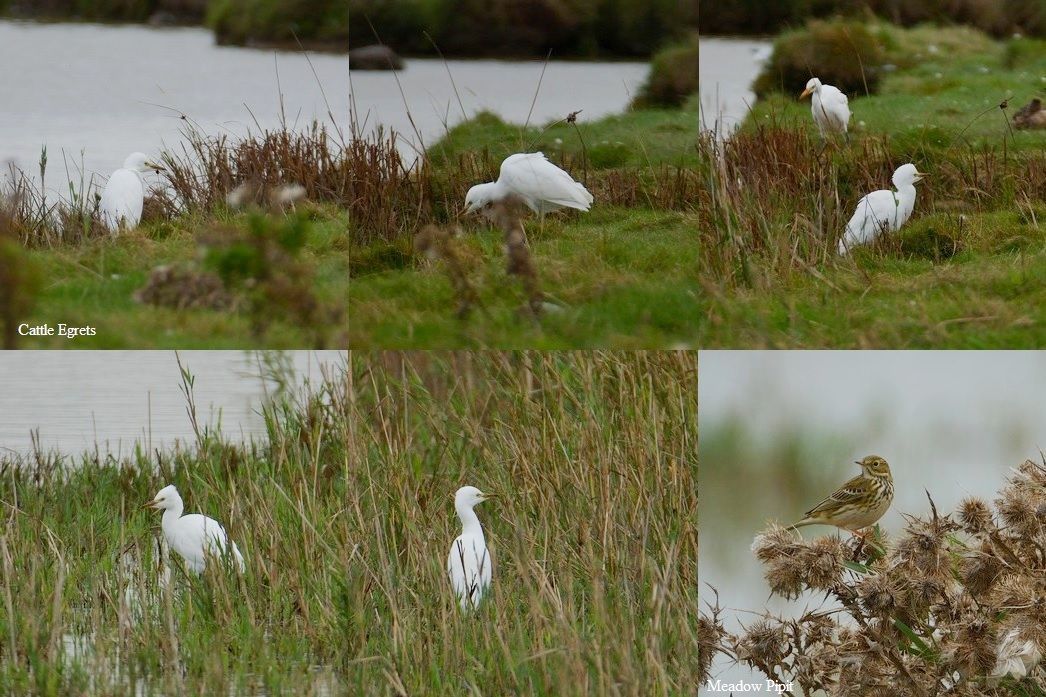

A look on the sea at Cley Coastguards found a ‘feeding frenzy’ going on, courtesy of whitebait shoals, indicated by the bodies littering the tide line. Whilst most of the birds here indulging in capturing fish were Black-headed Gulls, there were also a few Herring Gulls and a Great Black-backed Gull. However, there were also at least 20 Gannets (all but one adult, immature birds) making short arrowed dives to take advantage of this food source. Also here were about 6 Razorbills, a Red-throated Diver close in and a Brent Goose flew west and 4 Lapwing came in off the sea.
At Morston Quay a juvenile Spoonbill was present in the channel, the first time we have seen one here. A Greenshank was once again present and there were also 5 Redshank, Curlew and a Little Egret.
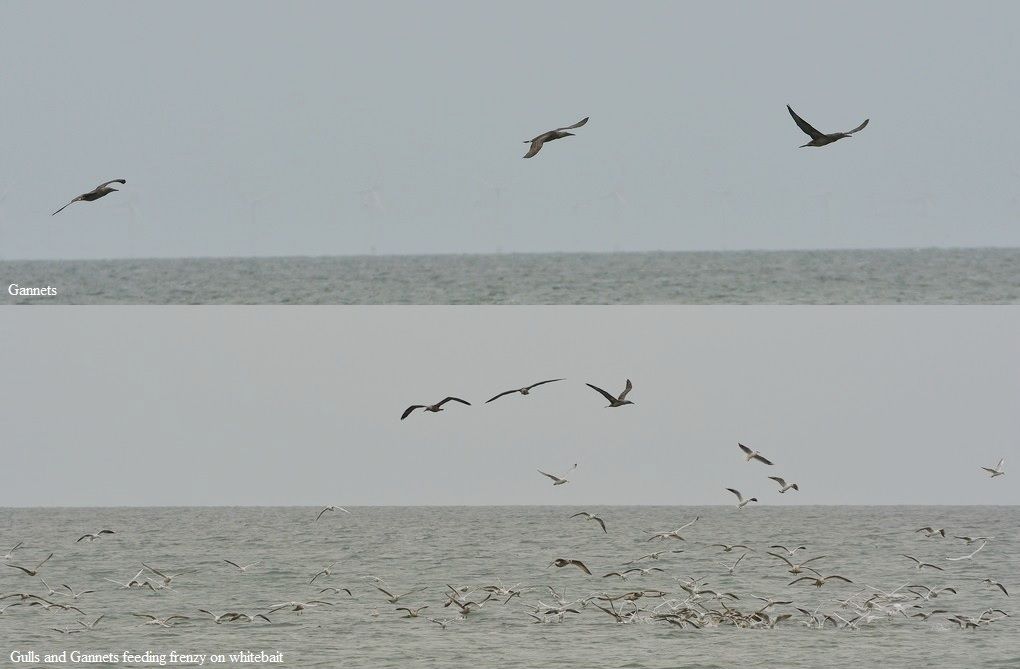
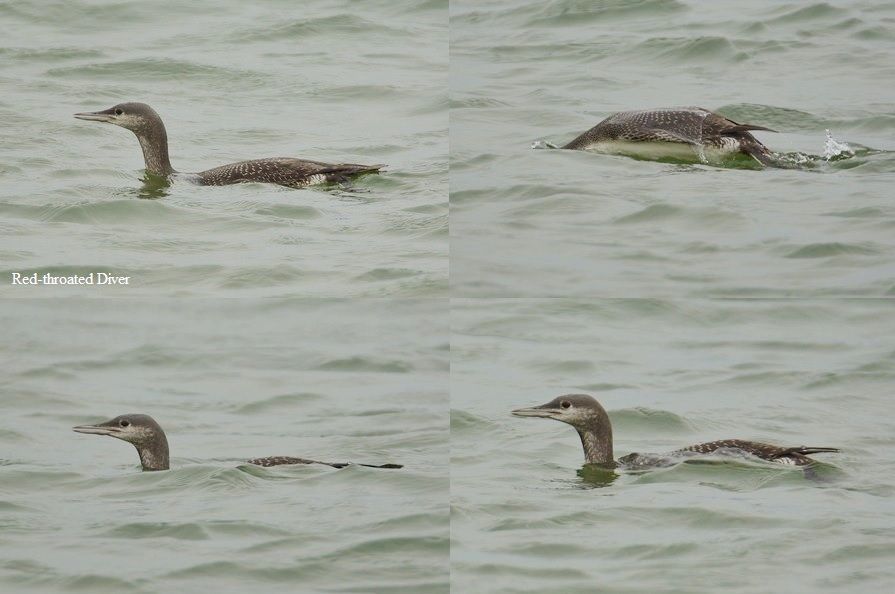
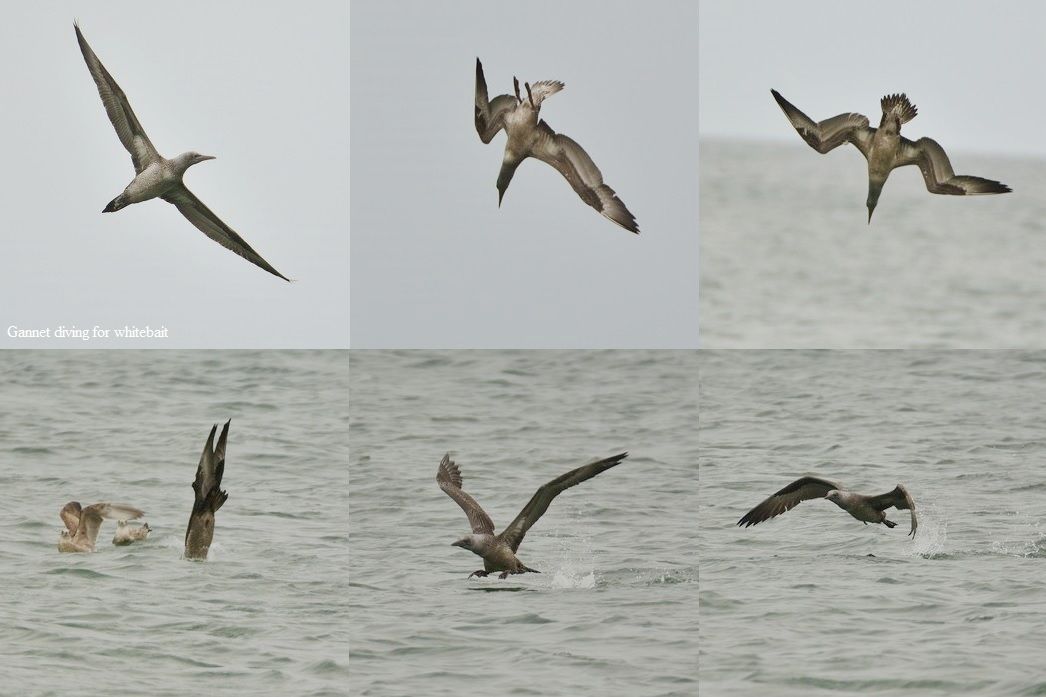
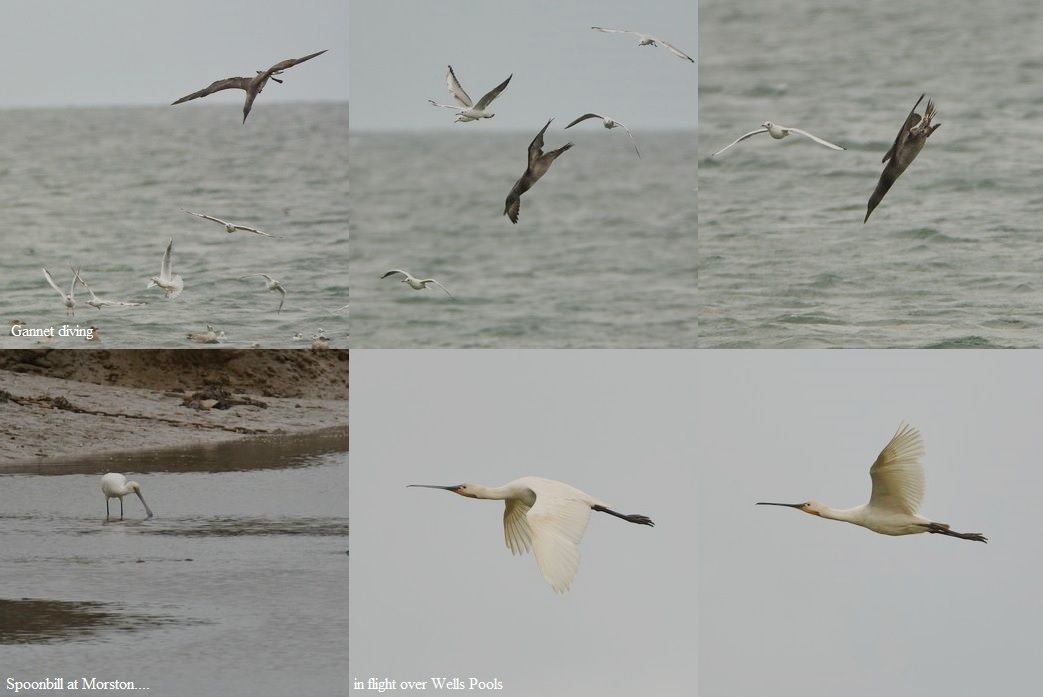
2 Pectoral Sandpipers had been reported from Wells Pools so we headed there next. 2 Common Buzzards and a Red Kite were seen before we walked down the path to try and find the ‘Pecs’. 8 Ruff were here, but eventually we found one of the Pectoral Sandpipers followed by the other one and observed them feeding a short distance from one another. A Spoonbill flew over and was duly photographed as it did so and both Common Darters and Migrant Hawkers were also seen.
At Brancaster Staithe a small selection of waders were seen with 6 Black-tailed Godwit, 4 Ringed Plover, 6 Redshank, 2 Oystercatcher and a Curlew.
A brief stop at Holkham found another Cattle Egret, 3 Red Kite, Common Buzzard and at least 800 Pink-footed Geese.
*We found out later that a Wilson’s phalarope had been seen at Wells Pools during the afternoon, presumably after we left! Whether or not the phalarope had been there whilst we were there out of sight is unclear, but Jason scanned the area several times over during our visit and didn’t come across this species.
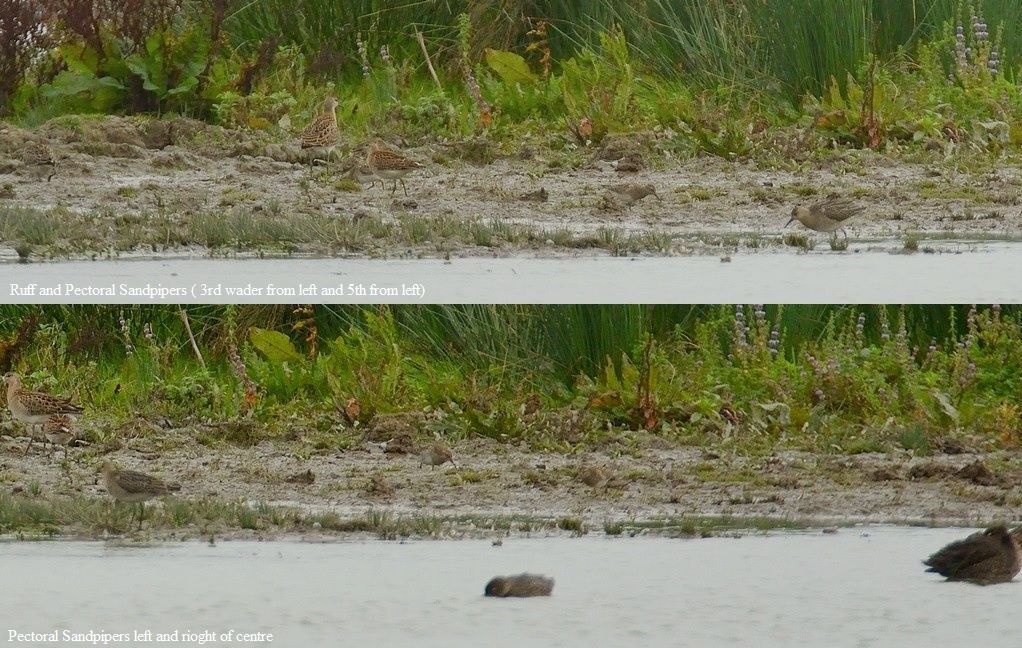
Cattle Egrets along the Norfolk coast......
The day (22nd) of Bilbo and Frodo Baggins birthdays (and indeed what would have been my wedding anniversary!) began at Salthouse, where Jason and I looked for a reported Cattle Egret. No Cattle Egret, just cattle but 3 Little Egrets and 3 Curlew were seen.
On to Cley Coastguards where there were several immature Gannets lingering off shore, both in the air and on the sea. At least 6 Razorbills were on the sea and 4 Sanderling, Great Black-backed Gull, 2 Sandwich Tern and 20+ Wigeon passed by.
A visit to Wells Pools didn’t find the reported Pectoral Sandpiper (apparently there earlier), but 13 Ruff (including a Ruff and Reeve standing beside each other showing the size difference between the sexes), 4 Spoonbill and an unexpected 20+ Pintail were seen, along with Common Darters and Migrant Hawkers.
A stop at Holkham followed where Jason spotted a distant Cattle Egret with cattle and Marsh Harrier and small skeins of Pink-footed Geese were also here.
A stop near the duck pond at Salthouse on the way back proved fruitful as Jason found his second Cattle Egret of the day, which he was eager to point out, as I hadn’t found one!

Waders and Ivy Bees......
Jason Nichols and I started the day out at Salthouse (14th) but found next to nothing here so we decided to have a look from the eastern hide at Cley.
From the hide, there were no ‘small’ waders but Black-tailed Godwits, a few Ruff and a photogenic juvenile Avocet were seen. Our first Pink-footed Geese flew over, about 70 in total making up two skeins.
With nothing much doing at Cley Coastguards we went to Morston Quay and found 6 Redshank, 2 Oystercatcher, a Greenshank and 2 Little Egret.
Wells Pools were also far from productive; the best here were several Ruff and Pink-feet with Barnacle and Grey-lag Geese. However, a look along the hedgerow leading down to the pools found many Colletes hederae Ivy Bees visiting the Ivy flowers and also here were several Red Admirals, Common Wasps and a Noon Fly.
Lunch at Brancaster Harbour found approximately 10 Black-tailed Godwits catching small shellfish and like they do washing them before consuming them. Several Curlew were also here as were 3 Little Egret, one perched on a small boat and 2 Spoonbills were seen in flight over the eastern saltmarsh.
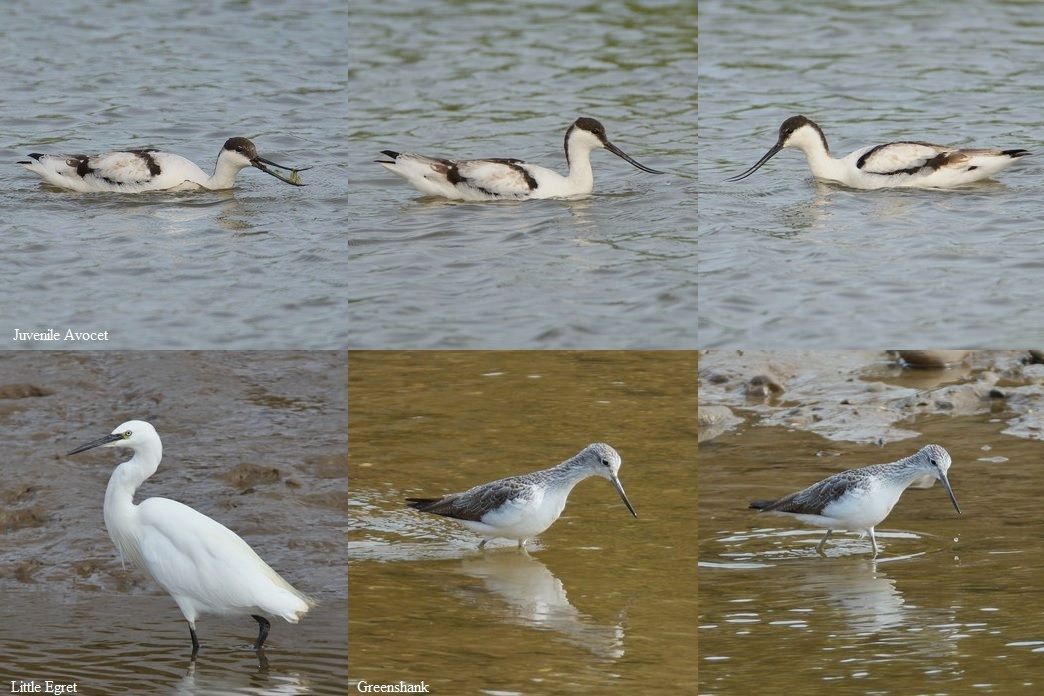

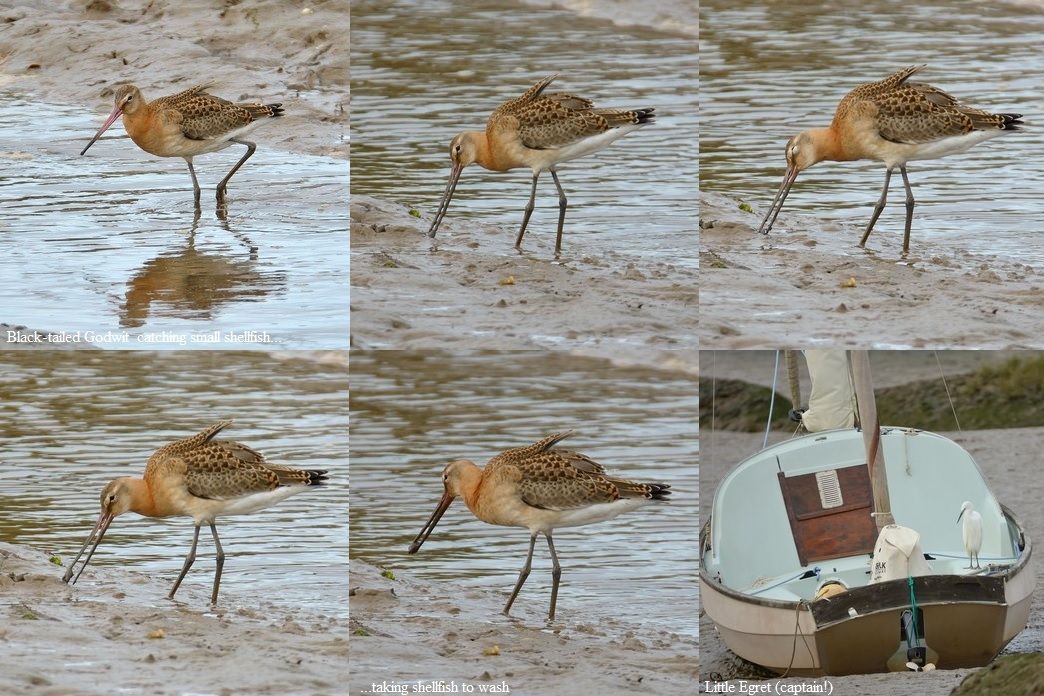

A rather barren day out......
The day out (7th) with Jason Nichols began with a drive to Titchwell where a Red Backed Shrike had been seen. However, there was no sign and this was just the beginning for a rather unproductive day!
A drive around Choosley Barns found good numbers of Small Whites on the wing but very little else. Brancaster Staithe had similar results with a high tide and lots of lots of people, so we turned about and continued our way back down the coast.
A stop at the gate at Holkham Freshmarsh again found very little with the highlight here being a pair of Egyptian Geese!
Wells Pools were next and we did manage to find a few birds here, with 11 Spoonbills, a few Ruff and Black-tailed Godwits and a Common Sandpiper.
A drive up to Cley Coastguards was futile as the car park was absolutely packed, so we decided to hold up the white flag and head for home.
A very humid day, with a lot of traffic and human presence contributed to an unusually far from productive day but nevertheless still an enjoyable one.
August 2023
Hymenoptera at Weybourne Reedham Crickets......
Out with Jason Nichols (31st) with the day beginning along Beach Road, Salthouse, where a juvenile Little Grebe was on the dyke.
At Walsey Hills Pond (aka Snipe’s Marsh) a single Green Sandpiper was present along with Mallard, Coot and Moorhens.
A look on and out to sea at Cley Coastguards was pretty uneventful so we moved on to Wells Pools.
Not a great deal of note here either but 14 Ruff, several Black-tailed Godwits, 2 Spoonbills and a distant Red Kite were seen, along with a Pheasant in a bush, which later also had a Chiffchaff fly-catching from.
A walk up to the middle hides at Cley found two distant Curlew Sandpipers and certainly not the number reported on Bird Guides of 22! A Little Ringed Plover was also seen along with 4 Ruff and the walk back along the boardwalk produced at least 10 Common Lizards.
A stop at Weybourne Cliffs found several Red-thighed Epeolus Epeolus cruciger and Heather Colletes Colletes succinctus, which is targeted by the E. cruciger.
Several Ichneumon Flies were present but identity couldn’t (not for the first time!) be identified.
Several Ornate Tailed Digger Wasps Cerceris rybyensis were also seen and one was carrying a Furrow Bee, which it had paralysed and then left, presumably until it had dug a burrow. Thanks are again due to Dr. Nick Owens for his help with the species found here and for identifying the Furrow Bee as a female Lasioglossum calceatum Common Furrow Bee, which Nick tells me was a fresh individual with its bronzy brown hairs.
A look for Crickets followed at Reedham, but not a single Cricket was found at the spot near the allotments where we had found them before, so we decided to search elsewhere in suitable habitat. The minor road leading to Pettits came up trumps with 3 stridulating males, which Jason could hear but I could not.
3 Dock Bugs were also found as was what looked like a Rosemary Beetle Chrysolina americana.
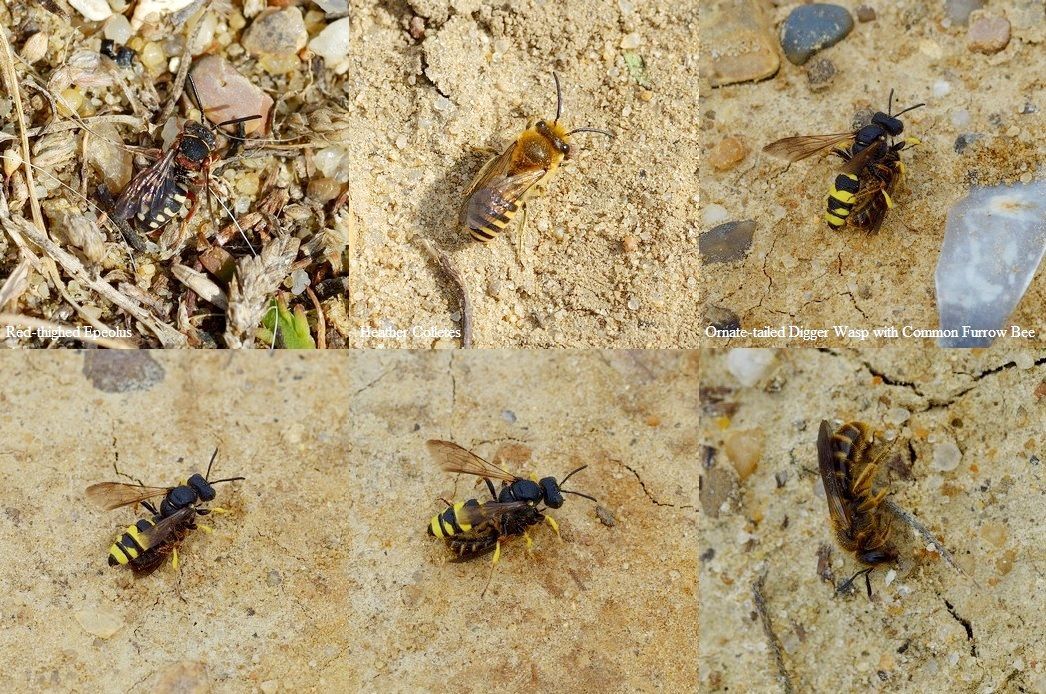

Keeled Skimmers but no Bog Bush Crickets at an undermanaged Holt Lowes......
The day with Jason (24th) began at the pond at Walsey Hills, where there were 3 Green Sandpipers, Little Grebe, 4 Shoveler and 2 Gadwall.
We then moved on to Holt Country Park where we looked for Bog Bush Crickets on Holt Lowes. However, the search was unsuccessful and just maybe this has something to do with the lack of management of this site with Gorse and Bracken particularly taking a strong hold.
Nevertheless, we did find quite a few Keeled Skimmers, mostly males, Common Darter, Southern Hawker and a Brown Hawker, at the car park entrance, Common Toadlet and a token Silver-washed Fritillary and a Nuthatch.
Wells Pools provided 2 Greenshank Ruff and Black-tailed Godwits and a Roesel’s Bush Cricket was found at the cost of stepping in a pile of dog excreta caused by an irresponsible dog owner.

An Insect Day......
The day (10th) began with Jason at Beeston Common where we went mainly to look for two rare Bees.
We found a few butterflies here, which included Small Skipper, Gatekeeper and Meadow Brown and various Grasshoppers; Lesser Marsh and Field plus good numbers of Roesel’s Bush Cricket and a single Long-winged Conehead.
We finally found one of our Bee target species a female Melitta tricincta Red Bartsia Bee visting the Red Bartsia (where else!) but like the last visit here in 2022 a very difficult bee to keep up with and photograph. There was no sign of any Macropis europea Yellow Loosestrife Bee this time around but I did find a female Lasioglossum leucozonium White-zoned Furrow Bee on one of the many in flower Fleabane.
A dark juvenile Common Lizard was seen before it scuttled into cover, a male Emperor Dragonfly and a Green Woodpecker heard.
Continuing what was very much an ‘Insect Day’ we visited Warham Camp, home to Chalkhill Blues amongst many other things, but it was one of these ‘other things’ we found first on an Umbellifier and I must admit I didn’t know what it was. Luckily, Dr. Nick Owens did and he identified it as a male Large Tiphia Tiphia femorata a small Wasp that preys on Beetle larvae.
Another species, this time a Bee was also on an Umbellifier and again Nick was consulted and he said it was likely to be Andrena subopaca or perhaps A. minutula. Even with good photos these tiny bees are very difficult to identify and it was confirmation again from Nick that identified a Cuckoo Wasp I found around some solitary Wasp nest burrows a Hedychrum niemelai. Nick tells me that this wasp parasitises Cerceris arenaria and possibly Cerceris rybyensis. Thanks again Nick!
A Bee-wolf was also seen around the fort, only the second time I have seen one here and a first here was a Hummingbird Hawkmoth that appeared to be ovipositing, flying low over the vegetated bank and pausing at various spots. A 6-Spot Burnett was also seen.
There were good numbers of Chalkhill Blues with both males and females found including a pair mating. Other butterflies seen were: Holly Blue (at least 7 along the path to the fort), Gatekeeper, Meadow Brown, Wall, Brown Argus, Peacock, Red Admiral, Speckled Wood and Small White.
2 Noon Flies were also seen and on our arrival at the fort 8 Grey Partridges flew out of the grassland.
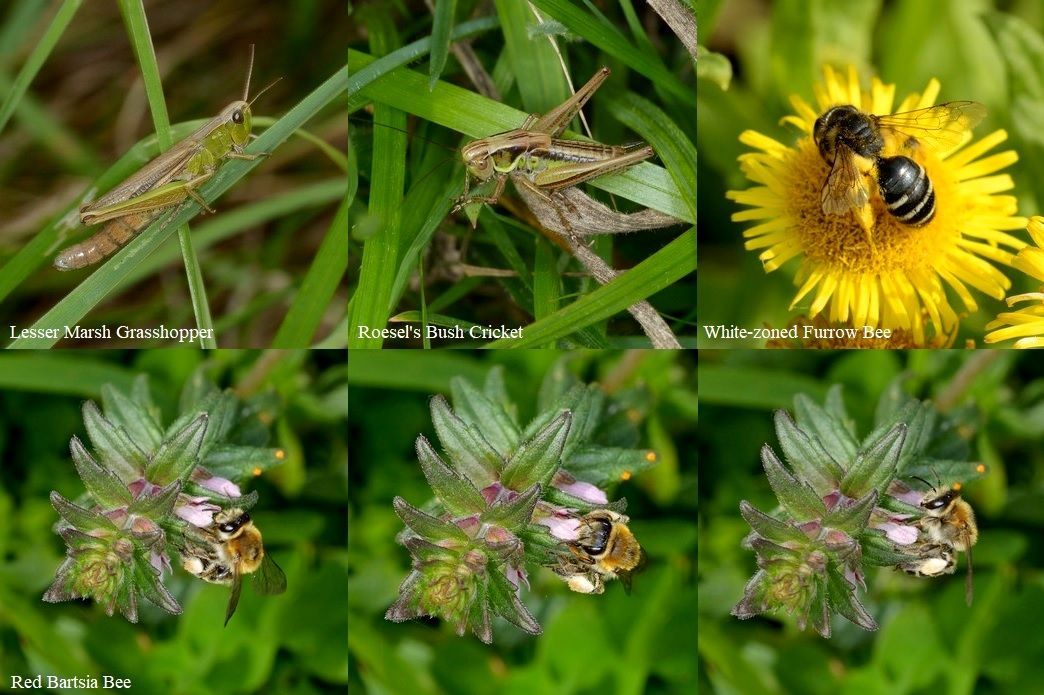
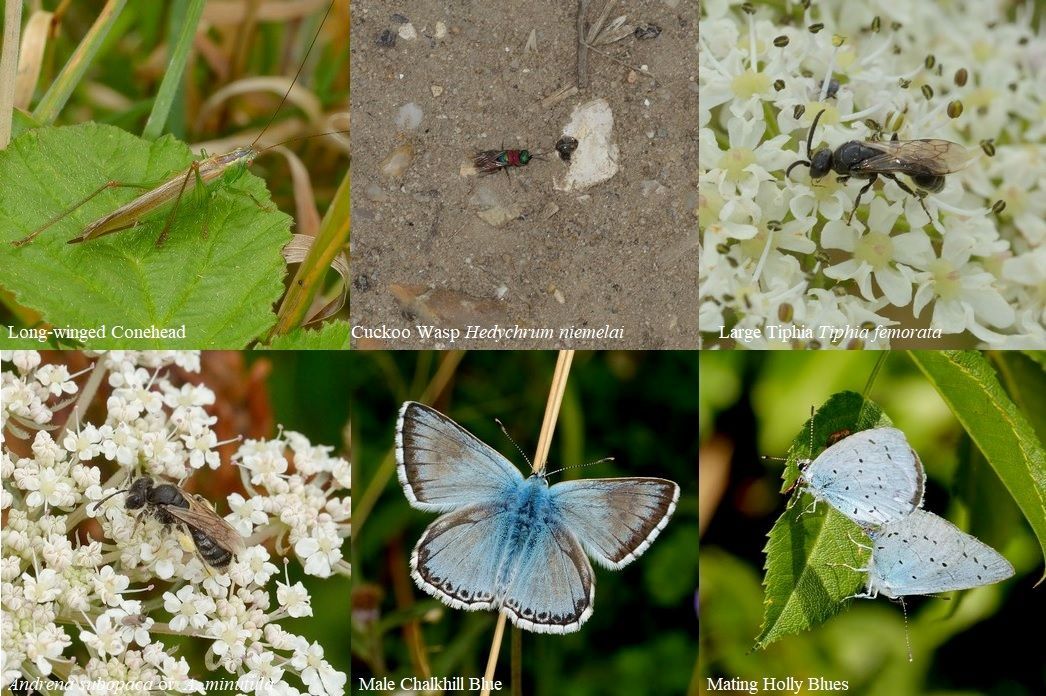
Wells' waders and life in the undergrowth......
With nothing of note along Beach Road, Salthouse Jason and I decided to have a seawatch from Cley Coastguards (3rd).
There had been several Caspian Gulls in the general area but not today, but we did see 2 Fulmars, a Guillemot on the sea and Sandwich and Common Terns, a few Oystercatchers past and a Grey Seal.

We went to Wells North Pools to see what we could see as time was shorter today due to Jason having an appointment.
Jason went on ahead to look for bird life, whilst I searched the undergrowth alongside the path. The first thing I found of interest was a Toadlet one of several found, along with a small Common Frog.
Gatekeepers were plentiful along the hedgerows with a few much worn Meadow Browns and a Green-veined White. Both Marmalade Episyrphus balteatus and Long Hoverflies Sphaerophoria scripta were found, a Noon Fly Mesembrina meridiana and what appears to be a Sarcophaga sp. possibly S. carnaria.
My first Cricket was a Short-winged Conehead female, followed by more Short-wings in a particularly favourable area where I also found a Long-winged Conehead. A female Roesel’s Bush Cricket followed (one of two found) and an Emerald, Azure and Blue-tailed Damselflies.
I finally, caught up to where Jase was where he told me what he had found, which consisted of 6 Dunlin, approximately 80 Black-tailed Godwit, 22 Ruff, 4 Greenshank, several Avocet, Common Sandpiper, 10 Spoonbill and a Red Kite, which we both saw earlier on arrival.
On the way back along the path I found my first 2 Wall butterflies of the year, but the Gatekeepers made photographing them somewhat tricky!
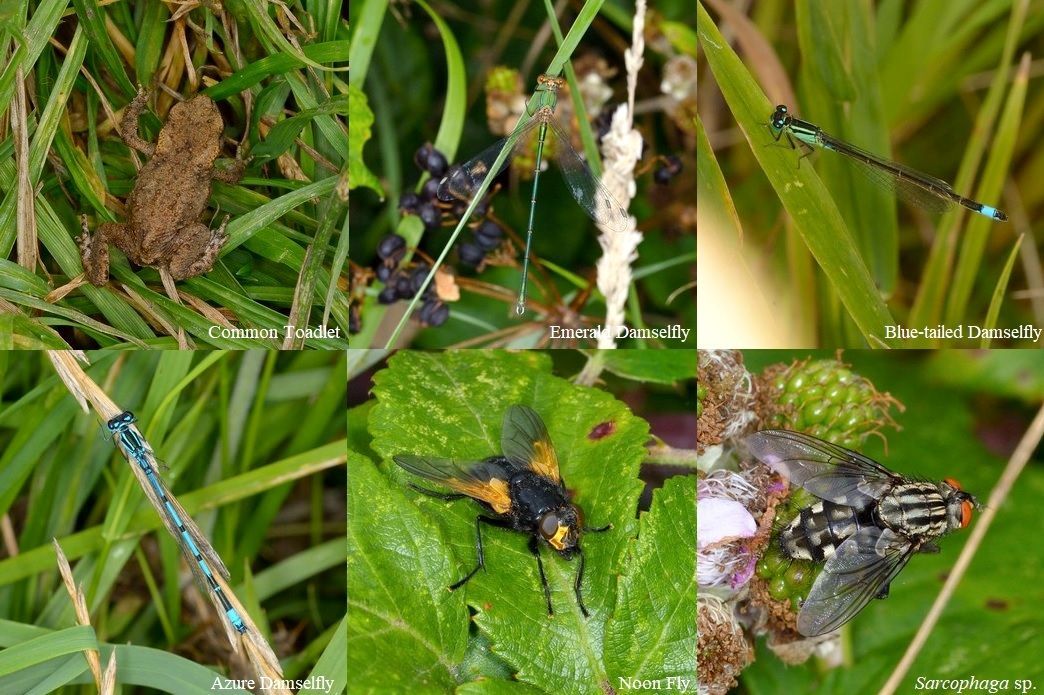
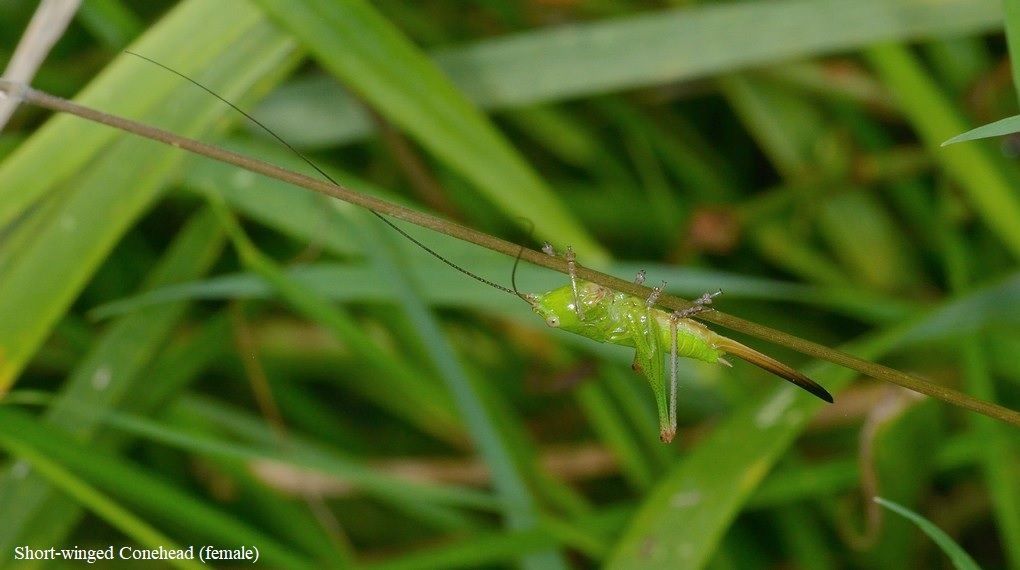
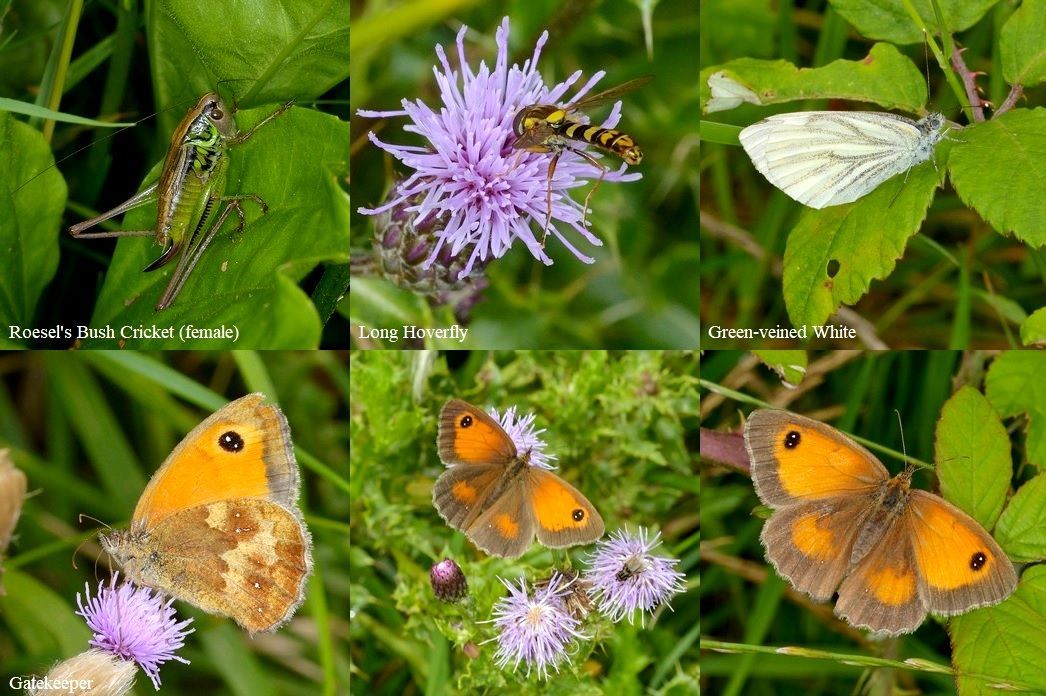
July 2023
Two American waders and lots more besides......
The day out with Jason Nichols (27th) began at Beach Road, Salthouse where a Banded Demoiselle was seen along a dyke and a Weasel made a brief appearance on the roadside.
Driving through Salthouse a pair of Roe Deer was seen on a recently harvested wheat field with the buck just peeping out from behind one of the straw bales.
A look at the scrape from Bishop’s hide at Cley, found the Long-billed Dowitcher eventually in amongst a number of Black-tailed Godwits. 7 Ruff and a Little Ringed Plover were also of note as was a single Spoonbill.
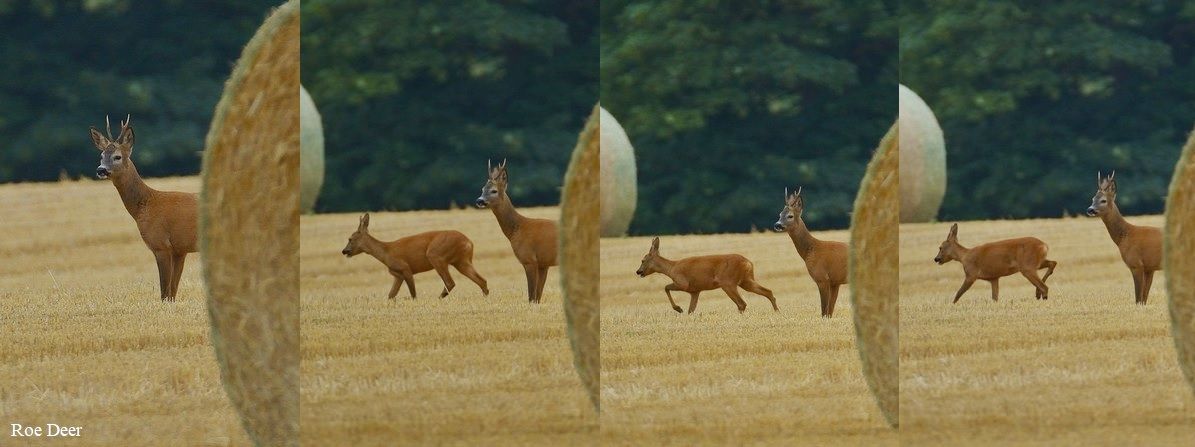
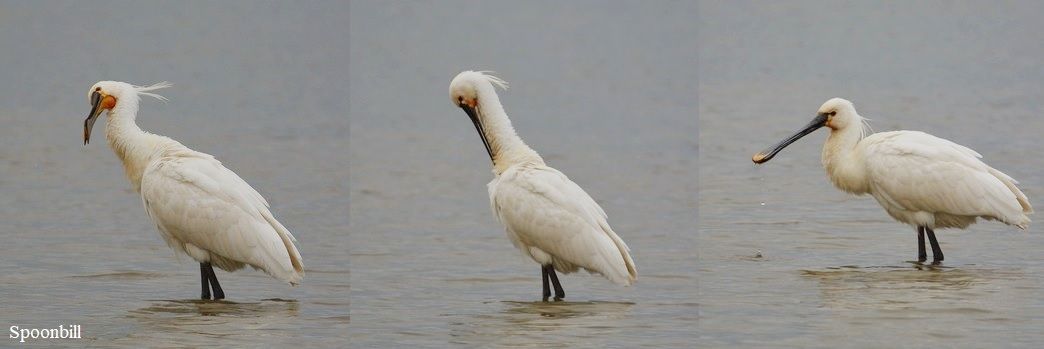
From Cley Coastguards we saw several Sandwich and Common Terns, 2 Gannets and a Guillemot on the sea.
A Pectoral Sandpiper had been at Wells Pools so we headed there next. On the way down the path, in order to get a decent vantage point to look for the American sandpiper we found good numbers of Gatekeepers, Meadow Brown, Small White and a Roesel’s Bush Cricket.
We found the location of the Pectoral Sandpiper with the assistance of another birdwatcher there and watched it as it went in and out of cover. Also here were 2 Green and 2 Common Sandpipers, Greenshank, 2 Common Snipe, several Spoonbills in the distance, 4 Marsh Harriers and a Common Buzzard.
The weather had become very humid, despite a brisk wind but we stopped off at Weybourne on the way back home to see what we could find insect-wise.
A female Dasypoda hirtipes Pantaloon Bee was looking out of its burrow and I found 12 male of this species in the cliff-top meadow. Also found in the meadow were 2 female Andrena thoracica Cliff Mining Bee, Red-tailed Bumblebee workers, several 6-spot Burnets, Meadow Browns, Small Skipper, a Roesel’s Bush Cricket and the first Philanthus triangulum Bee-wolf of the year. Not the perfect day to photograph insects blowing around on top of Ragwort etc but well worth while and a good day overall.

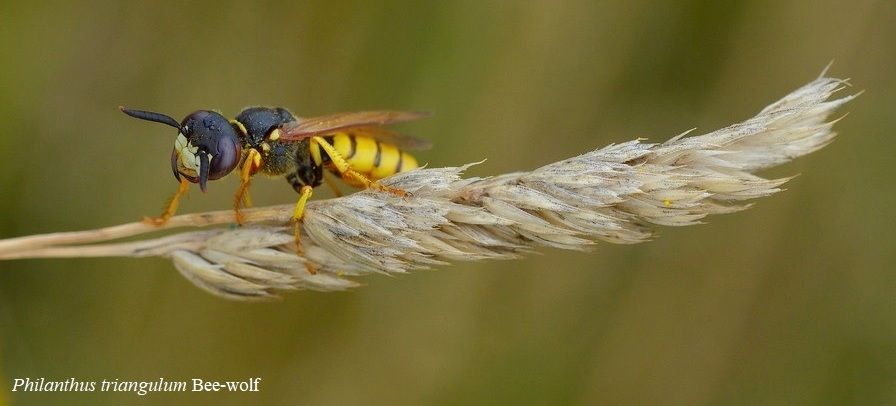
Lesser Scaup at Colney but no BWK, again!
The day out with Jason Nichols (20th) began again at Horsey, where the Black-winged Kite had been seen again perched on the telegraph wires near Horsey Mill.
However, once again the kite had disappeared and with no sightings we decided to go and have a look for the Lesser Scaup at Colney Gravel Pits, which had been seen that morning, after a fairly lengthy stay now.
Eventually we found a view point with limited views of the gravel pits and managed to see the Lesser Scaup, albeit at a considerable distance through Jason’s telescope. At least 4 Tufted Duck were also on the water and a Green Woodpecker was heard and a Brimstone seen.
Back to Horsey where shortly after leaving earlier the Black-winged Kite had been seen again just west of Horsey Corner, but once again there was no sign, but we parked up in a gap in the hedge near Waxham and scanned the area in case the kite showed up again. Whilst here we saw 2 Cranes fly past Brograve Mill, a Sparrowhawk, Common Buzzard, Marsh Harrier and at least 20 Curlew.
Unfortunately our peace was shattered when two twitchers from Kent showed up and then if their constant talking was not enough they were joined by another twitcher from Lancashire and the noise level increased with non-stop chatter, who also parked behind us blocking our ‘escape’.
We had already passed a car sideways in a ditch just north of the mill and once again the road sense of the visiting twitchers and ‘birders’ desperate to see the kite was no doubt what caused this accident.
I find this kind of people rude, elitist and undesirable, so we left, finding out later the kite (or another one!) had been seen at Felixstowe, so a good decision to leave and for once a day without any photographs!
Black-winged Kite no show at Horsey......
A couple of texts from Jason Nichols (19th) alerted me to the presence of a Black-winged (formerly Black-shouldered-why not just go to the Latin name?) Kite just up the road at Horsey. The Kite had been seen in the area around Hickling/Horsey since the 17th.
Driving along the ‘Horsey straight’ found people in nearly every conceivable parking place, but also dangerously parked around the lay-by on what is a very fast, busy and dangerous road.
However, I found a place off road to park up and began scanning around but there was no sign of the kite, nor any more reports courtesy of Jason. So after hearing a Little Owl and Cranes and brief views of a Chinese Water Deer I returned home.
Very much a Lesser Emperor day!
A subsequent visit to Filby (10th) was mainly about concentrating on trying to get some decent images of Lesser Emperors, which up to now had been a few small images in flight and one of a male perched.
I began at Filby Broad, with the idea that there would be less vegetation in the way of getting flight shots, but there was very little Lesser Emperor activity here with just a couple of very quick fly-pasts and a pair in tandem. However, a Red-eyed Damselfly was photographed in flight and there were at least 4 Black-tailed Skimmers chasing each other around, a Four-spotted Chaser and a male Emperor Dragonfly.
I decided to return to the Ormesby Little Broad side and along the way to the broad found Southern and Brown Hawkers, Ruddy Darters, Blue-tailed, Variable and common Blue Damselflies, 2 Commas, and 3 Red Admirals.

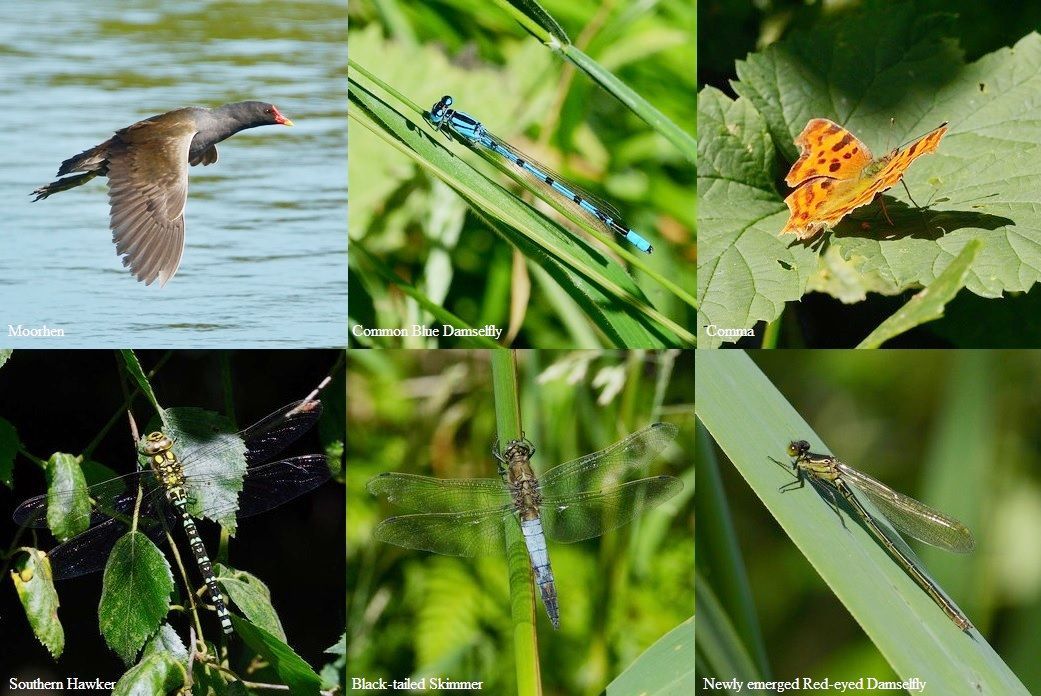
From the viewpoint, Lesser Emperors were soon seen, but as usual just speedy fly-pasts at the edge of the reeds before disappearing around the corner of the reedbed. However, things were about to change and they began to come closer, hovering at times at close quarters like the Norfolk Hawkers do here. Perhaps in the absence of any Norfolk Hawkers (now coming to the end of their flight period, although two were present towards of the afternoon) chasing them off they found the territory in front of the viewpoint a more inviting option.
Now joined by Phil (Harbord) the Lesser Emperors were becoming more and more obliging with at least 3 pairs in tandem and at least 6 other males besides were seen. Along with hovering close and indeed perching they were also ovipositing in tandem unlike their cousins Anax imperator (Emperors), which tends to be just the female laying, eggs unattached to the male.
During the years since Lesser Emperors have been here I have never seen them perform so well for the camera and although my photographic equipment was frustratingly not working as it should, both Phil and I managed to get many images showing the behaviour of this dragonfly.

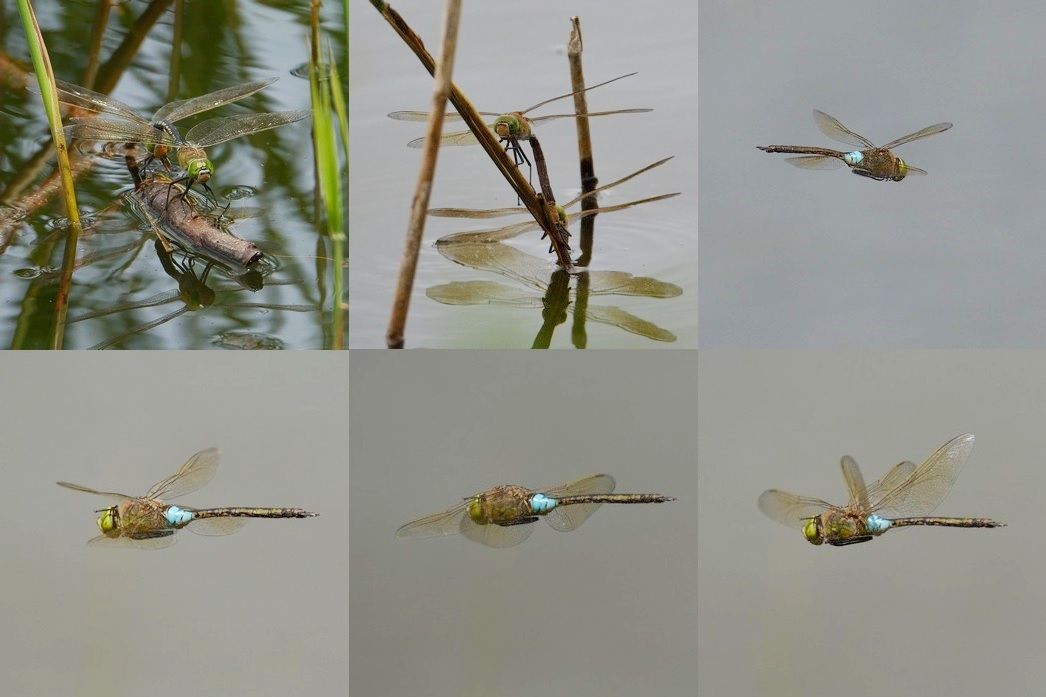
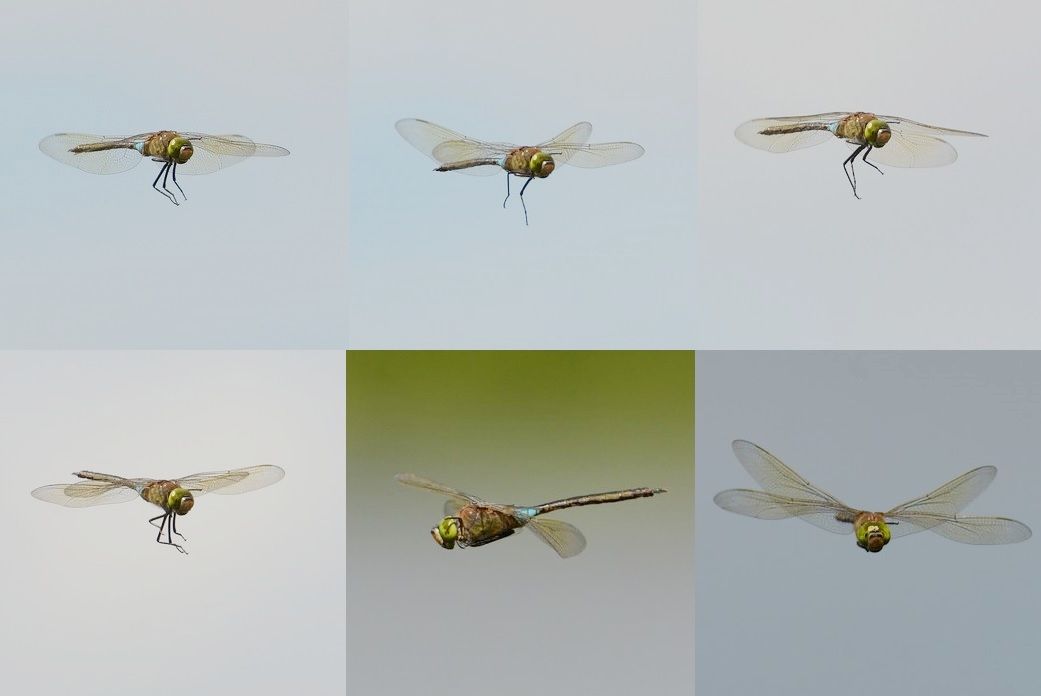
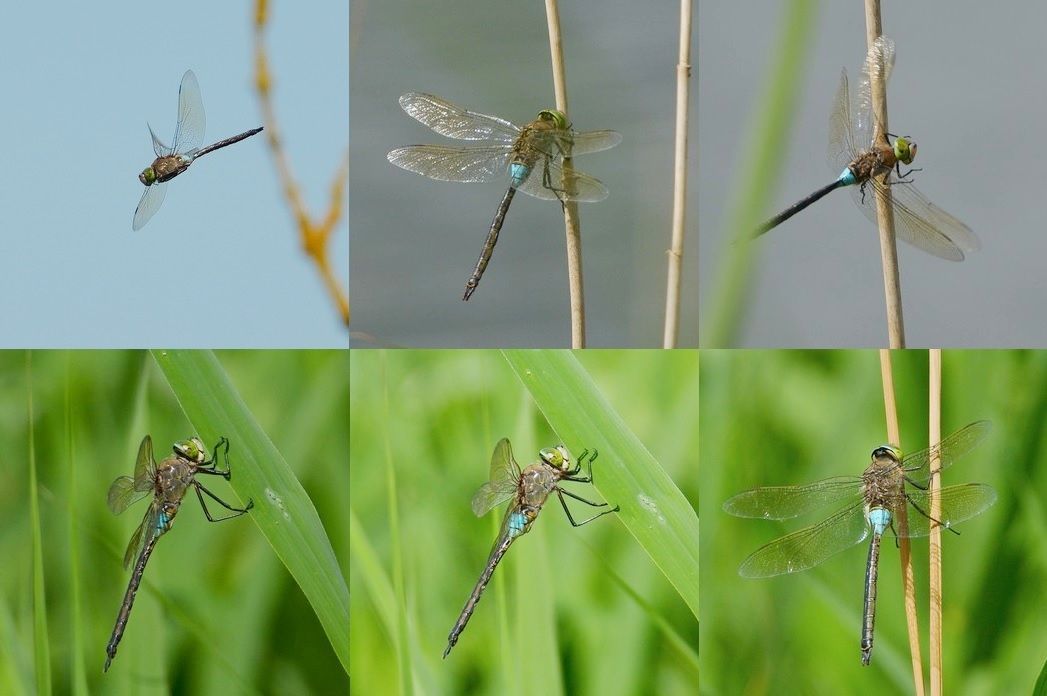



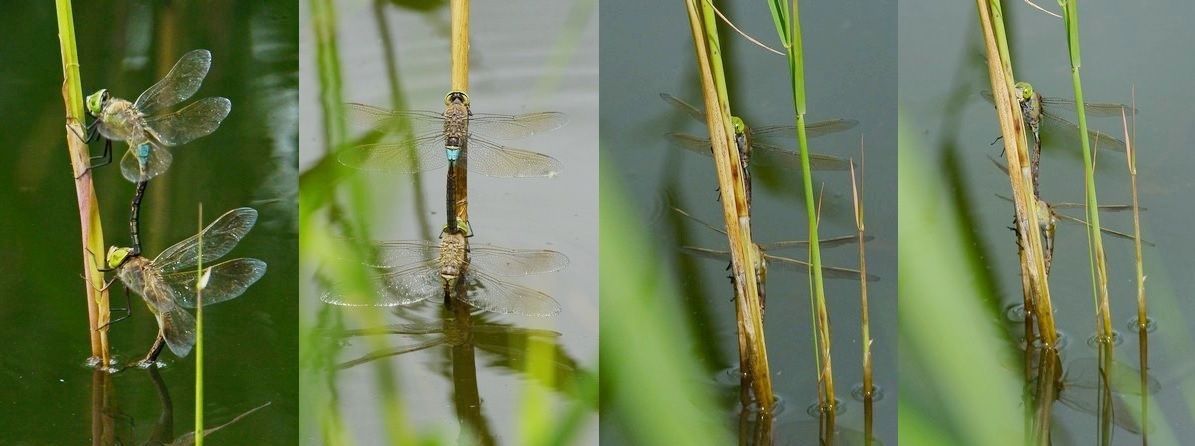

Dragons and other insects at Filby......
A visit to Filby (8th) found a variety of insects, including 11 species of Dragonflies: Red-eyed, Variable, Common Blue and Blue-tailed Damselflies, Southern, Norfolk and Brown Hawker, Black-tailed Skimmer, Four-spotted Chaser, Ruddy Darter and Lesser Emperor.
Over Ormesby Little Broad, a Hobby was harassing a Common Buzzard and a pair of Mute Swans arrived with 5 cygnets. Reed Warbler and Common Terns were also of note.
A Red-legged Shieldbug Pentatoma rufipes was found as was an Eristalis intricarius Bumblebee mimic Hoverfly and a pair of mating Common Red Soldier Beetles Rhagonycha fulva. Several Yellow-and-black Longhorn Beetles were present as was a Nursery web Spider Pisaura mirabilis.
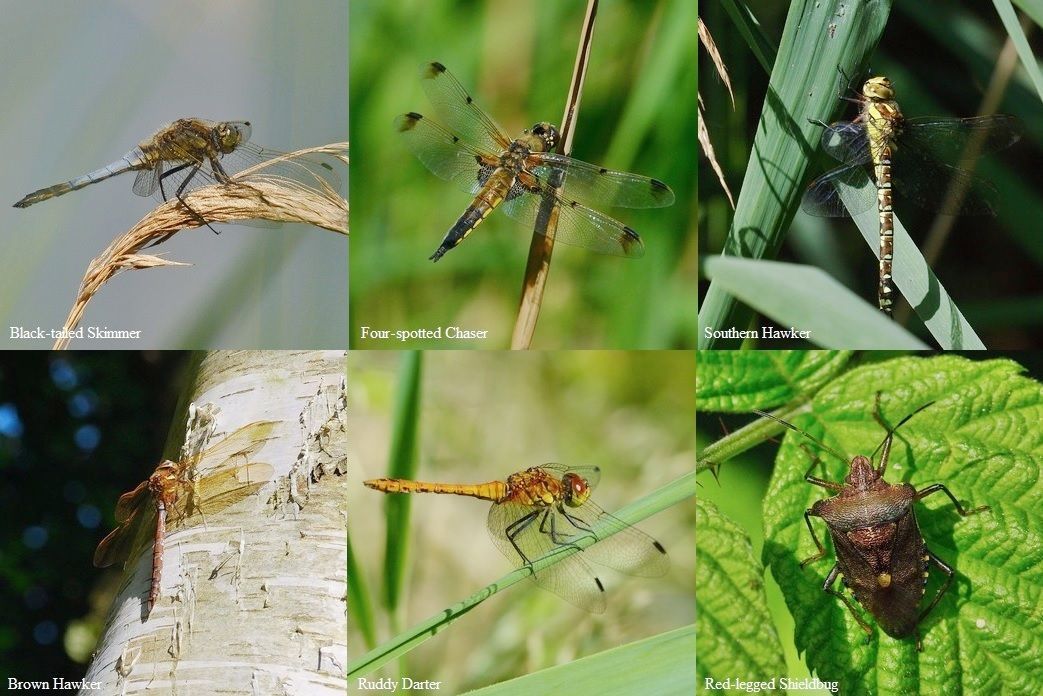
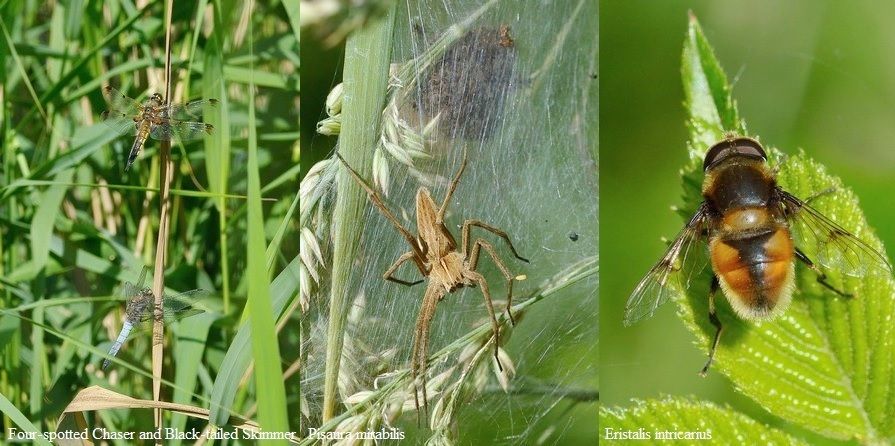
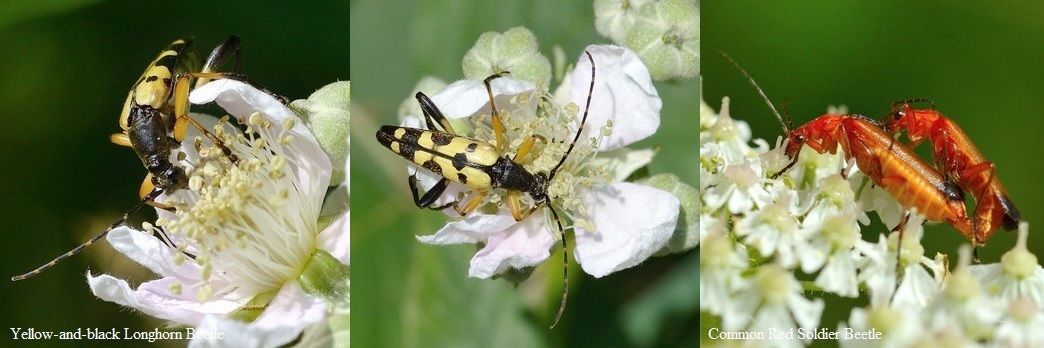
June 2023
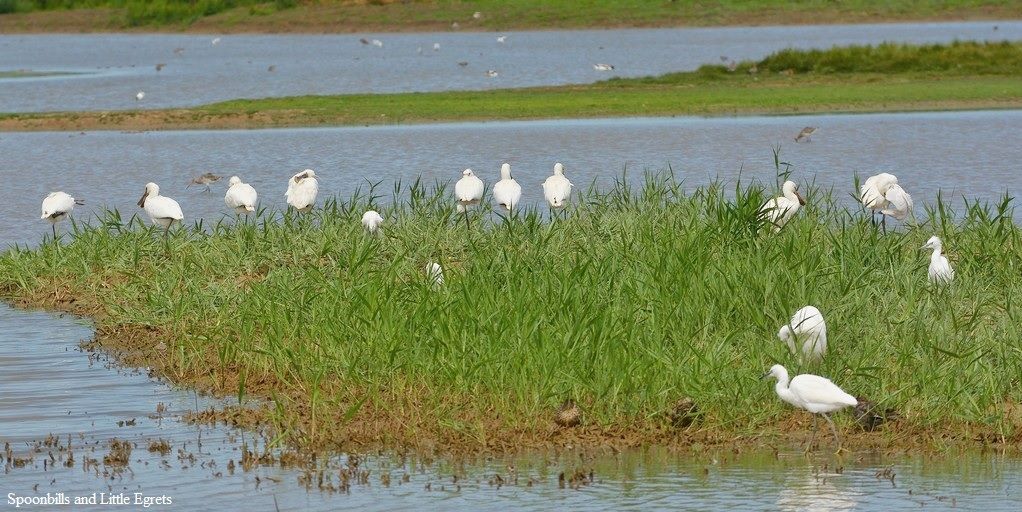
Spoonbill bonanza!
There were no reports of the Lesser Scaup (1st for Norfolk) at Colney (29th), having been misidentified as a Greater Scaup initially, so with only distant views available at best from a bus stop Jason and myself turned to plan B!
The usual drive up along the coast began at the Iron Road (in the rain) at Salthouse, where 2 Wood Sandpipers had been reported from the previous day. First views on the way down at least found very little but on the way back, 4 Little Ringed Plover, a Little Gull and finally a Wood Sandpiper were seen. A different perspective paid off!

Having seen Spoonbills outside the eastern hide (from the middle hides) at Cley the previous week, we decided to go there and hope Spoonbills were again present.
However before reaching the hide, our progress was thwarted by a family of Mute Swans on the narrow path. I went first keeping my camera lens between them and me and managed, despite a lot of hissing avoided contact with the cob and then the pen. However, Jase had not followed my lead and both swans reached out for him but made no contact. On reaching the hide a gentleman said: ‘So you got past the swans’ to which we replied yes and he had been in the hide all morning, no doubt doing what we were about to do.
Indeed the Spoonbills were again present with 5 to begin with but this gradually went up to 10 and the little Egrets also present reached at least 15.
There was much to see and indeed photograph not only with the sparring juvenile Little Egrets but also with the Spoonbill behaviour.
The Spoonbills began as often they do resting with their beak resting on their back, but occasionally preening and as time went on more flew in including one which was in dire need of a bath! Some calls coming from one of the juveniles indicated it was feeding time and it went after an adult bird for food but the adult flew off the island where most of the Spoonbills were and onto the water. But the juvenile didn’t give up and with much perseverance was finally rewarded with a feed from the adult, something I have not witnessed before, let alone photographed.
Another similar incident occurred sometime later, but this time with two juveniles competing for food, with one at least being successful.
As well as the ‘white birds’ there were more distractions from two Mallard broods (territoriality between two duck Mallard), a Moorhen brood, at least 3 Bearded Reedlings flying across and a visit from a Little Ringed Plover, so a great one and a half hours or thereabouts photographing behavioural ecology!

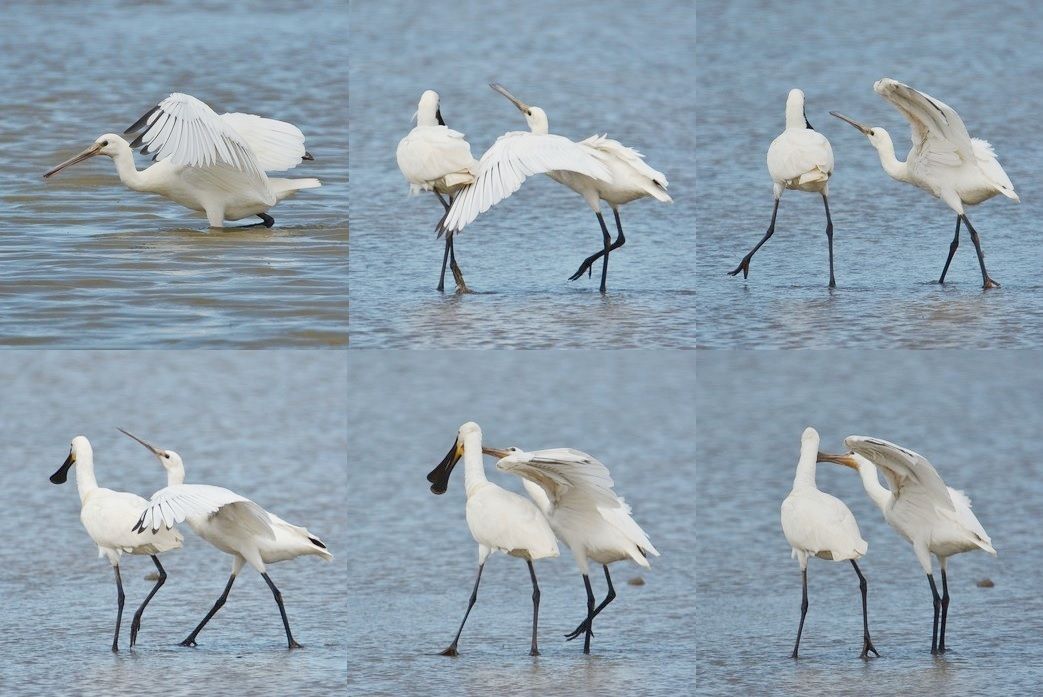
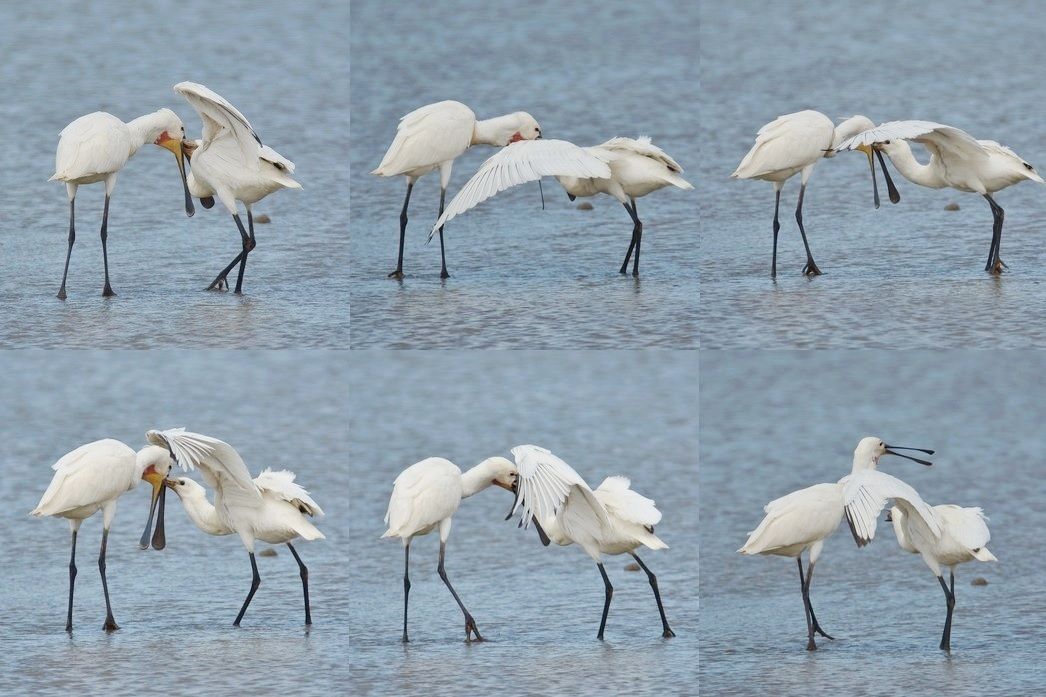
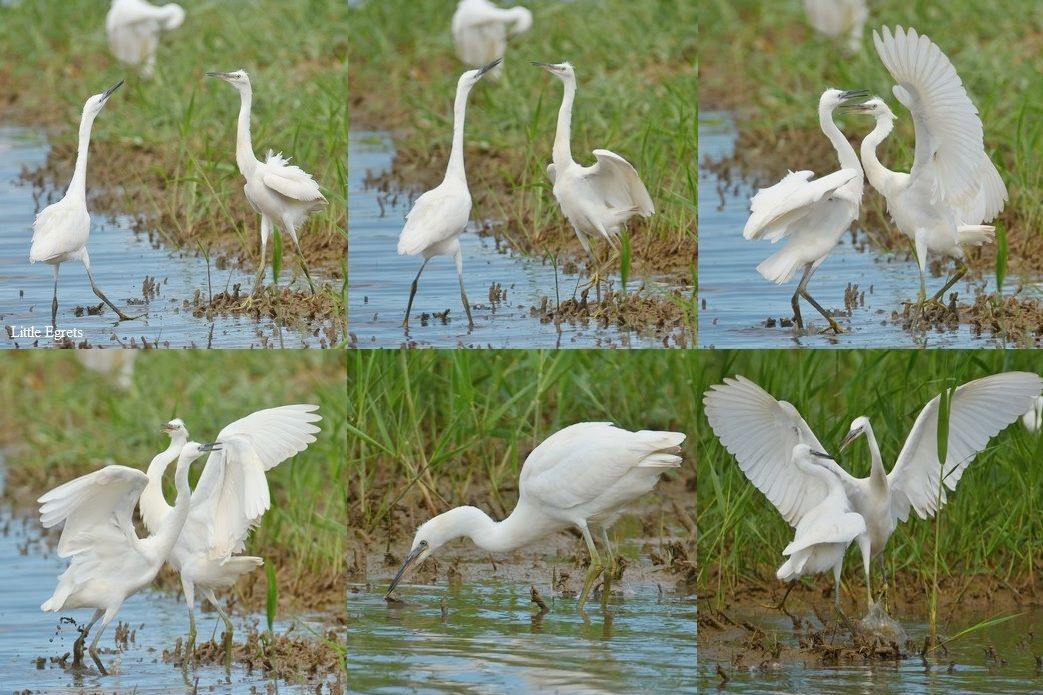

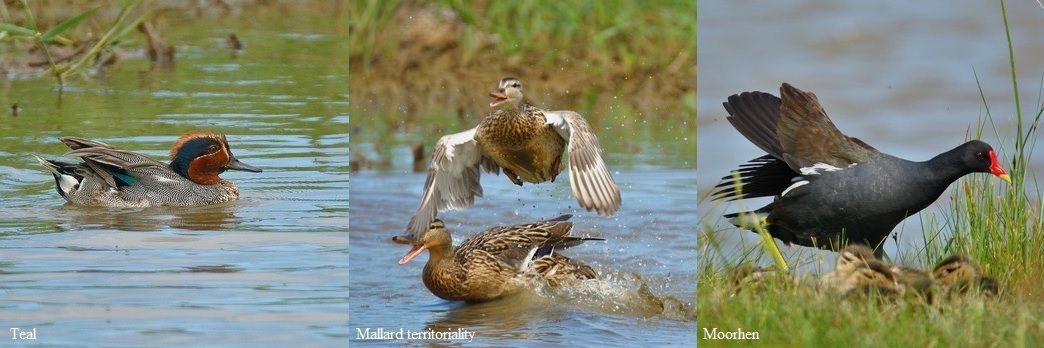
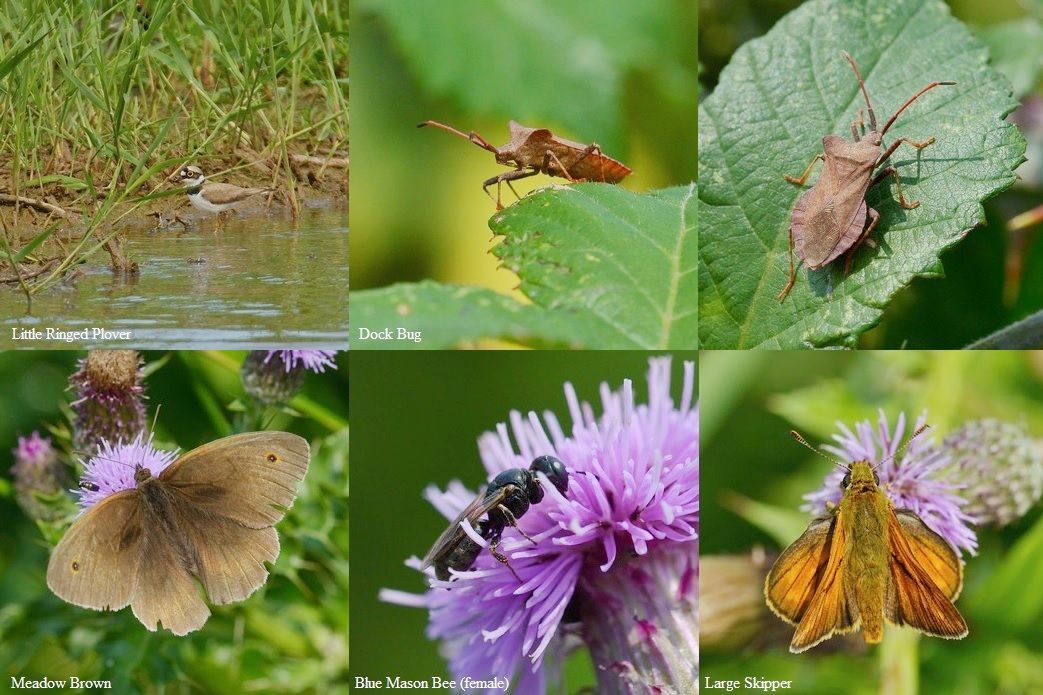
A visit to Wells Pools followed where there were reports of a Spotted Redshank and a 2nd year Caspian Gull. Jason scoped the area and found the Caspian Gull, as well as a Greenshank and 2 Ruff but there was no sign of the Spotted Redshank only its cousins.
A look around the nearby Brambles found a Dock Bug, the first this year, Meadow Browns, Comma, a Large Skipper and a Ringlet originally seen by Jase (as was the bug) and I found a female Blue Mason Bee on one of the Thistle flowers.
There were also a good number of Small Whites seen whilst travelling, perhaps a recent emergence but good to see nevertheless and at least 3 Red Kites with one over Potter Heigham.
Overcast Filby but 2 Volucellas......
A rather overcast day (27th), but a visit to Filby nonetheless. Several Blue-tailed and Variable Damselflies were seen on the walk down to the viewpoint and a Bumblebee-mimic Hoverfly Volucella bombylans and a male Swollen-thighed Beetle also seen.
There was very little insect activity at the edge of Ormesby Little Broad, although quite a few Red-eyed Damselflies were on the Lily pads. Common Terns flew over the broad and there were 6 adult Great Crested Grebes with one of the pairs with 2 young.
It wasn’t until just before midday that the first Anisoptera dragonfly was seen with a female Black-tailed Skimmer ovipositing, followed by the first of several sightings of Lesser Emperor, of which there were at least 2 males present. A Norfolk Hawker followed and then a Four-spotted Chaser.
Another search in the vegetation either side of the paths on the way back found a worn Red Admiral, Meadow Brown, several worker-Red-tailed Bumblebees, the first Volucella pellucens aka Great Pied Hoverfly and a Black-and-yellow Longhorn Beetle.
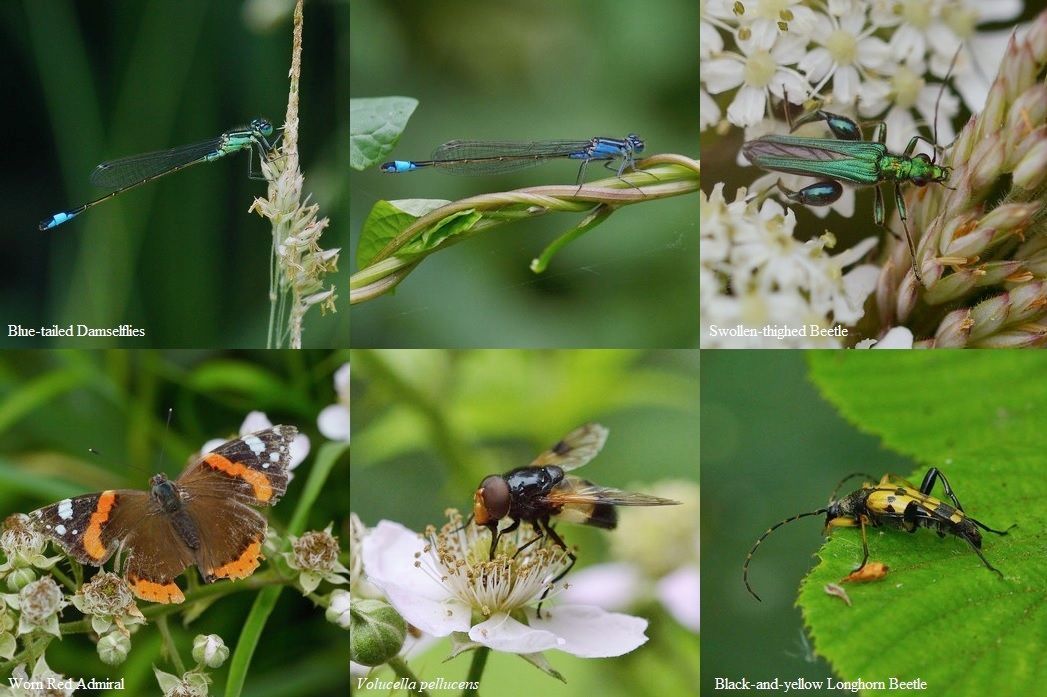
Herding Avocet chicks, American Golden Plover and much more in North Norfolk......
The day out with Jason Nichols began at Cley (22nd) where we intended to go and look for the American Golden Plover, which had been present from the North hide for several days now.
As we approached the Coastguards car park we could see a pair of Avocets in the overflow car park and we learnt from the gentleman manning the car park that they had chicks the other side of the road, so before walking down to the north hide we went to take a few photos of the Avocets which were at close range, but had no idea of what we were about to get involved with!
The Avocets kept flying up and over the road, no doubt to encourage the chicks to join them and after several of these ‘communication’ flights a chick crossed the road and into the overflow car park and joined one of the adults which began walking away to the east of the grassed car park. However this was not all of the chicks and one by one three more chicks walked out into the road but this time seemed confused and started to walk down Beach Road and away from any adult birds.
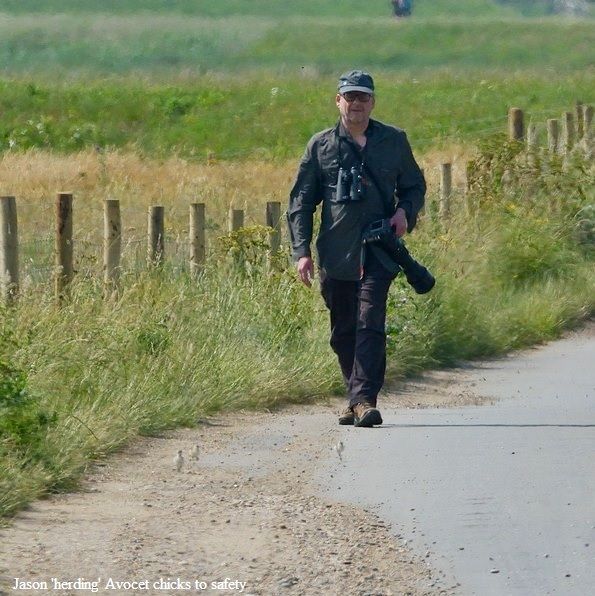
The gentleman at the car park said that they needed to be ushered back and I volunteered, walking back along the road on the right hand side away from the chicks moving along the left of the road. However, the chicks kept going and there was no way I was going to get ahead of them to turn them around, so I stopped and walked back, but saw Jase walking along the flood bank, which would be further away from the chicks, once he had caught up with them, so I returned to the car park.
Jase managed to get in front of the chicks and ‘herded’ them back up along the road but even then cars were travelling far too fast along the road and needed to be persuaded to slow down. Eventually the three chicks arrived back at the top of the road and I slowly blocked their progress and they turned into the overflow car park and began making their way in the direction in which the adults had gone.
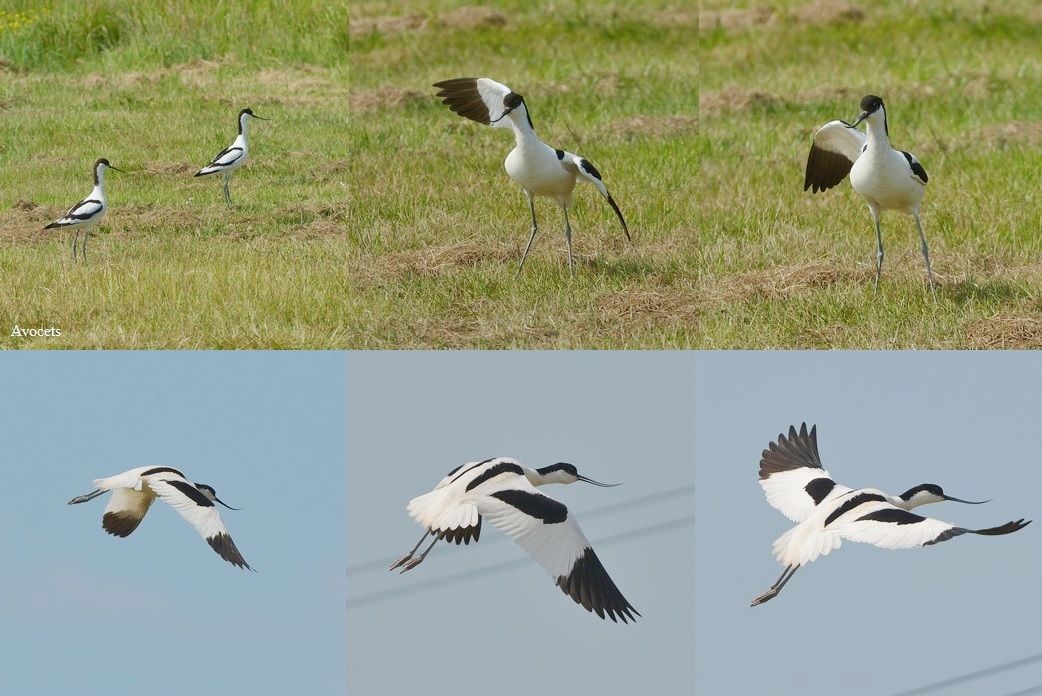
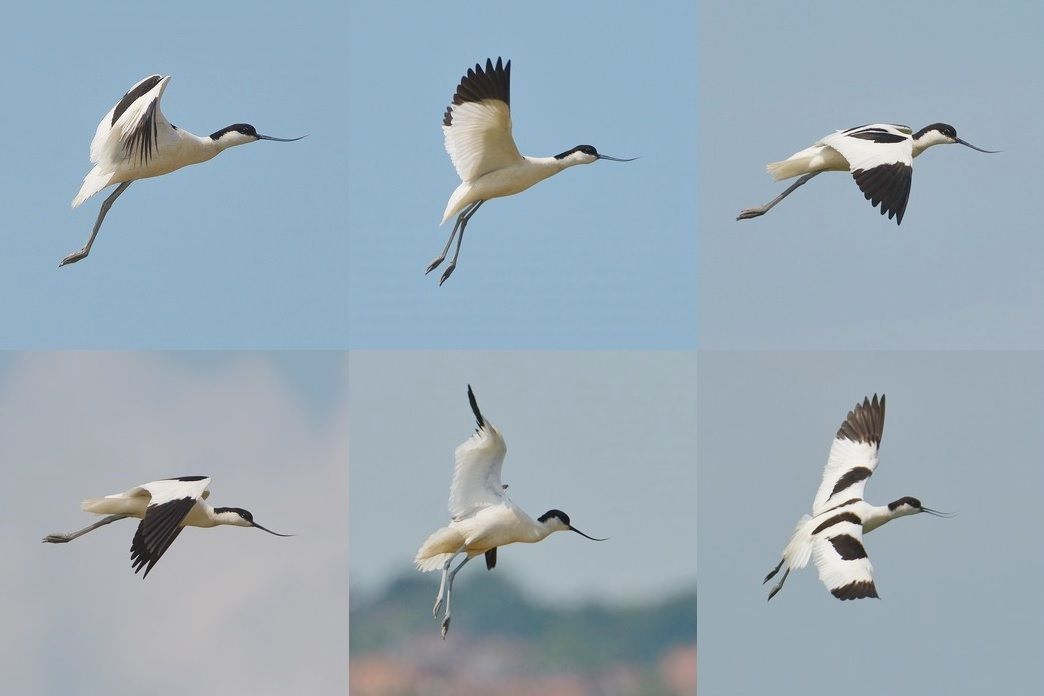
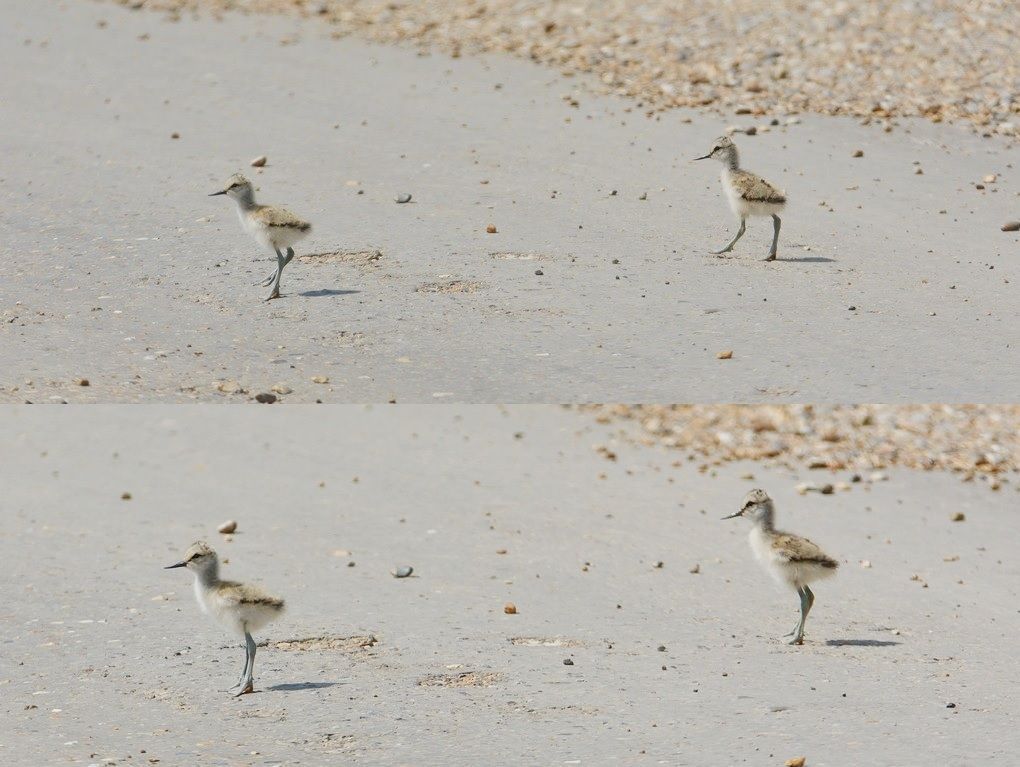
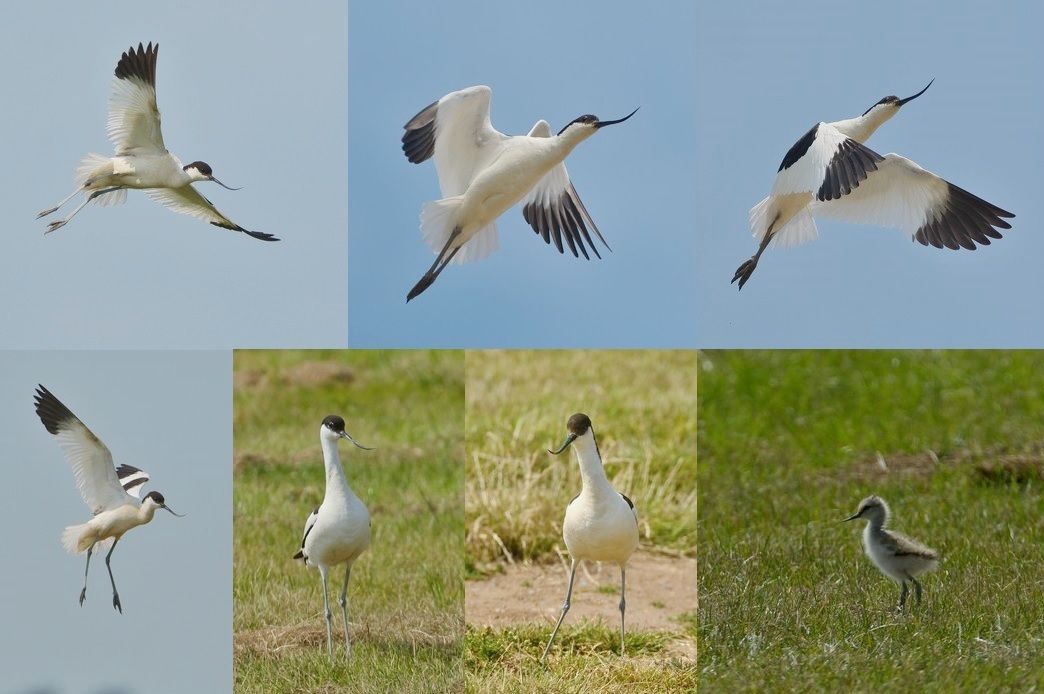
The walk down to the north hide provided the first Meadow Browns of the year along with a 6-spot Burnet Moth and Linnets and Skylarks.
From the hide there was no sign of the American Golden Plover but eventually it did appear in the heat haze and also at distance, so despite some photo attempts it was pretty futile photography-wise. A Little Ringed Plover and a Greenshank were also seen and 2 adult Mediterranean Gulls flew over on the walk back.
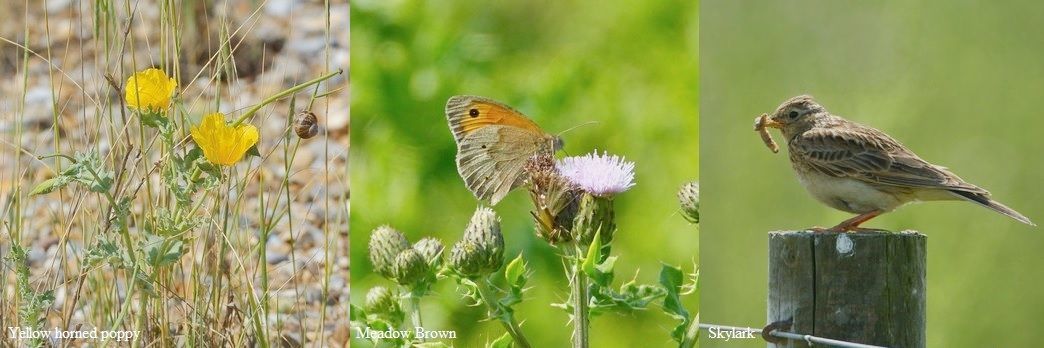
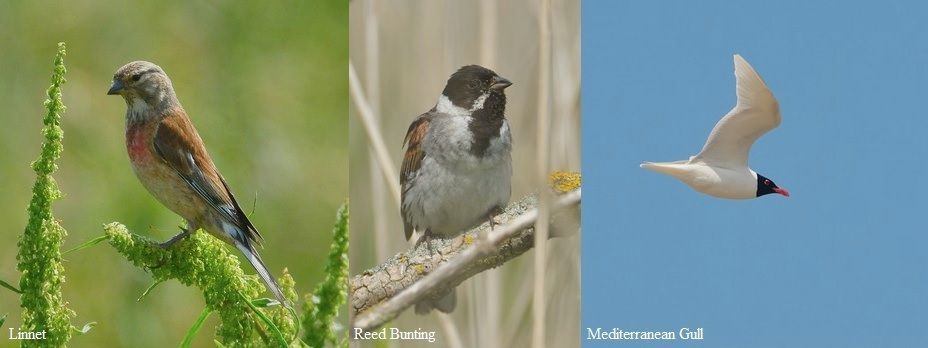
At Wells pools a Spoonbill flew over, as did a Red Kite and several Avocets were present.
The usual bottleneck through Stiffkey, for once had its benefits when a Hummingbird Hawkmoth was spotted on some of the readily available Red Valerian.
We decided to head back and explore the southern side of Cley, from the middle hides. Here we found 6 Ruff, 4 Little Ringed Plover, Black-tailed Godwits, 4 Little Gulls and 8 Spoonbills some way off. However, the evaporation form the scrapes producing a ‘milky haze’ made all but the birds close in a photographic nightmare! Meanwhile there was some ‘in-house’ entertainment with Swallows nesting in the hides.
Walking back through the car park area I noticed someone looking at a plant and decided to have a look too. What the gentleman had found was a Broomrape but what species it was is hard to determine in the stage it was in, but probably Common Broomrape, which is very variable and there are a wide range of host species parasitized.
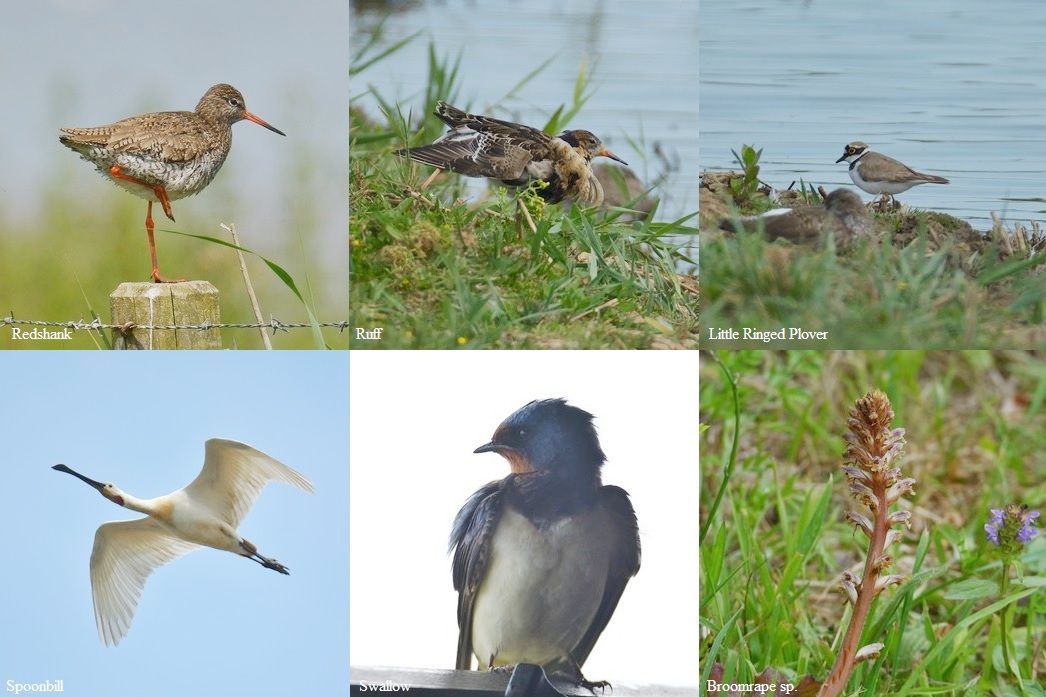
Swallowtails, but hard work amidst unsuitable habitat......
A walk along the Weaver’s Way (16th) from Potter Heigham on the south side of Hickling Broad began with the welcome sound of a Cuckoo calling. In fact there was two calling.
The vegetation here along the dyke is even denser than the last time I was here and what used to be a wetland habitat with lots of plants for Swallowtails etc is now a Carr habitat, which needs managing to interrupt succession. In fact I met two ecologists surveying the area for the building of a flood bank and they too found very little along this stretch.
I didn’t see a single Swallowtail, from my start point at Decoy Road to the public hide and this has always been a place I have seen them, but gone are the plants they depend on with only small patches of Red Campion and isolated Yellow Flag and not that much Milk Parsley either. However, I did see Hairy Dragonfly, Four-spotted Chaser, Black-tailed Skimmer and Norfolk Hawker along with their small cousins Damselflies represented by Variable Common Blue, Azure, Large Red and Red-eyed.
A Hornet buzzed past me and 2 Marsh Harriers were seen and then I arrive at the public hide.
There was not too much on the Rush Hills ‘scrape’ only Common Terns, Avocets and several Shelduck were of note, but I did catch site of 4 Spoonbills in the distance flying over the trees.
Then a familiar sight caught my eye and a Swallowtail flew over the dyke-side vegetation, but didn’t stop and appeared to be a fairly small individual.
Reed, Sedge, Cetti’s and Willow Warblers and a Reed Bunting were all heard singing as I headed back along the path and a Hobby flew low over the reedbeds before turning its attention to the adjacent farmland and then over the woods.
Whilst talking to the ecologists again a Swallowtail was seen on the other side of the dyke, but then flew our way and found a small patch of Red Campion to feed on, where despite it being in the thick vegetation I managed to capture a few images of this magnificent butterfly, which has no conservation plan at Hickling the last time I spoke to the warden!
Bearded Reedlings were heard and one seen briefly and then two more sightings of Swallowtails (2 in total) flew past, but they were not stopping; they had very little to stop for!
Also seen along the walk were both Eristalis pertinax and tenax Hoverflies on the umbellifiers, a single Red Admiral and a male Swollen-thighed Beetle.
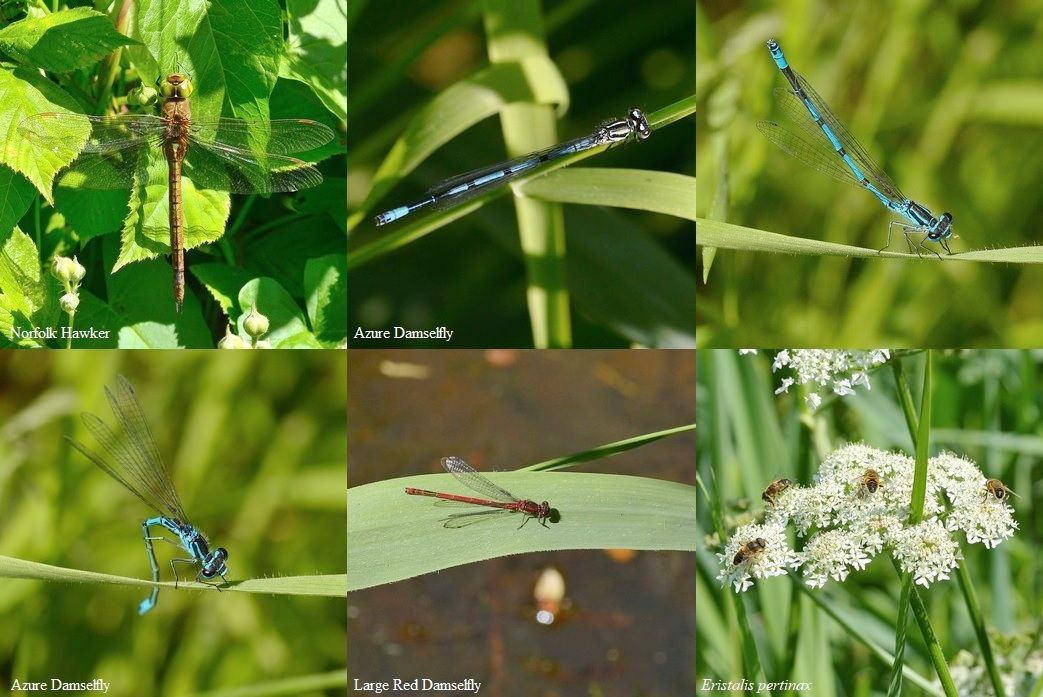
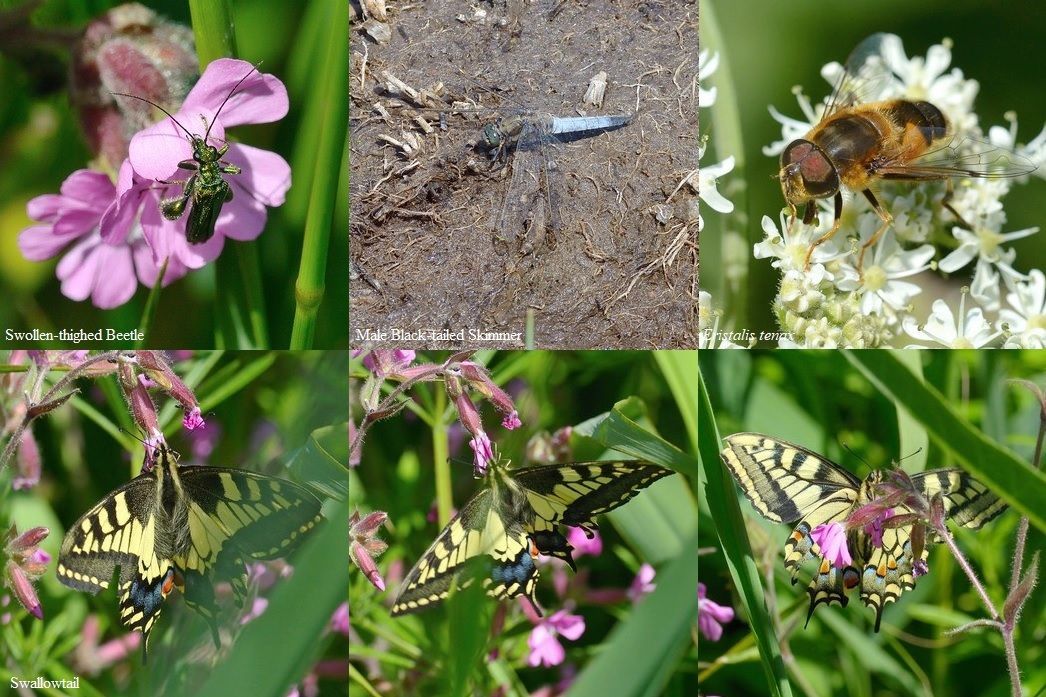
Feel-good factor at Filby......
A visit to Filby and Ormesby Little Broad (13th) is always worthwhile and usually there are far nicer people to converse with than the environmental thugs I am surrounded with where I live in Martham!
The vegetation besides the paths contained several Damselflies, which included Variable, Blue-tailed Red-eyed and a single Large Red, with many of these about a third less the size than the ‘normal’ specimens! Why this is may not be clear, this is the most I have seen across several species for sometime allowing for variation within a species and possible temperature affected emergence.
Two species of butterfly; Red Admiral and Speckled Wood (singles of both) were seen but it is very clear that Butterfly numbers at a very low population this year, which has been associated with last year’s drought and it is not just myself that has noticed this!
The viewpoint overlooking Ormesby Little Broad was more eventful, with Red-eyed, Blue-tailed and Common Blue Damselflies around plus their larger Anisoptera cousins, represented by Norfolk Hawker, Four-spotted Chaser and Black-tailed Skimmer. However, whilst watching these dragons I saw briefly a dragon which reminded me of a Lesser Emperor and sometime later Ken Saul saw something which his description of, also suggested Lesser Emperor. Later on a telephone call from Ken now looking at Filby Broad confirmed that both he and Geoff Hurrell had just had good views of a Lesser Emperor. Meanwhile, elsewhere in the UK a Lesser Emperor had been reported from Dorset, via Bird Guides.
A couple of Great Crested Grebes and a few Mallard were on the Broad but in the skies were 2 Hobby, Marsh Harrier, Common Buzzard and 2 Common Terns.
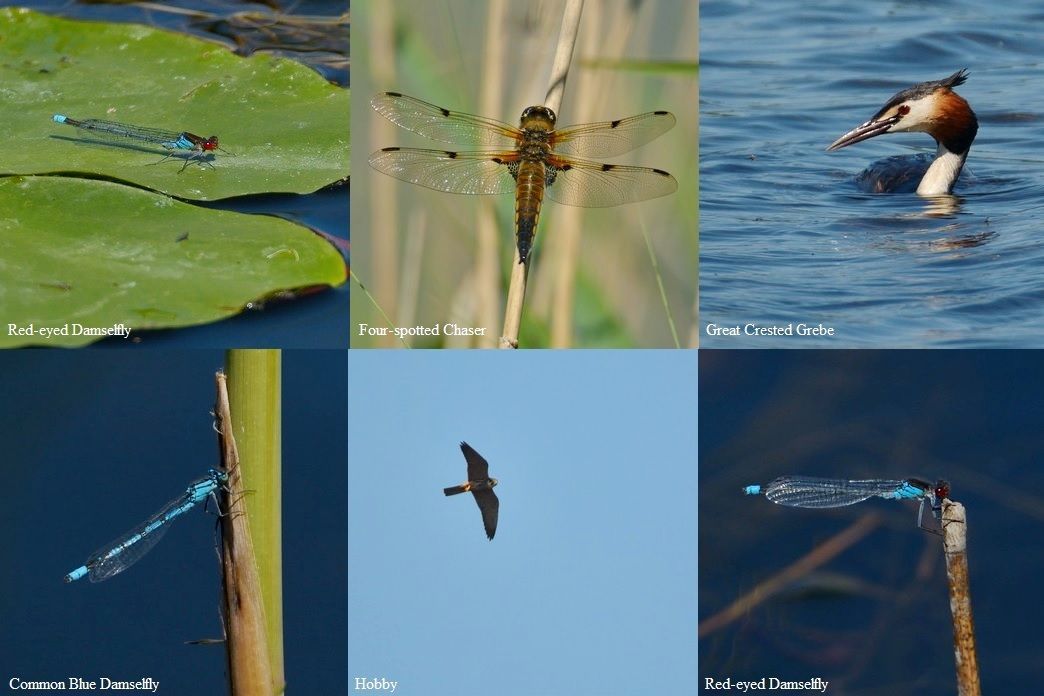
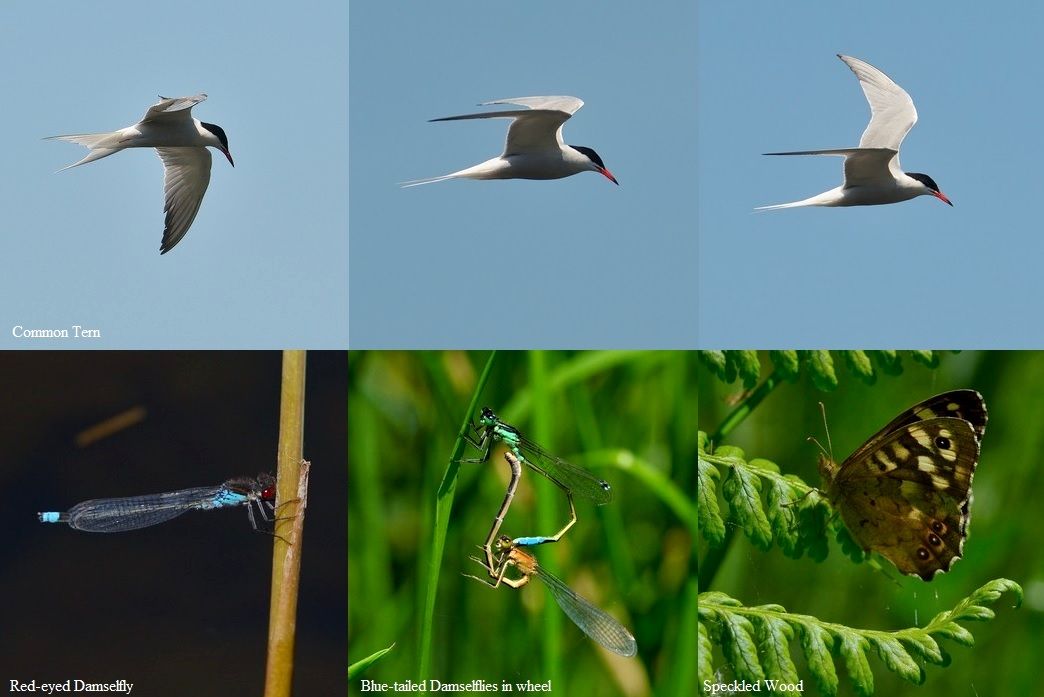
Rose-coloured Starling and duckpond photography......
The possibility of a Red-backed Shrike at Winterton took Jason and me along Low Road in search of the shrike (8th). However, there was no sign of any shrike but we did hear the songs of three Sylvia Warblers; Lesser Whitethroat, Garden Warbler and Blackcap.
Next stop along the Norfolk coast was at Beach Road, Salthouse where a Red Kite was seen and a Reed Warbler heard.
Instead of stopping off at our usual venues en-route we headed straight for Titchwell village where there had been a Rose-coloured Starling (now called Rosy Starling, apparently!).
There was no sign of the Starling when we arrived opposite the bus stop, but we held our ground, as it had been commuting between the garden here and Titchwell reserve, where apparently it had just gone too!
It became apparent that the garden in question had a feeding station or a food supply of some sort as there were various birds heading around the back of the house into the garden, so it was a good bet to stay here where there was a food source. A female Great Spotted Woodpecker was photographed at the top of a conifer and was seen again heading for the said garden, along with Starlings, Collared Dove, Greenfinch and House Sparrow, whilst a Red Kite and Marsh Harrier passed over.
Then the Rose-coloured Starling appeared just to the left of us on the power cables above us. It then flew into a bush alongside the garden and that’s where it stayed for quite a time. However it then flew out and perched in a conifer for about a minute before disappearing again.

A drive around Choosley followed but apart from a couple of Red-legged Partridges, Yellowhammer, Common Whitethroat and 2 Brown Hares it was fairly quiet.
A busy Brancaster Staithe provided 2 Little and 2 Common Terns and a Little Egret, before moving on to Holkham where there was 2 Spoonbill, Marsh Harrier and Red Kite.

Wells Pools were also fairly quiet, but of note here was a Great White Egret standing alongside one of the pools.
Driving through Cley a Spoonbill flew over and then Jason pulled up alongside Salthouse duck pond, to check for something on his phone. However, the impromptu stop was very beneficial, with some nice photographic opportunities, which included a Moorhen family, a Gadwall family, pair of Tufted Duck resting on a rock, Pied Wagtail and a Marsh Harrier. Always photo opportunities at a duck pond!
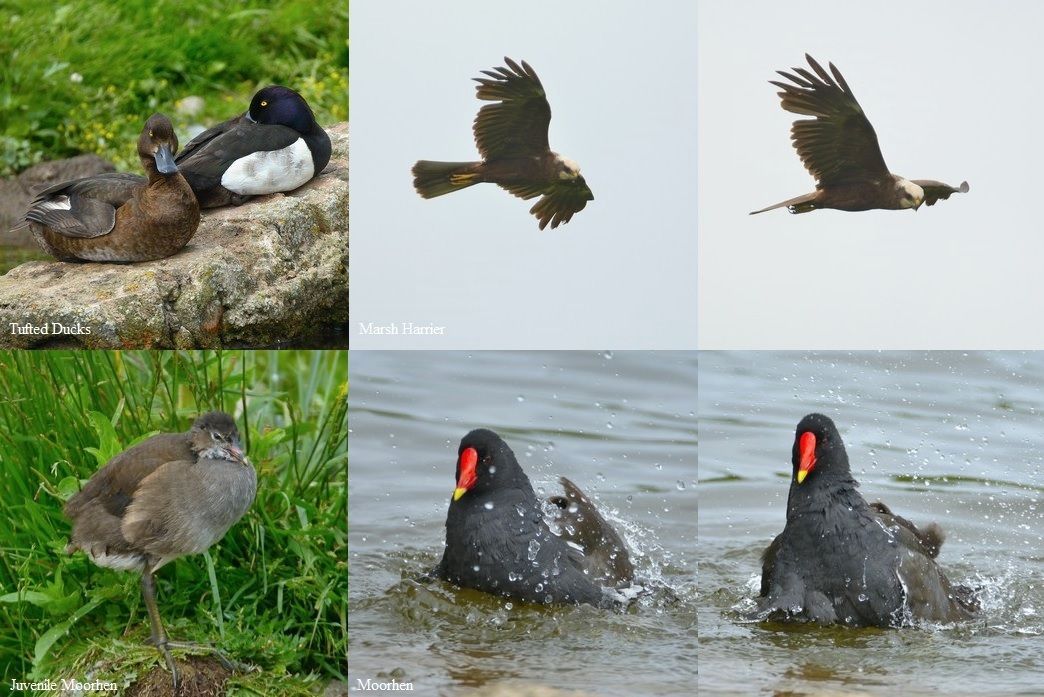
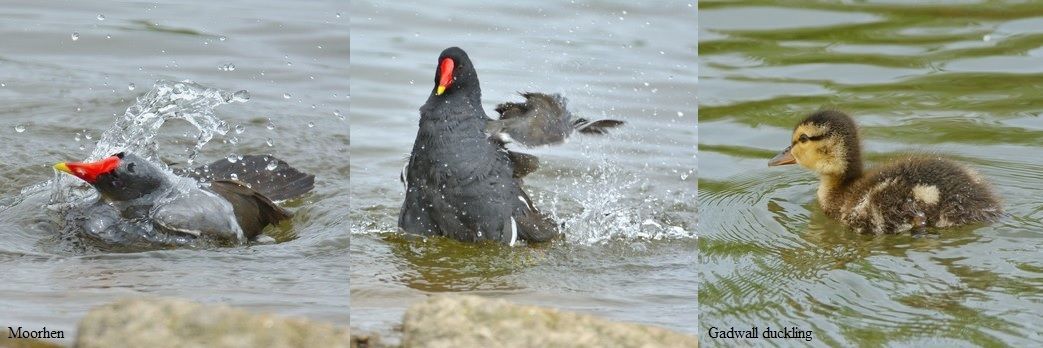
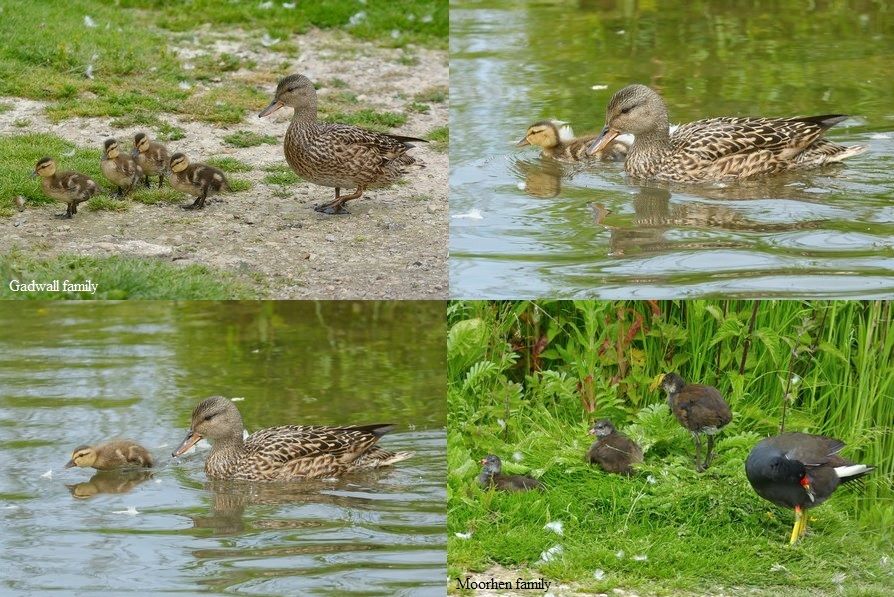

Spoonbills and Temminck's Stints......
The day out with Jason Nichols (1st) began at Potter Heigham Marshes, where a Brown Hare was seen on a field off the track and a Yellowhammer flew up off the track.
Reed, Sedge, Cetti’s and Willow Warblers were all heard singing and a Spoonbill flew up from the far pool and flew over us, followed by several Avocets.
With nothing of note along Beach Road, Salthouse a drive along Beach Road, Cley saw a Red Kite flying around a particular spot and harassed by an Avocet. 2 Little Terns were seen offshore.
At Wells Pools we walked down the track to try and find 2 Temminck’s Sandpipers that were present along the near shore by another birdwatcher. However, this was difficult due to the vegetation masking the pools muddy edges, but by walking far enough down the track and looking back, I spotted what I thought were the two Temminck’s and via Jason’s scope the identity was confirmed.
Also here was a Common Sandpiper, 56 Black-tailed Godwit, Avocets and in the skies 2 Red Kite and 2 Common Buzzard.
Driving through Burnham Overy (just over the mill bridge) a Grey Partridge was seen just beside the road and our usual lunch spot at Brancaster Staithe found 4 Ringed Plover, 2 Little Tern and our first Sandwich Tern of the year!
A drive around Choosley Barns was not as productive as usual, but a Yellowhammer and 2 Brown Hare were of note.
A look over Holkham Freshmarsh found 6 Spoonbill and 6 Barnacle Geese. A grey day, weather-wise but a good day!
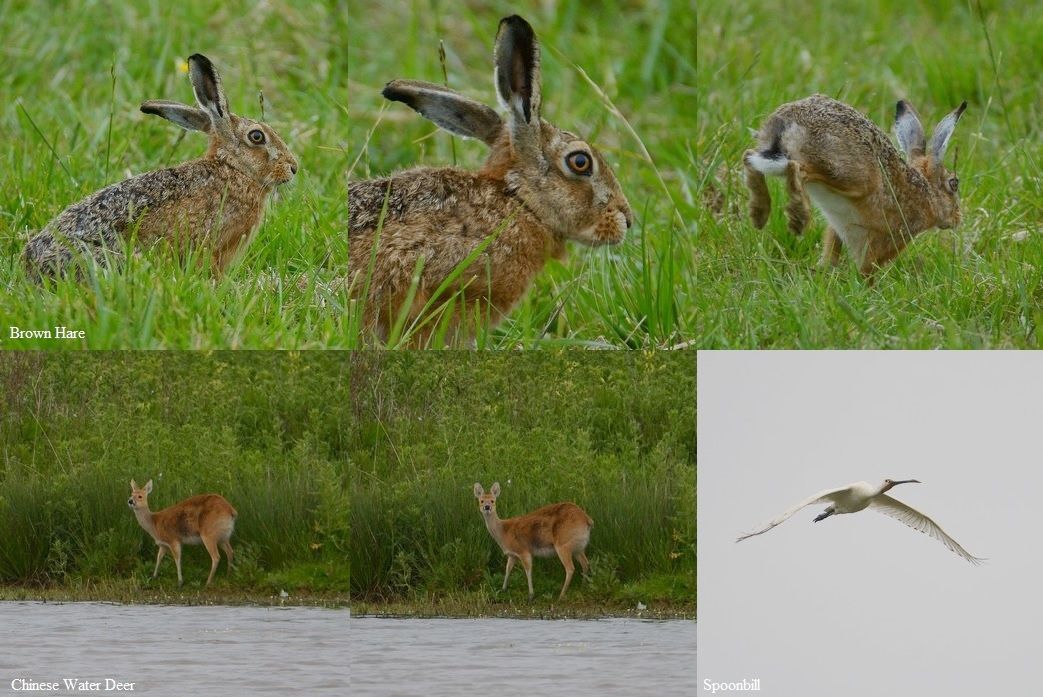
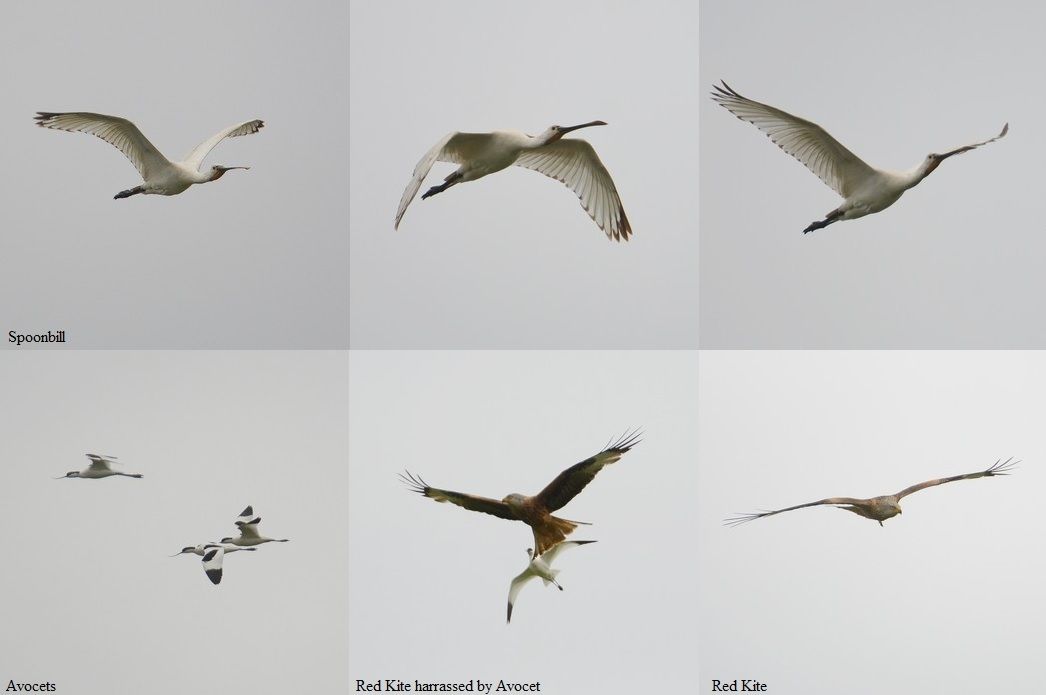
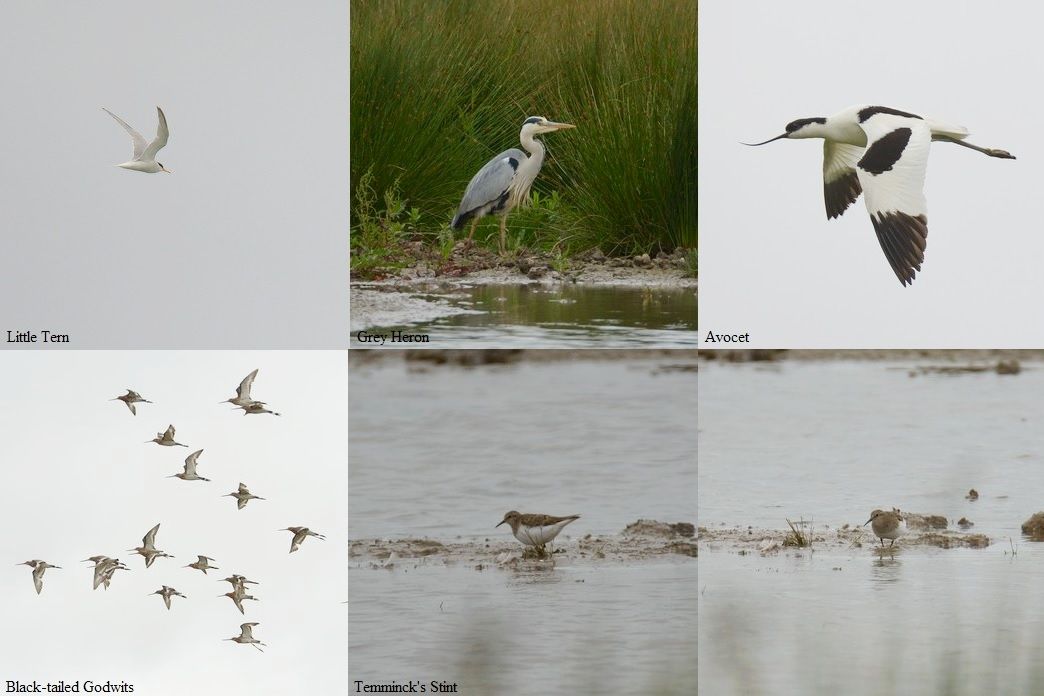
May 2023
Well spent time at Filby for a Biodiversity mix......
A few hours spent at Filby with Sally Clarke (25th) were very worthwhile.
Although it was not that warm, we managed to find Variable, Blue-tailed, Common Blue, Red-eyed and a freshly emerging Large Red Damselfly along the path to Ormesby Little Broad.
Also here we found a Hornet (one of three seen during the visit), a Crab spider with prey Xysticus ulmi, a good many Tetragnatha Stretch Spider species and a Pisaura mirabilis Nursery web Spider.
Hoverflies found was a striking Xylota segnis and a possible Platycheirus clypeatus.
Along the way to the Broad viewpoint we heard Blackcap, Garden Warbler and Chiffchaff singing and one at the viewpoint we heard our first Cuckoo calling (although Ken Saul had heard them previous to our visit).
2 Common Terns hunted over the Broad, whilst 2 Hobbies were hunting over the woods for prey, with larger Dragonflies being absent. However, when the temperature did increase a Hairy Dragonfly was seen over the water and then a fresh Four-spotted Chaser was seen perched in the reeds on the walk back.
Reed Warblers were seen and heard and a Great Crested Grebe caught a Bleak; a species I never knew was in the Trinity Broads and I have only seen them caught by Grebes at Ranworth Broad, where they seem to be the preferred prey as they feed close to the water surface and are probably easier to catch. However, after securing the Bleak, the grebe was challenged by an unseen rival calling from around the corner of the reedbed and flew off over the water well away from its rival.
Finally, the drake Ferruginous Duck was seen again, so a very worthwhile outing with my friend and ‘Rabbit Lady’ Sal.
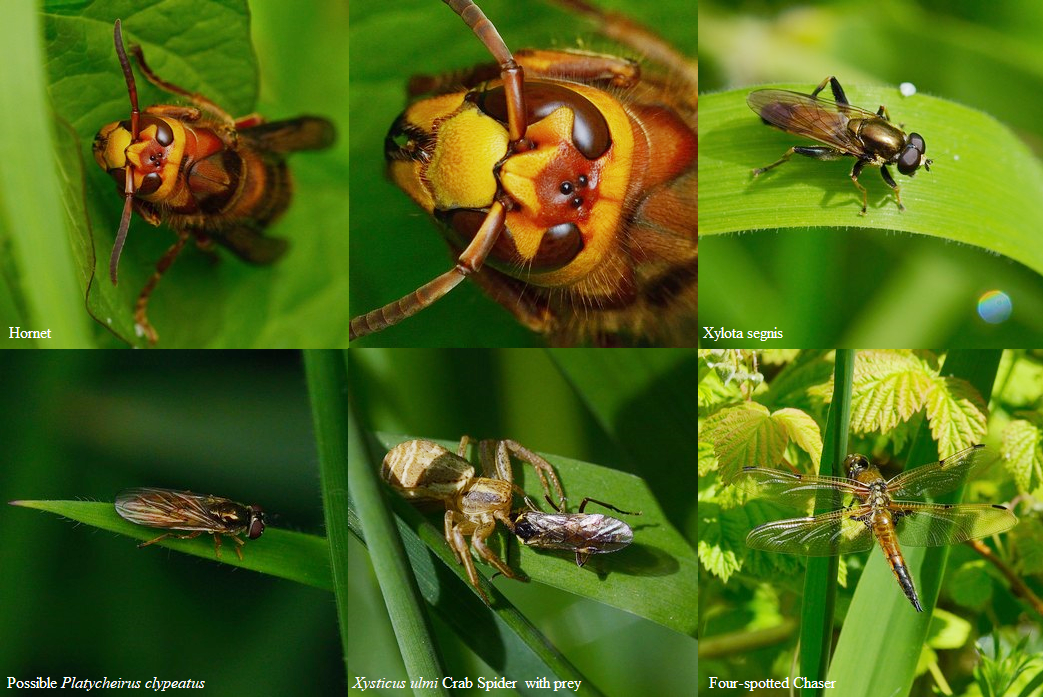
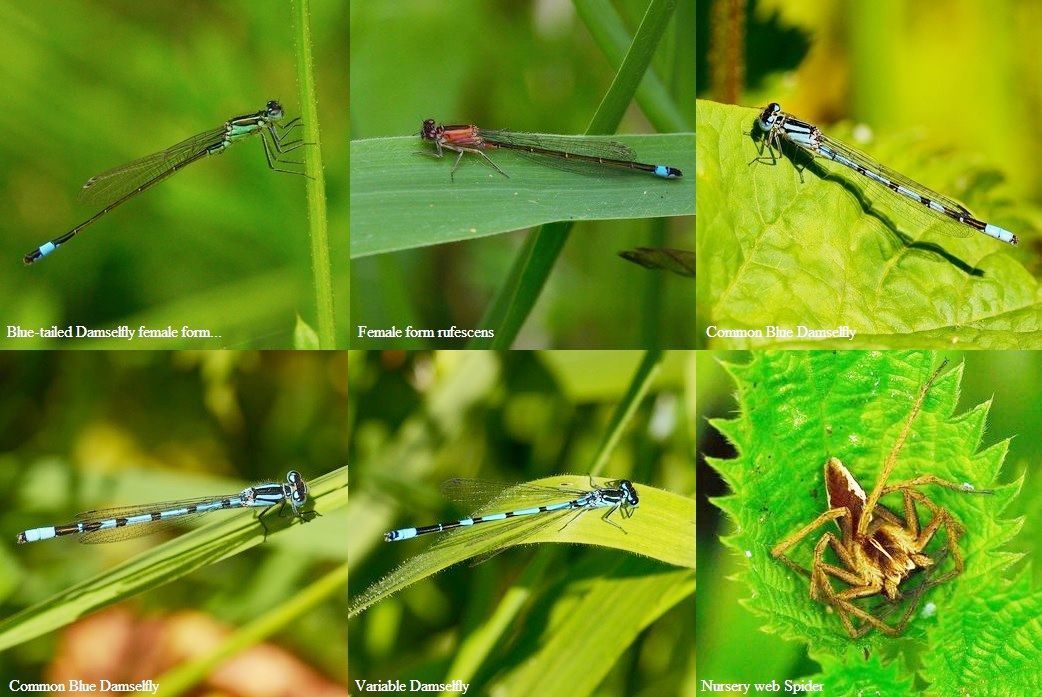
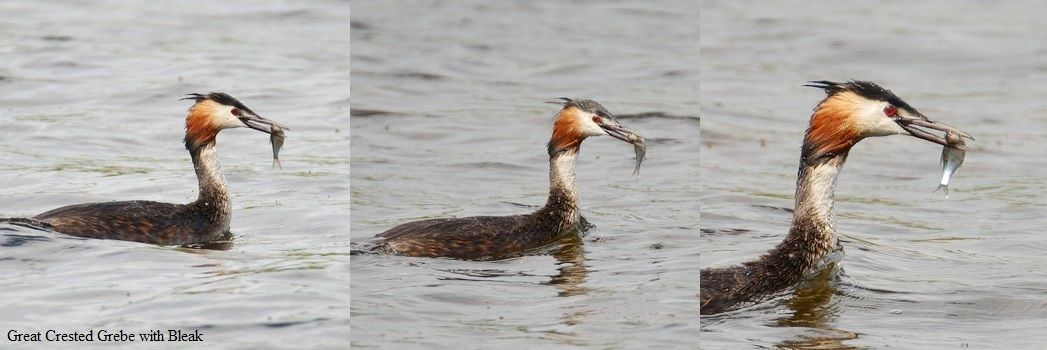
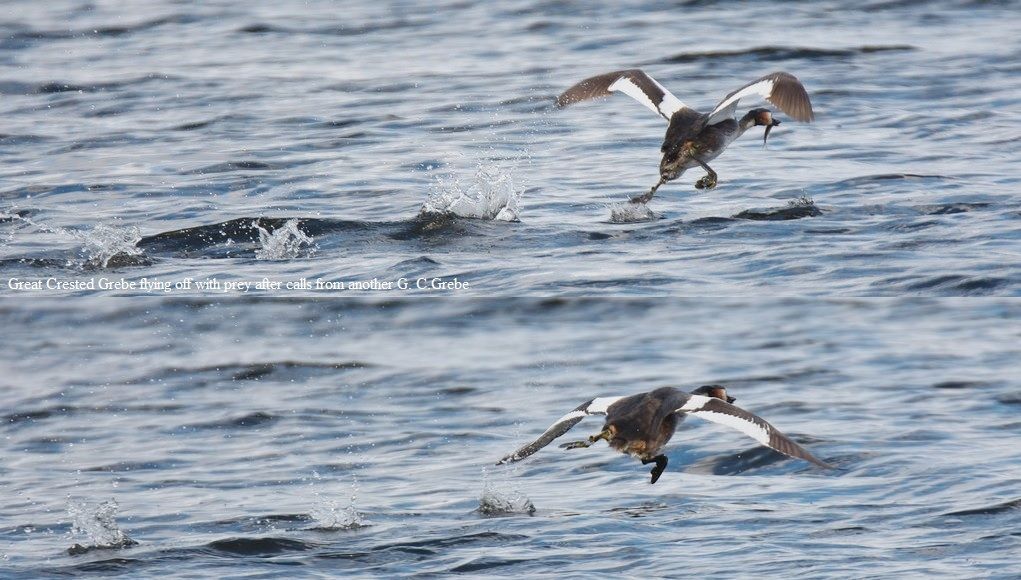
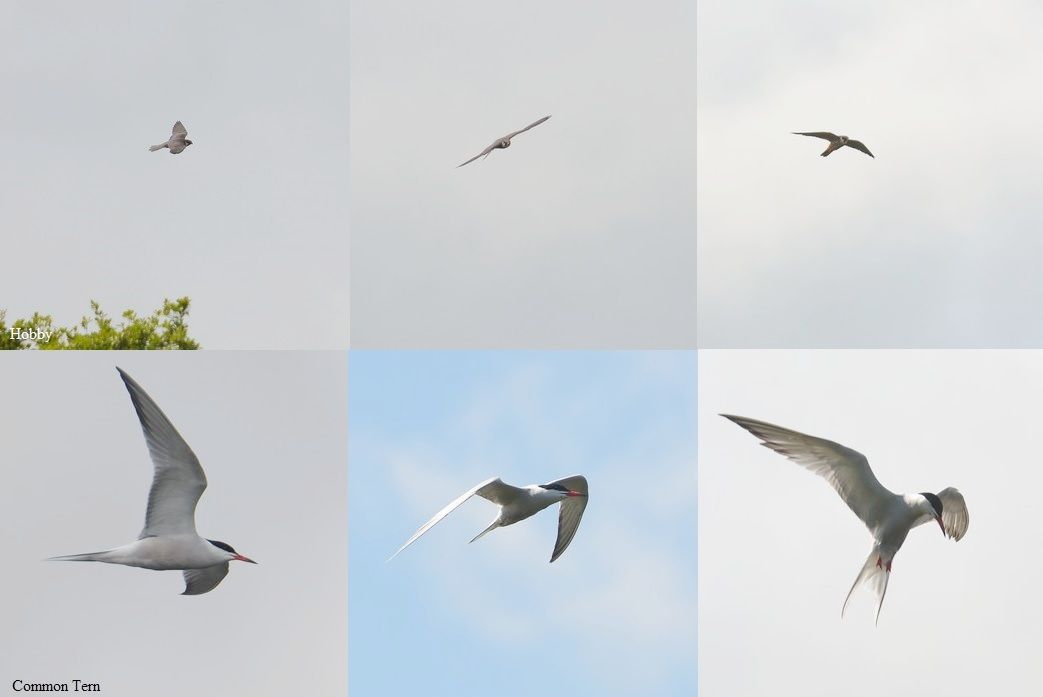
Grey Partridges, Spoonbill and a Hobby on the deck......
The day with Jason began at Beach Road, Salthouse, where a Sedge Warbler was heard and 3 Swallow, 2 Avocet were seen and a Cetti’s Warbler heard. Several Swifts were then seen over the Iron Road.
A pair of Grey Partridge was on the Eye Field at Cley and once again there were two Lapwing chicks.
At Wells pools Black-tailed Godwits and Avocets were the highlights of the wader contingent, but a Spoonbill flying over was good to see. 4 Common Buzzards were in the air together, a Marsh Harrier and a Red Kite were also seen, whilst a Common Whitethroat was singing.
A spot of lunch at Brancaster Harbour was made very worthwhile by seeing our firs Little Terns of the year, with two being present, along with a Common Tern.
Whilst scanning a field for Dotterel at Choosley I found a falcon on the field, which I first thought was a Peregrine eating something, but it wasn’t! It was a Hobby. I certainly didn’t think I would see our first Hobby of the year on a field.
Several Brown Hares followed, 3 Yellowhammers on the telegraph wires and a Lesser Whitethroat singing from the hedgerow as we drove along the top road and an adult Mediterranean Gull was also seen nearby.
2 Common Buzzards were down on a field but were chased away by a Brown Hare! A female Common Whitethroat was in the hedge and a White Wagtail was also seen.
A Great White Egret followed from the pull-in along the A149 at Burnham Overy and another was seen at Holkham Freshmarsh along with 2 Spoonbills and several Swifts.
Further along at Lady Ann’s Drive our second pair of Grey Partridges of the day was seen and a followed by a bit of Tufted Duck photography at Salthouse duck pond.
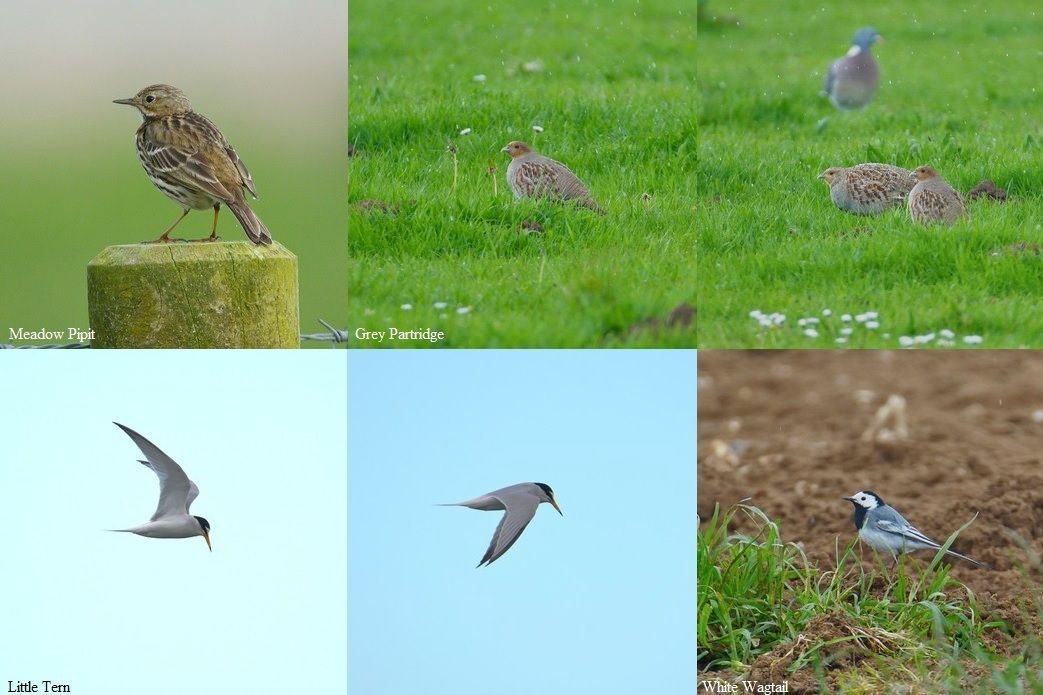
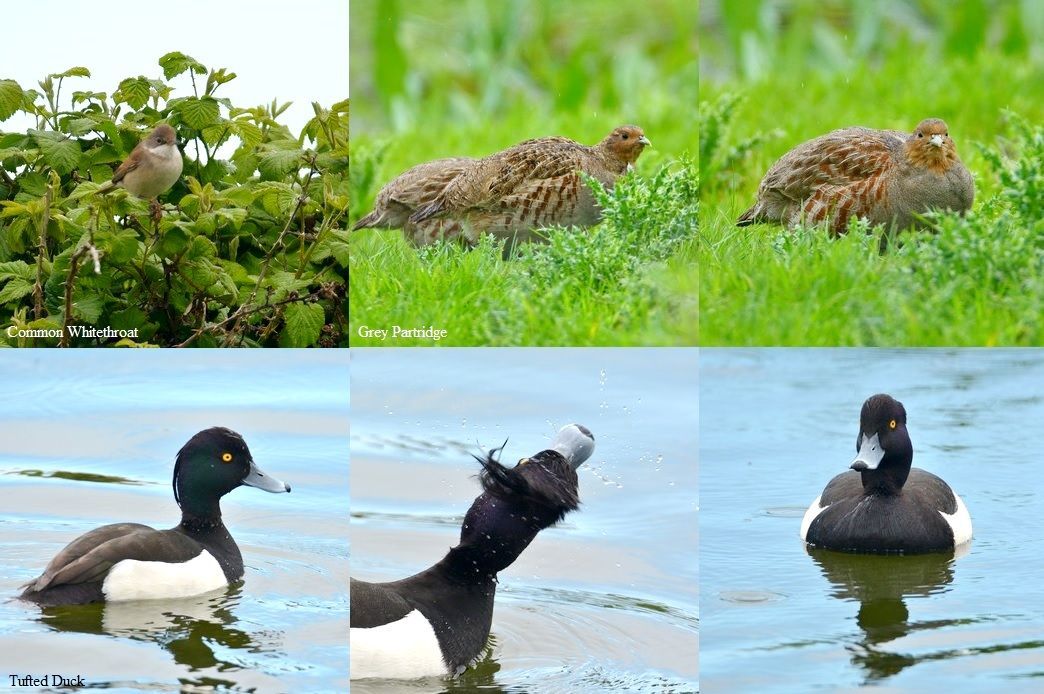
Distant Hoopoe, Turtle Dove and Lapwing chicks......
West Runton was the first port of call for Jason and me today (4th), where a Hoopoe had been seen.
The few people there seemed to be looking at one particular field and eventually I found the Hoopoe a long way down the field, but not everyone could see it and the very fresh wind didn’t make conditions any easier. I saw the Hoopoe fly up, but then lost it and we couldn’t find it again so we continued along the coast.
A Little Egret and a singing Reed Warbler were recorded a long Beach Road, Salthouse, but a walk along the ‘Iron Road further along the road, but still in Salthouse found a few Sand Martins over the pools, but very little else. However, whilst walking back Jason had stopped and was looking at something in the field with cattle. He called me over and said he was sure he had just seen a Turtle Dove land, but all I could see was a Wheatear, having not seen where the dove had landed. However, a couple of minutes later the Turtle Dove flew up before landing again, this time in full view although distant. A great bird to find with numbers of this dove declining fast.
Beach Road, Cley saw an Avocet, Black-tailed Godwit on the Eye Field flash and two Lapwing chicks were seen, not too far away from their mother.
A few birds were seen at Morston Quay with Curlew, Oystercatcher, Redshank, Shelduck and a few Brent Geese.
At Wells pools Jason counted 29 Ruff present which seemed to coincide with a passage of these waders in other places too. Avocets were also here along with a Common Sandpiper and a Marsh Harrier flew over.
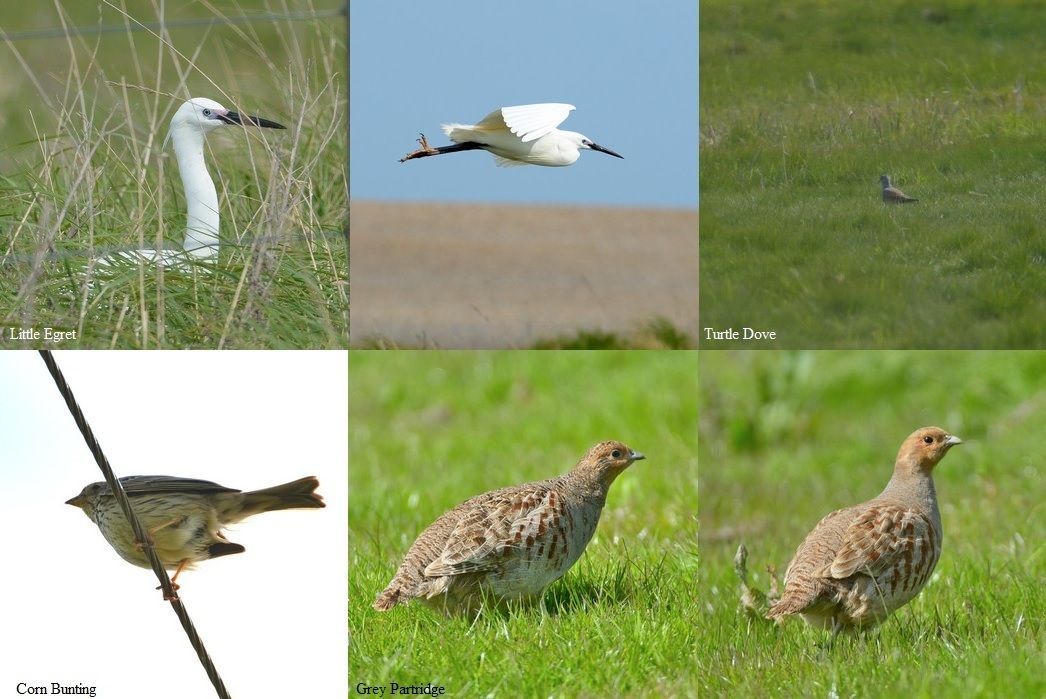
April 2023
An afternoon well-spent......
A rather grey afternoon (27th) when Jason and I only had the afternoon to go out, but it was certainly a worthwhile outing!
First stop on our local exploration was Potter Heigham Marshes where we hoped for a Garganey, but yet again did not see one. However, 2 Great White Egrets were seen in flight and the first Reed Warbler of the year was heard.
On the way to Filby a Brown Hare was sat in a field and was duly photographed, as usual.
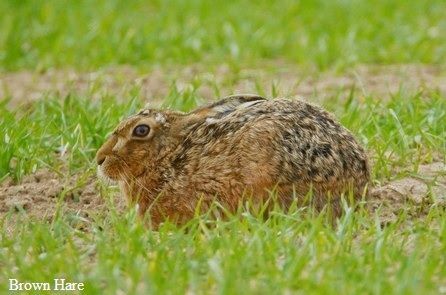
A walk along the path to Ormesby Little Broad found a Garden Warbler (first of the year), Blackcap and a Chiffchaff all in song. Not too much was happening on the Broad itself apart a Common Buzzard flying over but my first Common Tern of the year was also seen.
On the walk back I saw Jason behind me looking intently at something on the other side of the dyke. He beckoned me over and said he had just seen a Water Vole sitting in a hole in a log, but it had gone behind the reed fringe. We waited for a bit and I had brief views of it but clearly it was not going to come back to the log, whilst we were stood there, so we continued along the path towards the car park.
Just before the bridge over the two broads the area of water came into view near the bridge and I saw a duck there and for once it wasn’t a Mallard. It took me a few seconds to realise what it was, as it came as somewhat of a surprise but it was a drake Ferruginous Duck! I manage a few images before the tree branches blocked my view of the drake as it moved away towards the area nearer to the bridge. At this point I heard Jason say: ‘To the bridge’! So we walked up onto the bridge and got more photos of the Ferruginous Duck, seeing briefly ‘head-throw’ before moving off towards the main broad.

On the walk down the path to the crossing point to Filby Broad we could hear a Reed Warbler singing and from the boardwalk we could see quite a few Gulls (mainly Black-headed) dipping down to the surface of the water, presumably feeding on insects. Then I noticed a Tern with long tail streamers, it was an Arctic Tern and then there were two of them. Later we saw one perched on the raft but how many there actually was there was hard to calculate as there were also Common Terns too and neither of the two species were hanging around, but busy feeding as was a Swallow that Jason spotted.
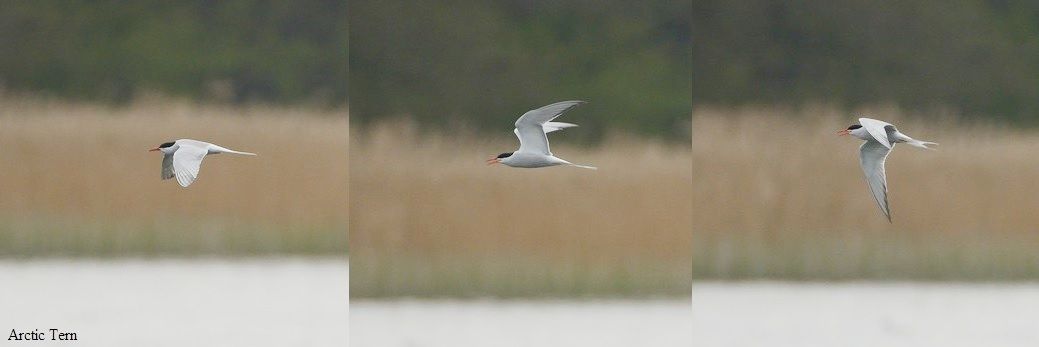

Ranworth Broad was next on the agenda and walking down to the broad we heard our first Willow Warbler of the year, followed by several House Martins hawking for insects, plus a few Swallows.
Several Great Crested Grebes were on the broad with Common Terns flying over and Jason managed to find the Osprey that had been present, albeit far away at the end of the broad perched in a distant tree.
A great three hours spent, but I shall not mention the rudeness of a female member of the NWT’s staff when we went in the centre to tell them about the Osprey. Whoops just did!
Roads of death to and from Milton Keynes Focus concert......
A journey to Milton Keynes with my friend James Cuthill to see one of my favourite bands Focus (18th) had some Natural History interest during the drive there, however, not a great deal of good news!
The fast A roads and motorways are an absolute death trap for animals, particularly the more nocturnal inclined species, with species crossing these roads and coming close to the roads to feed on the grass verges.
This is far from the only time I have witnessed these fatalities, but the fact that there are no provisions put in place for our wildlife to get safely across highways still saddens and infuriates me!
On the drive down a total of 13 Badgers (3 within half a mile of each other on one stretch!), 2 Foxes, 6 Muntjac, a Chinese Water Deer (near Bedford), a Red Deer (probable Stag), Mute Swan and numerous Pheasants had all met their end on these highways of death there to serve our great nation of animal lovers!?
A few birds alive were seen including Grey Heron, Skylark, Kestrel, Rooks, Magpies and Carrion Crows and on arrival at the ‘Stables’, (founded by Jonny Dankworth and Cleo Laine) Milton Keynes for the concert a Song Thrush was singing.
The concert itself began with a support band, who weren’t too bad (heard a whole lot worse!) followed by the star attraction Focus featuring the now 75 year old Thijs van Leer on keyboards, voice (including yodelling) and flute, my main go to see individually, one of my recent guitar heroes Menno Gootjes, the superb 6-string Bass player Udo Pannekeet and from earlier times in Focus history Pierre van der Linden on drums.
What a fantastic concert with old favourites and new material and a deeply touching song for former Bass player Bert Ruiter, who died on 22 March 2022, aged 75. Thanks to James who made this occasion possible for someone who nowadays, can’t make such journeys anymore, but someone who absolutely adores music as does James.
The return journey was thwarted with road closures and diversions, but we managed to see quite a few Rabbits (on certain stretches of verges) and nearby to one of these were a Fox on the verge. About three Muntjac (alive this time, but for how long?) were also seen, but the journey ended as it had started with a Badger dead on the slip road linking the A140 to the A47 near Norwich.
Not too many sightings but first Green-veined White and Holly Blue of the year......
The day out (14th) with Jason Nichols began at Potter Heigham Marshes where we hoped to see a Garganey.
A male Reed Bunting was singing from a briar patch towards the end of the track, but no luck on the migratory duck on the pools. Two Sedge Warblers were singing albeit briefly in the brisk wind and a Bearded Reedling flew across into the reeds, a Chinese Water Deer was wading before disappearing into the reeds and a couple of Peacocks were on the wing along the track.


Further along the coast at Salthouse, a Swallow was perched on a telegraph wire, but subsequent visits to both Cley Beach Road and Morston Quay were pretty fruitless!
At Wells Pools 2 more Swallows were seen and at least 10 Avocet, 5 Black-tailed Godwit and a Ruff were of note on the pools, whilst a Marsh Harrier and a Red Kite flew over.
5 Red Kites were together in the air briefly and distantly at Choosley and a Common Buzzard was another apex predator seen here. Yellowhammers and Pied Wagtails were also seen along with the first Green-veined White of the year.
A stop at Holkham Freshmarsh found very little from the gate but 6 Barnacle Geese were on the field from the next pull-in and best of all the first Holly Blue was seen not far from the car.
A return to the Eye Field at Cley’s Beach Road found a group of Brent Geese there along with a single Ruff. This was a fairly non-eventful day, by our standards, but enjoyable nonetheless.

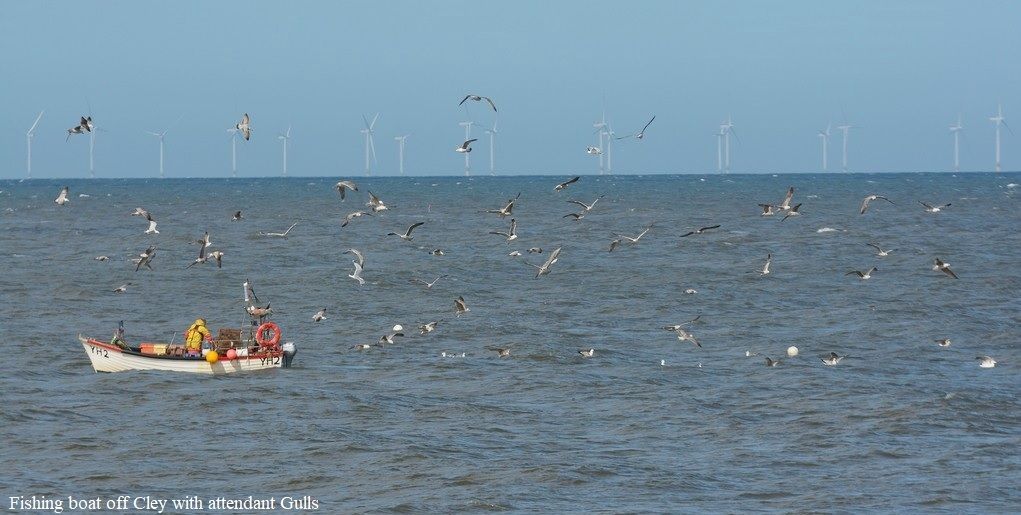
Mixed weather with a good mixture of animals, along the Norfolk coast......
A very overcast and drizzle-filled day (6th), but with ‘hope in our hearts’; Jason and I set out along the North Norfolk coast-or something like that!
6 Pochard, 2 Gadwall and at least 2 Little Grebes were on the pond at Walsey Hills and a Chiffchaff was singing there also.
Not too much along Beach Road Cley, but 2 Ruff were on the Eye Field, whilst at Morston there was no sign of any Greenshank, but 2 Curlew, 4 Redshank and at least 12 Brent Geese were present.


A Brown Hare leapt across the track at Wells Pools, in literally one bound-fantastic! Also, 5 Brown Hares were giving chase on the brow of the hilled field. 2 Marsh Harriers were perched in the trees getting wet in the drizzle and a single Ruff, 10 Black-tailed Godwit and 6 Avocet were of note.
Lunch at Brancaster Staithe found a Spoonbill along with a Little Egret hunting for prey in one of the distant channels, an Avocet flew in and both Black-tailed and Bar-tailed Godwits were also present.
A drive around the area at Choosley Barns (the weather had finally brightened up!) turned out to be a wise decision, as just past the barns a ‘black-bird’ flew off the telegraph wire; a male Ring Ouzel! Unfortunately we couldn’t locate it again.
Two adult Mediterranean Gulls were then seen over one of the fields where Black-headed Gulls were feeding. A pale Chinese Water Deer, like last week was lying down in a field and then further along there was 3 water deer in the same field and a Brown Hare was also seen here, as was a male Wheatear perched in the hedgerow.
Then we found 6 Ruff, beginning to come into breeding attire, another Wheatear (in the hedge!), at least 8 Yellowhammer, Linnets coming to bathe and drink and Goldfinches were also seen here, with the Goldfinches feeding on Groundsel, which when I was young, we were told it was Chickweed (an entirely different plant) and was given to Budgerigars! Towards the end of Chalk pit Lane a pair of Bullfinches flew across the road into trees there.
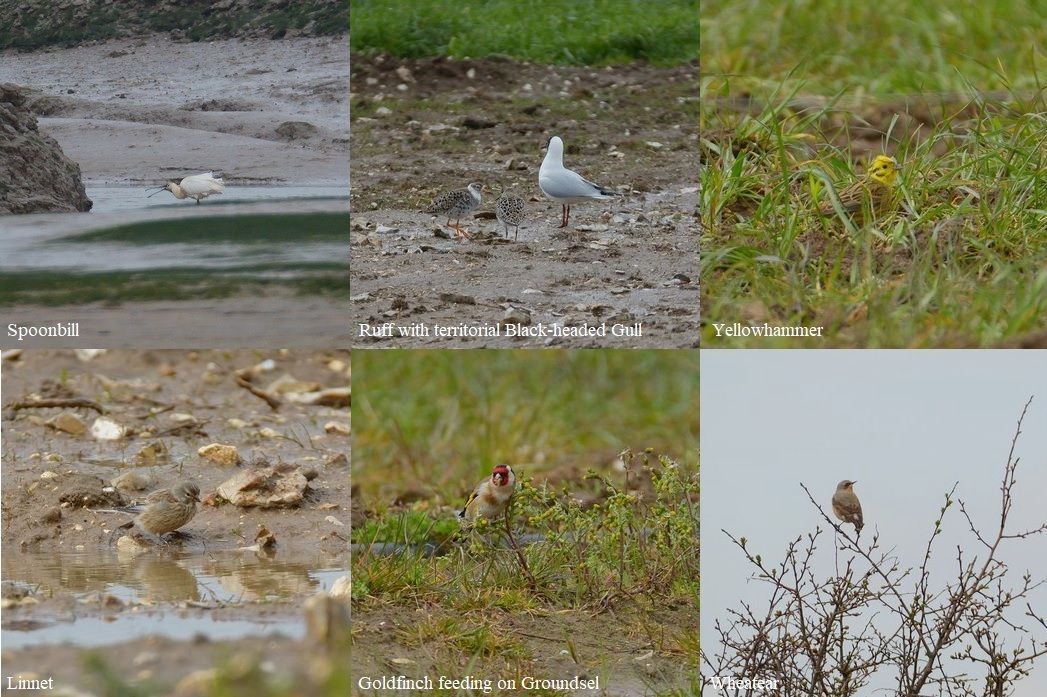
The pull-in along the A149 at Burnham Overy provided us with a Marsh Harrier and a Red Kite but then Jason spotted a male Hen Harrier, which was soaring over the area, albeit in the distance.
3 Spoonbills were seen from ‘the gate’ at Holkham along with a close Common Buzzard and another visit to the Eye Field at Cley, this time found a Wheatear.

March 2023
Brown Hares and a self-found Alpine Swift!
With nothing of note (mainly due to a large party of school children on a fieldtrip) along Beach Road, Salthouse, the day (30th) with Jason Nichols really began, along Beach Road, Cley.
Approximately 250 Brent Geese were on the Eye Field and then we (Jason!) found 3 Wheatears. Then 3 birds flying along the shingle were identified as Snow Buntings and we set off westwards along the beach to see if we could find where they had landed. No sign of the buntings but I found a Wheatear, probably just in, sheltering out of the stiff breeze.
A ‘pair’ of Marsh Harriers was seen at Stiffkey as were 2 Roe Deer and 2 Avocet were the highlight at Wells Pools.
Passing through Holkham Red Kite, Common Buzzard and Marsh Harrier was seen and 2 wagtails perched on a wire found that one of them at least was a White Wagtail.
A stop at Brancaster Staithe for lunch and here were at least 12 Black-tailed Godwits some of which were in fine colour.
Deciding to have a drive around the Choosley Barns area turned out to be a good decision, with Marsh Harrier and Common Buzzard representing the tertiary birds. Also here was a Chinese Water Deer and at least 4 Brown Hares, two of which were indulging in some typical Brown Hare courtship. A Corn Bunting was heard singing close by but we couldn’t see it. However, good that they are still here! 2 Mediterranean Gulls followed plus 4 Stock Doves and at least one Chiffchaff.

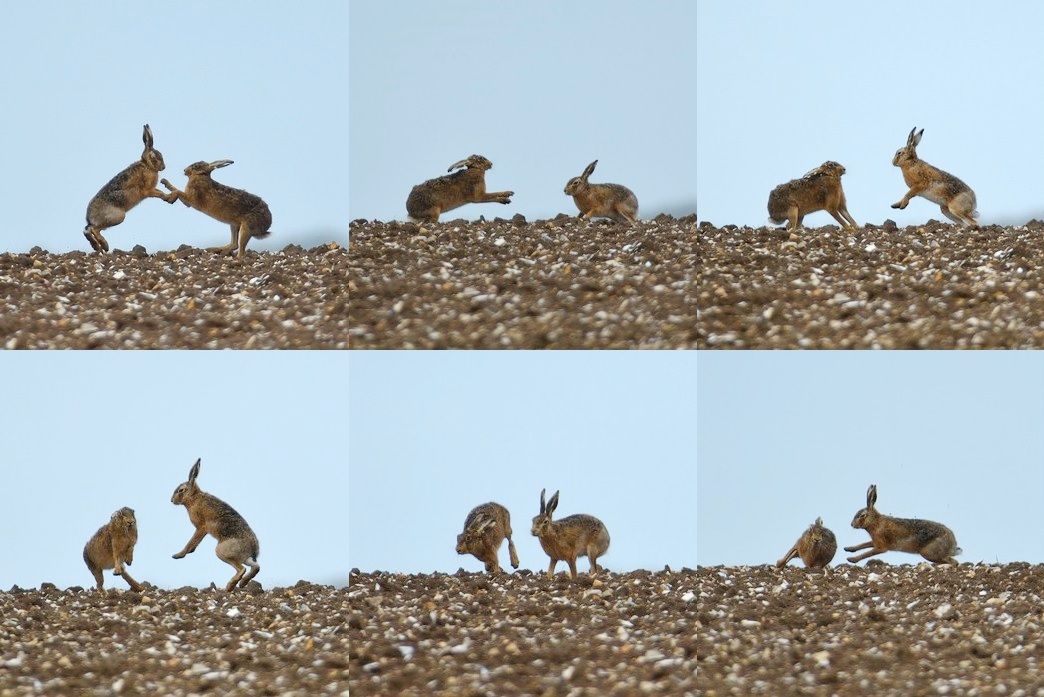


Driving back along the coast near Burnham Norton, Jase said he could see a ‘Swift’. Stopping somewhat abruptly I got my binoculars on it and it was an Alpine Swift! We had found our own one during this influx, which is always nice to do. We parked up and got out of the car to look for the swift but unfortunately didn’t see it again, but we did see a male Brimstone flying along a hedgerow.
The A149 pull-in at Burnham Overy gave us a Great White Egret, 3 Spoonbills flying west and a Brown Hare.
The ‘gate pull-in’ at Holkham was next and here we found 3 Spoonbills, a Little Grebe in one of the dykes, Marsh Harrier, 2 Chinese Water Deer, Muntjac and 5 Brown Hares.
We decided to have another look on the Eye Field at Cley, in case anything else had arrived and we were not disappointed with a Swallow flying west with 5 Sand Martins, 2 Wheatears, 2 White Wagtails, Skylark and Meadow Pipit; another good day at ‘the office’!
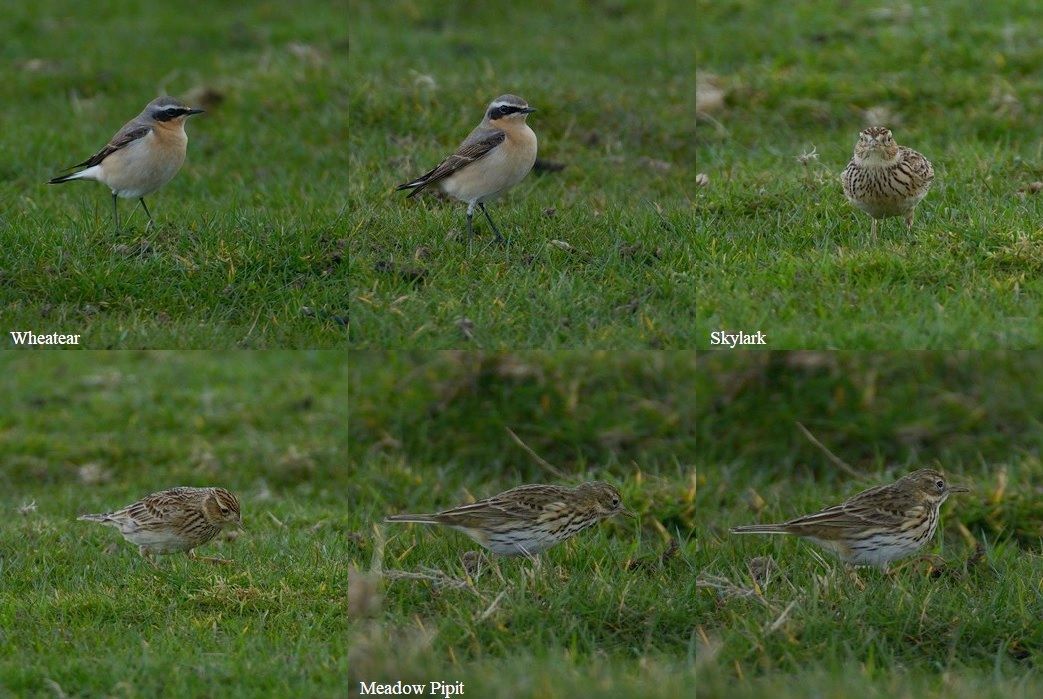
First Wheatear, waders and pavement-viewed Alpine Swifts......
The day out (23rd) with Jason Nichols began at Cromer, where 2 Alpine Swifts (following an influx into the UK) had been seen. However, there was no car access to the lighthouse where the swifts were being reported from and nursing a tear in my lower back there was no way I could walk up the private road so we continued along the coast in hope of finding one ourselves.
We stopped at Beach Road, Salthouse just in time to see a Spoonbill flying across west and eventually settling down further along the coast. Also here was a pair of Stonechats.
Heading towards Cley Coastguards, Jason spotted our first Wheatear of the year near the flash in the Eye Field. However, it wasn’t there for long and flew east along the fence posts where it was seen again later. Also here was a single Ruff at the edge of the water, somewhat on alert due to a Marsh Harrier flying across.
Parking in the car park and facing south for a change, was a good decision as I saw a Sand Martin (first of the year) flying west at speed over the top of the Eye Field. Another Marsh Harrier was seen and 3 Brown Hares were delightful to see going through their courtship chases.
At Morston Quay we once again found a Greenshank along the channel before finding another one further up and at least 40 Brent Geese were still here.
Driving down the track to Wells east pools I saw 2 Grey Partridges, just as they reached the right hand hedge after obviously crossing the track, exclaiming ‘grey-lags’ in my confusion and haste to tell Jase they were there, as he was looking at an oilseed rape field at the time! Luckily he knew what I meant!
We parked up at the bottom of the track and scanned the pools, but there did not appear to be too much of note, but 2 Red Kite, a Common Buzzard, Peacock (butterfly!) and a Buff-tailed Bumblebee were all good to see.
Brancaster Staithe had very few waders, just a couple of Black-tailed Godwits, Ringed Plover, several Curlew, Turnstones, a few Oystercatcher and a Little Egret but somewhat surprisingly we saw our first Brimstone of the year here, a lovely yellow male flying over the mud and across the channel; where else would you see, or look for a Brimstone in spring!!
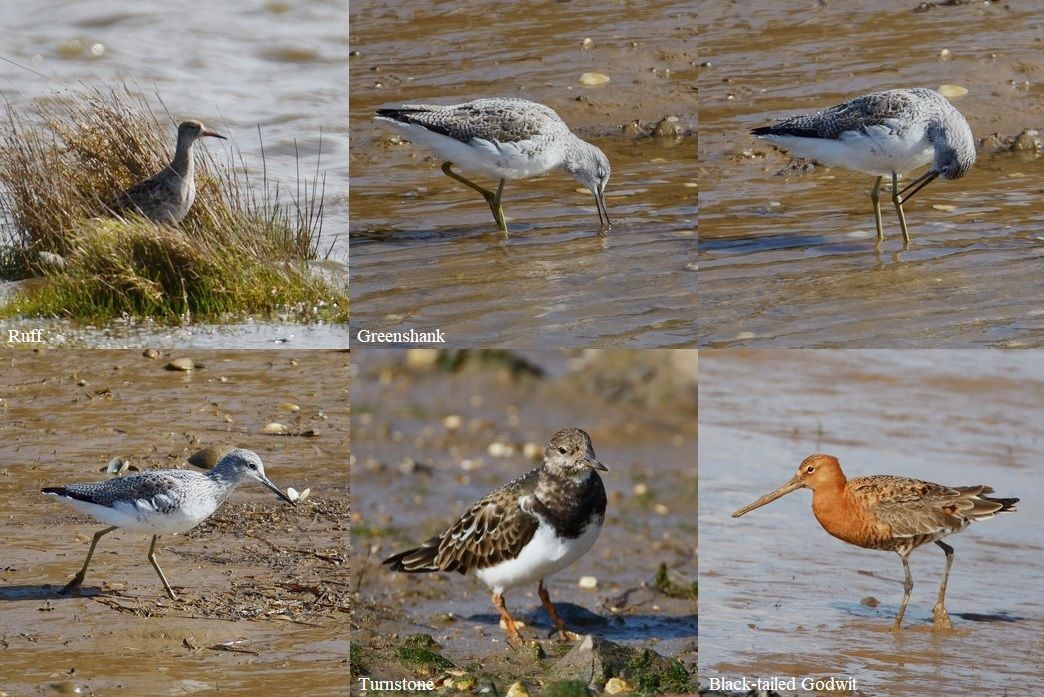
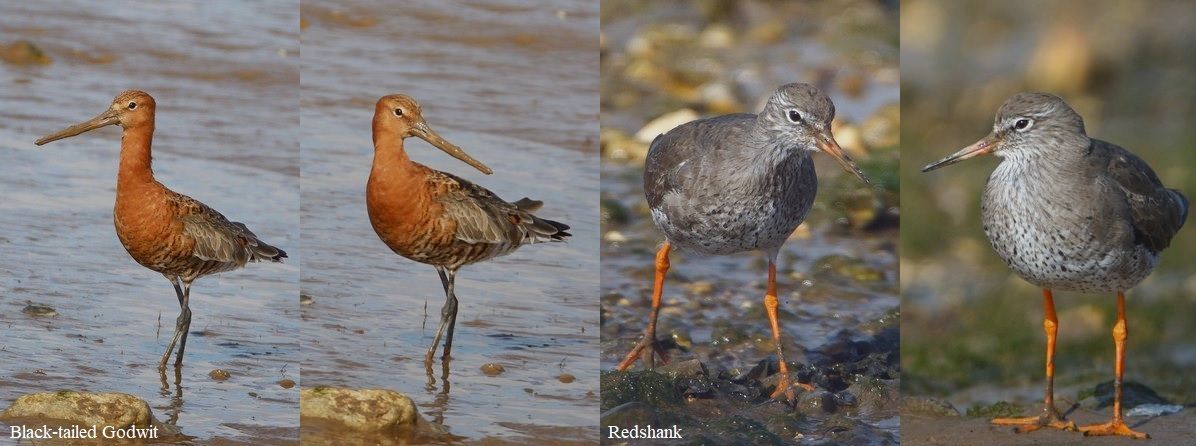
Heading back along the coast, we came across 4 Red Kites in close proximity to each other just before Burnham Norton, followed by a Great White Egret from the pull-in along the A149 at Burnham Overy.
3 more Red Kites were seen at Holkham and the same number of Spoonbills and 4 Barnacle Geese followed by yet more Red Kites, with 3 more, as we travelled through the Wells area.
As we headed back through Cley, Jase suggested we go and have another look for any Alpine Swifts, one of which was now being reported over the Cromer Golf Course, so that’s what we decided to do and look for a ‘distant speck’ at best maybe from somewhere along the road, where we could see some of the golf course.
As we were nearing the golf club we could see three people standing on the pavement intently looking at something to the north through binoculars. As we approached nearer still I looked out of my passenger door window, and told Jase I could see an Alpine Swift in the sky. Of course when we got out of the car there was no sign of a swift, but eventually one came back into view.
Trying to keep tabs on Alpine Swifts let alone photograph, what I would describe as an avian Exocet missile due to previous encounters with these superb flying machines, especially in Spain is a challenge but one I love. Eventually, I saw two together over the road (Jason had forgotten to tell me there were two reported!) and we stood on the pavement for about an hour testing our photographical abilities in predicting where and when the swifts would appear and which way they would in a split second turn to a different course, at the same time marvelling at their aerobatic abilities.
After a great end to another day out we headed back, very satisfied that we didn’t have to just settle for a distant speck.
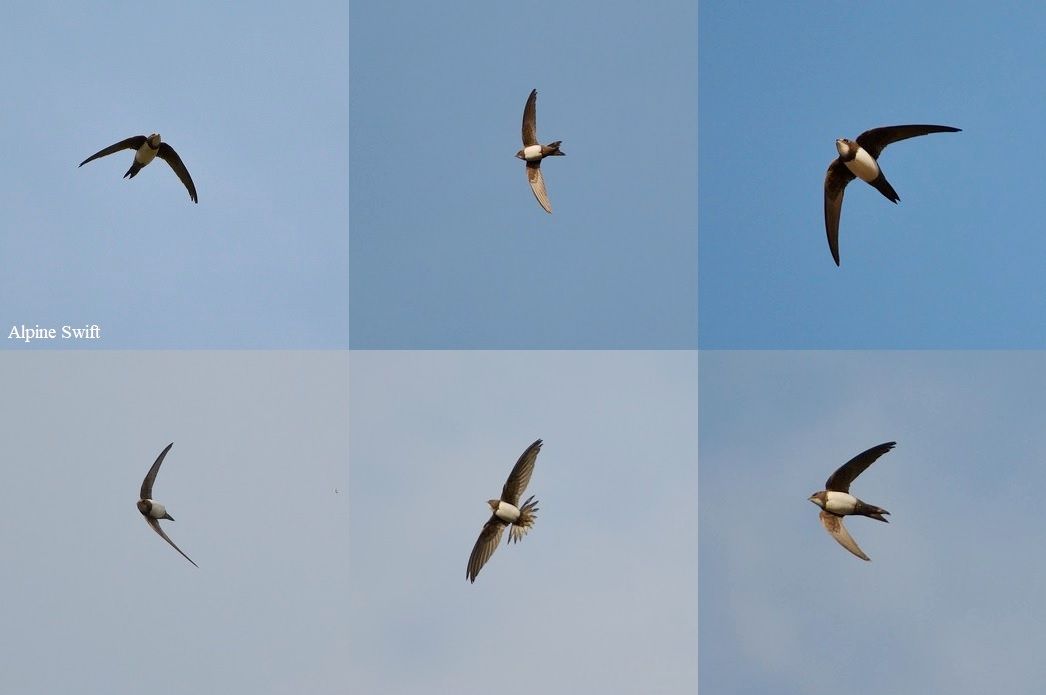
Velvet Scoters and snowfall!
A very overcast day began with Jason at Winterton where Velvet Scoters had been reported, on and off for some time now.
We were not disappointed and found two rafts amounting to 11 Velvet Scoters. Also here we saw at least 8 Gannets and a Red-throated Diver.
We decided to head for Fulmodestone, where the previous day 7 Goshawks had been seen from the raptor watch-point there over and around Swanton Novers Wood. However, by now there was a constant delivery of snow and the likelihood of any Goshawks appearing were both slim and none! After seeing 3 Common Snipe relocating to the field where we were parked, we decided to cut our losses and head for the coast.
At Morston, we once again found a Greenshank present, but very little else.
Cley’s Beach Road was a little more productive with a Stonechat on the telegraph wires and Golden Plovers close to the road and despite the weather, a must photography-wise. Also here were a couple of Turnstone and a Skylark.
A short distance away, a pair of Stonechat was seen along Beach Road, Salthouse, but with the weather conditions not improving we called it a day. Roll on Spring!


No Lapland Buntings but an Owl at Letheringsett......
The day out (2nd) with Jason Nichols began at Weybourne, where we once again tried to see the Lapland Buntings reported there. However, whilst we saw Skylarks, Linnets and a few Yellowhammers, there was no sign of any Lapland Buntings.
On to Morston Quay where a Greenshank was present once again and also here were: Grey Plover, 9 Redshank, 2 Curlew, Oystercatcher and a Little Egret.
A visit to Letheringsett followed and although there were no Redpolls (a Mealy had been reported here) and Siskins we did hear and then see a male Bullfinch.
Walking along the path, adjacent to the hedgerow and river an Owl flew out. I didn’t actually see it but Jason did and from what he described and the habitat there it seemed likely to be a Long-eared Owl. However, we couldn’t re-find it, but several Blackbirds around an Ivy-clad tree, could have been where it had flown to.
Wells East Pools had pretty much the same highlights as last week, with 11 Avocets and a Chinese Water Deer.
We decided to head back along the coast and called into Sheringham sea-front, where we found 2 Purple Sandpipers, along with 15+ Turnstones.
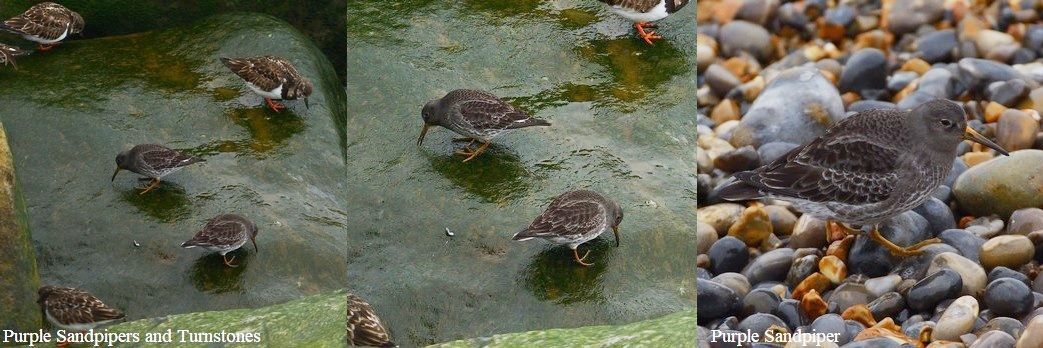
February 2023
Frogs and Toads spawning updates across the UK......
An interesting chat with Mike (Linley) the other evening, when he told me about maps being produced to track the spawning of Frogs and Toads.
So, if you are interested in how the progress of Common Frogs and Toads spawning across the UK is progressing have a look at the Freshwater Habitats Trust Spawn Survey Results 2014-2023.
A Ruddy in the Pinks, but no sign, but a beautiful pale morph Buzzard!
2 Stonechats at Beach Road Salthouse began this particular’s Thursdays (23rd) offerings with Jason Nichols.
Hearing of a Ruddy Shelduck with Pink-footed Geese at Brancaster, we decided to begin our North Norfolk coastal trip at its ‘end’ (if that makes sense?) and headed there first.
Just before Brancaster we saw a skein of approximately 800 Pink-feet flying in and going down on the saltmarsh, but couldn’t see anything else but pinks amongst them, but at least 12 Pintail were on a pool behind the geese.
At the given site at Brancaster where the Ruddy Shelduck had been reported there wasn’t even any Pink-feet so we set off back to check through the flock seen earlier, but again found only pinks.
Brancaster Staithe was our next port of call and for lunch. 7 Ringed Plover were found here, an increase from one last week and also on the wader front were: Several Turnstones, 2 Curlew, 12 Black-tailed and 4 Bar-tailed Godwits, several Oystercatchers, 2-3 Redshank and 2 Grey Plover. A Mediterranean Gull was heard but not seen, a substantial flock of Brent Geese in the distance, with at least 10 landing along the channel and a Little Egret flew over.

From the A149 pull-in at Burnham Overy, 2 Red Kites were seen over the marshes and flocks of both Brents and Pink-feet also.
2 more Red Kites were seen a short distance further along the road, before arriving at ‘the gate’ at Holkham where at least 60 White-fronted Geese were seen and a Great White Egret.
The next pull-in at Holkham saw a Muntjac resting at the base of a hedge but too much else.
Just past Lady Ann’s Drive there was a very pale Common Buzzard perched on a fence post but with a car already there we couldn’t stop. Further along we came across another more ‘normal’ morph Buzzard perched again on a fence post, but despite going back we could not park safely to photograph it.
However, the car had left and the pale morph Buzzard was still perched and managing to park in a far safer spot we photographed this rather handsome raptor.

At Wells, a flock of 200+ Brent Geese were on a field, where many years ago I had seen a Red-breasted Goose in their midst in exactly the same spot as they were today! At Wells east pools 11 Avocets were present and a Chinese Water Deer was ‘peeping’ out of the Juncus.
A walk along Weybourne Cliffs for a reported Lapland Bunting amongst a flock of ‘other Buntings’ came to nothing, but at least 4 Yellowhammers were present.
On the way back home I suggested turning off the Stalham bypass and driving through Hickling and back along the coast road. As it turned out this was worthwhile, as 13 Red Deer crossed the road in front of the car at Sea Palling and made their way across the fields. Even the van driver behind us stopped to have a look!
A stop at the Horsey ‘lay-by’ found a pair of Cranes in one of the dykes and Marsh Harrier, Common Buzzard and 2 Chinese Water Deer ended the day out.

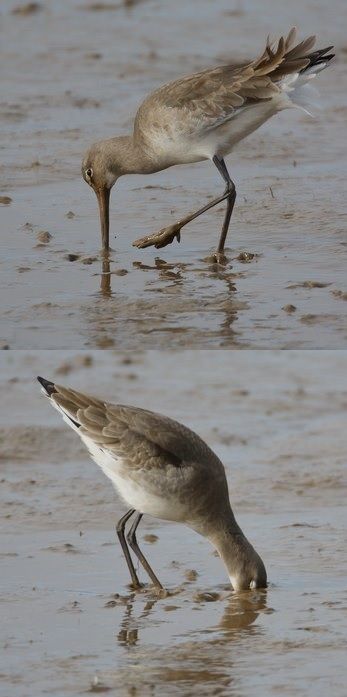
Black-tailed Godwits (photographed at Brancaster Staithe), like many waders have to search for their food in very viscous clinging mud. Even humans walking through this aggregate would find it very draining, so imagine what an animal has to go through in order to find the food it has evolved to feed on and what its body has evolved to deal with such terrain.
Whilst that is fine, within an evolved organism and niche dependency, imagine what it would be like to have something detrimentally added to this struggle for existence.
Imagine having a metal bangle (top right) added to your leg, whilst having to search for your food, whilst wading through mud? Would you add such an item in your pursuit of food or human pursuit of greatness; swimming for an Olympic medal, Grand Prix cars, cycling in the velodrome etc etc?
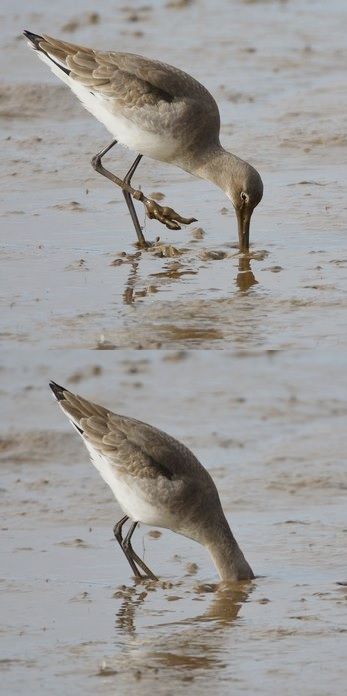
The basic laws of physics dictate that added drag requires more effort/work (Work is the transfer of energy by force acting on an object as it is displaced) and in the world of biology, this means that this affects the energy return of a given prey item (E/H Energy divided by Handling time).
Whilst the BTO (British Trust for Ornithology) states that a ring on a bird’s leg is simply nothing more than a human wearing a wristwatch, this is anthropomorphic (the enemy of science) and has no bearing on what a wild animal that depends totally on economics for its existence, compared to a human, which can go to the supermarket or a corner shop for nutrition and not necessarily by foot!
Add to this an assortment of coloured plastic rings (as in this pathetic Black-tailed Godwit ringing scheme – instead; presence or absence?), does this actually help an animal (before we even examine mate-recognition!) go about its daily survival regime.
Based on the evidence you make up your own minds!
Afternoon nature foray ends up with a Falcon enigma!
An afternoon’s ‘nature foray’ (17th) began just after 15.00 around the back roads of Clippesby and Ashby.
Not too much to see here and no sign of any Cranes, but a Marsh Harrier, Pheasant, Skylark and a small covey of Red-legged Partridges had the camera pointed at them!
Heading towards Repps, a Common Buzzard was perched in the top of an Ivy-covered roadside tree, before calling in at the garage.
Continuing along the Stalham bypass and turning off towards Hickling found very little apart from Black-headed Gulls following the plough and driving through Hickling and then to the coast road was very uneventful; just empty fields devoid of wildlife.

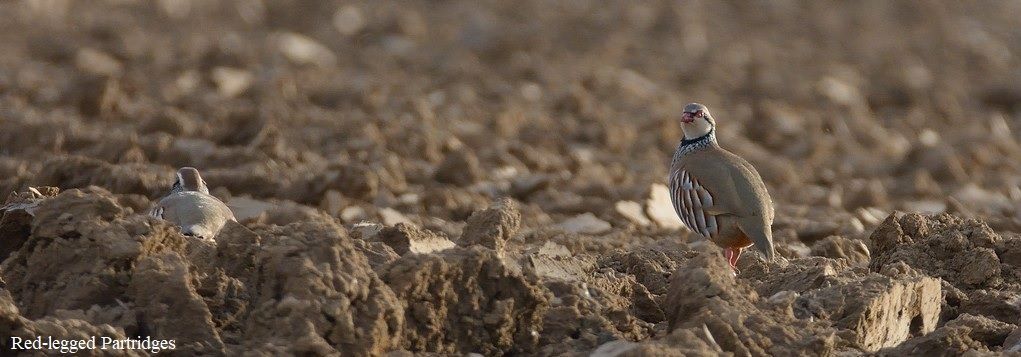
I followed the coast road with nothing of note until just before Horsey Corner, where approximately 500 Pink-footed Geese were in a field. I scanned through the flock of geese and as I got to the ‘end of the line’ I noticed a pale bird perched in the same field. On first instincts I was expecting to find a pale Common Buzzard, but it wasn’t!

The bird, a Falcon was very pale with very distinct head markings and small streaks followed by chevrons on the underparts and dark blue-ish upperparts. I still was not sure what exactly it was.
Eventually it flew a short way, mostly gliding, revealing a brown tail with a whitish narrow end to the tail with a paler ‘spotted’ tail-base, whilst what could be seen of the underwings were fairly uniform with a dark end to the wing. It landed just behind a Pink-footed Goose, where size could be more accurately determined.
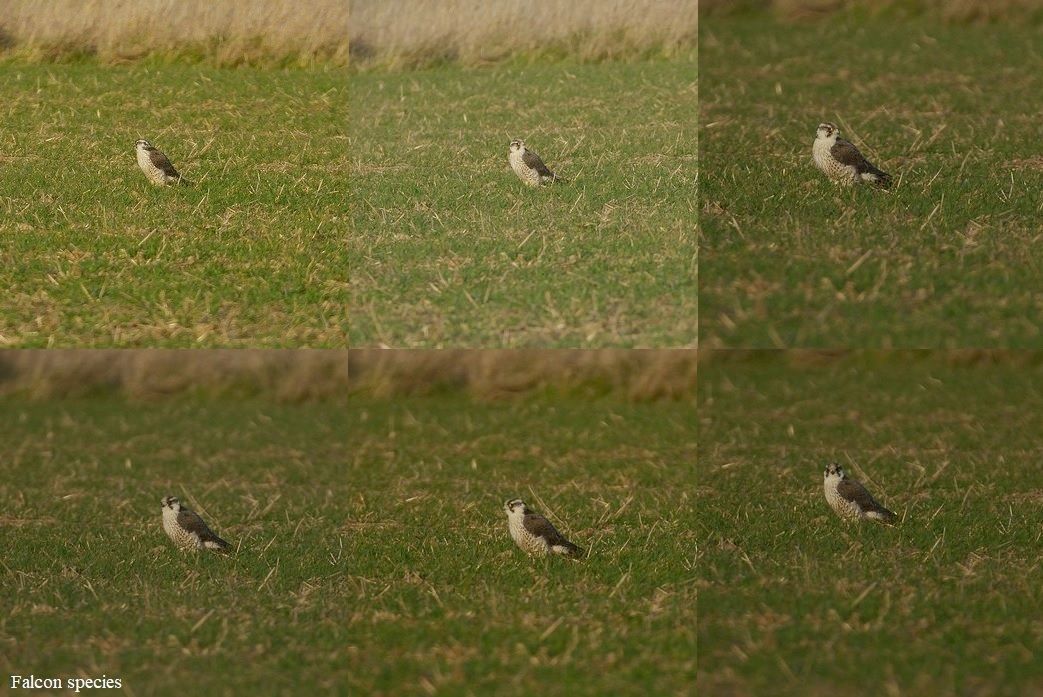
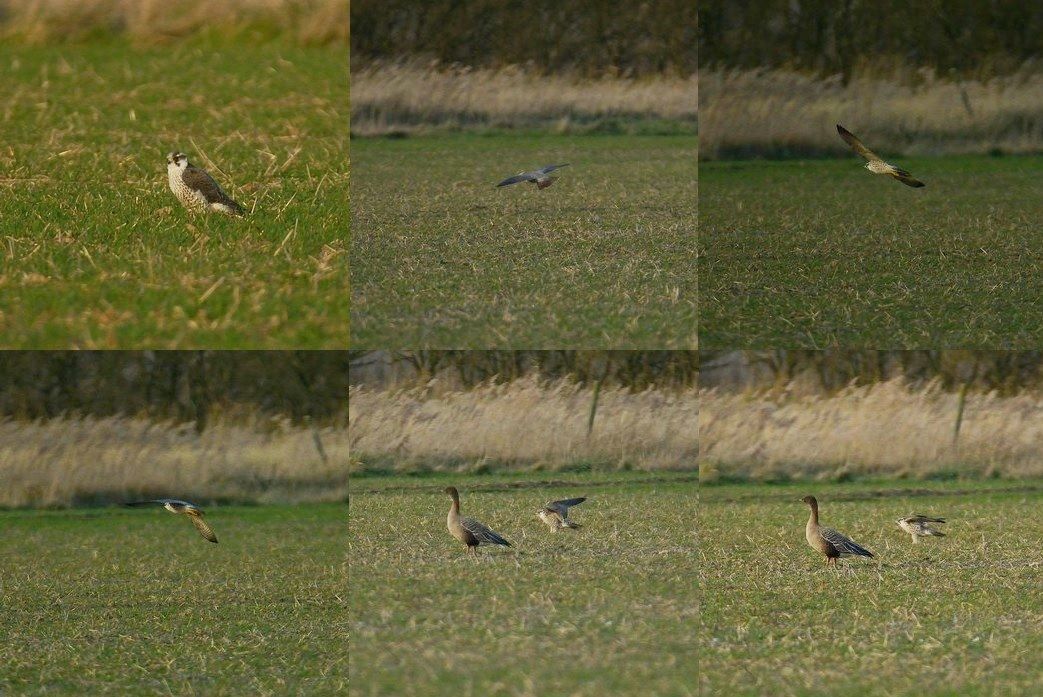
Carrying on along the road, I found another flock of Pink-footed Geese, just after Horsey Mill. A similar number of approximately 500 were present, but nothing different apart from pinks in their midst. However, 3 Common Snipe were seen just in front of the geese and a Grey Heron flew over.

A little further along the road, I pulled into the ‘lay-by’ and found more Pink-feet (approximately 200) along the edge of the field opposite and in the distance a Chinese Water Deer. Looking out to the West, I spotted a Crane and then another appeared out of a dyke. Probably a pair, they fed along the flood bank for several minutes before taking off and flying across the road. Ironically this was exactly the same spot I saw my very first Cranes, over (at least) 30 years ago! A Common Buzzard was then seen perched in the field opposite.
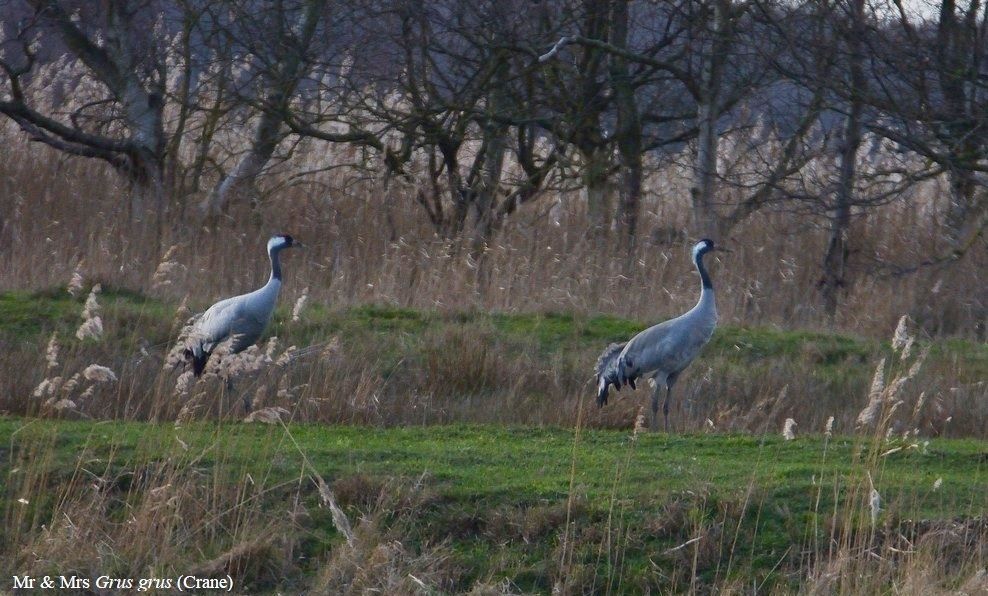
I decided to drive a short distance to Somerton Marshes to look for Owls. At least 3 Marsh Harriers were seen quartering the distant reedbeds and a Grey Heron flew over, whilst I waited for an owl to appear and eventually at 17.11 a Barn Owl appeared just to the North of Somerton Mill. Meanwhile behind me 2 Chinese Water Deer had emerged in the now fading light to browse in a field.
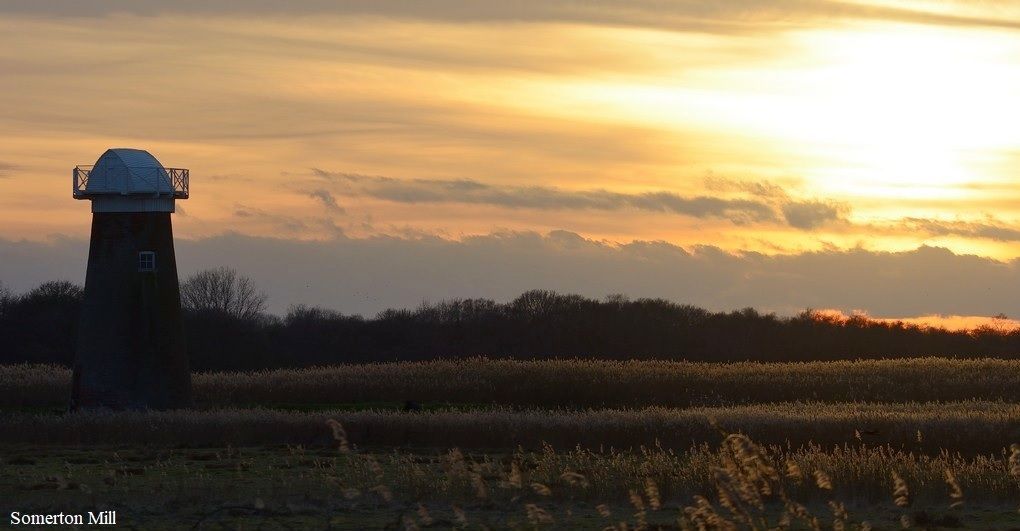
I contacted a few people for their thoughts on what the Falcon might be, but this turned out to be not very helpful really, with some saying it was a Merlin!? However, my ‘partner in crime’ Jason Nichols was more helpful and although still not comprehensively sure of the identity, we are veering towards a very pale Peregrine, based on the pale tail base and in particular an illustration of a pale immature in the latest edition of Collin’s Fieldguide and eliminating other possible species of Falcon (although nothing is entirely eliminated!).
This is one of those times I miss the input of the late Keith Dye, who was always helpful in these ID instances; I think Keith and I understood each other and therefore these images are dedicated to Keith.
A wide range of photographs were taken (see above) and some are shown here; so see what you think! If there is anyone with a wide range of Falcon experience and has anything to add please get in Contact.
A dull day in Norfolk, but always things to see......
A rather overcast day (16th) with light precipitation began at Beach Road, Salthouse with Jason Nichols.
Two Little Grebes were on the dyke and a Red Kite was seen over Granborough Hill, along with Wigeon also present.
Brent Geese were on the Eye Field along Beach Road, Cley, as were Golden Plover. A Skylark was multitasking singing from the ground, whilst also looking for food.

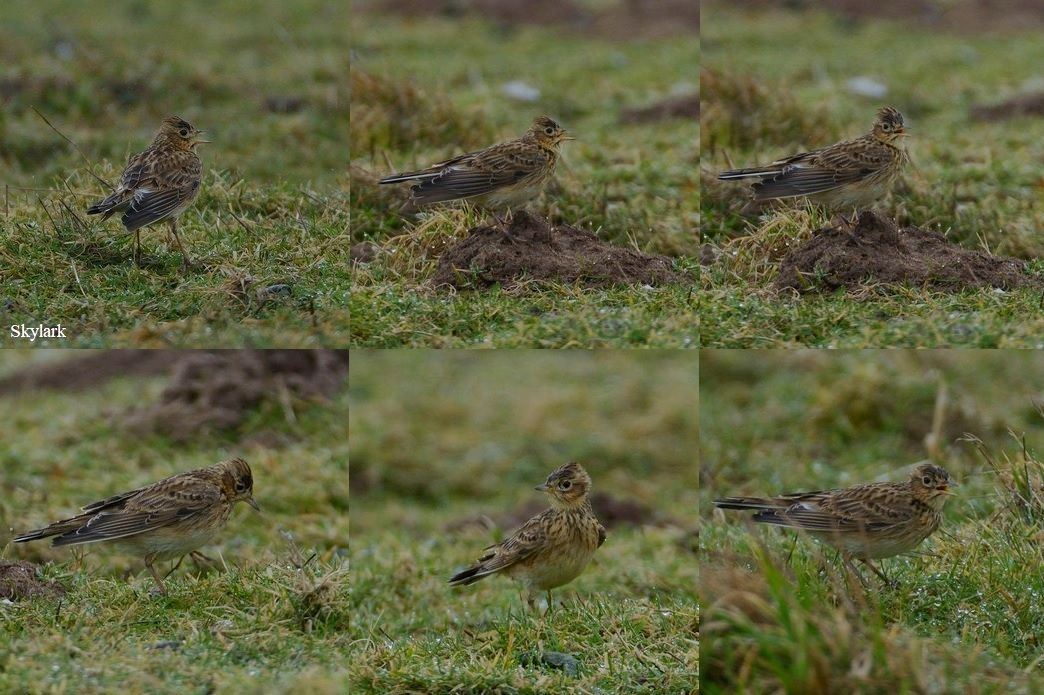
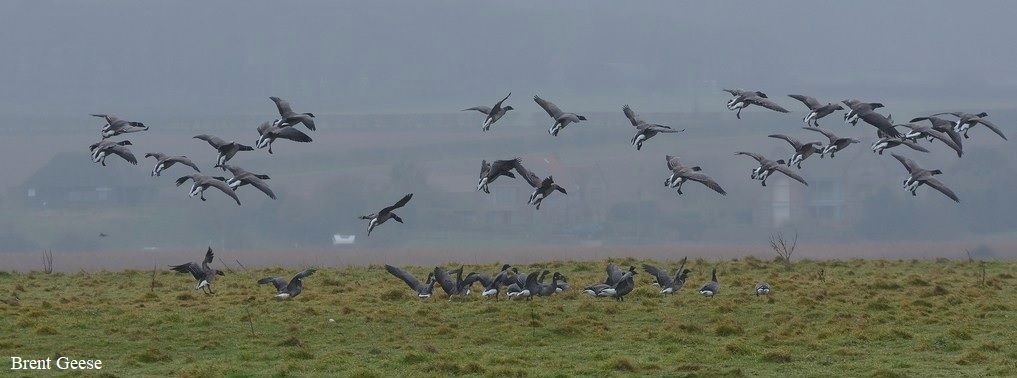
A Greenshank was once again at Morston Quay, as were Grey Plover, Curlew, Oystercatcher and 6 Redshank.
Just after Stiffkey a white tail flash revealed a Muntjac. However, when we went back it was nowhere to be seen, but a Brown Hare was sitting in a field. A few photos of the hare followed and then the Muntjac reappeared, bounding towards the adjacent hedge.

Wells’ East Pools only offered another Brown Hare and two Marsh Harriers, one with green plastic on at least one of its wings and only a good number of Wigeon were of note along Lady Ann’s Drive at Holkham.
We stopped for lunch at Brancaster Staithe, where we saw our first Ringed Plover of the year, along with 17 Dunlin, 6 Bar-tailed Godwit, 2 Black-tailed Godwit, several Turnstone, at least 20 Oystercatcher, 3 Curlew and 2 Grey Plover.

A drive around Choosley found a Chinese Water Deer, Muntjac, Common Buzzard and 4 Brown Hares and at the pull-in overlooking Burnham Overy Marshes found very little, although there was more action on the field on the opposite side of the road, producing 5 Brown Hares, 2 Muntjac and a Red Kite.
A stop at ‘the gate’ at Holkham found 2 Great White Egrets, Common Buzzard and 2 Marsh Harrier before heading back closer to home.
Taiga Bean Geese had been seen at Ludham, from St. Benet’s Abbey, but none were here today, just Canada and Grey-lag Geese. A single Crane flew over the distant reeds and a Little Egret was also seen. On the drive back along the track approximately 20 Redwings were seen.
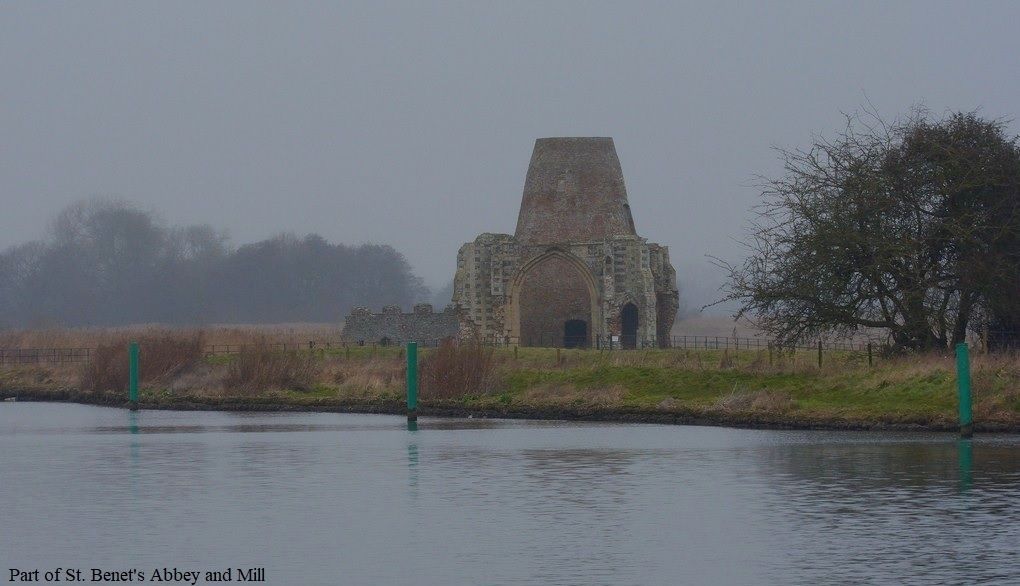
A Wild Goose Chase, but Rabbits are a winning formula with Song Thrushes!
A sad note to start the day out (2nd) with Jason Nichols with two dead road casualty Chinese Water Deer lying side by side just north of the Stalham by-pass bridge at Potter Heigham. When will road builders and indeed the government, take into account our wildlife?!
Heading to Weybourne a Common Buzzard perched in a tree is just ‘part of the furniture’ nowadays in Norfolk, but I can still remember when you had to travel to the likes of Wales to see such things.
At Weybourne there had been both a Taiga and 3 Tundra Bean Geese reported, but with nowhere to park, without blocking the farming communities access to ‘their’ fields
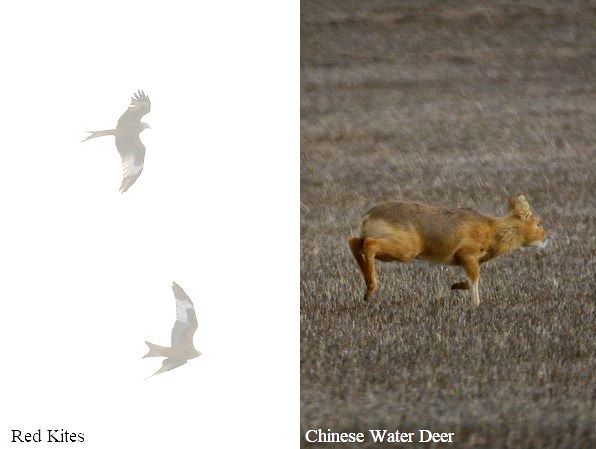
we decided to continue up the coast to try and find other wildlife.
We decided to head directly to Brancaster, to try and find the Richardson’s Cackling Goose, seen recently but not today thus far or reported the previous day. Still you never know and worth a shot!
However, our way was thwarted at Holkham with diversion signs; again! The alternative route, however took us around the back of Burnham Overy where we saw 4 Red Kites.
Arriving at Brancaster and passing the reported designated road, we instead turned up Chalk Pit Lane at Choosley, where we encountered a total of 4 Chinese Water Deer and at the end of the road, before turning left we saw 6 Roe Deer on a field in the distance.
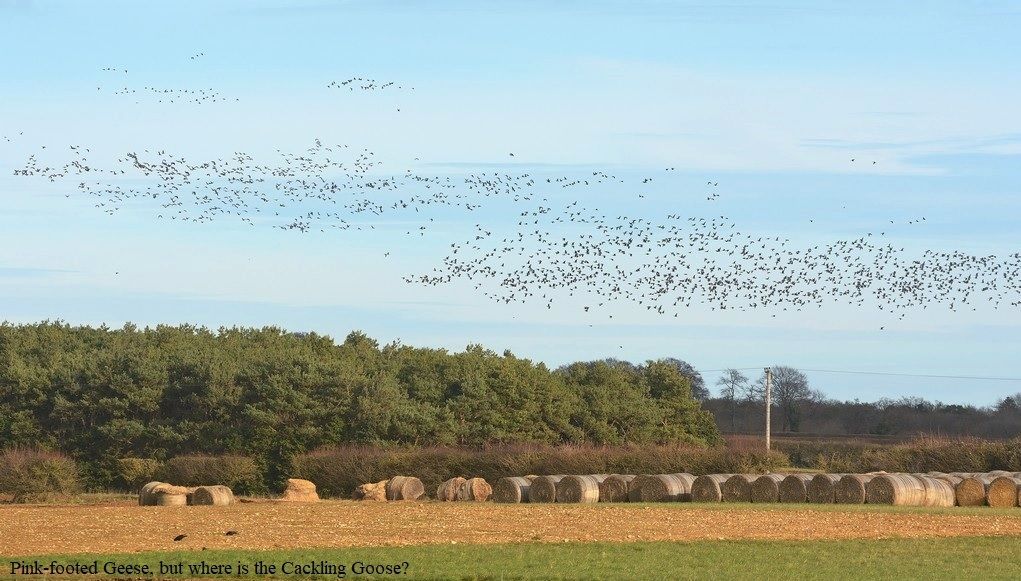
We found at least 1000 Pink-footed Geese being disturbed by agricultural machinery, but despite looking through the skeins and taking a series of photos no Cackling Goose was found. The geese silhouetted or landing out of sight, made potential identification of the Canada, if it was still present (why wouldn’t it be?) very difficult if not impossible. A hovering Kestrel was photographed plus some scenic shots of the Pink-foot skeins.
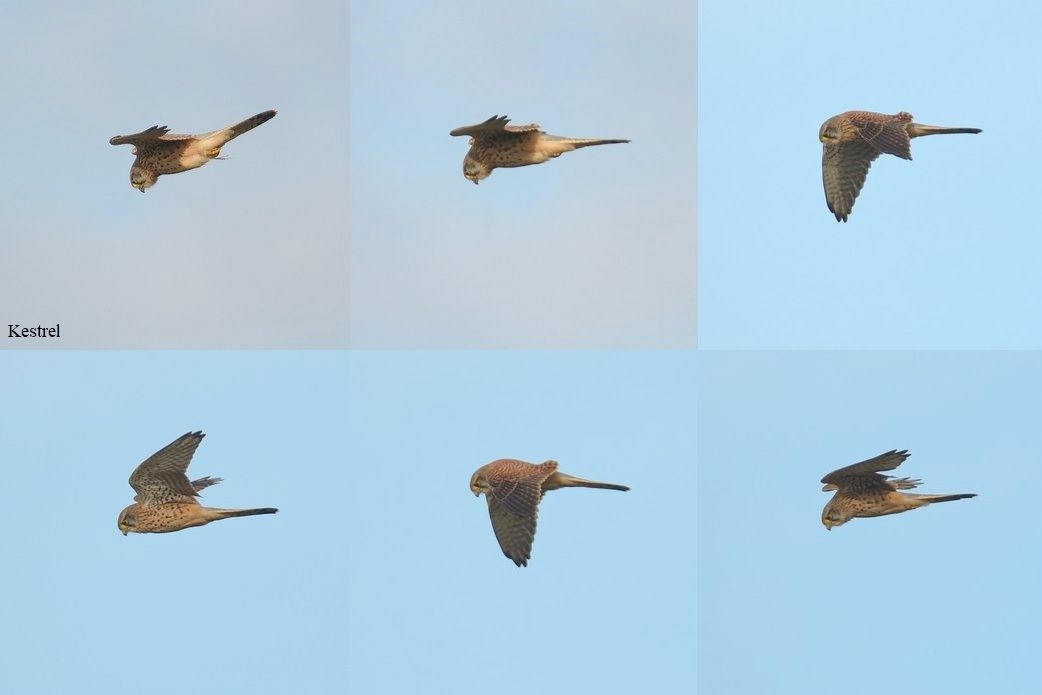
A spot of lunch at Brancaster Staithe found a Grey Plover, Black-tailed Godwits, several Turnstones in attendance to the Mussel-dropping Herring Gull, 2 Dunlin and Teal and Wigeon, with a few Brent Geese also present.
Heading back along the coast, as Jase had to be potentially back in case called into work, due to a walk-out employee; What is it the Co-op say; ‘It’s just what we do’, we called in at what we designated as ‘Thrush Corner’, opposite Morston church, in fact the horse paddock. However, in recent times, Thrushes had deserted Thrush Corner (like other places we had named!) but today it once again lived up to its name!
At least 9 Redwings, 4 Song Thrush and several Blackbirds were present alongside my favourite mammal; two Rabbits! As the Rabbits chased around, avoiding the presence of a Common Buzzard there was also other birds present, which included Goldfinch, Greenfinch, Linnet, Robin, Stonechat and Pied Wagtail. Just a nice spot to employ that maybe forgotten pursuit; Birdwatching!
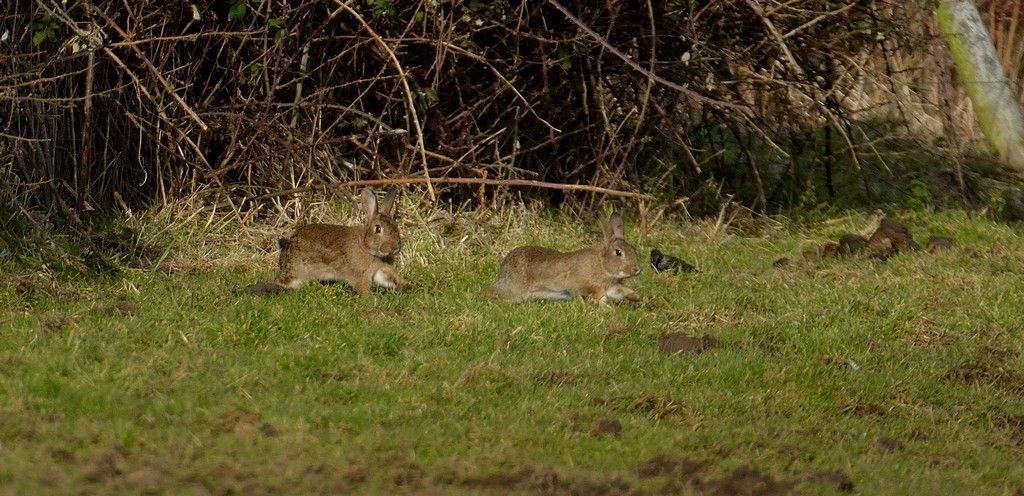

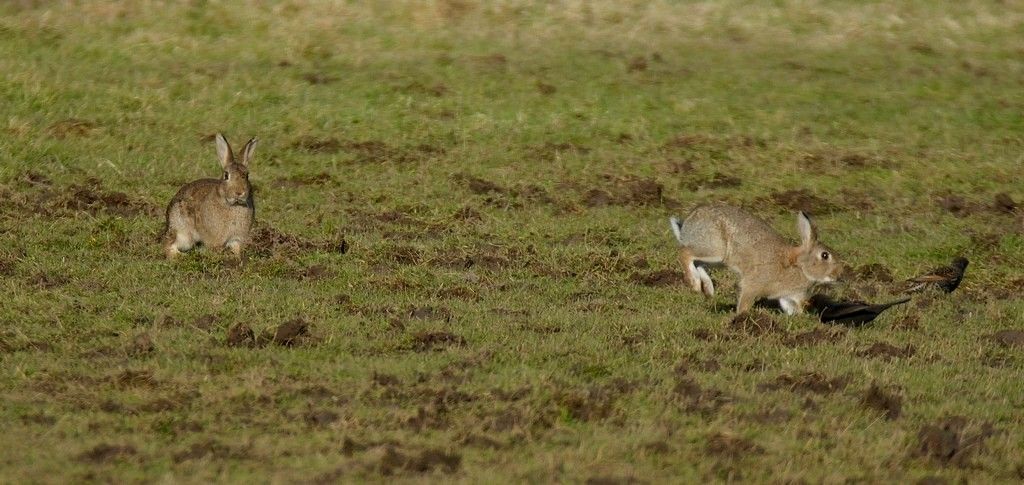
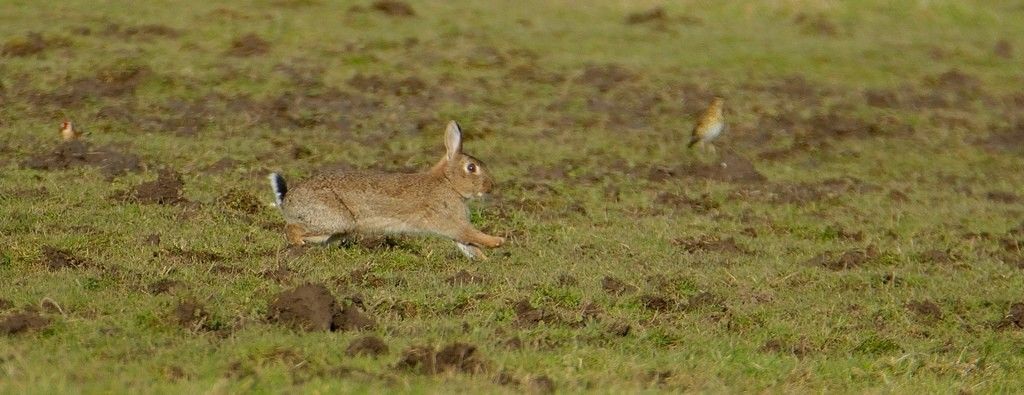

A stop at Cley Coastguards found Brent Geese on the Eye Field but apart from a few Gulls nothing on or going past over the sea.
A last attempt with the parking and viewing of the Geese at Weybourne found a small space to park in, but nevertheless welcome, as someone there told Jase he had 2 Taiga Bean Geese to the west of the road. He said there were only 2 Geese in the field, but I found another 3 Geese to the right of the two of interest, but the head shape and bill colour and coverage seen by Jase and I, through his scope identified the 2 geese together as Taiga Bean Geese. The 3 to the right; well who knows; possibly the 3 Tundra Beans reported but we couldn’t be sure.
Also in the Pink-feet’s midst was a Grey-lag Goose; one of two according to someone we spoke to earlier, who suggested they may be of a wilder origin, compared to our usual semi-domesticated/ introduced Grey-lags. Who knows and how do you prove that, even by association but that’s the beauty of wildlife, so much to discover, preferably without the aid of tagging, ringing etc, which affects a bird’s welfare.
January 2023
Egrets, Ducks, Waxwings, Sandpipers and Murdering humans!
A visit to Ormesby Little Broad began the day out (26th) with Jason. As soon as we approached the viewing platform, a Great White Egret could be seen at the edge of the reeds.
Phil Heath was already there and said he could see a Scaup and at least two Mandarins, both drakes towards what used to be the Eel’s Foot Inn. Although the Scaup was identifiable amongst the Tufted Ducks the Mandarins had swam out of site, so we decided to go to the other side of the Broad to see if we could re-find them.
From the Inn we saw two Great White Egrets in flight. But there was no sign of the Mandarins, so we headed to Rollesby.

Scanning Rollesby Broad Jason found a Ring-necked Duck amongst the Tufted and Pochard. When I looked I thought I saw the immature drake, seen on a couple of occasions on Filby Broad, but when I saw Phil again at the other viewing point, he had found an adult drake Ring-necked Duck, which I looked at through his scope.
I managed to get some distant photos of the drake ring-necked, which was now just drifting with its head tucked in on its back, but further scrutiny of several ‘sweep’ photographs I had taken earlier failed to reveal the immature drake ring-necked. However, what the photographs did reveal was a lone drake Wigeon and a possible hybrid Ferruginous Duck. Also seen here were several Goldeneye.
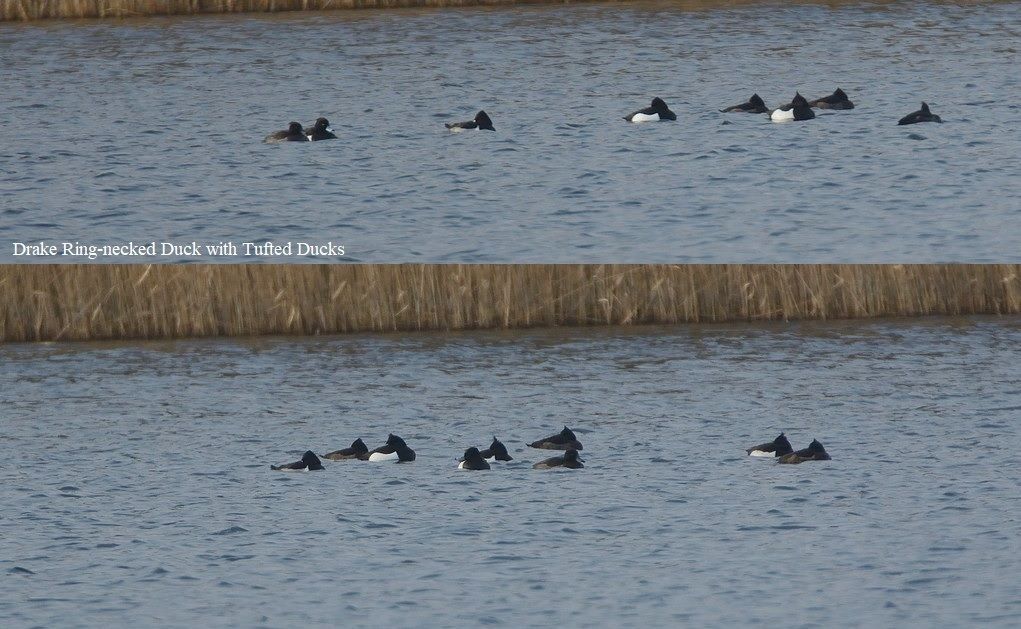
Jason then suggested we headed south for a change, so without a passport we headed into Suffolk!
Waxwings had been present at Reydon for several days now, along The Drive so we headed there first. It wasn’t long before we spotted one of the four present and eventually found all four. The Waxwings were mainly fly-catching, only occasionally going for the berries of what I presume was a Mountain Ash cultivar, where like I have seen them do on many occasions were being very choosey with what berries they actually swallowed, dropping those that were not fit for purpose.
This is very much a case of Optimal Foraging Theory, where a food is chosen on its calorific value and handling time: Energy divided by handling time (E/H value). Obviously a berry, which contains seeds, has wastage which is not going to be digested and also they take space up in the gut, so it makes sense to choose food, which is going to give optimum results in terms of energy, when available.
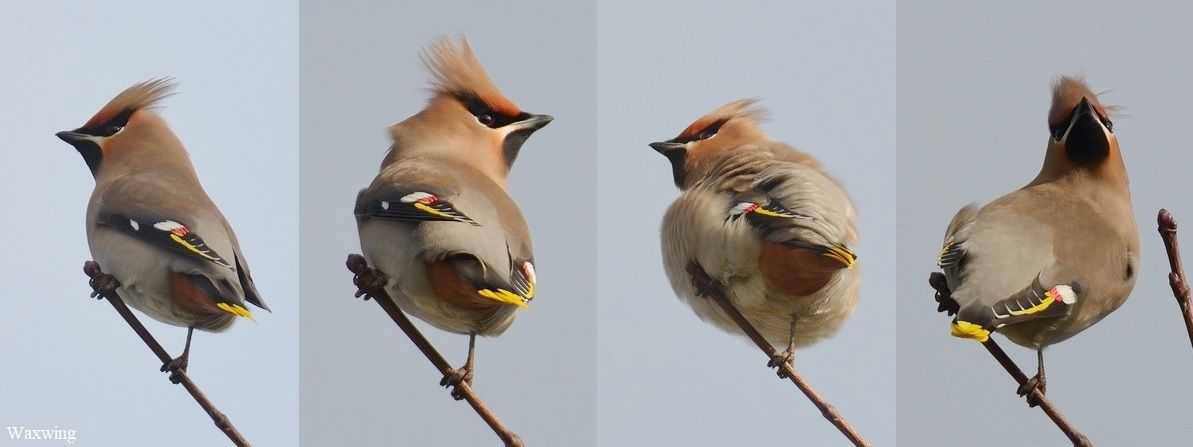
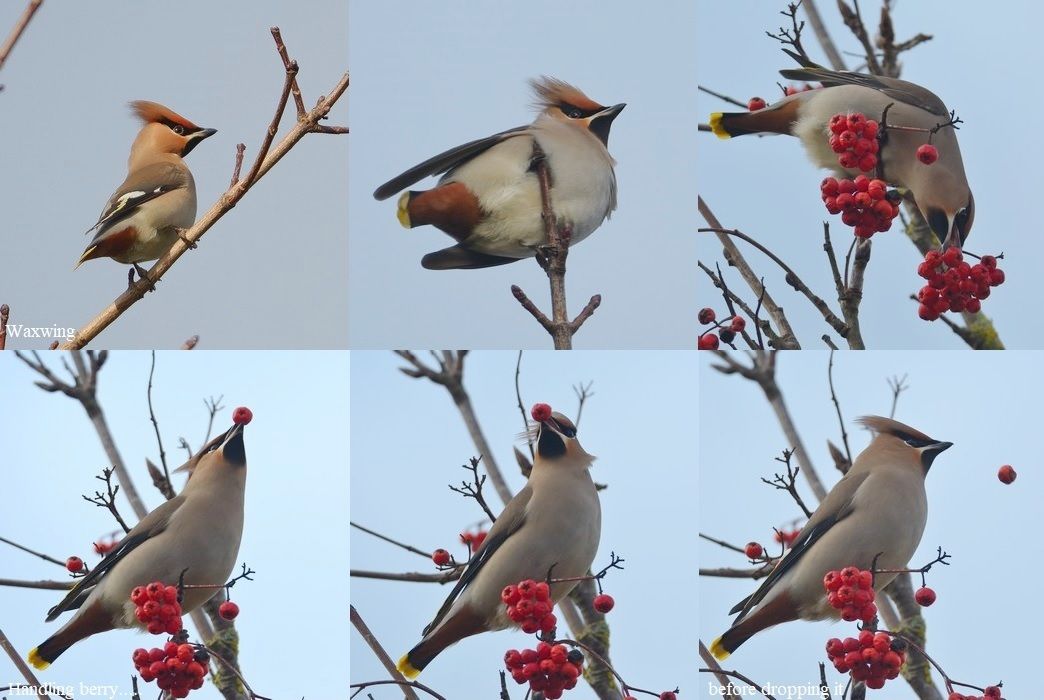
A spot of lunch at Southwold harbour failed to see anything of real note, but at least 12 Turnstone were present with an infinite variety of Herring Gull plumages!
Always suggesting the best scenic places to go Birdwatching, I suggested we go to Southwold Sewage Works!
However, this proved to be very worthwhile with a couple of Redwings feeding on Ivy berries before we reached the treatment beds. Along with quite a few Herring Gulls there must have been at least 20 Pied Wagtails. Jase saw a Grey Wagtail but a fence post and a tree trunk thwarted my attempts to see it!
Nevertheless, I spotted a Chiffchaff in a bush close to the car (where we remained-mobile hide!) and in fact there were 3 in the same bush at one point possibly 4! Also here were 1-2 Goldcrests close in and although always tricky to photograph (always on the move) I managed some reasonable shots of these fantastic birds; smallest in Europe, if you didn’t know, although I am sure you did!
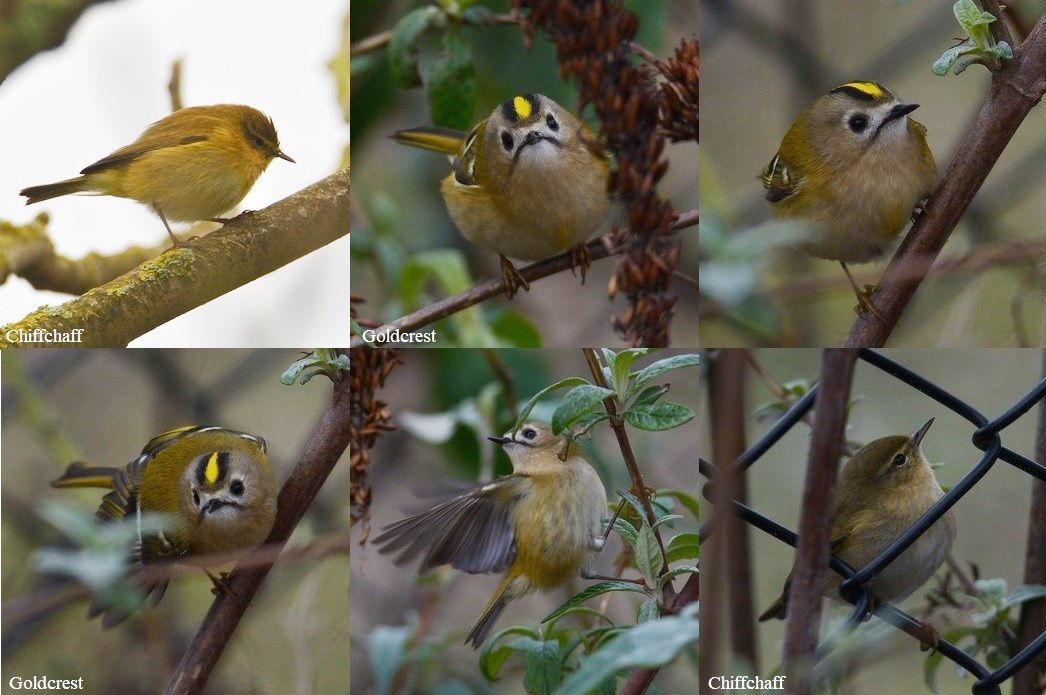
Heading back we stopped off in Lowestoft at Ness Point, but to quote Lord of the Rings ‘the way was shut’! However, it was road works not the dead guarding it! Still driving further up the road we walked into a very cold brisk northerly to get to the point; literally! We were not disappointed as there was one Purple Sandpiper feeding on the defence boulders, whilst four more were huddled up out of the wind. This allowed some good photographic opportunities, which were fulfilled.


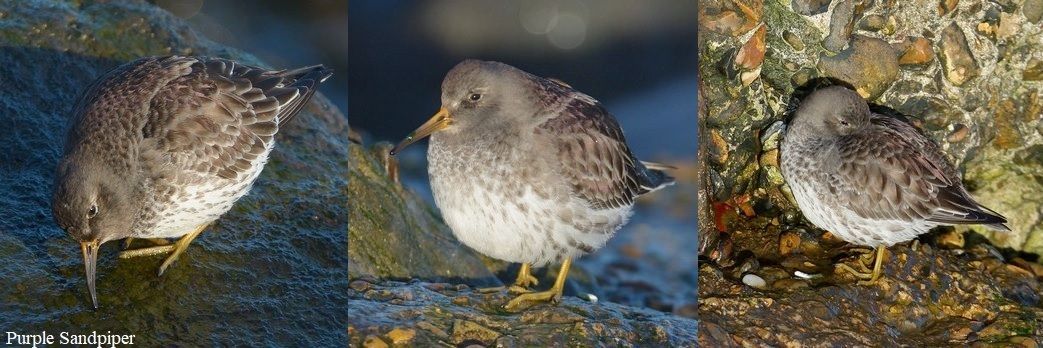
We decide to try and find a Short-eared Owl and whatever else might be at Halvergate Marshes, but it turned out to be a bittersweet visit.
A Grey Heron, Mute Swans and 3 Kestrels, along with 1-2 Marsh Harriers were seen and Jase for the second time today saw a colourful bird, which I didn’t; a Kingfisher along one of the dykes.
After a while we decided to look at a different part of the marshes, but it wasn’t long before a farmer on his quad bike pulled up nearby with his gun and a dog in a very small cage on the back of the bike. He was sat there for a while before two more cars pulled up, each with guns and more dogs and one of them set off across the marshes, no doubt on a killing spree, so there didn’t seem a lot of point in staying any longer so we headed for home.
In an age of mass extinction, caused by humans (Anthropocene) still these idiots are still out there killing off wildlife, just for the hell of it or for some idiotic reasoning by themselves. It’s about time a law was passed to stop these people killing just for the sake of it. Say no to killing for sport!
Dowitcher, Ducks and Egrets an international avian day out in Norfolk!
A frosty start (19th) to the day’s proceedings, with Jason Nichols but we made our way just down the road to Rollesby.
There was no way into the complex at the Waterside café, but a Little Egret flew up from the boat moorings and we could see some Smew through the reeds. Luckily a lady turned up and was good enough to allow us access to the hide, where we could see 3 Redhead Smew. These were joined by another a little later; 4 having been reported here for several days.
A Great White Egret flew across to the far reed bed, where it looked for food before eventually flying off over the woods. A Marsh Harrier was also seen here and after thanking the lady for allowing us access we saw a Red Kite on the way back to the car. I never dreamed I would ever see such a collection of birds when I was growing up here in the Broads!
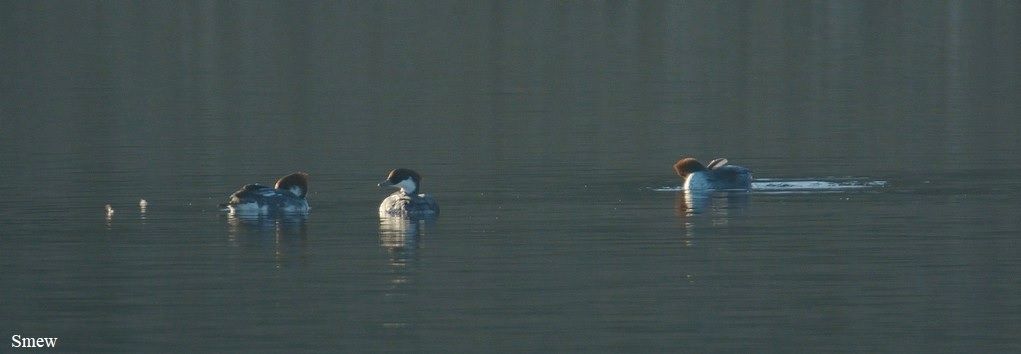

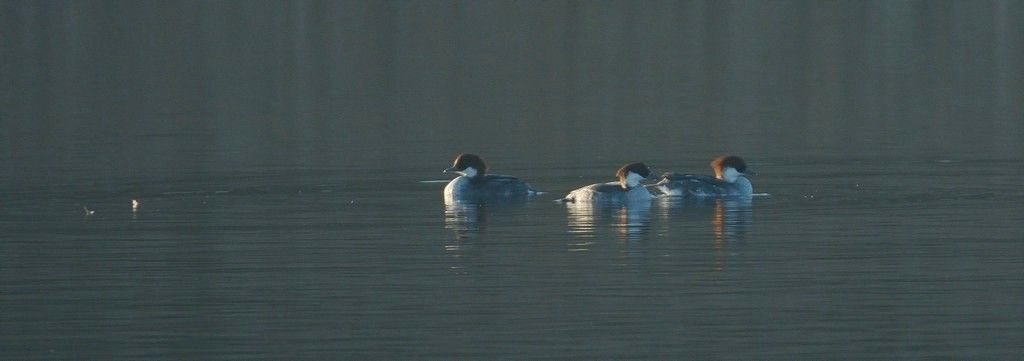


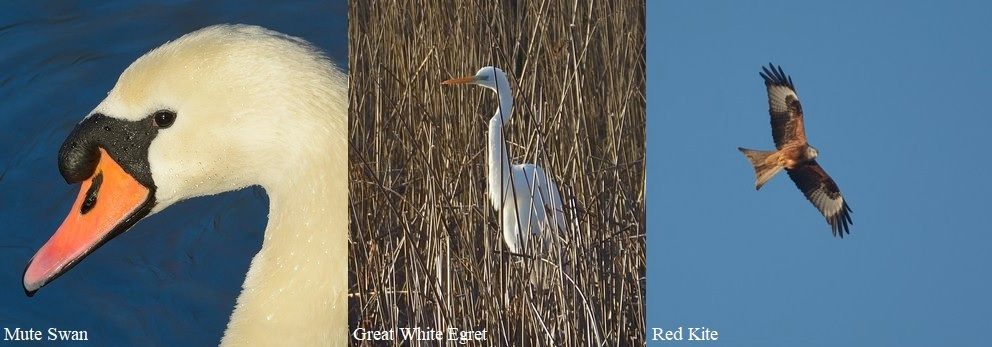
Next stop Filby, hoping to see some more ducks! As in recent visits, there were quite a few Goldeneye displaying and chasing each other; one of my favourite ducks. Also here were Teal, Shoveler, Mallard, Gadwall, Tufted Duck, Pochard, 2 Shelduck, Great Crested Grebe and Coots and it was in this raft of ducks were tried to find some of the ‘rarer’ ducks seen here in recent times.
Eventually we found a Ferruginous Duck, one of possibly two seen and both a drake and duck Scaup. Others there had seen a duck Ring-necked Duck but we had no luck in finding that or the recently reported Red Crested Pochard, so we set off back, seeing 2 Redwings feeing on Ivy berries on the other side of the road before crossing the road and returning to the car park.
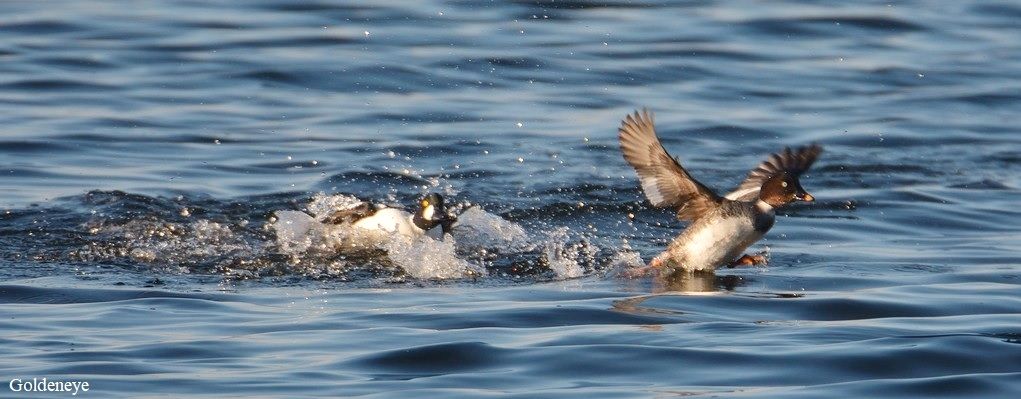

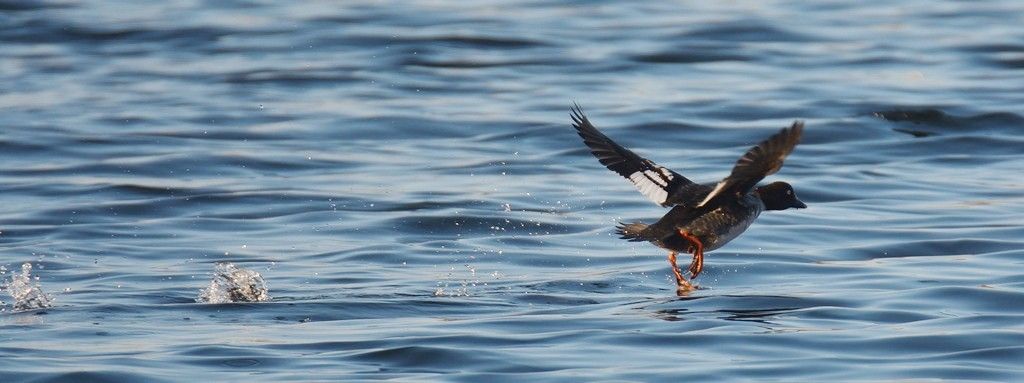
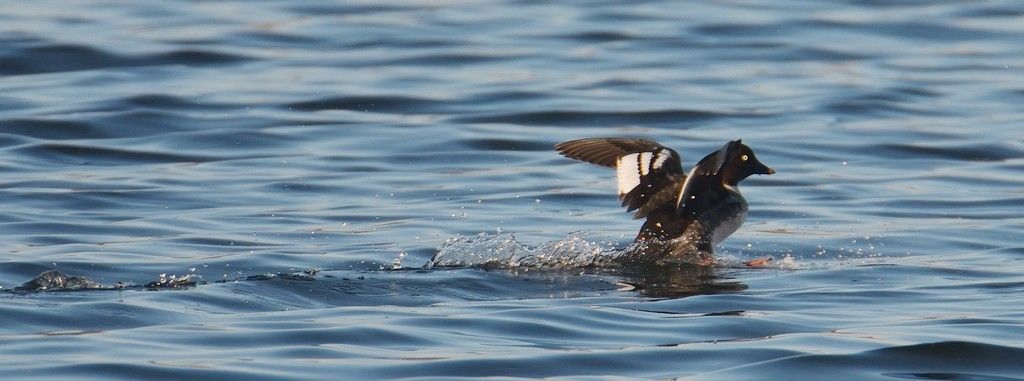
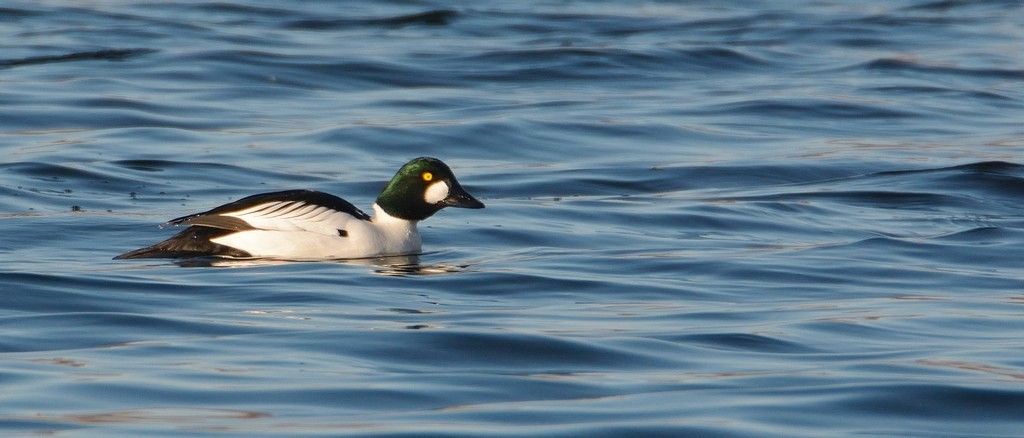

On to Sea Palling next, where there had been a Long-tailed Duck recently. After, paying for the car park we made our way up the ramp where we met a woman who told us where the duck was but also said it was being chased by a photographer! To be fair he wasn’t doing too much wrong, but he was not taking into account where the sun was, choosing to try and get as close as he could instead and naivety was also demonstrated by constantly looking at the back of his camera!
Anyway, we managed to get images of the duck, passing a group of ‘wild swimmers’ (rather them than me!) before going back to the car and setting off to our next destination.

We decided to head for Cley, where an Iceland Gull had been reported recently, but plans were changed, when we heard that the Long-billed Dowitcher was being seen from Lady Ann’s Drive at Holkham.
The Dowitcher had been reported associating with Black-tailed Godwits, to the west of the drive, but although we found the Godwits, there was no sign of the Dowitcher. Then we heard that it had been seen and then flushed by an estate worker to the east of the drive, so we concentrated our search there.
After careful scrutiny we could not find the American visitor but several Common Snipe, at least 5 Black-tailed Godwits and at least a thousand Wigeon were seen. Then a passing birdwatcher asked if we were looking for the Dowitcher and after confirmation, said it had been seen back towards the entrance to the drive, near the pill box, so we set off to have a look.
Arriving, where already several people had congregated, the location of the wader was immediately pointed out by one individual there and sure enough there it was! Despite some complaints by others about the Lapwing standing in front of it, the Dowitcher was close enough to get not only good views but some very acceptable photographic opportunities and after satisfying our photographic requirements (including a video taken by Jase-see below) we left to make our way back towards home.
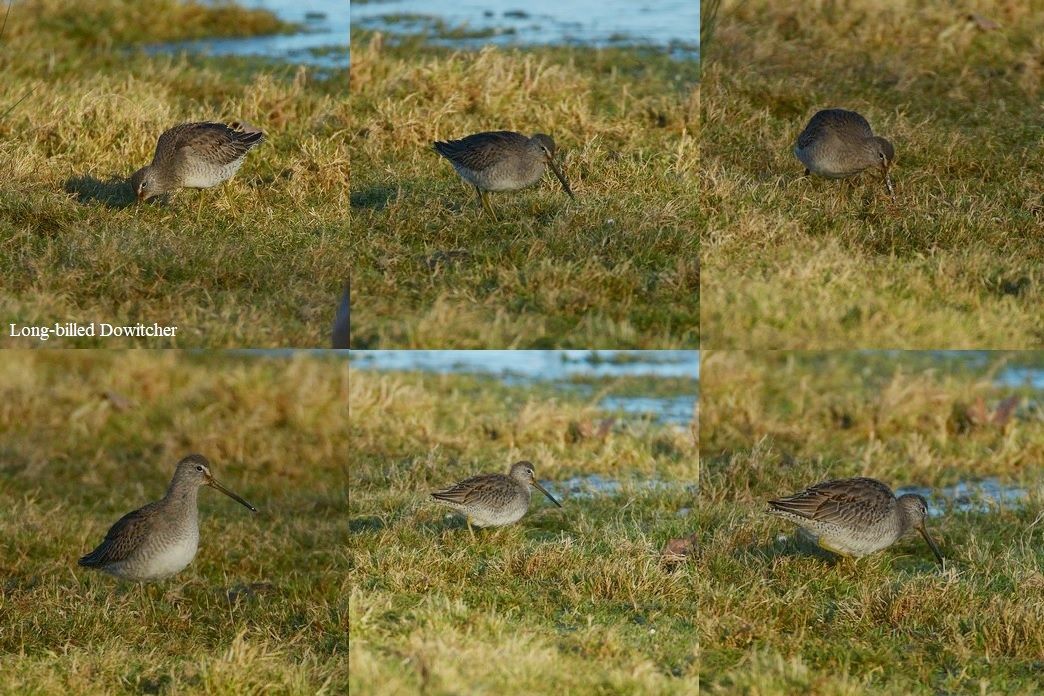
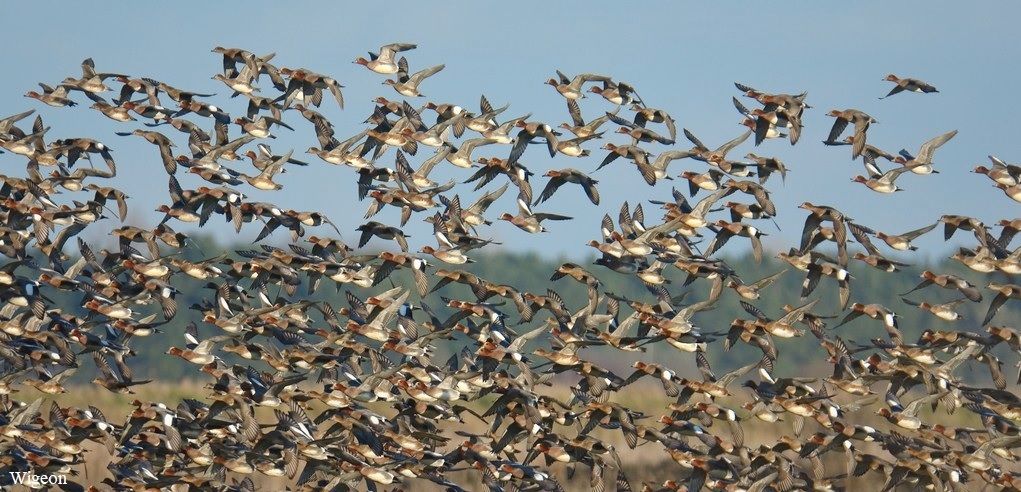
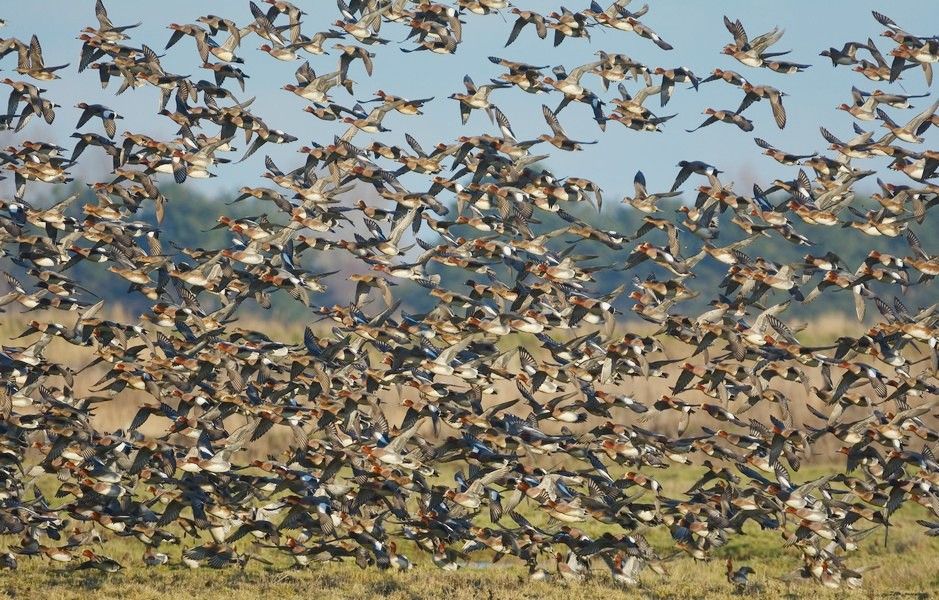
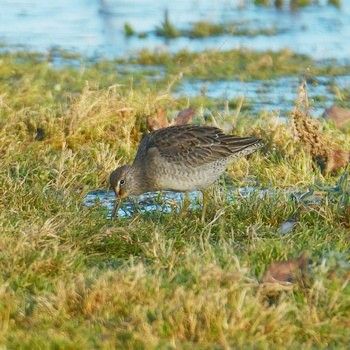

A stop off at Cley Coastguards was not that productive but there was quite a presence of Gulls, mainly Black-headed, congregating close inshore. What they were doing there in numbers remains a mystery, but I can only conclude it must have been for a food source. Still a great day with a mixture of birds from various parts of the globe!
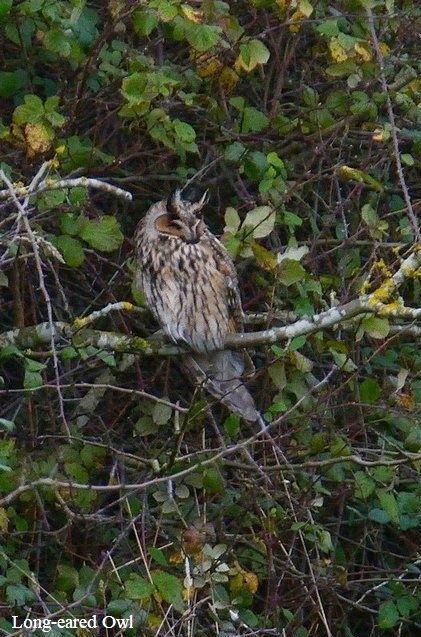
Great views of a Long-eared Owl, whilst 'wildlife photographers' wanted to cut the branches around its perch!
A Peregrine putting up flocks of birds at Salthouse, opposite the Dun Cow PH was a good start to the day (12th) out with Jason Nichols.
Receiving news that a Long-eared Owl was once again at Glanford we headed there next; fortunately in the immediate area!
We arrived at Cley Spy and went through the shop to their ‘garden’ at the back of the centre and found the roosting Long-eared Owl in the far corner of the hedge, out in the open. The ‘ear-tufts’ were erect (the two ears are asymmetrical in-
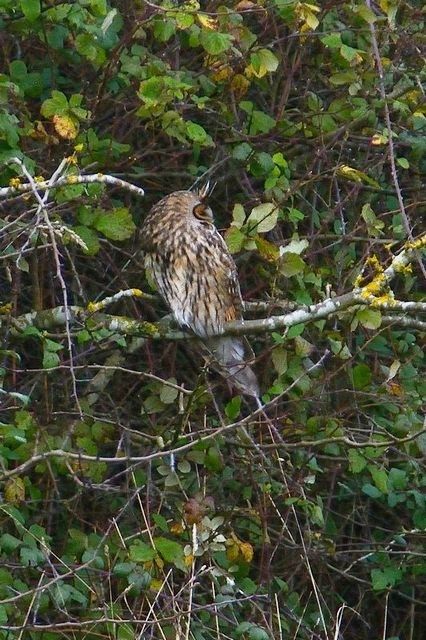
their positioning in most owl species, the left ear positioned lower than the right); these collection of feathers are said to make the owl appear bigger!
Whilst there, Jason overheard a man (possibly a member of staff) talking to a woman and said that some so-called wildlife photographers asked if they could go to the hedge and cut some of the branches back! What?! This further underlines my belief that some people ‘interested’ in wildlife are very much part of the problem, when it comes to conserving and protecting flora and fauna.
After contributing some money to the Oriental Bird Club and noticing a ‘floppy cloth hat’ cost around £70 (who the hell is stupid enough to part with that amount of cash for a hat?!) we departed, but pleased to see this fantastic owl.
At Morston Quay, the tide was very high so apart from a flock of approximately 200 Brent Geese on the field, there wasn’t too much to see. However, a Greenshank put in an appearance on the muddy pool beside the car park.
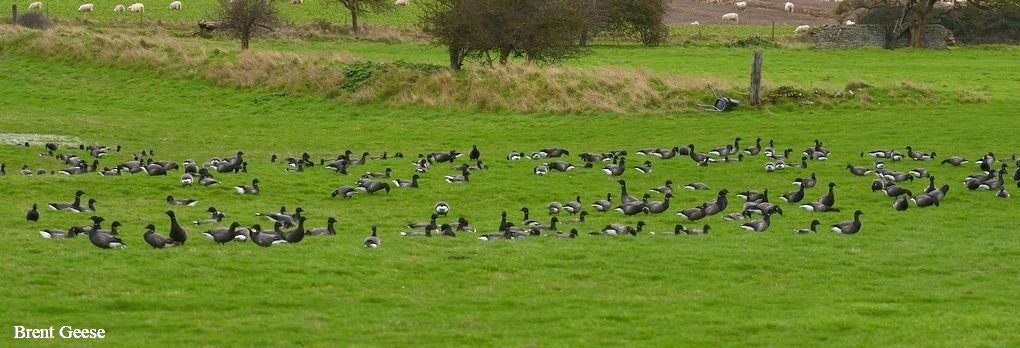
After seeing 2 Red Kites at Wells Pools we headed to Brancaster Staithe for a look and to have some lunch. Along with 20+ Black-tailed Godwits, 2 Grey Plover, 10+ Turnstone, Oystercatchers, Wigeon and Little Egret the really interesting thing here (for me at least) was the Herring Gulls!
As usual, there was one gull picking up Mussels and flying up with them and dropping them on the ground, in order to open them. However, this was not just the behaviour of one individual gull, as another Herring Gull picked up a Mussel (dropped by the previous gull) and exhibited the same behavioural pattern. Quite clearly (if there was any doubt) this is a learnt behaviour, but like Song Thrushes and their anvils (also a learnt behaviour), how this course of action to obtain otherwise inaccessible food originated is another thing entirely!



Calling in at the now empty pull-in at the ‘gate’ overlooking Holkham Freshmarsh, we looked for the White-tailed Sea Eagle, even though there had been no reports of it at that point; but always worth a look instead of following other people’s sightings! Eventually after seeing something perched in a tree, Jase reached for his scope and confirmed that the object was in fact the Eagle, which at that point left the tree and went for a fly-around, mainly over the Conifers.
Whilst obtaining some distant images of the Eagle a Red Kite flew right in front of us and my camera was quickly pointed towards it. Also here was a Common Buzzard and Pink-footed Geese.
During the day we saw at least 11 Red Kites and at least 6 Kestrels, so very much the ‘day of the raptor’ but so much else besides.


Video of White-tailed Sea Eagle, by Jason Nichols (left).
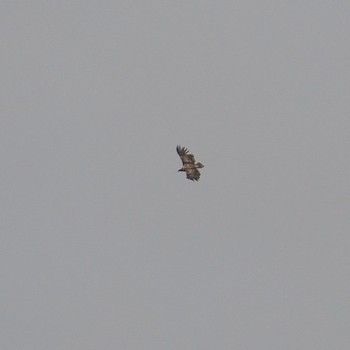
Saving Toads on our roads at West Runton!
I was sent an email from the Eastern Daily Press, highlighting the work of volunteers at West Runton, Norfolk, led my their co-ordinator Carole Davidson, helping Toads returning to their spawning ponds across the roads.
Please click on the link and offer help if you can.
Amphibians world-wide are having a really tough time, with some I believe removed from the wild to save them from extinction, so what these people are doing is more than commendable and volunteers on your nightly Toad patrols; I salute you!
Ducks at Filby Broad......
With both Ring-necked and Ferruginous Ducks being seen on the Trinity Broads, I decided to spend an hour or so at Filby Broad (8th) just down the road from me to have a look at what was there.
Despite my eyes watering constantly, I had a look around with the scope, but could not make out any of the ‘rarer’ Ducks. However, there was some nice Goldeneye around with a raft of 9 (both ducks and drakes) with the drakes head-throwing to attract a mate, but there were other Goldeneye on the broad too. Also here were Pochard (with more flying in) and Tufted Duck, along with a few Mallard, Shoveler and Coots.
Continuing to look for the more unusual duck visitors, I came across what appeared to be a Ferruginous Duck asleep, but due to the eye-watering and not great light (or do I need a new scope?!) I couldn’t be absolutely sure. Eventually though I picked up a duck Ring-necked Duck, straight out from the staging but it was in shaded water and an attempt to photograph it was futile. Nevertheless, I could make out all the fieldmarks and nice to see, presumably the same bird that was here in December 2022.
A Water Rail let out its pig-like squeals every now and then and a Marsh Harrier was over the reeds.
Raft of Goldeneye and Pochard in flight below.

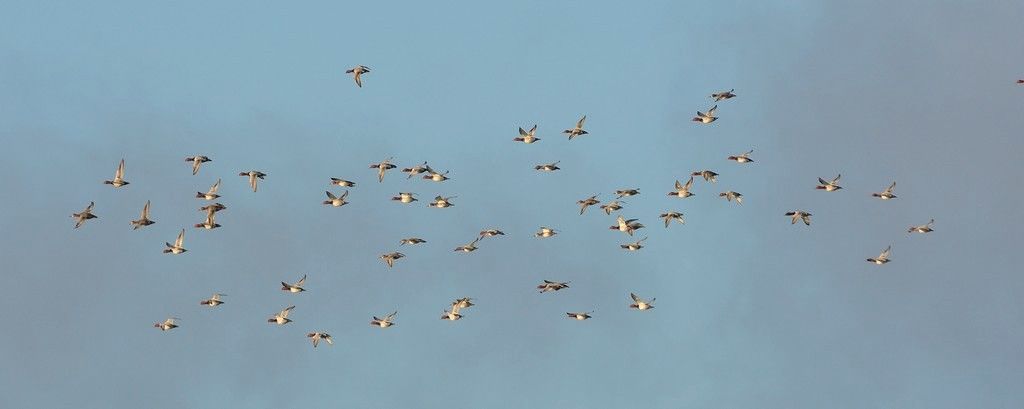
New Year's Day-Wildlife count......
Despite the self-inflicted indulgence effects from the previous evening, Jason collected me (literally) at 06.00 (1st) and we set off across Norfolk for Titchwell; our starting point for our New Year’s Day wildlife count.
It wasn’t until somewhere near Syderstone we saw our first animal; a Roe Deer standing in a wood not far from the road. This was quickly followed by a Fallow Deer crossing the road in front of us; the first Fallow Deer I have seen in Norfolk outside Holkham Park!
Despite a possible Robin taking off from a church wall, it wasn’t until we got just before the drive-in to Titchwell RSPB that we saw our first bird of the day, when suddenly a Little Owl came off from the road and flew in front of the car and thankfully passed it!
Whilst in Titchwell car park, waiting for a reasonable amount of light, we recorded the following species: Blackbird, Pink-footed Goose, Black-headed Gull, Grey-lag Goose, Robin (definitely this time!), Wood Pigeon, a mammal tick; a Grey Squirrel, Magpie, Moorhen and Greenfinch.
Walking along the path (at this time to an unmanned ‘Gestapo-like presence’ aka RSPB staff!) we recorded Blue Tit, Goldfinch, Chaffinch and Lapwing.
Walking along the public right of way path we looked for Water Rail in the adjacent dykes but saw none, but then saw Lapwing, Grey Heron, Curlew, Marsh Harrier (several), and Cormorant and heard Bearded Reedlings.
Both Redshank and Golden Plover followed and from the first hide we saw; Shoveler, Mallard, Gadwall, Teal, Pintail, Shelduck, Goldeneye, Herring Gull, Dunlin and heard a Cetti’s Warbler calling.
Moving further along the path to the beach we saw Meadow Pipit, a flock of Black-tailed Godwits, Ruff and at the end of the track a Red Kite, Little Egret and Brent Geese.
At the beach we encountered Oystercatcher, Grey Plover, Bar-tailed Godwit, Turnstone, Carrion Crow, and Sanderling and on the sea a Great Crested Grebe and a Red-breasted Merganser.
With very little on the sea we began the walk back and Jase spotted a Common Buzzard on the scrape with prey. A Kestrel (again seen by Jase) became visible to me, once past some bushes and again looking for Water Rail a sudden movement by something much larger was a very confiding Muntjac, just a few feet away, feeding on emerging Alexander’s.
Through the wooded part of the path we encountered Great Tit, Wren and then Jase spotted a Brambling amongst the Chaffinches, feeding on the ground. Standing around at Titchwell inevitably draws a crowd and after explaining we had a Brambling we headed back to the car with a respectable total of 51 species of birds seen.

En-route to Thornham we added Jackdaw to the list and in the vicinity we saw 4 Red Kites.
At Thornham we found at least one Great Black-backed Gull, Linnet and Skylark, whilst distantly on the beach were 3 more Red Kites! Suddenly coming out into one of the channels were 2 Spoonbills, which although recently reported from here, when we first arrived they were nowhere to be seen.
On to Choosley, where we found where the Pink-feet we had heard going over, whilst in Titchwell car park had gone to, with at the very least a 1000 geese present. A Pied Wagtail, Starlings, Stock Dove were added and there was 2 Collared Doves on the road as we approached the coast road again. However, not a Red-legged Partridge or Pheasant in sight; shooting the cause for their absence?
Egyptian Geese were finally added at Burnham Overy, but the way was blocked at ‘the gate’ overlooking Holkham Freshmarsh to try and find the reported White-tailed Sea Eagle, so we went to Holkham Park, with the intention of returning to ‘the gate’ later, when there would hopefully a place to park. Not surprisingly Lady Ann’s Drive at Holkham, said ‘car park full’ before we went to the car park at the park, which fortunately was not full; yet!

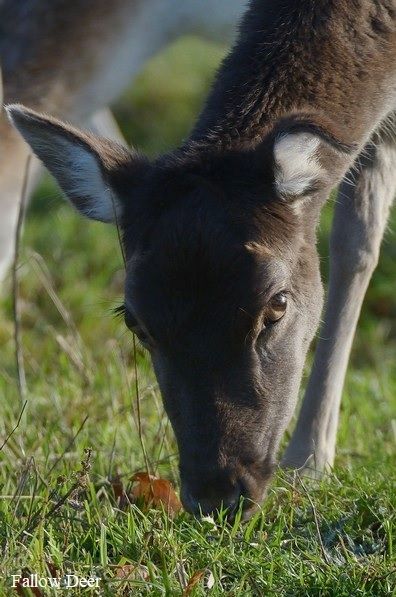
Walking towards the lake in the park we heard Nuthatches calling and a Great Spotted Woodpecker. On approaching the lake a Coal Tit was seen and on the lake itself we added Coot, Little Grebe, Tufted Duck and Pochard.
Jase spotted a flock of Thrushes in the distance as they flew down to the ground from the trees. On closer inspection we found the vast majority to be Redwings (our 70th bird species) but also at least one Fieldfare. Whilst looking at the Thrushes a Jay flew across and then I spotted a Green Woodpecker, feeding on the ground, which flew up into a tree followed by another one. Fallow Deer were also here in numbers and on the way back to the car park a Long-tailed Tit was
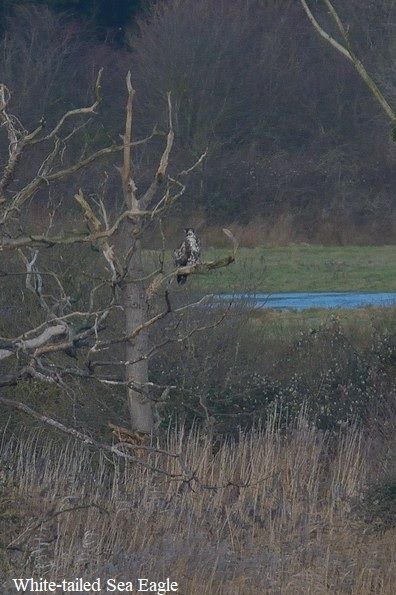
heard and finally a Dunnock was seen in one of the gardens. Arriving back at the car park we found that it too was now pretty full to capacity, probably from people unable to park down Lady Ann’s Drive, but what was on our minds was the availability of somewhere to park at ‘the gate’!
Luckily, there was just enough space for Jase to park, but even then we were asked by some birder to pull forward a bit more as there was someone else arriving; what, a bloody private party by invitation only? Anyway, we saw the White-tailed Sea Eagle, pretty much where we had seen it before perched in a ‘dead’ tree. From the photographs later I noticed a cock Pheasant walking alongside the wood behind it; ironically a bird we were going to struggle with! Also here was a very obvious Great White Egret and a flock of White-fronted Geese and passing the barn on the way back, we added Feral Pigeon to the list (probably a debateable ‘tick’!).
With House Sparrows heard at Wells and a Greenshank at Morston Quay we had now amassed 80 species of birds.
Rooks were finally seen at Cley and a Mute Swan was in one of the dykes, with two more on Salthouse duck pond.
We decided to head for Ludham Marshes and finally saw a Lesser Black-backed gull on a field en-route.
At Ludham we found a Stonechat and then found both Bewick’s and Whooper Swans.

Then a Barn Owl came really close to the car, whilst hunting along the dyke edge. Although I am not one to use ‘rapid machinegun fire’, preferring to use single shots (to minimise disturbance) with my camera the owl certainly heard the single shots of the shutter going off and banked away and continued hunting across the road.
At the end of the track, the car park was all but full, but we managed to park and had a cup of coffee and something to eat, as there had not been too much time for that because of the busy schedule, but as we did 4 Cranes flew past, our 89th bird of the day.
We saw two more Barn Owls but only at distance, as the birding fraternity and would be ‘wildlife photographers’ thought that if they stood around, occasionally walking about and talking loudly a Barn Owl (or anything else for that matter!) was going to come close. Such fieldcraft, do they think that they are at a zoo?! One woman actually proceeded to try and get closer by walking along the bank where they had been hunting; what was she thinking?! I can’t help but think that these people are part of the problem where it comes to conserving wildlife and allowing animals to go about their daily business unhindered!
Anyway, we left to pursue two birds, which by their absence during the day became a highlight! So we headed to Winterton and just beside the wood on the estate a Pheasant came into view, but could we find a Red-legged Partridge; no!
So the day ended up with a tally of 90 species of birds and 4 Mammals. Not bad and perhaps one day we will hit the 100 mark, but with animals in general getting scarcer, including the so-called ‘common’ ones that is going to be quite a task! Thanks to Jason for doing the driving and getting us into tight parking spaces and ordinarily, people I wouldn’t want to be with!
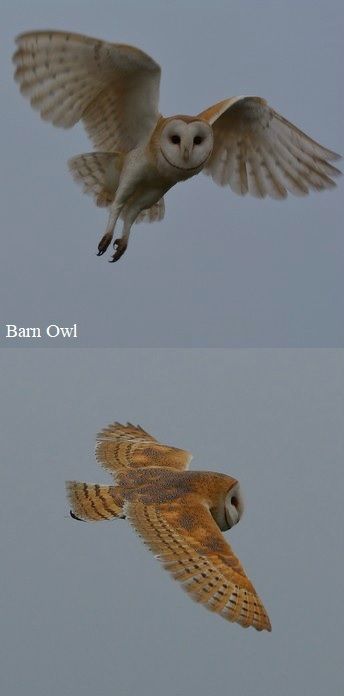
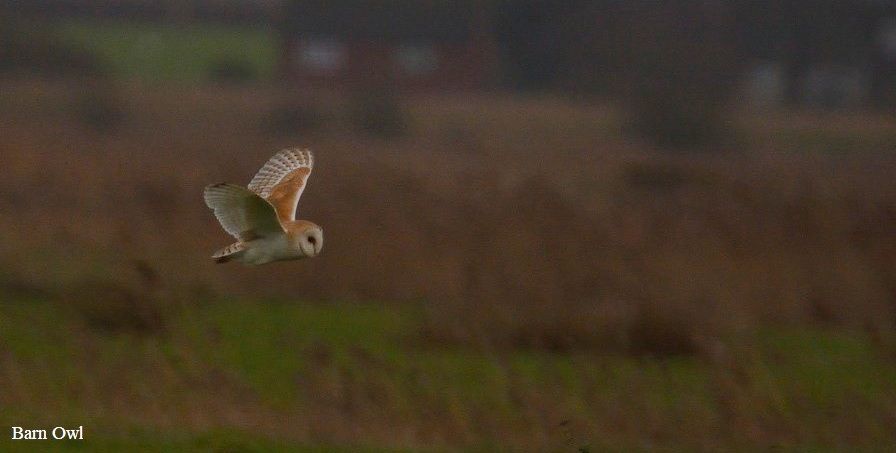
Wildlife Photo Diary 2022
December 2022
Racing Extinction: New channel on TV, EarthxTV......
Relatively recently I have come across a new TV channel by retuning the TV. This is EarthxTV Channel 79 on Freeview.
There are many good programmes on here and I would especially recommend Defenders of the Wild, Ocean Vet and Eco Heroines. Also if you like snakes and Lizards there is Aussie Snake Wranglers!
However, last night I watched a programme called Racing Extinction and re-watched it today. This is an absolutely excellent programme highlighting how this Earth is changing and the threats to many, many species. I found it totally inspirational and although some of it was not an easy watch, it is a totally must watch programme for anyone who cares about our world and would be beneficial to those not so keen to actually see what is really going on in our closed system; what goes around comes around!
I have learnt so much from some of the material, particularly about Pangolins, but many other species and ecosystems too. This channel is 24/7 and some of the programmes are repeated, so do try and give it a look and view the listings so you can watch an amazing programme, that is Racing Extinction.
Going local finds a wealth of nature and an Xmas Redwing and Fieldfare special!
A local nature-watch with Jason (15th) began at Ormesby Little Broad, where 3 drake Mandarins had been seen recently.
There was very little activity in the wood on the walk down from the car park, just a couple of Blue Tits and 2-3 Robins coming out on the path.
At the viewpoint there was only one strip of water not iced up and a collection of waterfowl were present, but no Mandarins in their ranks. However, Tufted Ducks, 2 Pochard and several Shovelers were present along with Coots and a single Little Grebe, the latter is not a commonly seen bird on the Trinity Broads.
Over the far side at the edge of the reeds stood a Great White Egret and to the left of the viewpoint was a Grey Heron perched in a tree, whilst a Marsh Harrier flew over.
Across the road on Filby Broad, again the broad was very iced up, but with a strip of open water very distantly to the North, where again waterfowl were concentrated. A telescope was necessary for any chance of identifying the birds in this group and so the scrutiny began, where by standing still, the cold began to become very apparent!
There was predominantly Tufted Ducks and Coot in the raft, but also Gadwall, Mallard, Shoveler and 3 Great Crested Grebes. Some of the duck were resting with their heads resting on their backs and as usual these were the most interesting and difficult to identify, especially at range. Nevertheless, we managed to find a female/immature Scaup, 2 female/immature Goldeneye and a Ferruginous Duck. A Water Rail was heard and a Common Buzzard flew over and we were both pleased to get back in the car!

Our vigil of the Trinity Broads continued at Rollesby. Rollesby Broad was completely iced up, so we crossed the road to look at Ormesby Broad.
Again, any open water was a long way off, so Jason’s telescope came into its own again and Tufted Ducks and Coot were the most numerous. There was also good numbers of Teal all huddled up together, Mallard, Shoveler, Pochard and at least 10 Goldeneye of both sexes but predominately ducks/immature.
Jason then found a duck/immature Smew and I also eventually got to view it but only briefly, before it disappeared amongst the other concentrated duck raft. I then found a duck Ring-necked Duck, but like the Smew very quickly disappeared amongst the other ducks. A Grey Heron perched in a tree was displaced by a Common Buzzard and then it was back in the car again to warm-up.
A drive alongside Ludham Airfield failed to find any ‘wild swans’ but 6 Fieldfares and a Redwing were in the roadside trees and also on the field.
We continued to Ludham seeing a few more Fieldfares en-route before turning off in the village to explore the two tracks leading towards St. Benet’s Abbey.
The first track found us a ringtail Hen Harrier, which unfortunately soon disappeared and a couple of Mistle Thrushes were at the end of the road in a hedge.
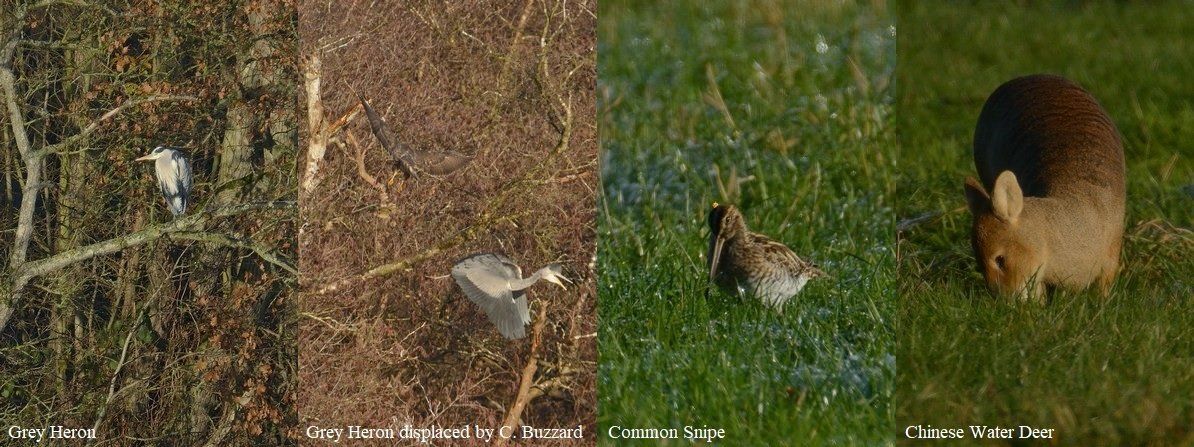
Heading down the second track we found 2 Common Snipe searching for food in one of the meadows and Jason had a Woodcock fly over. In the distance there were 9 Cranes and also what appeared to be 6 Bewick’s and 3 Whooper Swans.
At the end of the permissible track we parked up, keeping a vigil but also had lunch and whilst there I heard a Little Owl calling but couldn’t actually find it. Also having lunch was a Kestrel that flew in with prey (possibly a Field Mouse), landed on a gate post and began dismantling and devouring its meal. Also here 3 Chinese Water Deer were seen.
On the way back, we encountered a young Grey Heron hunting the road/track-side verge, probably for rodents. It continued its hunt towards us but on reaching the front of the car it suddenly realised that humans were present and flew off; great views though!

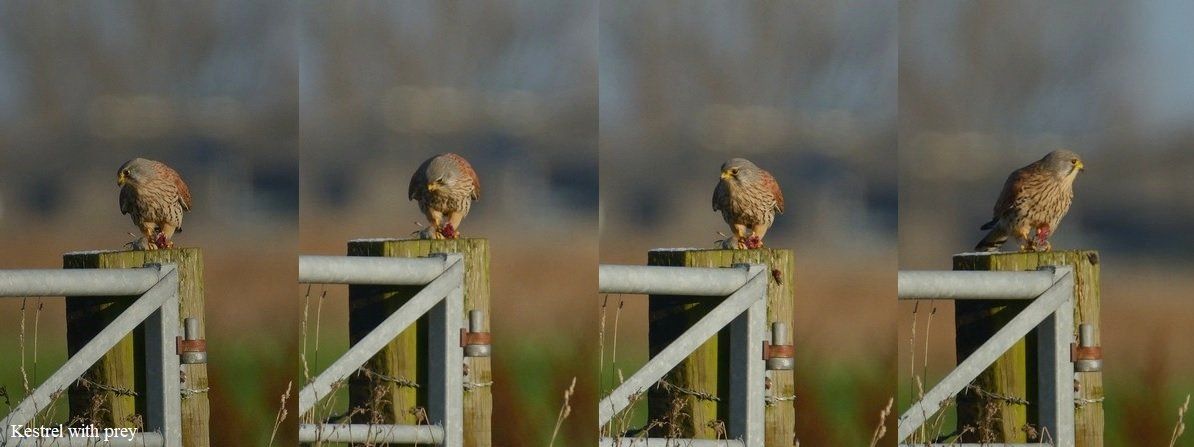
Hearing that Bewick’s Swans were at Ingham, we set off in that direction and eventually found a swan herd along Water Lane. From a pull-in we counted 24 swans, mostly Whoopers with at least 6 Bewick’s in the mixed herd. Also here were 6 Golden Plover and a few Lapwings.
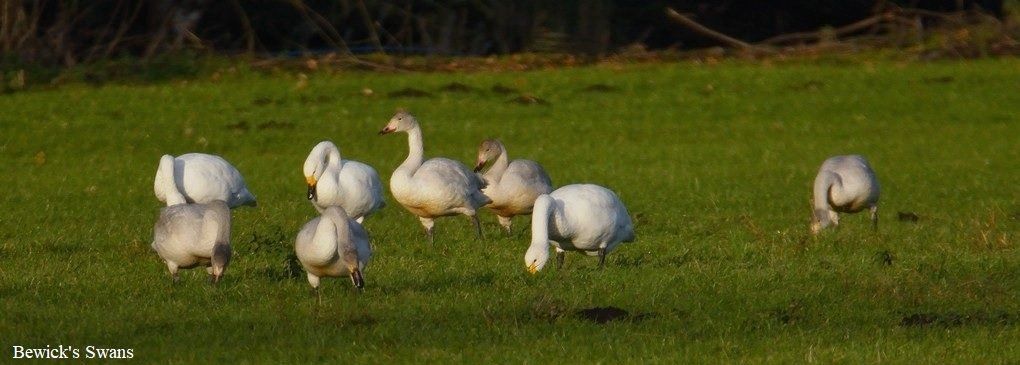
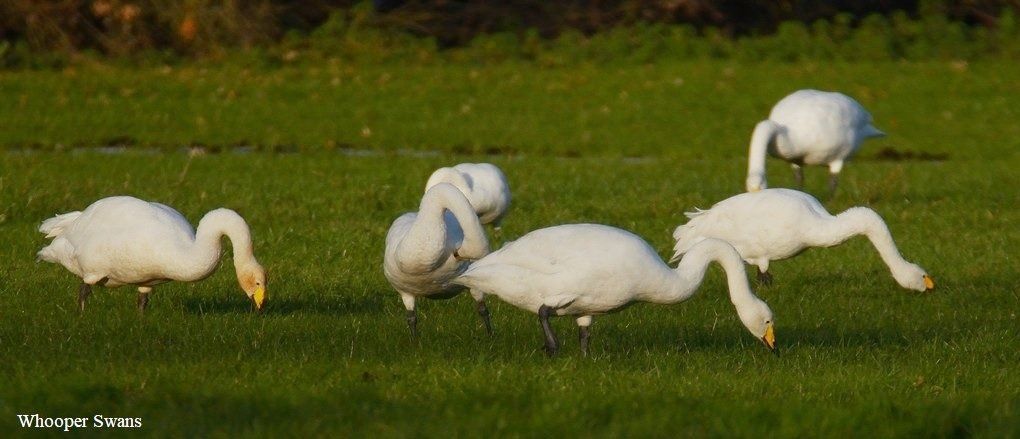
Travelling back along the coast road, very little was seen, until we arrived at Horsey! From the ‘lay-by’ we found good numbers of Thrushes feeding on the berry-laden Hawthorn bushes. These were made up of mainly Fieldfares and Redwings and as time went on we realised there was at the very least 100 of this mixed flock. When we finally left to go home we passed more of these thrushes in the Hawthorn hedge along the Horsey ‘straight’, which were more resplendent than any Xmas decorations or illuminations; a row of multiple small red globes, on a row of roadside Hawthorns, adorned by beautiful Thrushes, lit up by the last sunlight of the day. That’s more Xmas than any representation that man can produce; Seasons greetings and a Happy, wildlife-filled New Year, with many ecological experiences!
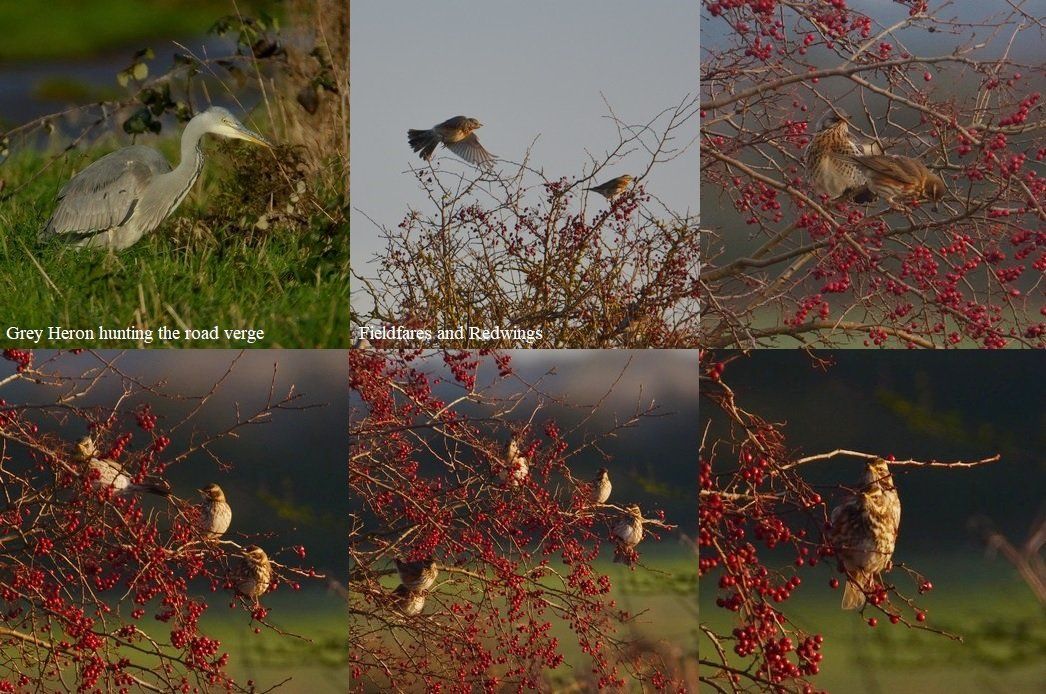


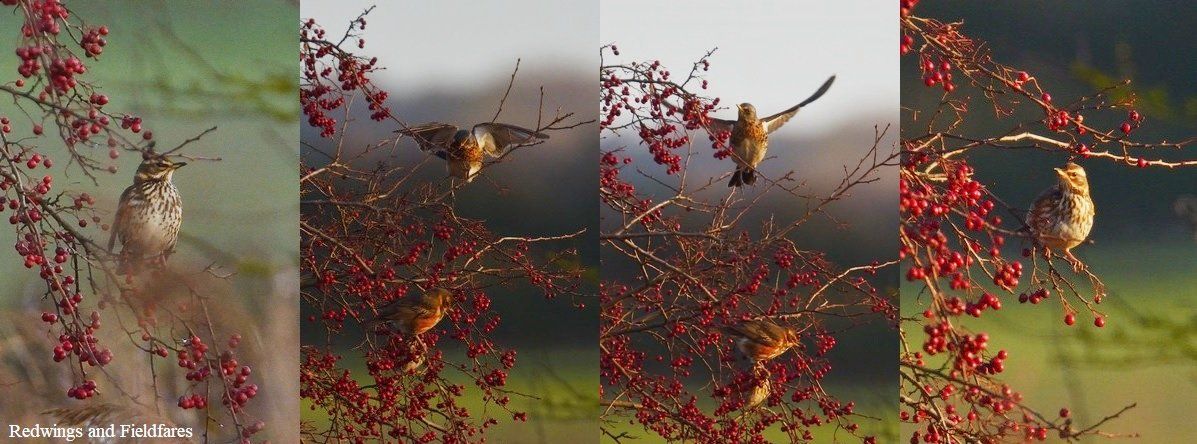
Ivy Berries a prized resource?
Two Common Buzzards were seen (8th) en-route to the North Norfolk coast with Jason Nichols.
With not too much at Salthouse we went to Cley Coastguards seeing Brent Geese on the Eye Field, but there was very little moving offshore.
At Morston Quay a Greenshank was seen feeding along the channel and also recorded here were 2 Grey Plover, Oystercatcher, 6 Redshank, Little Egret and some Brent Geese.
On the drive down to Wells East Pools a few Blackbirds flew out of the Ivy, as did a Redwing. More Redwings and Blackbirds were seen whilst parked up and a Brown Hare was hunched up on a field.
At Holkham Freshmarsh, raptors were on the wing with 2 Marsh Harrier, Red Kite, Common Buzzard and the 7th Kestrel of the day with most of them hovering near the road en-route. Both Great White and Little Egrets were seen along with Pink-footed Geese.
Brancaster Staithe had a few waders present with 3 Bar-tailed and 2 Black-tailed Godwits and 2 Turnstone. Brent Geese were also here, along with a Little Egret.
Not too much at Thornham, but a Red Kite was over the saltmarsh.
A drive around ‘the block’ at Choosley found a Stonechat perched in the set-a-side 3 Common Buzzard and 3 more Kestrels. Again Ivy berries seemed to be the in vogue food source, this time for both Blackbirds and Wood Pigeons.
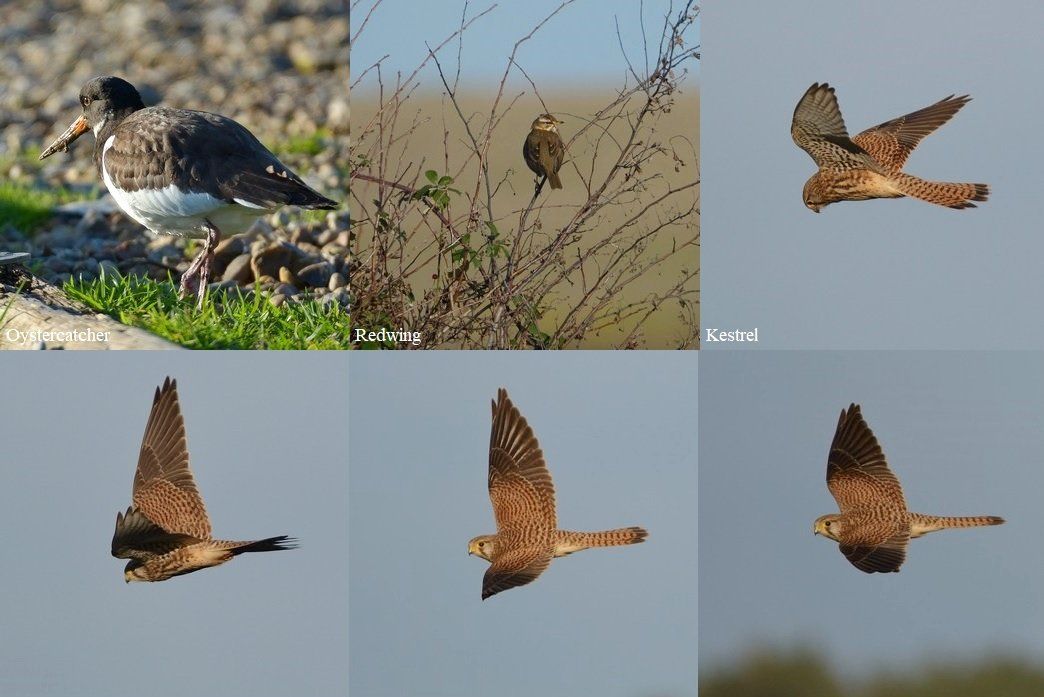
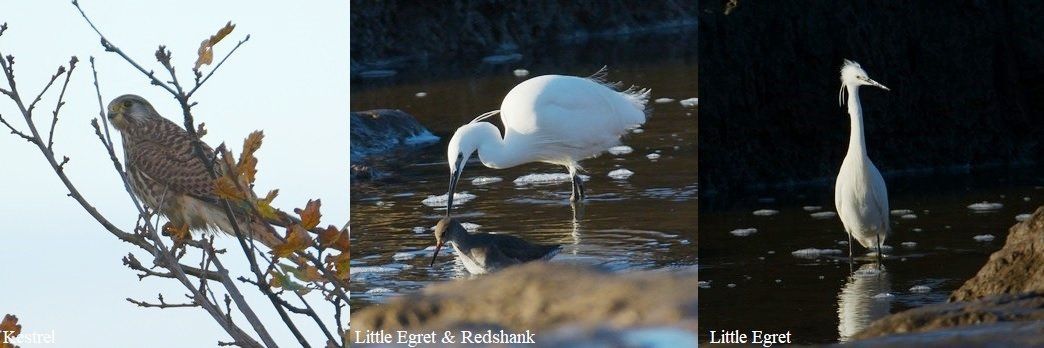
Waxwings, Red Kites and the Eagle has landed......
The 1st of December and a trip out with Jason Nichols followed a slightly different route than our usual locations along the North Norfolk coast beginning at Sheringham, where Waxwings had been reported for the last few days.
I will point out the trip out is something we do nearly every Thursday, so I make no excuses for heading to Sheringham first. However, I had to smile when I read the following justification on a blog recently from someone who amongst other things is a chef: ‘Since we needed Yorkshire puds to go with Sunday supper, we thought we'd go to North Walsham to buy them: it seemed silly not to visit Common Road, Sheringham first to look for the reported flock of seven Waxwings.’ Travelling approximately 15 miles to go to a shop, they must be very special Yorkshire puddings!
Anyway, moving on we arrived at Sheringham and headed to Common Road where the Waxwings had been seen earlier. Sure enough at the top of a group of trees were 4 Waxwings, mostly fly-catching. However after a short while the birds flew across the road and went to Beeston Common.
There were quite a few berry-laden Rowan trees here, but the Waxwings for most part were perched in a non-berry-bearing tree preening. Nevertheless, several images were taken, probably not in the best light to show off the brilliant colours and subtle plumage tones of these winter visitors. We left the Waxwings perched in the tree and made our way further along the coast.
We made our way straight to Holkham Park, where a released immature White-tailed Eagle had been frequenting.
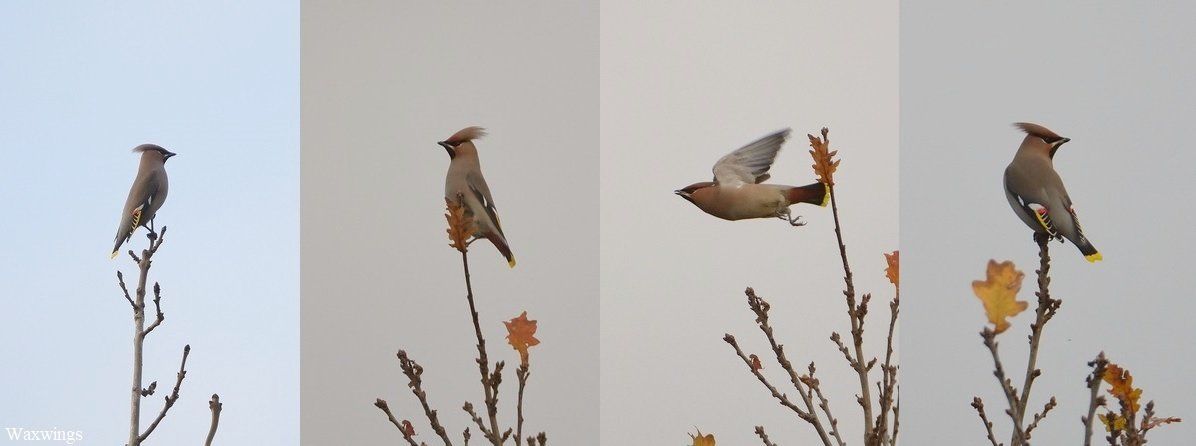
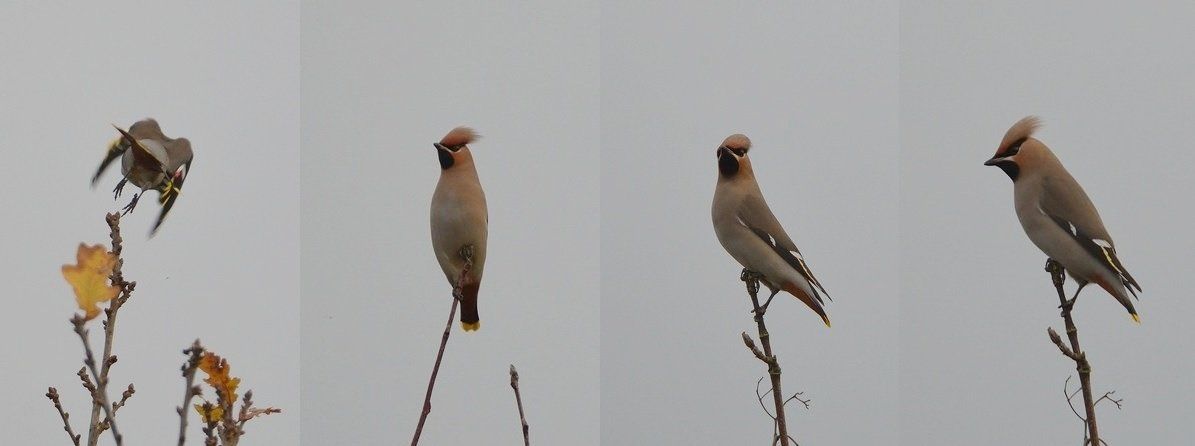
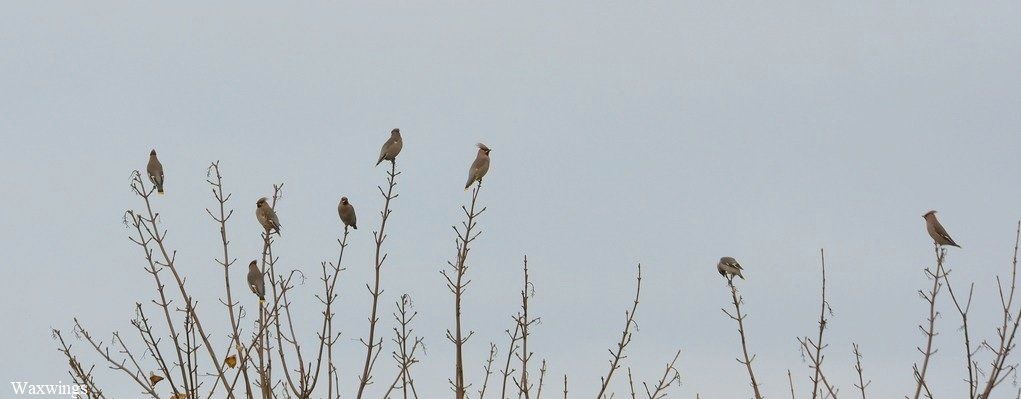
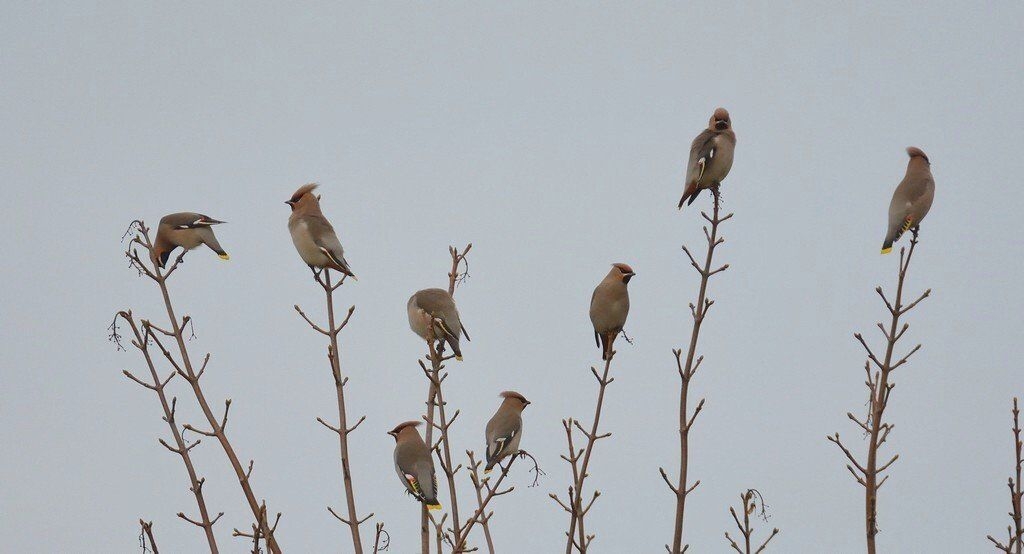
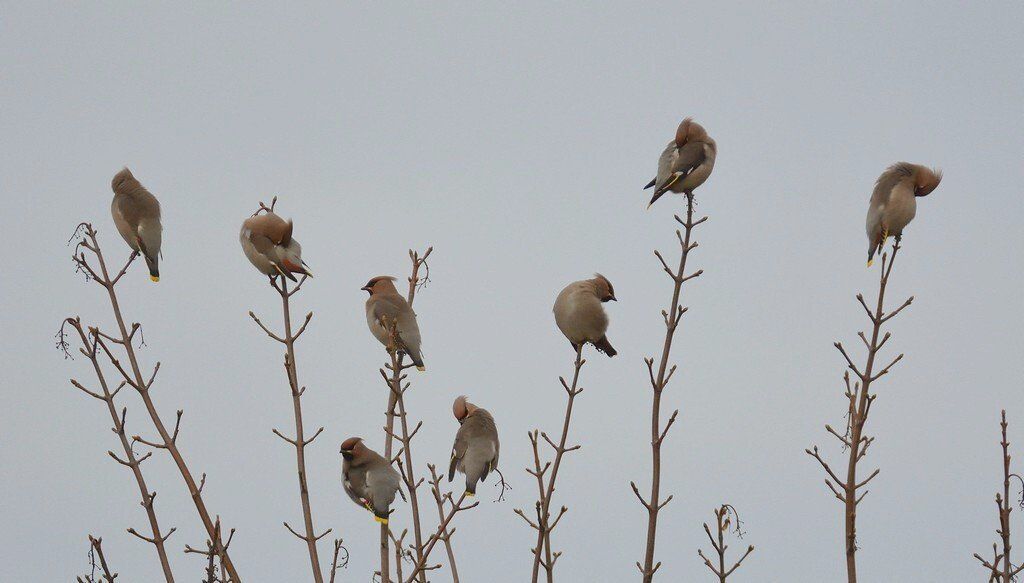

On the way down to the lake, we saw Fallow Deer and Blue, Great and Coal Tits were flying down to the woodland floor, presumably for Beech mast.
At the lake, a variety of ducks were on the water, with Pochard, Tufted, Shoveler, Mallard, Gadwall and Teal with at least 3 Little Grebes also diving for prey. Egyptian Geese were making their Tesco (other supermarkets are available!) van reversing calls and in the trees across the other side of the lake were 6 Red Kites perched in the trees. However, there was no sign of the Eagle so we walked back to the car park.
We decided to have a brief spot of lunch at ‘the gate’ overlooking Holkham Freshmarsh, where we saw a Great White Egret, 2 Common Buzzard, Marsh Harrier and a Red Kite, before leaving for Brancaster, passing a good number of Pink-footed Geese on the fields.
We drove along the road to Brancaster Golf Club and stopped in the car park to assess where the Hume’s Warbler (originally called Hume’s Yellow-browed Warbler, I remember because I saw one for around 3 months on a daily basis in Great Yarmouth Cemeteries some, (probably many) years ago!) was being reported from.
However, an alert on Jase’s phone from Bird Guides changed our minds; the White-tailed Eagle was reported as being seen perched in a ‘dead’ tree from ‘the gate’ at Holkham! Surely we had not missed it earlier?! Pretty sure we hadn’t but from a very small bird we decided to drive back for a much, much larger bird!
Finally we arrived at Holkham and were surprised that no one else was parked there at ‘the gate’. We parked-up and looked for the Eagle and finally Jase spotted it some distance away, towards the ‘Spoonbill and Cormorant trees’.
The Eagle had its back to us all the time we were there but occasionally looked left or right showing off its large pale yellow cleaver of a bill, something I remember vividly from my first encounter with this Eagle back in 1991 along Stubb Road Hickling, where we scanned the fields (for something?) and I had a double take when I saw what I thought was a log, until I saw a large yellow bill attached to it on a field!
Jason videoed the eagle (See below) and we both took images, despite the distance from us. However, the drama here was not over, when a hooting car horn, which we thought initially was one of the estate staff wishing to get through the gate, was in fact a ‘birder/twitcher’ sounding his horn and when we looked round was giving the ‘v’ sign! Why I don’t know as there was space for him too but then this is the arrogance of some of the birder/twitcher brigade nowadays.
Realising the Eagle was quite content perched in the tree we left and headed back, but that was not the end of the drama at Holkham, when an elderly couple with the man behind the wheel decided to start pulling out of Lady Ann’s Drive in front of us. Jason hooting the horn saved us from a point-blank collision, which I have experienced before!
The rest of the journey home was fairly uneventful, and despite the bad moments was a very successful and enjoyable day.
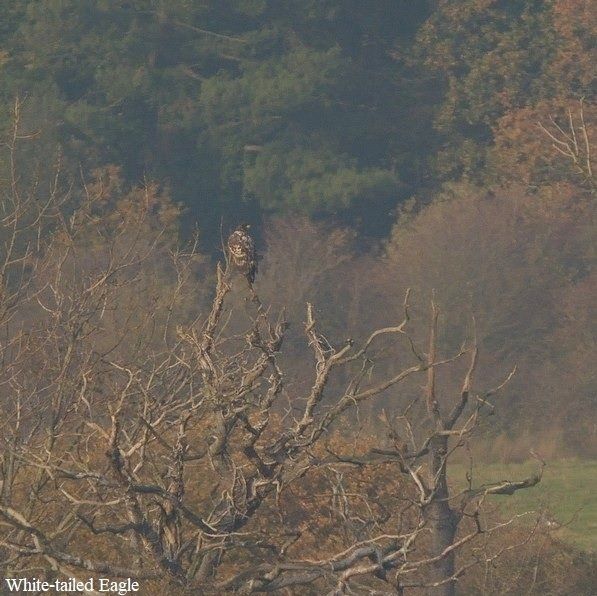
November 2022
Shore Larks and Snow Buntings at Holkham......
A day out (24th) with Jason Nichols began at Salthouse but nothing of real note here or the pond at Walsey Hills.
Beach Road, Cley had a flock of Brent Geese, in and around the flash pond on the Eye Field where there was also a few Lapwing and Skylark. With nothing of note offshore at Coastguards we carried on along the coast.
At Morston Quay we found a Greenshank several Redshanks a few Brent Geese and a Red Kite went over.
With nothing apart from Gulls and Ducks at Wells Pools we moved on to Brancaster Harbour for lunch and saw 3 Little Egret, 2 Red Kite, 3 Turnstone, Dunlin and a Herring Gull at the end of his reward strategy of dropping Mussels.
Heading back along the coast road we saw a Mistle Thrush on a telegraph wire just before Holkham where we pulled in at ‘the gate’. Here we saw 3 Common Buzzards and a few distant Geese, having past some fields earlier with at least 2000 Pink-footed Geese on them.
We then decided to go and have a look for the reported Shore Larks and Snow Buntings in Holkham Bay and after quite a walk (at least for me!) we saw 12 Shore Larks in the roped off area of the saltmarsh and eventually approximately 8 Snow Buntings. A flock of at least 40 Black-tailed Godwits were also here on the saltmarsh.


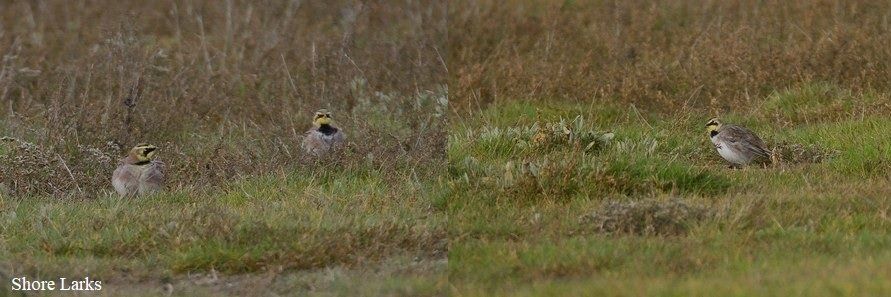
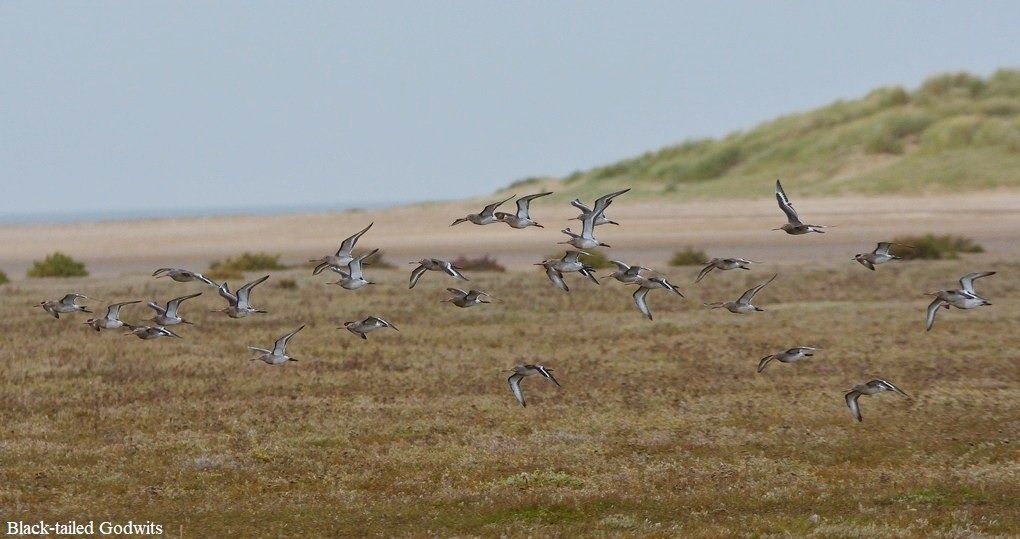
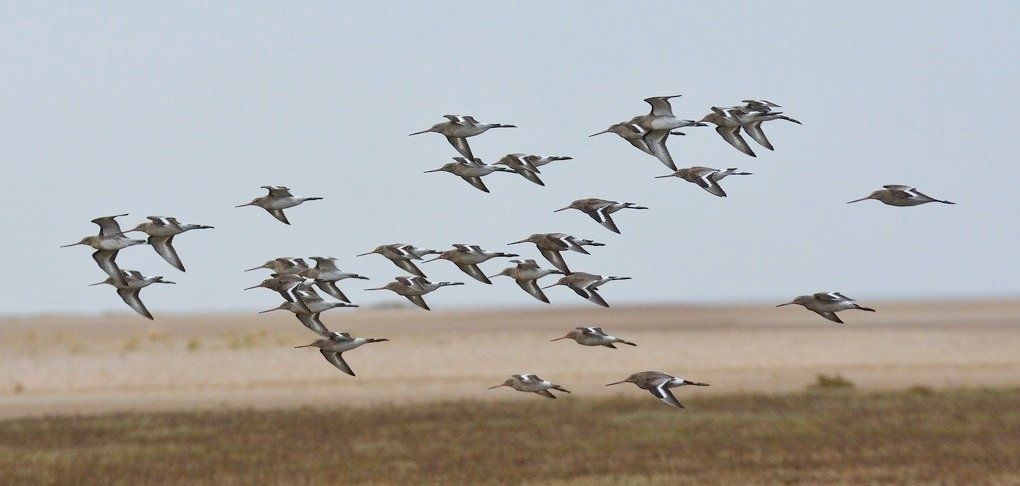
Ring-necked and Ferruginous Ducks at Filby......
I managed, despite lack of sleep to get myself out of the door first thing this morning (18th), which anyone who suffers with ME/CFS and mental health problems knows is a big obstacle, much more of a challenge than Becher's Brook #Banallhorseracing!
Anyway, arriving at Filby I set off to try and find the Ring-necked and Ferruginous Ducks being seen there at Filby Broad recently.
I was scanning through the raft/s of duck and Coot, when I saw a boat heading in that direction, so I was forced to ask the other three people there if they had found any of the sought after ducks, before the ducks took flight, which inevitably some did!
Yes they could see both the Ring-necked Ducks but it seemed the Ferruginous Ducks had possibly gone out of sight round the corner of the SE end of the Broad.
I eventually managed to get a fix on the duck and 1st W drake Ring-necked Ducks, not the easiest plumages in which to pick them out of a raft of variably aged Tufted Ducks and gloomy light conditions!
Eventually the Ferruginous Ducks emerged (originally thought to be hybrids but what hybrids were never mentioned); much easier to pick out, fortunately and 4 duck Goldeneye were also present to the north of the Broad.
I don’t know what telescopes the others present had but they could apparently see the eye colour of the Ferruginous Ducks, bad enough spotting the whole duck in the far from perfect light conditions with mine!
Anyway, after having three sightings of a Kingfisher/s all the rarer ducks disappeared, literally! The last one a duck Ring-necked was seen to swim into the reeds, probably where the others were but with the wind now picking up I decided to leave.
On the way back, along the ‘back roads’ I found at least 700 Pink-footed Geese on fields and stopped to take a few photographs, but like the ones of the ducks, these too were less than satisfactory, but then in photography the physics of light is everything.




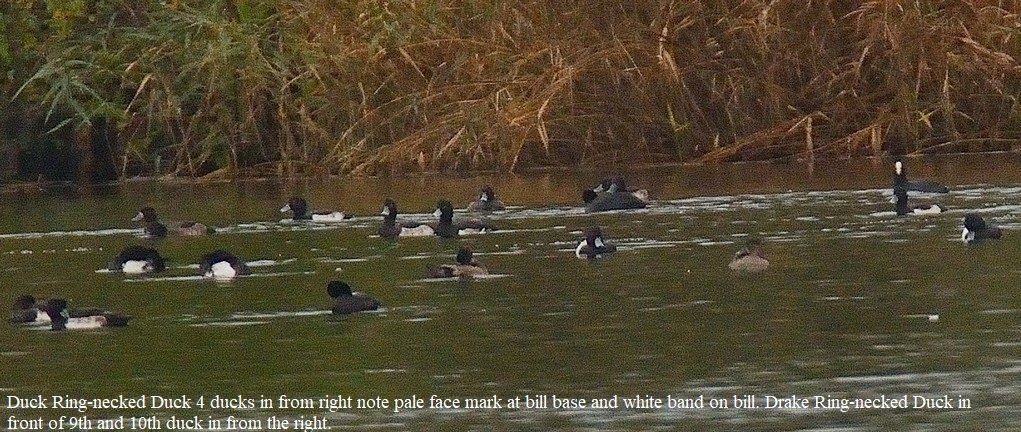
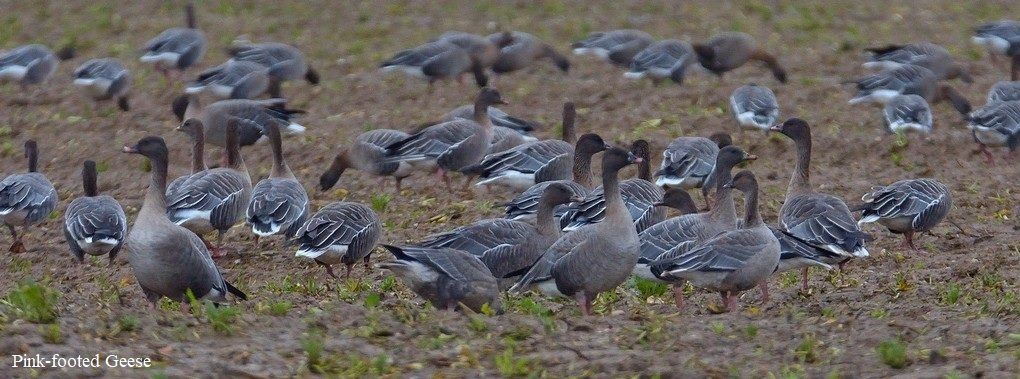
Duck-out!
A very dark, dismal and rainy day (17th) began at Filby with Jason Nichols, where we went in search of both Ferruginous and Ring-necked Ducks. However, the visibility was so poor and the rafts of duck being a long way away we decided to explore elsewhere and come back if the weather improved, somewhat!
A drive around the Clippesby and Ashby ‘block’ found 3 Cranes in the distance, a Common Buzzard and several skeins of Pink-footed Geese.
An optimistic look around Ludham Airfield found nothing of note and certainly no ‘wild swans’ and the back roads through Hickling and onto the coast road brought similar rewards!
Approaching the Horsey straight ‘pull-in’ a Marsh Harrier was seen and then a Great White Egret standing proud beside the distant reeds.

There had been a good number of seabirds going past Winterton in recent days, so we decided to go to the car park at the top of Beach Road (lots of Beach Roads in Norfolk!) and seawatch from the car as it was still raining persistently. Unfortunately a young jobs worth decided he was going to shut the car park, so that was no longer an option, made all the more frustrating as we could see a great deal of avian movement. Still making the best out of an ever increasing ‘bad job’ we found a spot nearby and began watching what was going past, even though our field of vision was limited.
Earlier here there had been around 300 Little Gulls going past and we saw at least 15 along with a fairly steady passage of Gannets, mainly adults. Other species of note were: Brent Geese, Red-throated Diver and Common Scoter.
We then decided to go to Rollesby and look over Rollesby Broad from the car, as earlier we had heard that the Ring-necked Ducks previously seen earlier on Filby had flown up high and disappeared from sight, so there was always the chance that they would put down on another of the Trinity Broads. 3 Drake and a duck Goldeneye were visible from the haven of the car, but when the rain eased we went across the road to look at Ormesby Broad, where there were rafts of Tufted Duck, Coot and at least 2 Great Crested Grebe.
I then found a duck Scaup, which after a while took off with 3 Tufted Duck and headed towards it, eventually flying over us and out of sight. Another bird was then seen flying across the broad and somewhat surprisingly was a Greenshank!
Back across the road to Rollesby Broad, a Great White Egret was standing in front of the far reedbed and Jase counted at least 100 Pochard, which before, due to our position had been hidden from view with a similar number of Tufted Duck.
News came that the Ring-necked Duck/s had been seen again in the SE corner of Filby Broad, so we headed back to Filby. Unfortunately, we could not see any of the Ring-necked or Ferruginous Ducks and Tufted Ducks and a couple of Great Crested Grebes had to suffice.
We decided to call it a day, but not before we found approximately 100 Pink-footed Geese on a field on our way back to Martham.

Geese, white birds and a new Beetle hitching a ride!
3 Little Grebes along the dyke at Beach Road, Salthouse began a day out (10th) with Jason Nichols. Also here was a charm of Linnets and Pink-footed Geese flying over.
A Short-eared Owl had been reported from Cley’s Beach Road, so we headed there next.
No Owl, but 2 Stonechats were perched on a telegraph cable and good numbers of both Pink-footed and Brent Geese were on and around the Eye Field. A Marsh Harrier and 11 Golden Plover were also recorded. Nothing of note off Coastguards, but on the way back 3 more Little Grebes were seen, with one close in, with its legs and feet visible under the water.

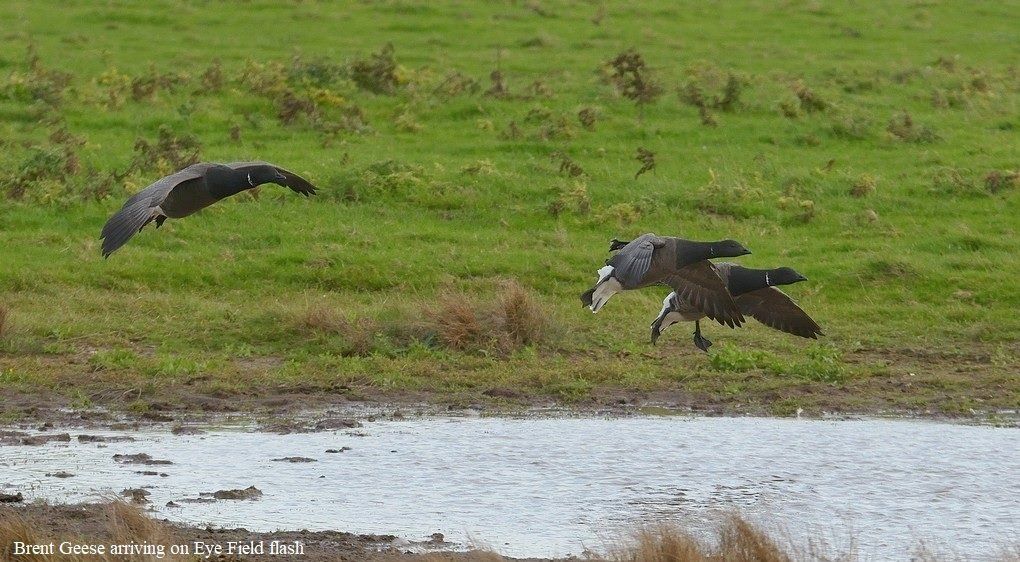
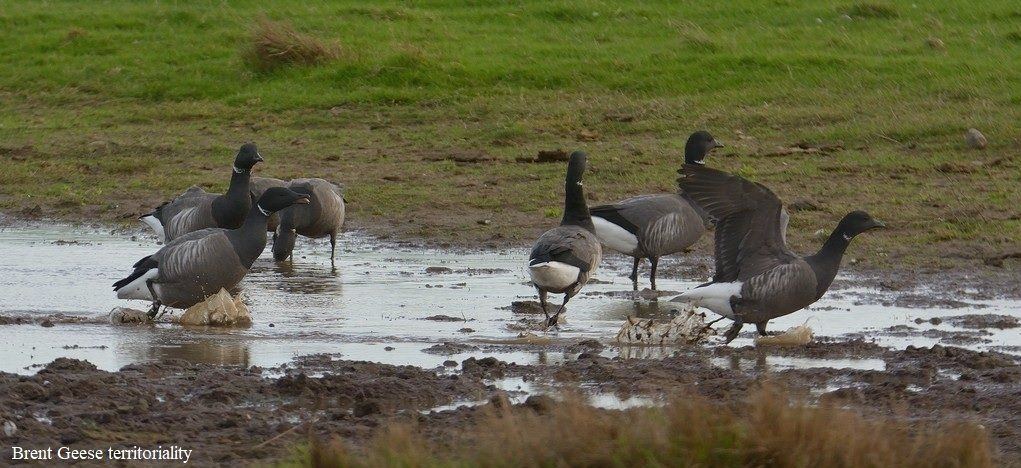

At Morston, a Little Egret and 6 Redshank were seen, but one of two Curlews here had caught, what looked very much like a young Edible Crab Cancer pagurus and was duly photographed handling and dispatching its catch.

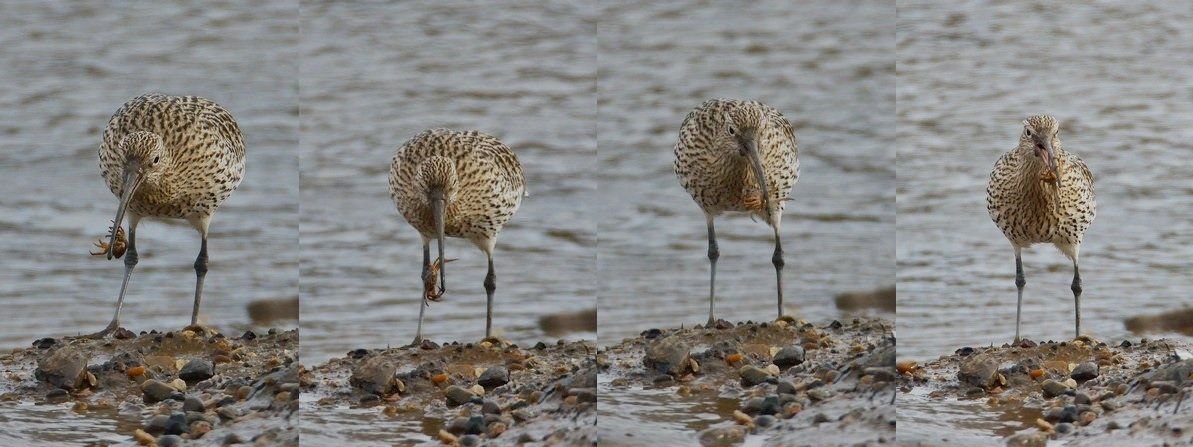
2 Red Kites were seen just before Holkham, but there was no sign of the earlier reported Pallid Harrier at Holkham Freshmarsh.
A lunch stop at Brancaster Staithe saw Black-tailed Godwits, 3 Dunlin, 2 Turnstone, several Curlews and both Herring and Common Gulls ‘Mussel-dropping’. A Red Kite flew over and a Spoonbill was seen in flight near Brancaster Golf Club, whilst a Little Egret was hunting in the channel.

A look at Thornham Harbour was fairly uneventful, but on the return journey a stop in the pull-in along the A149 overlooking Burnham Overy marshes saw 2 Red Kites over the fields to the south of the pull-in.
Another stop at ‘the gate’ at Holkham was more productive with a Great White Egret out on the Freshmarsh and 2 Marsh Harrier, Common Buzzard and a Red Kite was seen.
A short distance away from the pull-in, again looking over the Freshmarsh saw two more Great White Egrets, courtesy of a Marsh Harrier disturbing them.
I needed to find a Post Office to return some faulty goods, so we looked for the P.O. in Wells. However, somewhat fortuitously we came across 2 Thrushes on a telegraph wire, which Jase turned the car around to see what they were and two Mistle Thrushes had their photographs taken.
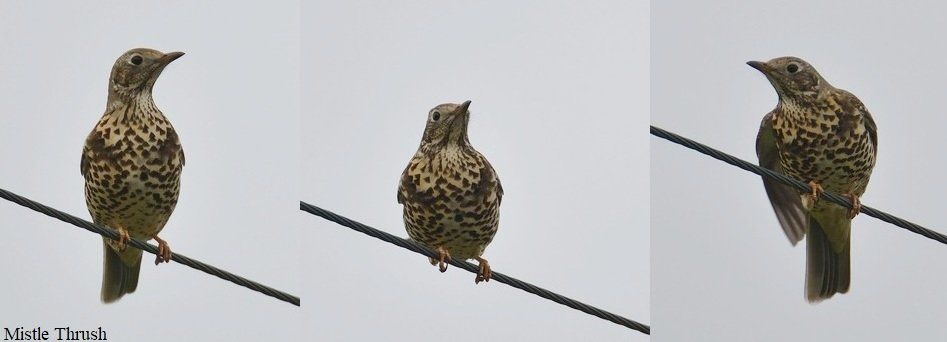

On completing my business in Wells’ P.O. we carried on along the coast and just before Morston church we discovered we had accidently picked up a passenger!
Jason pointed to the inside of the windscreen where he suggested there was a tick or something, I could clearly see it was a Beetle and when my vision was enhanced by glasses I found it was a Ladybird species, which looked familiar but I couldn’t identify it at that moment. So we pulled in to near the church and began photographing it for identity later, however, Jason had looked at his app’ (one of many!) on his phone and declared it was an Orange Ladybird, which after several images later I placed it in cover near the churchyard wall.
Now I do not trust apps for ID or indeed most of the internet and whilst I can see the app could be handy for a preliminary identification, I would always counter reference it with several sources, which I did later and yes it was in fact an Orange Ladybird Halyzia sedecimguttata.
It was a new species of Ladybird for us both and I would guess it got into the car at Holkham, when we had two doors open, but there again, who knows?

Egret Hat-trick and a disappearing Wader......
The day out (3rd) with Jason began along the ‘Iron Road’ at Salthouse, where a Long-billed Dowitcher seemed to have moved too after being along the Serpentine at Cley.
Some Brent Geese flew over before we reached ‘Swan Lake’ where there was very little; neither any Black-tailed Godwits the Dowitcher had been associated with, let alone the sought after bird itself.
At least 8 Dunlin were seen along with 3 Redshank, A Cetti’s Warbler heard and several Reed Buntings and Pied Wagtails and on the walk back along the track 2 Stonechat were seen.
A Black Guillemot had been reported off Cley Coastguards, so we headed there next. However, we were told the Black Guillemot had flown off east but apparently kept coming back again. 6 Razorbills later and there was still no return of the Black Guillemot, but a single Common Scoter flew west.
Once again there were diversions along the coast road, which were far from clear (as usual!) and this time we came to a stop in Cley village.
Having navigated our way around Cley we stopped off at Morston Harbour, but the only birds of note here were a single of; Redshank, Dunlin and Little Egret, although I did manage to photograph a Dunnock, whilst Jason visited the facilities, whilst its rarer cousin (Alpine Accentor) was at Blakeney Point!
At Wells Pools a rather interesting plumaged Sparrowhawk was perched on a fence post, whilst a Common Buzzard was perched further down and a Red Kite flew into view.


We decided to bypass some of our regular stops and head to Brancaster Staithe for a spot of lunch.
However, lunch was interrupted on several occasions, to photograph a nearby Little Egret, Turnstones, Black-tailed Godwits and Dunlin, whilst Oystercatchers and a Ringed Plover were also seen. Jason saw a Red Kite over the saltmarsh and then Jason spotted a Razorbill diving for prey; quite a surprise to see here, but not unlikely nevertheless.
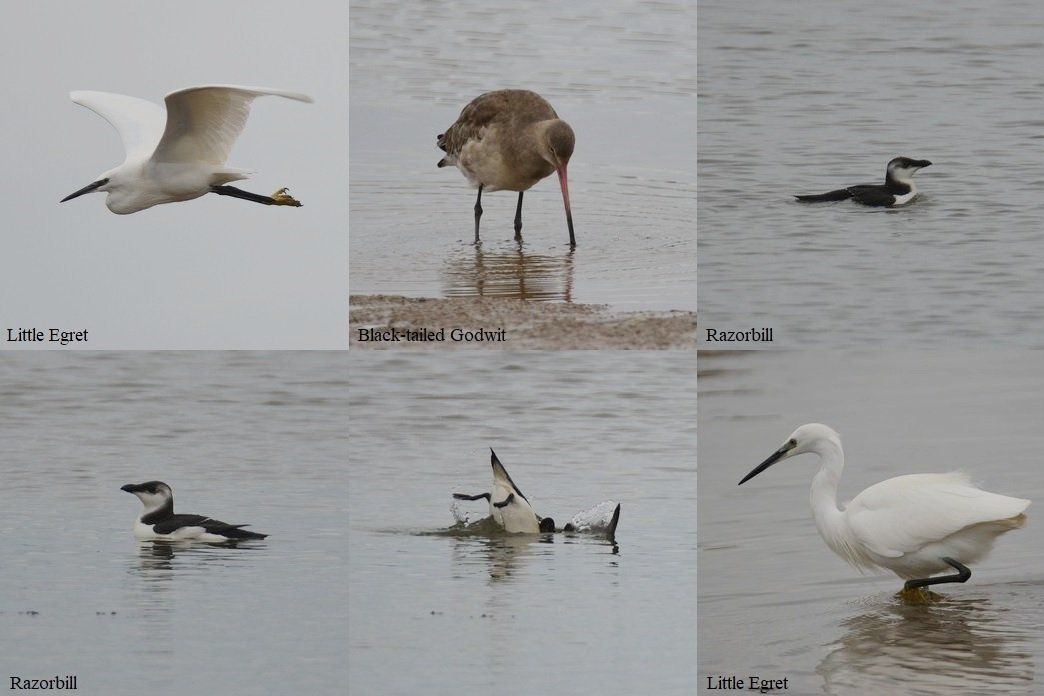
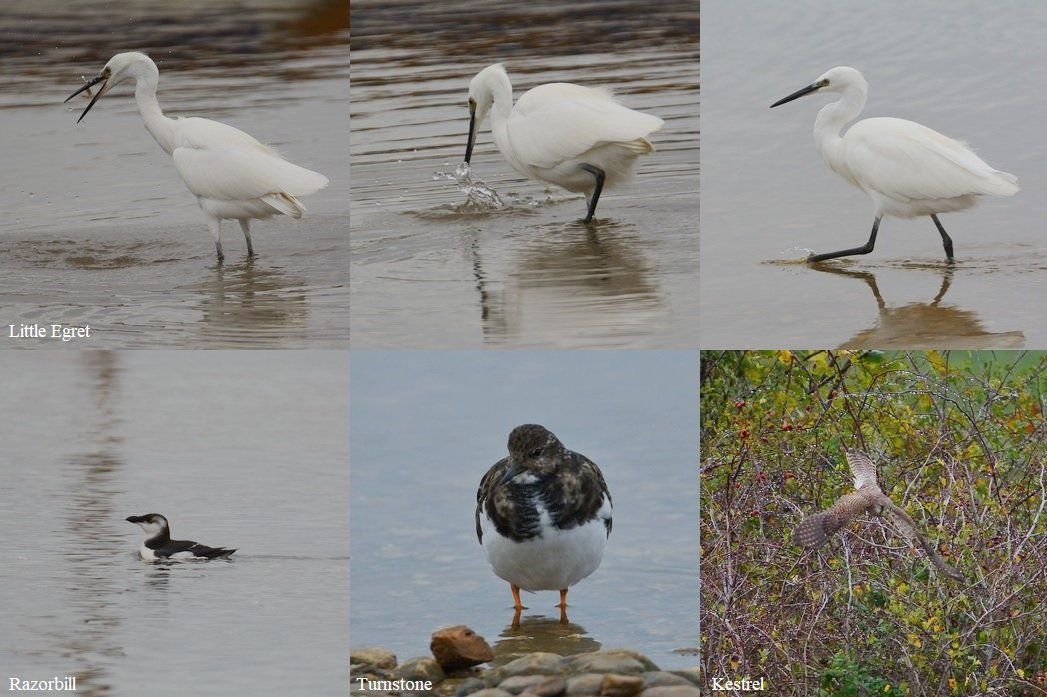
With the Alpine Accentor still being reported from Blakeney Point, it was tempting but I can’t manage that kind of lengthy walk nowadays (ME/CFS), so a much wanted to see species had to wait. Still, not like I don’t see other fascinating animals and to be fair I did have Pallid Swift/s past whilst sitting in the garden (27-10-2022)!
At least 80 Egyptian Geese were in a field, en-route pulling in along the A149 where we looked over the marshes at Burnham Overy, where a Rough-legged Buzzard had been reported from the previous day, but today a Marsh Harrier was the only raptor close to the mark, but there was also 2 Great White Egrets and a Chinese Water Deer!
More Egrets were forthcoming during our next stop at ‘The Gate’ at Holkham where a Great White Egret was seen next to a herd of black and white cattle and then gradually, over time 6 Cattle Egrets emerged!
A Kestrel was back in its ‘favourite tree’ (same as 2 weeks ago-above) using its perch to ambush any potential prey it spotted, a Common Buzzard was perched in a tree with its wings out by its side drying off, 2 Red Kites, Chinese Water Deer were seen and a Great Spotted Woodpecker could be heard calling from a belt of trees. Just before departing 6 Mistle Thrushes flew eastwards.
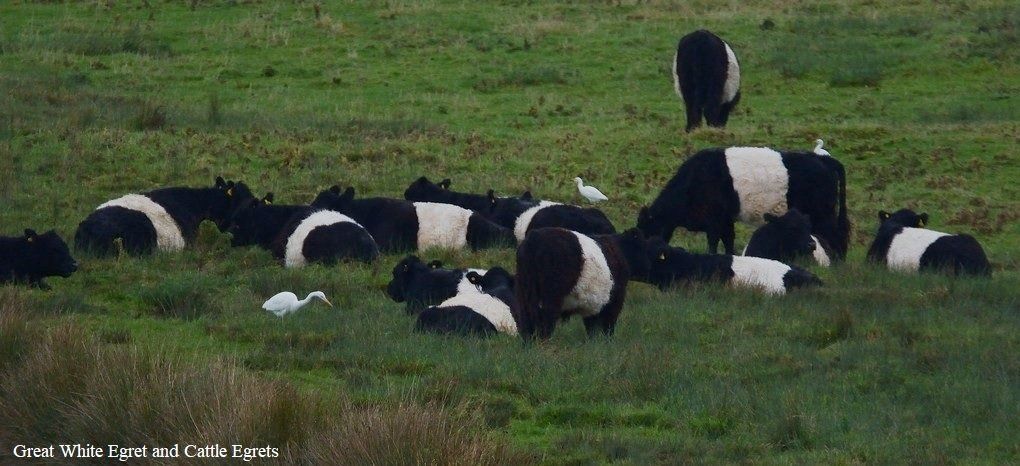

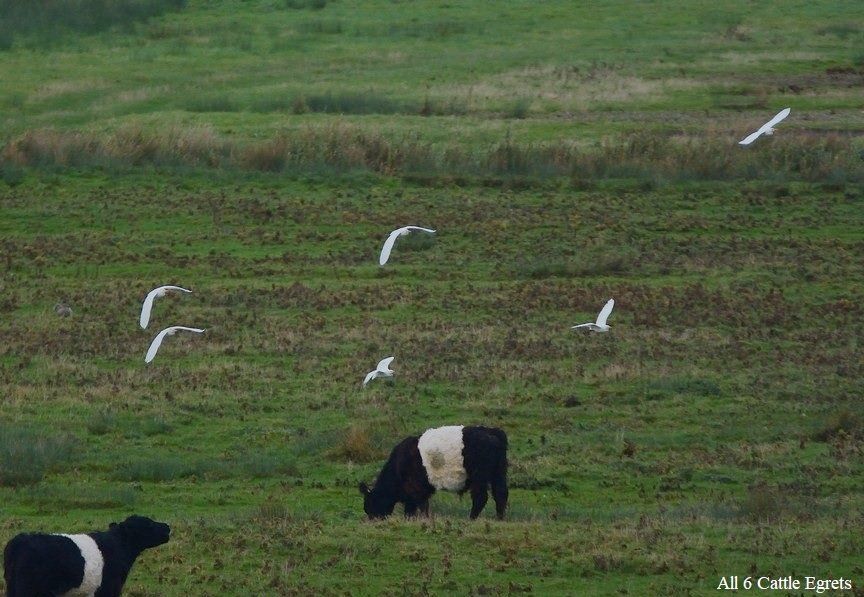
Just before Morston, the news came in that the Long-billed Dowitcher had been seen on ‘Swan Lake’, Salthouse, so we found ourselves returning there for another try at this wader.
However, on arriving we were told the Dowitcher and the accompanying entourage of Black-tailed Godwits had ‘disappeared’! However, after a while (well quite some time actually) Black-tailed Godwits began to return, with at least 2 Common Snipe and a Ruff also.
I saw a Snipe-sized wader emerge out of the short reeds and actually said; ‘that’s it isn’t it?’ to others there; some with scopes, but no one said anything. Instinctively I fired off some shots at the area and the wader and thought not too much more about it as all anyone could see was a Ruff come into the open.
Over the following two days I was editing the photos and eventually came to the images taken from the second visit to the Iron Road and came across a wader, alongside the Godwits, which was not a Godwit, Snipe or indeed a Ruff. I only had one shot of the bird from the side the rest of the images depicted it moving away into the taller vegetation.
Nevertheless, careful scrutiny of the images and the situation led me to conclude that this was the Long-billed Dowitcher; what else was it?! This wader species seems very adept at disappearing from view very quickly and I remember the one at Rutland Water a few (probably more!) years ago remaining still for a very long time, just occasionally moving its head.

October 2022
Gloomy weather but a nice selection of birds along the Norfolk coast......
The day out (20th) with rain showers and foreboding skies with Jason Nichols began at Beach Road, Salthouse. A Little Grebe was in the dyke leading to the bridge and at the end of the road, once again there were 2 Stonechat, constantly shaking the rain off their feathers.
A Common Snipe was found on the dry flash pond on the Eye Field along Beach Road, Cley and about 40 Brent Geese were also present, whilst 3 Blackbirds flying past were obviously new arrivals.
From the sea bank we saw 3 adult Gannets heading east, along with a Red-throated Diver and 6 Little Gulls (approx’ 70 had been seen there earlier) and a Razorbill flew up off the sea and several small passerines were coming in.
On the way back, along Beach Road at least 100 Golden Plover were around the flash pond and there was also a Curlew.

Meanwhile, back closer to home a Blue Rock Thrush had been found at Winterton and apparently the Hermanus complex were trying to cash-in by charging £10 per person to park! However, I would guess this would only catch out people who didn’t know the area and where to park!
At Morston a Redwing and several Blackbirds were seen and along the quay 11 Dunlin, 2 Black-tailed Godwit, Grey Plover, Redshank, 3 Common Snipe and a Little Egret were found.
Not too much was seen during the next part of the journey along the coast but a stop for lunch at Brancaster Staithe found 15+ Dunlin, Turnstones, Oystercatchers, 4 Ringed Plover, Curlew, Black-tailed Godwit and 2 Little Egrets including one perched on a post, preening in the rain.

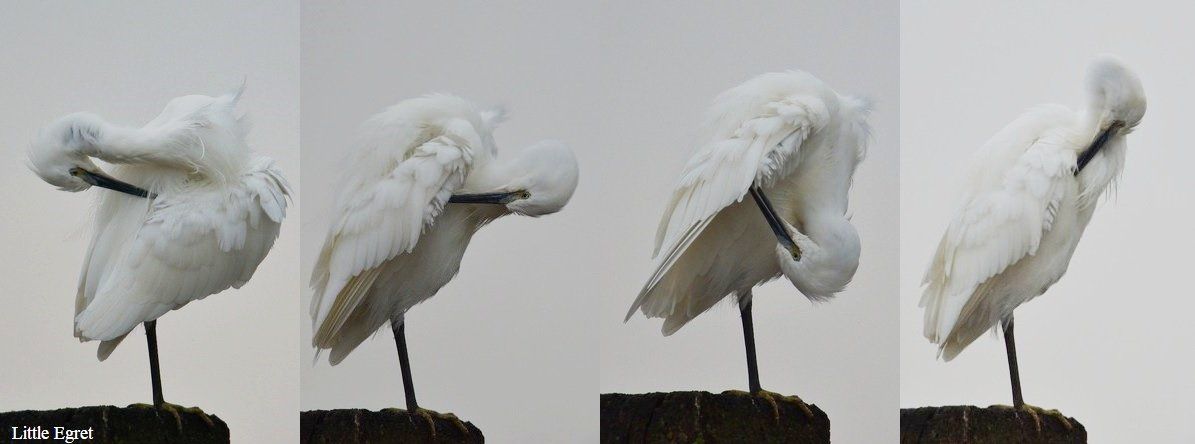
A drive along the road to Thornham Harbour was fairly productive with several Blackbirds and a couple of Robins on the side of the road and a Great Spotted Woodpecker was heard calling from one of the trees. These were followed by 3 Rock Pipits coming onto the roadside and I managed to contort myself enough to get a few shots of one of them, before they were disturbed by an orange-attired jogger! A Black-tailed Godwit was in the channel and several Linnets were feeding on the saltmarsh, where Jason spotted a male Brambling with them! Several flocks of Starlings were flying in and on the way back we had some nice close encounters with a Curlew, which had its picture taken.
Heading back along the coast, a look over Burnham Overy marshes from the A149 found at least 6 Grey Partridges in the stubble field, feeding alongside Wood Pigeons. Two Brown Hares were also found here and both a Red Kite and a Marsh Harrier were hunting over the marshes, where there were flocks of Geese with more Pink-footed Geese flying over.
A stop-off at ‘the gate’ at Holkham Freshmarsh found several Thrushes moving from one bush/tree to another. Five species were seen; Mistle and Song Thrush, Blackbird, Fieldfare and Redwing. A Kestrel was also perched up in one of the trees where the thrushes were frequenting but the Mistle Thrushes at least didn’t seem concerned. Two each of large raptors were also seen; Red Kite, Marsh Harrier and Common Buzzard and what was possibly a Great White Egret, but only seen briefly and 2 more Common Snipe flew over. It’s fairly certain Common Snipe were part of the incoming avian species today judging by the day’s sightings.
Not a great day for photographing but it certainly turned out better than the weather suggested at the start of the day and a good range of species were found; certainly preferable to standing around with a large crowd of people looking for a single bird to appear!

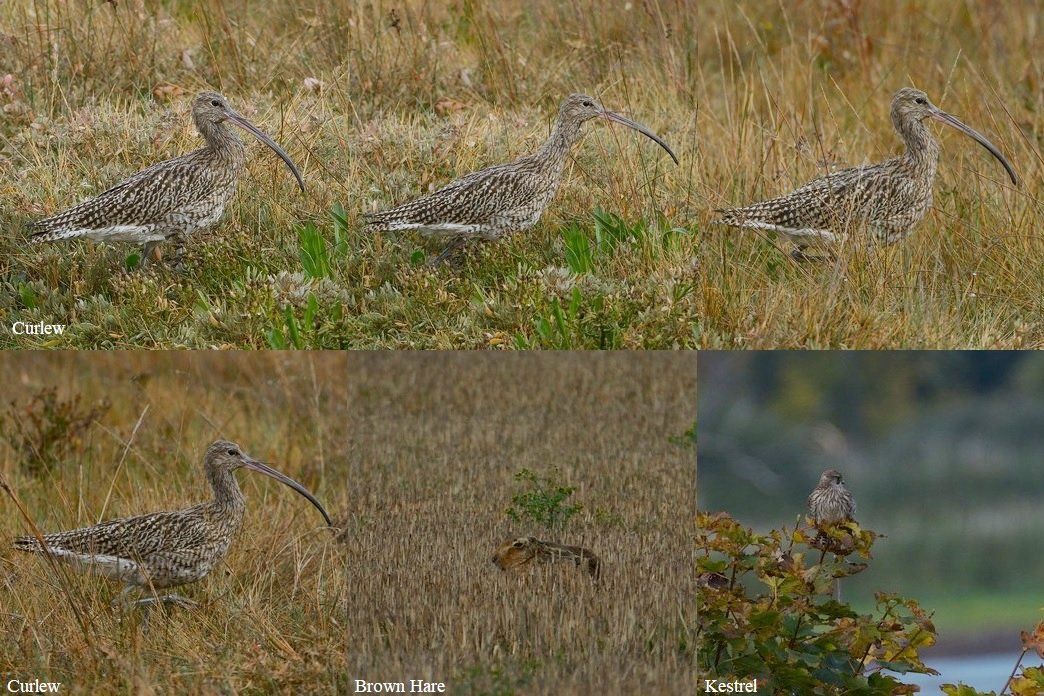

Divers and Jack Snipe......
A drive around ‘the block’ at Clippesby and Ashby (13th) with Jason Nichols found approximately 100 Pink-footed Geese and a Marsh Harrier.
With nothing of note along Beach Road, Salthouse, a look at the pond at Walsey Hills eventually found a Jack Snipe, but the company here and the constant commentary by a male trying to show his knowledge (or lack of it) meant we didn’t stay long.
2 Razorbills were on the sea at Cley Coastguards and there were also 2 Red-throated Divers fairly close-in, in very contrasting plumage and a Shag was seen diving further out.
Roadwork’s thwarted our usual visit to Morston, but on the detour around Langham a Sparrowhawk and a Common Buzzard were seen.
At Wells Pools another Jack Snipe was seen, albeit very distant and 4 Ruff were also present. We were told that a Water Pipit had been seen earlier but amongst the Meadow Pipits there a ‘dark’ pipit with dark streaking along the flanks and when it flew it had grey outer tail feathers and reminded me of a Rock Pipit! Pink-footed and Brent Geese were also present along with 8 Little Egrets.
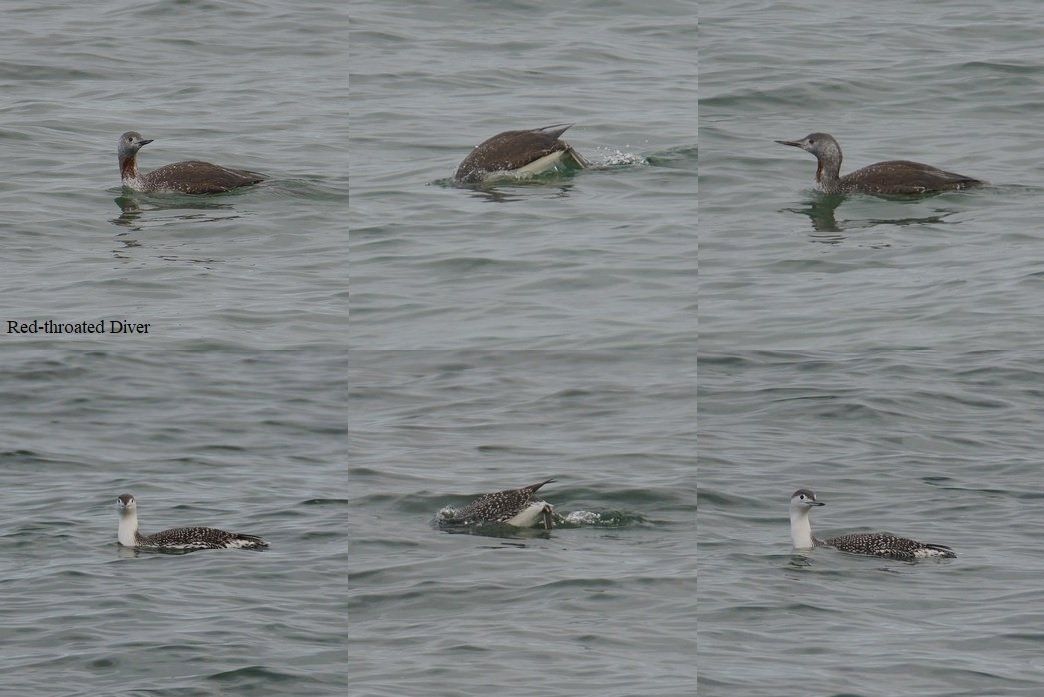

Bits and bobs along the coast......
The day out (6th) with Jason Nichols began nearby around the back roads of Clippesby and Ashby. A Common Buzzard was down on a field with what looked like the remains of a Crow, whilst a duck Mallard and her brood walked casually by, behind the Buzzard.
3 Cranes were seen as they flew across the road, but couldn’t be found consequently but another 2-3 Common Buzzards were.
Heading along the coast, a stop at Beach Road, Salthouse found 2 Stonechats at the bottom of the road.
6+ House Martins were seen over the pond at Walsey Hills, but there was nothing really of note along Beach Road or Coastguards at Cley.
A few waders were along the channel at Morston Quay with 2 Greenshank, 16 Redshank, 5 Dunlin and 5 Oystercatcher.
2 Sparrowhawk were seen at Wells Pools along with Pink-footed Geese and a female Yellowhammer.
A stop at ‘the gate’ at Holkham Freshmarsh found 3 Great White Egret and a Marsh Harrier and a stop for lunch at Brancaster Staithe found 3 Little Egret, 14 Black-tailed Godwit, Grey Plover, Red Kite and a mussel-dropping Common Gull.
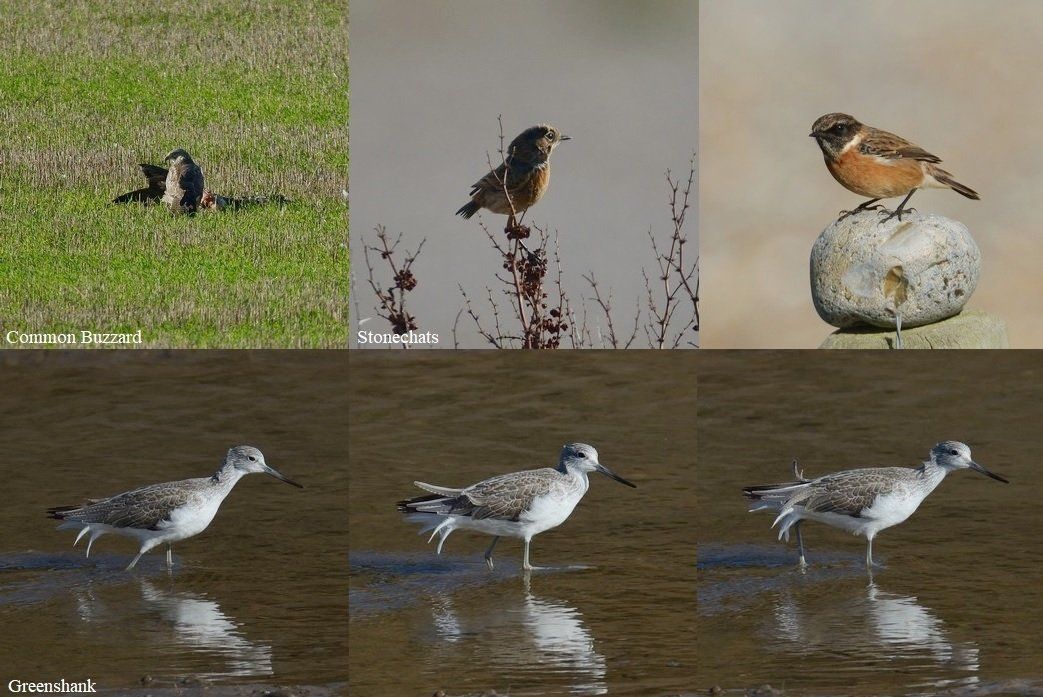

September 2022
3 Egret species, Red Kites and more......
Out with Jason Nichols (28th) the day began at Salthouse Beach Road, where the highlight was a Little Grebe on the dyke leading to the bridge and the pond at Walsey Hills just had an immature Shelduck on it.
A Curlew was on the Eye Field along Beach Road, Cley as well as about 20 Golden Plovers trying to have a bath in a limited amount of water. From Cley Coastguards an adult Gannet was the highlight.
With nothing of note at Morston Quay, we moved on to Wells Pools where a walk down to look for a Little Stint was fruitless, but a Wall butterfly and a Common Buzzard were seen.
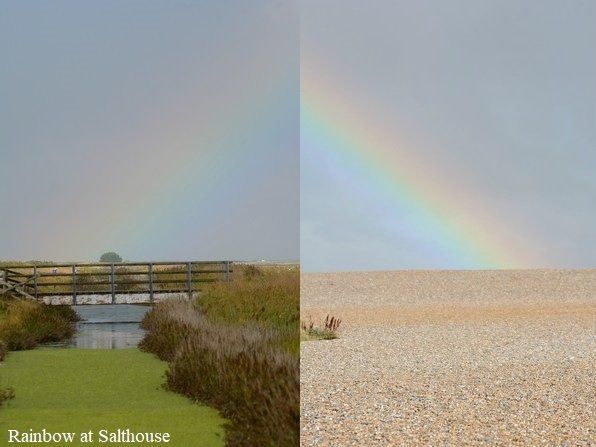

Approaching Holkham 3 Red Kite and 2 Kestrel were found over the fields there and on the Freshmarsh 4 Great White Egrets were seen and a Swallow was seen at Burnham Norton.
Lunch at Brancaster Staithe followed with a variety of waders present, albeit in small numbers. A Greenshank was a first from here and also present were Redshank, Ringed Plover, Dunlin, Grey Plover, Black-tailed Godwit, Oystercatcher, Curlew and at least 2 Little Egret. 4 Brent Geese flew over and a Common Buzzard was seen over the dunes.
A look over Burnham Overy marshes from the ‘lay-by’ along the A149 found 4 Red Kites.
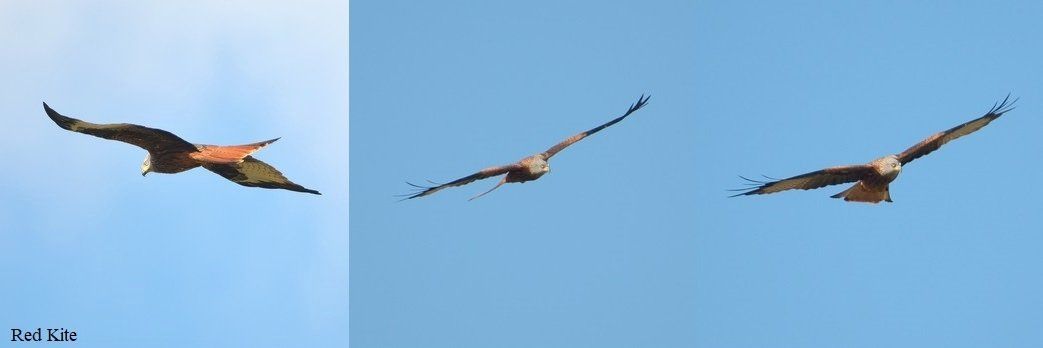
A stop off at Burnham Norton to see if anymore Sea Aster Bees were present drew a blank; the fleabane now pretty much gone to seed. However, at least 8 Wall were present with 3 together at one point, Common Darters, Migrant Hawker and a Noon Fly Mesembrina meridiana. A Muntjac was seen along the road leading out of the parking area.
A stop-off at the second available parking place at Holkham found 3 Cattle Egret with the cattle and another Red Kite was seen here.

Heading back homewards now another Swallow was seen at Bodham.
With both us very tired now it was a wonder that I spotted a ‘white head’ pop up amongst some cattle, between Potter Heigham and Repps. Further investigation ended up in finding 3 Cattle Egrets; one of which still had elements of breeding plumage.

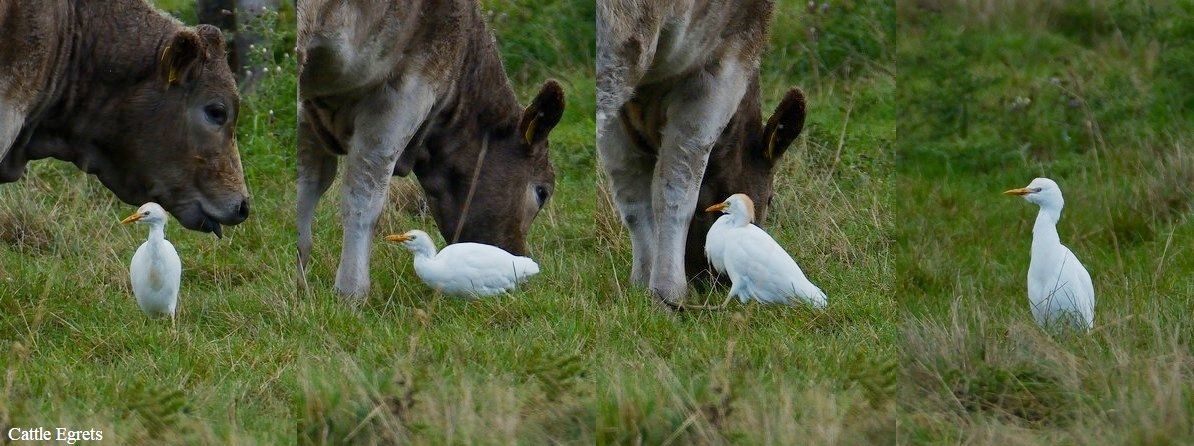
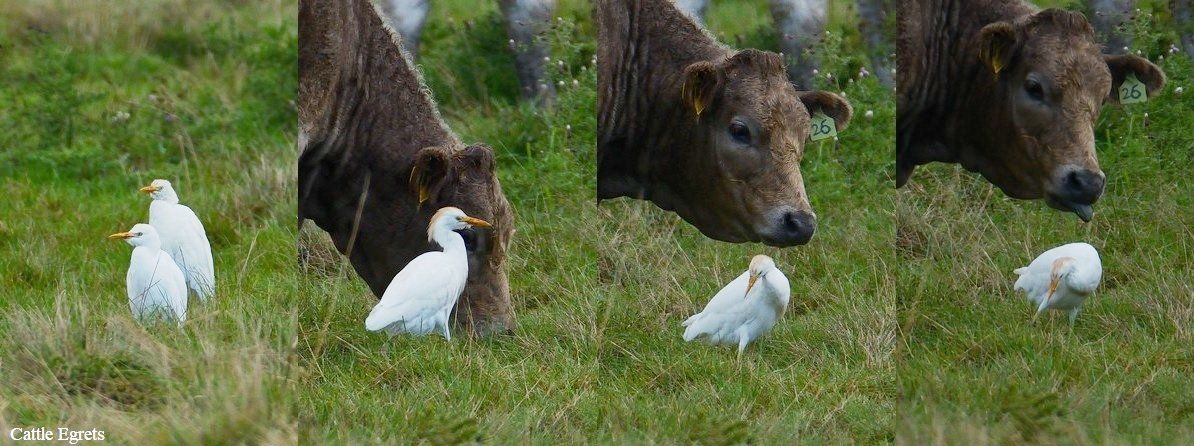
Day of the Raptor, Phalarope and interesting insects......
Four Common Buzzards together over Aylmerton (22nd) began what would be mainly a ‘Raptor day’ along the Norfolk coast with Jason Nichols.
We headed for Salthouse and along the Iron Road we found the reported Grey Phalarope on the far corner of the scrape, known as ‘Swan Lake’ (for what reason I have no idea). The Phalarope was feeding in its inimitable style but occasionally disturbed by landing Geese or departing Ducks. Actually, looking back there seemed to be certain nervousness amongst the scrape’s inhabitants and later we were to find out why!
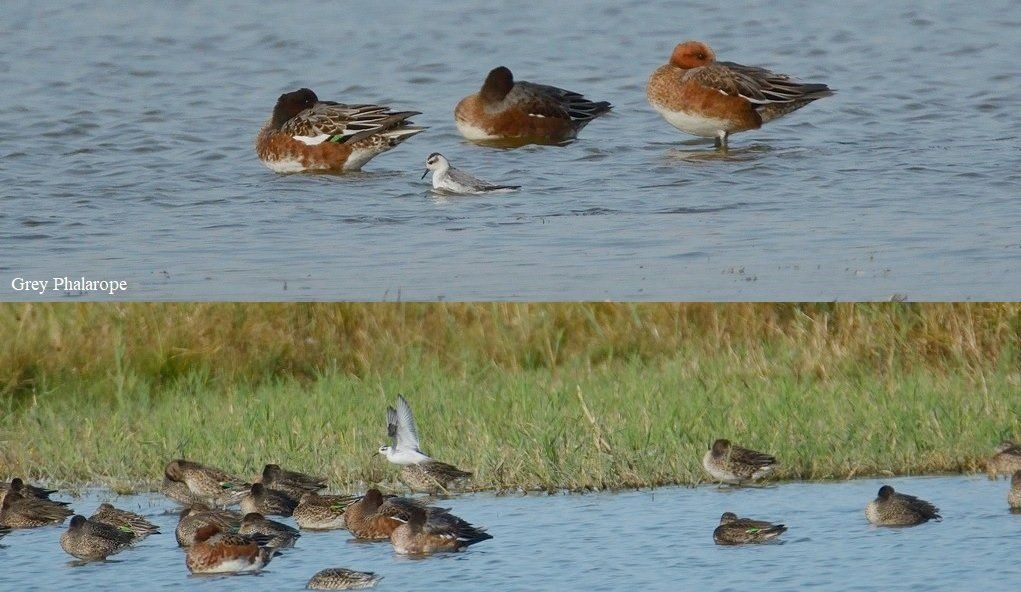
7 Dunlin and a Ruff were also present along with Ducks in eclipse plumage, mainly Wigeon but also Mallard, Gadwall and Teal. With more disturbance the Phalarope once again took flight and landed the closest it had been yet, but not for long!
Suddenly a juvenile Peregrine stooped towards the Phalarope, which only just escaped. A photo taken by Jase (right) shows just how close the Phalarope was to becoming lunch with just the departing splash from the Phalarope and the narrowly missing Peregrine in the image.
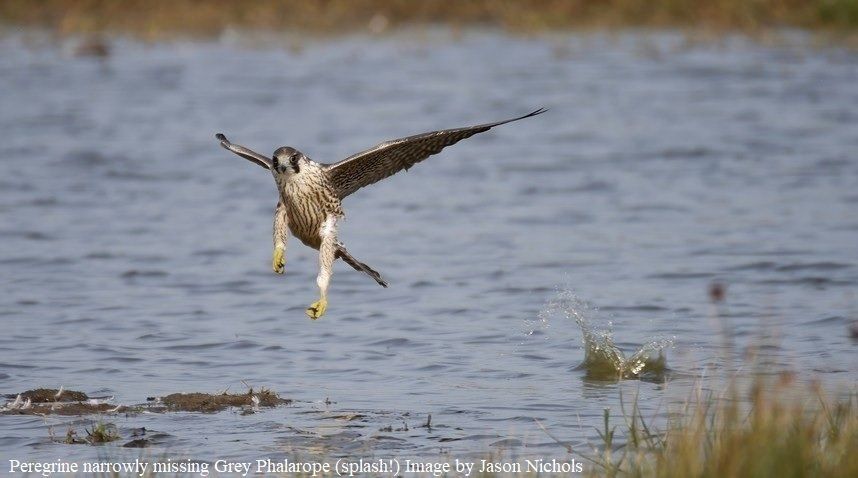
The Peregrine was joined by a Kestrel high up over the area but other tactical stoops were seen before we lost sight of what seemed to be a very grey individual.
We went back to Beach Road, Salthouse, but saw very little, but a Wheatear was seen along Beach Road, Cley and from Cley Coastguards 2 Razorbills and a Red-throated Diver was on the sea, whilst a Great Black-backed Gull flew in carrying a small fish.
A drive around the car park at Morston found a Greenshank, at least 12 Redshank and a Little Egret in the channel.

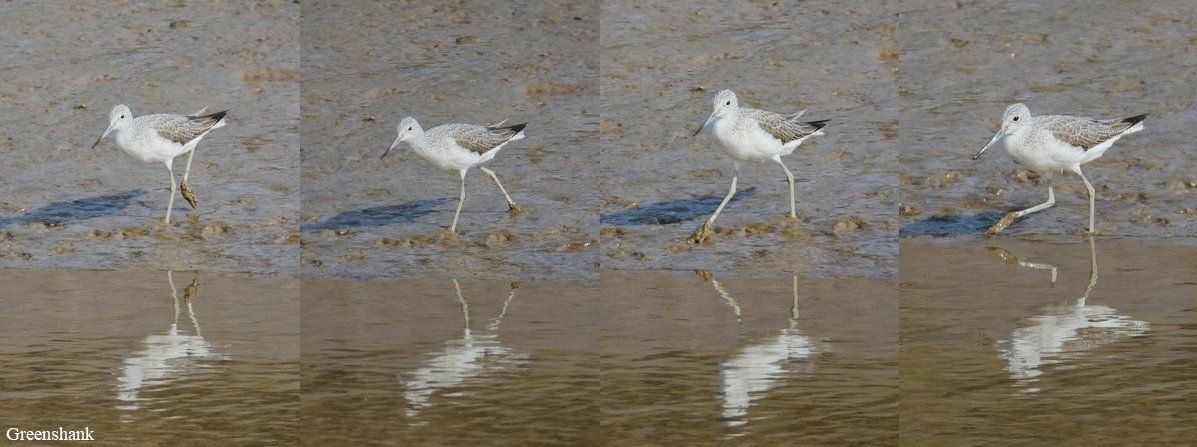
Heading towards Wells, I spotted a bird of prey on a stubble field next to a dead animal, so we turned back to see what it was and hopefully some images, although we couldn’t stop for long. Eventually we saw the raptor and its meal; a Common Buzzard and a dead Brown Hare (unfortunately) but the Hare was probably dead, due to being hit by a vehicle and not directly killed by the Buzzard.
At Well’s Pools there was very little of note but I did find a Whinchat along the network of posts to the west of the car parking area.
A spot of lunch at Brancaster Staithe was very uneventful, probably due to the number of people, dogs and boat traffic, which seems common place there nowadays. However, a few Turnstone and Black-tailed Godwit were seen along with a couple of Little Egrets.
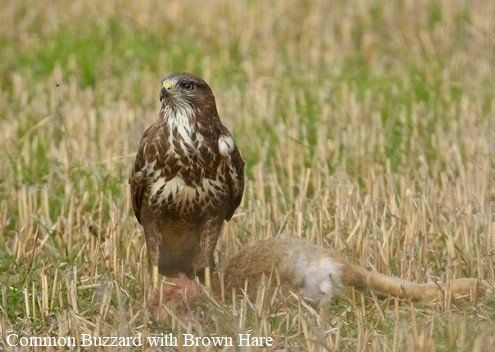
Hearing that a Spotted Redshank was on a pool at Burnham Norton we headed there next but the events that unfolded did not include a Spotted Redshank!
As we got out of the car and started to walk towards the track leading to the coast one of the three people looking intently at something shouted ‘Eagle’ to us. I must admit we were both not entirely sure eagle is what he said, but went with it and asked him whereabouts. The White-tailed Eagle was high in the sky with a Marsh Harrier, but seemed to be drifting in our direction.
Meanwhile a Red Kite came reasonably close and then 2 Common Buzzards were in the sky. The Eagle continued to be seen; a speck but a very noticeable speck! However, the aptly named ‘Barn Door’ by birdwatchers was moving away and eventually we lost sight of it.
This was Jason’s first ever Sea Eagle, despite a couple of near misses in the past and although we did not know it was being seen from here (although it came up on Jason’s pager shortly afterwards) it was a very welcome surprise sighting.
As we walked along the path I happened to notice a Bee on a Fleabane flower. Putting on my glasses I found it was a Colletes halophilus Sea Aster Bee and found out alter through a ‘Beemail’ with Dr. Nick Owens he had also seen female C. Halophilus in the same spot a week or so ago, when they were also taking pollen from Prickly Oxtongue and Sowthistle although Sea Aster didn't seem to be present. It just goes to show that the bees named after their ‘preferred’ food plant (as in the case of Sea Aster, Ivy and Heather Colletes) do not keep predominantly to that plant. In fact I have found Colletes hederae Ivy Bee collecting pollen from Sea Aster at Burgh Castle, just to add to the ID difficulty factor!
Common Darters and Migrant Hawkers were seen all along the track (at least as far as we walked) and at least 6 Wall were seen here.
A Chinese Water Deer sprinted across the field and on driving away from the car park a Muntjac was seen.
On the way back along the A149 we came across 2 more Common Buzzards in the sky near Wells, followed shortly afterwards by a Red Kite; a very interesting and productive day!
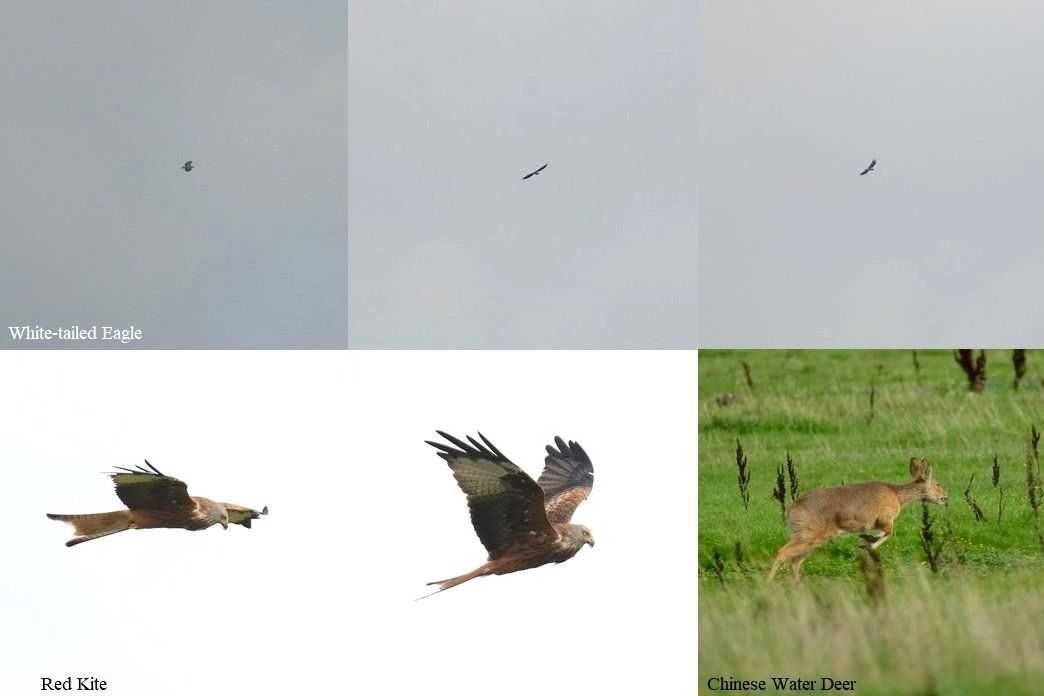

No Pallid but Ivy Bees save the day!
First stop of the day (15th) with Jason Nichols was at Salthouse Beach Road where at least 28 Curlews were on and around the fields. Good to see here was a Kingfisher as it flew along the dyke towards the bridge.
A juvenile Pallid Harrier had been reported at Holkham and Wells so we headed to Holkham next where it had just been reported from.
There was no sign of it from Lady Anne’s Drive or from various stop-offs back to Wells, although a Marsh Harrier was seen east of the drive and a Kingfisher flew over the road!
We decided to go and look from ‘the gate’ overlooking Holkham Freshmarsh and found 3 Great White Egrets here, 2 Common Buzzards and Pink-footed Geese. A message from Jason’s pager/app said the Pallid had just flown west from the drive, but despite some concentrated effort from both of us to see the harrier, no Pallid was seen just a juvenile Marsh Harrier!
A move to Brancaster Staithe for lunch found very little with the tide well in and boats going up and down the channel, but at least 15 Little Egrets were seen, a few Turnstone and small skeins of Pink-footed Geese.
Heading back along the coast a Red Kite was seen just before Holkham Freshmarsh and a stop at Wells’ Pools found 4 Black-tailed Godwit, 7 Ruff, 2 Red Kite and 2 Common Buzzards on a field, one of them a very pale headed individual.
Also here were Colletes hederae Ivy Bees (See Ivy Bee on Articles Menu for more) visiting the Ivy flowers for both pollen and nectar along with Common Wasps and an Eristalis tenax Hoverfly. A bit of photography followed as these were my first Ivy Bees of the autumn and to be honest there had not been much else to photograph today!
A stop-off at Burnham Overy Staithe, Morston Quay and Cley Coastguards yielded very little although both a Long-tailed and 2 Pomarine Skuas had been reported from Cley.
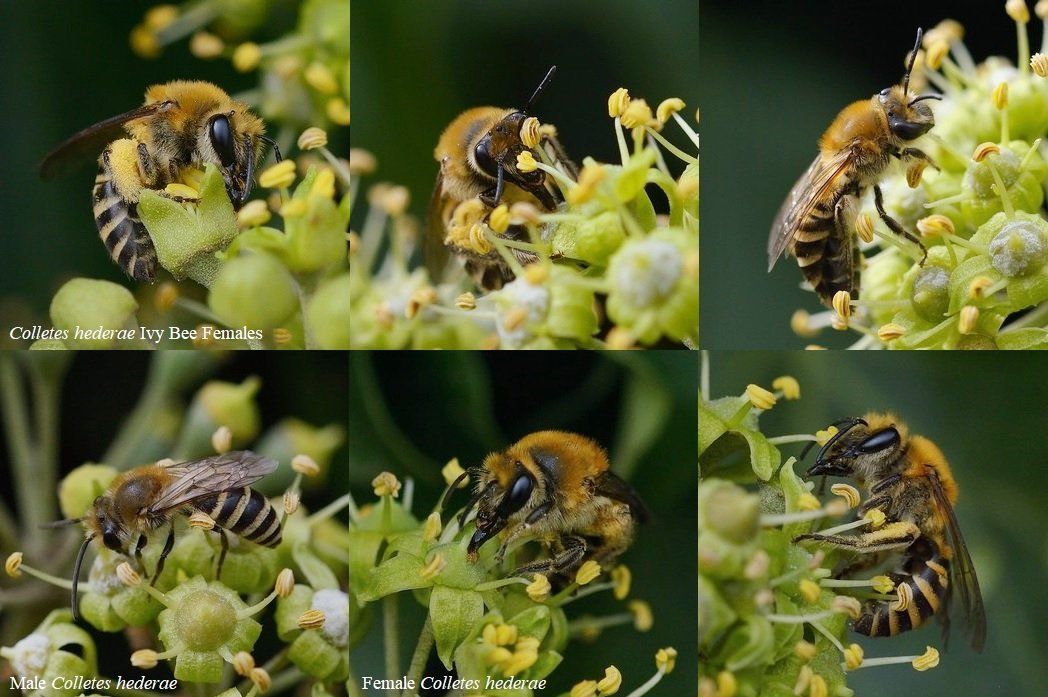
August 2022
Sea-watches; not like they used to be?
A brief seawatch began the day (31st) with Jason Nichols at Walcott. There was not that much going past but approximately 20 Gannets, 10 Wigeon and 3 Tern species all went south during the half an hour vigil. Some Turnstones still in partly summer plumage were the object for the camera.
Along the A148, just before the turning off to Sheringham there was a freshly killed Badger on the side of the road. This was reported to Norfolk Badger Trust, who do some really good work in recording and rescuing Badgers in the county; please support them.
Along Beach Road, Salthouse 2 Brown Hares were the highlight in pursuit of one another and Swallow and Sandwich Tern were also recorded.
Another seawatch at Cley Coastguards followed, but again there was very little going past in the stiff NE wind and just a few Gannets, Sandwich Terns and 20 Common Scoter were of note. Perhaps the days of very memorable sea watches are a thing of the past!
We were going to visit the middle hides on the reserve at Cley but on seeing a Landover parked near the hides and on Jason’s inquiry at the visitor centre our visit to the hides was thwarted by work going on to one of the scrapes and hides.
Nevertheless a spot of photography was had at Salthouse Duck Pond, mainly involving Moorhens; what a beautiful Rail these are!

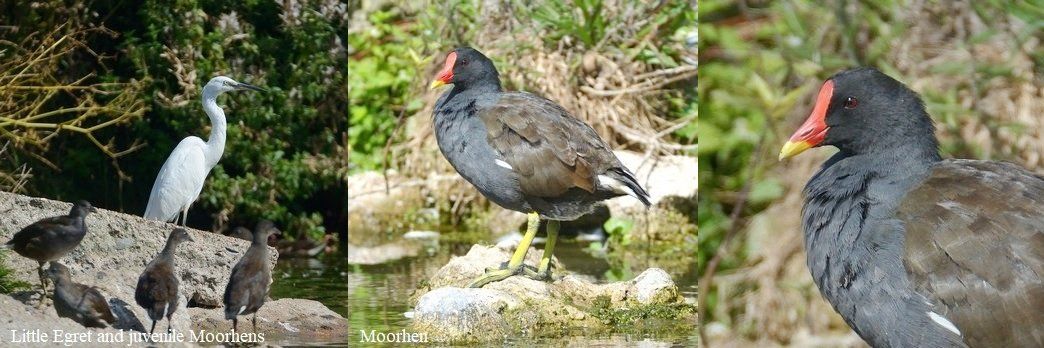
Vole Highlight and a Weasel crossing......
The day (24th) with Jason Nichols began at Beach Road, Salthouse, where Jase saw a Wheatear flying over and along a dyke, eventually perching on the bridge there.
A walk along the ‘Iron Road’ at Salthouse found 2 Ruff, 2 Redshank and a Dunlin on ‘Swan Lake’.
From the ‘middle hides’ at Cley we found a sleeping Greenshank, Green Sandpiper, 2 Common Snipe (is anything really common!?), 3 Ruff, Black-tailed Godwits and 4 juvenile Little Ringed Plovers.
Apex predators upsetting the status quo (no reference to the band, but Piledriver was the best of a bad job!) were a Hobby, Sparrowhawk, Kestrel and a juvenile Marsh Harrier.
On the way back to the car park, on crossing the road, I saw movement; a Short-tailed Vole moving alongside the verge overhang along the road. Never ever got to photograph this favoured prey of many predators, particularly Owls so I went out of my way (despite the poor light) to try and capture this beautiful little Vole; not just a prey item, an animal in it its own right. In some ecosystems this surely must come close to a ‘keystone’ species!?
On the way home another mammal was seen, when a Weasel ran across the road before Weybourne Railway Station.
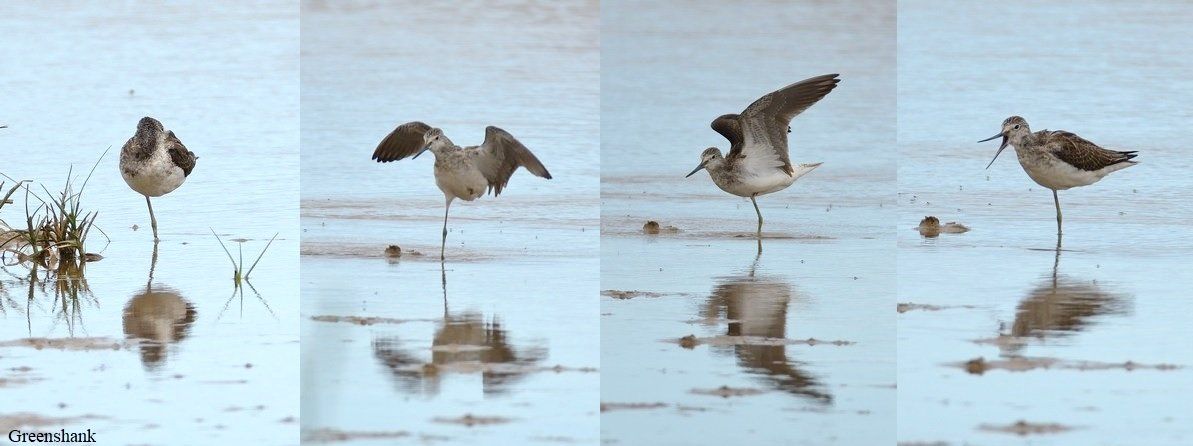
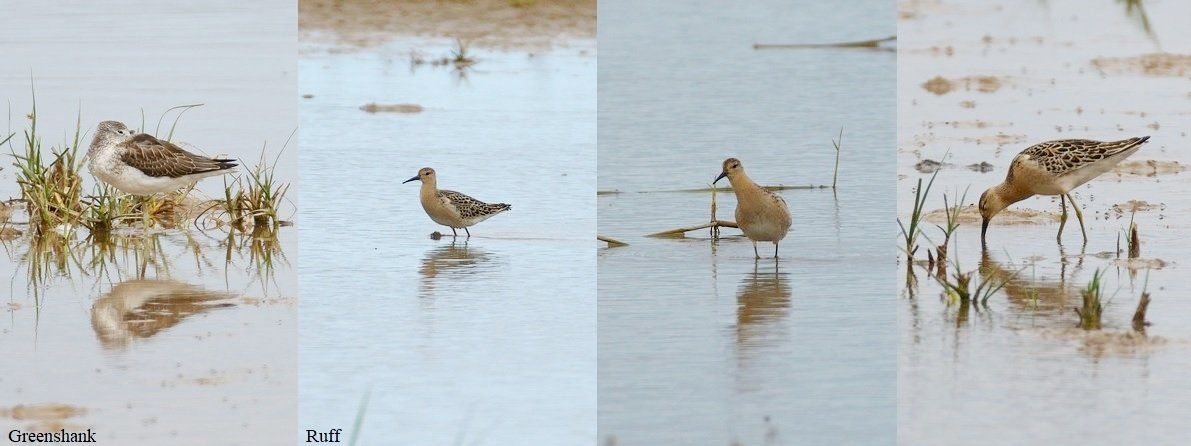

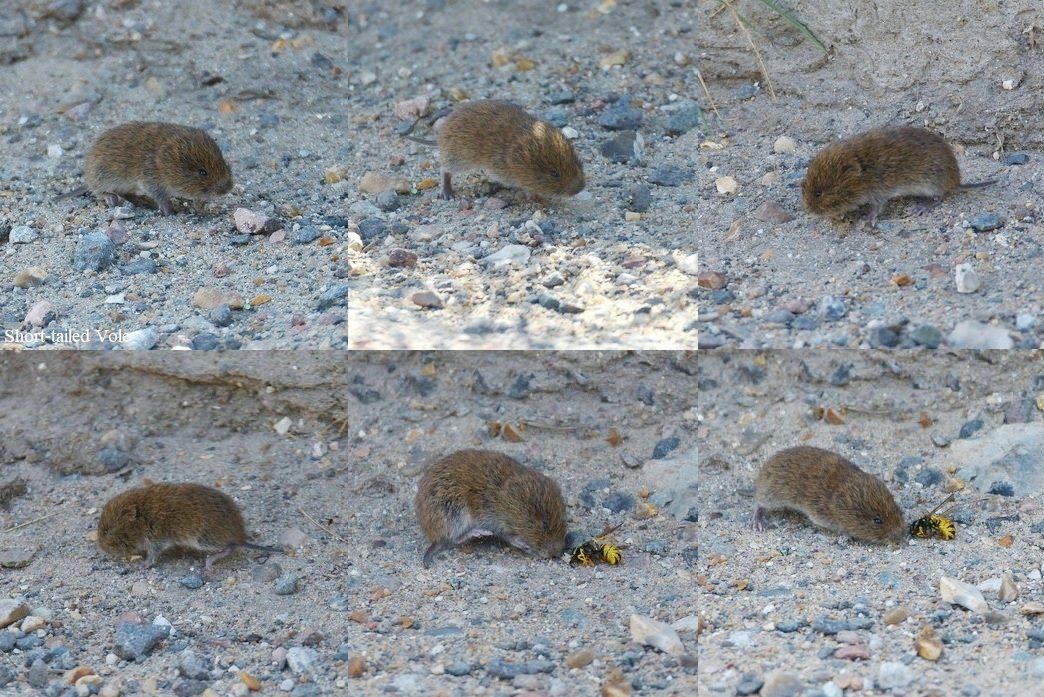

White birds, a new Bug, too hot for Crickets and a dead Cuckoo!
The day out (11th) with Jason began at Great Yarmouth Tesco’s as my mobile phone issues needed sorting out!
Back to usual business and at Burgh Castle we found at least 4 Spoonbills with several Little Egrets out on a ‘mud island’ as seen from the viewpoint.
A look around the field opposite the church found both a Brown Argus and a Common Blue, but apart from a few Gatekeepers and several Common Darters there was not much to be found. However, a new species of bug (for me) was found; a Syromastus rhombeus Rhombic Leatherbug.
A look for Crickets followed at Reedham, but there were none to be found; probably too hot for cricket! However a single male Meadow Grasshopper was the only Orthoptera representative.
On to the Weaver’s Way at Hickling where very little was on offer, probably due to the very hot conditions, although male Ruddy Darters were seen every few feet on the way to the public hide, where a respite from the heat was very welcome.
Brown Hawkers were seen quite often, a Willow Emerald Damselfly was found perched and a Great White Egret was seen on two occasions.
A sad end to the day was the discovery of a dead juvenile Cuckoo along Decoy Road.
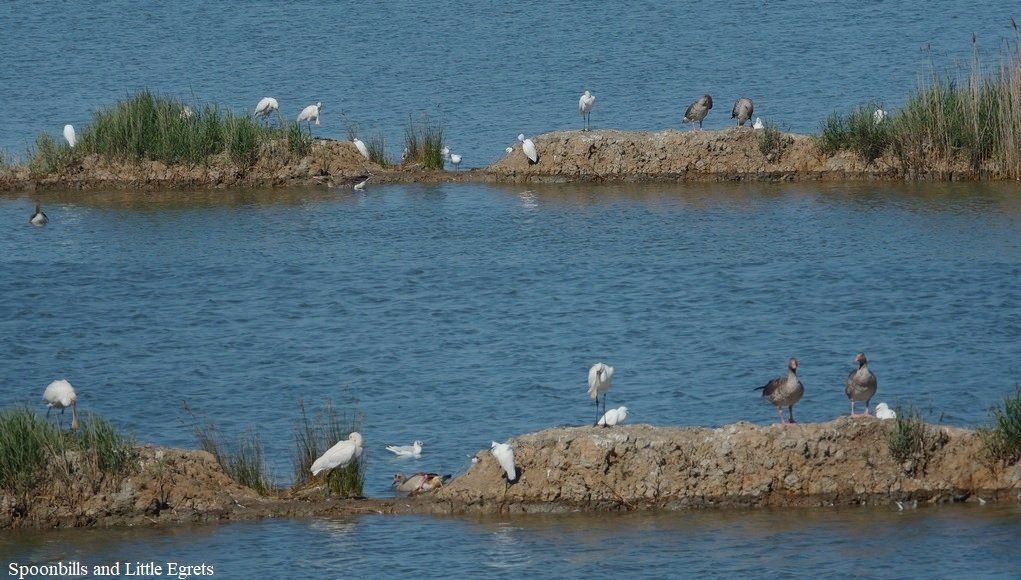

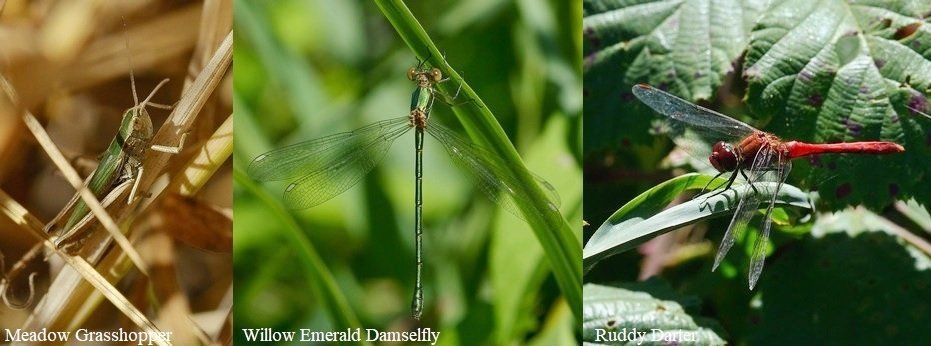
MURDERED today by the Directorate of Fisheries in #Norway because she was perceived as a "continued threat to human safety". Hugh Harrop Wildlife @HughHarrop......
I have just seen the news (14th), via Hugh Harrop Wildlife on Twitter that the Norwegian Directorate of Fisheries euthanized Freya the Walrus, because she was perceived as a "continued threat to human safety".
In response I have sent this email to Norwegian Directorate of Fisheries:
Hi.
I have just heard (via Hugh Harrop Wildlife on Twitter) what you have done about Freya the Walrus and I am absolutely disgusted!
You murdered a perfectly healthy animal because your people cannot live alongside wildlife.
What chance have we got as a race to live beside nature, which we all totally depend upon when you carry out these measures?
Thoroughly disgusted,
Perry Fairman BSc hons. Environmental Biology and PGCE.
I found their email online but here it is if you are as incensed as I am to protest about this disgusting act by Norway: postmottak@nfd.dep.no.
Two new specialist Bees at Beeston and distant but colourful but distant views......
Today’s trip out (4th) with Jason Nichols was in the words of Jimmy Greaves: ‘A game of two halves!’ The first part of the day was a visit to Beeston Common in search of two specialist Bees and the second, revisiting the Bee-eaters at Trimingham.
En-route, we came across yet another RTA Badger, just south of Wayford Bridge. The casualty was reported later to the Norfolk Badger Trust.
This was only our second ever visit to Beeston Common, the first some years ago for a Shrike but this time insects were on the agenda and it was not long before I saw an interesting Bee on Mint sp. flowers, which I photographed and it was revealed to be a female Macropis europaea Yellow Loosestrife Bee, which specialises on (as the name suggests) Yellow Loosestrife, although clearly other plants are visited as here on Mint flowers. These Bees collect pollen but also floral oils and another female was found again later, this time covered with pollen and seemed to be collecting something from a leaf, although this could have been water. A good patch of Yellow Loosestrife was found but no Bees were present on it.
The second specialist Bee found here was eventually found once we had located its food plant Red Bartsia, which it is strongly attracted to. A small Bee flying from one Red Bartsia flower to another gave a good clue to the Bee’s identity and indeed this was one of at least two female Melitta tricincta Red Bartsia Bees found here.
Other insects found during the visit included what seems to be a male Megachile maritima Coast Leafcutter Bee on one of many Fleabane flowers in bloom on the common and also found on this plant was a female Andrena thoracica Cliff Mining Bee. Several Bombus pascuorum Carder Bumblebee were also present.
Two of our larger Hoverflies were here, mainly on the Mint flowers; Volucella zonaria aka Hornet Hoverfly and V. Pellucens aka Great Pied Hoverfly.
Also of interest was a Turnip Sawfly Athalia rosae, a Wasp sp. possibly an Ectemnius species, a Sicus ferrugineus a Conopid Fly which is a parasite of Bumblebees amongst other species of Hymenoptera depositing an egg in the abdomen of a living Bumblebee, a Common Wasp Vespula vulgaris in a Spider’s web, along with an Earwig species, a male Short-winged Conehead, male Emperor Dragonfly, Philanthus triangulum Bee-wolf (on the more Heath part of the common) and a Brown Argus.
A fascinating and enjoyable visit here with two new species of Bee seen and photographed, we will be back.

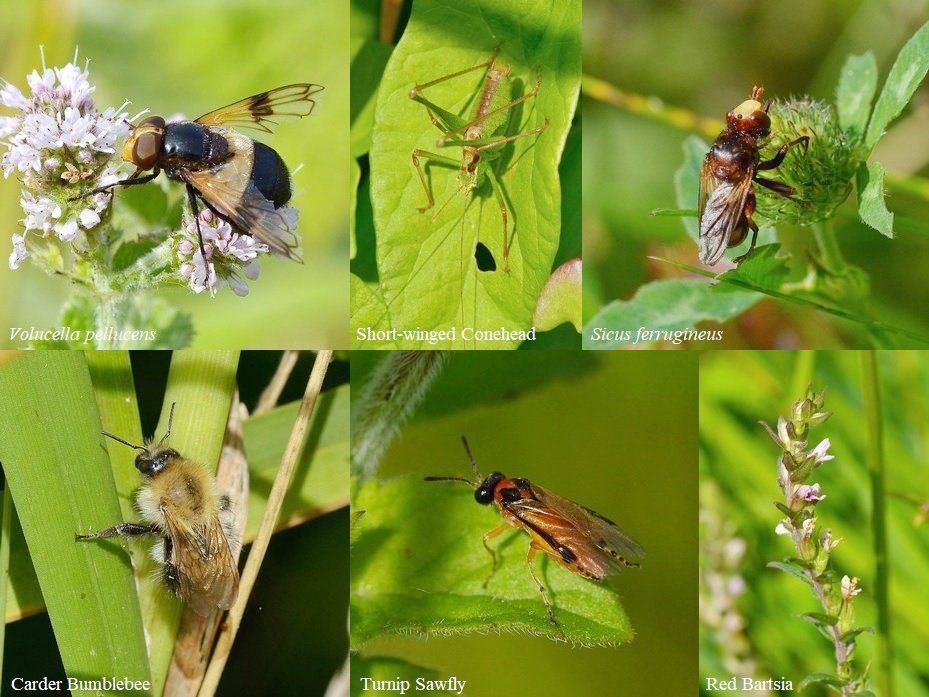
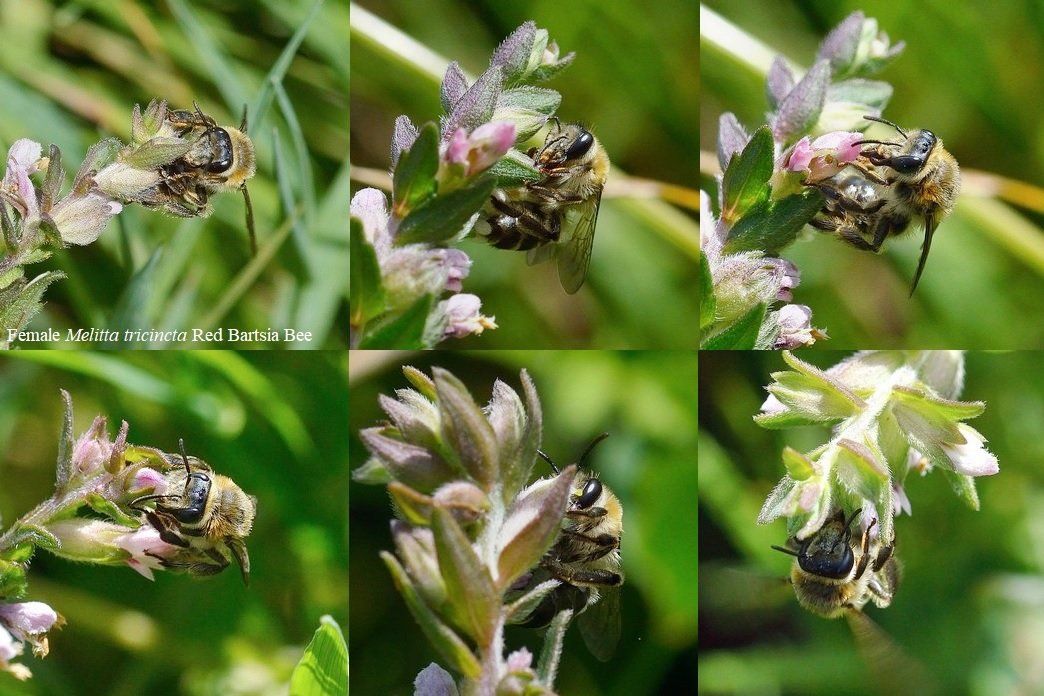
We then decided to revisit the Bee-eaters in the quarry at Trimingham and after paying the £5 fee we walked down to the ‘viewing point’. One single Bee-eater was visible on a telegraph wire some distance away and four of these colourful Mediterranean visitors were seen in total.
However, despite there not being quite as many visitors here as during the first visit, we were obliged to listen to the constant ‘commentary’ (in a language I wouldn’t even consider to speak to Primary School pupils) by a well know ‘blogger’, who said he had been watching Bee-eaters for 40 years (in Suffolk really?!) and described the Bee-eater’s call as a ‘chortle’! What?!
So like I said (or Greavsie did) a game of two halves; the first half being far superior to the second!
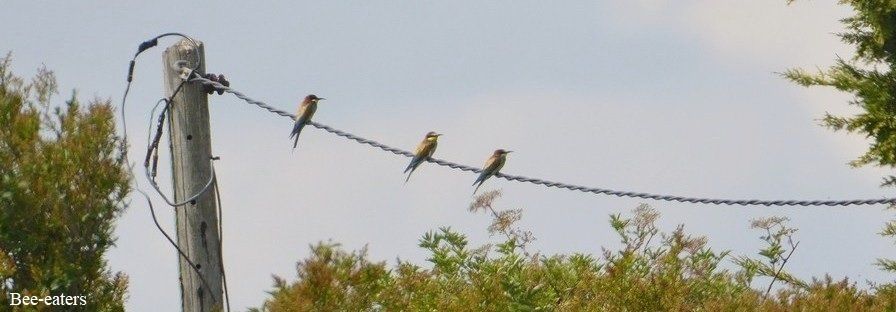
July 2022
Another Badger casualty and waders at Cley......
An unfortunate sight was a Badger road casualty along the A148 just before Bodham to start the day (28th) out with Jason Nichols.
With a distinct lack of rainfall, everywhere was incredibly dry and there was very little to see along Beach Road, Salthouse, so we decided to have a look around the reserve at Cley.
From the middle hides we found Green and Common Sandpiper, Black-tailed Godwit, Ruff, Avocet and a Little Ringed Plover with three tiny chicks. Also here was a Yellow-legged Gull a male Reed Bunting collecting food in front of the hide and a Swallow perched on the barbed wire. On the walk back a Common Lizard was found and a Wall butterfly.
At Weybourne Cliffs the very brisk wind meant that the Bees were conserving energy and very little was seen. However, a Pantaloon Bee female looked out from its burrow and 3 Cliff Mining Bees were found on the ground, sheltering from the wind. On the way back across the car park there was a group of Tansy plants, which had attracted at least 5 male Pantaloon Bees.


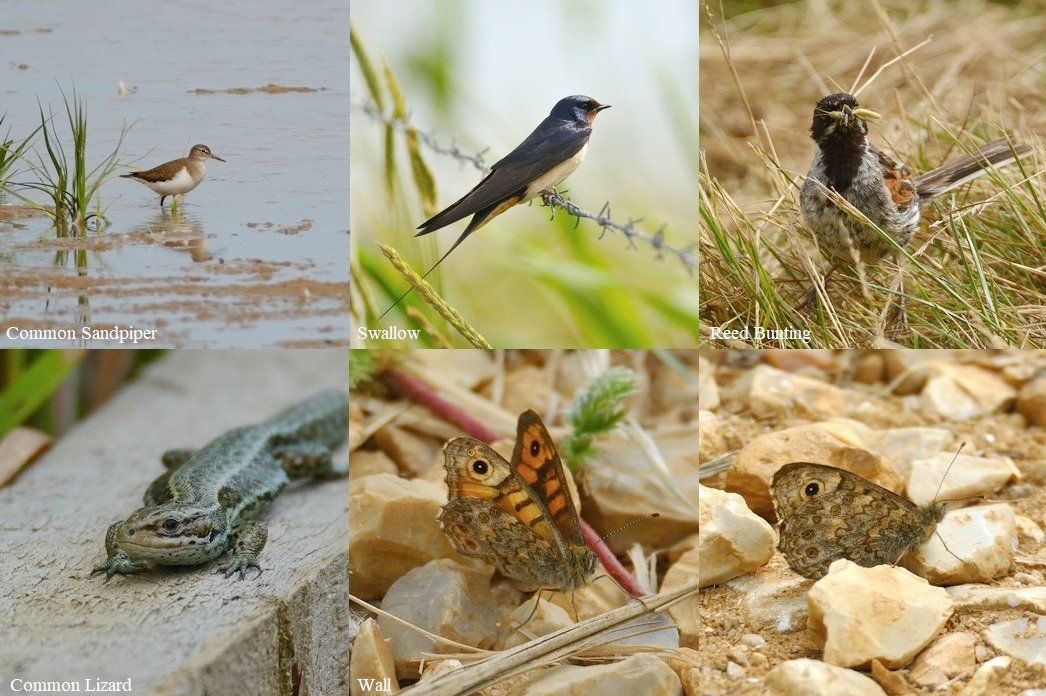
Pantaloon and Shaggy Bees and a parasitic satellite fly......
The day out (14th) with Jason Nichols began at Somerton Staithe, where we looked for the Yellow Loosestrife Bee Macropis europea (information from James Emerson), along the flood bank near Somerton Mill. Unfortunately, despite some earthworks being found (from presumably a Bee species) there was no sign of this species but an Andrena dorsata was found.
At Weybourne Cliffs we had better success with Bees finding the very female noticeable Pantaloon Bees Dasypoda hirtipes visiting their burrows and excavating. There was always the cleptoparasitic Satellite Fly Miltogramma germari present looking for the opportunity to parasitize the Pantaloon Bees. Male Pantaloon Bees were seen later visiting Asteraceae flowers.
Also present here were Large Shaggy Bees Panurgus banksianus males, Cliff Mining Bees Andrena thoracica females collecting pollen and Silvery Leafcutter Bee females Megachile leachella taking, what looked like green plant stem segments to their nest burrows.
Also found was a Sharp-tailed Bee species possibly Coelioxys conoidea and a Variegated Cuckoo Bee Epeolus cruciger Red-thighed Epeolus and several 6-spot Burnet Moths on Thistle species.
By the time we arrived at our next stop; Holt Country Park the temperature had dropped and the skies were cloudy, which was not exactly conducive with finding insects. I fact we only saw three Butterflies; 2 Ringlet and a Silver-washed Fritillary!
However, we did find a few insects of interest resting on the vegetation, including (not for the first time here) a male Red Longhorn Beetle Stictoleptura rubra. To date I have never come across a female.
A Brown China-mark
Elophila nymphaeata (thanks to Ken Saul for a definite ID) was found and from a piece from Norfolk Moths, says the following:
'China-marks' are unusual in that their larvae are entirely aquatic, Brown China-mark larvae inhabiting a floating leaf case.
Also here were small Bees one of which was a female Andrena denticulata and a Micrandrena (Mini-miner) sp. (thanks to Dr. Nick Owens for his help particularly with these two bees) and two immature Speckled Bush Crickets.
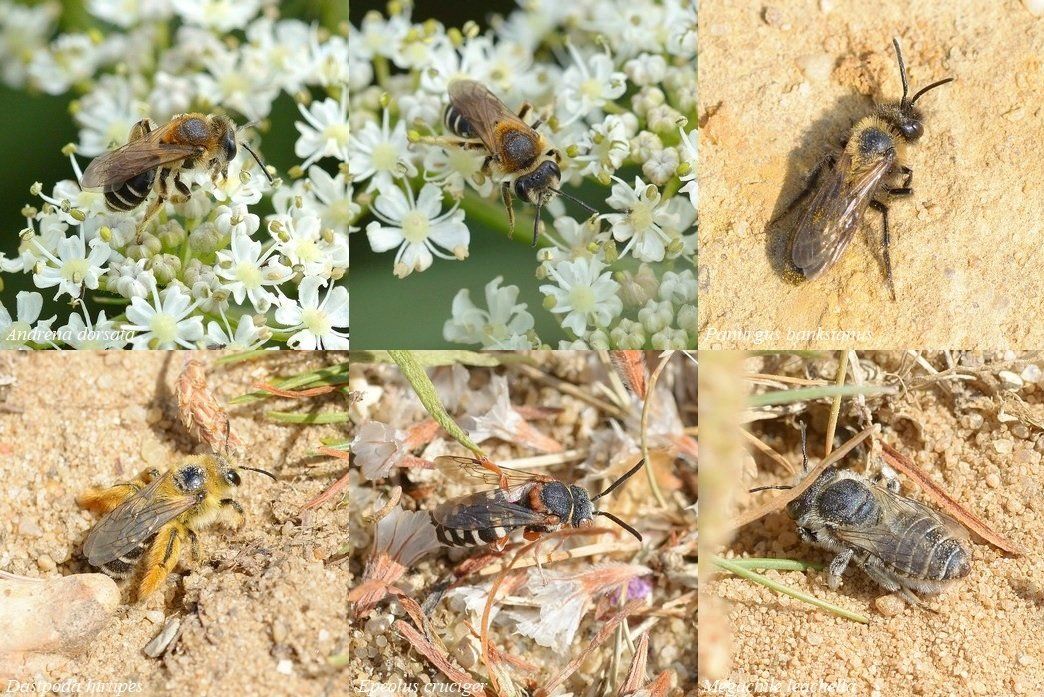
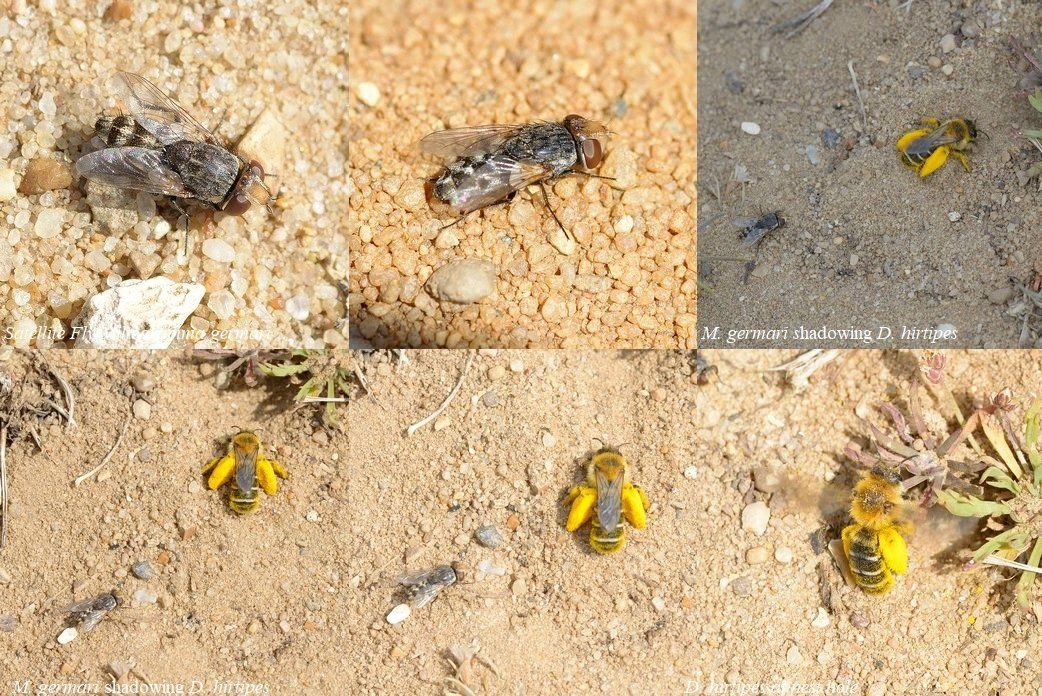

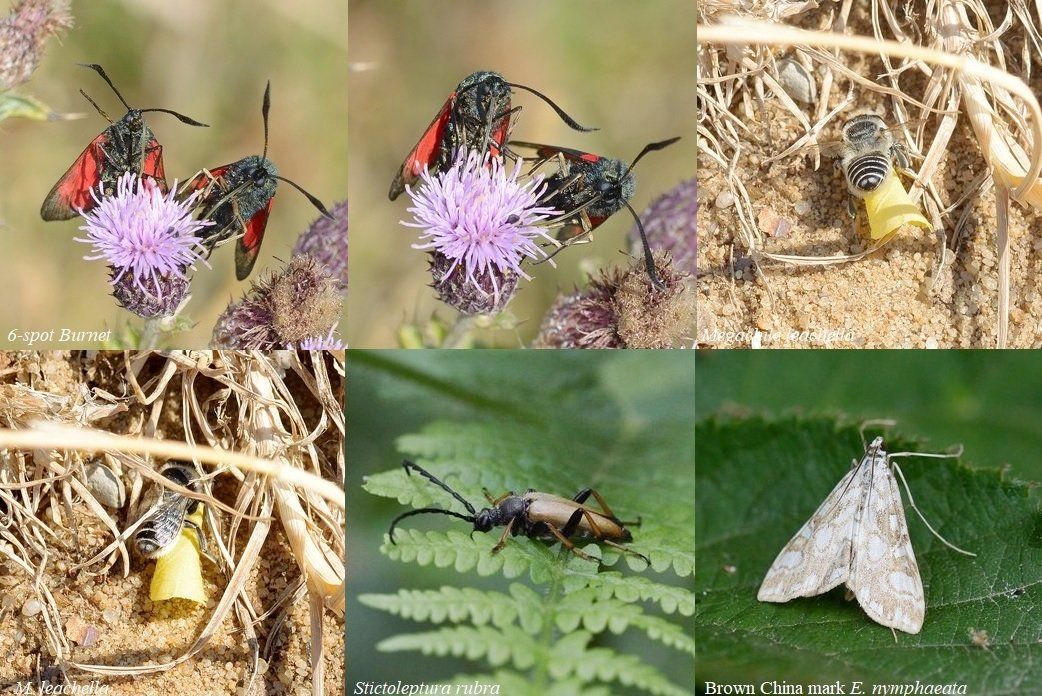
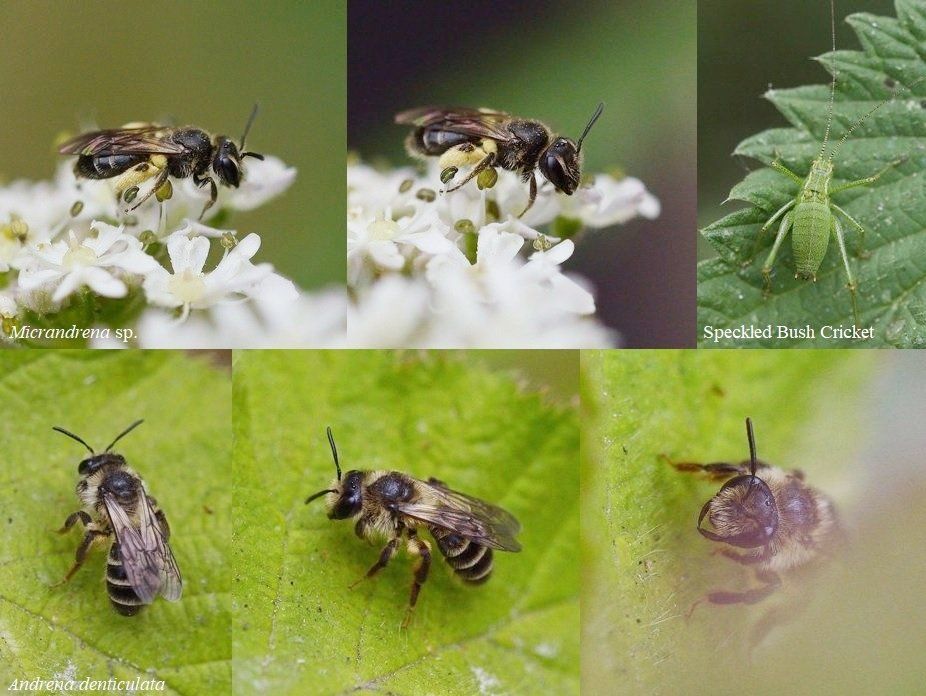
Please help my countryside and everyone's wellbeing......
So here we are again; the planet is burning and now it’s close to home. The planet floods and still everyone sits on their arse pretending it’s a blip and it won’t affect them.
Well, I hate to tell you but devastation is here and in my opinion it is too late for humanity to do anything about it. Why? Because the warnings have been there for a very long time and in human ignorance they have been ignored by the Christian/ Judaism culture and anthropocentric values humanity still holds.
There is no use in praying for the sick disillusioned idiots that still believe that a chocolate teapot orbits the sun; we have not evolved we have de-evolved and time is running out, if it hasn’t already.
Politics and wars (recently) have got in the way of the main war and now we are going to suffer as Gaia wreaks its revenge (if you believe that). However, it is a fact that the global composition of gases has influenced this planet for millions of years, so why are we (the majority of us) ignoring the very obvious signs, as we pump greenhouse gases into the atmosphere of our Earth, a closed system, basically what goes around comes around and now it has come around.
The Earth will still continue as it has for at least 4.5 Billion years but this time without us as we destroy on every turn the very things that brought life and evolution for us to exist. We have nowhere else to go but still continue along a path that makes no sense; or is it ignorance and religion (much the same) that drives us forward blinkers firmly on.
How many butterflies are there in your garden? Just as a point of reference that everyone, insect-wise knows. How many pollinators that provide you with food do you think exist that your tidy methods are killing. Do you know? I doubt it. Are you interested, I doubt it as long as supermarkets supply what you want and do you care: No you bloody don’t, I have met these people!
Around where I live in Martham, Norfolk there are no-go areas for wildlife, the local ‘tidy’ residents see to that backed by the infamous Great Yarmouth Borough Council; favourite colour brown; ultimately dead vegetation with the lawnmowers and weed-killers they will take the Earth and disregard anyone that gets in their way and I know as I have a shed load of email exchanges from them, either passing the buck or denying their obligation to all of the people who pay their wages and not just the tidy ignorant people littered around the county and country. The majority of the 70+ (not all in that age group) are the worst offenders.
So what is to be done? Well some of us refuse to lie down and fight these people who would bring a global extinction going on now, faster than the Permian/Triassic extinction was, but it needs numbers of people, a few are not enough, please stop my countryside and my wellbeing being destroyed.
First visit to Foxley Wood......
For some reason I had never visited Foxley Wood before but a visit there today (10th) with Sally Clarke rectified that, seeing a Green Woodpecker flying alongside a hedgerow just before the wood.
Foxley Wood is ancient woodland (woodland that has existed continuously since or before 1600), although modern forestry practices (such as the planting of Conifers) have not been beneficial nor has the lack of working the wood as it once would have been such as the practice of coppicing.
Nevertheless, Sally and I began a walk around the wood (not entirely sure which way to go!) and looked mainly for Butterflies and near the car park, standing in one place I recorded 5 species: Speckled Wood, Large White, Large Skipper, Meadow Brown and Gatekeeper, so a good start.
The first of many Silver-washed Fritillaries (including two valezina forms) was seen along with Ringlet, Comma, Peacock and Small Skipper. The first of about 6 White Admirals was seen, along with Green-veined White, Small White, Purple Hairstreak and male Brimstone just before our return to the car park.
There was no definite sign of the Purple Emperors reported here, although a ‘large dark butterfly’ disappearing behind the top of a conifer looked interesting. Likewise, no White-letter Hairstreaks were encountered.
Calling Nuthatches, Common Buzzard and various Warblers were also recorded, but there just didn’t seem to be any great diversity of animals in general, considering this was a relic of the woodland that used to cover most of England!
I know from my work during my degree mapping wood banks and coppicing management in Wayland Wood that this wood was probably not being managed in a way to produce more biodiversity, or is that there are just a very limited amount of species in the UK. With various organisations stating rapid declines in species and my own first-hand evidence watching in real time the Natural World disappearing fast I would suggest that the evidence is overwhelming!

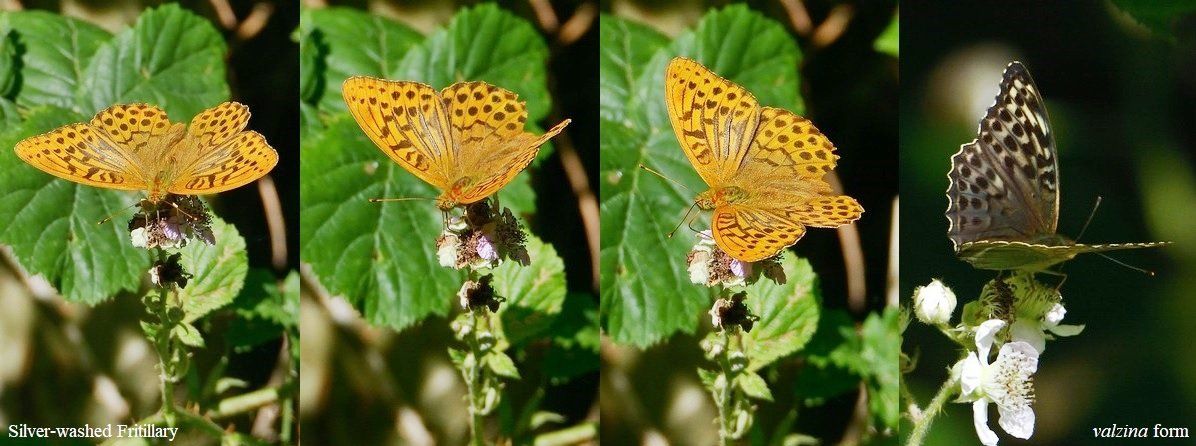
Med Gulls and a search for Owls......
The rather brisk wind made the original plan (7th) to find and photograph insects a very difficult challenge, so that was left for another day.
Jason and I started out at Salthouse, where a flock of Gulls on the field there contained at least 15 Mediterranean Gulls. There seems to have been a movement on the east coast of Norfolk in recent days with up to 300 being counted on the beach at Norfolk (Jeremy Gaskell). Also of note were a Sand Martin Reed Bunting and flyover Avocet.
At Cley Coastguards, a brief look out to sea saw a Little Gull, 2 more adult Mediterranean Gulls and 2 adult Gannets east.

We then decided to head back and have a look around relatively locally, starting at Ranworth, where we looked for Spotted Flycatchers, seen here in the past. However, there was no sign of any flycatchers and some of the Ivy-clad trees where I know they used to nest were no longer there! A Goldcrest busily searching for insects in the conifers and a Garden Warbler heard singing were of note.
Next on the agenda were Little Owls, but the first site we went to (after a bit of detective work) did not yield any owls on this occasion, so we headed to another site, where we had seen Little Owls in the past.
At Strumpshaw/Buckenham we parked up and scanned the trees for the owl but the windy conditions amongst other potential reasons prevented any immediate sightings. However, after a while Jason spotted one perched on a dead tree, before it flew to a low Oak branch where at least some of it was photographed (see image). The owl didn’t spend too much time there either and flew back to its original tree and out of sight, still an owl to end an enjoyable day out.
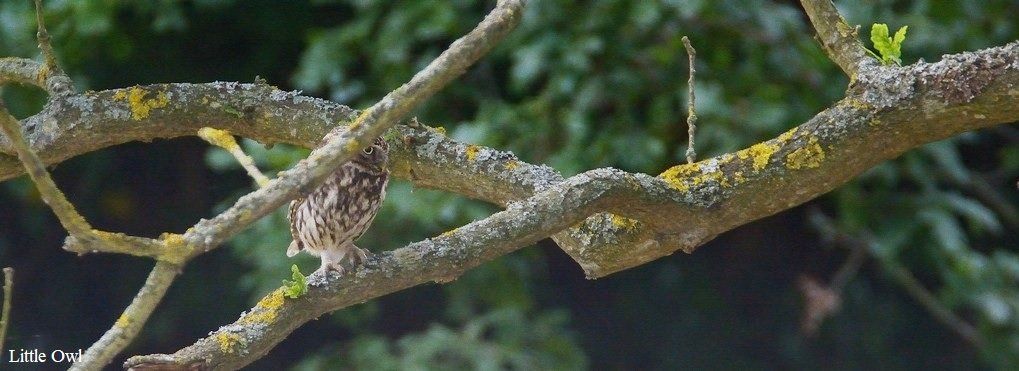
June 2022
'Inland Norfolk': Honey Buzzard, Yellowhammers and Badger road signs!
After some encouraging reports of Honey Buzzards near Swanton Novers, Jason and I decided to have a trip to ‘inland Norfolk’ (30th) to look for them.
Many years hence I had made regular trips here to watch for the Honey Buzzards, with varying success and today it didn’t look over optimistic with 3 Honey Buzzards in the air together at 8.30, prior to our arrival. I must say that we never used to get to this site early, perhaps we should have done!
Nevertheless we found a parking spot in the field, which was almost full of cars, with people hoping to see the Honey Buzzards and began the vigil!
It was nice to see and hear Yellowhammers throughout the visit, which look to be doing well here as opposed to elsewhere. Also here was a Garden Warbler taking insect prey into a hedge, Common Whitethroats, Linnets, Goldfinches and several Ringlets around the area at the edge of the field.
Eventually at approximately 12.30 a Honey Buzzard appeared and flew low across to the wood, where it disappeared, at least from our viewing position. Common Buzzards were also here along with a Sparrowhawk (a Goshawk was seen before our arrival) and a Marsh Harrier. Not too many photographs today and certainly not one of a Honey Buzzard, but some of a female Yellowhammer with insect prey were very welcome; not many chances to photograph this breeding behaviour nowadays!
After a while with dark clouds coming in we decided to make our way back home, encountering a herd of young Red Deer all with a blue ear tags, near Melton Constable. Also in the area close to the Honey Buzzard site were a first for us, road signs saying Badgers for 1 Mile! Never seen these before but very welcome.
Finally on the way back torrential rain came down resulting with Jase having to stop the car for a while!
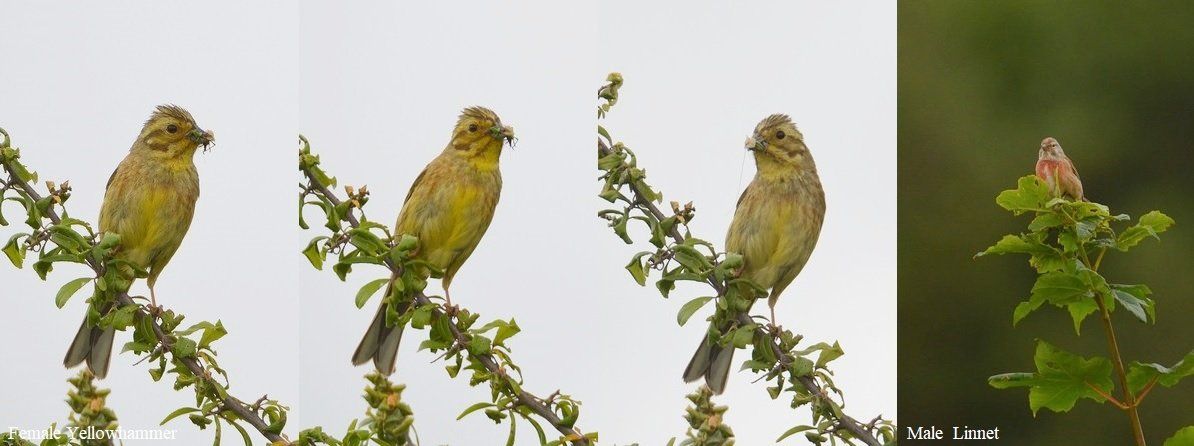

Bempton and the North Yorkshire Moors......
Back in May (18th & 19th), Jason Nichols and I made a trip to Yorkshire to visit Bempton Cliffs and the North Yorkshire Moors. Finally, a written report with photos and videos has been made and this can be seen on the Wildlife Holiday Photo Journals.
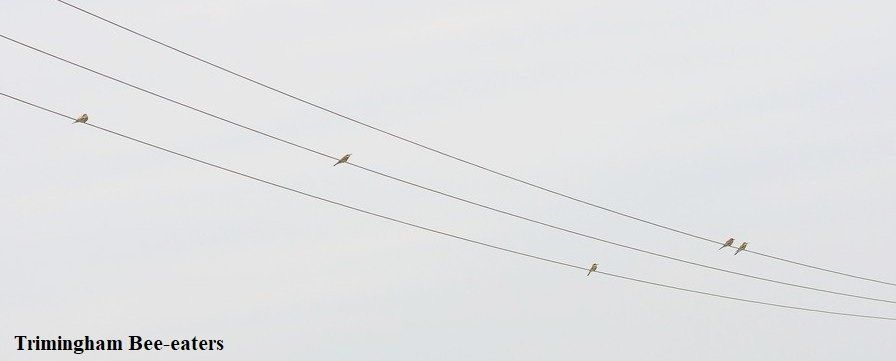
A somewhat shorter than normal fieldtrip today (23rd) with Jason as Jason had other commitments; but an interesting one nevertheless.
Bee-eaters had been reported for sometime along the east/north Norfolk coast and the news had been released that they were breeding in a quarry at Trimingham, so we went for a look.
On the way, just after Horsey Gap a female Chinese Water Deer with a very small fawn were making their way across the road. They entered a Wheat field and occasionally a head would pop up but there was no chance of photographing them so we left them to go about their business; lovely to see nevertheless.
Finally after a drive along the coast road we arrived at the field near the quarry, manned by the RSPB, who were charging £5 to park.
I have to say this not really my idea of enjoying Nature amidst lots of people and cameras going off in rapid fire mode (never really understood why these ‘wildlife photographers’ do this) but we stayed for a while and managed to obtain some long range images of the Bee-eaters, although the side light wasn’t really Bee-eater enhancing.
Still it was what it was and you can only do what you can in those circumstances, plus Jase took a video (See below) using his phone and telescope, which highlighted some constant mating behaviour of one ‘pair’ on the telegraph lines. Presumably the male, was bringing in prey items, which he then offered to the female, which then on most occasions facilitated mating to take place.
The Bee-eaters were fairly successful in obtaining prey, mostly Bumblebees and using the photos a Small Tortoiseshell and 2 Red Admirals were identified.
However, insect species evolved to use what is called Batesian mimicry (adapting the features of a poisonous, stinging insect, such as a Bee or Wasp, for the harmless insect to ward off predators) had clearly no effect (in fact the reverse) with this predator!
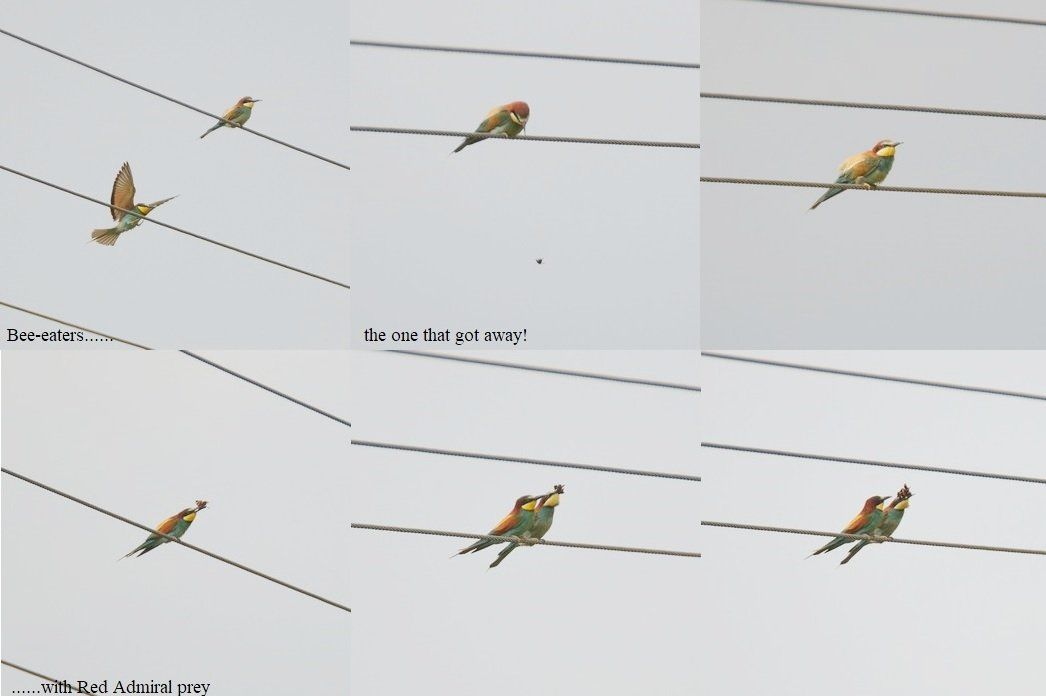
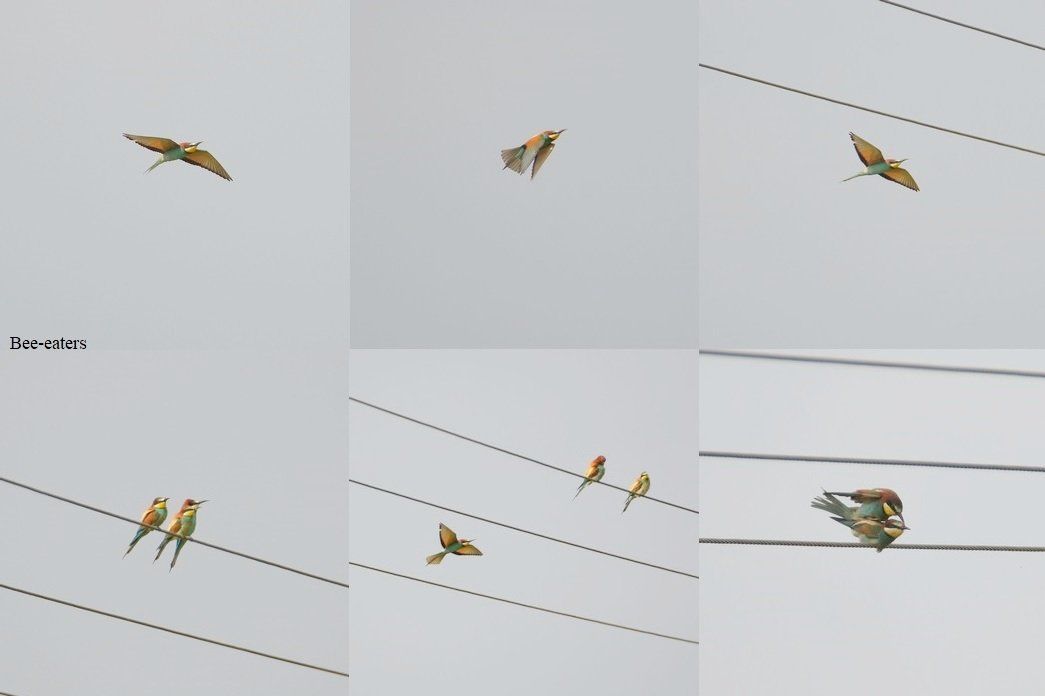
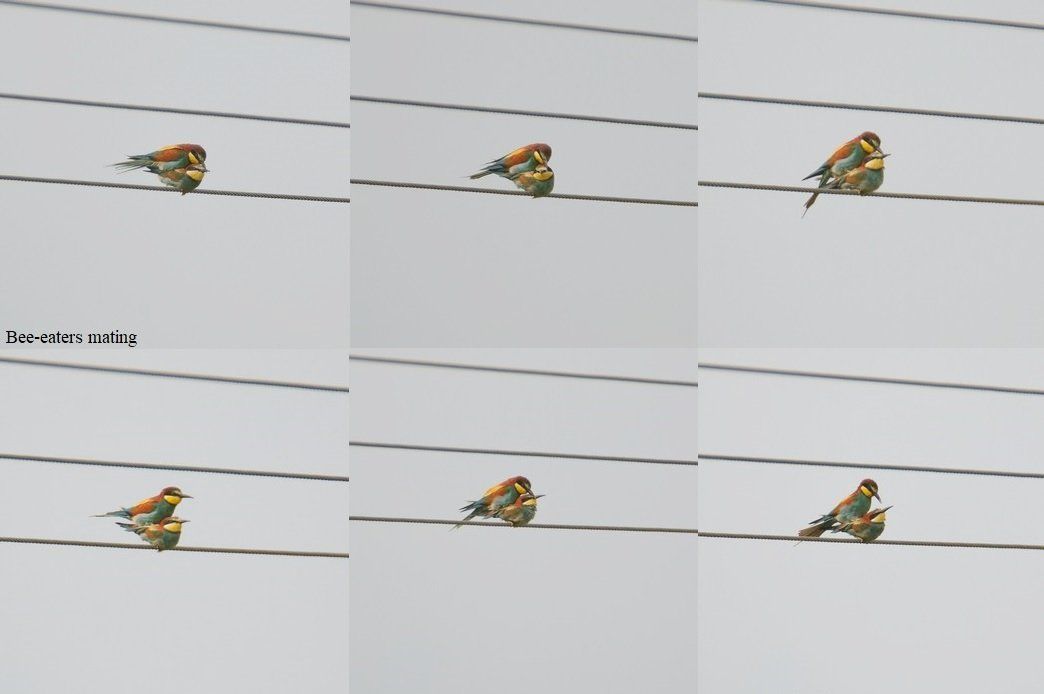

Interesting Insects including a Mini-miner......
The first thing of note, whilst out with Jason Nichols (16th); was the sad sight of a Badger road casualty between Aylmerton and Bodham; near the junction of the A1082 to Sheringham.
With not much to report apart from two juvenile Redshanks with their parents on the Eye Field, Cley, it wasn’t till just west of Stiffkey that a Common Buzzard perched in a roadside tree and a Red Kite flying near to the road were seen.
At Well’s Pools, another Red Kite was seen along with Common Buzzard and Marsh Harrier and 5 Spoonbills were seen at Holkham Freshmarsh.
Deciding to concentrate on insects, we headed to Warham and en-route saw 2 Red Kite and 2 Common Buzzard and a Common Whitethroat singing.
The walk down to Warham Camp is usually productive and it was on this occasion. There had obviously been a good emergence of Meadow Browns, with at least 30 along the track and more around the fort. Small Tortoiseshell, Red Admiral and Large White were also seen.
A Six-spot Burnet and a Garden Chafer were of note along the track as was a very small Bee. Later with the help of Dr. Nick Owens the Bee was identified as a Mini-miner and Nick thought it was a female Common Mini-minor Andrena minutula. A new one for me whatever the case; thanks Nick.
Several more insects of note were found; a very resplendent Soldierfly-a male Broad Centurion Chloromyia formosa, a Two-girdled Digger Wasp Argogorytes mystaceus, several Black and Yellow form Volucella bombylans which mimics Bombus lucorum and an Ornate-tailed Digger Wasp Cerceris rybyensis.
A brief walk alongside the fort found both Pyramidal and Common Spotted Orchids, but too much else of note insect-wise.
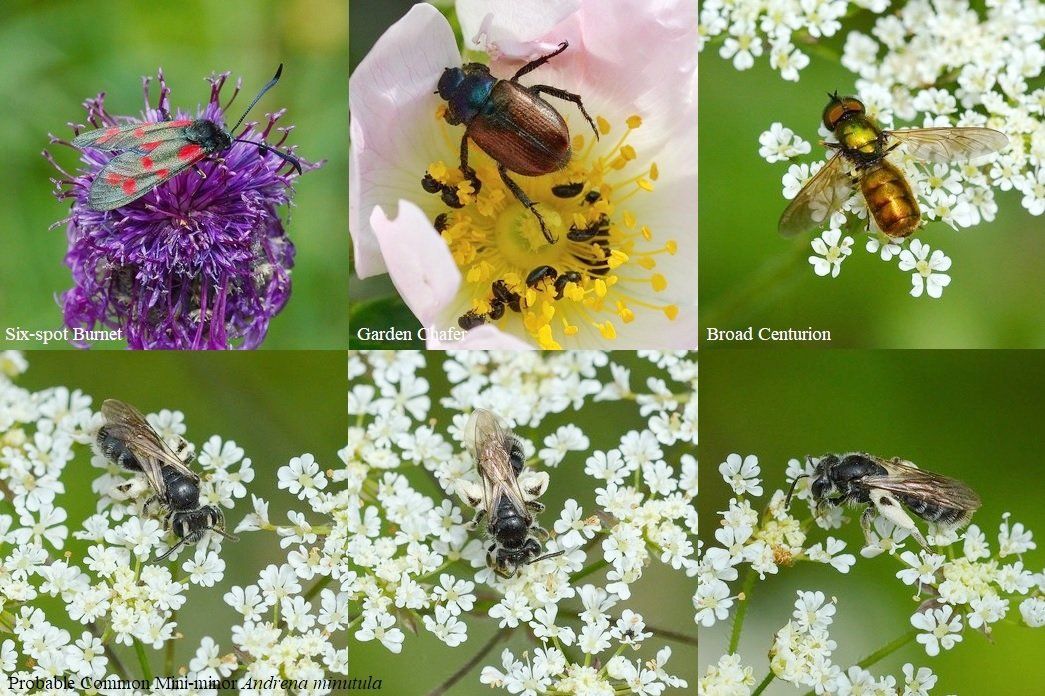

We headed back closer to home and called in at Filby. Although there was no sign of the Red-throated Diver seen off and on over the past few days, there were a variety of Dragonflies on the wing.
I have never seen so many male Red-eyed Damselflies along the path and there were also Azure, Blue-tailed, Common Blue and Variable Damselflies. Norfolk Hawker, Four-spotted Chaser and Black-tailed Skimmer fulfilled the larger Anisoptera dragons.
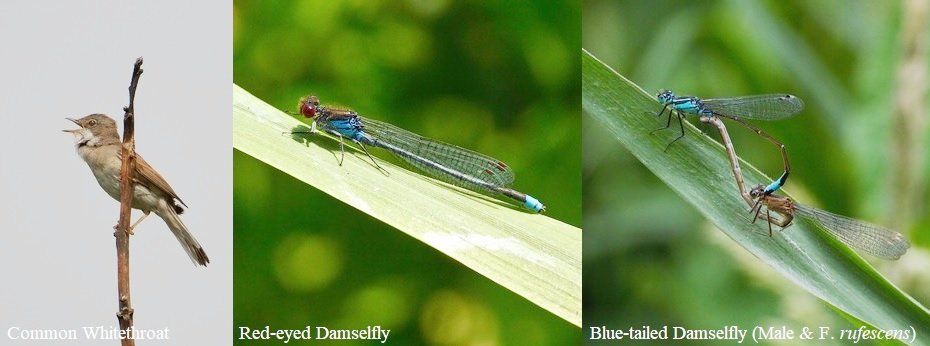
50% decline in UK Butterflies and individuals are still spraying weed-killer!
An announcement on Springwatch (15th) that Butterfly Conservation had said that there had been a 50% decline of our Butterflies is really bad news, but anyone looking around can see for themselves the lack of abundance of butterflies in general, along with other insects!
However, unbeknown to me at the time a woman (image opposite by Jason Nichols) was spraying weed-killer along the paths at Burgh Castle that same day.
Jason Nichols informed me of this incident, when he came to pick me up for our usual Thursday fieldtrip, saying that the woman in question, when asked what she was doing said she was spraying ‘weeds’ encroaching on to the path. When Jason asked her why she was doing this she said she had been asked too and when asked who she was spraying for, she said the National Trust. However, the woman offered no identification and had no clothing and masks, which are normally insisted upon by organisations who still carry out this unnecessary and quick-fix remedy to obliterating the very plants that give us what we all depend upon; oxygen!

Jason contacted the National Trust, who said it was nothing to do with them and he has sent an email (as yet unanswered) to English Heritage
It would appear that this individual was spraying land not belonging to her on her own initiative, based on the lack of protective gear and vague reasoning about why she was doing the spraying or who for!
This spraying of weed-killer on areas where insects have a resource and where rare Bee Orchids grow (or used to!) is unacceptable and an investigation into why this was being done and the identity of this individual should be carried out.
While we are encouraged not to mow and grow more areas that are attractive to our rapidly dwindling insect populations, it would seem any efforts some of us make are futile when there are individuals or organisations carrying out this destruction of habitat for the sake of so called ‘neatness’.
I would suggest that anyone not wishing to benefit from the Natural World (which we are doomed without) or indeed contribute to biodiversity, at the very least in their own gardens, that they go and live in somewhere like a supermarket car park, or in a flat with no garden!
It’s bad enough that this area is governed by Great Yarmouth Borough Council who has no concern about our Natural World, do nothing to increase biodiversity and continue to mow areas within an inch of their life and still spray weed-killer (which they decided in 2018 not to do anymore on natural surfaces, apparently!). Now it would appear that members of the public are making decisions about the environment we live in as well, which they have no right to affect.
A day with variety and bookended with Swallowtails......
The day out with Jason (10th) began along the Weaver’s Way at Hickling, where before long we saw our first Swallowtail of the year. A very ‘fresh’ individual, but wasn’t hanging about to be photographed! Other butterflies seen were: Large Skipper (first of the year), Small Tortoiseshell, Red Admiral and Green-veined White.
Norfolk Hawker, Four-spotted Chaser, Black-tailed Skimmer and Red-eyed, Azure, Blue-tailed and Variable Damselflies were encountered along a short walk. A Cuckoo was calling and Reed, Sedge and Willow Warblers were in song but in very limited numbers compared to times gone by! A Marsh Harrier appeared over the woods and was then seen off by a calling Hobby.
Peacock larvae were on the Stinging Nettles and several Dock Bugs were found and a queen Hornet flew over the reeds.
A very small Bee resting on a leaf turned out to be a good find. This was one of the Hylaeus Bees or Yellow-face Bees. After some research later I identified it as a male Hylaeus pectoralis Reed Yellow-face Bee, which makes its nest in Common Reed stems. Dr. Nick Owens confirmed its identity for me, which was my first H. pectoralis.
Also found was a very metallic small green beetle, a Chrysolina herbacea Mint Leaf Beetle and a very rare wasp, an Odynerus simillimus Fen Mason Wasp, which were once thought extinct in the UK until they were found at Hickling in 1986! Although I have seen them many times in the past, both along the Weaver’s Way and on the reserve at Hickling it was good to see one once again.

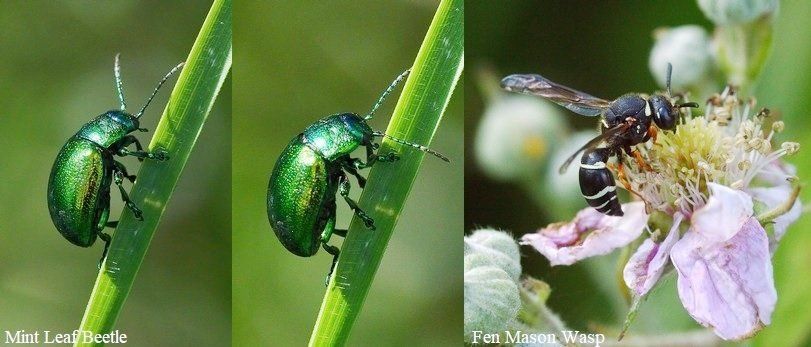
Further along the coast, we walked along the ‘Iron Road’ at Salthouse, where we found the reported Little Gull, plus two Mediterranean Gulls in plumage I have not seen them in before. A Sedge Warbler came out of the vegetation with a beak full of insects and a Reed Bunting sang from a reed head.
A visit to the middle hides at Cley, encountered a gentleman looking at a plant. What he was actually looking at was a Longhorn Beetle, an Agapanthia villosoviridescens aka Golden-bloomed Grey Longhorn Beetle (prefer the real name, which I have always known it as before getting this ‘common name’!).
The middle hides looked out on to very little bird life, but of note were Avocets (only one young seen!), Little Ringed Plover, Dunlin, 3 Little Egret and a pair of Swallows nesting in one of the hides.



Deciding to head back, we called in at Potter Heigham Marshes, where there were at least 30 ‘woolly bears’ the larvae of the Garden Tiger moth in the vegetation and good numbers of Small Tortoiseshells.
4 Common Terns were here, along with Avocets and a Cuckoo was heard, but as the day began it also ended with a Swallowtail and this one did allow a few photos! For more on the breeding cycle of Swallowtails see: Wildlife Galleries.

May 2022
Little Terns the highlights in North Norfolk......
Two little Terns at Cley Coastguards were nice to see and some images obtained, whilst out with Jason Nichols (26th). 3 Sandwich Terns were also worthy of note.
2 Little Egrets were the highlights from Morston Quay and at Wells East Pools 2 Little Ringed Plovers, Marsh Harrier, Common Buzzard and Brown Hare were also seen.
A Red Kite was seen at Holkham and another over Roughton, not encountered at this venue before!
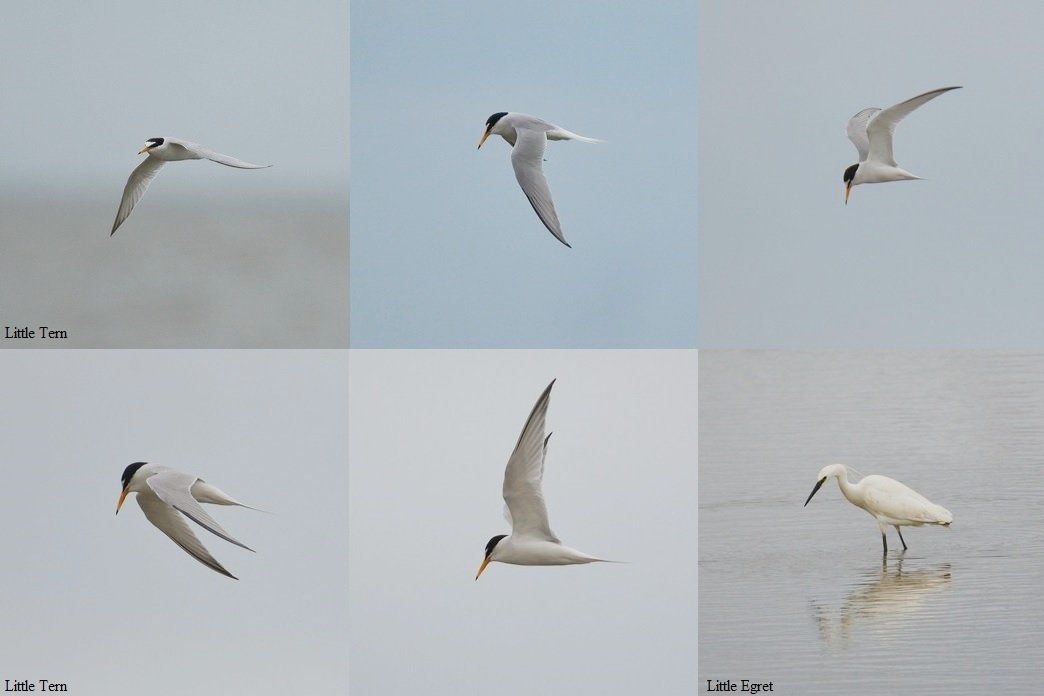
A new avian species at an old 'stomping ground'......
A morning text message from Jason Nichols (24th) suggested a visit to Hickling, one which I was welcome to accept.
The NWT reserve at Hickling was the new venue for the much travelled White-tailed Lapwing, having been seen the previous day on the relatively new ‘Brendan’s Scrape’ (soon to be reedbed, give a few years!) and a walk along the path also gave us the chance to see a Caspian Tern (top 2 images below with Little Ringed Plover in the background in first image) along with at least two Little Ringed Plovers.
Further along we gathered that the Lapwing was still there, but presently hidden behind some reeds.
However, eventually the WTL came into view (below), albeit some distance away; a ‘tall’ wader with bright orangey legs and the first sightings of this species for both Jason and myself. Whilst observing the wader and taking some long distance images it was not impressed with the company of a Lapwing and chased it off but returned, before disappearing behind some reeds again.
With Jason due at work, we took our leave after an enjoyable impromptu visit to a place I have not visited for a long while, despite spending a lot of time there since the age of 11!



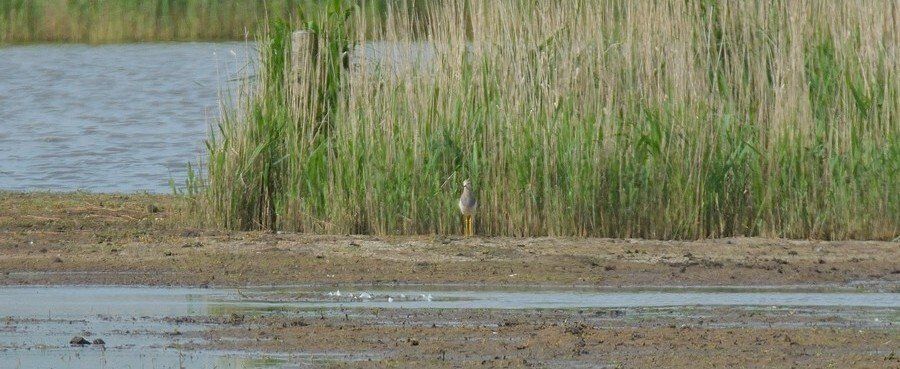



Breckland Skippers, first Demoiselles and Potter marshes......
A trip to the Brecks with Jason Nichols (12th) began with a brief stop at Ormesby Little Broad to see if the previous day’s Osprey was still present. It wasn’t but the first Four-spotted Chaser of the year was seen.
En-route along the A11 two Badger road casualties were found; one NE of Wymondham and a second 5 miles east of Thetford. Both were reported to the Norfolk Badger Group.
At Foulden Common, we looked for Norfolk’s two rare Skippers. With the weather being rather overcast and with a fresh breeze insects were keeping in cover and finding them was difficult. However, Brimstone, a male Common Blue, Large White, Peacock were fond before coming across a Grizzled Skipper. 3 Small Coppers and a Small Heath followed before finding the other Skipper; a Dingy Skipper.
A Common Lizard was also found along with a Dark-edged Bee-fly, Red headed Cardinal Beetle Pyrochroa serraticornis and a Cinnabar Moth.
At Santon Downham’s Little Ouse a Cuckoo was heard along with a Willow Warbler.
Drake Mackerel Mayflies Ephemera vulgata were found, along with several Large Red Damselflies and the first two Banded Demoiselles of the year.
A Green Longhorn Adela reaumurella was found and several Red-headed Cardinal Beetles, a probable Nomada flava Nomad Bee and a mating pair of 22-spot Ladybirds.
Back closer to home a visit to Potter Heigham Marshes began with a Kingfisher flying along a reedy dyke and then by the discovery of a Temminck’s Stint.
There was no sign of a Glossy Ibis but the following were recorded: 2 Common Tern, Little Egret, Sedge, Reed and Cetti’s Warbler, Common Whitethroat, 4 Sand Martin, 6+ Swallow, Marsh Harrier, drake Pochard, several Tufted Duck, Great Crested Grebe and Little Grebe.
Several Drinker moth larvae were found along with ‘woolly bears’; Tiger Moth larvae.

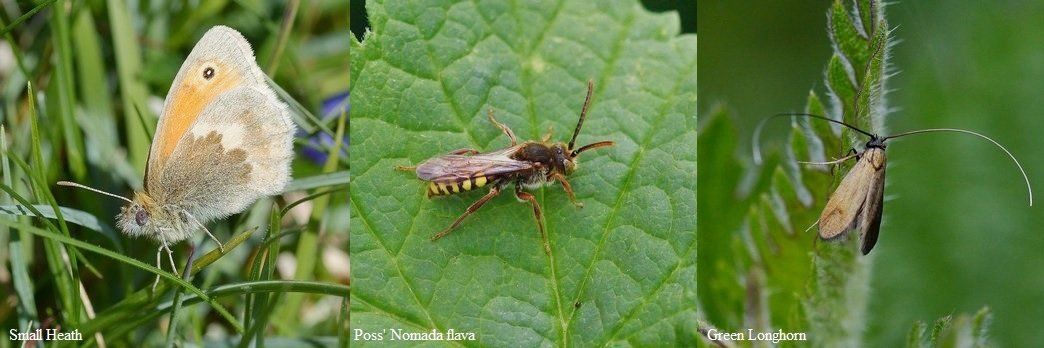
Dragons and migrants at Filby......
A visit to Filby (9th) and a walk along the path to the viewpoint at Ormesby Little Broad heard Garden Warbler, Blackcap, Chiffchaff and Reed Warbler in song.
Four species of Damselfly were found of which Variable were the most numerous followed by Large Red, Blue-tailed and Red-eyed. A Hairy Dragonfly was briefly seen before reaching the viewpoint and a few Tetragnatha Stretch Spiders were also seen.
At the viewpoint the first 2 Common Terns of the year were seen and a Common Sandpiper flew across the broad. Several Great Crested Grebes, 22 Mute Swans, Common Buzzard and Marsh Harrier were also of note and there was a good hatch of Alderflies.
Butterflies seen during the visit were Orange-tips, Green-veined White, Large White, and Peacock and Small Tortoiseshell larvae on the Nettles.
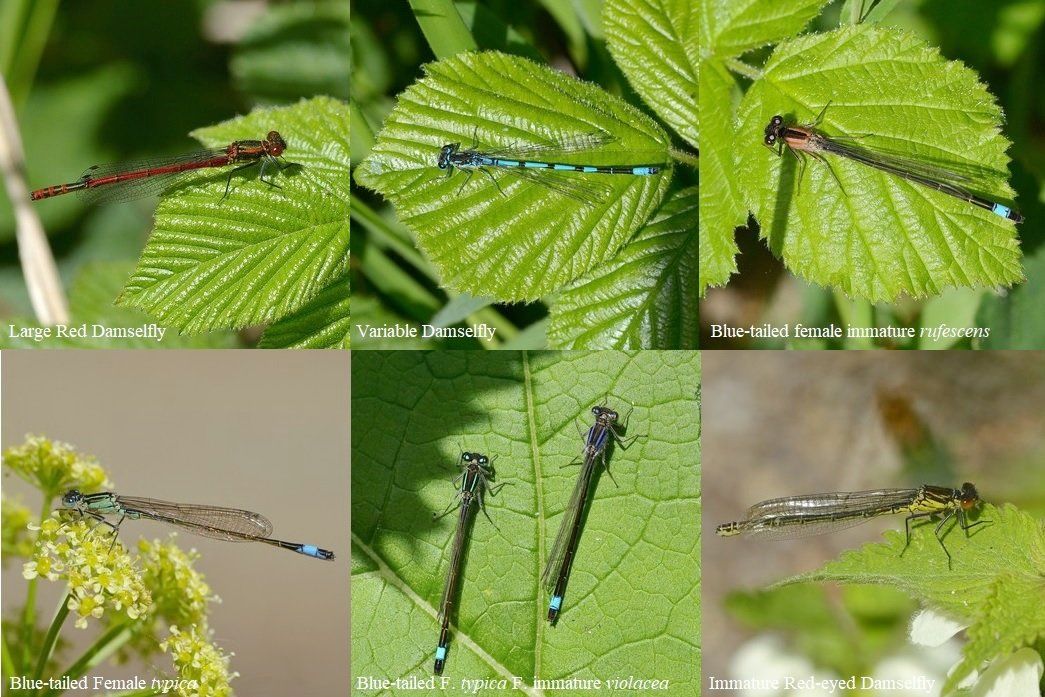
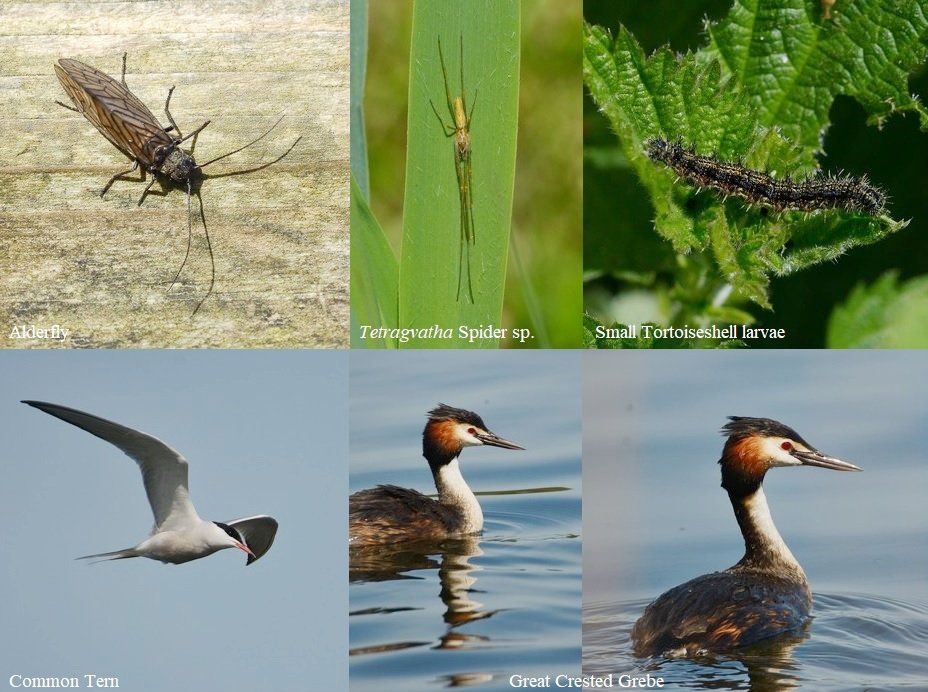
A few new migrants and other wildlife interest along the North Norfolk Coast......
A trip along the North Norfolk coast (5th) with Jason Nichols started with a Swallow at Kelling Railway Station and another 3 Swallows were seen a short distance further on.
At Beach Road the first 2 Whimbrels were seen and also of note was a fishing Little Egret and two more Swallows.
A walk along the Iron Road at Salthouse found a Little Stint, a Sedge Warbler and two singing Reed Warblers.
2 Grey Partridges were seen from Beach Road, Cley, along with 2 male Reed Buntings, a Swallow and two distant Sandwich Terns offshore at Coastguards.
A Red Kite was at Morston and en-route to Wells; Red Kite, Common Buzzard were seen along with Orange-tips, Green-veined Whites and Brimstones along the road verges.
At Wells East Pools 2 Snipe and 3 Yellowhammers were the highlights, as were 2 Spoonbills flying west, just before we left.
A pleasant walk at Burnham Norton saw House Martins and Swallows and a singing Blackcap on arrival, followed shortly afterwards by our first Large Red Damselflies of the year. Reed, Sedge and Cetti’s Warblers were in song and a Great White Egret was hunting one of the distant pools, through the heat haze. A Wheatear was also of note as was a Chinese Water Deer and several Peacocks. Leaving the car park a Common Buzzard was perched on the top of a telegraph pole and for once actually stayed there to be photographed and a pair, of Brimstone was along the road verge.
A stop at Brancaster Staithe was mostly uneventful apart from a Chinese Water Deer (not recorded here before) being harassed by crows.
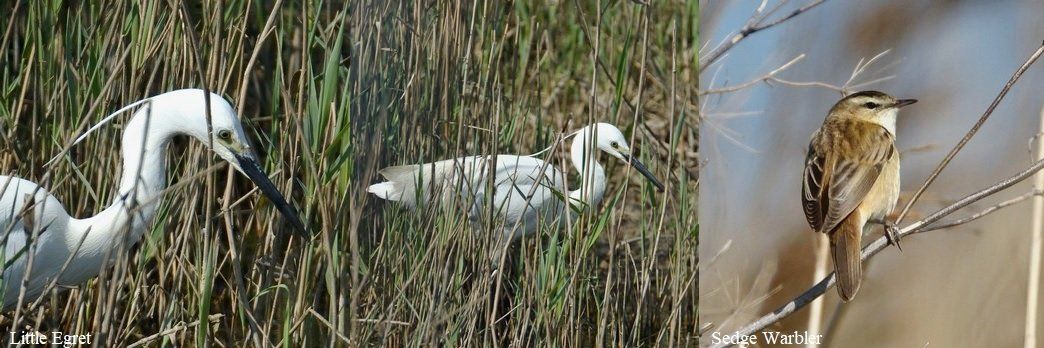

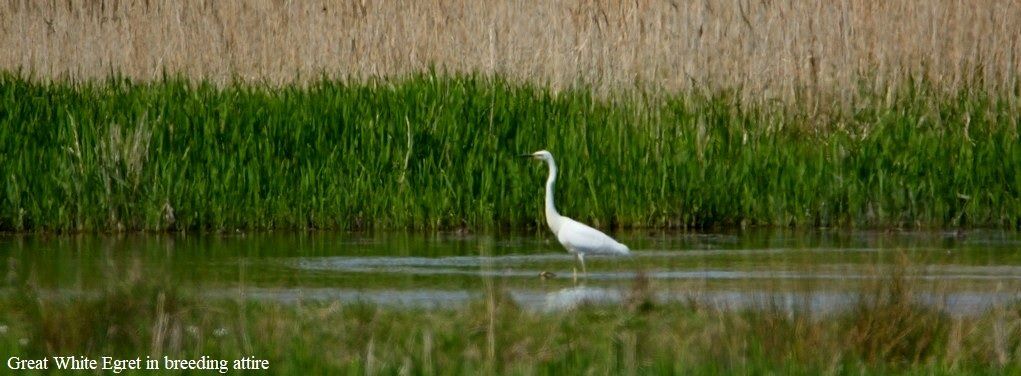
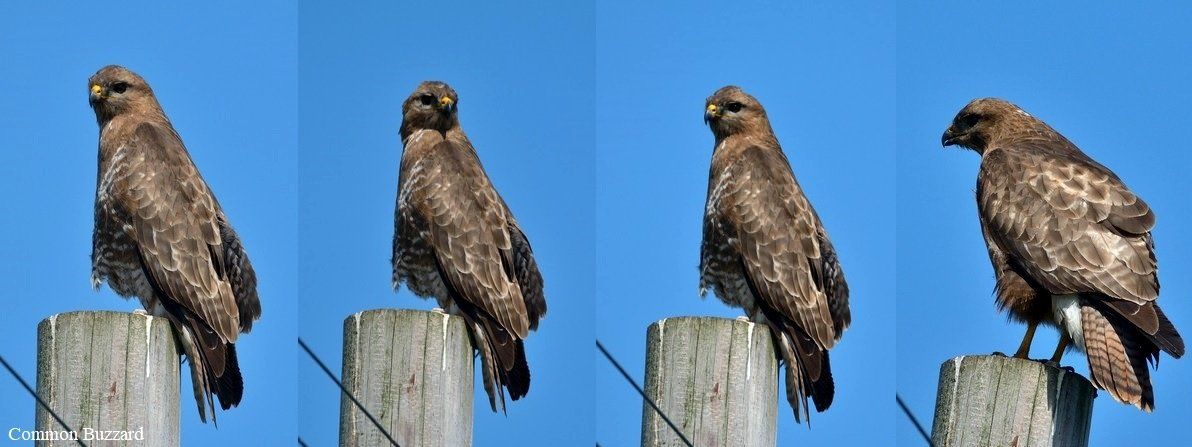
April 2022
Absent Corvids, but a biodiversity of wildlife......
Both Jason and I both saw a report on a ‘blog’ stating that Raven’s were nesting in a ‘well known’ Norfolk monument! Having worked out via images and dialogue (reportedly from 19-4-22) where exactly this was, we headed towards the ‘secret site’!
Our journey (21st) towards North-West Norfolk found our first 2-3 House Martins of 2022 at Roughton above the buildings; good to see these white-rumped Hirundines back, although they are not always welcome where they nest on buildings because of a few droppings for a meagre amount of time during the year, whilst they raise their families! Perhaps if they were Ukrainians they would be more welcome!
To be brief; there was no sign of the Ravens at the designated point and the only reason I am being candid about the exact location (although obvious, if true, although there was the remains of a nest!) is that if by not stating where the nest site was, helps Ravens in future years, then this is worthwhile, although I feel, that’s futile!. However, the blog in question (not going to name it, as this is a ‘blog’ which is amateurish at best and non-factual) pinpoints the site very well for anyone with half a brain cell, but I wonder if the date of the report is actually exact; the juvenile in the image does not look ready to fledge in the time before Jason and I arrived!
A Green Woodpecker, Nuthatches and a singing Blackcap were heard at Holkham Park and a Red Kite was seen overhead. The usual herd of Fallow Deer were present and a Muntjac was seen in the wood adjacent to the car park.
A brief visit to Brancaster Staithe was brief because of the lack of birds and a greater presence of people playing at being Captain Pugwash in their dinghies!
At Choosley (much quieter!), we heard a Common Whitethroat singing and then a Yellowhammer.
Orange-tips, Green-veined Whites and Peacocks were along the verges and coming back down to the main road 2 Holly Blues were seen (first of the year). A male Yellowhammer and Goldfinches were also photographed along Chalkpit Lane.
A look over Holkham Freshmarsh found a calling Red Kite. A Common Buzzard was also seen along with 1-2 Spoonbills, Chinese Water Deer and a Brown Hare along the track.
Apart from a few Brent Geese; Morston Quay was pretty uneventful; just humans and their many derivatives of the Wolf. How ironic that the UK is full of dog lovers but shudder at the thought of the Wolf being put back into the countryside, where it belongs!
However, just down the road at the Horse Paddocks, our naming of this site as ‘Thrush Corner’ (despite no thrushes since the naming!) reinvented itself, with 2 Song Thrush, Mistle Thrush and at least 6 male Blackbirds. Also her were 2 Grey Partridge, 2 Pied Wagtails, Swallow, a passing Spoonbill and at least 3 Rabbits.
After several attempts of trying to locate the still present Red-breasted Goose at Blakeney Quay, Jason spotted it through his far from see-through windscreen, with a handful of Brent Geese. It was very easy to see how one of these geese could be overlooked in the midst of Brent Geese.
On to Blakeney Freshmarsh where a Grey Partridge was found by Jase, reasonably close; and on to the photography out of the window, when it suddenly became apparent that there were in fact 2 Grey Partridges.
With nothing much of note at Cley’s Beach Road and Coastguards we ventured further down the coast to Beach Road, Salthouse where we found, yet again a male Reed Bunting perched on a gate, but also 2 nice Wheatears; a good day despite the Raven absence!
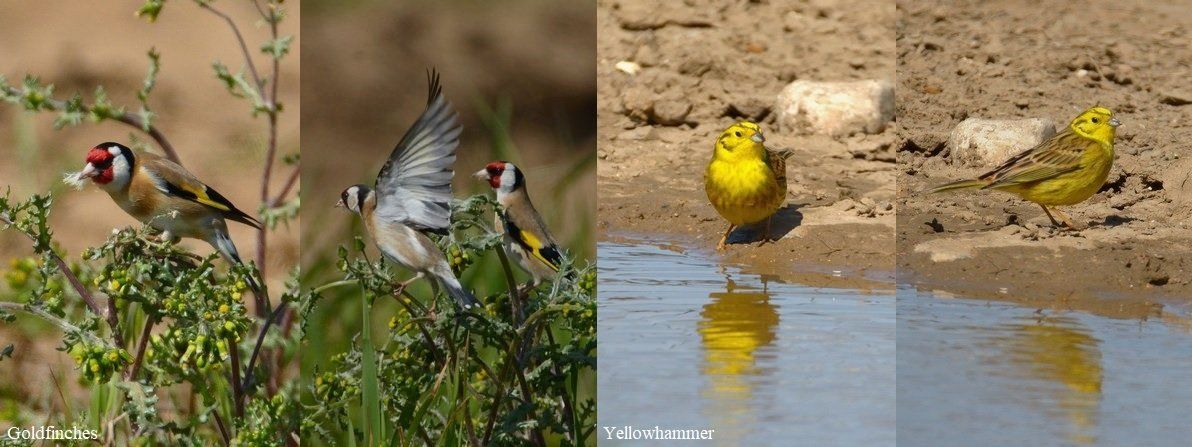

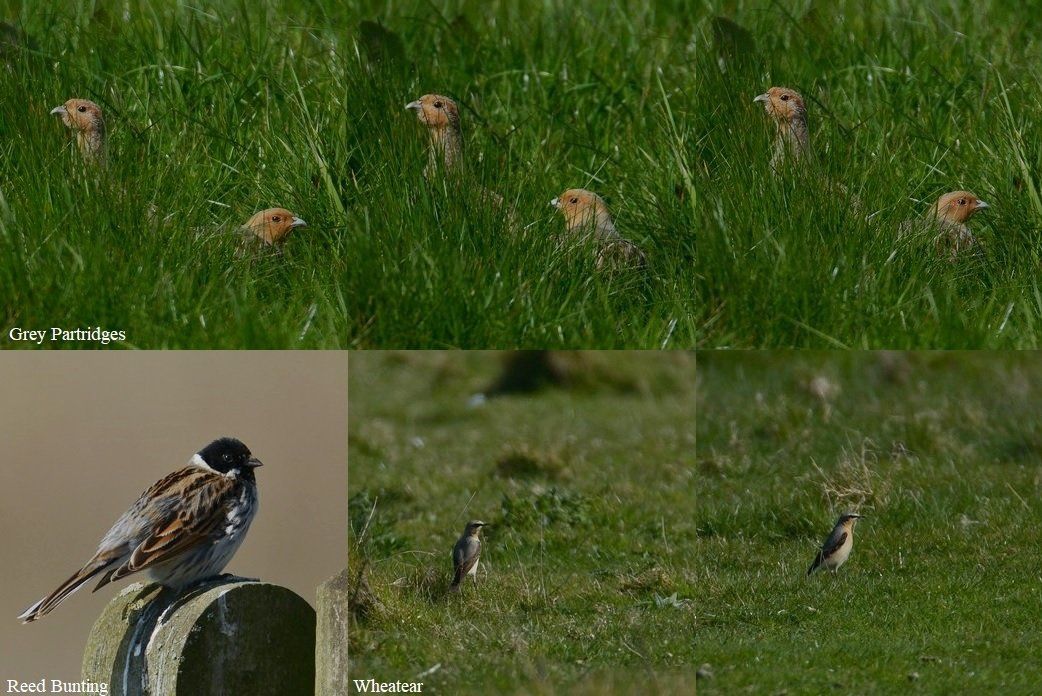
Brown Hares and Spring migrants......
A look at the paddocks along Winterton’s Low Road with Jason Nichols (13th), where there had recently been Ring Ouzels, drew a blank, so we continued along the coast road.
At Somerton Staithe we saw our first Swallow, and then another spring first, a Wheatear along the bank opposite the ‘lay-by’ at Horsey. Two more Swallows followed at Sea Palling and a singing Chiffchaff at Hickling.
On reaching Salthouse and finding a male Reed Bunting along Beach Road we then headed to yet more paddocks, to find yet again Ring Ouzels just off Cross Street. Still no Ouzels but 2 Mistle Thrushes and a female Blackcap made the excursion more than worthwhile and on the way back down Cross Street the first male Orange-tip fluttered over the road verge.
The pool along Beach Road, Cley yielded a White Wagtail having a bath and also here were 10 Golden Plovers most in summer attire. Although there didn’t seem to be anything moving out at sea a Swallow did fly past.
Luckily Morston was as yet not too densely populated with people and here we once again found a Greenshank and at least 60+ Brent Geese.
At Wells East Pools there were 9 Brown Hares in close proximity to each other and one appeared to be attracted by the sound of my camera shutter and came reasonably close. Jason then found 3 Wheatears in a grass field, which quickly became 4 birds.
Not too many waders at Brancaster Staithe, with 4 Black-tailed Godwits, Oystercatchers and a couple of Turnstone so, after lunch we continued to Choosley.
A Common Buzzard was hunting over the fields just before Choosley Barns, but Brown Hares are far less common here and I wonder if one of the reasons may be due to some of the land being turned over to that in-vogue farming practice of recent times; outdoor Pig farming.
As we turned left at the top of the road, a bird was perched on a telegraph wire and guessing it might be a Corn Bunting we stopped, wound the windows down and had a closer look; sure enough, a singing Corn Bunting very near the place where we saw one singing last year. Not an easy bird to see in Norfolk now, so pleased to see one still here.
With the windows still down I heard a Willow Warbler singing; which I guess must be coming from the small wood passed a short while earlier; definitely not expected! Finally during our circuit drive around Choosley, a ‘black bird’ flying across the road warranted further investigation and although not hanging around we heard the calls of both a male and female Ring Ouzel moving along the hedgerow.
A stop at Holkham, saw 5 Spoonbills, 2 Red Kite, 2 Common Buzzard and a Chinese Water Deer and a further visit to Beach Road, Cley found a further 4 Swallows heading west, a Common Snipe on the pool edge and back a long Beach Road, our first Sedge Warbler was heard and then seen as it exhibited its song flight. A nice end to another great day out.
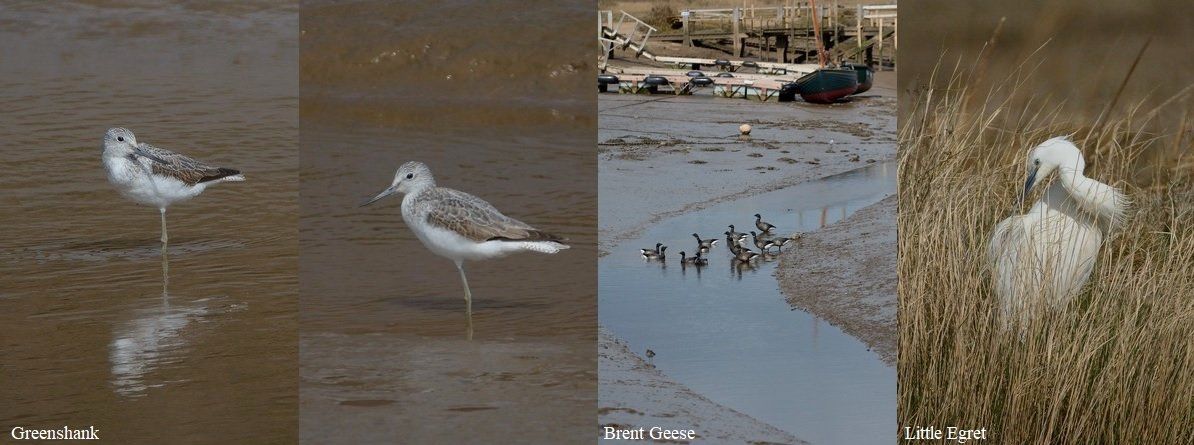
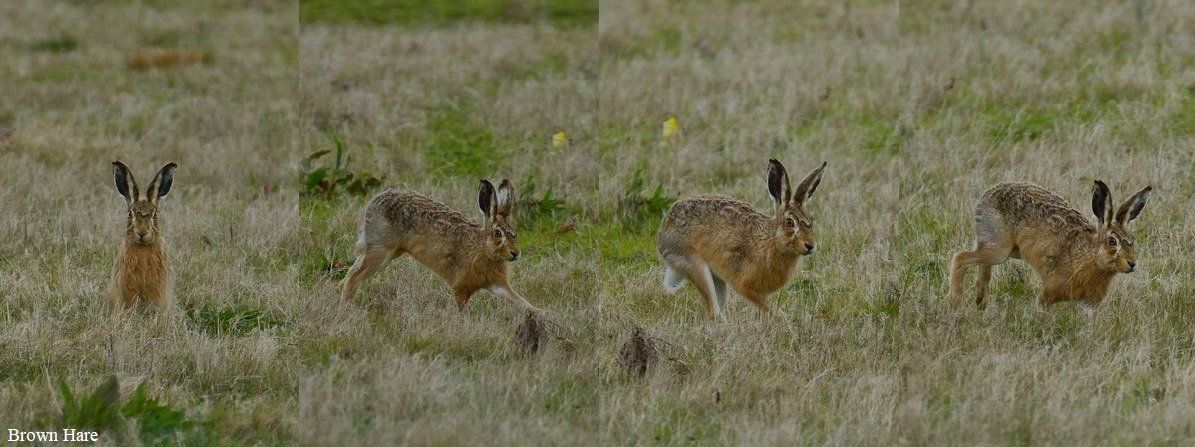
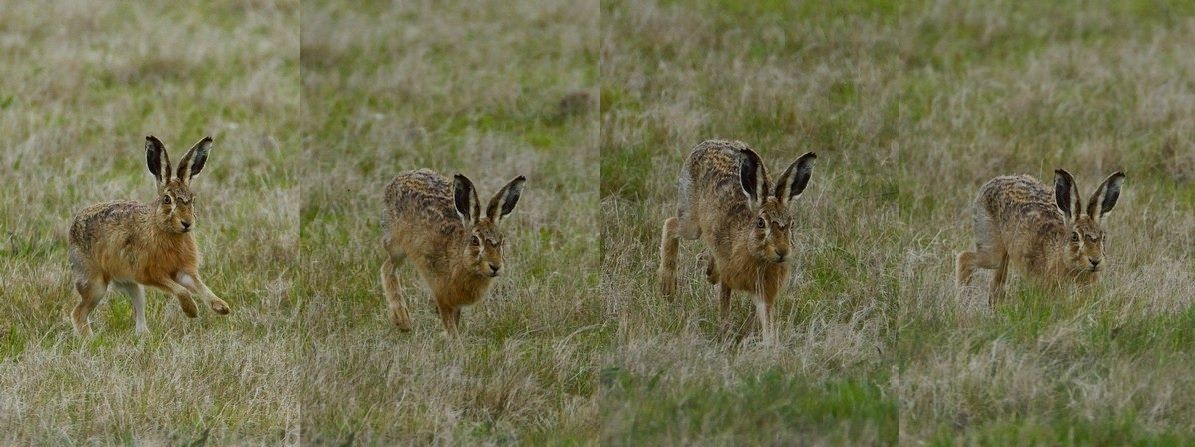
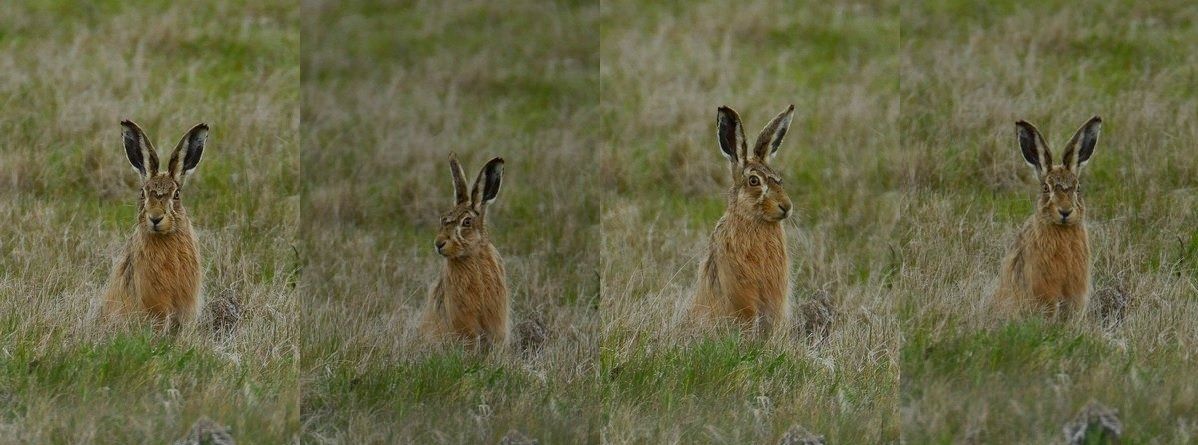
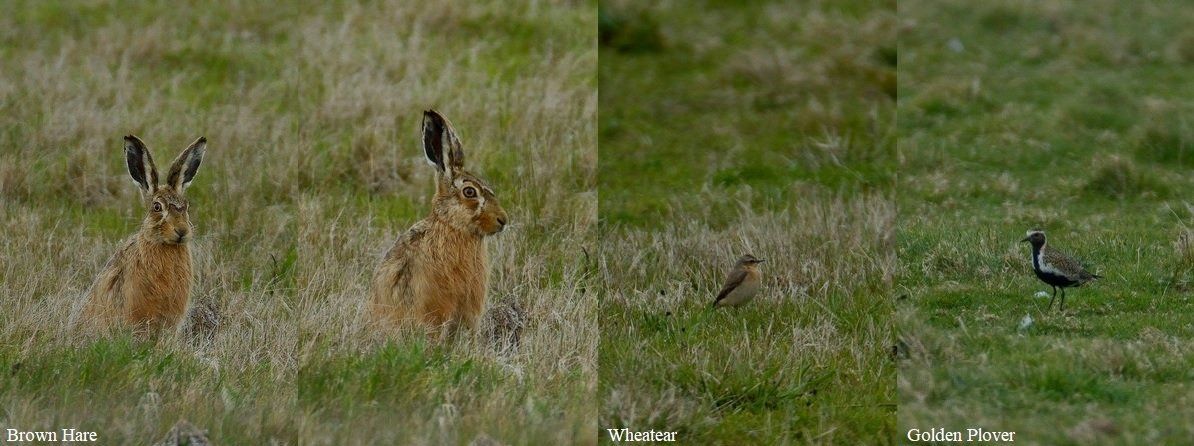
Countryfile and more environmental issues......
I watched a rather interesting Countryfile programme on BBC1 this evening (10th), covering coastal environments. Although I have never been the greatest fan of Countryfile, this episode I found interesting, informative and dare I say somewhat inspirational. However, what the percentage of the UK population of those featured is I would guess is tiny at best! Please watch the Countryfile episode and judge for yourself.
Nevertheless, more and more I am realising that it is in the hands of the ‘young’ what happens to our environment, despite being somewhat cynical to begin with (e.g. day off school to protest about Climate Crisis may well have been or is amongst some, nothing more than a cherished day off school) because in my experience those of my generation (60+) and older generations are not doing nearly enough and indeed are thwarting ecological progress. This non-concern for the environment, I am disappointed to say is also down to those who should know better, e.g. ‘birders’ and some societies, which are only interested in numbers of species, rarities etc and have no regard for the consequences of their actions to reward their interest/hobby.
The local council; Great Yarmouth Borough Council are a case in point. I have had many communications with them about their ‘cutting regime’ (mainly involving Paula Boyce whose ‘best’ response to my emails was: ‘Sorry you don’t like our cutting regimes.’) including one on-going about the use of weed killers on biotic surfaces, which they said they would no longer do in 2018 based on aesthetic and ecological reasoning. But they are still doing it, at least here in Martham, Norfolk. It really is like smashing your head into a brick post as they can’t even answer simple questions, even when they are numbered! It’s like talking to a politician!
A recent inquiry about the possible culling (denied by Martham Parish Council) and cruelty of Mallard in Martham around the village and ponds to Environmental Services resulted in a response by Kate Blackmore, which stated: ‘My suggestion is you contact the National Wildlife Crime Unit to raise your concerns directly with them.’
These people really don’t care, in spite of the new sentient laws despite the issues being one of public health by a stagnant water system (pond at Martham Green), the feeding of crap to the ducks by the public, in order to get rid of their waste attracting large numbers of large Gulls and Corvids and potentially the peoples favourite; Brown Rats! This is all despite the issues being on presumably (correct me if I am wrong please) council owned land. What do these individuals do all day and for which, the public pays for! They just pass inquiries to other departments or other bodies.
It’s always very easy to criticise, but in the case of GYBC and Martham Parish Council I have offered them help for free (based on my qualifications and knowledge), but they refused, or to be exact, ignored me, when there is so much more they could be doing to increase biodiversity, particularly pollinators, which we all depend on for our food and cutting their costs at the same time; As Peter Jones would say, ‘a no brainer!’.
While there are some people who are doing an awful lot to protect and re-wild our environment there are far, far more that don’t care and this is the fundamental problem. Whilst it is in everyone’s interest to protect and enhance our environment, with respect to actually continuing to exist and also very importantly our own wellbeing there is not enough being done.
I suffer from mental health problems and the one thing I depend on is my love of Natural History and of wild places to be with Nature. This includes my garden, but I am constantly challenged and disturbed by human individuals who, on the basis of their reasoning, would be better off living in something like Tesco’s (other supermarkets are available) car park where they don’t have to fight against plants coming up and where they don’t need to cover the earth with concrete, slabs, shingle and plastic, clear up leaves from the very organisms that enable us to breathe and respire.
So what can be done? Well alone; (just a voice in the crowd-Fish of Marillion fame) not much, but collectively, just maybe. I have seen so many times individuals ‘tweeting’ about the cutting down of hedgerows and areas of plants where there is no need to cut back, but due to this tidiness, straight lines we seem to be programmed with it is happening for no valid reason; destroying the very elements of life we depend on for our own existence.
Petitions do seem to have an effect and I sign worthwhile protests every time they arrive in my mailbox, but these individuals who care and do something are fragmented. There is something to be said about ‘people power’ and I would encourage anyone who sees injustice to our environment and the biotic and abiotic aspects that enhance this to complain and keep on doing, whilst spreading the word to councils and politicians this is not just our planet!
For those living in my area, contact the following:
kate.blakemore@great-yarmouth.gov.uk (Executive Leadership Team GYBC)
paula.boyce@great-yarmouth.gov.uk (Strategic Director at Great Yarmouth Borough Council)
I do have evidence to back-up all correspondence with GYBC, available on request.
March 2022
A Spring hiccup! Wintry showers and animals sheltering from the cold wind......
Wintry weather was back and today (31st), out with Jason consisted of rain, sleet and snow showers, bright sunshine but a fiercely cold strong N.E. wind!
A Brown Hare was lying very low in the grass at Beach Road, Salthouse and there was nothing really of note at Walsey Hills except for a hovering Kestrel and a Sparrowhawk wisely flying into the woods.
A single Pink-footed Goose was seen from Beach Road, Cley, before we looked for the Red-breasted Goose reported a short time ago earlier at Blakeney Quay, but the Brent Geese out in amongst the grasses of the Saltmarsh were hard to see, apart from when they relocated, but there was no sign of the Red-breasted Goose.
At Morston Quay we came across a Greenshank and a few Redshanks before moving on to Wells’ East Pools.
At Wells we found at least 6 Brown Hares including one hunkered down like the one at Salthouse, a solitary Ruff, a few Avocet and a pair of Grey Partridge.
We carried on to Brancaster Staithe but there were very few waders here, despite the tide being well down, but a couple of Avocets flew in briefly to feed.
A look over Holkham Freshmarsh found 3 Spoonbills, 2 Red Kite, Common Buzzard, Marsh Harrier, a lone Barnacle Goose and a Muntjac using the hedgerow as cover from the wind.
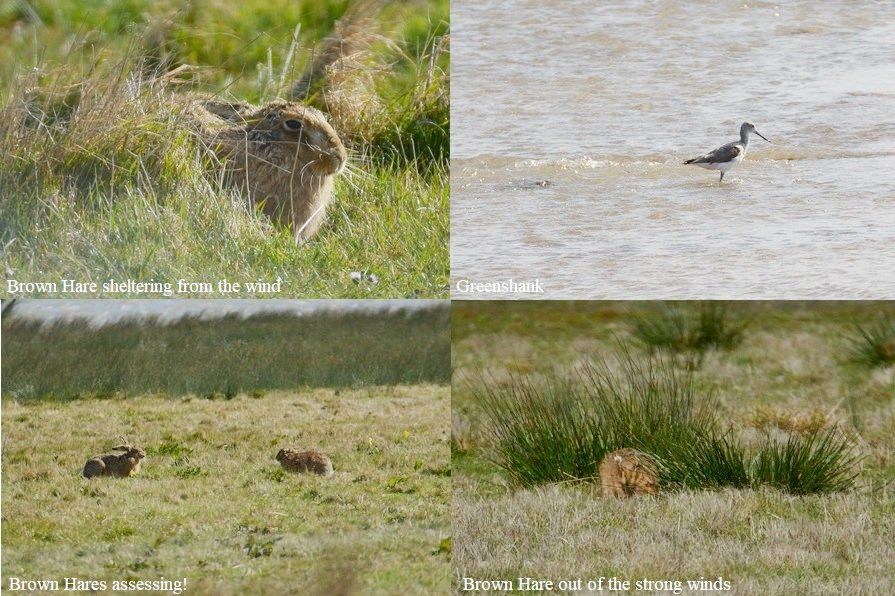
Bathing Curlew the highlight of an enjoyable day......
A day out (16th) with Jason found a Red Kite at Salthouse to get the day going and with not too much of note on a very dull and somewhat colder day of late, a bathing Curlew at Morston Quay was very welcome to photograph.
At Well’s East Pools 3 Marsh Harrier, Common Buzzard and a Red Kite represented the raptors present and a pair of Grey Partridge, 6 Dunlin and a Common Snipe were welcome sightings.
At least 7 Brown Hares were on the surrounding fields and a walk along the path between the two lagoons found a Dunnock singing and a Common Toad, which was a very welcome sighting for the day and this individual, unlike the ones reported last year (2021) with infections of ‘Toad-fly’, appeared to be healthy.
No spring/summer migrants as hoped for but still an enjoyable day out, as always

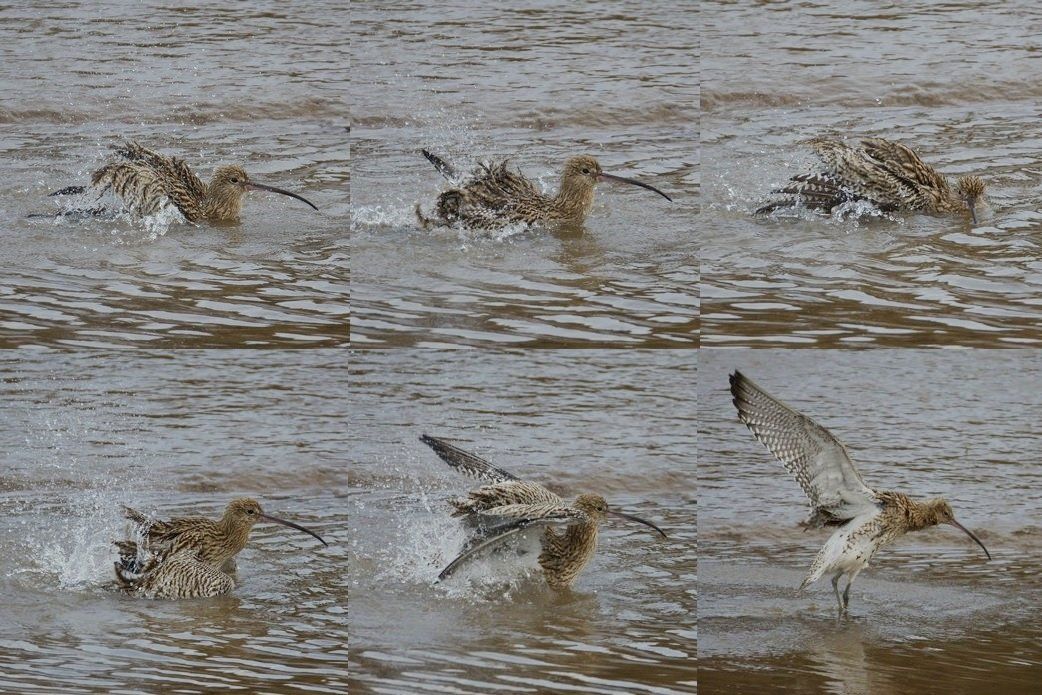

Two Egrets but not a hat-trick and Brimstone emergence......
The day out (10th) with Jason Nichols began along Cess Road, Martham where we heard our first Chiffchaff of the year singing.
A short drive further found 5 Cattle Egrets in a field with Sheep and with another Chiffchaff heard on the return journey in a different site to the first one, it was a good start to the day.
A Common Buzzard was perched on the telegraph wires towards Stalham, looking very resplendent in the sun on a day, which was very Spring-like.
At Aylmerton Jason spotted male Brimstone, but unfortunately I didn’t see it!
A pair of Muntjac was grazing in a field beside a wood at Kelling, so we stopped for a brief photo session before heading to Beach Road, Salthouse, where a male Reed Bunting perched on a post was the highlight.
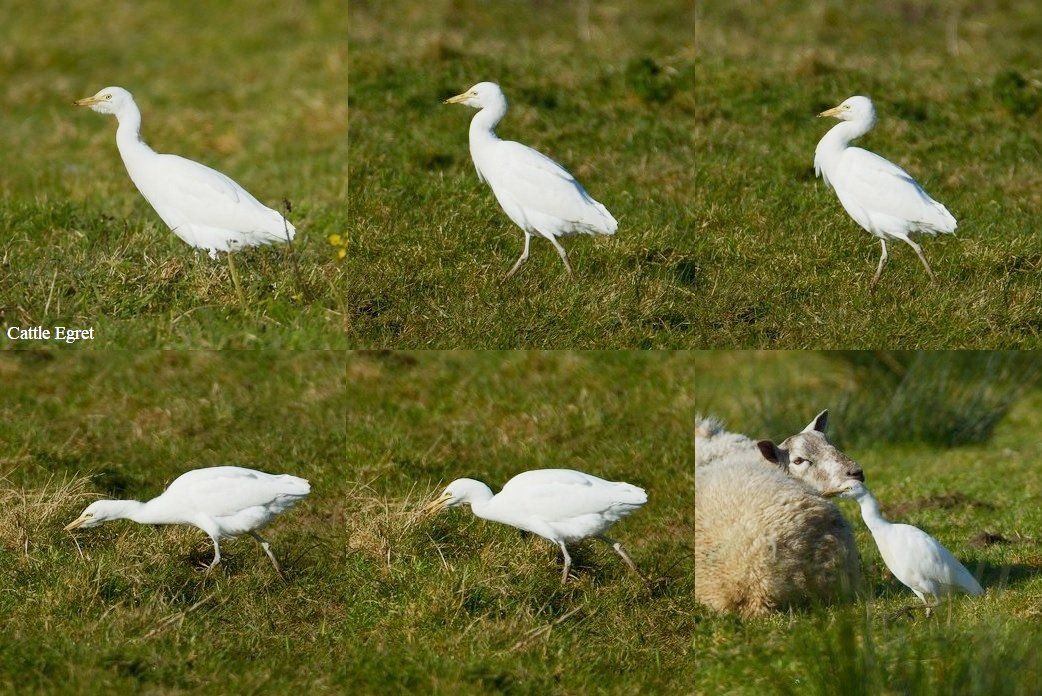

5 Gadwall and a drake Pochard were the highlights on the pond at Walsey Hills, before coming across another male Brimstone at Blakeney, which again Jason saw and I didn’t!
At Stiffkey a Red Kite were in the skies and at Wells our third male Brimstone was seen and this time I saw it too!
At Wells East Pools we saw at least 34 Avocet, 8 Dunlin, 2 Marsh Harrier and 2 Common Buzzard before seeing our fourth Brimstone at the western end of Wells village.
A look over Holkham Freshmarsh found 3 Spoonbill, Great White Egret, Common Buzzard, Red Kite and the first Comma of the year with several other ‘small dark’ butterflies not identified.
A stop for lunch at Brancaster Staithe found very little, but a Grey Plover, Avocet and 3 Black-tailed Godwits were always good to see.
Heading back along the coast, we saw 3 Red Kite and a Common Buzzard between Burnham Deepdale and Burnham Norton, before driving along Beach Road Cley, where we saw the Red-breasted Goose again with Dark-bellied Brents. The pond on the Eye Field had Golden Plovers bathing and several groups of Brents also dropped in to drink, but not the Red-breasted on this occasion.
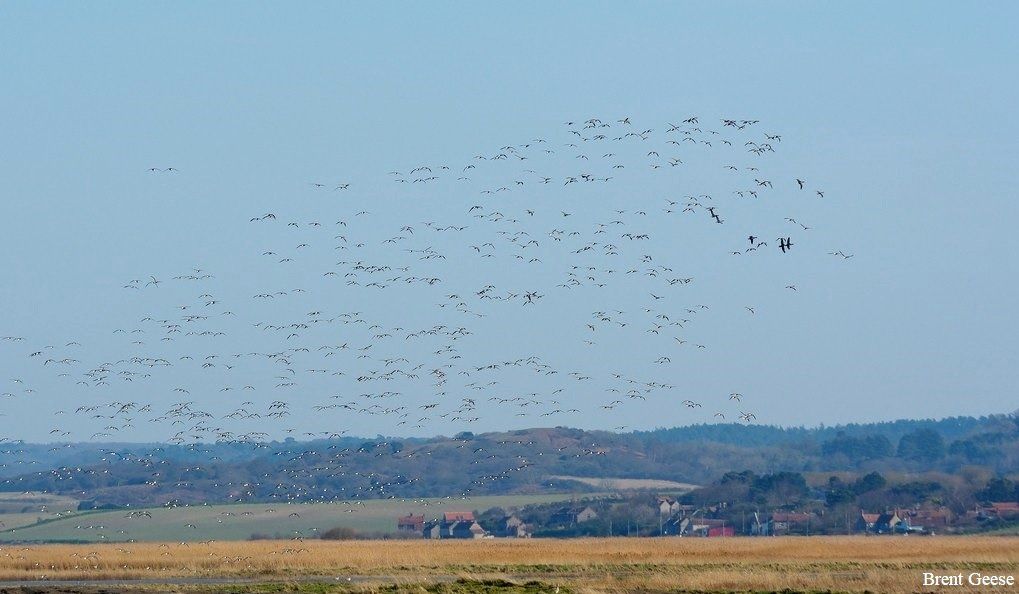
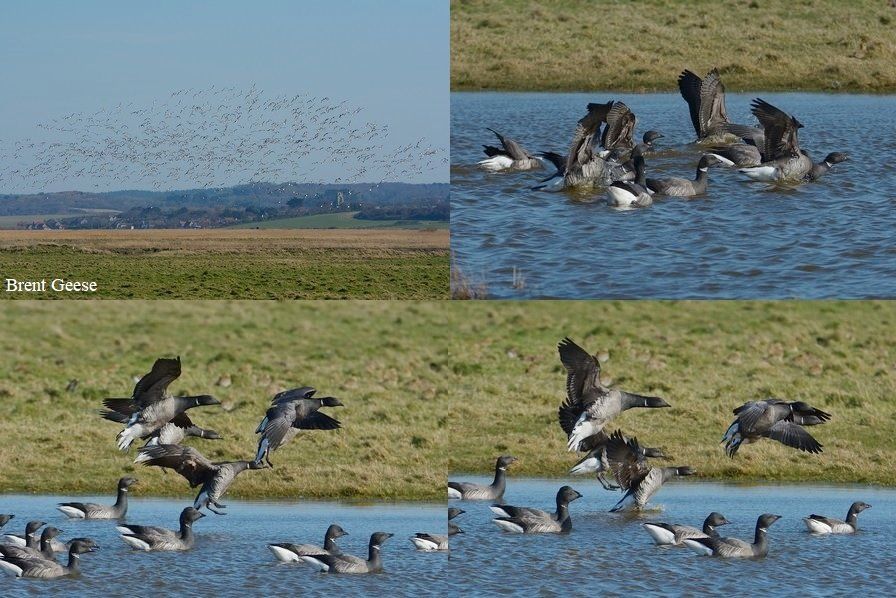
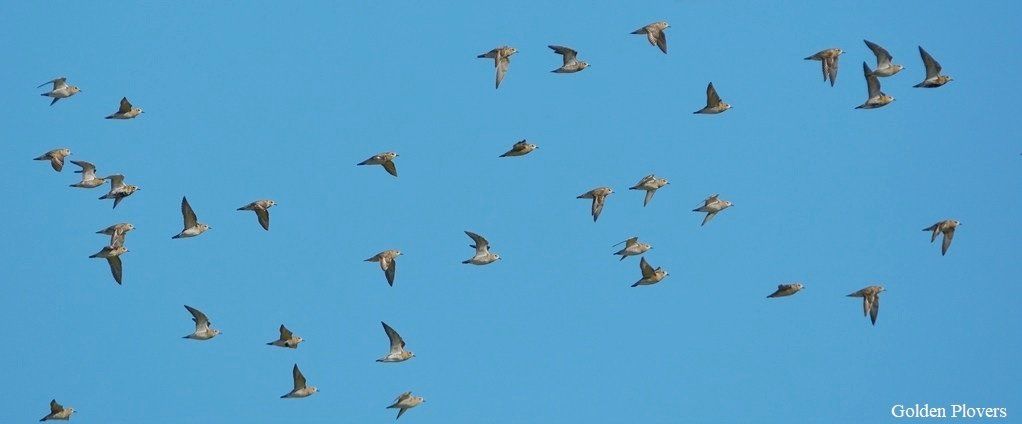
Frogs Spawning in changing times!
It’s that time of year when traditionally naturalists look for the first Frogspawn in ponds; or is this so-called tradition changing?
There is an alarming downward trend in Amphibian populations worldwide and here in the UK, the few species we have got are not faring well and this is not a recent event!
Both the changes in breeding behaviour and Amphibian population trends can be related to a change in climate, but again habitat, e.g. suitable aquatic breeding sites are also precariously low and in some places non-existent.
This is why our gardens are such important places for some amphibian species such as the ‘Common’ Frog, as they are indeed for all wildlife; our gardens have had to replace what were woodland edge habitat and the lack of suitable sites for breeding amphibians, with ponds being filled in and/or not maintained as suitable habitat.
However, recently (February 2002) I watched a Countryfile episode where in the Holkham area at least there is an ongoing excavation of ponds, which used to exist; ‘Ghost Ponds’. These areas are being restored to what they used to be, simply by excavating the site, where the seed-base for plants (some of which were thought extinct in the area or others not seen for many years) have re-grown and re-created a habitat long forgotten. The remains of freshwater snails are also being found in the soil profile, substantiating the land’s previous habitat. Sometimes all we need to do is give Nature a start, a beginning and a platform to succeed.
Here are some reports via the internet from various societies and newspapers sent to me by my good friend and world authority on Herpetology; Mike Linley:
Frogspawn
What our animals are doing this month….
January 27, 2022 by Editor
It is generally said that February is the month when Common Frogs start to return to their ponds, breed and lay their spawn. This is due to better weather conditions and warmer temperatures. However, with an ever-warming climate, the Common Frog can breed as early as January.
Frogs are the first amphibian to start breeding with the Common Toad usually breeding from March, the Natterjack Toad in April and Pool Frog in May.
How to spot frogs and their spawn in your local pond? Make sure to keep an eye out for clumps of jelly-like eggs floating on the pond surface and they can lay up to 2000 eggs per year. Common Toad spawn, as stated above, is laid later than Common Frog spawn so it is unlikely you will see this in your pond until March. Toad spawn can be identified by the fact it is laid in strings usually wrapped around plants on and below the water rather than clumps on the surface.
Late January, February and March is a key time for frogs and toads as they spawn in ponds across Britain. Our expert guide to frogs and toads explains what to look out for and how to care for the amphibians in your garden.
When Do Frogs Spawn in the UK? Frogspawn appears in ponds from January onwards, depending on the weather and the region (the South West usually has the first sightings). By March, you should be able to spot frogspawn in ponds across the UK.
Is frog spawn late this year? Frogs have now left their winter quarters so frog spawn is late: They noisily laid spawn last week. That means 8 adult females visited us this year as each female lays only one batch of spawn in a season. Spawn will take about 3 weeks to hatch into brown tadpoles.
Their reappearance is one of the earliest signs of spring, and January sightings are increasingly common. It all depends on the weather and one of the best predictors of frog activity is overnight temperature. Generally, a run of several consecutive nights with a temperature above 5°C will trigger the annual anuran awakening, as frogs, toads and newts all shake off their slumber and start heading back to the water.
Frogs breeding in November due to mild weather
*This article is more than 7 years old.
Frogspawn spotted in Cornwall, months before the usual spring spawning time, is earliest sighting in almost a decade.
Thu 27 Nov 2014 05.30 GMT
Earliest Occurrence in Recent History
Frogspawn is usually seen in March across the UK with the earliest occurrence in recent history being on 26 October, in 2005.
Dr Kate Lewthwaite, project manager for Woodland Trust’s Nature’s Calendar, said: “Although spring is generally arriving earlier, to receive frogspawn sighting before winter has properly begun is highly unusual.
I hope you found these reports of interest and thanks to Mike for collating them for me.
The Brecks and more invasion of the Natural World, at home and abroad......
A day in the Brecks with Jason (3rd) saw a dead Badger on the side of the road (pretty routine for this unforgiving highway to wildlife) and 2 Common Buzzards on a field, whilst travelling along the A11.
The walk along the Little Ouse at Santon Downham was rather an uncomfortable one with the path being a churned up slippery route, indicating the amount of foot traffic it gets nowadays, something it never used to. What was once a pleasant walk alongside a beautiful river is now overrun with human traffic, dog-walkers etc, etc; but then many places have turned into a; close to humans and not to nature experience!
Nevertheless, we saw Nuthatch and Siskins, 2 pairs of Mute Swans (both Cobs not pleased to see anyone near their stretch of river!) and a Grey Wagtail flew out from the river-side and flew up stream. One to two Great Spotted Woodpeckers were heard drumming, but there was no sight or sound of its smaller cousin, the now very rare (in Norfolk at least but no doubt in general) Lesser Spotted Woodpecker.
It is somewhat ironic that the first Woodpecker I ever saw was a Lesser Spotted; whilst digging my Nan’s garden in Ormesby St. Margaret. A ‘black and white bird’ flew past me and landed on an old Plum tree (with linen lines attached!); one of the few trees left after the sewers had been put in, which split the orchard and signalled its demise; an orchard, which used to stretch right up to the main road at California (Ormesby East End), before the 2nd World War’s cry of ‘Dig for Victory’! The Lesser-spot promptly disappeared in a nest hole and I watched it daily from cover making notes as I did, in the very early 70’s.
One of the major problems with this small Woodpecker is once again habitat; specifically ‘standing dead wood’; a rarity even on ‘nature reserves’ and which is very important to other species of hole-nesting birds and indeed the ecosystem of woodland. Health and Safety has played its part in the demise of this very important recycling of biomass in woodland (even orchard) ecosystem and what is left is heavily competed for, with the likes of Green and Great Spotted Woodpeckers taking precedence.
We than moved on to Cockley Cley to look for Goshawks, but basically just saw Common Buzzards, which also disappeared as a shotgun was fired from the woodland! However, the first butterfly of the year was seen as a Peacock flew past my binocular view.
At Lynford Arboretum there was another unpleasant surprise; coffee stalls! Again, what used to be a pleasant walk is now like a holiday park, full of dog walkers and I fear worse is to come; children’s playground?! There had also been a lot of clearing out of trees (but not the fallen conifer that made us have to walk through more mud!) and indeed the dyke systems, for what purpose I am unclear about, apart from the obvious, but then why have they not been cleared before?
Anyway, there was no sign of any Hawfinches (although a Buff-tailed Bumblebee was nice to see) and birds were at a premium, apart from the feeding site viewed from ‘the gate’ where Jase counted at least 11 Yellowhammers. There was also Blue Tits, Great Tits, a single Coal Tit (no Marsh Tits!), Chaffinches, a few Brambling, Siskins, a single Greenfinch, Goldfinches and 3 Carrion Crows and a Grey Squirrel.
At one time someone had gone to the trouble of putting concrete down to create a drinking/bathing pool, but there was no bloody water in it! If you make the effort to put seed down (as was clearly being done) then make sure you take with you a couple of watering cans full of water to top up the ‘pond’ and give seed eaters that essential for life requirement; water! With broken feeders littering the place and building work going on, adjacent to the ‘feeding site’ it’s all a bit of a mess! We are all told (quite rightly too) to supply wildlife with water in our gardens, but this estate can’t even get that fundamental issue right! It’s all ‘going to the dogs’, quite literally!
Whilst Putin looks to increase his Russian land mass (for no logical reasoning apart from that old chestnut-a belief system), is it also of consequence that we are doing this to our Natural World, both in this country and elsewhere in the world. There has and is always an excuse for not fighting the greatest war now on this planet; climate change and mass extinction and Putin has just added another reason; his destruction of a people and of countryside that further depletes the very essence of what we depend upon; the Natural World and our ability to fight the destruction of our world.
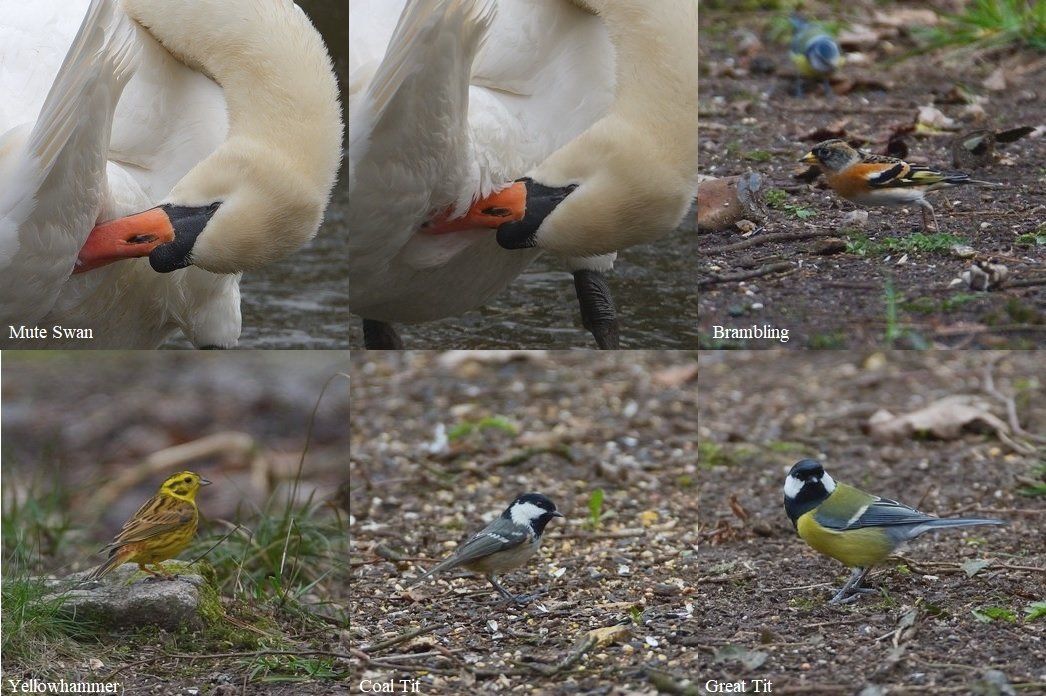

February 2022
Red-breasted Goose still present and other wildlife in North Norfolk......
The rainy overcast day with Jason Nichols (24th) began similarly as it did two weeks ago with the Red-breasted Goose in a field between Salthouse and Cley with Dark-bellied Brents, albeit this time quite a way away.
Two drake Pochard were of note on the pond at Walsey Hills and along Beach Road, Cley were a flock of Golden Plover, Lapwings 3 Turnstone and 2 Oystercatcher on the Eye Field, a Great Black-backed Gull bathing on the pool and with 4 Brown Hares also present at distance.
At Morston Quay, a Red Kite was seen along with Brent Geese and a photographic Skylark searching for seeds in the car park.
With a very high tide most of the waders present at Brancaster Harbour were resting on the far bank, but of note were 2 Avocet amongst the Black-tailed Godwits, Curlew and Dunlin.
Brown Hares were once again seen boxing at Choosley and a Common Buzzard was hovering over the road verge and field.
Another Red Kite was seen over Holkham Freshmarsh, along with a Marsh Harrier and 2 Great White Egrets were not hard to spot, even at distance. Another Red Kite at Wells ended an enjoyable day out.



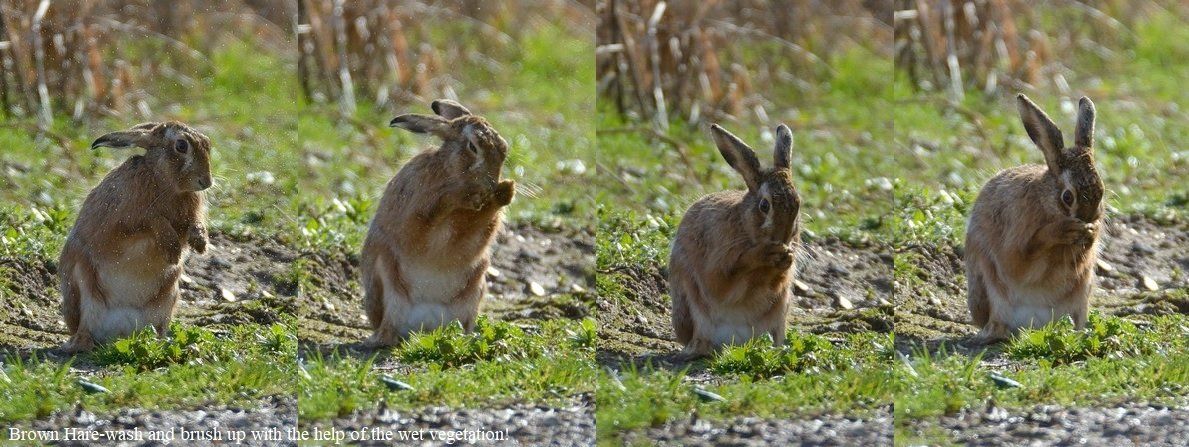
A Red Kite day......
Jason and I began the day (10th) with a trip to Norwich to look for Ring-necked Parakeets. Despite searching along the Hellesdon Road there was no sign of any Parakeets. However, a Grey Wagtail at the base of the bridge kept me entertained as it bathed and preened and a Brown Rat emerged along the bank before taking to the water and swimming off.
A drive across country brought us out along Old Woman’s Lane, Cley where a Red Kite was flying over the fields.
A Red-throated Diver flying east was the highlight from Cley Coastguards, so on to Blakeney Freshmarsh where a nice selection of birds included: Wigeon, Brent Geese, Curlews, Black-tailed Godwits and a Marsh Harrier, but no sign amidst the Brents of the Red-breasted Goose that had been commuting between Cley and Blakeney Freshmarsh.
Another Red Kite was seen heading out from Blakeney before we visited Morston Quay and were pleased to find 2 Greenshank along the creek, approximately 100 Brent Geese, Curlews, Redshank and a Little Egret.
Another Red Kite was seen just outside Blakeney, before arriving at Well’s Pools, where two Brown Hares were ‘boxing’. There was a good gathering of Lapwings, plus a few Brents and 3 Avocet, 3 Dunlin whilst a Common Buzzard overhead was not to the liking of the Lapwings!
Passing Holkham yet another Red Kite was seen, before paying a visit to Brancaster Staithe, where there were a few waders, which included: Grey Plover, Oystercatcher, Turnstone, Black-tailed Godwits and Curlew.
A drive around Choosley didn’t find many of the hoped for Brown Hares, but the stand of Sunflowers found at least 4 Brambling, along with Chaffinches, Goldfinches, Blue and Great Tits all flying out of the hedgerow and going down on the field underneath the Sunflowers. A Red Kite (yes another!) then flew quite close to the hide; I mean car, before heading down the road along the hedgerows.
Further on we found Lapwings on many of the fields and at least 20 Golden Plovers flew in and it was at this point through scoping the field Jason found a lone Ruff.
Another Red Kite was seen on our journey back along the coast, near Burnham Norton, a Great White Egret was seen on the marshes from the A149 ‘pull-in at Burnham Overy and then another Red Kite was seen just before Burnham Overy Staithe.
A look over Holkham Freshmarsh found 3 Great White and 2 Little Egrets, 2 Marsh Harrier and a Muntjac.
Further along the road we checked, once again all the ‘known’ places where the Brent Geese containing the Red-breasted Goose were visiting but found no Brents, let alone a Red-breasted; at Blakeney Freshmarsh, Cley Eye Field, the fields beside Cley’s east bank and also checked known areas for Brents at Salthouse. Not a sign of any Brents, so where are they going to with the rare visitor in their midst?!
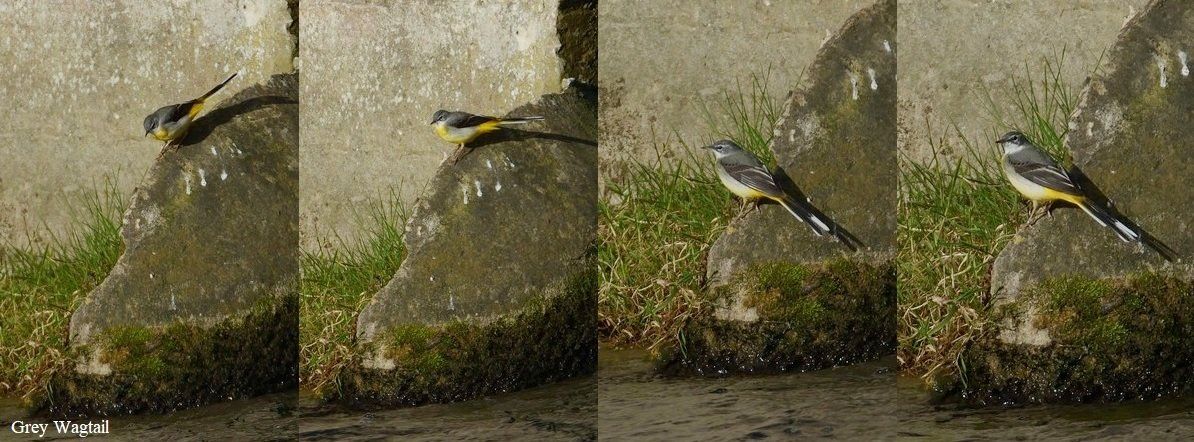
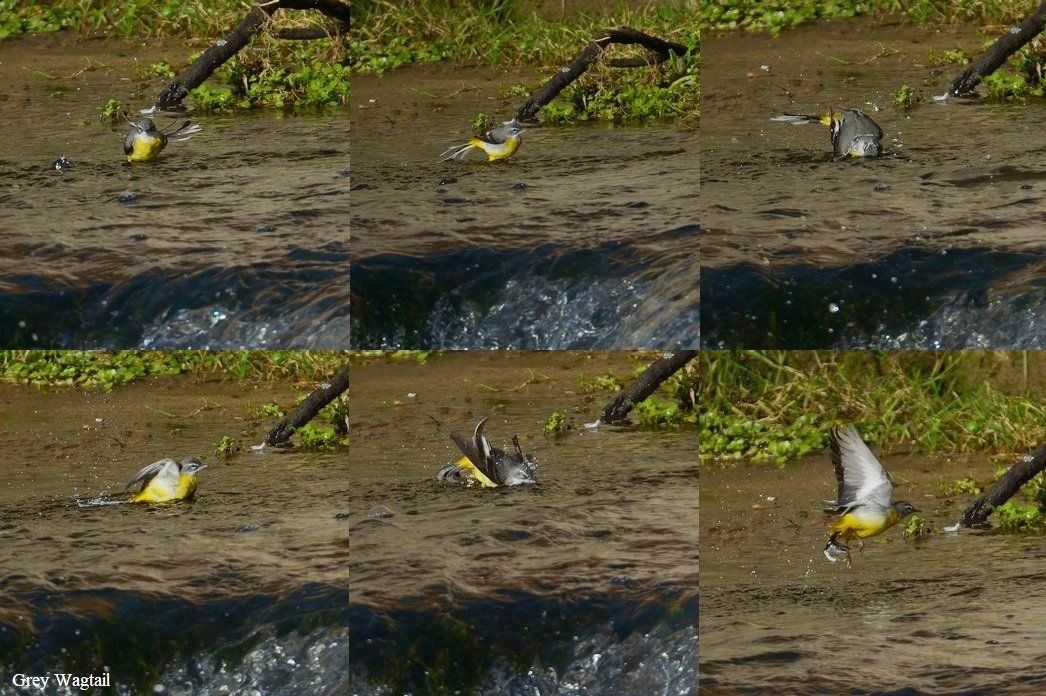
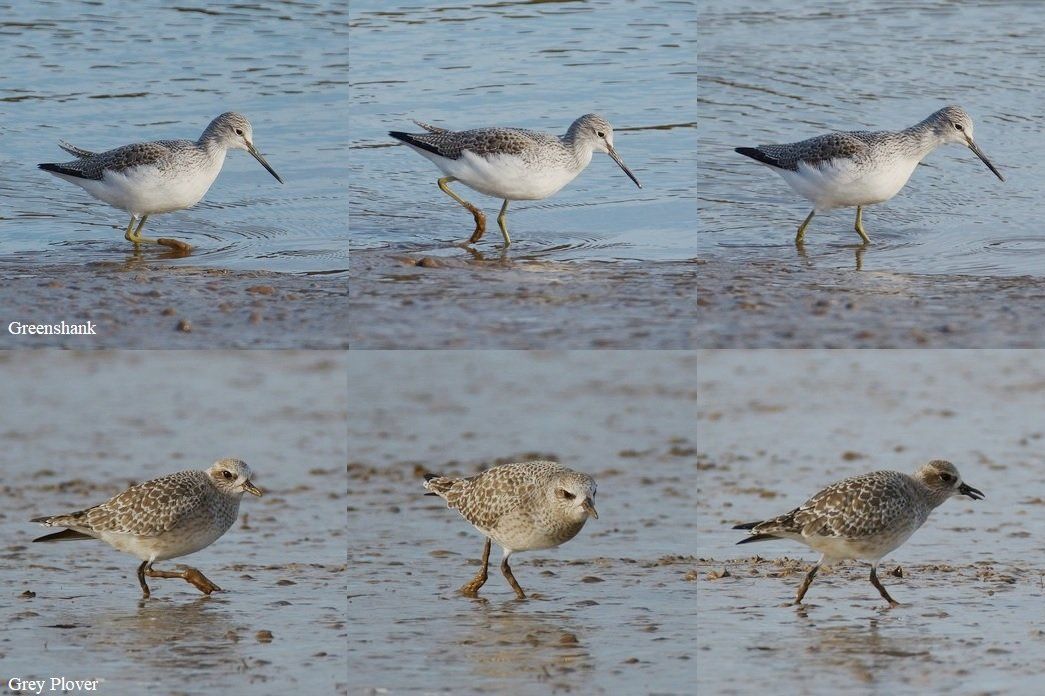

Three Egrets, but 'Day of the Goose'......
A look around the local area (3rd) began a day out with Jason Nichols.
A short drive up the road and along Cess Road, Martham to look for Cattle Egrets, eventually found 6 birds from the track on the edge of the wood. On this occasion the Cattle Egrets were not really associating with any livestock, although a few Sheep were in one of the fields but no cattle.
A drive around the area between Clippsby and Ashby found 22 Cranes and on completing the ‘circuit’ we came across approximately 1000 Pink-footed Geese in a field. Also in their midst were 3 Barnacle Geese but despite a false alarm no Tundra Bean Geese could be found.
A little further along the road at Ludham Airfield we found a herd of ‘wild swans’ containing 20 Bewick’s (including a family party with 4 juveniles) and 3 Whooper Swans.
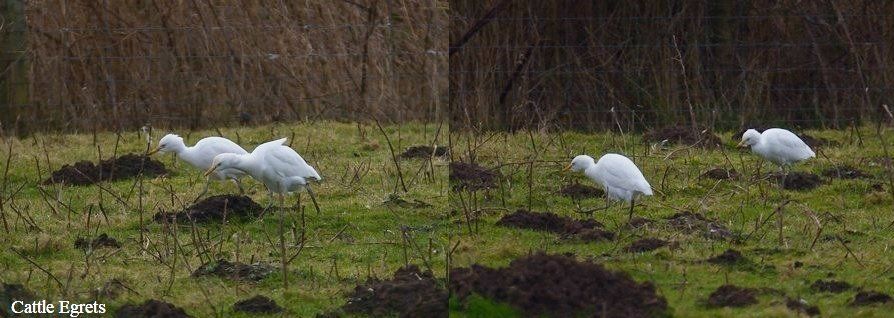

A drive further along the coast ensued and after seeing a few Common Buzzards we began driving along Beach Road, Cley.
Once near the Eye Field we could see approximately 500 Dark-bellied Brent Geese there but there was something unusual about what we would normally expect to find along the road. Someone was on the flood bank scrutinising the geese with a telescope, whilst 2 cars were parked next to the Eye Field fence, again really focussed on something. Then looking towards the Coastguard car park there was a line of people with scopes, again fully focussed on the Brent flock. Clearly there was something else here to command such interest and as we parked up in the car park a look through the car windscreen (not the greatest of views!) with my binoculars found what was the focus of attention; a Red-breasted Goose bathing in the pool on the Eye Field!
At this stage there had been no reports of this goose on Jason’s phone via Bird Guides, but that was soon to change. So before the congregation increased we saw the two cars move off from the fence and seized our chance to park by the fence and photograph the goose, at relatively close quarters.
The Red-breasted Goose finished its bathing and stepped out of the water and onto the grass where it preened and occasionally shook its feather and raised its wings to dry off further.
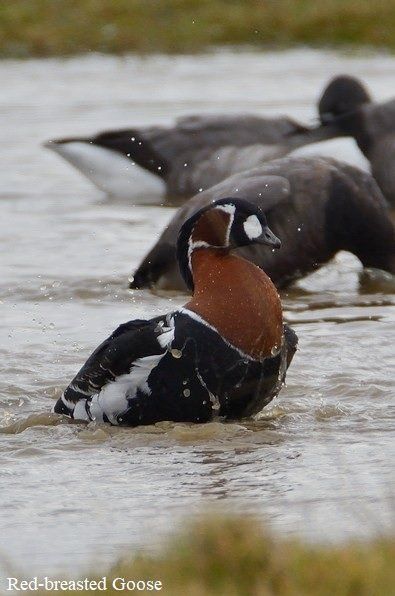
Eventually, more and more cars were arriving, so we took that as a cue to leave the vicinity, but pleased with our goose surprise!
A brief stop at Morston Quay found Redshank, Grey Plover, Oystercatcher and a Little Egret.
At Holkham we looked over the Freshmarsh from two points and found approximately 160 White-fronted Geese, Song Thrush, 5 Marsh Harrier, Common Buzzard, Red Kite and a Great White Egret briefly in flight.
A call in at Beach Road, Salthouse found 2 Ringed Plover on the field and a male Stonechat perched on the barbed wire, the end to an enjoyable day.
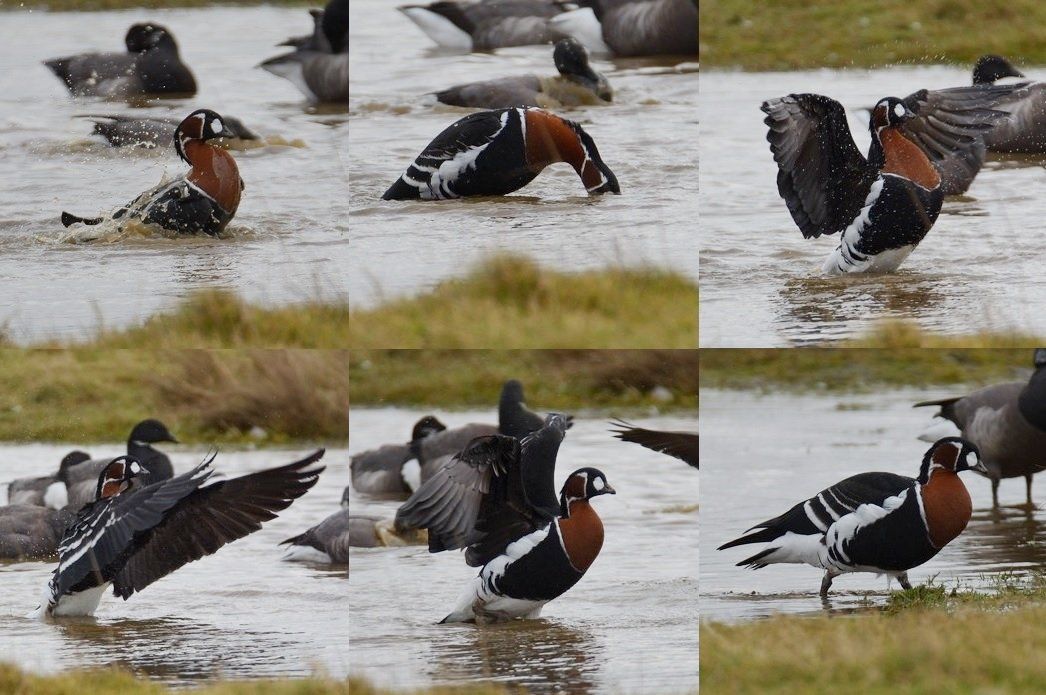
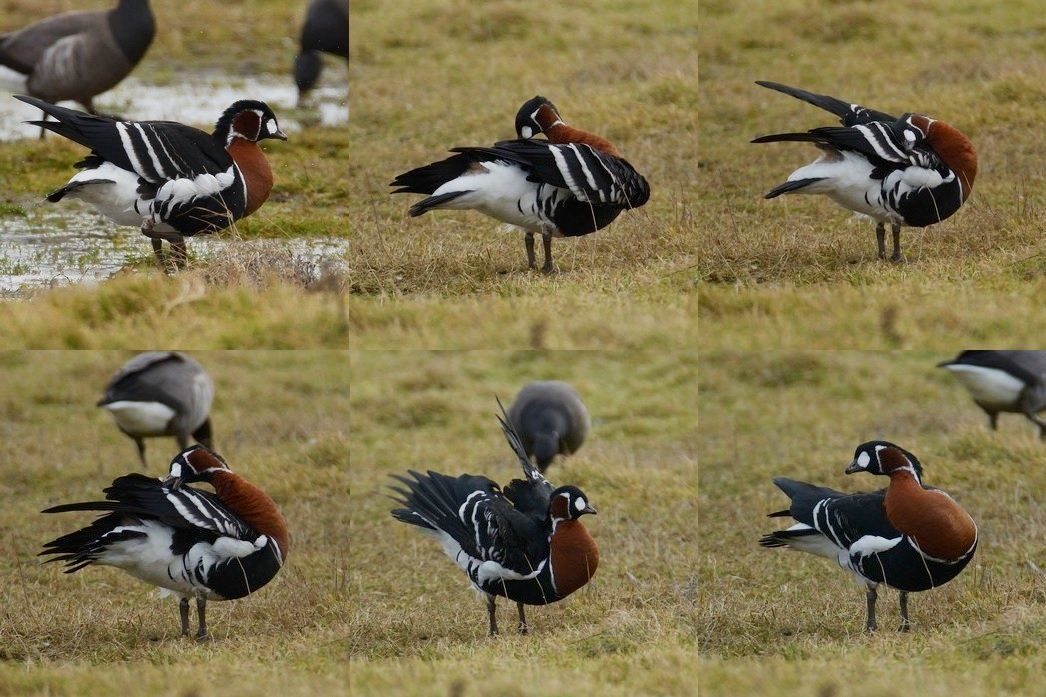
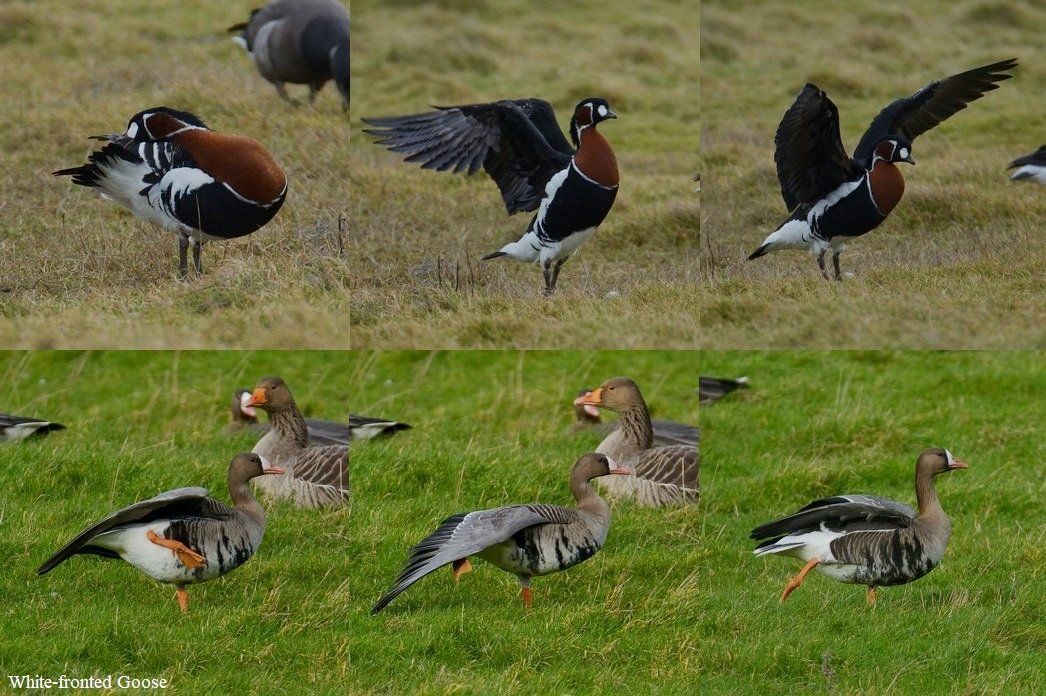

January 2022
By implication Bird Guides admits ringing and tagging of birds is detrimental to their wellbeing and existence!
I have just commented on the Bird Guides email article ‘Gone to the dogs’.
Whilst the article they sent me is totally relevant to the threat to wildlife by our captive tertiary predators, e.g. Cats and Dogs, which needs to be addressed at its roots; the breeding of cats and dogs, which at the moment as far as I can see is not regulated whatsoever. I can remember back to when you had to have a dog licence, but nowadays you can buy commodities (‘pets) anywhere and at anytime you want to with no concern to animal welfare; whatever that is!
The interesting point in this publication is this:
‘The response of birds and other wildlife to a threatening stimulus, such as people, dogs or natural predators is called 'disturbance' and results in a change in their normal activities to engage in what are termed 'antipredator behaviours', such as freezing, fleeing or hiding. This leads to the cessation of important activities like foraging, feeding young or resting and is accompanied by physiological changes such as the release of stress hormones and altered heart rates.’
Thank you Bird Guides for finally admitting that the affect on birds via ringing tagging etc is detrimental to their wellbeing. I rest my case!
Now, can we stop this out-dated futile so called conservation hobby by pseudo scientists?!
'The Eagle has landed' but flew off before we got there!
With a Sea Eagle on our minds (27th), Jason and I headed up along the North Norfolk coast.
The first birds of note we came across was a mixed flock of Finches and Buntings, in fields near Kelling. Here there were approximately 40 Goldfinch, 2 Chaffinch, at least 6 Yellowhammer, 20+ Fieldfare and 2 Stock Doves.
A stop at Cley Coastguards found very little except a single Red-throated Diver flying east, at least 300 Brent Geese on the Eye Field a Reed Bunting near the main road-end of Beach Road.
Between Stiffkey and Warham Greens we had our first Red Kite of the day followed by another just west of Holkham.
A stop at Brancaster Staithe found the tide well in, but along with 2 Little Egrets and Black-tailed Godwit, Curlew, Turnstone and Oystercatcher I enjoyed some close-up photography with a party of Teal sifting the muddy edges of the water for food.
With the Sea Eagle having been seen the previous day at Thornham, Brancaster and Holkham we continued to Thornham Harbour, where we found a Greenshank, several flights of Golden Plover going past and 2 Red Kites.
We had not succeeded in finding the Sea Eagle via a drive along the coast, but then a report came in saying it had been seen at the north end of Holkham Park at 12.00. With it only being just after twelve we headed to Holkham.
A brisk walk through the wood to the lake edge at Holkham Park found the Eagle had already departed and there were also no sign of the 2 Ravens, which had been mobbing it! An approximately 2 hour wait ensued in the hope the Eagle would return, amusing ourselves with flight shots of Shoveler flying past over the lake, a Little Grebe crossing the water and a Red Kite and a Common Buzzard in the skies. Unfortunately either the Kite or the Buzzard did not come close to the size of the raptor we were hoping to see and eventually we departed, hearing Nuthatches and seeing 2 Long-tailed Tits and a herd of Fallow Deer on our walk back through the woods. There were no more reports of the Sea Eagle that day.
A Peregrine was seen harassing a flock of Lapwings just before Morston, before eventually arriving at St. Benet’s Abbey to have a look for owls, amongst other things.
The car park was rather full and had a particularly gobby birder very loudly telling everyone near him what he had seen etc, etc, etc! I always thought Birdwatching was a quiet pursuit, but it seems not the case nowadays. No wonder animals will not come anywhere near, whilst a whole load of ‘birders’ stand out in the open yapping their heads off and this was the case with the absence of any Short-eared Owls, reported here recently. However, 2 Chinese Water Deer, 8 Fieldfares (in the top of some Hawthorn bushes), a ringtail Hen Harrier (which yappy birder identified as a Marsh!) flew low over the fields before a Barn Owl hunted along the bushes and flood bank.
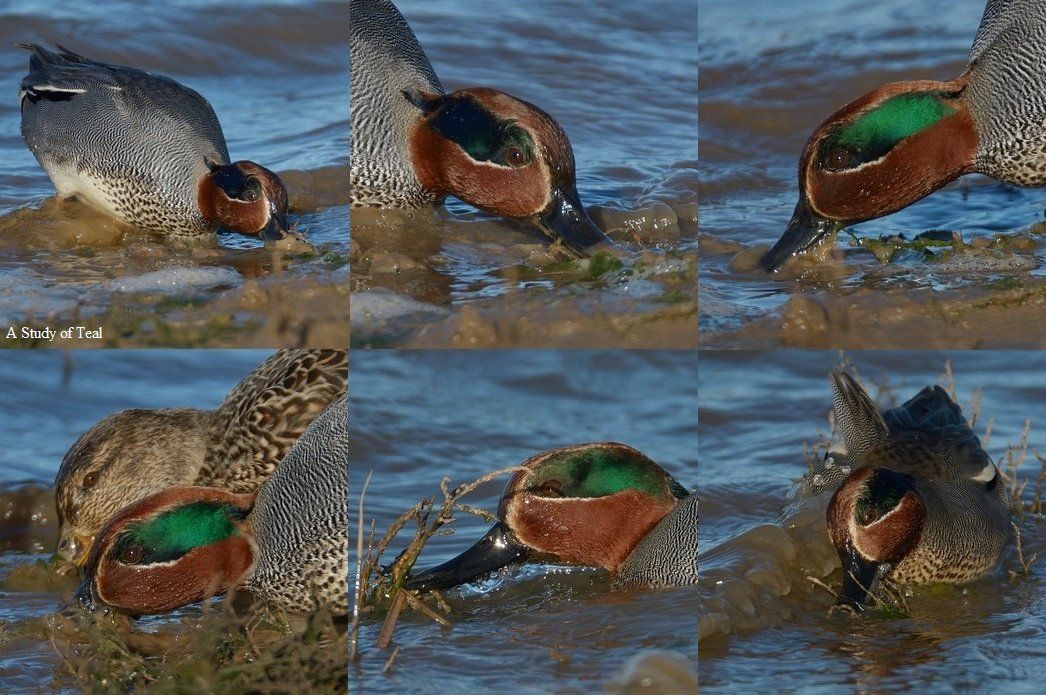
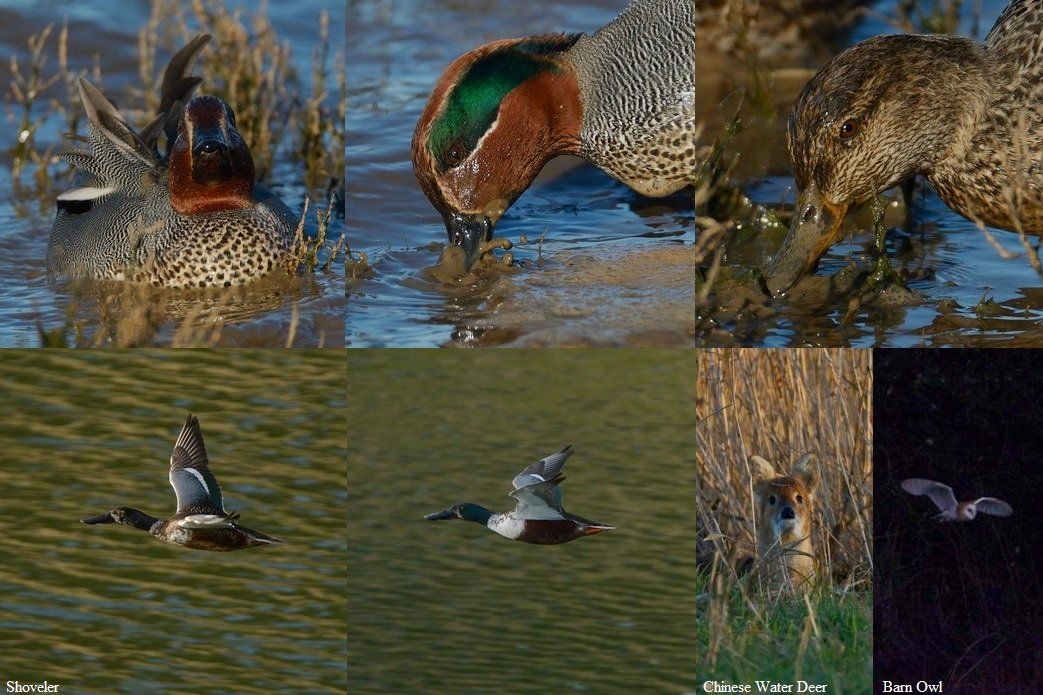

Cranes, Scaup and Nuthatches......
A drive around the back roads at Clippesby and Ashby began the day out (21st) with Jason Nichols.
Eventually we came across 22 Cranes on a field, which at one point looked ready to take off due to a passing Common Buzzard. However they settled down again and continued feeding. Unfortunately one of the Cranes had been tagged with plastic yellow bands!
A drive further along the coast to Ludham Airfield; where we looked for ‘wild swans’, but there were none to be seen, despite driving along most of the back roads ending up at Catfield.
Along Beach Road Cley there were both Brent and Pink-footed Geese. Although difficult to estimate numbers because many were behind fences and hedge banks, but at least 500 Brents and in excess of 1000 Pink-feet were estimated. The geese relocating gave some opportunities for flight shots but the light was not in a favourable position to really show off these beautifully marked birds.
With not much to see, albeit a few Gulls at Cley Coastguards, we visited Morston but found only a couple of Curlew, a few Redshanks and some Brent Geese.
At Wells East Pools, 27 Curlew were present and a pair of Grey Partridges along a fence until a couple got out of their car with a dog off the lead. Whilst here flocks of Lapwings passed overhead, of which at a very conservative estimate there were at least 2000. A Brown Hare was also nice to see here.
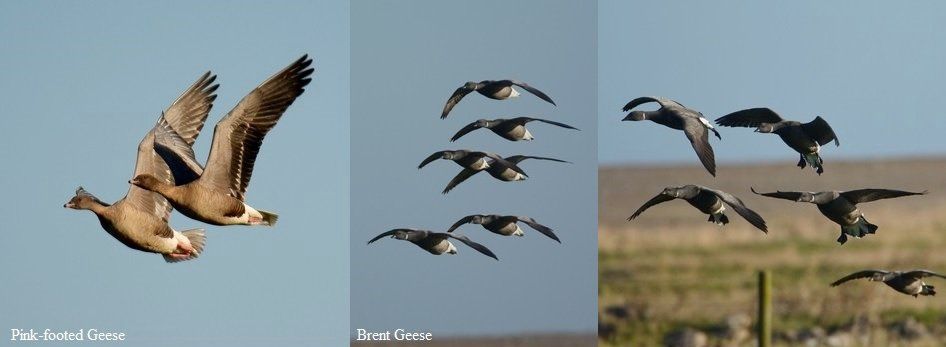
A walk through Holkham Park ensued where we found at least 3 calling Nuthatches, a few Blue Tit and Long-tailed Tits and a drumming Great Spotted Woodpecker, heard but not seen despite it calling later on.
Whilst in the wood the tumultuous calls of Pink-footed Geese could be heard from the Freshmarsh. These had obviously been disturbed and it wasn’t long before the culprit turned up overhead; a light aircraft disrespecting wildlife as is often seen with the swans at Ludham Airfield, purposely coming down low over the swans and not just to land!
Just before we reached the lake, a message came up on Jase’s phone saying ‘negative news’ of the reported female Scaup, but we had a look nevertheless and one of the first duck we saw was the Scaup! It doesn’t always pay to be guided by other people’s reports! Also here were Pochard, Tufted Duck, Gadwall, Teal, Shoveler and Mallard, with a herd of Fallow Deer on the other side of the lake. In addition, there were a total of 4 Red Kites, two of which soared over the lake towards us and were seen above us during the walk back through the woods.
From the two ‘pull-ins’ at Holkham Freshmarsh we spotted a flying Great White Egret, a Grey Wagtail flew over and a Muntjac was along the hedgerow.
We headed back along the coast after another enjoyable day out with Nature and not too many people. I happened to watch Winterwatch that evening and I found it rather ironic that after this programme via its presenters encourages people to get out in the countryside (without doing their ‘apprenticeship/countryside code’), Iolo Williams was asking people not to get to close to wildlife on Mull after there had been disturbance to wildlife reported, presumably (reading between the lines) by overzealous so-called ‘wildlife photographers!!
People are the biggest threat to our environment and wildlife and yet here are Springwatch/Winterwatch encouraging people who have no knowledge about wildlife and giving no guidance to people to just ‘get out there'; appalling!

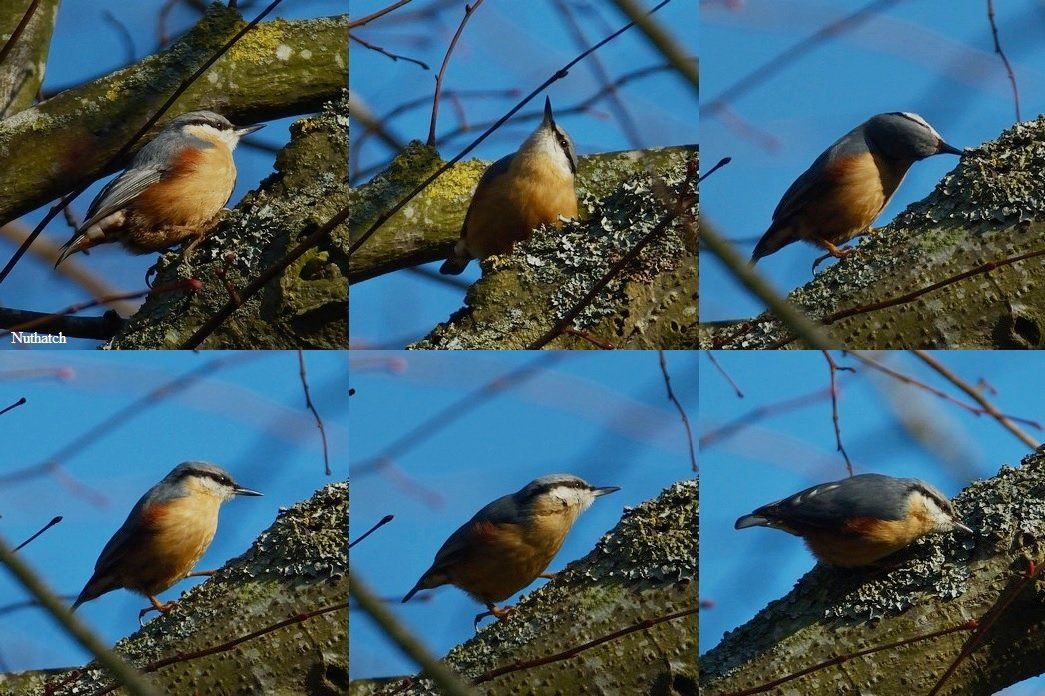
Geese, Swans and Thrushes afternoon.......
Having been ill the previous night, Jason was only able (but commendably so) be out for the afternoon (13th). However, we still managed to find some interesting wildlife.
We began at Buckenham Marshes where we looked for the 5 Taiga Bean Geese reported there, but like New Year’s Day unsuccessfully. Nevertheless, Pink-footed, White-fronted, Canada and Grey-lag Geese were present as were Chinese Water Deer, of which I counted at least 15 out on the marsh. Good numbers of Wigeon were here and at least 18 Shelduck.
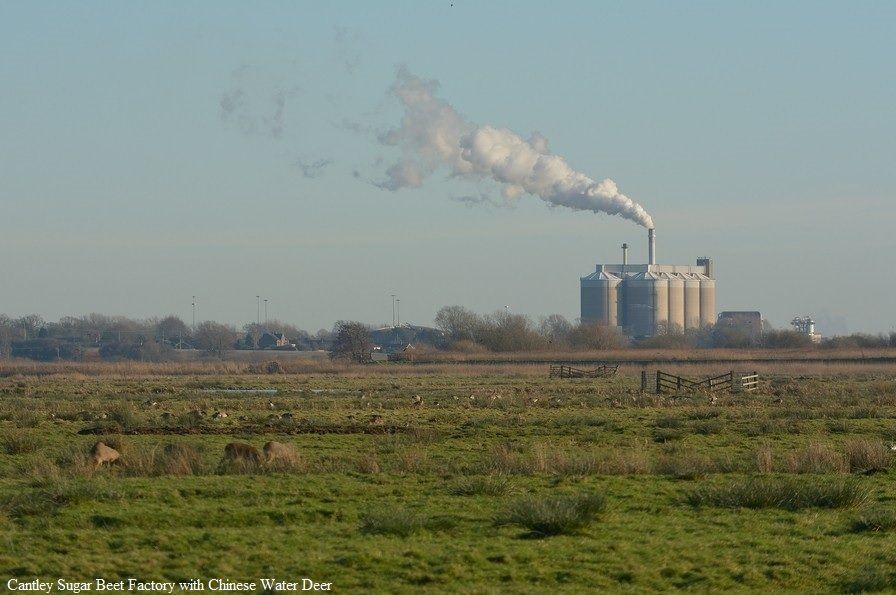

On the drive back along the road to the railway crossing we came across a single Fieldfare on a field hunting for prey and then a short distance further along we found 2 Mistle Thrushes.
The next ‘port of call’ was at Ludham Airfield, where we found a mixed herd of Swans containing 27 Whooper and a family party of 4 Bewick’s Swans.
Cutting through the back roads through Hickling we found a selection of birds looking for food on a field, just before Sea Palling. Here there were Fieldfares, Redwings, Pied Wagtails and Starlings.
Driving back along the coast road, we arrived at the ‘lay-by’ at Horsey, where on the opposite meadow there were at least 1500 Pink-footed Geese. I had a good look through the flock in the now fading light but could not find any Tundra Bean Geese, but Jase spotted a White-fronted Goose, of which there were indeed two of.
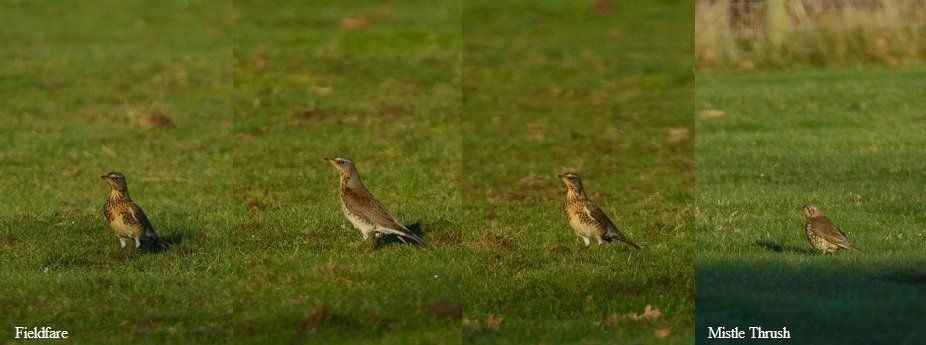


North Norfolk drive along birdwatch......
The day with Jason Nichols (7th) began at Cess Road, Martham where we found 4 Cattle Egrets present, on this occasion with Sheep.
There were more ‘white’ birds at Ludham Airfield with 27 ‘wild swans’ there, which appeared to be Whooper Swans, although viewing was difficult with the sun shining directly at our position.
Turning off towards Kelling there were 15+ Fieldfares, which flew out of the roadside trees onto a field, before a look along Beach Road, Salthouse found a Ruff and 2 Dunlin.
A Little Grebe and 5 Gadwall were on the pond at Walsey Hills and a flock of Brent Geese were on the Eye Field along Cley’s Beach Road. A look off coastguards found 2 Red-throated Divers on the sea and a male Snow Bunting, which flew along the beach towards us and then past us. Unfortunately there was no sign of the Iceland Gull.

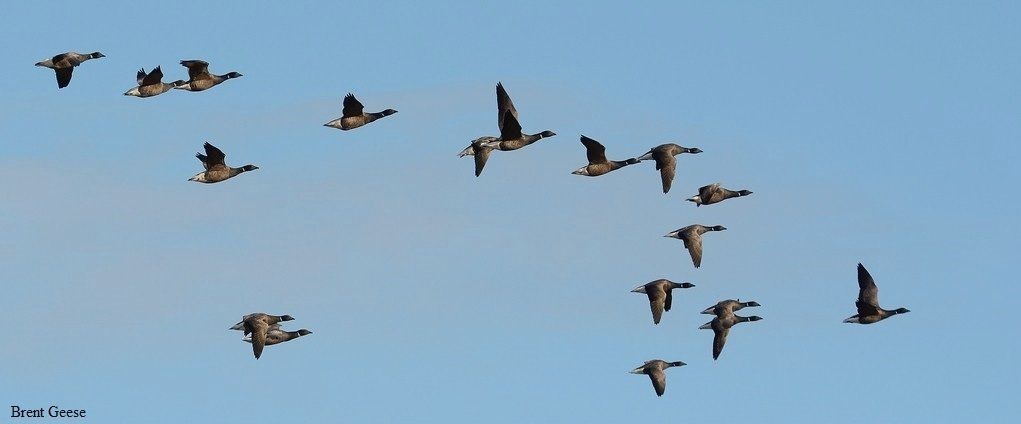
On to Morston Quay, but despite the place not being so busy, the high tide meant we only found a couple of Redshank.
Whilst travelling between Stiffkey and Warham Greens a covey of 10 Grey Partridges were good to see, but a stop at Wells’ East Pools was fairly uneventful.
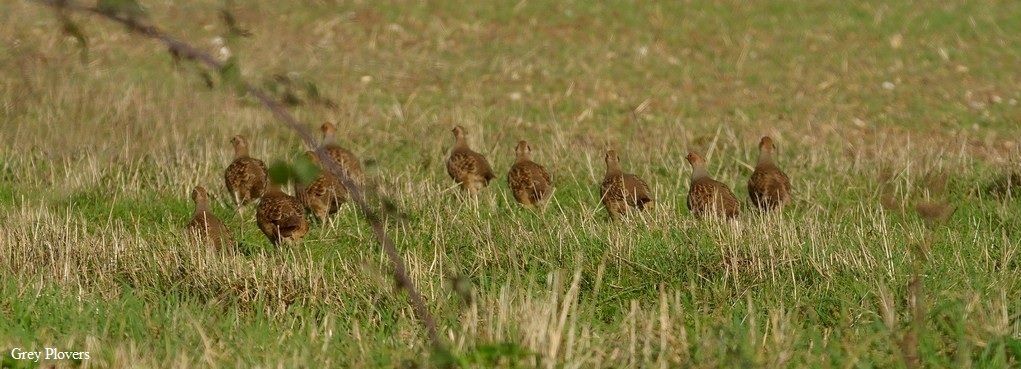
Despite being usually overrun with people we gave Brancaster Staithe another chance and were pleasantly surprised to find few people and more birds! Waders here included Bar-tailed and Black-tailed Godwits, Grey Plover, Turnstone, 4 Ringed Plover, 12 Dunlin, Oystercatcher and Curlew. The Curlew was photographed washing and preening and it was very interesting to note the way it preened its head; first dipping the tip of its bill into the water, shaking off the excess before preening around its eye and face. Needless to say quite a few photos were taken of the Curlew’s ‘wash and brush up’ routine!
A Little Egret was here, as were 30 or so Teal; Wigeon, a Goldeneye, 2 Brent Geese and a Red Breasted Merganser flew in and landed further up the channel. Both a Herring Gull and a Common Gull were breaking Mussel shells by taking them up and dropping them and then eating the contents, whilst Turnstones were in attendance for a quickly grabbed morsel. This feeding behaviour, by both Herring and Common Gulls has been witnessed here on many occasions over the years, but not seen anywhere else, thus far.
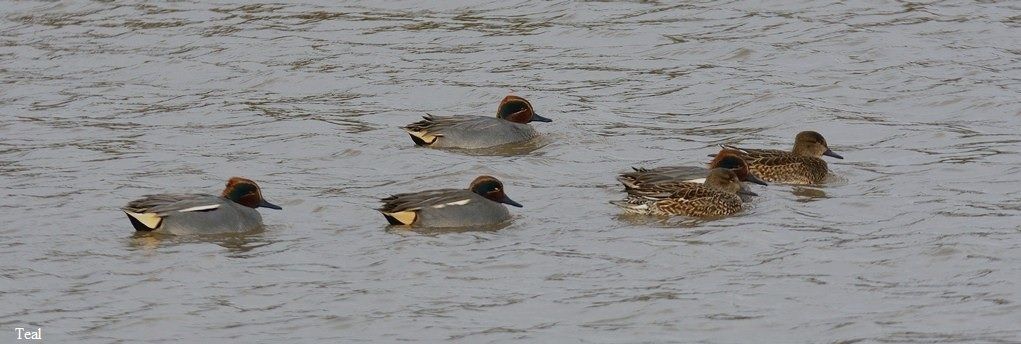
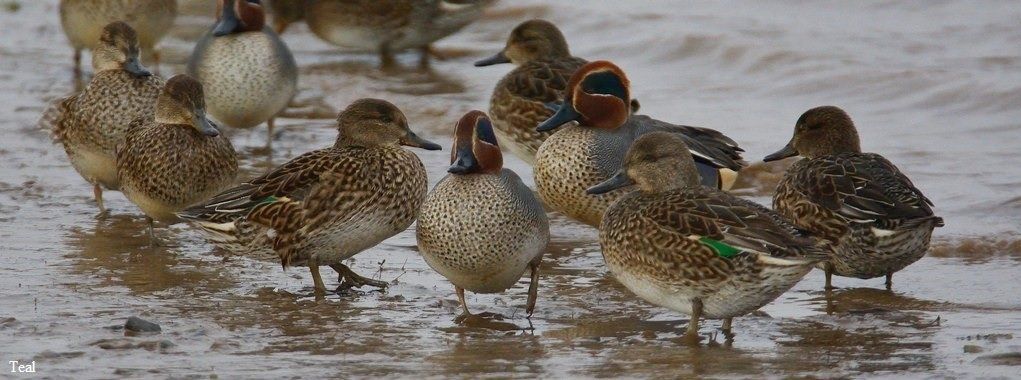





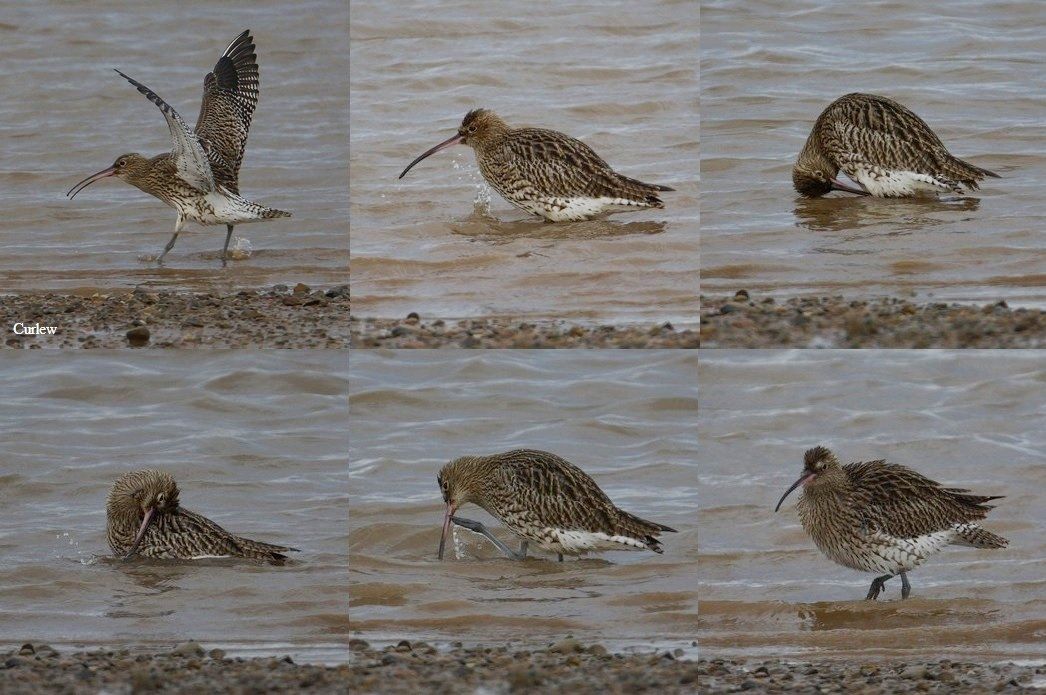

New Year Day local Birdwatch......
At 06.30 (1st) Jason Nichols arrived at my doorstep to go out on an ‘avian, record as much as you can day’! Walking out of the door there was no sound of life; another reminder of Silent Spring (Rachel Carson) or in this case Silent Winter, when once there was the sound of birds at 06.30 in the morning! However, the fireworks have seemingly put paid to the listening out of the window or door at the stroke of midnight for the first bird of the year.
We began at Halvergate, hoping for a Barn Owl en-route, but a Common Snipe, Lapwing and Mallard, audibly recorded had to suffice. This was followed by a Robin singing at Lingwood and a Mistle Thrush in song just before Strumpshaw car park where Blackbird, Rook, Pheasant, Jackdaw and Wood Pigeon were ‘listened on to’ the list.
The back road over the railway line at Buckenham saw our first mammal with a Rabbit (deservedly so!) and then a Barn Owl hunting over the meadow.
Although there was no sign of any Taiga or White-fronted Geese, the following were added to the day list along the Buckenham track: Wigeon, Wren, Grey-lag Goose, Mute Swan, Pink-footed Goose, Canada Goose, Marsh Harrier, Little Egret, Grey Heron, Starling, Redshank, Black-headed Gull, Shelduck, Shoveler, Teal, Common Buzzard, Carrion Crow, Linnet and Cormorant (30th species) and several Chinese Water Deer.
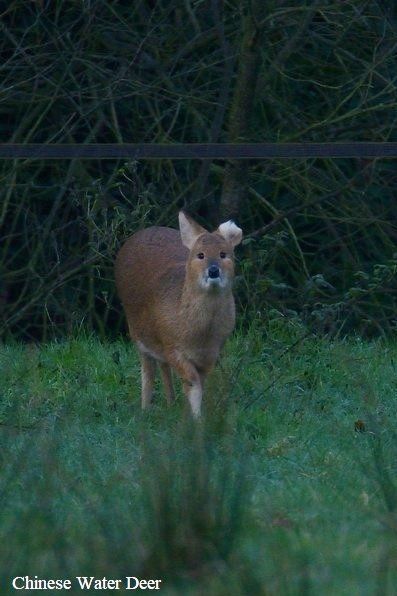
Driving back, towards the level crossing; Dunnock, Lesser Black-backed Gull, Collared Dove, Chaffinch and Blue Tit plus 3 Muntjac were seen.
A Kestrel was perched on a telegraph post back at Strumpshaw and Magpie, Common Gull and Herring Gull were seen en-route to Great Yarmouth.
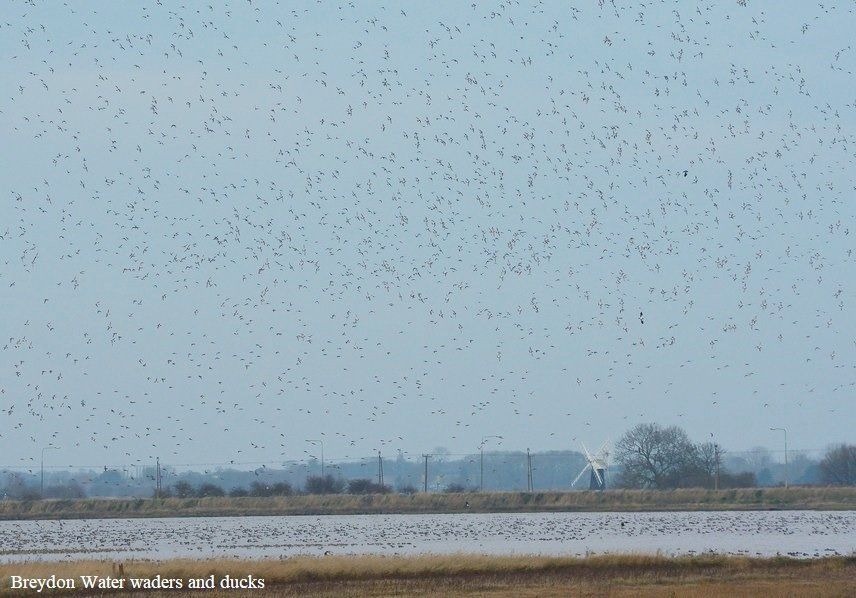
After parking up in the Asda car park, we scanned Breydon Water and found and added to the list: Great Black-backed Gull, Golden Plover, Pintail, Curlew, Black-tailed Godwit, Dunlin, Grey Plover, Oystercatcher, Avocet and Meadow Pipit (50th species).
On to Gorleston seafront to look for, amongst other birds Mediterranean Gull, but apart from a Pied Wagtail we found what looked like a ‘fun-run’, although Jase didn’t understand how those two words could be linked together!
We decided to go against the planned itinerary and visit Lowestoft, where a Grey Squirrel was another mammal tick. At Links Hill car park, we found Mediterranean Gull and Turnstones and on one of the offshore rocks, a Purple Sandpiper, but nothing were either on the sea or flying past.
Just up the road at Ness Point we found a Black Redstart perched on the fence at the turbine yard and on our way out 3 Greenfinch; again nothing on the sea here.
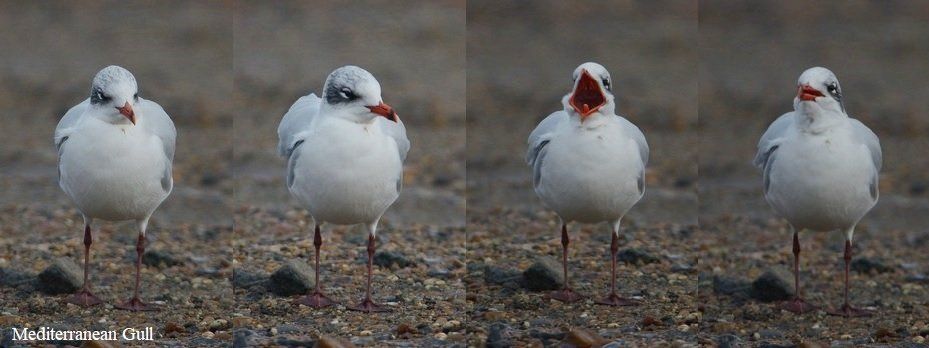
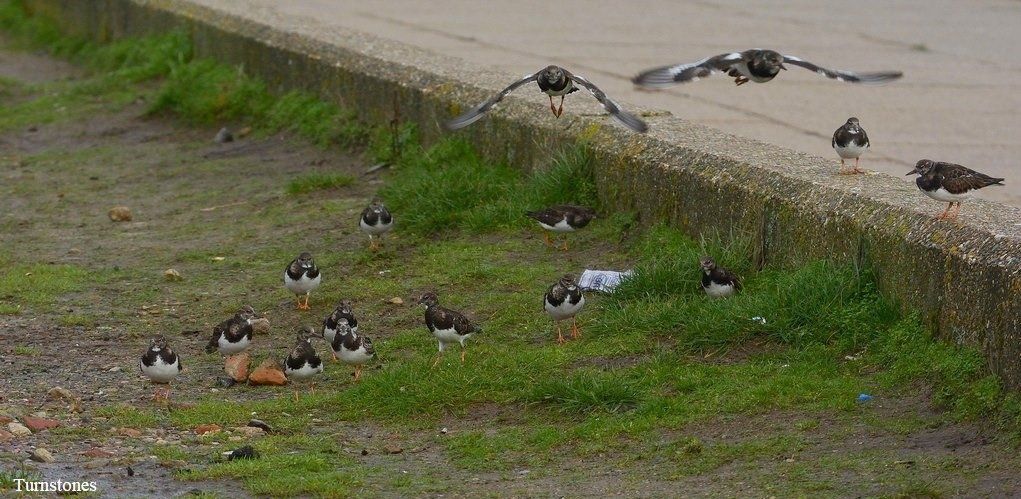

Back on track we headed back to Norfolk and our previously designated location at Ranworth Broad, hearing a Yellowhammer in song on the way to Panxworth.
Walking through the wood at Ranworth we added Siskin, but little else apart from a few Blue Tits was in the wood. On Ranworth Broad: Gadwall, Coot (60th species), Tufted Duck, Great Crested Grebe and Water Rail (heard) were added to the day list.
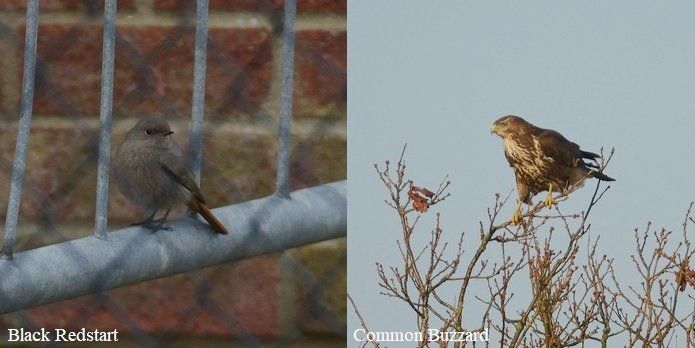
A quick look at Malthouse Broad amongst the ever increasing human presence found an Egyptian Goose.
News had come through that Taiga Bean Geese were being seen at Buckenham and a Tundra Bean Goose was with Pink-feet at Blofield, so we decided, albeit unconvinced totally to return!
We found the Pink-feet at Blofield approximately 2000 of them, so searching for the Bean was like looking for the proverbial needle; however, we gave it a go but had to give up due to time constraints for the day’s list. Again, there were so many people out walking after abandoning their cars in a pull-in!
Buckenham train station car park was absolutely full and the place was heaving with people. I have never seen so many people out on New Year’s Day as I have seen in recent years; where do they all come from and why? Anyway, a Cetti’s Warbler was the only addition we got for the list and I for one was pleased to get the hell out of there. I do not nor have I ever associated looking for wildlife an enjoyable experience surrounded by Homo sapiens! At one with Nature? I don’t think so!

Via Strumpshaw we found Great Tit and House Sparrow, before arriving at Filby and on down the path to Ormesby Little Broad, where the Red-necked Grebe reported on New Year’s Eve was still in situ, thankfully!
Across the road at Filby Broad a few Goldeneye were good to see, but despite Ken Saul’s recent reports of 200+ Pochard there at the end of December there were none whatsoever!
Turning off towards Martham crossroads we immediately came across the presence of yet more humans, this time queued up in cars all along the road to the crossroads, presumably heading for the Seal colony at Horsey; another no-go area on New Year or indeed anytime around Christmas! However, whilst stuck in the queue we did see 3 Skylarks, our 70th species.
At Potter Heigham Marshes, another wait for oncoming traffic ensued, but at least we did see whilst waiting to proceed down the track, that sometimes elusive 1st of January bird; a Long-tailed Tit!
Eventually heading down the track I spotted a Stonechat out of the car window, but there ended any more additions to the list, with very few birds on the pools and in the area in general.
Deciding to turn off the track towards Potter Heigham village was a good decision as here we found a Ringtail Hen Harrier hunting over an arable field much to the annoyance of a flock of Starlings! A little bit further along the road a Thrush flew across the road in front of the car and landed in a Holly. With a little bit of contortion I managed to get my bins on it, which revealed the Thrush was a Redwing.
Next we went to look for ‘wild swans’ near Ingham and were just in time to see several Bewick’s Swans taking off, before heading back along the coast road to the ‘lay-by’ at Horsey.
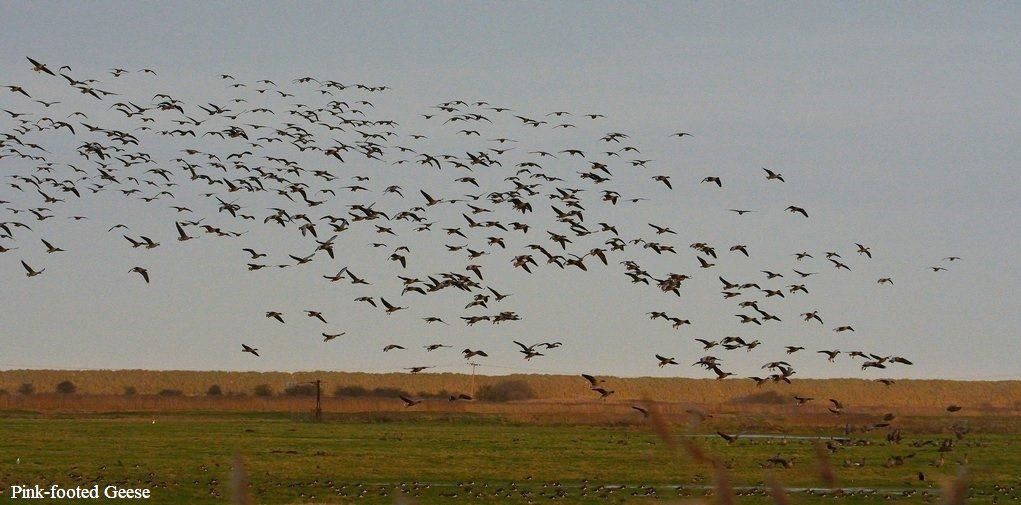

After a short while of looking around both sides of the road, 3 Cranes flew in and landed on the meadow. This was a family party with ‘junior’ still in tow with its parents. Then, towards the dunes a large white bird was flying south and was identified from the images taken as a Great White Egret!
Somewhat (or maybe not!) unusually we had not seen a Moorhen all day, but this was rectified on passing Martham duck pond.
A short way up the road we ventured down Cess Road, Martham and despite no reports for several days we found the Cattle Egrets (6) with the cattle, just along a track. Now on 79 species for the day, it seemed a shame not to achieve a nice round figure 80! So we decided to drive around the back roads of Somerton and Winterton in search of another species we would normally see, but thus far had not.
Eventually we came across a covey of Red-legged Partridges. It was probably not surprising that we had not encountered these birds until now due to the so-called ‘traditional New Year shoot by the Elmer Thuds of this world! With a Sparrowhawk flying past the wood and with light fading fast we decided to call it a day with a total of 81 species of birds.
Wildlife Photo Diary 2021
December 2021
A morning well-spent......
With Jason on Xmas shopping duties (23rd) we just had the morning to see what we could find. As we drove along the coast road from Somerton, the grey skies and damp conditions didn’t bode well! However, as it turned out, two and a half hours was well spent.
Two Marsh Harriers were seen at Horsey and a little further on at Waxham approximately 300 Pink-footed Geese were on a field.
With no sign of the Great Grey Shrike at Waxham; just a Common Buzzard perched amidst the Wood Pigeons in the hedgerow (uncomfortable bedfellows one would think!) we headed along the coast road to look for swans.
Just before Ingham village we found all three species of Swan present. Exact counts were difficult, but along with the main contingent of Mutes and several Whoopers there were at least 12 Bewick’s Swans present along with a complimentary Little Egret, Grey Heron and the sound of Cranes coming from somewhere inland.
En-route to Walcott we found 2 Fieldfares, Song Thrush and several Blackbirds feeding in a field.
Although there was very little (actually, pretty devoid of birds!) on the sea at Walcott, 2 Sanderlings were very pleasant to see as they typically ran along the sand and when disturbed by a dog walker preferred to run rather than fly, obviously inspired by every Sanderlings’ favourite-Bruce Springsteen (Born to Run, for those not old enough to remember)!
We headed back along the coast road, with pretty much nothing new to add, but decided to go and look for Cattle Egrets.
No Cattle Egrets had been reported at Martham for several days, but that didn’t put us off having a look along Cess Road.
With the cattle now gone from where they were and indeed where I saw the 7 Cattle Egrets (18th) and only a few sheep in the distance unsurprisingly there was no sign of the egrets.
However, on the drive back along Cess Road I saw some cattle through the trees and then saw a Cattle Egret perched on one of the cow’s backs. We turned around, parked up and found a track, which would give us views of the cattle and sure enough here were 4 Cattle and one Little Egrets. We watched the egrets for a while as they perched on the cow’s backs and rode bareback on occasions, taking several photographs despite the overcast weather. A Common Buzzard was perched in a bush nearby and after another look at the Cattle Egrets we headed back after a very rewarding morning; always look for cattle!

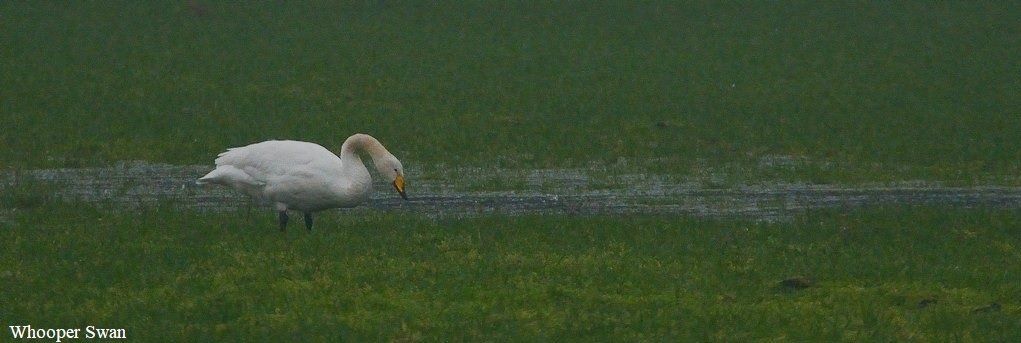




The Magnificent 7; Cattle Egrets in the mist......
A text from Jason Nichols (18th) informed me about something of interest, literally on my doorstep!
A short drive up the road in Martham and turning off near the Co-op (where I had planned to go today anyway) along Cess Road, eventually came across a group of cattle, just before the end of the road, amidst which I could see a couple of ‘white birds’.
These were Cattle Egrets (below) and gradually the number of egrets increased until I could see all of the 7 reported here. I watched the birds for a while and took photographs even though it was a case of; ‘egrets in the mist’ the trip was very worthwhile and probably the most Cattle Egrets I have seen together in one place in the UK

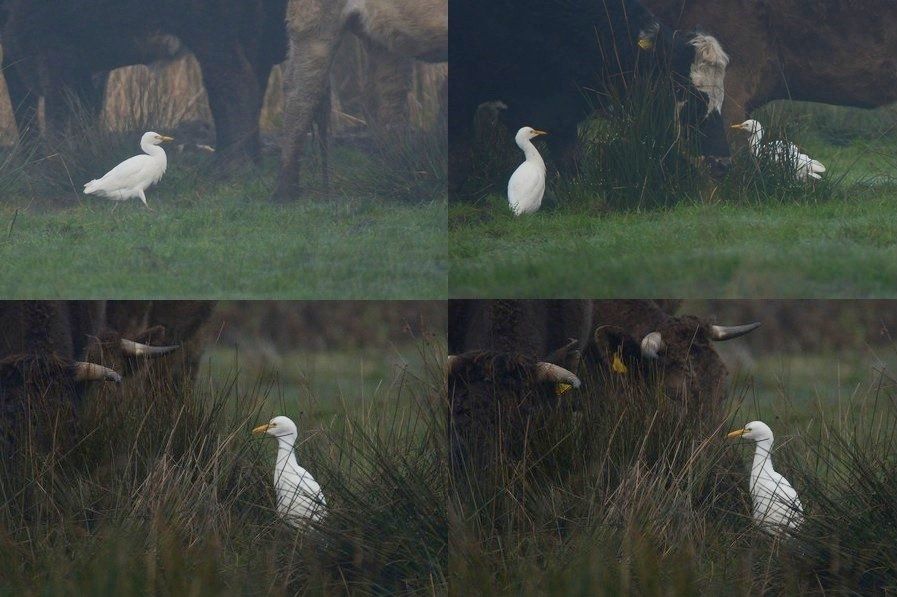
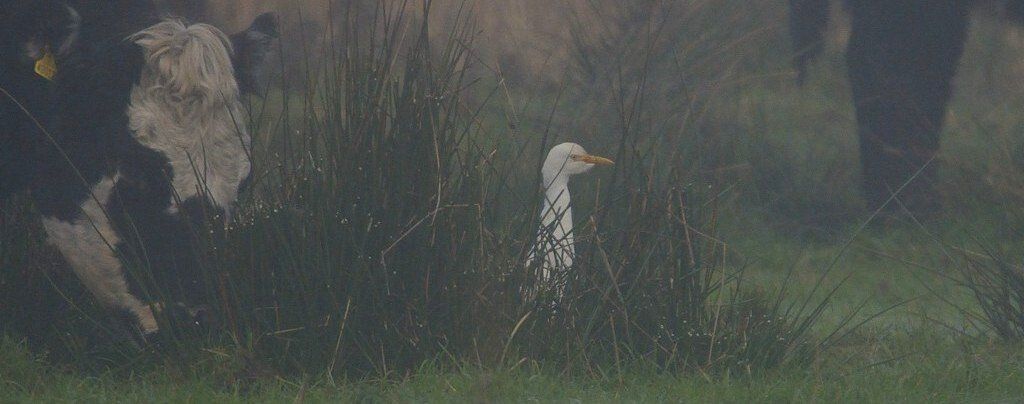
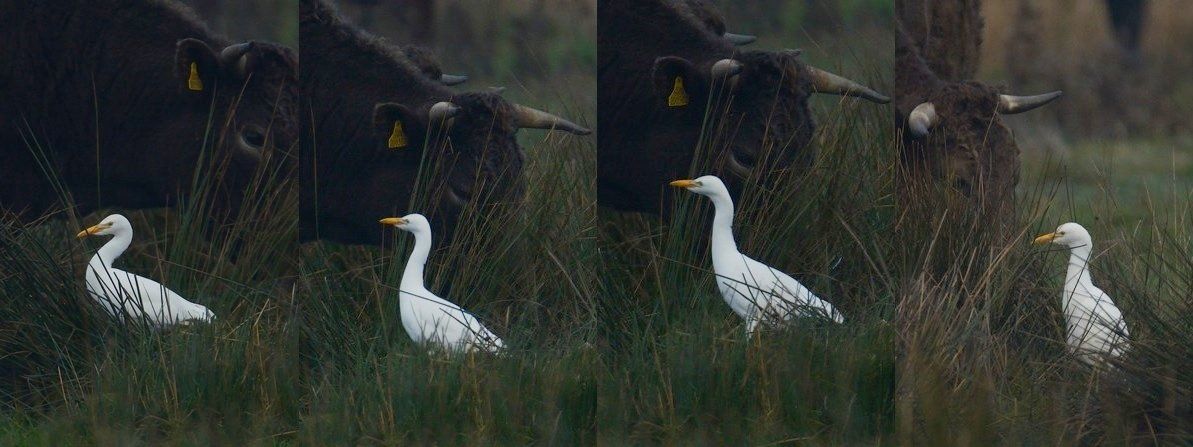


Black Redstart and Blue skies......
A drive along the coast road, with Jason (15th) didn’t find any Cattle Egrets at Somerton (not reported for some time now), but at least 200 Pink-footed Geese were on a field at Waxham where there was also 8 Pied Wagtails.
Further along the road at French’s Farm, Waxham a look for the long-staying Great Grey Shrike eventually saw it perched at the top of a hedge before returning to its seemingly favourite place on top of the haystack.
At Hempstead Marshes, at least 7 Bewick’s Swans were present and at least one Whooper Swan with the Mute Swans, although 4 other ‘wild swan’s’ identity couldn’t be discerned.
The weather up until now had ranged from part sun and dull grey skies, but now at Cley church the blue sky was virtually cloudless and it was here we found the Black Redstart on top of the church roof. The male Black Redstart occasionally darted out to catch flies, which had emerged due to the sunshine and the redstart looked very good against a blue sky and perched on a roof with colourful Lichens. Two Pied Wagtails were also present on the roof.
At Morston Quay, 2 Little Egrets were chasing each other around before settling down and 2 Grey Plover and at least 8 Redshanks were also present.
A look at Well’s east pools found Brent Geese and Wigeon the most abundant species present, but the highlight here was a Peregrine flying over in a westerly direction causing the birds on the pools to become very uneasy.
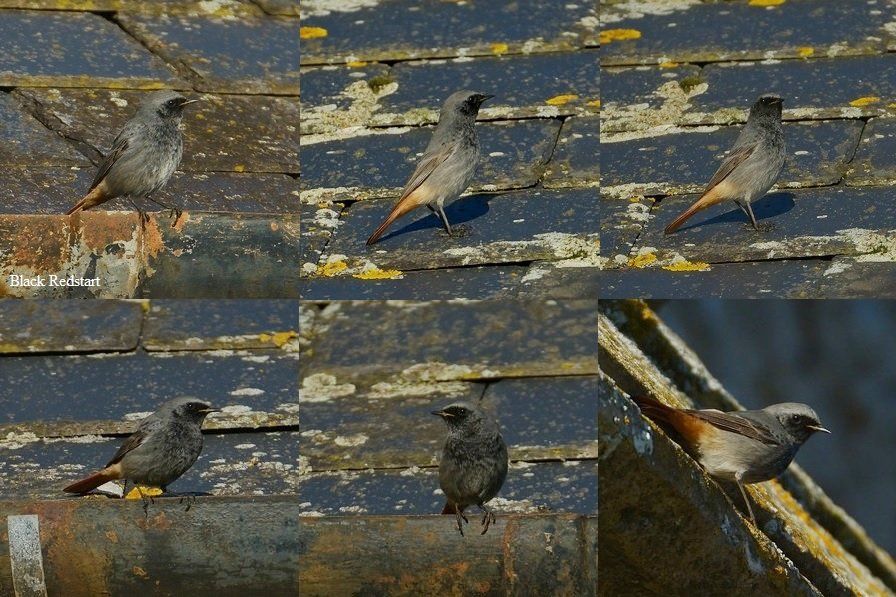
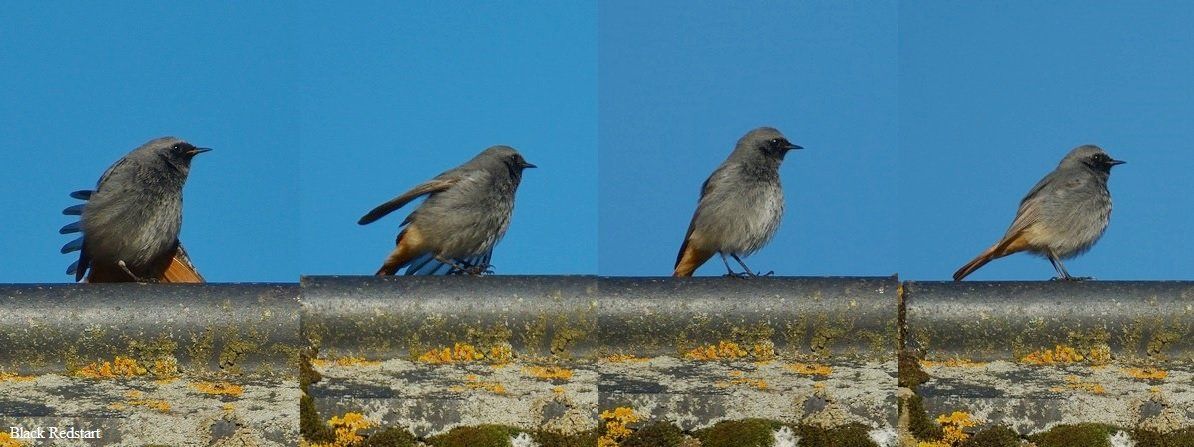



Local look......
A frosty morning (11th) and a look around the immediate vicinity; beginning at Filby.
The previous day 2 drake Goosander had been reported (Ken Saul) on Ormesby Little Broad, but there were no Goosander today.
A variety of ducks were present with: 4 Teal, 2 Shoveler, Tufted Duck, 5 Gadwall, 20+ Mallard and two resplendent drake Goldeneye. A Common Buzzard flew over and a Water Rail was heard.
At least 20 Siskin were seen on the walk back to the car park and a Marsh Tit was heard.
A look at Rollesby Broad found several rafts of duck on the far side of the broad, near the reeds, so in the absence of a scope I took several photos of the birds for examination later. The photos revealed that the rafts consisted mainly of Pochard and Tufted Duck and one of the images revealed what looked good for a duck/immature Scaup.
A look across the road at Ormesby Broad found Tufted Ducks again and at least 300 Coot.
Next stop was Somerton, where I looked for any Cattle Egrets and eventually found one, once it had emerged from behind a green water bowser.
A little further along the road at Horsey, at least 300 Pink-footed Geese were on the field opposite the ‘lay-by’, where there were also Lapwings and Golden Plovers.
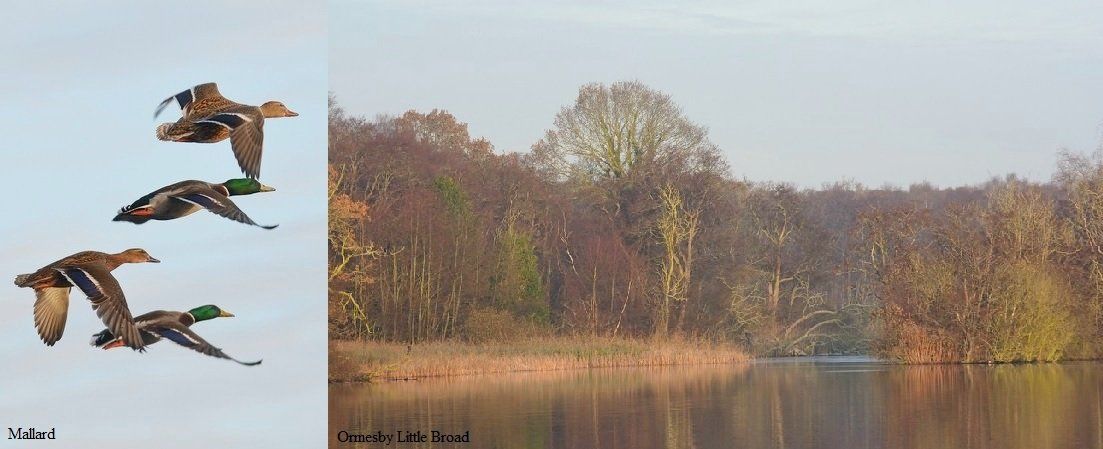


Unseasonal Barred Warbler and when death provides for others......
Today’s (9th) fieldtrip with Jason centred around two birds; an unseasonal Barred Warbler and a juvenile Iceland Gull.
The journey began along the Somerton to Sea Palling coast road, but there was no sign of any Cattle Egrets and a Marsh Harrier was the only bird of note, so we headed to Wiveton.
After parking up we walked down Leatherpool Lane, Wiveton and a small ensemble revealed the spot where the Barred Warbler was being seen. Despite some unacceptable behaviour from a well known (in Norfolk at least!), ‘wildlife photographer’, trying to join the warbler in the same bush and casually walking in front of everyone we saw our first glimpse of a December Barred Warbler. The warbler moved around the bushes feeding on Hawthorn berries and at one point was in the trees right above our heads; not a typical skulking individual. After gaining some acceptable images in the grey light we moved on to Salthouse.
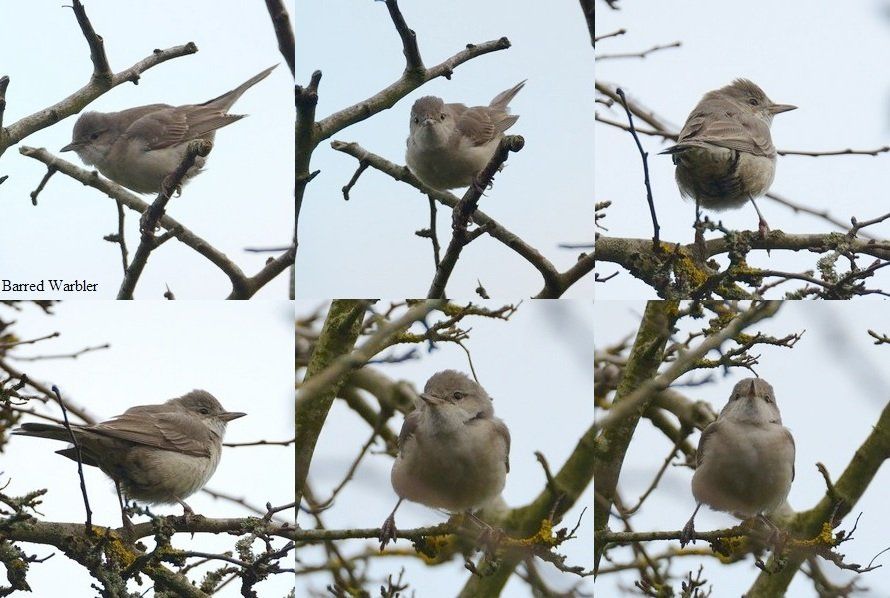
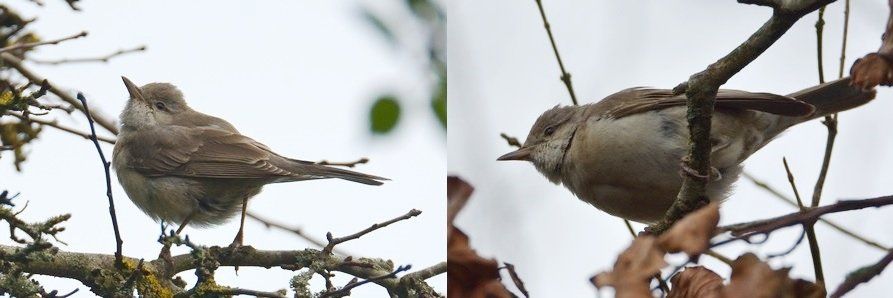
The juvenile Iceland Gull had been reported at Salthouse, so we first went to Beach Road, where Jase spoke to a couple who informed him that it was far better to park at the Iron Road and walk down to the beach.
These instructions were gratefully followed as the gull was just east of the bottom of the track, feeding on a Grey Seal pup carcase. This was quite a grizzly sight, especially as we had gone out of our way the previous Thursday (2nd) at Salthouse to get help to a stranded pup. However, despite my far more ‘softer view’ of wildlife, the scientific side reminded me that sometimes one animal that dies provides life for another and that is how the ecological food chain works!
We decided to head back along the coast road, stopping at Walcott to have a brief look out to sea, which was pretty devoid of movement, either on the sea or passing over it.
A Common Buzzard was seen en-route to Ingham, where we found a single Whooper Swan amidst the Mute Swans.
Driving along the Horsey ‘straight’ a white bird caught my eye, which was in fact a Pheasant, so we turned around in the ‘lay-by’ and went back for a better view. However, there was no sign whatsoever of an individual Pheasant that amidst the Juncus grassland should have stood out like the proverbial ‘sore thumb’. Nor was there any sign when we doubled back on ourselves after turning around at the mill!
Whilst I have witnessed a cock Capercaillie (the size of a Turkey) disappear in a Scottish Pine wood and indeed African Elephants completely disappear in Acacia bush in East Africa, the white pheasant was a first (name-dropping not intended)!
With no sign of the Cattle Egret at Somerton, despite being reported, we called it a day; an enjoyable day.

Black Brant and Seal rescue, but not a great public/animal-relations exercise for NWT!
The day out (2nd) with Jason began along the Somerton to Horsey coast road where we looked to see if there were any Cattle Egrets still present. No sign of any egrets but a Muntjac was just inside a field as we drove past so we decided to go back and get a few images, before continuing along the coast road.
At Hempstead Marshes (this location has been called Ingham and Sea Palling, so might be wrong about the precise name of the location) we found at least 8 Whooper Swans amidst the Mute Swans, but these were hunkered down, trying to slim line themselves against the strong winds, so exactly how many were there was difficult to ascertain.
We headed to Cley Coastguards where there had been a report of a Glaucous Gull but there was no sign, with the strong northerly winds with a bitter edge to them hindering a more prolonged search. However, this didn’t stop one of the Norfolk Wildlife Trust’s parking trolls from coming up to Jason’s driver’s side window and began questioning what we were doing there and if we had a membership card, which we should have displayed in the window. Really, since when? Who was this individual with no identification of who he was and was there any need for his behaviour, especially when shortly afterwards he drove away, missing anymore potential ‘fare dodgers’!
A flock of approximately 300 Brent Geese had been on a winter wheat field at Salthouse on the way to Cley, but we decided to look through them on the way back, which was a mistake as when we returned they were bathing on ‘Swan Lake’ and then flew out of sight behind an inland hedgerow.
We decided to have a drive around the back roads at Salthouse in the hope that we could relocate the Brents, even though, judging by the maps this was unlikely at best! Nevertheless, we did find a Common Buzzard perched in the woods and watched it hunt in various areas of the wood by perching, eyeing up potential prey and swooping down to the woodland floor. It was not seen to capture anything but it was nice to watch the Buzzard’s hunting behaviour.
After driving around a circuit, which brought us back to the coast road we found the Brent flock were back where we originally saw them. Looking left to right through the geese it wasn’t long before I spotted the Black Brant, near the back of the flock and further scrutiny of the flock possibly, momentarily found what may have been a Pale-bellied Brent, but with the flock constantly trading positions, I couldn’t be sure.

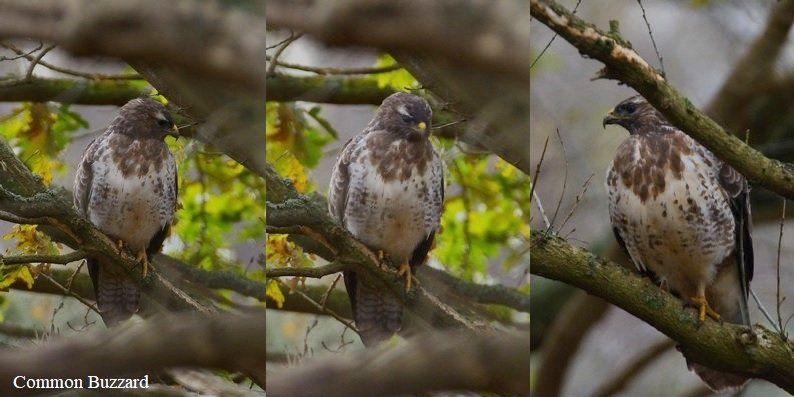
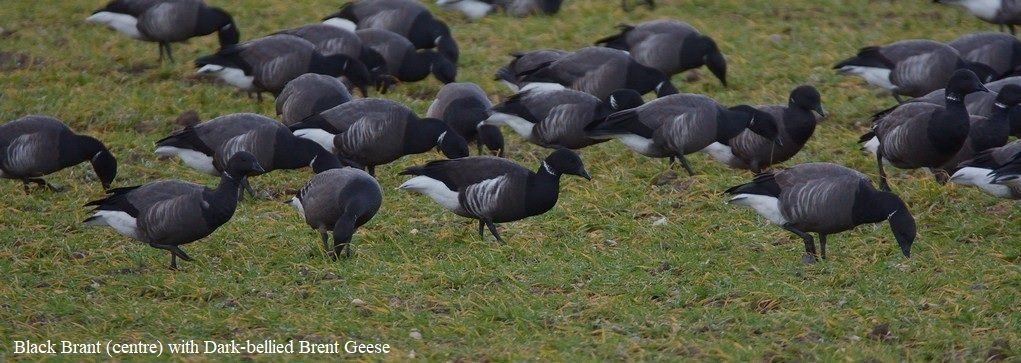

A drive along Beach Road, Salthouse was pretty uneventful but two people looking at something on the top of the shingle ridge drew my attention and what I saw was a Grey Seal pup.
The pup was clearly alive raising its hind quarters and tilting its head up, but being so far away from any known breeding colony it was clearly on its own and needed assistance. Jason rang the RSPCA on several occasions but only managed to get cut off before finalising the details of the pup. Similarly, a call to East Winch Wildlife Centre was of no immediate help so we decided to try and get help at the NWT’S reserve centre, following a hunting Sparrowhawk along part of the way, with an attempt to photograph it through the car’s windscreen ensuing.
Jason went in and spoke to two women at the reception desk, but without going into extensive details and by implication (at the very least) they were not interested and despite him mentioning that we were not getting through to the RSPCA etc due to a poor signal at Salthouse they did not offer to use their landline to call for help. I find it rather ironic that an organisation, which makes its money from wildlife, was less than willing to offer help to an animal in need of help on ‘their patch’!
What we did finally come away with after some insistence from Jase was a telephone number for British Divers Marine-life Rescue, who I spoke to back at Salthouse, whilst Jase checked that the seal pup was still alive. Molly, who I spoke too was very helpful and after sending photographs of the seal to her and after another couple of phone calls to make sure help was coming, I was assured that the matter was being dealt with.
An eventful day and not a great advertisement for Norfolk Wildlife Trust public relations or their attitude to animals and not for the first time!
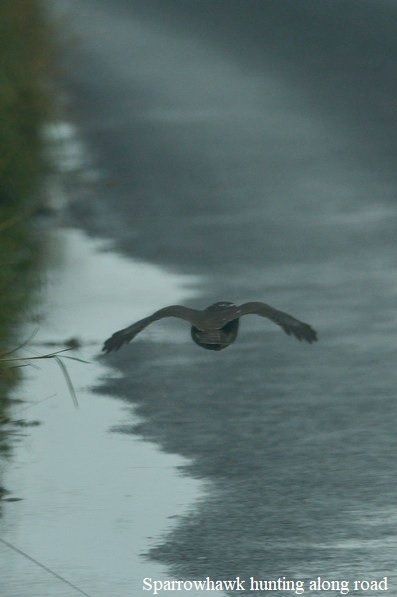
November 2021
Egrets and Cranes......
There had been 4 Cattle Egrets reported the previous day (29th) at Horsey, so a short drive there seemed to be a worthwhile pursuit this morning (30th).
Two Little Egrets were seen along a ditch, just past Somerton and a ‘white bird’ was seen momentarily as I pulled into the lay-by, just south of Horsey Mill next to some cattle feeding from a hay rack. However, a scan around could only see cattle, with the ‘white bird’ seemingly disappeared!
Having past some cattle near Somerton Mill, I drove back there to have a look for any Cattle Egrets, but found none, but 4 Cranes flew over and I decided to drive back along the road to try and locate them as they appeared to land.
I couldn’t find the Cranes, but back at the Horsey lay-by a ‘white bird’ with the cattle found a Cattle Egret. The egret kept disappearing from sight, probably hunting along a dyke but occasionally popped up into view.
Cattle Egret and Cranes: landing, feeding and departing below.
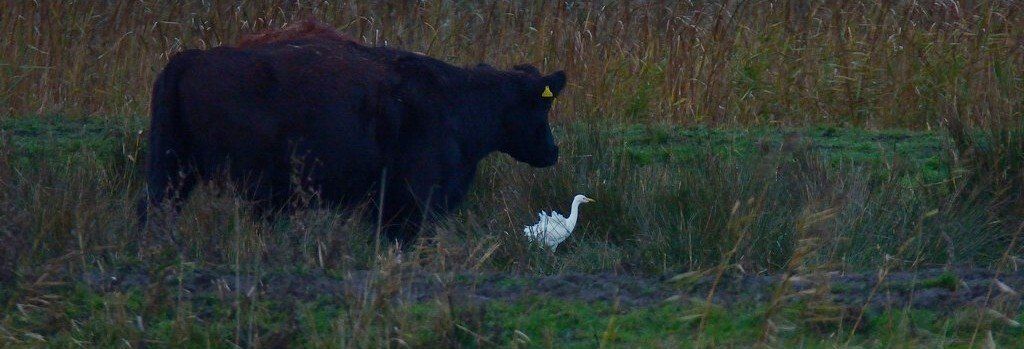
Suddenly 4 Cranes arrived on the adjacent field; a family group containing 2 adults and 2 juveniles. The Cranes hunted for food on the winter wheat field and one of the adults drank from a flooded part of the field, before leaving again (on their own initiative), flying up and then flying north alongside Horsey Mere before going out of sight somewhere over the Horsey marshes.
Attention turned back to the Cattle Egret, which eventually flew along the dyke and landed out of sight, past the last grazing cow. It was seen again on a couple of occasions before I left to return home.





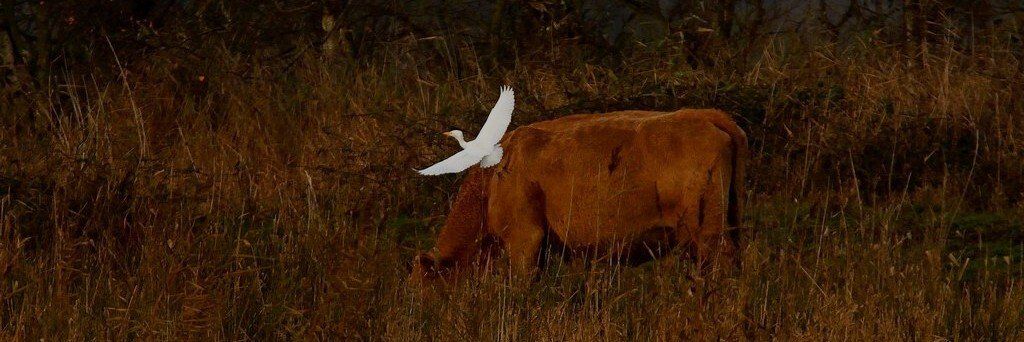


Shrike, Tystie and Snow Buntings......
The day (18th) with Jason began at Waxham, where from the side of French’s Farm we looked for the Great Grey Shrike, which has been present for some time now.
The first thing we saw was a Marsh Harrier and then the shrike was seen (albeit at some distance) perched on the tip of a branch that extended far enough up for it to be visible behind the straw stack at the back of the field.
A Sparrowhawk perched on the straw stack and another Sparrowhawk was also seen, plus a Red Kite, so a good start to the day.
A drive around the back roads of Sea Palling and Hickling found nothing of note, on the way to reconnecting to the Stalham by-pass so onwards to Weybourne.
A Black Guillemot had been seen fairly regularly over several days at Weybourne, Salthouse and Cley, so we thought we would try and find it for ourselves before, it was potentially reported on Bird Guides.
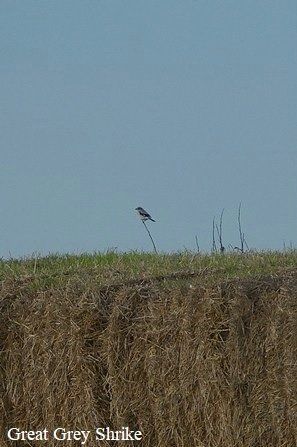
On parking up near the beach, there came a report via Jason’s subscription to reports with Bird Guides that the Black Guillemot had been seen just 10 minutes ago, ironically, west of Weybourne Beach car park! So we walked a little way west scanning the sea as we did and eventually I spotted what I thought was the bird in question through my bins, which was then confirmed through Jase’s scope.
A nice find (second-hand) for both of us, as it was Jason’s first in the UK and my first in my home county; not that it really matters, as birds don’t have boundaries like the birding fraternity listers do!
Also here were several other auks; Razorbills and a few Guillemots and at least 8 Red-throated Divers. Shag was seen perched on top of a post in the sea and 3 Sanderling flew west, a rewarding visit.

Further on, at Salthouse Beach Road, 3 Barnacle Geese were amongst the Canada Geese, before parking up at the car park at the start of the Cley’s East Bank.
A Little Egret was catching Three-spined Sticklebacks in one of the reed pools along the way to the dunes, where there was also a Curlew wading in the water, but looking for different prey to the egret.
Both a juvenile and an adult Gannet were offshore as were at least 3 Razorbills, before we began walking east alongside the dunes to look for Snow Buntings.
Eventually some small birds flew up from the dunes, put up by a dog, once again off its lead. Not the dog’s fault just its human owner/s! The birds were all Snow Buntings; at least 60 of them, which then somewhat frustratingly flew over and landed several times on Arnold’s Marsh. Thankfully they flew back to the dunes, where they searched for seeds and a few images were taken.
A Marsh Harrier was seen flying over Beach Road, Cley, where at Coastguards there were a few Auks on the sea.
We headed back along the coast seeing Common Buzzards and a Kestrel to make up a ‘five bird of prey day’, but a drive along the east coast found relatively very little, apart from Pink-footed Geese relocating and a Marsh Harrier. Still, both these birds were a welcome sight ending a very enjoyable and rewarding day.
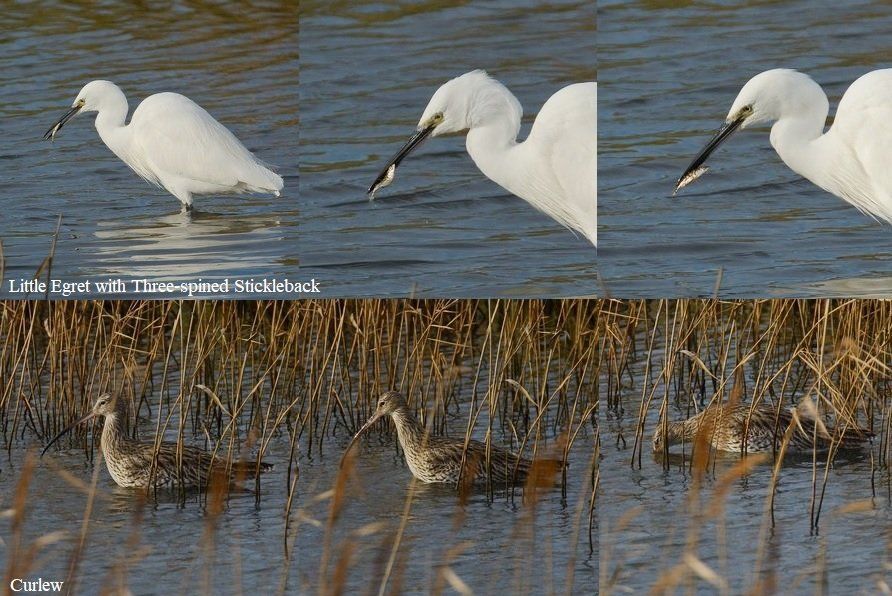
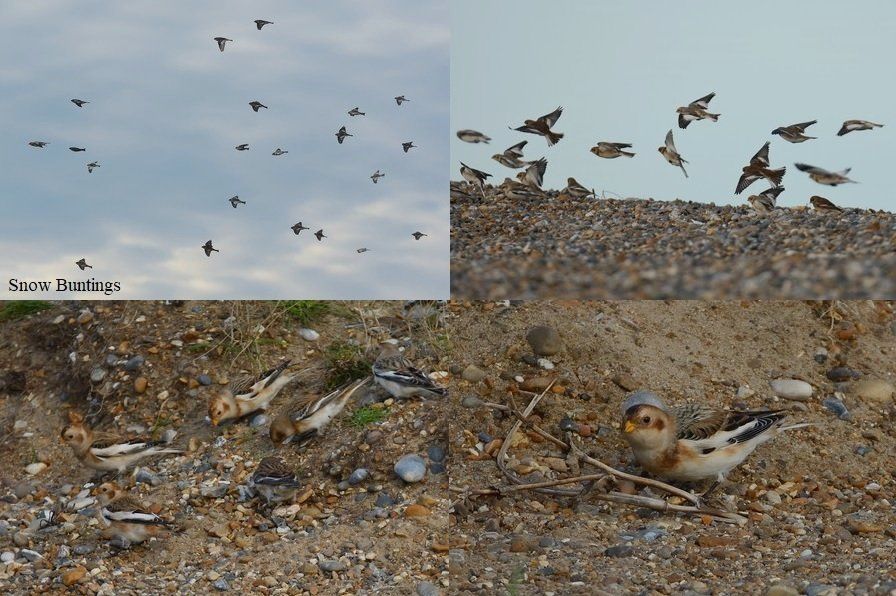

A two Barn Owl evening......
Coming back into Martham after refuelling the car (9th), a skein of approximately 60 Pink-footed Geese were flying south over the fields towards Rollesby.
Pink-feet were to feature throughout the late afternoon and early evening, with skeins relocating as I headed to Waxham to try and find a Great Grey Shrike, favouring some straw bales behind French’s Farm. Unfortunately there was no sign of the shrike, so I headed back to the ‘lay-by’ at Horsey.
Apart from a couple of Marsh Harriers and more skeins of Pink-feet there was very little else around at Horsey.
Further down the road at Somerton, I parked up opposite the Mill and waited for something to appear! At least 3 Marsh Harriers were quartering the reedbeds in the distance, perhaps hoping for a late meal before going to roost and Grey-lag Geese were moving over the reedbeds, whilst a few more Pink-feet flew over.
Finally at 16.37, my patience was rewarded when what I was hoping for appeared; Barn Owl hunting over the fields in the distance just north of Somerton Mill. I tried to capture some distant shots of the owl using an ISO setting I have never used before, apart from in desperation (like on this occasion), but the words crow in a coal bunker come to mind!
With darkness fully in place I headed back to Martham, but just past the Somerton Lion there was one last surprise, when another Barn Owl rose up over the hedgerow to my left. No decent images of birds, just the landscape they were in and for that I am grateful.

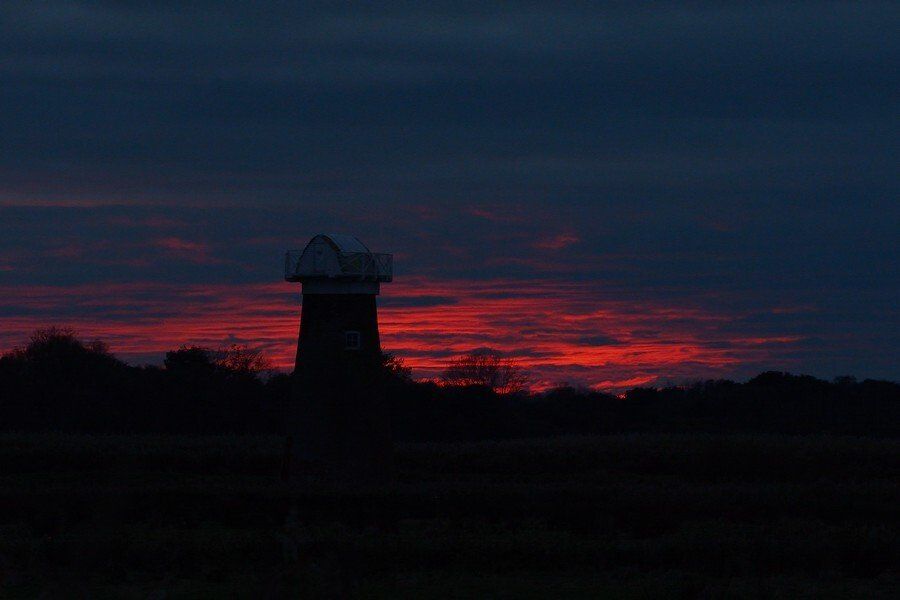
October 2021
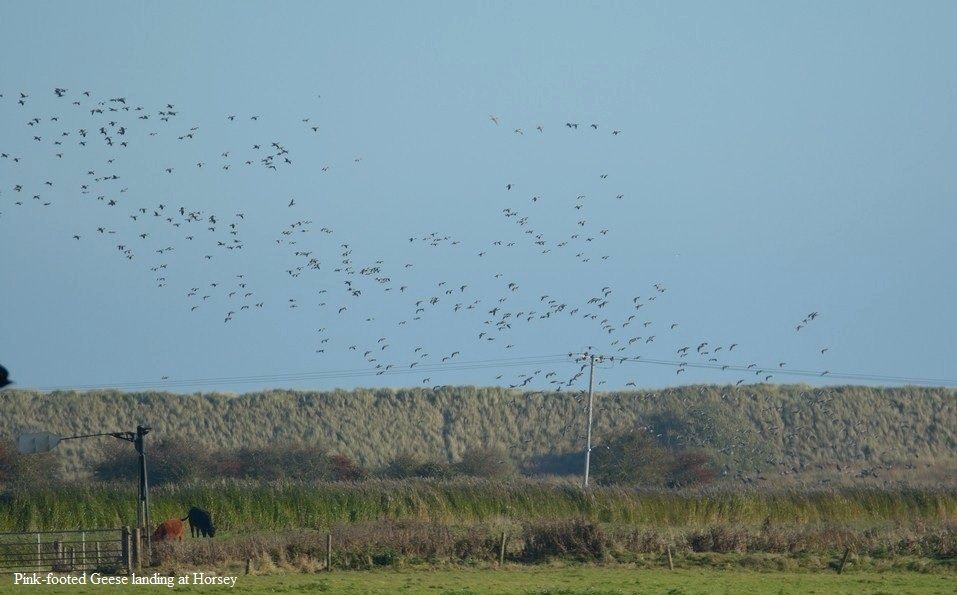
East Coat foray......
A drive along the east coast of Norfolk, from Martham to Sea Palling (28th) had few highlights, but a Little Egret was standing beside a dyke at Horsey, a young Brown Rat was trying to cross the road at Waxham, where there were also approximately 200 Pink-footed Geese in a field.
There was no success with trying to find’ Money Lane’ at Waxham, where there was supposedly a Great Grey Shrike so I returned to Horsey and parked up in the ‘lay-by’.
Scanning around I found a couple of Marsh Harriers and a Common Buzzard and a Kestrel being typically harassed by Corvids. The buzzard flew up from the field and flew towards the telegraph lines, pursued by Corvids and on landing on a wire it wasn’t long before it was surrounded!
A skein of approximately 300 Pink-footed Geese were over the fields near the sand dunes and they landed out of sight in that area. A Chinese Water Deer was along the field bank and a Brown Hare was keeping very still on a field to the west of the lay-by.

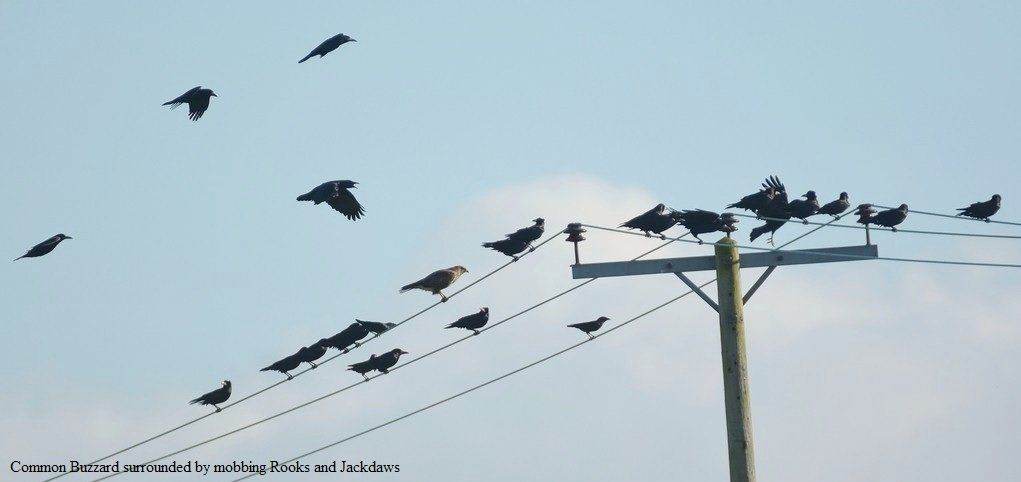
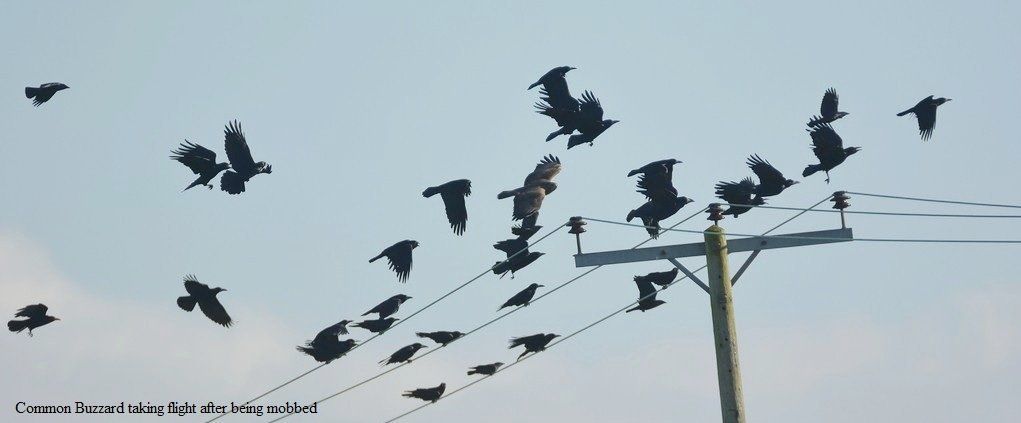
North Norfolk and basic physics affects feeding behaviour in Godwits and other wading birds......
5 Barnacle Geese started the day (21st) at Salthouse with Jason Nichols and Auks and Gannets again featured during a brief seawatch at Cley Coastguards.
A covey of 8 Grey Partridges was good to see at Wells East Pools before heading to Brancaster Staithe, where for once there were actually a few birds!
At least 13 Black-tailed Godwits were feeding with their long flexible tweezers-like bills ‘ploughing’ through the sticky mud, which is a drain on energy requirements.
The laws of physics apply to this bird’s ability to find energy through food without exhausting energy at the same time; this is optimal foraging theory (E/H) dictated by energy (E) divided by handling time (H). So consider how this would apply to a bird searching for prey in mud with a ring(s) attached to it! It’s not ‘rocket science’ just practical thinking. In human terms being able to recognise an individual animal over its survival!
Also here were Ringed Plover, Oystercatcher, Grey Plover, Curlew and a Little Egret.
Lunch at Choosley found a mixture of species taking advantage of the Sunflower strip and these included 3 Brambling, Chaffinch, Greenfinch, House Sparrow and a female Reed Bunting. Three Common Buzzards were also seen.
On the return journey back down the coast, a stop at Burnham Overy Marshes found at least 50 Barnacle Geese but little else and at Holkham a Red Kite was near Lady Ann’s Drive but no sign of a reported Ring Ouzel!
A seawatch at Walcott saw Auks (mainly Guillemots) moving south, probably to find feeding areas, 10+ Gannets, 2 Red-throated Divers and an adult Mediterranean Gull flying around and settling on the beach, where 2 Sanderlings also landed alongside the Turnstones.
At least 100 Golden Plover were on a field at Waxham and at Horsey 3 Cranes were found, but the most surprising thing here was a Gannet flying over the fields, alongside Horsey Mere!






'Auk Crisis'......
A drive along the North Norfolk coast with Jason today (14th) had its main focus on the current ‘Auk crises'.
At Cley Coastguards, several Guillemots and at least 3 Razorbills were close inshore, along with a Red-throated Diver and a few Gannets moved east.
Mainly Guillemots and Razorbills are being found either close inshore along the east coast, all the way down from Scotland, either desperate for food or in some cases found dead. There are various reasons being put forward for this, but so far I have little conclusive evidence to identify the causation of the Auk’s behaviour and fatalities.
Most of what is being projected can be found on: https://www.birdguides.com/news/investigation-launched-as-auk-crisis-worsens/
However, as usual in ecological matters this article throws up more questions than answers and I suspect that the cause of the deaths and ‘unusual’ behaviour of especially Guillemots and Razorbills is caused by a ‘cocktail’ of reasons and not just one. What can be surmised is that this links to climate change and man’s continued devastation to the environment.
A short seawatch from Walcott once again found Auks close inshore and also three Guillemots dead on the beach. A Little Gull was also present; one of many seen moving past our coast recently.





North Norfolk Coast and the Wayford Bridge Osprey......
The day (7th) began and ended with Hedgehogs in the garden (see Wildlife Garden Diary). However in between times there was a day out with Jason along the North Norfolk coast.
Whilst at Salthouse we heard news of a Black Guillemot just offshore at Cley Coastguards, only just reported. So being literally 5 minutes away we went to have a look. However, when we arrived there was no sign of the bird! What happened during the reporting stage only the individual responsible knows, but we stayed a while and saw 2 Red-throated Divers, one of which was relatively close in and a Great Crested Grebe also on the sea.
A visit to Morston was a complete waste of time; lots of people and no birds, the North Norfolk coast is fast becoming like Butlins with no place for wildlife, only humans pursuing their wants and needs.
On to Wells East Pools where a Red Kite, Marsh Harrier and 3 Common Buzzards, with the latter very interested in the ploughing going on were the highlights.
A walk through Holkham Pines found good numbers of Hornets flying around the sunlit clearings, whilst the Fallow Deer were far from active lying down on the grass in the distance.
A Sparrowhawk flew over as did a Common Buzzard and Nuthatch, Mistle Thrush and Great Spotted Woodpecker were heard.
A look over the Freshmarsh just a short drive up the road found the area very dry and a Red Kite and a pale Common Buzzard were the birds of note here.
We decided to head back and look for the Long-billed Dowitcher at Potter Heigham Marshes. However on approaching Wayford Bridge a large raptor on the left-hand side drew our attention; an Osprey!
Quickly parking up in the pub car park we went onto the bridge, but it looked like the Osprey had moved off. Gratefully, it came back on the right-hand side of the bridge over the River Ant, where it circled around a few times before actually flying off inland, for real this time.
A Common Buzzard was here and there were also flyovers from a Jay and a Kestrel.
At Potter Heigham Marshes, once again there was no sign of the Dowitcher, but then there were many places it could have been obscured from sight. Bearded Reedlings were heard and a Spotted Redshank and 2 Black-tailed Godwits were wader representatives, whilst approximately 200 Pink-footed Geese crossed the sky.

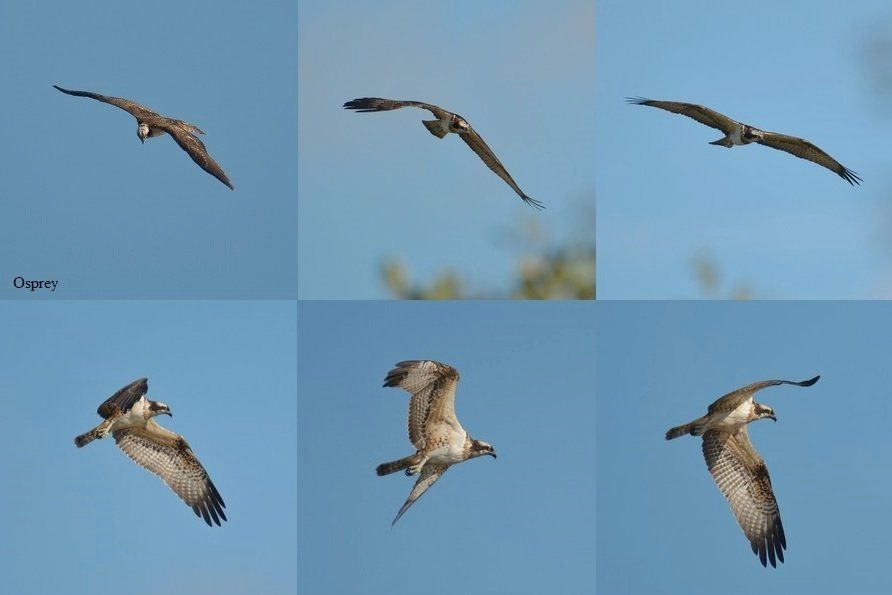

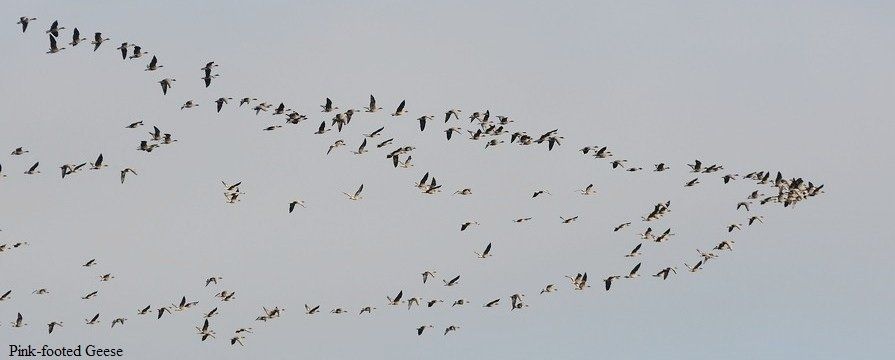
September 2021
Ivy Bees and rare dragons......
A drive along the North Norfolk coast with Jason (23rd) found very few highlights, bird-wise, but Colletes hederae Ivy Bees visiting the Ivy flowers along the track to Well’s East Pools were good to see. This species has really spread now, so any Ivy flowers are worth checking for these beautiful animals. See: Ivy Bee Colletes hederae for more information on these bees.
Reports of Vagrant Emperors Hemianax ephippiger at Waxham had us heading there next.
Walking up onto the dunes found a Migrant Hawker and a Bee wolf, before seeing a female Emperor Dragonfly. Not quite what we were after, but getting close.
The report of these rare Dragonflies was supposed to be near rocks number 20, but long before we got anywhere near to them a dragonfly I had not seen before came into view and then appeared to land but couldn’t be relocated. However, this was a female Vagrant Emperor, which is the same body length as a Migrant Hawker, but with a slightly longer wingspan.
Further along the dunes a male Emperor Dragonfly was seen, as well as Common Darters and an unexpected Willow Emerald Damselfly perched in the Marram Grass.
An unidentified Tachinid Fly was seen but didn’t hang around long enough to get any decent images.
Grey Seals were off-shore coming in to inspect dogs off their leads, which had no inclination to return to their owners when called. Even in the non-breeding season these mammals need to be left alone and not harassed by dogs owned by unscrupulous individuals.
A Migrant-sized brown dragonfly flew into view with a blue saddle on segment 2, a male Vagrant Emperor, but again it was not about to settle and ‘zoomed’ around the dunes, where looking into the sun made it difficult to follow, let alone photograph!
Finally back at the point we entered the dune system a male Willow Emerald was perched on an Oak leaf.
A Long-billed Dowitcher had been present (on and off) at Potter Heigham Marshes, so we went for a look there, seeing a Common Buzzard just over the track.
No sign of the Dowitcher, but 5 Spotted Redshank, 3 Common Snipe, 6 Ruff, Black-tailed Godwits and two flyover Cattle Egrets made the visit worthwhile.
Feeding frenzy and very small wader......
Out with Jason (16th) along the Norfolk coast, where at Salthouse Beach Road 2 Greenshank was along the dyke edge.
Two juvenile Little Grebes were on the pond at Walsey Hills, before walking down the Iron Road at Salthouse a little further along.
A Small White and male Migrant Hawker began the walk before seeing 12 Ruff on the eastern side of the road.
Jason then spotted a Skua in pursuit of a Gull rise up over the shingle ridge and then promptly disappeared so we ventured closer to see if it was still around.
What we found was a number of Gulls, Sandwich Terns and Gannets feeding on Whitebait close to the sea’s surface. A female type Wheatear was seen whilst walking along the shingle ridge and 2 Skuas, probably dark phase Arctic Skuas were seen but had disappeared before we were close enough to point a camera at them. Still, great to see this feeding frenzy, especially the Gannets, which were mainly juveniles and a Guillemot and Red-throated Diver, were also seen on the sea.
With the car park at Cley Coastguards ‘heaving’ with vehicles we decided to head for Well’s Pools, where 5 species of birds of prey were seen; Kestrel, Sparrowhawk, Marsh Harrier, Red Kite and Common Buzzard and 2 Spoonbills didn’t go amiss either!
A stop on the way back along the coast road at Cley found a Kestrel perched on a fencing rail, which was too good not to photograph. Black-tailed Godwits, Ruff, 3 Dunlin, a Golden Plover and an Avocet were here, but the highlights were a Little Stint and a hunting Hobby over the reedbeds.
Too hot for Cricket and when 'too much love can kill you'!
A return to Reedham (8th) with Sally again found Crickets in very short supply! With the temperature in the late 20’s it probably should not have come as a surprise as these exothermic animals had already warmed-up and had gone back into cover to regulate their temperature.
However, after walking up and down the bank several times on both sides of the bank, I just happened to be in the right place at the right time to see a male Great Green Bush Cricket emerge out of the Bramble leaves into the open, albeit very briefly.
Araneus diadematus spiders on the other hand were monitoring their webs and one of these spiders caught two mating flies (right and below), which were very, very quickly wrapped up! It still amazes me how quickly spiders wrap their prey up, even though I have seen it on many occasions.
On the way back, just before Freethorpe a Red Kite was seen flying over the stubble fields.
6 species of Crickets, ending finally with Great Green......
A look for Crickets at Reedham (1st), this time with Sally Clarke, who was hoping to see her first Great Green Bush Crickets.
Due to the weather conditions, finding crickets was not easy, but I managed to find 2 Roesel’s and 2 Dark Bush Crickets and both a Long-winged and Short-winged Conehead.
Several Araneus diadematus spiders were here as was a Helophilus trivittatus hoverfly.
A Field Grasshopper was found and then the fifth species of cricket; a male Speckled Bush Cricket.
After a couple of hours of searching, things looked bleak for finding a Great Green Bush Cricket, but a last ditch look along the road side of the bank found 2 female Great Green Bush Crickets, approximately a foot apart, resting on the Brambles.
See Norfolk's Crickets for photo identity of all 8 species of Crickets found in Norfolk.
August 2021
It's a female of the species!
An afternoon, (due to work obligations for Jase) (26th) began with a look at Potter Heigham Marshes, where the only birds worthy of note were approximately 20 Black-tailed Godwits and lots of Grey-lag (including a leucistic individual), Canada and Egyptian Geese.
Next spot was Filby, where a Black Tern had been reported on Ormesby Little Broad. However, as it turned out (as we heard later) was now on the other side of the road on Filby Broad, which we didn’t go to as, other locations were on the agenda!
A look at the temporary pool on a field at Beighton found a Green Sandpiper, 20 Mediterranean Gull and a Great Black-backed Gull, before continuing to Reedham for another look for Crickets.
A look along the same vegetated bank as before in far from perfect conditions for cricket-spotting (dull, breezy and not that warm) but the first cricket I found was in fact a male Great Green Bush Cricket perched on a Bramble leaf out in the open, but also out of the wind. Yet another male Great Green was found before Jason finally arrived after some difficulty in parking the car!
Singles of Short-winged and Long-winged Coneheads and Dark Bush Crickets were found, before Jason found what we were looking for; a female Great Green Bush Cricket! We were both very pleased with finding a female of the species with its long ovipositor and this along with the males was duly photographed.
Also here was a Rhingia campestris Hoverfly and a male Four-spotted Orb Weaver Spider Araneus quadratus with a lemony abdomen and quite different from the larger and ‘fatter’ females, which I normally see.
Anyone for Great Cricket?
The day (19th) with Jason Nichols began at Salthouse, Beach Road, where a Common Sandpiper and 6 Redshanks were along one of the dykes.
Further along the road at Walsey Hill’s pond were 2 Little Grebes and at Cley Coastguards an adult Gannet and a Sandwich Tern were off shore.
Two Little Egrets were the highlights at Morston Quay, but a Common Crane was at Wells (North Point Pools-as they seem to be known now), along with at least 6 Ruff, Green Sandpiper, 2 Avocet and a Black-tailed Godwit. A flock of presumably feral Barnacle Geese were here along with Grey-lag Geese and 4 Brown Hares that fled across the fields, due to an oncoming tractor.
A look over Holkham Freshmarsh found 2 Great White and 6 Little Egrets, with a Red Kite back along the coast road.
Due to the inclement weather encountered on our way back, our next destination and its hoped for inhabitants looked rather dubious, but the weather was warming up with slightly less cloud in the sky, so there was hope!
A brief stop at the temporary pool formed on a field at Beighton found a Little Grebe and 20 Mediterranean Gulls present.
Finally at Reedham, we began our search for Great Green Bush Crickets Tettigonia viridissima along one of the vegetated banks, suitable for this species.
The first cricket found was a Dark Bush Cricket, with both males and females found. Also here were Roesel’s Bush Crickets and Short-winged and Long-winged Coneheads.
As the temperature increased we found what we were looking for, when Jason spotted a male Great Green Bush Cricket; an almost mythical beast, which I had wanted to see and photograph for some time now. Shortly afterwards I found another male, which was far more photogenic. A truly great end to the day, with this magnificent Orthoptera beast!
Video of the Great Green Bush Cricket as it moves about the vegetation, by Jason Nichols
Human 'pigeon-holing' that evolution doe not recognise......
A very breezy Weybourne Cliffs made insect photography difficult, with Bees swaying from side to side on Asteraceae flowers, particularly the male Dasypoda hirtipes, Pantaloon Bee. A female D. hirtipes was also photographed but they were not hanging around on the cliff top either.
The other species of Bee photographed was an Epeolus-Variegated Cuckoo Bee. There are two species (E. cruciger and E. variegatus; Black thighed and Red-thighed respectively) of these in Norfolk and are very much alike, so much so that Dr. Nick Owens tells me he would not confidently identify these two species from photographs! Not a lot of hope for us mere mortals then! Once again, the old story of taking specimens and dissecting their genitalia seems to come into play, in order to identify the two different species, which to me is unacceptable.
To confuse and complicate the issue even further is the potential for E. cruciger, depending on its host species to be genetically distinct (see The Bees of Norfolk by Nick Owens p. 169).
Best to put: Epeolus species, unless you are one of these individuals who likes killing animals just to provide identification, of a ‘pigeon-hole’ application to other life by humans, which evolution does not comply with!
Cley Marshes had various waders such as Black-tailed Godwit, Avocet, Ruff and a single Green Sandpiper, but also at least 6 Common Snipe, one of which provided some distant images of this beautifully marked wader.
Below: Male and female Pantaloon Bees and Epeolus sp. followed by Common Snipe 'portfolio'.
Terrific Tachinid at Filby......
A visit to Filby (11th) found a few dragonflies, although the reported Southern Migrant Hawker was not seen. However, Brown Hawker, Migrant Hawker, Common and Ruddy Darter, Willow Emerald and a total of 4 Lesser Emperors, with a pair breaking out of wheel at the Ormesby Little Broad viewpoint, another over the car park and one over Filby Broad were seen.
10 species of Butterflies were seen: 12+ Red Admiral (mainly around the Buddleia), 8+ Peacock, 2 Brimstone, 2 Gatekeeper, Speckled Wood, 4 Large White, Small White, 4 Green-veined White, 2 Painted Lady and a Holly Blue.
However, the highlight of the visit was finding a never seen before Tachinid Fly at the viewpoint; a very colourful male Phasia hemiptera.
Blue confetti......
Three Little Grebes were on the pond at Walsey Hills (5th), on a day out with Jason Nichols, whilst a few Sandwich Terns were seen from Cley Coastguards.
A visit to Wells pools, where a Pacific Golden Plover had been earlier had nothing apart from the usual waders and gulls, so we decided to go to Warham.
After parking up, we walked along the road towards the entrance to Warham Camp, where as during our previous visit here we found a Common Toad on the road. Unfortunately, once again this individual had been infected with the Toad-fly (confirmed by Mike Linley) in its right nostril.
On reaching the camp, the wonderful sight of ‘blue confetti’ greeted us with numerous Chalkhill Blues on the wing. A mating pair was also found, a female ovipositing and a male trying to seek the favours of a female, but to no avail!
Other butterflies found here, albeit in small numbers were: Gatekeeper, Red Admiral, Peacock, Small Tortoiseshell, Large and Small Whites, Meadow Brown (most numerous after the Chalkhill Blues), Comma, Small Skipper and a Brown Argus. A 6-spot Burnett was also seen.
Grasshoppers found were Meadow and Field and a female Yellow-legged Mining Bee Andrena flavipes also of note.
A visit to Cley ensued where we found Green and Common Sandpipers, juvenile Little Ringed Plover, Ruff, Avocet and Black-tailed Godwit, whilst two juvenile Marsh Harriers quartered the reeds.
The walk back along the boardwalk found a juvenile Common Lizard and our second Wall seen, with one being seen during the walk to the hides.
Above (left) Female Chalkhill Blue ovipositing. Above (right) male and female interacting.
Both videos by Jason Nichols
July 2021
Lesser Emperors and other insects at Filby......
A walk from Filby car park to the viewpoint looking out at Ormesby Little Broad (17th) began well with a Four-banded Longhorn Beetle Leptura quadrifasciata, which was quickly followed by the discovery of a Red-legged Shieldbug Pentatoma rufipes.
Blue-tailed Damselflies were plentiful and both Azure and Variable Damselflies were also seen along with the first Willow Emerald Damselfly of the year.
A White Admiral was seen on the Bramble flowers but was being seen off by 3 Meadow Browns. Large White, Red Admiral, Speckled Wood and Ringlet were seen in single numbers.
A Treecreeper was seen and a Great Spotted Woodpecker heard, whilst the young Great Crested Grebes called out for food from the adults on the broad, although the adult grebes seemed to be pushing the young to find their own prey. A young Marsh Harrier, Common Buzzard and several Common Terns were also here. The first Brown Hawker was seen along with, Norfolk and Southern Hawker, Four-spotted Chaser, Ruddy Darter and Black-tailed Skimmer.
Further looks into the path-side vegetation found several Black-and-yellow Longhorn Beetles Rutpela maculata, mating pairs of both Common Red Soldier Beetle Rhagonycha fulva and Helophilus pendulus ‘Footballer’ Hoverflies before walking across to Filby Broad where at least one Lesser Emperor was seen.
A Comma was seen along the road and back in the car park three Lesser Emperors were flying above the park and trees.
A mixture of wildlife and the tale of the Toad-fly......
The day out (15th) with Jason really began along the Iron Road at Salthouse, where a single Little Gull was present on one of the scrapes, apparently called ‘Swan Lake’! Also here were 4 Dunlin and 3 Ringed Plover (one a juvenile), a Brown Hare and a White Melilot, which was attracting the bees.
A few Sandwich Terns were going past, during a brief stop at Cley Coastguards, 1 Common Tern and an adult Gannet-west.
Wells pools had 7 sleeping Spoonbills present and two Marsh Harriers patrolling the area, but the next port of call at Brancaster Staithe was pretty much devoid of birds with more boats than cars in a supermarket car park!
A drive around the area at Choosley Barns produced much more with a Yellowhammer, Common Whitethroat, Red-legged Partridges, 3 Brown Hares, 2 Large Whites and a Corn Bunting singing from the telegraph wires.
On the journey back, two juvenile Spoonbills were seen in flight near Holkham and the first Red Kite of the day was seen nearby.
Despite the dull conditions and a brisk wind, we decided to check out Warham Camp for insects. This was hard work, but we managed to find a few things, including at least 15 Meadow Browns, several Essex Skippers, Red Admiral and a Painted Lady. There was also quite a few Pyramidal Orchids around the fort and a ‘Blue butterfly’ was seen but the wind took it away from any chance of identification. Also of interest was the first Philanthus triangulum Bee-wolf of the year, briefly on a flattened mole hill.
The walk back along the path to the road was more productive with Lasioglossum leucozonium White-zoned Furrow Bee, Yellow-legged Mining Bee Andrena flavipes (thanks to Dr. Nick Owens for his ID help) and an Andrena thoracica (female) Cliff Mining Bee being found, albeit rather dormant and a possible Hedya ochroleucana Tortrix moth and a Yellow-tail caterpillar. Thanks to Ken Saul for his help with the moths.
A Two-girdled Digger Wasp Argogorytes mystaceus was also found here and several galls on Rose leaves caused by the Smooth Pea Gall Wasp; either by Cynipid wasp Diplolepis nervosa or by Diplolepis eglanteriae.
Back out on the road, Jase noticed a young Toad on the side of the road, which after a few images were taken (let’s face it how often do you see Toads nowadays?!) and the toad was protected from traffic it was placed away from the road. However, whilst photographing the Toad and subsequently editing the images something didn’t look right about it, so I consulted my friend Mike Linley, who is a world Herpetology specialist and he told me that this was the work of the Toad-fly Lucilia silvarum, which lays its eggs on the nostrils of toads and the maggots eat the poor toad alive!
Further research via the internet found the following: L. silvarum is a species recorded throughout Britain but is rather localised and not common anywhere. It is strongly associated with wetlands and the larvae typically develop in toads (killing the host). It can also cause myiasis (the parasitic infestation of the body of a live animal by fly larvae) which grow inside the host while feeding on its tissue in vertebrates including humans and will develop in corpses, making it a species of forensic interest.
Whilst this is of ecological interest and intrigue it isn’t for the Toads this fly (also called the Marsh Greenbottle) lays its eggs on subsequently killing the host. Luckily as previously mentioned it is not a common fly, at least currently! It would seem that euthanasia is the kindest thing for these animals (doomed to die) if found and is something naturalists should look out for, if they do not know about this ecological occurrence; I certainly didn’t!
On the way back some deer crossed the road near Weybourne, these turned out to me a Roe Deer doe and two fawns.
Sandwich break and interesting Insects......
A Journey along the Norfolk coast with Jason (8th) saw 2 Common Buzzards en-route, before reaching Salthouse where a lone Grey Heron standing in the middle of a dyke and a few Meadow Pipits were the highlights (see above).
At Cley Coastguards there was a concentration of Gulls, mainly Black-headed feeding on what turned out to be a plentiful supply of Whitebait (collective for several species of young fish), as on looking down there were plenty of dead fish amongst the shingle. Also taking advantage of this bonanza were Sandwich Terns with a strike rate of at least 90%! This prompted a spot of tern photography, trying to capture the tern’s hunting behaviour.
A visit to Holt CP followed, where despite the dull conditions a few insects were found, although hardly plentiful!
The Tachinid fly Norwickia ferox was found along with a small moth Olindia schumacherana (thanks to Ken Saul with the ID), which looked for the world like a bird dropping (as in 1st instar Swallowtail larvae), but on closer inspection a very beautiful moth.
A Black-and-yellow Longhorn Beetle Rutpela maculata was on an Umbellifer, as they often are, one of several Panorpidae Scorpion Fly species were also in the vegetation and several Ringlets were seen along with 6 Red Admirals (over the course of the rides covered) and a few Meadow Browns.
Several of both juvenile Dark Bush and Speckled Bush Crickets were found mainly on the Nettle leaves and on the Privet flowers (not normally seen in garden Privet hedges, because they are constantly trimmed) were both Volucella pellucens and V. inanis Hoverflies with a pair of mating Helophilus pendulus also found.
When the sun came out several Dragonflies were more active and these included a Large Red, several Azures and the first Willow Emerald of the year, whilst a couple of Four-spotted Chasers patrolled the pond. Several Snails were seen and may possibly be Strawberry Snails Trochulus striolatus.
One of our best rides for Silver-washed Fritillary came up trumps (not the Donald type!) with two individuals being seen, one very photographic as it fed on a Bramble flower and finally a White Admiral was seen back in the car park.
On to Weybourne Cliffs, where finding insects, particularly Bees was hard work. However, several species were of interest and thanks are due to Dr. Nick Owens for his help with the identification of several of these.
A Large Red Bumblebee Bombus lapidarius queen was seen, as were one or two male Silvery Leafcutters Megachile leachella, with their pale emerald eyes.
An Oxybelus uniglumis, a fly-predating Wasp was found (thank you Nick) and also a Dipogen sp., which despite microscopic detail required separating one of three similar species, Nick thinks it maybe a D. subintermedius female, which was my initial thoughts via BWARS. Whatever, the case it took a bit of doing to get any acceptable photos of this very active Pompilidae, aka Spider-hunting Wasp!
For Volucella zonaria, please read as V. inanis and for Common Emerald read Willow Emerald, apologies for my oversights!
Rabbits and Roller......
Venturing into the Brecks today with Jason (1st) heading for Icklingham, where a Roller had been present for over a week.
The field, where the Roller was, was viewable from a wooded verge, safely away from a very busy road, where some of the ‘birding’ fraternity had forgotten that to dawdle here was a life-threatening situation!
It wasn’t long before the Roller flew up onto the telegraph wires, albeit some distance away, where it remained for the duration, either on the ground, perched in the hedgerow, on the wires or hunting insects in flight, which it was successfully catching.
After over two hours of watching the bird, we returned to the car (alive!) where we saw the Roller again before leaving, adding another species to Jase’s and my ‘seen from car list’, as yet to be created!
A visit to Lackford Lakes followed, where some young Rabbits provided a photo session. A Hobby hunting dragonflies was the avian highlight here and a look in the hedgerows found a Scorpion Fly sp. along with a solitary bee that got away!
A blue spiked plant growing along the road verges (particularly along the A11) in the area and here at the reserve was Viper’s Bugloss Echium vulgare. However as we travelled back along the A11 after a certain distance this plant did not feature.
On the way out of the reserve another spot of Rabbit photography ensued followed by a tiny baby Rabbit running back into cover.
Rabbits are much maligned creatures, classed as a pest by some, but in my experience they are the most engaging animals, that are a keystone species not only in their native Iberia but also in the UK. They are in fact my favourite mammals and I have seen Elephants and Lions amongst others.
I have, for most of the time, in recent years (at least 6) lived with Rabbits 24/7. Sally Clarke has had rescue Rabbits for many years and I have them to stay with me for long periods of time sometimes, as ‘house rabbits’.
At the moment Brambles and Lucy are with me, as they have been on and off for several years. I not only find solace in their company and indeed a great help to my mental health but they also recycle cuttings from the garden e.g. Buddleia turning them into some of the best compost you can get!
Yes, you have to keep cables etc out of reach and there are quite a few things in my dwelling that have been, let’s say been redesigned! However, for all that I wouldn’t be without them, what they give me is far, far greater than any damage they do. They certainly DO NOT belong in a hutch and beware, whilst I would recommend taking on a rescue rabbit, be aware the vet bills for what is classed as an ‘exotic’ can be very costly!
One of the reasons why Rabbits suffer and have to have veterinary care is the way (like many animals) been bred to please humans, but in doing so have had their evolved features changed to a great detriment. In places like ‘Pets at Home’ animals like these are treated as a commodity, no different to a tin of beans. Considering we are supposed to be nation of animal lovers, I can see no evidence of that overall, when we continue to breed and induce weaknesses into animals that are utilised as food or as ‘pets’!
June 2021
Two new insects and when the predator becomes the prey!
A visit to Filby (23rd) even had highlights en-route, with a Swallowtail flying low over the roadside verge, along the Repps road, just outside Martham village. Maybe roadside verges, if properly managed are having a benefit for Norfolk’s Swallowtails?!
This was followed, just before Fleggburgh with the first Southern Hawker of the year, again benefitting from the verges as a place to hunt potential prey.
Once at Filby, the walk down to Ormesby Little Broad found 2 Speckled Wood and a Red Admiral and the second Southern Hawker of the day.
There were good numbers of Blue-tailed Damselflies with many ‘in wheel’ and also Variable Damselflies and Red-eyed Damselflies on the Lily pads and Black-tailed Skimmer (including a mating pair), Norfolk Hawkers, Four-spotted Chasers and a single Hairy Dragonfly. Despite reports, there was no sign of any Lesser Emperors.
A Black and Yellow Longhorn Beetle was found and later (thanks to a very nice couple I met (Steve and his wife) another longhorn, but this time a new one for me the diminutive Umbellifer Longhorn Beetle Phytoecia cylindrica, ironically perhaps, on an Umbellifer!
Possibly two different Eumenidae Wasps were found but at this time speciation cannot be confirmed and a Shieldbug new to me was a Bronze Shieldbug Troilus luridus, which took some time to identify!
Garden Warbler, Chiffchaff and Marsh Tit were singing in the wood and over the broad both Common Terns and a pair of Great Crested Grebes, with two young were catching small Pike. As they say the hunter becomes the hunted!
Two Hobbies were seen, with one flying low over the water just in front of the reed fringes and Common Buzzards and 2 Grey Herons were also seen.
The Brecks, Banded Demoiselle bonanza and casualties......
A visit to the Brecks with Jason Nichols (10th) began at Foulden Common. However, the overcast conditions provided few observations of insects, with not a single butterfly seen!
Nevertheless, my first Swollen-thighed Beetles of the year were seen, a few Azure Damselflies flew up from the longer grass, Lasioglossum leucozonium White-zoned Furrow Bee, Camptogramma bilineata Yellow Shell and Phyllopertha horticola Garden Chafer were all of note.
2 Muntjac were also seen here.
A walk alongside the Little Ouse at Santon Downham found the Comfrey flowers alive with Bumblebees but an Andrena dorsata Short-fringed Mining Bee and an Osmia bicornis Red Mason Bee were also visiting these flowers along with a female Orange-tip, the first butterfly we had seen!
As in recent previous visits Banded Demoiselles were all along the river, as were emerging Drake Mackerel Mayflies Ephemera vulgata, one of which had been caught by a female Banded Demoiselle and in turn had been grabbed by the prothorax by a male of the species. Whilst the pair was attempting to get into wheel she dropped her prey on the leaf they were on.
In addition to the earlier Orange-tip; 2 male Brimstones were seen and a single Speckled Wood, but that was it for butterflies here, even though the sun was out and the temperatures had climbed significantly since the earlier visit to Foulden!
At least 6 Pyrochroa serraticornis Red-headed Cardinal Beetles were found, the most I have ever seen in one place, albeit well apart from each other.
Unfortunately the busy stretches of the A11 and A47 are still taking their toll on animals. Why are there not passageways provided for animals to at least stand some chance of staying alive when these roads are constructed? The following data was sent to @ProjectSplatter
Road casualties for A11 between A11/London Road roundabout and Norwich: Badger, Fox, Grey Squirrel, 2 Rabbit, Brown Hare, 2 Pheasant, 2 Deer fawns (species unclear, possibly Roe) & Stock Dove. A47 (A11 junction and Acle) 2 Muntjac and Pheasant.
*The photograph above labelled Short-fringed Mining Bee is in fact a Lasioglossum sexnotatum female as corrected by my friend Dr. Nick Owens. Possibly an 11th record for Norfolk, if the right side of the river Little Ouse!
Dragons at Filby and a new intrusion to the Broad's wildlife!
From the car park at Filby (9th) the first thing of note I saw, on the way down the path to Ormesby Little Broad was a Norfolk Hawker, followed by another one and another one. At least 10 Norfolk Hawkers were seen along the path, as well as Common Blue, Large Red, Variable and many Blue-tailed Damselflies.
Chiffchaff, Garden Warbler and Blackcap provided the audio to my walk before arriving at the viewpoint, where Four-spotted Chasers; a couple of Hairy Dragonflies and more Norfolk Hawkers were seen along with Red-eyed Damselflies.
A pair of Great Crested Grebes had three young with them and Common Terns flew over the broad. A Kingfisher flew out from the reedbed, a drake Pochard flew across and Hobby, Marsh Harrier and Common Buzzard represented the apex predators here.
Unfortunately of note were two lots of two paddle boarders going to and fro. According to the Trinity Broads Warden this is not allowed and neither should it be before the broads become completely a municipal water playground for humans and wildlife will suffer once again!
4 Hobbies at OLB......
A visit to Filby (3rd) and a walk down to Ormesby Little Broad, found a few Damselflies (the dull weather not helping) along the path verges, mainly Blue-tailed but also a Variable and Chiffchaff, Blackcap and Garden Warblers were singing.
At the broad’s viewpoint several Common Terns came and went on a regular basis and a Great Crested Grebe had two young.
A singing Reed Warbler provided the soundtrack to the visit as they did when I was a young lad out on the broad fishing. At least 3 Common Buzzards were seen along with Marsh Harrier hunting over the reed fringes and 4 Hobbies over the broad.
Both Four-spotted Chasers and a Hairy Dragonfly were seen and Ken (Saul) had seen a Norfolk Hawker over the newly resurfaced car park earlier.
May 2021
Notes from the coast......
The usual excursion along the North Norfolk coast (27th) with Jason began at Beach Road Salthouse, where a Meadow Pipit was catching Crane flies for its brood and a Little Egret was fishing along the dyke.
Walsey Hill’s pond held a drake Pochard and Little Grebe and along the Iron Road at Salthouse Swifts were hawking for insects low over the water, along with Swallows and Sand Martins.
A stop at Wells pools found more Swifts, Swallows, Sand and House Martins feeding over the water, but a brief stop at Brancaster Harbour were once again disappointing.
A drive around Choosley found a male Yellowhammer singing from a bare tree branch. Such a nice sight to see; but not a common sight or sound now sadly. A Red Kite flew over nearby to the parked car and a Marsh Harrier and 2 Common Buzzards were also seen here.
A Great White Egret was seen at Burnham Overy and 3 Spoonbills were at Holkham.
Not fast enough to catch up with an Alpine Swift!
A drive along the North Norfolk coast (20th) with Jason was not quick enough to catch up with the Alpine Swift; first seen flying west at West Runton and last seen at Hunstanton!
A walk along the ‘Iron Road’ at Salthouse found good numbers of Swallows, Sand Martins and Swifts hawking for insects and a male Yellow Wagtail was also seen in flight. Little Egret, Grey Heron and several Redshank were also here and two Common and two Sandwich Terns were seen offshore.
Two Little Terns were seen from Cley Coastguards, and apart from a spot of photography with a Pied Wagtail at Wells Pools and more Hirundines and Swifts there was very little else.
Brancaster Staithe had very little in the way of waders; an ongoing trend and at Choosley a couple of Brown Hares were of note.
A Collared Pratincole had been reported in the Cley/Blakeney area, but like the Alpine Swift, didn’t appear to be settling anywhere.
Two Barnacle Geese were at Holkham and another visit to Salthouse found a Stonechat at the start of the Iron Road track and a Willow Warbler singing on the heath.
Spring migrants......
A good variety of spring migrants were seen today (6th), whilst travelling along the North Norfolk coast with Jason.
The first Swift, Reed Warbler, House Martin and Cuckoo of the spring were recorded from Beach Road, Salthouse and also here were both male and female Wheatear (right) and Common Whitethroat.
Several more Reed Warblers, a Cetti’s and Sedge Warbler were heard on the way to Beach Road, Cley, where it was nice to see at least 10 Swallows perched together on the wires alongside the Eye Field. Another Cuckoo was heard from here too.
3 Greenshank were feeding along the channel at Morston Quay and a Whimbrel was also here.
At Wells Pools, a Common Sandpiper and a White Wagtail were the first ones of the year and Swallows and House Martins were hawking for insects over the pools.
A Spoonbill was the highlight at Brancaster Staithe, but not so good to see was a Turnstone with one leg. I wonder why I keep seeing Turnstones with a leg or part of a leg missing. Could they be getting tangled up in the tide wrack thanks to the many ‘bangles’ they are wearing?
A female Wheatear was at Choosley and Jason found a Dotterel on a large stony arable field along Chalk Pit Lane, where a Lesser Whitethroat was also heard and at least 7 resplendent Golden Plovers. An adult Mediterranean Gull was also seen over the fields.
On the return journey a Spoonbill was seen feeding from the pull-in along the A149 at Burnham Overy marshes and more Spoonbills were seen at Holkham, along with Common Buzzards and a lone Barnacle Goose.
Moorhens with 5 chicks were photographed at Salthouse duck pond and a Garden Warbler was heard at Weybourne. Another good day out in Norfolk, the company wasn’t bad either!
April 2021
Migrants and Raptors along the Norfolk Coast......
A drive along the North Norfolk coast with Jason Nichols (22nd) began at Beach Road, Salthouse, where we finally got to see our first Wheatears of the spring, with 2 being found. 5 Whimbrel were also the first of the year and at least 4 Sand Martins flew across the road.
A little further along, at Walsey Hills pond, a pair of Tufted Duck and 3 Pochard were present.
There was nothing really of note along Beach Road, Cley, so off to Morston where a male Ring Ouzel was present on the field at the end of the approach road to the quay. Unfortunately, two elderly ‘wildlife photographers’ were assuming that birds will just perform for their cameras if they just walk to the fence of the field without approaching with caution and using cover. No, the ouzel did not fly off, but that is not the point. I have seen this elitist approach to wildlife before with no concern for the animals themselves. When will humans learn that they are not the be all and end all on this planet!
A Song Thrush was also seen on the field and Brent Geese and a Greenshank in the channel were good to see.
En-route to Wells; a Swallow and singing Chiffchaff and Blackbird were all recorded, before arriving at Wells Pools where a Ruff and several Brown Hares were the highlights.
With Brancaster Staithe full of people and virtually no birds we put our lunch on hold and continued to Choosley.
This was a good decision, as it turned out with our first male Orange-tip of the year, my first Brimstone and a Small tortoiseshell also.
A male Common Whitethroat singing from the hedgerow was also a the first spring record and with Common Buzzards, a hovering Kestrel and a ‘shabby’-looking Chinese Water Deer the visit here was very worthwhile.
On the return journey a stop in the pull-in, along the A149 at Burnham Overy produced 2 Great White Egrets and at Holkham 3+ Red Kites, Common Buzzards, Spoonbill and a lone Barnacle Goose.
A sprinkle of migrants and large birds in the sky......
The first stop of the day (14th), with Jason Nichols was at Beach Road, Salthouse. A few Sand Martins were flying across the road and a male Yellow Wagtail flew over the fields and two Brown Hares were good to see here.
With not too much to see along Beach Road, Cley, we moved on to Morston, where Brent Geese were still present.
At Wells pools 2 Ruff were the highlight, with one; a ‘satellite’ male with its very noticeable white neck feathers. A Grey Phalarope was reported here, but not seen by us.
A Swallow was perched on the telegraph wires at Stiffkey and Brancaster Staithe had some very colourful Black-tailed Godwits and was also (as usual) our lunch stop.
A drive around the Choosley Barns area was lacking in birds and only 2 Brown Hares were seen, but a Chinese Water Deer was seen here, as they were in 2020.
A look over Holkham Freshmarsh on the return journey saw 4 Spoonbills, Common Buzzards, Red Kites and Marsh Harrier. Indeed, ‘big’ birds of prey were seen throughout the day, during the course of our travels, with at least 12 Common Buzzards, 6 Red Kites and 4 Marsh Harriers.
A look along the Norfolk coast with Jason Nichols (1st) began at Horsey, where a Crane was of note.
3 Pochard were on the pond at Walsey Hills and 2 Little Grebes were also seen there later.
A Marsh Harrier was the only bird of note along Beach Road, Cley and at Morston Quay several small flocks of Brent Geese were seen and both Mistle and Song Thrush on the meadow at the end of the approach road.
Wells east pools produced the first Little Ringed Plovers of the year and at least 11 Avocets were also present.
A Red Kite was flying low over the rooftops at Holkham and on the return journey another was seen over the Freshmarsh along with Common Buzzard, Marsh Harrier, at least 4 Spoonbill and 2 Great White Egrets.
A Ringed Plover, Turnstone, Black-tailed Godwits and a Little Egret were at Brancaster Staithe and Common Buzzard, Brown Hare (above) and calling Mediterranean Gulls were at Choosley, before heading back, after a Great White Egret at Burnham Overy.
March 2021
Sea Eagle at distance......
1-2 White-tailed Sea Eagles had been present nearby for a couple of days, so I decided to go and have a look (24th), as they were just down the road.
Arriving at Horsey I scanned over the area at several different places and eventually saw one flying in a southerly direction, albeit in the distance near the sand dune systems and hampered by the effects of evapotranspiration and the sun! Two eagles were reported later in a field, south of the Nelson Head track.
2 Common Buzzards and a ‘male-looking’ Marsh Harrier were also seen.
A March Hare......
I met up with Jason Nichols on a rather blustery day (11th) for a look around the local area.
A Red Kite, Common Buzzard, Marsh Harrier and 3 hunting Kestrels, represented the tertiary avian species, whilst a few Pink-footed Geese and Little Egret were also of note.
A Brown Hare (below) was good to see as was a Muntjac, before ending with a visit to Ormesby Broad, where 2 Slavonian Grebes and at least 5 Goldeneye were present.
February 2021
Long-tailed Duck and more at Ormesby Little Broad......
A walk down to Ormesby Little Broad (22nd), from the car park at Filby found 2 Marsh Tits on the way, before arriving at the viewpoint.
A look for the long staying Long-tailed Duck, took a little while before it was located to the north-north west of the broad, where it was constantly diving, staying under the water for long periods as these ducks tend to do. If I recall correctly, this is the first time I have seen a Long-tailed Duck on the Trinity Broads, where I spent much of my younger years.
At least 2 Kingfishers were seen, with one in pursuit of another and a fly past of one carrying a fish all suggested Spring is on its way.
2 Water Rails were calling and a Common Buzzard and a Marsh Harrier passed overhead; the Marsh Harrier appearing as a male (as we once knew it) but recent discoveries have found due to territoriality avoidance and easier access to a mate, some female morphs are in fact males!
Other ducks present were at least 8 Tufted Ducks, a drake Gadwall and 3 Goldeneye, consisting of 2 drakes and a duck and the Long-tailed Duck then conducting some feather maintenance; bathing in typical duck fashion, preening and wing-stretching. With a pair of Great Crested Grebes ceremoniously conducting the ‘weed dance’ or as I always knew it the ‘Penguin dance’ made the visit here more than worthwhile and a benefit to my mental health issues.
Below: 1st row: Marsh Tit (2 images), Common Buzzard, Great Crested Grebes.
2nd row: Kingfisher, Long-tailed Duck bathing (3 images).
3rd row: Long-tailed Duck bathing and wing-stretching (4 images).
Notes from Filby......
The following sightings are courtesy of Ken Saul, who lives in Filby:
A Long-tailed duck has been present on Ormesby Little Broad and has been seen most days from 4th to 15th. A Woodcock was seen near Filby church (9th) and another at OLB (13th) when a Bittern was also seen.
A Little Egret, along with 60 Shoveler were on Filby Broad (13th) and numbers of Shoveler had increased to 144 (14th).
Finally, Ken watched 2 Bank Voles in his Filby garden (17th), awesome!
Opposite: Bank Vole taken at Burgh Castle 13th June 2017.
With Covid-19 lockdown thwarting any Natural History outings currently, here is a 'blast from the past':
Notes and images from February 2010
After several attempts to see it at Wroxham Broad, during the latter part of 2009, the duck Ring-necked Duck was finally seen at Whitlingham C.P. on the 1st of the month. Smew, Goosander, Ruddy Duck, duck Goldeneye, Red-necked Grebe and Great Northern Diver were also still present.
A return visit to Fritton (2nd), once again found the Rough-legged Buzzard, which on this occasion was hovering. 3 Short-eared Owls were seen, along with Hen Harrier and Barn Owl.
A visit to Lynford Arboretum (3rd) did not produce any Hawfinch, but 15+ Common Crossbills were seen and a Golden Pheasant heard. Later at Fritton, the Rough-legged Buzzard was seen again and a female Merlin. At least 6 Chinese Water Deer, Hen Harrier and both Short-eared and Barn Owls were also present.
A visit to Strumpshaw Fen (8th) found the 140th bird of the year, when a Bittern (below) was seen flying through the snow showers.
The Hickling roost site (9th) produced a male Merlin, ringtail Hen and 25+ Marsh Harriers, 6 Crane, Barn Owl, 4 Woodcock and Bewick’s and Whooper Swans were heard, during the walk back along Stubb Road.
7 Cranes were on a field, at the bottom of Eastfield Road, Hickling (12th), 2 of which were immatures.
With Waxwings in short supply, the news of some in Gorleston was very welcome (see below). At least 12 were present (22nd), ironically favouring the same area (Lowestoft Road, opposite the police station) and feeding on the same Berberis shrubs where I had photographed waxwings previously, some years ago. Despite the continuous wintry showers, some good photographic results were achieved. At Ormesby Little Broad the reported Slavonian Grebe was located, thus completing the list of 5 grebes. This is the first year for some considerable time that all 5 grebes have been recorded for the year. Later at Catfield, 230+ Bewick’s and Whooper Swans (mainly Bewick’s) were still present and 2 Barn Owls were seen hunting at Potter Heigham at 4.35 p.m.
Grey Partridge (3) was seen for the first time this year, during a visit to Abbey Farm, Flitcham (23rd). At least 8 Hares were seen in the vicinity and 6+ Tree Sparrows (below) were at the usual site. 40+ Common Scoter were off Hunstanton and at least 12 Corn Buntings (below) were at Choosley Barns. 2 Barn Owls (bottom row of images) were seen (one perched in some blackthorns) during the return journey at Wells, in the early afternoon and at Salthouse, a Peregrine (seen from the duck ponds) and 30+ Snow Buntings were seen.
It is interesting to see how things have changed in a relatively short time; for instance I have not seen Corn Buntings at Choosley for many years and Tree Sparrows are no longer at the 'usual site' near Flitcham!
January 2021
New Year's Day local Birdwatch......
Out early for a few hours; New Year's Day local birdwatch began with a Barn Owl, which ghosted over the car. This was followed by another owl a Little Owl, which flew up off the road into a tree.
Song and Mistle Thrush, Marsh Harrier, Green Woodpecker, Little Grebe and a Stonechat followed and both Chinese Water Deer and Grey Squirrel were also of note.
A mixed flock of Titmice in a hedgerow found Coal Tit and Goldcrest in their midst and a Great Spotted Woodpecker and Bullfinch and a nice Brown Hare was the third Mammal species seen.
A dead Otter was unfortunately seen and a few waders were added to the day's list, whilst Grey Heron and Mediterranean Gull were good additions as were a flock of Fieldfares.
6 Cranes were seen (4 in flight below) and finally the first Red-legged Partridges and another Great Spotted Woodpecker (below).
Somewhat surprisingly a Goldfinch was a late addition to the list and a Reed Bunting was certainly worthy of note.
The Trinity Broads provided Pochard and Goldeneye and a Smew on Filby Broad and finally 12 Whooper Swans (below) and Golden Plover were added.
The session ended as it began with a Barn Owl and a spectacle of Pink-footed Geese, of which there was at least 1500.
Wildlife Photo Diary 2020
December 2020
Iceland Gull and Egrets......
The last trip out in 2020 with Jason (17th) began along the Somerton to Horsey straight, where, 2 Marsh Harrier, 3 Heron, Little Egret, 150+ Pink-footed Geese and a Barn Owl flying over the fields relatively high were all seen.
‘Wild Swans’ were seen at Sea Palling/Ingham but with nowhere to stop safely their identity cannot be confirmed.
At Weybourne a walk west found the Iceland Gull (missed the previous week) on the shingle ridge near the sea with Black-headed Gulls. Eventually the gull took off and flew east along the beach, before flying over Weybourne Cliffs, briefly settling down before taking off again and flew along the beach westwards.
A Little Grebe and a Little Egret were of note in the dyke, which crosses Beach Road, Salthouse and 2 more Little Egrets, Grey Plover and several Redshanks were at Morston Quay.
20+ Brent Geese were at Wells East Pools and two Red Kites were in the air exhibiting mating behaviour.
A nice surprise at Holkham was the discovery of 2 Cattle Egrets in a nearby field (with no cattle!), which were then joined by another and then another. 2 White-fronted Geese were seen here along with 3 Common Buzzards.
A short distance further west 3 ‘white dots’ in a field (this time with cows) demanded a stop. A further 3 Cattle Egrets were here at Marsh Field Farm.
At the pull-in along the A149 at Burnham Overy, yet another (3 still present at Marsh Field Farm later in the afternoon) 3 Cattle Egrets were seen heading west in flight over the marshes. Also here was our third species of Egret of the day with at least one Great White Egret. A Red Kite and a Marsh Harrier were also seen.
At Brancaster Staithe further evidence of pairing up was found with Oystercatcher’s piping displays and Herring Gulls walking alongside each other posturing. A Herring Gull was also dropping Mussels to open them, which is often witnessed here with either Herring or Common Gulls mastering this technique of repeated aerial dropping of a Mussel and following it down. Several Turnstones, 2 Bar-tailed Godwit, Marsh Harrier and a Goldeneye in the channel were also observed here.
On the return journey, 2 Muntjac were seen together at Burnham Overy and yet another Red Kite was seen at Stiffkey.
A really enjoyable and rewarding day out and unlike most ‘Thursday weather conditions’ (not a scientific statement) it had been sunny pretty much all day!
Slavonian Grebe on the Trinities and a Black Brant at Wells......
A day out (albeit very overcast) with Jason Nichols (10th) began at Ormesby Broad, where a Slavonian Grebe had been present for a few days. A look from the bridge eventually located the constantly diving grebe (thanks to David Holman’s directions), albeit a long way down the broad.
Venturing further along the coast, a stop at Ingham found 19 Whooper Swans present along with 5 Mute Swans, but no Bewick’s on this occasion. The constant gun fire may have had a bearing on the number of swans present.
With nothing of significance at Salthouse, a drive along Beach Road, Cley found a flock of Brent Geese on the Eye Field, but we could not find anything else apart from Dark-bellied Brent Geese amongst them.
With nowhere to really stop at Wells Quay, we continued along the road towards Well’s Woods. A flock of Brent Geese were in a field here and we stopped to look through them, finding a Black Brant in their midst.
Deciding to head back closer to home, as Jase had an appointment, we drove around the Clippesby/ Ashby ‘square’ without seeing much of anything, so we headed for the Billockby/Acle area where we saw a Great White Egret along a dyke, just before Acle Bridge.
A very distant Slavonian Grebe
Whooper and Mute Swans
Black Brant with Dark-bellied Brent Geese
Shooting for sport; time it was banned?
A very welcome day out with Jason today (3rd) began at Filby where a Smew had recently been reported to me by Ken Saul.
From the bridge a scan over Ormesby Little Broad found Tufted Duck and Coots but no sign of the Smew. However, a Kingfisher speedily flying across and low over the broad was good to see.
A look for Cranes followed in the Clippesby, Thurne, Ashby ‘square’, but none were present and probably not surprisingly as there was an organised shoot on.
The first encounter with these killers of wildlife was at the pull-in along Thurne Road where a Landover towing a horsebox full of would-be murderers backing into the track opposite. A rather rude individual shouted out to us, ‘You can’t park there’, but before I could get the window down to ‘reply’ the horsebox had backed into the track and the wildlife thug was out of sight.
Unfortunately, this was not our only encounter with the local farming community and its entourage, because as we turned down Repps Road beaters were walking up the road. This was followed by a large ensemble (at least 20 people) of gun toting Elma Thuds waiting to begin their killing spree on a concrete area just opposite the small duck pond.
Surely it is time for killing for sport to be stopped, it’s not like anything they shoot is (those words I don’t like) ‘common’ or a ‘pest’! For goodness sake these morons actively encourage Pheasants and Pigeons by intentionally growing rows of Maize so they can blast them out of the sky along with other wildlife they shoot.
I have seen an individual with two bags full of Pink-footed Geese in this area. I know they were pinks because I could see the pink feet and legs of one of them sticking out of his sack. Nothing illegal here, Pink-footed Geese are not protected (why not?) but two sacks of them are definitely not ‘one for the pot’ and there are other options of procuring a goose to eat, without whole scale murder of the skeins of pinks that visit our county in the winter.
I have also seen a Crane in this area with wings torn, which looked to me like it had been shot at. I just wish we had stopped and photographed these individuals with guns to highlight just what is going on with our so-called ‘wonderful farmers’ on their ‘get off my land’!
Hemsby bound next and a drive along Collis Lane to look for living Pink-footed Geese and their reported relatives; Tundra Bean Geese. Approximately 15 Fieldfares were seen along the lane but no geese nearby, but a flock were seen in the distance, which might be visible from near Somerton Church. Unfortunately, probably due to the ongoing sugar beet harvesting the geese took flight before we could look through them, but a single White-fronted Goose was picked out, when it put its head up, once the skein had landed somewhat distantly, behind a field ridge! Still always nice to see a skein of pinks in our big Norfolk skies.
3 Species of Swans......
Bewick’s Swans had been reported from the Seal Palling area, but we finally came upon them at Ingham, where 6 were swimming on a distant area of water. However, just a short distance north, more ‘large white birds’ were seen on a flooded field; an area I have seen them before.
I estimated (whilst stood in the rain and with speeding cars going by) there were 70 plus swans and sectional photos of the whole herd were taken and when scrutinised later the following were found to be present: 22 Mute, 29 Whooper and 28 Bewick’s Swans.
Further along the coast at Cley a flock of 800+ Brent Geese were on the Eye Field, but most of these were very distant and may have well been hiding the reported Black Brant and Pale-bellied Brent.
By now it was very wet outside the car and so Jason and I did what we do best; birdwatch from the car and at Morston Quay a Rock Pipit flew over and 4 Redshank and a lone Grey Plover were all that were present.
A Red Kite was obviously hungry braving the weather just west of Holkham Park and finally on our way back along the coast another look through the Brent Goose flock at Cley was somewhat thwarted by the total absence of geese!
Below: Whooper Swans in flight and landing (3 images), Bewick's Swans and Brent Geese.
November 2020
Lockdown, Local sightings, Rediscovered Spider and a 'Blast from the Past'......
Due to the current lockdown November, thus far there has been no fieldtrips to report. However, despite the lack of any personal sorties there are still things to see and report.
Thanks to Ken Saul at Filby a Great White Egret and the first 2 Goldeneye of the autumn were reported at Ormesby Little Broad (9th) and a Bar-headed Goose (probably the same escapee goose seen at Martham) with Grey-lag Geese were also on OLB (10th).
Bewick’s Swans have been arriving with 2 seen at East Somerton and Horsey (8th) and Grey Seals have been having pups at Horsey.
In Surrey, one of the UK’s Largest and most endangered Spiders has been rediscovered after more than 20 Years, after being thought to be extinct in the UK. The Great Fox-Spider Alopecosa fabrilis has been found on MOD land. See: https://www.surreywildlifetrust.org/news/surrey-wildlife-trust-rediscovers-great-fox-spiders
It was also in November many years ago (3rd November 1969) that a telephone call from my cousin at California/Ormesby East-end informed my mother that I might be interested in a rare bird that had turned up on my uncle’s half-harvested Sugar Beet field. Naturally, I was interested and a lift in the car from my mother soon had me walking in the sugar beet fields at California in search of this rare bird.
Although nothing to compare to modern-day ‘twitches’ in pursuit of rare birds, there were a few people with binoculars looking for the bird. It wasn’t too long before the bird in question was seen alongside a line of sugar beet; a Cream-coloured Courser!
Admittedly and perhaps not surprisingly at 10 year old, I had never even heard of this bird let alone seen one and so I settled down at the edge of the field and drew the Courser; a sketch which unfortunately during the mists of time was lost, but at least the basic fieldcraft (sadly lacking now) of observing and noting down the details of the bird were not lost to me.
Despite the loss of the sketch, in 1969 I met the revered naturalist Dick Bagnall-Oakley (who also used to appear with Ted Ellis on the regional news programme Look East) twice when he visited some friends of the family’s mother who used to look after him at Brinton Hall and he had photographed the Cream Coloured Courser. The photograph appeared in the Norfolk Bird and Mammal Report along with a write up in the Classified Notes of the same publication. See below, proudly encircled at the time!
Sadly, the bird was found dead 20th November and I was told subsequently it had been mauled by a cat. The skin is preserved in Norwich Castle Museum, but there are two other sad factors, concerning the Courser, which are still prevalent today; the bird was caught and rung (P.R Allard, Norfolk Bird and Mammal Report pp.12) and it was disturbed by a photographer. Some questions arise from this: How was it captured and when; is there any link to its death from being caught via stress or making the bird vulnerable to predation and why did it have to be caught and rung in the first place? Unfortunately a sour note 51 years on to end on, on an otherwise memorable day.
Right: Dick-Bagnall Oakley sketch for me of a Mallard pair in the inside cover of my Longman's Blue Tit book.
October 2020
Yellowlegs on a rainy day......
On a very overcast and wet day (29th) Jason and I set out along the North Norfolk coast.
Stops at Salthouse and Walsey Hill’s pond found very little, but at Cley a Lesser Yellowlegs was very obliging camera-wise, as it searched for food amongst the wet grassland close to the road.
Dunlin, Grey Plover and Redshank were found in the creeks at Morston and at Brancaster Staithe, Dunlin, Ringed Plover, Turnstone, Curlew, Black-tailed Godwit and 9 Brent Geese were all recorded along with 3 Little Egrets.
An 80 plus charm of Linnets were at Thornham Point but no definite sightings of any Twite.
On the way back along the coast a Red Kite was seen at Burnham Overy and a Common Buzzard flying low over a field at Holkham.
Below: Lesser Yellowlegs hunting and preening.
North Norfolk and a Glossy Ibis closer to home......
A trip along the North Norfolk coast with Jason (15th) saw a Marsh Harrier and approximately 10 Redwings, whilst driving through Horsey.
After a look for a reported Great Grey Shrike at Holt, without any success a stop at Morston found a Rock Pipit, 9 Dunlin, Grey Plover, Redshank, Curlew, 2 Little Egret and some Brent Geese.
There were two different sightings of Red Kite at Holkham and two more at Burnham Overy, before stopping for lunch at Brancaster Staithe, where there were Ringed Plover, Dunlin and Black-tailed Godwit.
On the way back along the coast, a Great White Egret was seen at Holkham before heading back nearer to home, very near to home in fact at Martham Ferry where a Glossy Ibis had taken up residence hunting for Earthworms in the wet fields. An escaped Bar-headed Goose was with the Grey-lag Geese and 2 Stonechat were here too.
A look for Cranes around the Clippesby area followed and a total of 5 were found; three in flight and two on a field near a line of Maize.
Preparing for Battle at Holkham!
After the recent flurry of scarce migrants and seabird passage, today (1st) was much quieter and the first bird of interest Jason and I saw was a hybrid Ruddy Shelduck/Egyptian Goose on a stubble field in Salthouse. How much genetic material from both species was visible is left to the individual to judge as what information is in the genotype (genetic information) is not always expressed on the phenotype (the visible expressed traits).
A nice group of Greenfinches were on one of the feeders at Walsey Hills but there was no sight or sound of the reported Yellow-browed Warbler. However Colletes hederae Ivy Bees were present here.
A single Gannet and Sandwich Tern were seen from Cley Coastguards and a Little Egret was of note at Morston Quay.
A visit to Holkham Park was far more rewarding with the Fallow Deer preparing for the rut. Although there was only the occasional ‘bellow’ there was much information-gathering with the Bucks using their great sense of smell to determine, which Does were in season; what individuals were in the Buck’s territory.
‘Antler crashing’ into tree branches was also witnessed, a part of marking territory and some ‘gentle’ antler jousting between two bucks was almost like a warming up exercise ready for the real event, which will take place over the coming weeks.
A fawn was seen suckling with a great sense of purpose, thrusting its mouth onto the doe’s teat, which resulted in the doe eventually walking off!
A Great White Egret was seen from the lay-by at Burnham Overy and further along at Holkham Freshmarsh at least two Cattle Egrets were distantly visible, thanks to them perching on the cattle’s backs.
September 2020
The Dell and other locations at Wells for Autumn migrants......
A late start to the day with Jason (24th) really began at Wells, where several migrants had been reported.
The first bird to be seen was a Tree Pipit amongst the grass near the Dell followed by a wait for a Red-breasted Flycatcher, which was in vane, however a Treecreeper was seen and a Goldcrest.
A half a mile walk followed to look for the juvenile Red-backed Shrike, behind the caravan park. The shrike, said to have one eye was perching on a barbed wire fence and examination of the photographs later seemed to indicate that there was only sight in one eye (right eye) with the other appearing very dark/black.
At least 700 Pink-footed Geese were on an adjacent field and a Red Kite soared over.
Back in the area of the Dell, there was still no sign of the R-b Flycatcher but a Yellow-browed Warbler had been reported in a Titmice flock along with a Pied Flycatcher. Looking through the flock of birds passing from tree to tree and bush to bush found at least 2 Chiffchaff, Coal, Long-tailed, Great and Blue Tits and a Lesser Redpoll, before finally and all too briefly a Yellow-browed Warbler appeared on a relatively open branch before promptly disappearing again!
Hobbies and Dragonflies......
Both Migrant and Southern Hawkers were seen at Filby (19th), along the path to Ormesby Little Broad.
Over the broad, three Hobbies were hawking for insects, with dragonflies being firmly on the menu! A Heron, Common Buzzard, 3 juvenile Great Crested Grebes (still with evidence of the stripy faces) were also seen and a Cetti’s Warbler heard singing.
A fly species, possibly a
Dryomyzidae
species was found, Ivy Bees were on the Ivy flowers along the main road and at least two
Sericomyia silentis hoverflies around the car park.
Runham Yellowlegs and migrant arrivals......
Confined to a few hours (17th) due to Jason’s family commitments, our trip out began at Runham where a Lesser Yellowlegs had been found.
The flood bank looked down on the muddy pools where the yellowlegs had been favouring, made getting anywhere near it without spooking it a real problem (already disturbed by a jogger at 09.30). After scanning the area from a distance and finding the wader and then walking along behind the bank followed by a bit of slithering up the bank and carefully looking over the top made it possible to get good views of it and a few images before a dog walker came along and it flew off towards its other favoured pool.
A Little Egret, Grey Heron, several Pied Wagtails and a Greenshank were also here, as were annual nettles, which we were now feeling the acidic tingling in our forearms after crawling up and along the grassy bank!
A drive along the East coast found the area awash with people and cars nearly everywhere we tried to park. However, a Wheatear was on a field at Happisburgh and another one was seen to come in off the sea at Walcott, where a very bedraggled and exhausted Robin was on the beach.
Just imagine the welcome and life-threatening events to a small migrating bird; flying into a mist net, left to hang there, put in a bag, pulled about and then having weight via a metal ring added to a depleted body. Do you think that process aids a bird’s survival, because I don’t!
3 Cranes were seen at Horsey, along with a male Marsh Harrier and a Hobby before Jason had to be elsewhere.
Mimics, Batman & Spangles?!!
A visit to Filby and Ormesby Little Broad (15th) was fairly quiet due to two sailing dinghies, which had (all but two Great Crested Grebes) scared everything off the broad. I am informed (by the Trinity Broads warden) that the Rollesby Estate have an agreement with Essex Water to allow the sailing club on the broad five times during the summer. Why? Have the sailing club not already got Filby Broad to scare wildlife off? Why is wildlife taking second best to people once again?
However, the Ivy along the road did produce a few things of interest with Ivy Bees Colletes hederae on many of the sections of Ivy and also Hoverflies: Myathropa florea (aka Batman Hoverfly), Volucella inanis (one of the Hornet mimics) and Eristalis intricarius (a Bumblebee mimic)
A Turnip Sawfly Athalia rosae was also found near the car park, where several Migrant Hawkers were in the air. Examples of Common Spangle Gall
Neuroterus quercusbaccarum and Silk Button Spangle Gall
Neuroterus numismalis were found on the underside of Oak leaves.
Hobbies and Meds at OLB......
A visit to Filby at 14.00 (11th) began with the usual walk down to Ormesby Little Broad, where Migrant Hawkers, Common and Ruddy Darters and a Blue-tailed Damselfly were the dragonflies seen, along with two Tachinid flies Tachina fera.
A Reed Warbler was seen making its way through the base of the reeds, in front of the OLB viewpoint and later one was heard singing. Water Rails were once again vocal and a substantial Pike was coming to the surface of the broad.
Three Hobbies were around perching in the bare branches of the waterside trees and hunting for Dragonflies over the reedbeds and over the water and being successful on several occasions.
At least 60 Cormorants flew in and a Common Buzzard was overhead. At least 7 adult Mediterranean Gulls were here, with one bathing, before gradually all 7 flew off towards Filby Broad.
A Mandarin had been seen here recently and keeping an eye on the dark water under the overhanging trees paid off when the drake emerged, swimming along the edge of the broad snatching insects from the overhanging tree’s leaves.
On the walk back (18.00) a Great Spotted Woodpecker was heard and then seen as it flew from a dead branch and a Chiffchaff was heard calling.
Colletes double......
The day out with Jason along the North Norfolk Coast (10th) began well at Salthouse with a sighting of a still well-marked male Wheatear, just off Beach Road.
A little further along the coast at Walsey Hills’ pond, three juvenile Little Grebes were still present and a Little Egret, a curious looking hybrid duck and a Common Snipe were also here.
With nothing of real note to report from Cley Coastguards and Morston, which was overrun with people, the next port of call was Wells Pools. The Ruddy Shelduck/hybrid Ruddy Shelduck and Egyptian Goose was still present but also still asleep and a couple of Ruff, Black-tailed Godwits were also seen.
Our usual lunch stop at Brancaster Staithe was also overrun with people so we stopped for lunch further along the road at Choosley. A Red Kite was seen at a distance so we drove along the road to where it had been seen and discovered 2 Red Kites and at least 4 Common Buzzards paying attention to something on the field, which was probably (from the resulting photos) a dead Brown Rat.
Turning off down Chalkpit Lane and on checking the patches of Ivy along the hedgerow we found Colletes hederae Ivy Bee virtually on every patch of Ivy all along the lane. Here also were Migrant Hawkers including a mating pair, Common Darters along with Turnip Sawfly Athalia rosae and many Common Wasps, also on the Ivy flowers.
A look over the freshmarhes along the road to Holkham saw the first Pink-footed Geese of the autumn with a small skein of around 20 birds and also two Great White Egrets, 2 Marsh Harriers and a Common Buzzard.
Last stop of the day was at Weybourne Cliffs where a large nesting aggregate of Colletes succinctus Heather Colletes were on the cliffs. Philanthus triangulum Bee-wolf was also here.
Bittern at close quarters......
A late afternoon/evening visit to Ormesby Little Broad (8th) had a Bittern suddenly appear literally above my head. But the camera failed to focus, after it had been pre-focused to a much further distance!
A Kingfisher was seen on three occasions and probably relates to two individuals.
Migrant Hawkers were again present just in front of the viewpoint and a Willow Emerald Damselfly was also seen.
A 3 Heron Day and a bit of a purple patch all round......
After learning the Purple Heron seen the previous day was a first for Ken (Saul), I decided to go to Filby again, arriving just after 08.00 (2nd) to try and get some images for him, if the heron put in an appearance.
The Weevil Cryptorhyncus lapathi was seen again before arriving at the Broad, where a good variety of duck were on the water and during the morning 58 Tufted, 21 Pochard, 2 Teal, 3 Shoveler and 16 Wigeon were recorded along with the Mallard present.
A Great Spotted Woodpecker was heard and then seen in flight and later a Green Woodpecker was heard. A Kingfisher shot across the water and a Common Sandpiper flew from one suitable water edge to another. Both Bullfinch and Water Rail were heard and a Reed Warbler popped up to have its photo taken.
A Marsh Harrier was searching the reedbeds for potential prey and scaring the Great Crested Grebes and wildfowl in the process and other birds of prey included Hobby, Peregrine and Common Buzzard.
A Bittern flew across and dropped into the reeds and then just after 10.30 the Purple Heron (juvenile) flew in over the wood and seemed lost from view until it began descending into the left-hand reedbed. It was seen at the edge of the reeds for a short while before flying up and low over the Broad before flying off towards where it had originally come from, presumably Lily Broad. Not a bad morning and this time a few images (not as good as I would have liked) of the Purple Heron.
Tufted Duck and Pochard (above), Great Crested Grebe (below).
A new Weevil and the reemergence of the Purple Heron......
A visit to Filby (1st) began with Ken Saul showing me a new species of Weevil, apparently quite rare, a Cryptorhyncus lapathi, which has very good camouflage looking for the world like a bird-dropping (see Weevils on Links section of Home page).
Comma and Speckled Wood were along the path to Ormesby Little Broad, as were a single Blue-tailed Damselfly, Willow Emerald Damselfly, both Ruddy and Common Darters and Vapourer moth larvae. Other insects of note were a Tachinid Fly Tachina fera and a Sericomyia silentis Hoverfly.
Hobby, Kestrel, Common Buzzard were seen at the Broad as was a Marsh Harrier and Reed Warbler and calling Water Rails were also recorded.
Migrant Hawkers were over the reedbeds and a single female Southern Hawker flew past, before the Purple Heron appeared and then promptly disappeared over the woods and once again no photos of the visitor from the Mediterranean!
NB One of the weevils was taken away for identification. The individual who did this said he would return the weevil, so I am informed. Ecological Experiences does not approve of taking wildlife away from their habitat just for identification (for reasons mentioned on this site before) and there is no certainty that the animal was returned. If you do not know what something is you therefore do not know its ecology and how to care for it away from its natural habitat! #EveryAnimalCounts.
August 2020
Stripy-faced Little Grebes......
The 27th (with Jason) began at Salthouse, where on the fields there were in excess of 30 Curlews and a Little Egret for good measure.
At Walsey Hill’s pond, 3 juvenile Little Grebes were very successful in hunting and capturing 10-spined Sticklebacks. The stripy-faced youngsters were joined by a Cormorant and both birds were applying the hunting strategy of the ‘snorkelling method’.
At Cley Coastguards a trickle of Gannets was moving east and a few Sandwich Terns were off-shore.
At least 13 Ruff, 40+ Black-tailed Godwits and a Green Sandpiper were at Wells Pools and a possible, either Ruddy Shelduck or a hybrid between it and an Egyptian Goose (which it was laid down with, thus not a lot to go on ID-wise) was also present.
A walk along the path found a Great White Egret hunting along the dyke there and it was joined by a Little Egret.
Purple-patch!
A visit to Filby (25th) found Southern and Migrant Hawkers, Ruddy and Common Darters along the path to Ormesby Little Broad.
From the viewpoint a total of 8 Pochard and 2 Tufted Duck were noteworthy along with 10+ Great Crested Grebes. However, a surprise was to come when my friend Dr. Laura Edwards (who I had come to meet) said what’s that big bird? A Purple Heron was flying across the Broad and eventually flew around the corner towards Rollesby Broad. You just never know what you are going to see!
Great White at OLB......
A visit to Filby (20th) with a walk down to Ormesby Little Broad is always worthwhile and a calm escape from some of the annoying neighbours at Martham and an absence of RSPB regime here either!
1-2 Purple Hairstreak were flying over the trees around the car park and other butterflies seen included Small White, Holly Blue, at least 10 Speckled Wood, Red Admiral and Gatekeeper.
Migrant Hawkers were the most numerous dragonflies here and also seen were Common and Ruddy Darters a single Brown Hawker, female Willow Emerald and 3 Blue-tailed Damselflies.
A Black Slug Arion ater was found, but far from looking black it was a red form, one of three variations, not identifiable with any certainty unless you dissect it and we are not doing that to any animal, no matter where it is on the human scale of importance! Whilst Slugs and Snails are not a favourite animal they are still a very important animal in the ecosystem (in this case this species prefers dung and rotten vegetation, thus an important animal in recycling organic matter,) and don’t forget a certain declining mammal (much loved) eats these as part of its natural diet; the European Hedgehog!
A first for me at the Trinity Broads was a Great White Egret flying over OLB and there were two sightings of a Kingfisher, with two perched together in overhanging tree branches. At least 15 Great Crested Grebes were present and 2 juvenile Robins were along the path.
Migrant Hawker Great White Egret
One of two Kingfishers
Spoonbills, but RSPB like the weather; not very bright!
The day out with Jason (13th) began at Walsey Hills’ pond where a strange hybrid Duck was present along with a Ruff and a Water Rail.
Sandwich Terns were of Cley Coastguards and at Wells Pools; Green Sandpiper, 8 Ruff, 30+ Black-tailed Godwit, 5 Spoonbill, 9 Little Egret, 3 Garganey and a male Marsh Harrier causing pandemonium amongst the birds on the pools. A Brown Hare was also of note.
Brancaster Staithe saw a further 5 Spoonbills, a Sandwich Tern and 6 Turnstone being the highlights here.
Unfortunately, a visit to Titchwell was far from inviting and we left without visiting the reserve after failing to get past both ‘check-point Charlie’s to walk along a public footpath! RSPB staff was once again very condescending, rude and ill-informed about what the new charges are. Be aware of this if visiting the reserve, but I personally wouldn’t bother and I will not be stepping foot on RSPB reserves again!
A walk down to Warham Camp followed to try and make up for the unwelcome visit to Titchwell. Chalkhill Blues were dominant here, but the dull weather not helping find anything else of note. Still, at least there was no RSPB staff here!
Below Spoonbills at Wells and in flight over Brancaster Staithe.
Weybourne Bees & hat-trick of Egrets......
The day (6th) with Jason Nichols began at Weybourne Cliffs and despite the rather dull conditions there was plenty to find.
Andrena thoracica Cliff Mining Bees were found on Asteraceae flowers in the meadow, along with Andrena flavipes Yellow-legged Mining Bee, male Dasypoda hirtipes Pantaloon Bee and Lasioglossum calceatum Common Furrow Bee (Thanks to Dr. Nick Owens for his identification of the Lasioglossum).
Alongside the cliff-top ‘path’ Philanthus triangulum aka Bee-wolf were guarding and mining their burrows and also present were female Pantaloon Bees coming and going into their burrows with their cleptoparasite the Sarcophagid Fly Miltogramma germari in attendance (thanks again to Nick for his ID of this fly).
At Cley Coastguards a spot of flight photography with both Common and Sandwich Terns ensued, before travelling further along the coast.
A look over Wells Pools saw a Red Kite making the other avian inhabitants rather nervous, including 2 Spoonbill, 2 Green Sandpiper and 3 Ruff.
At Burnham Norton, at least 3 Wall butterflies were seen, with two repeatedly landing on the ground just after the parking area, beginning what turned out to be a very long walk!
Ruddy Darters and Migrant Hawkers were present along the way to the sea bank as was a male Emperor Dragonfly and some magnificent Water Dock. A Great White Egret was seen briefly in flight before landing out of sight in the reeds, before reaching the sea wall and carrying on westwards, finally finding where the Cattle Egrets and Spoonbills (which had been reported) were.
7 Spoonbills and 4 Cattle Egrets were visible at the edge of a distant pool and a Grey Heron was also there.
A male Common Blue was along the grass path on the way back and what looked like a Dark Green Fritillary and more sightings of Wall. A Little Egret provided flight and landing shots and an initially distant Great White Egret came closer by flying over the reeds.
Philanthus triangulum aka Bee-wolf
Female Dasypoda hirtipes & Miltogramma germari
Spoonbills and Cattle Egrets
Great White Egret
July 2020
New Osmia at Warham Camp......
A return to Warham Camp (31st), this time with Sally Clarke so she could see the Chalkhill Blues and the ecosystem they lived in.
Along with the Chalkhill Blues, other butterflies seen were: Brimstone, Red Admiral, Small Tortoiseshell, Peacock, Holly Blue, Meadow Brown, Gatekeeper, Essex and Small Skipper.
However the highlight of the visit here was the discovery of a new Bee species for me, an Osmia spinulosa Spined Mason Bee on a Black Knapweed flower. At first glance I thought it was going to be a Patchwork Leafcutter, as the yellow underside of the abdomen looked very similar, but through the camera lens, blue eyes suggested something I had recently seen reported via photographs and on inspection of the images later Osmia spinulosa (below) was confirmed.
Pingo; a new Dragonfly species!
Thompson Common’s Pingos are always a good place to explore and with the added incentive of a new species of Dragonfly presently there Jason and my self’s destination today (30th) was decided.
After walking through the wood it became obvious where the sort-after dragonflies were, with two people watching them and it wasn’t long before we were seeing both our first Southern Migrant Hawker Aeshna affinis dragonfly, a male patrolling the far side of the dried up Pingo.
A pair followed locked in wheel and flew to the side of some reeds. These were seen again and I managed to get close enough albeit a muddy passage to photograph the pair both in wheel and then the female releasing her hold to form a pair in tandem. Meanwhile another male was flying over the area and as more people arrived, we left to explore the other Pingos.
Both Common and Scarce Emerald Damselflies were found and there were at least 12 pairs of Ruddy Darter ovipositing around one Pingo, whilst in tandem. A Brown and Migrant Hawker were also seen and later a male Banded Demoiselle.
In the vegetation around the water bodies Roesel’s Bush Crickets, Short-winged and Long-winged Coneheads were found along with Meadow and Lesser Marsh Grasshoppers, although all of these were still in the development stage.
Butterflies included Brimstone, Small Copper, Meadow Brown, Speckled Wood, Small White and Peacock; a very warm day at the Pingos, but an enjoyable one.
Blue confetti, aka Chalkhill Blues......
A visit to Warham Camp with its chalk land plant community is always a pleasant experience and this was the destination for Jason and myself today (23rd).
The main fauna attraction here is the colony of Chalkhill Blue butterflies and this species was present all around the fort, although favouring the more sheltered spots out of the brisk wind. Both males and females were seen with males having territorial disputes and instances of mating.
Peacock, Red Admiral, Small Tortoiseshell, Comma, Large White, Small White, Green-veined White, Meadow Brown, Gatekeeper, Ringlet, Holly Blue, Small Skipper and Essex Skipper were also seen and female Andrena dorsata Short-fringed Mining Bees were found on the Bramble flowers.
An Ichneumon Fly was also found but identification cannot be definitely assigned to species level. A female Kite-tailed Robberfly Tolmerus atricapillus was found and Andrena dorsata Short-fringed Mining Bee was found on Bramble flowers.
Video of Chalkhill Blues attracted to Sheep droppings by Jason Nichols
Look to the Skies......
Having not been able to go very far afield recently, three late afternoon/evening bird watches (16th-18th) from the comfort of the garden chair made up for the lack of habitat diversity!
Below is a selection of images taken during the three 'sessions' (luckily I had the camera with me when I heard Crossbills!) and the description of events can be found on the Wildlife Garden Diary covering 16th-18th July.
L-R, Top to Bottom: Swift (3 images), Hobby (2 images), 'prey and predator'; Swift and Hobby, House Martin (2 images), Sparrowhawk, Mediterranean Gull, House Sparrows (2 images-males, female), 2 of the 7 Common Crossbills.
Another rainy Thursday, but still things to see......
Another rain forecasted Thursday (9th), but Jason and I began before the showers at Potter Heigham Marshes, where a Great White Egret was lined up alongside 6 Little Egrets. Several very colourful Black-tailed Godwits were also present and on the walk back 4 fledged Reed Warblers were heard and then seen, with the fourth keeping still enough for photographs.
At Salthouse and Cley, Gannets were going past in small numbers as were Sandwich and Common Terns and Yellow-horned Poppy made a splash of colour in the shingle. An immature Little Gull over the surf was good to see here.
Silver-washed Fritillaries with a valezina form......
With the forecasted showers holding off (2nd), Jason Nichols and I headed to Holt Country Park in search of insects.
A walk along some of the woodland rides found both Silver-washed Fritillaries (one of which was a female form valezina) and White Admirals, which due to the time of day and temperature were being more obliging to photograph, compared to the last visit here!
Large Skipper, Ringlet, Meadow Brown, Large and Small White and Red Admiral were also seen as was a Chrysogaster solstitialis Hoverfly and a walk on the Lowes saw at least 6 male and 1 female Keeled Skimmer rise up from the vegetation, as activity had ceased due to the now cloudy skies, which as they forebodingly promised; rain was delivered before we arrived back at the car park!
A look along the North Norfolk coast was fairly uneventful, save for two young Rabbits at Morston (not a common sight anymore!), a Common Tern at Brancaster Staithe and several Common Buzzards en-route.
Opposite: Silver-washed Fritillaries with valezina female form bottom butterfly. Below, L-R: Silver-washed Fritillary (3 images), Silver-washed Fritillary valezina female (2 images, 2nd with Marmalade Hoverfly), Chrysogaster solstitialis, Silver-washed Fritillary image and video, White Admiral (2 images), Rabbit.
June 2020
Visit to Filby, but no photos!
I spent a couple of hours, in the late afternoon at Filby (30th), as I had an appointment there and although the pathway down to Ormesby Little Broad was in shade, it was still an enjoyable visit.
The majority of the sightings occurred from the viewpoint, where Norfolk Hawkers, Black-tailed Skimmers and Four-spotted Chasers were very much in evidence and my first Brown Hawker of 2020 was also seen here.
Common Terns flew over the broad, where there were approximately 10 Great Crested Grebes, but no evidence of breeding success and a Kingfisher flying low over the broad rounded off a pleasant visit, albeit with no (unusually!) photographs to show for the visit!
'Insect Day' in North Norfolk......
On a very warm day (25th), there was not much doubt that it would be an ‘Insect Day’ out with Jason Nichols in North Norfolk, beginning at Scottow Pond where the first Emperor Dragonflies of 2020 were seen alongside a good few Four-spotted Chasers and Azure Damselflies.
On to Weybourne Cliffs where there were nesting aggregations of Ornate-tailed Digger Wasp Cerceris rybyensis and a female Large Shaggy Bee Panurgus banksianus at its nest hole. Male Silvery Leafcutter Bees Megachile leachella were also seen here and a Crabronidae Wasp species Oxybellus uniglumis Common Spiny Digger Wasp (identified by Nick Owens), which captures its prey impaling it on the end of its abdomen, before dragging it down into its nest burrow.
A look along some of the woodland rides at Holt Country Park found our first White Admirals and Silver-washed Fritillaries of the year, but these were not keeping still to photograph!
Other butterfly species included Green-veined White, Speckled Wood, Red Admiral, Meadow Brown and the first Ringlet and Large Skipper of 2020.
At the pond, several Four-spotted Chasers and an Emperor Dragonfly were present alongside, Azure and Large Red Damselflies. Nearby a second generation female Andrena dorsata Short-fringed Mining Bee was found on a Bramble flower and a Bee-mimic female Eristalis intricarius.
A male Red Longhorn Beetle Stictoleptura rubra was seen on the walk back, the third recorded here over the past few years and a Black-and-yellow Longhorn Beetle Rutpela maculata was also seen.
Rainy start, sunny Bee ending......
On a very rainy day (18th), a trip along the North Norfolk coast with Jason Nichols, initially found species at a premium, but an Avocet preening warranted a few shots at Morston Quay. A Wood Sandpiper was at Wells Pools and a pair of very wet Grey Partridges, just outside Wells town.
A lunch break at Brancaster Staithe was not going to well until we started finding Spoonbills when they appeared from behind moored boats along the creek. Four were found in total and a Little Egret and a Red Kite were also seen.
Four more Spoonbills were seen a short distance further along the road from Brancaster Golf Club car park, where an adult Mediterranean Gull was also of note.
A stop in the lay-by along the A149 at Burnham Overy saw a Great White Egret flying over the marshes and a Spoonbill flying over the dunes.
Whilst on the way back along the coast road, it stopped raining and the sun came out, increasing the temperature and also the potential for insects, so we stopped off at Weybourne Cliffs.
A chance meeting here with Dr. Nick Owens and his wife prompted a brief fieldtrip with Nick (without his specs!) pointing out Bee species, two of which that were new to me.
The first to be photographed was a Lasioglossum leucozonium White-zoned Furrow Bee, followed by a female Panurgus banksianus aka Large Shaggy Bee, which took some keeping up with as it visited each Hawkweed flower very briefly. Andrena humilis Buff-tailed Mining Bee, male Megachile leachella Silvery Leafcutter Bee and a small ‘black’ bee, which was possibly a male Large Shaggy Bee, were also seen, as were my first Meadow Browns of the year.
Below L-R, Top to Bottom: Avocet (2 images) Grey Partridge, Spoonbill (2 images), Silvery Leafcutter Bee, White-zoned Furrow Bee, Meadow Brown, Large Shaggy Bee (3 images).
January 2020
All Rights Reserved | Perry Fairman, Ecological Experiences






